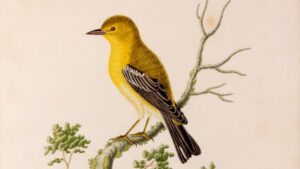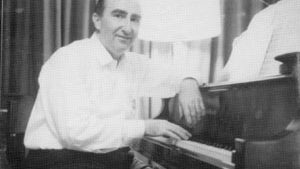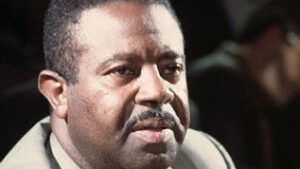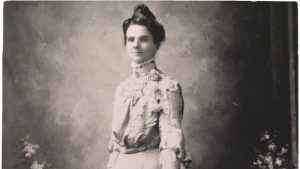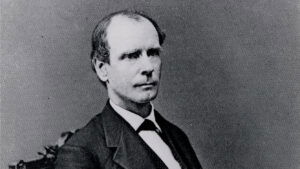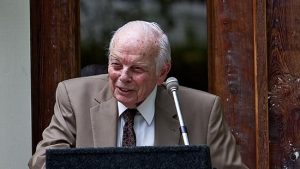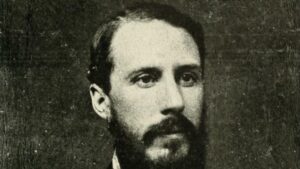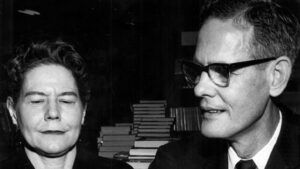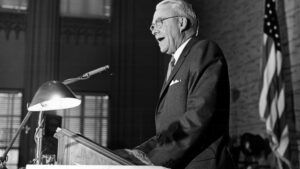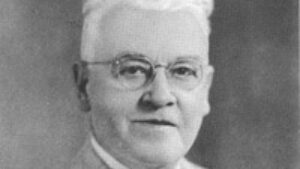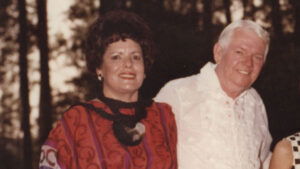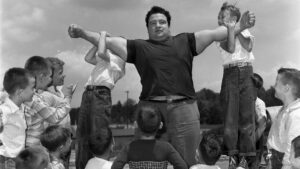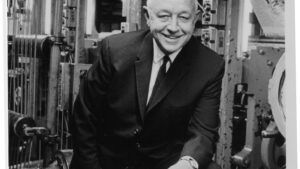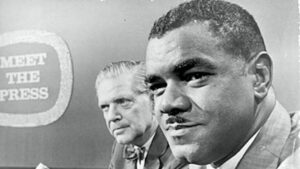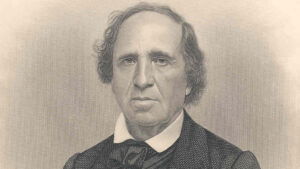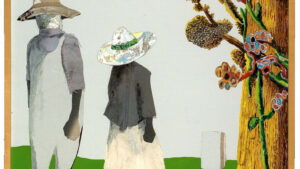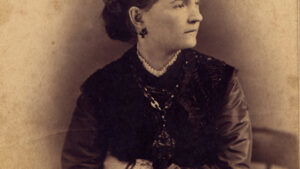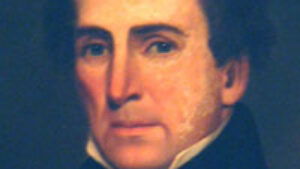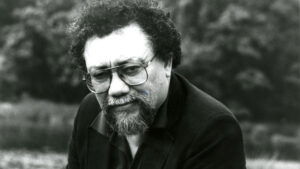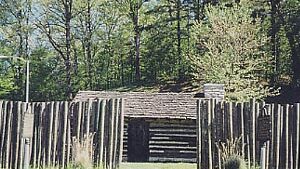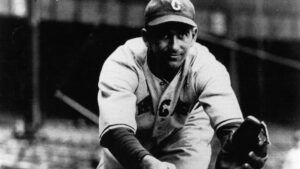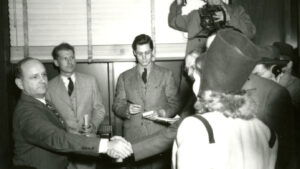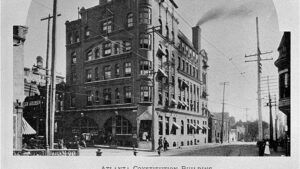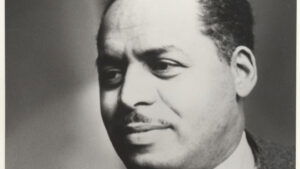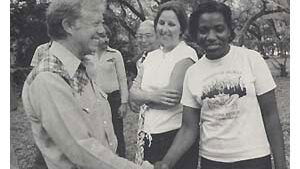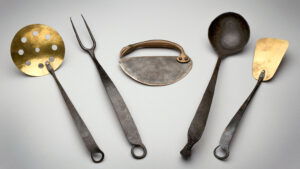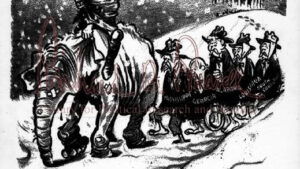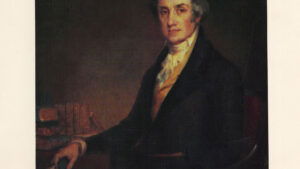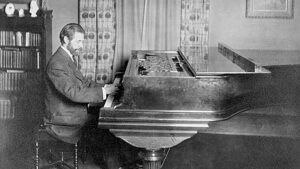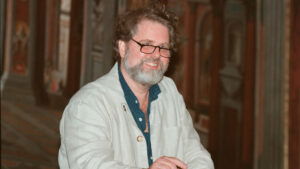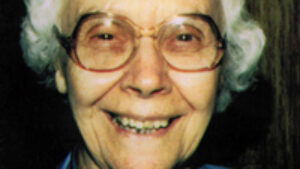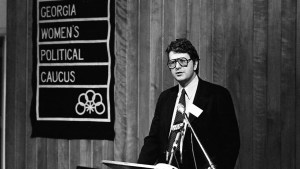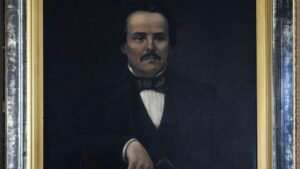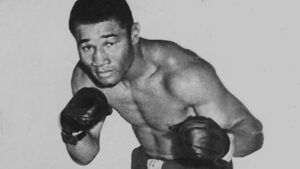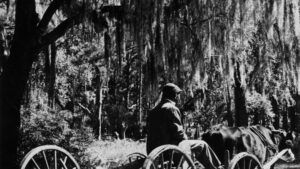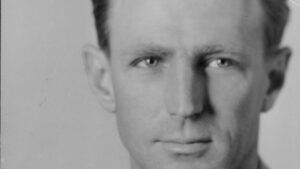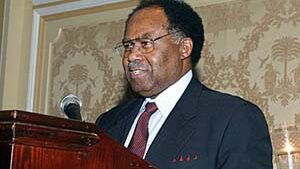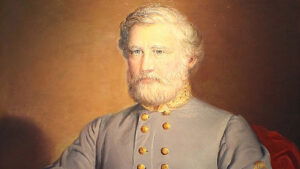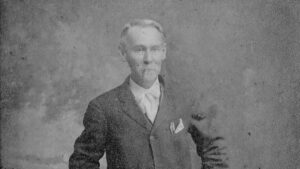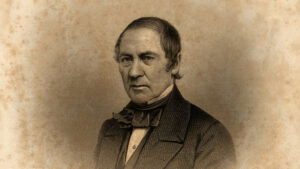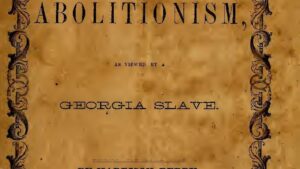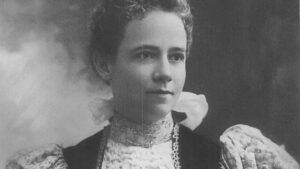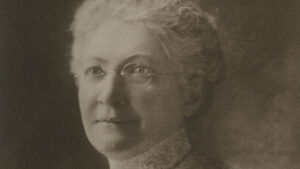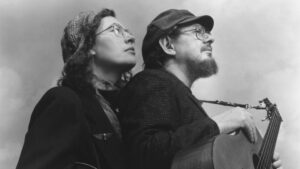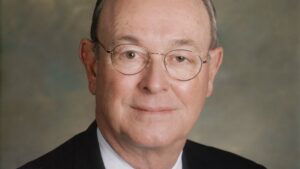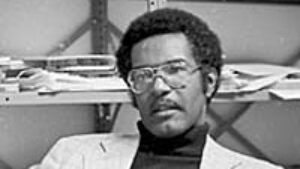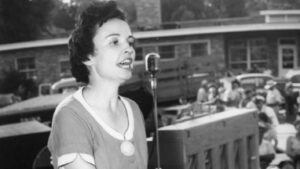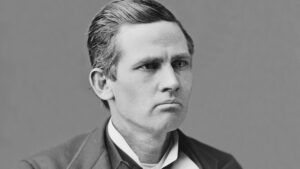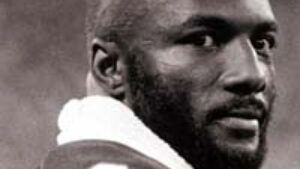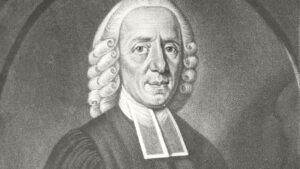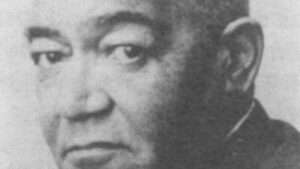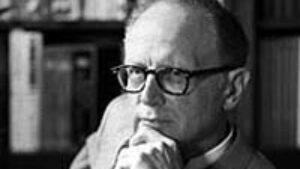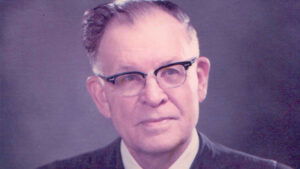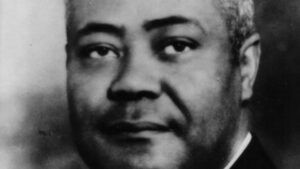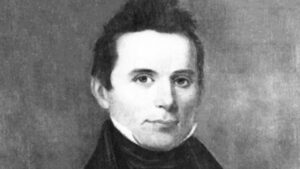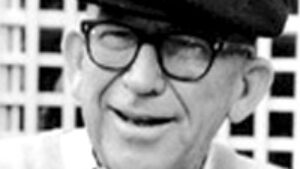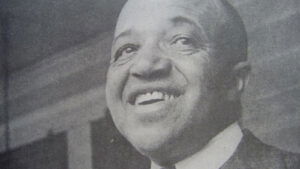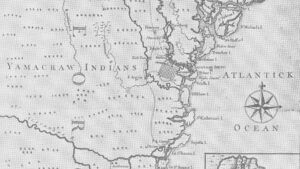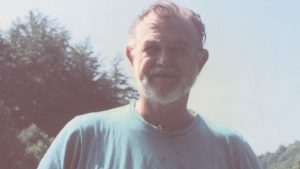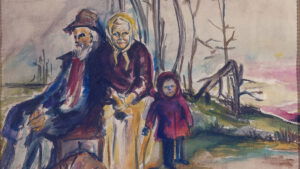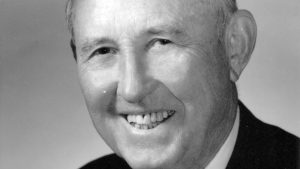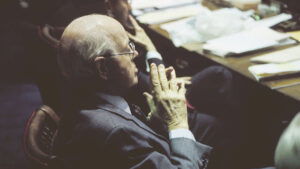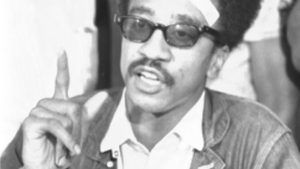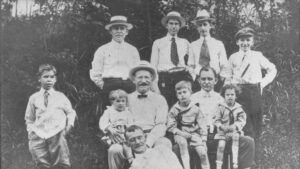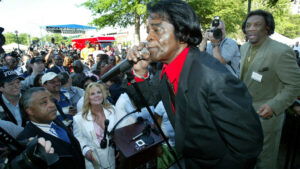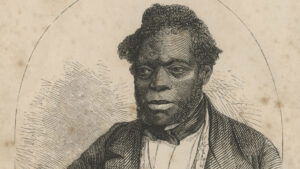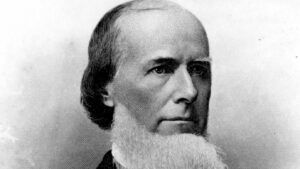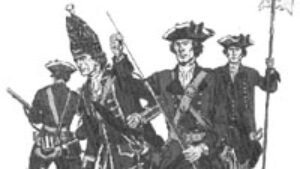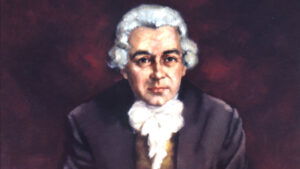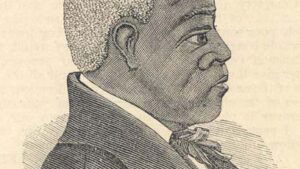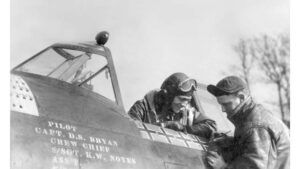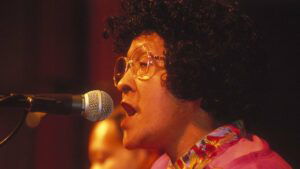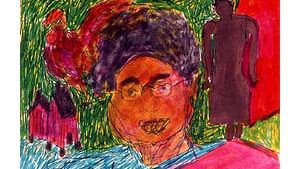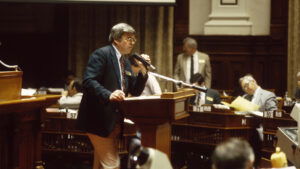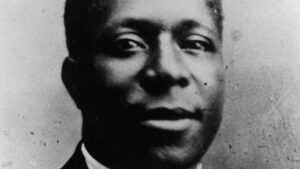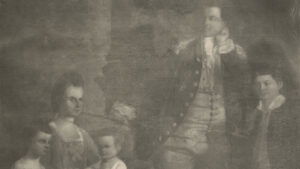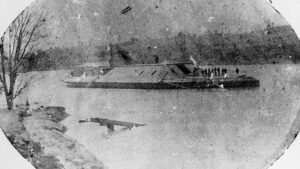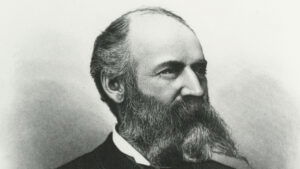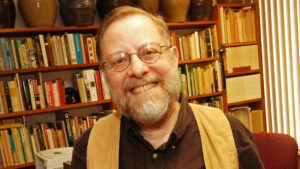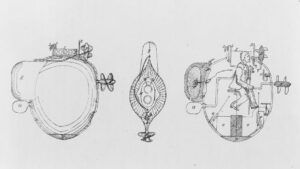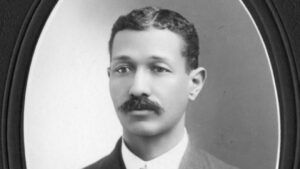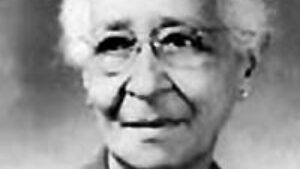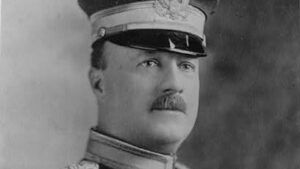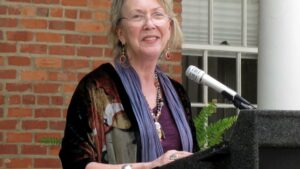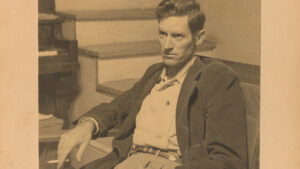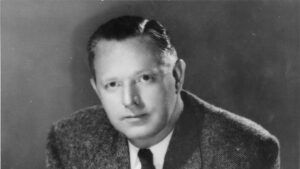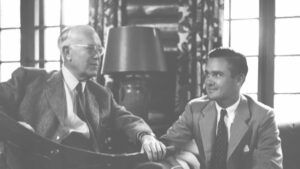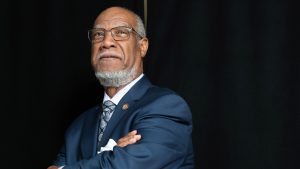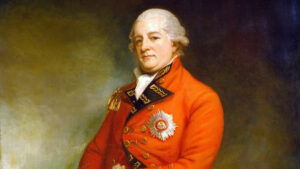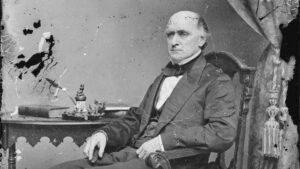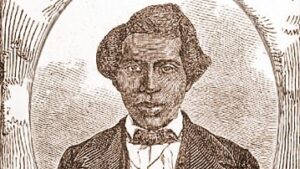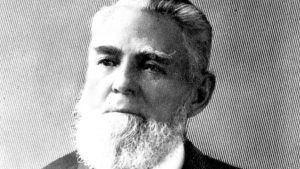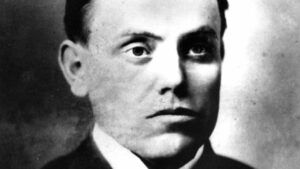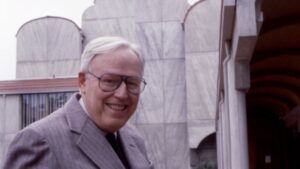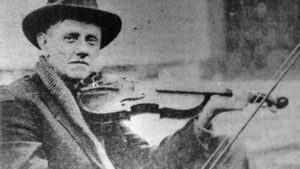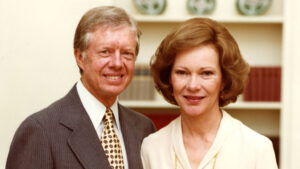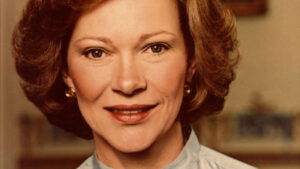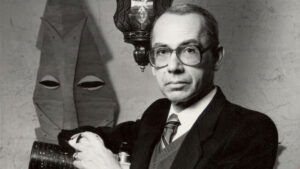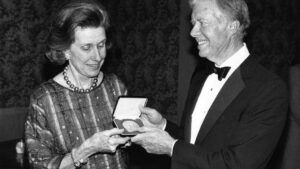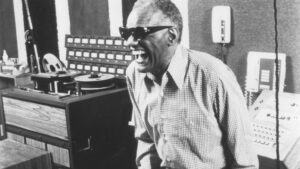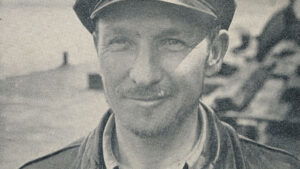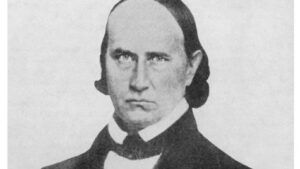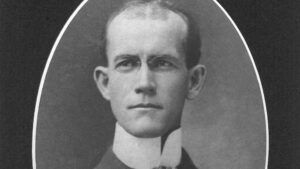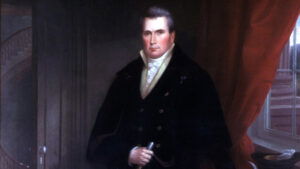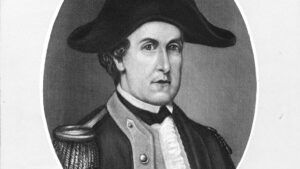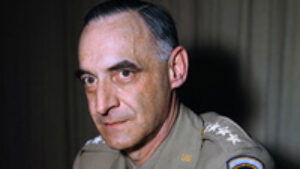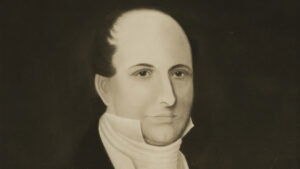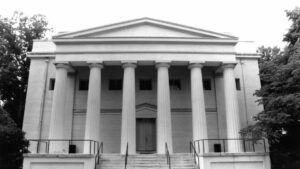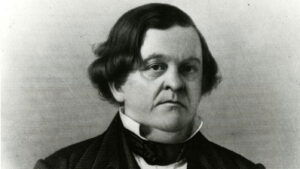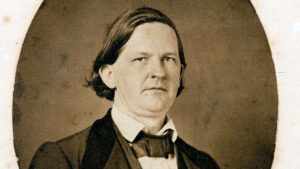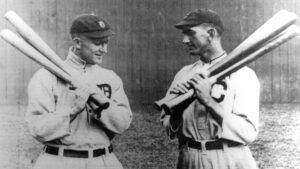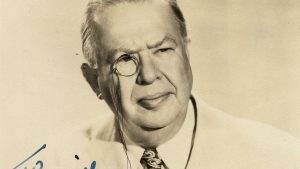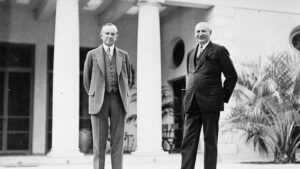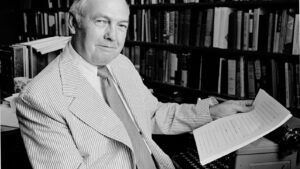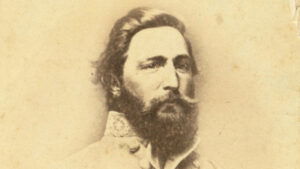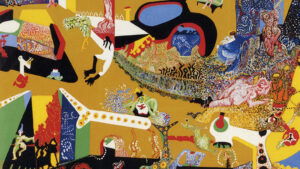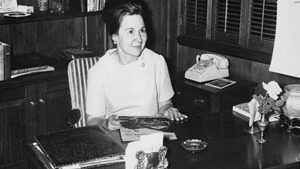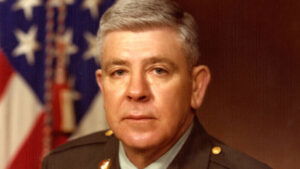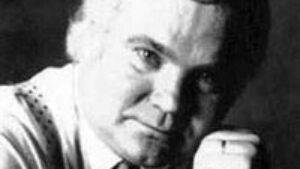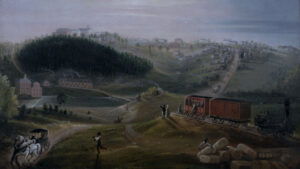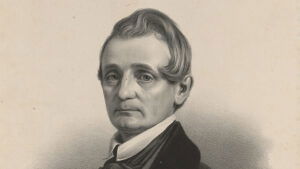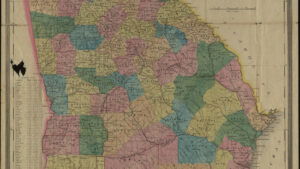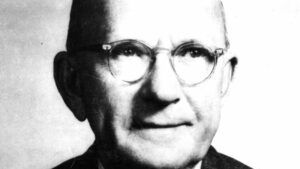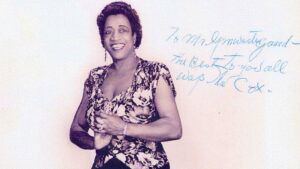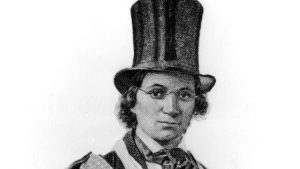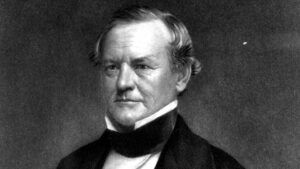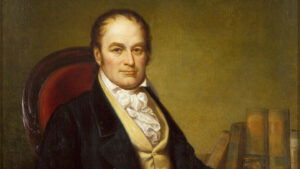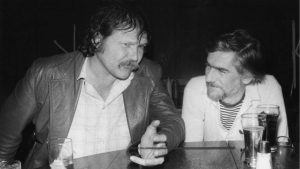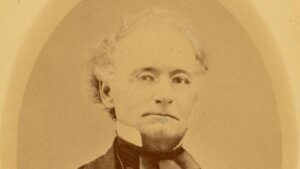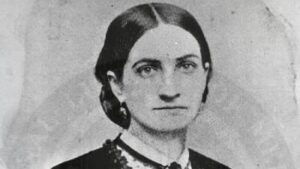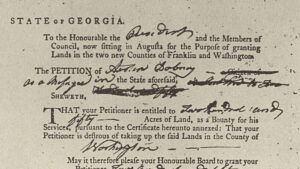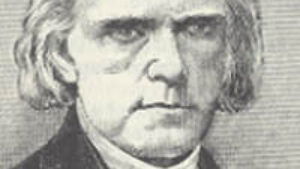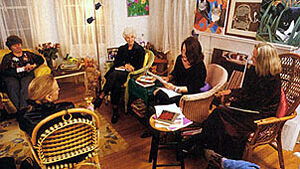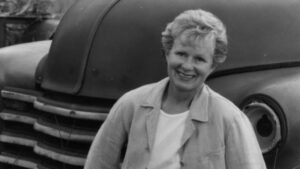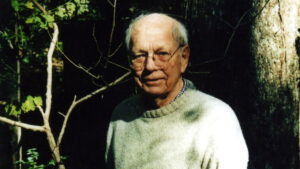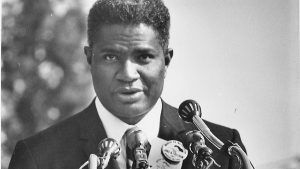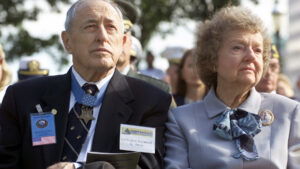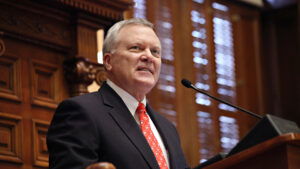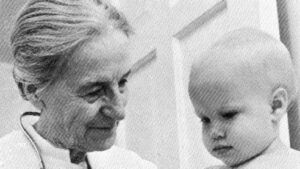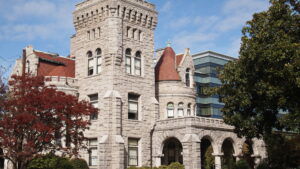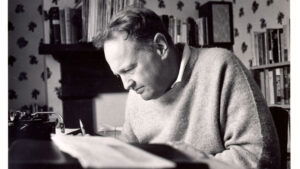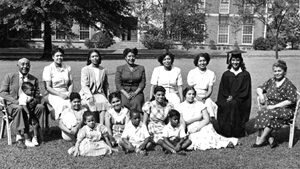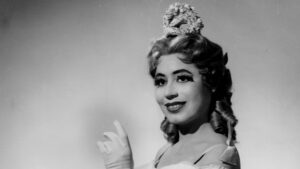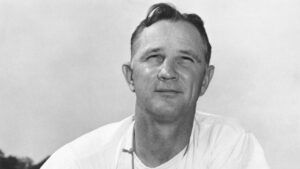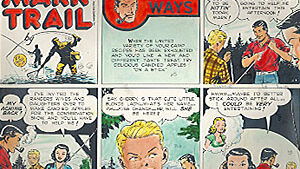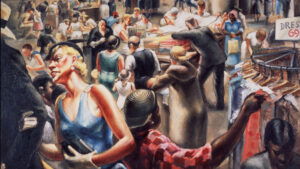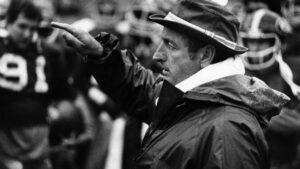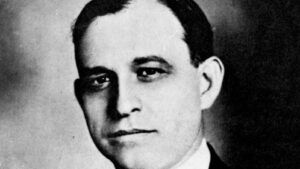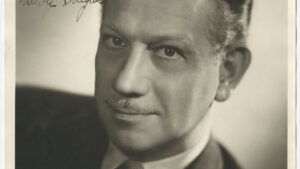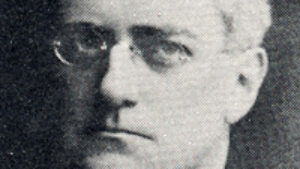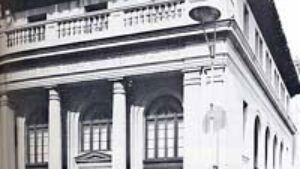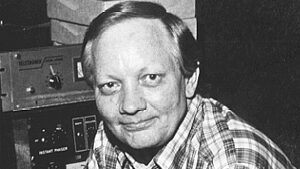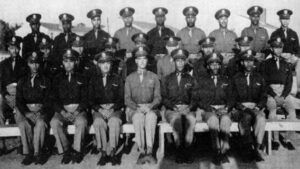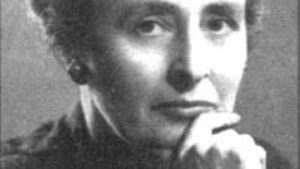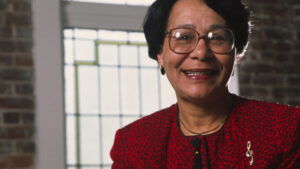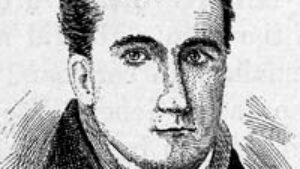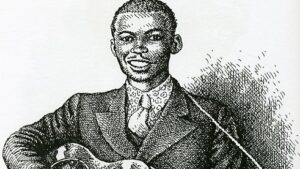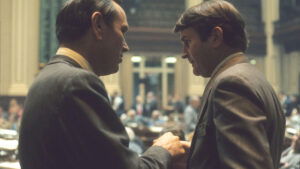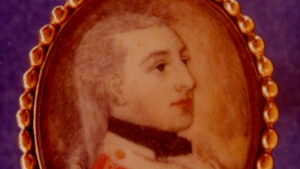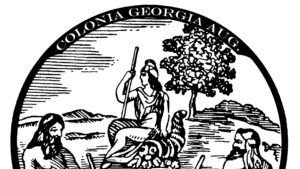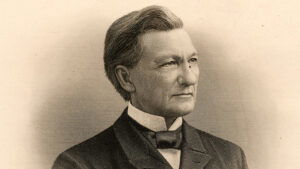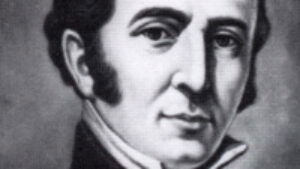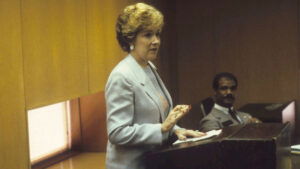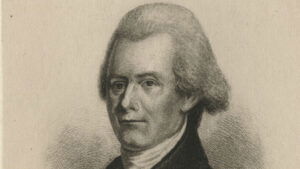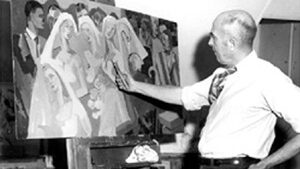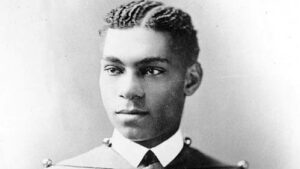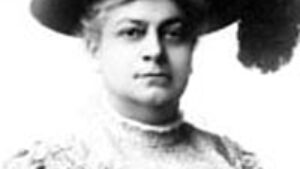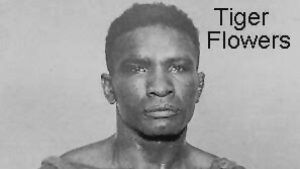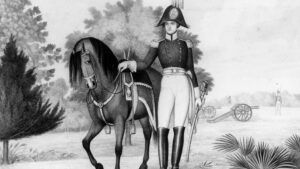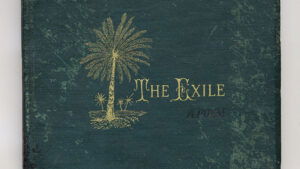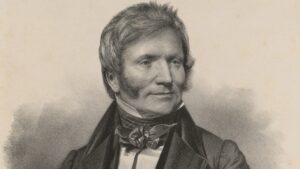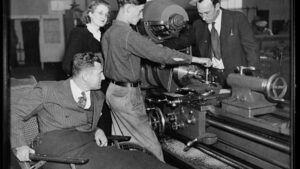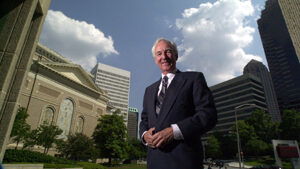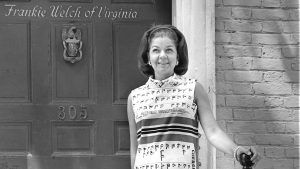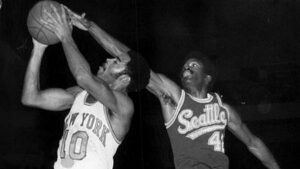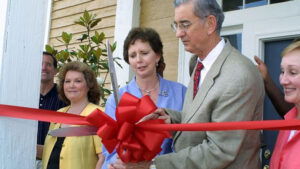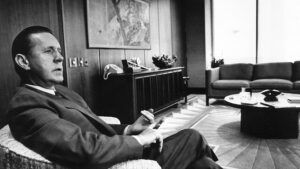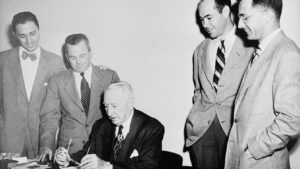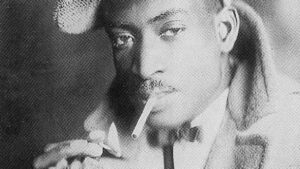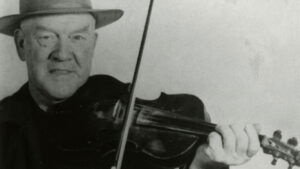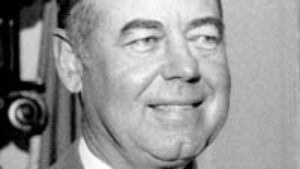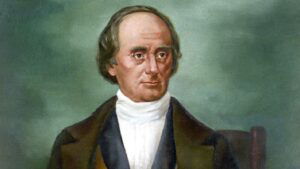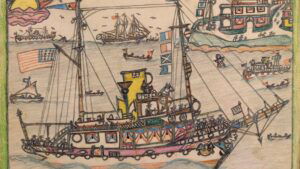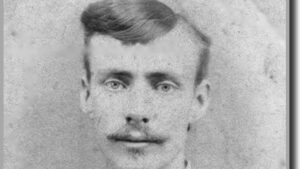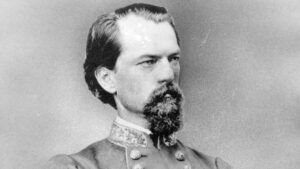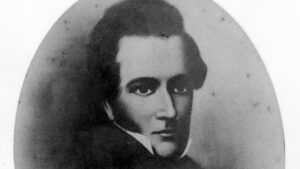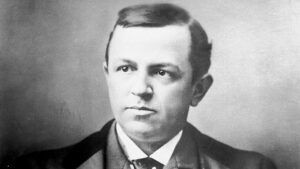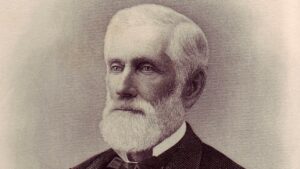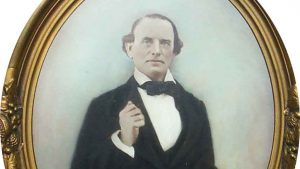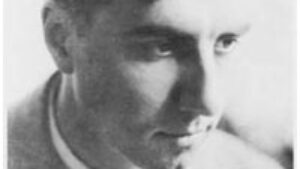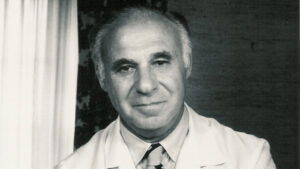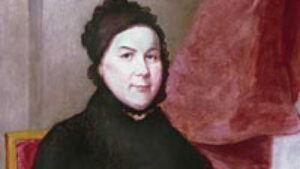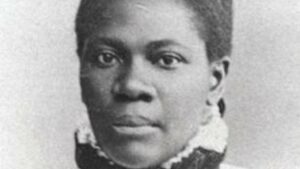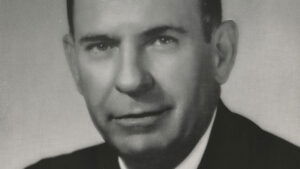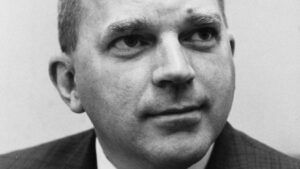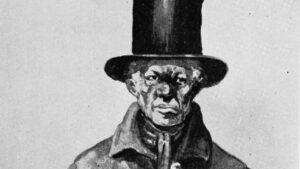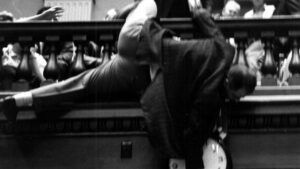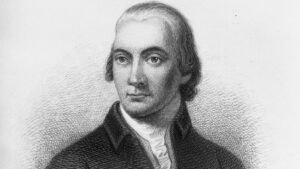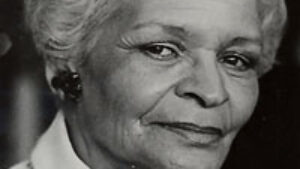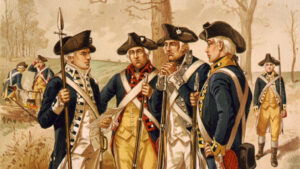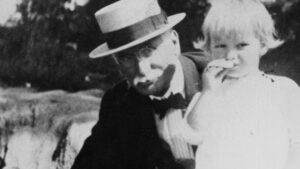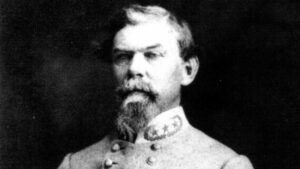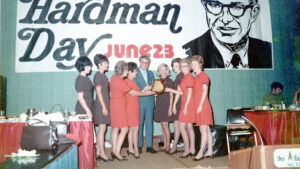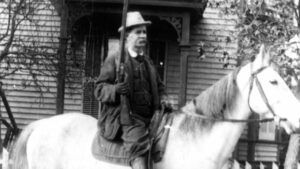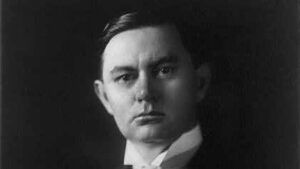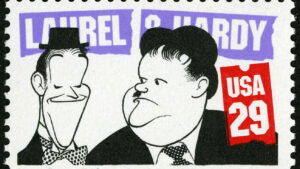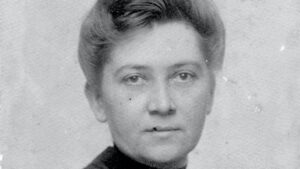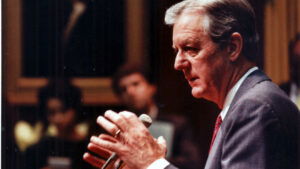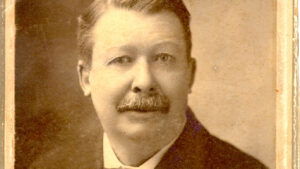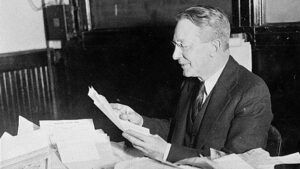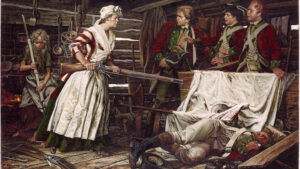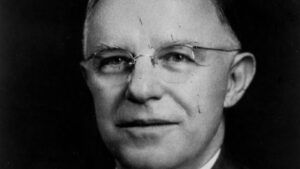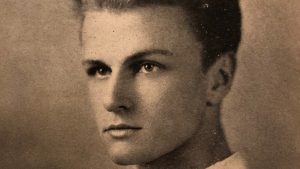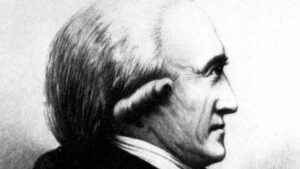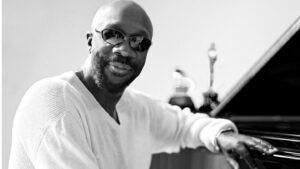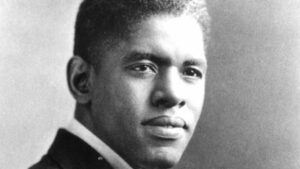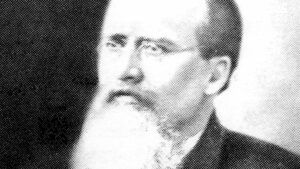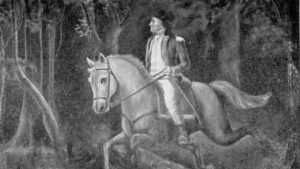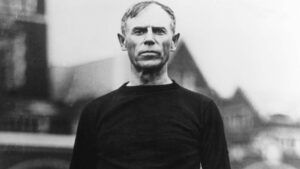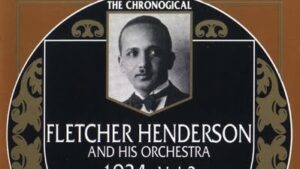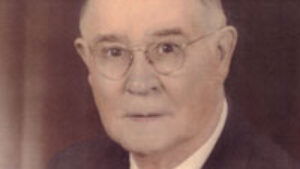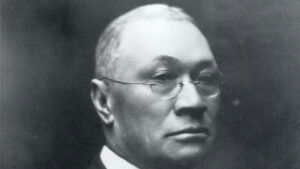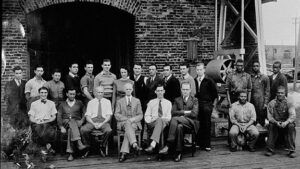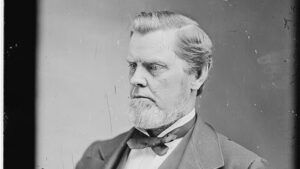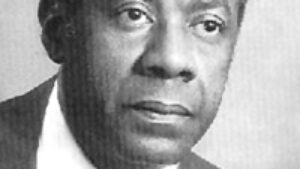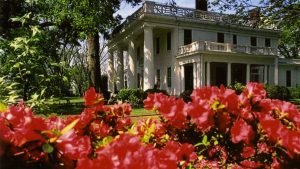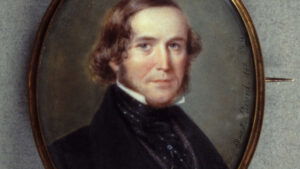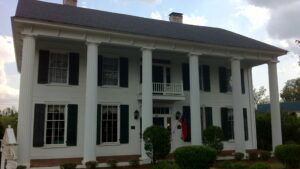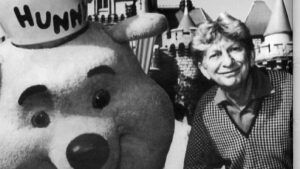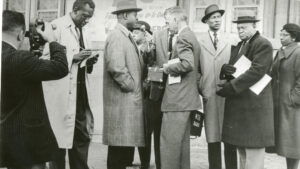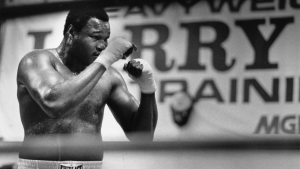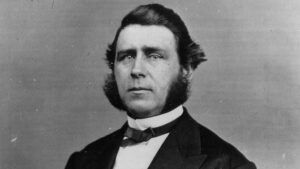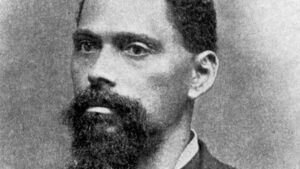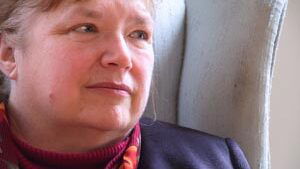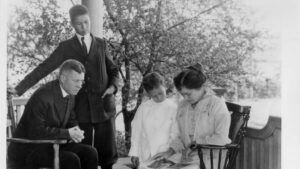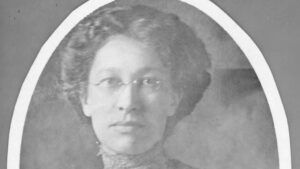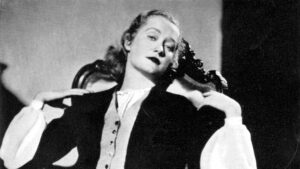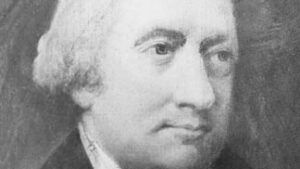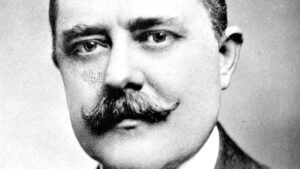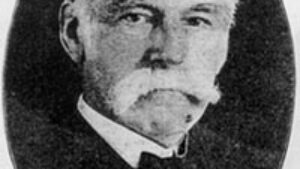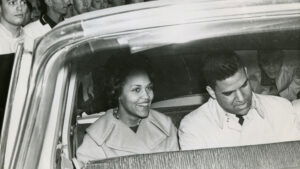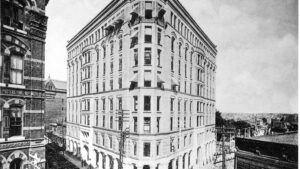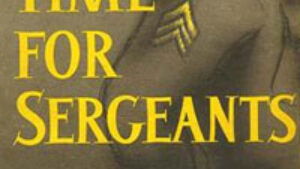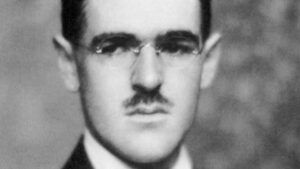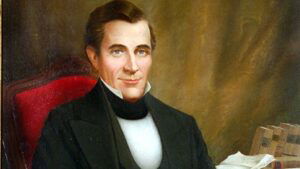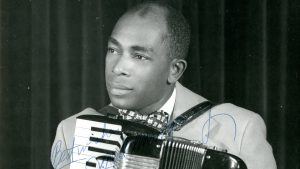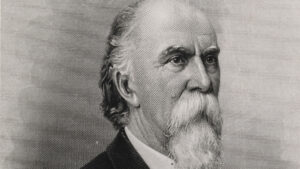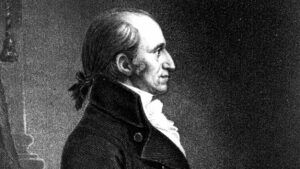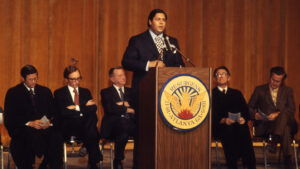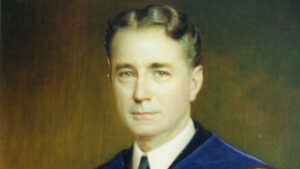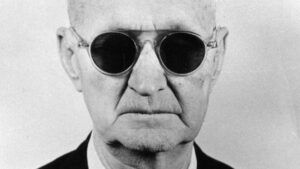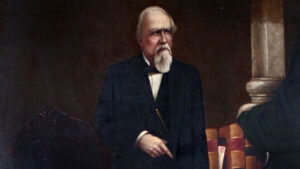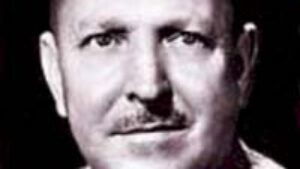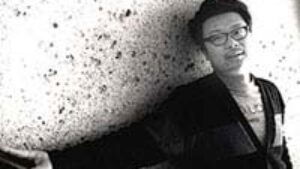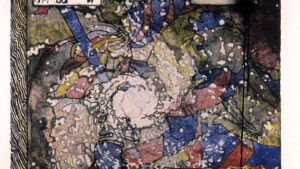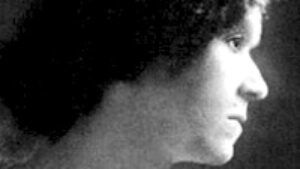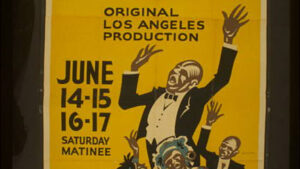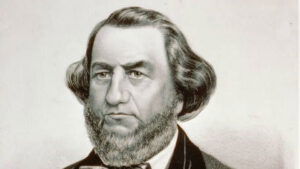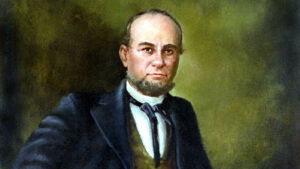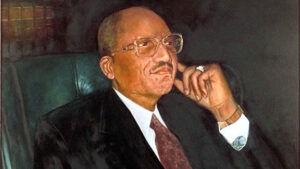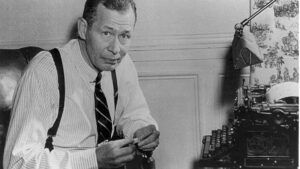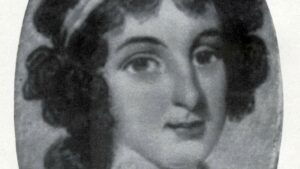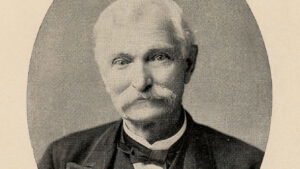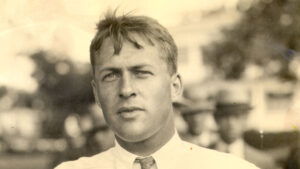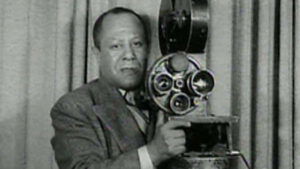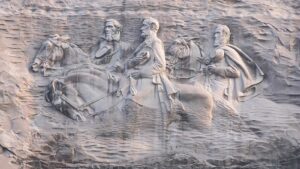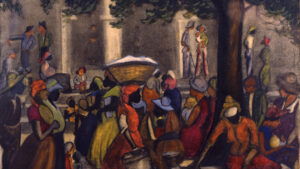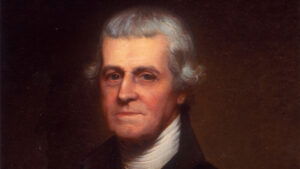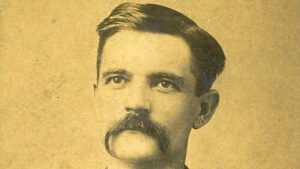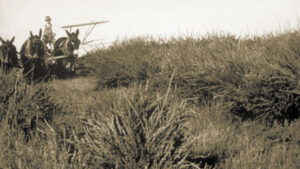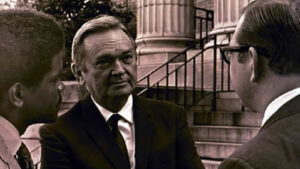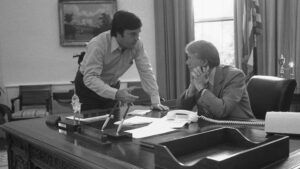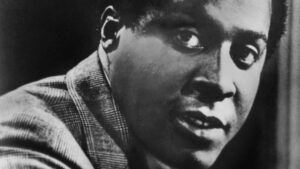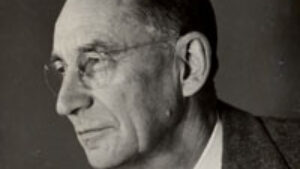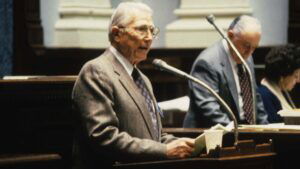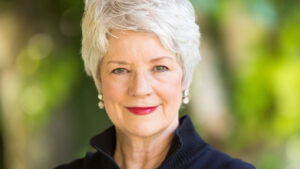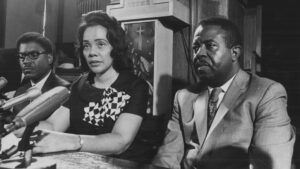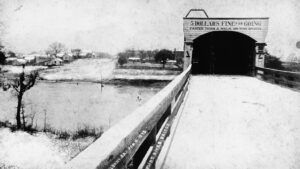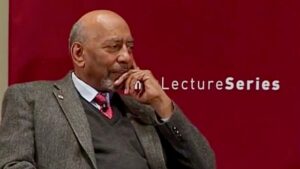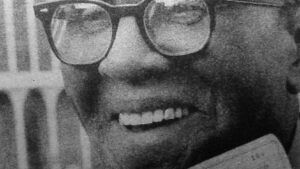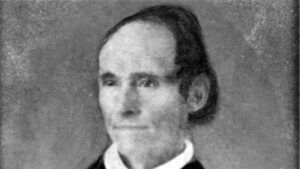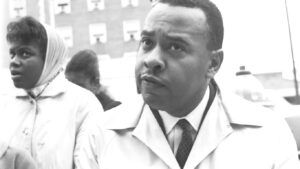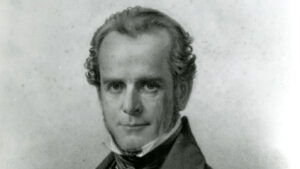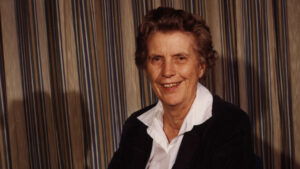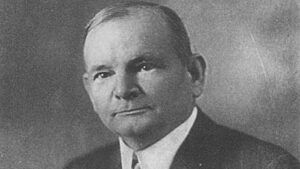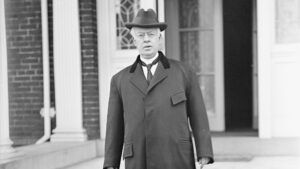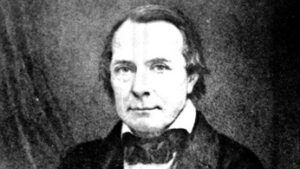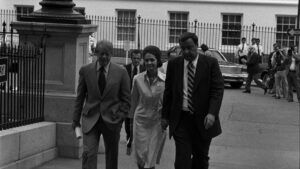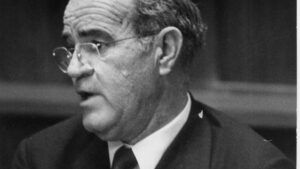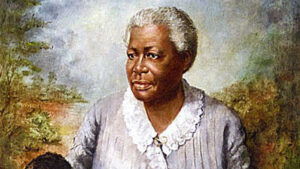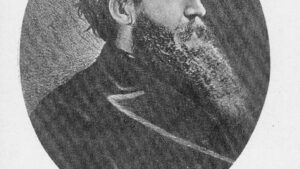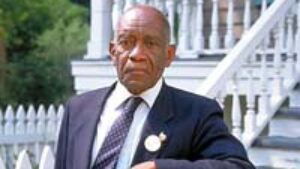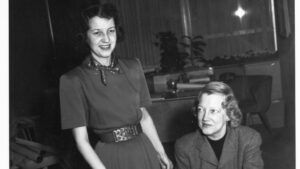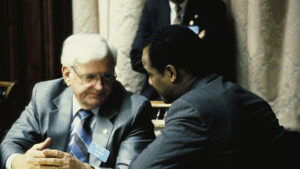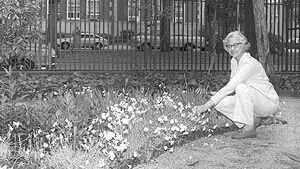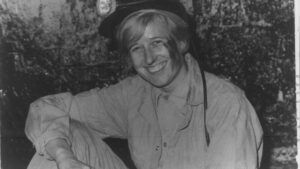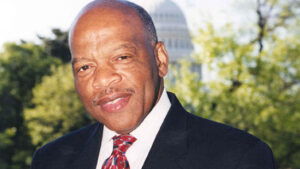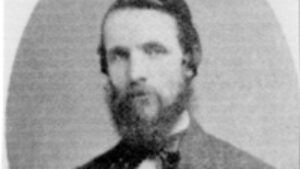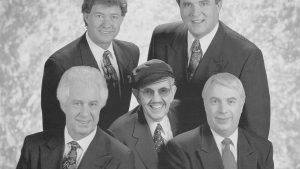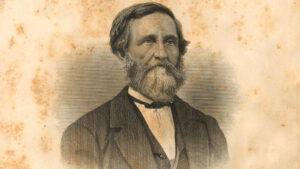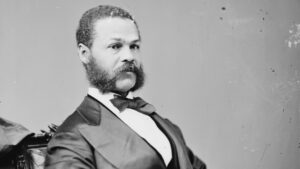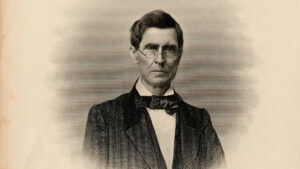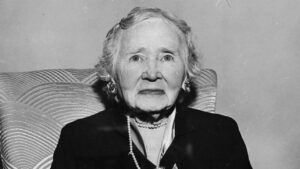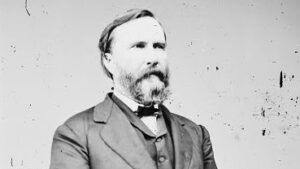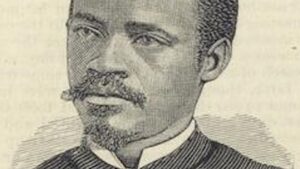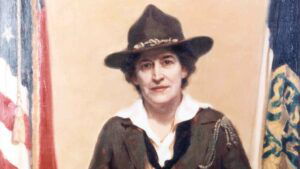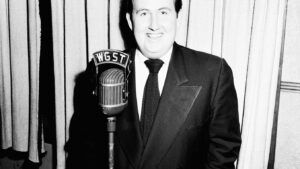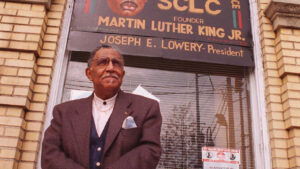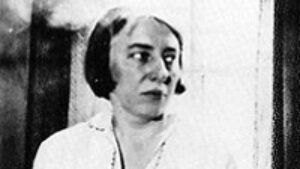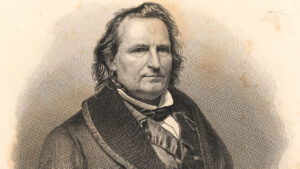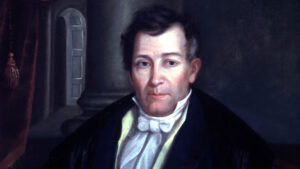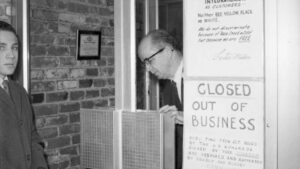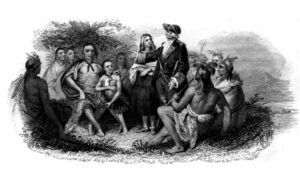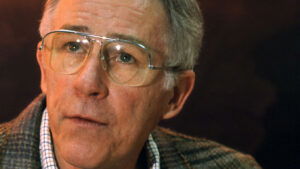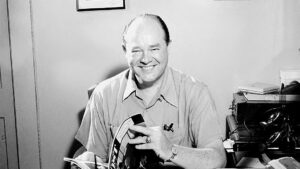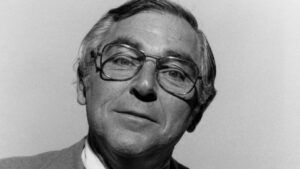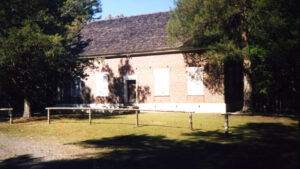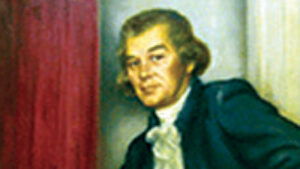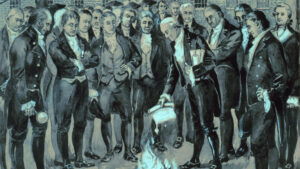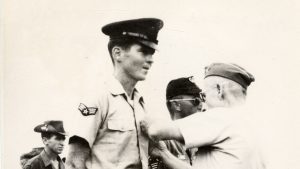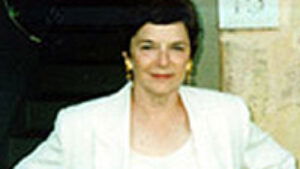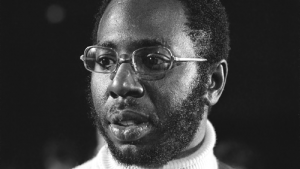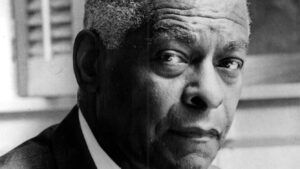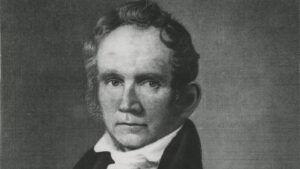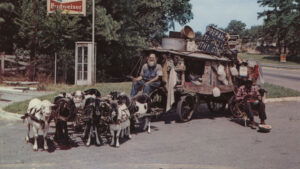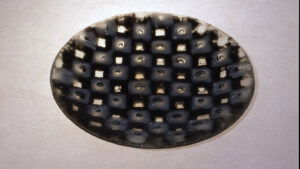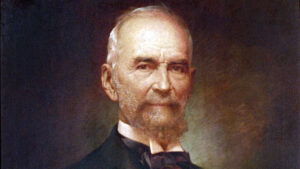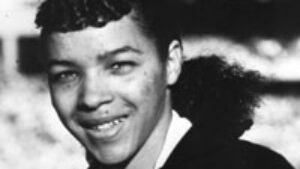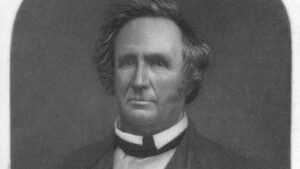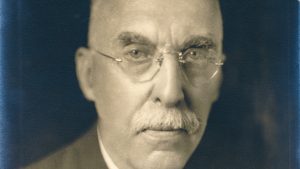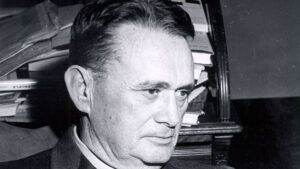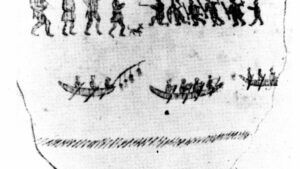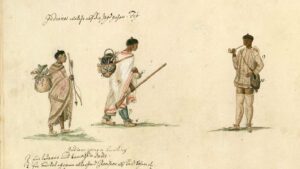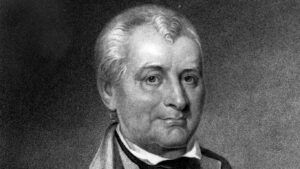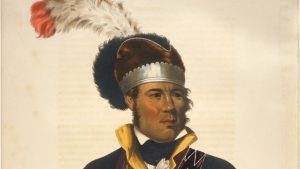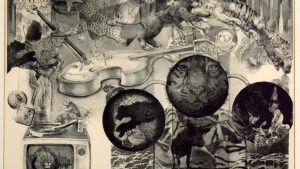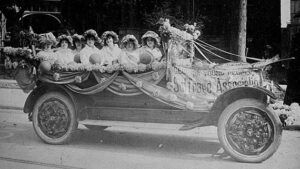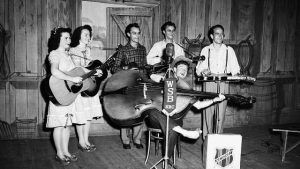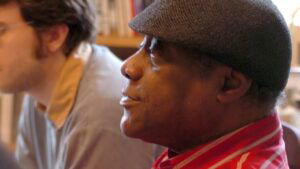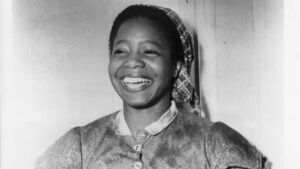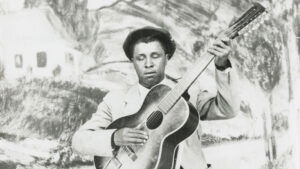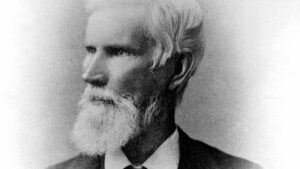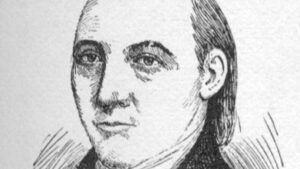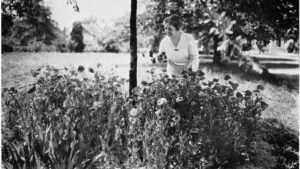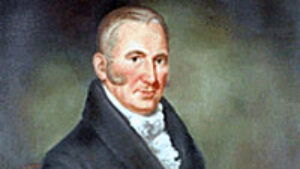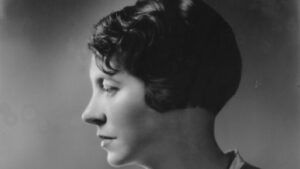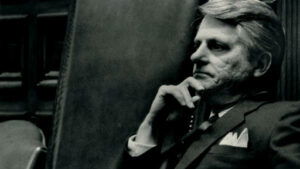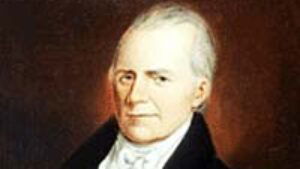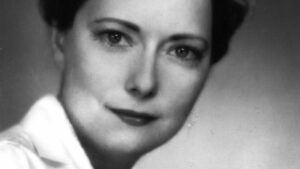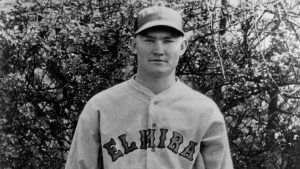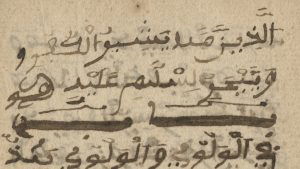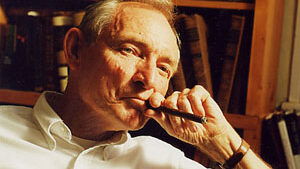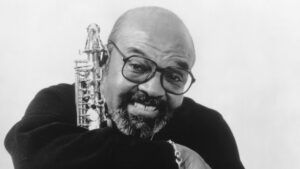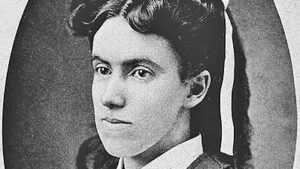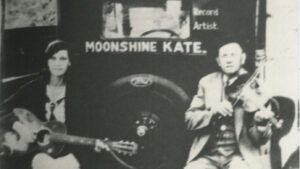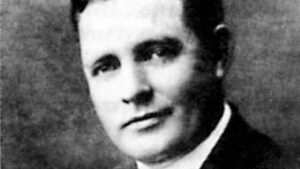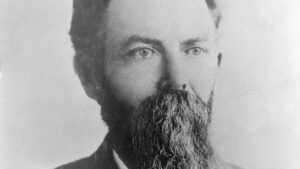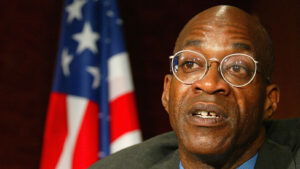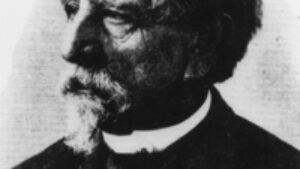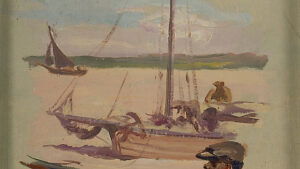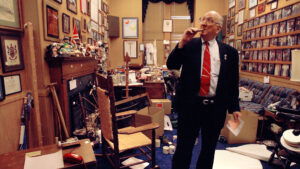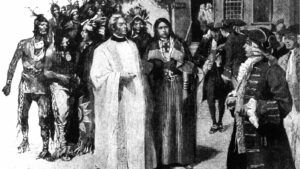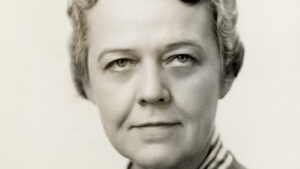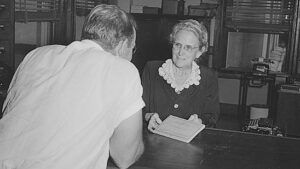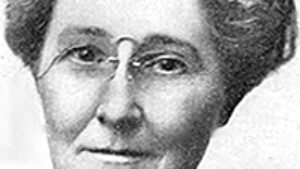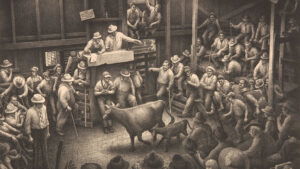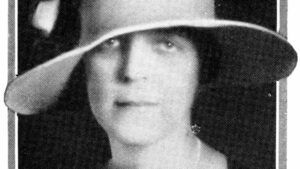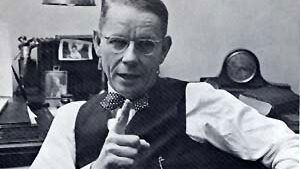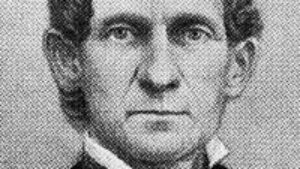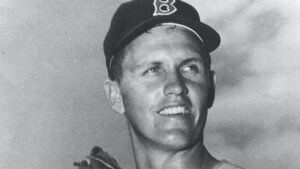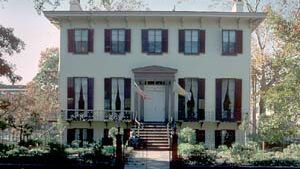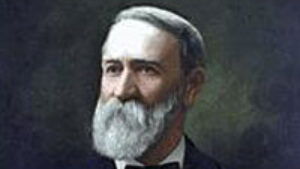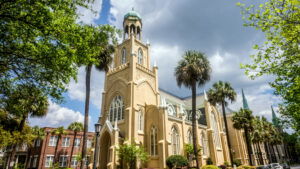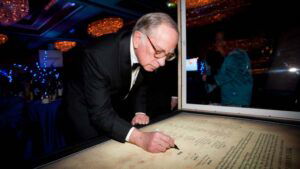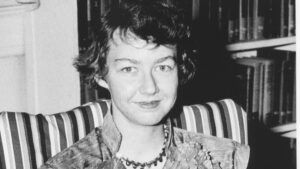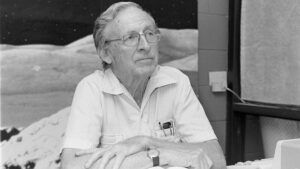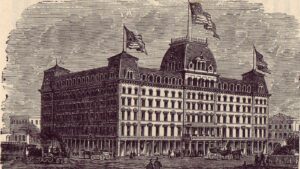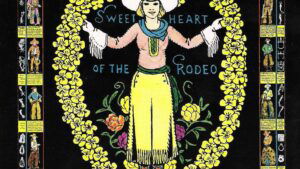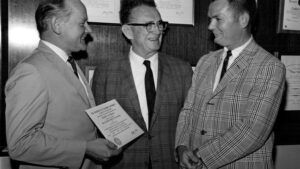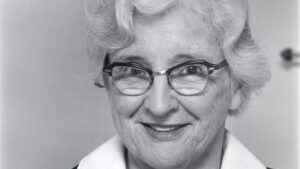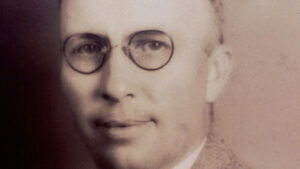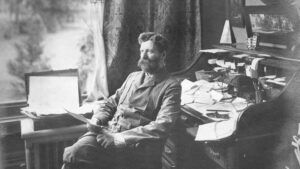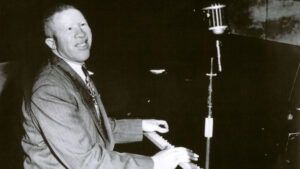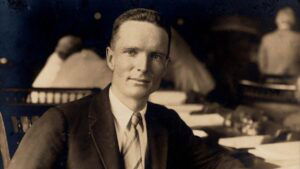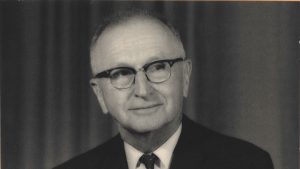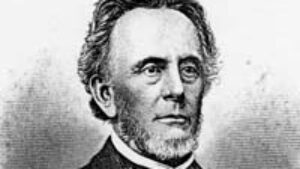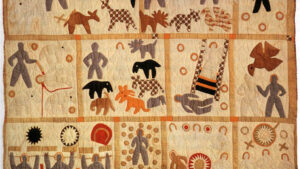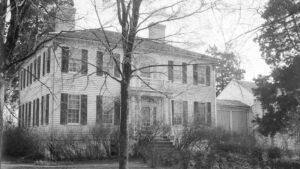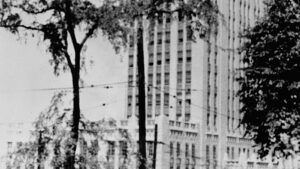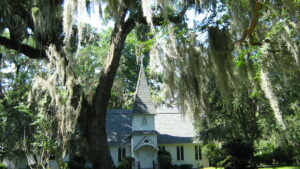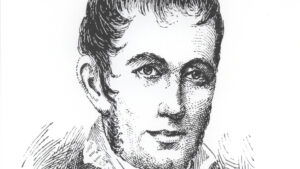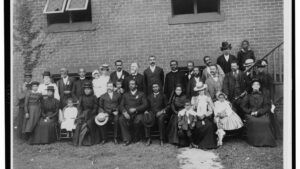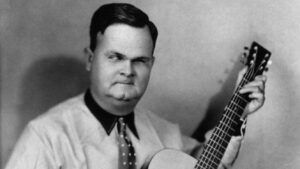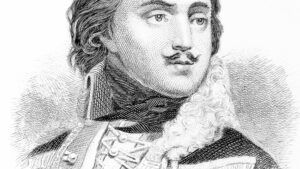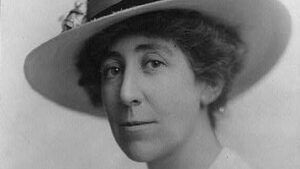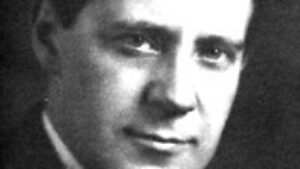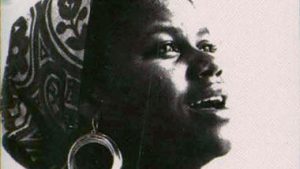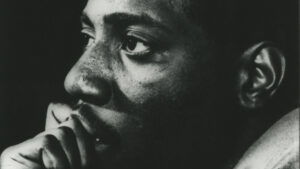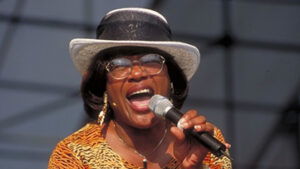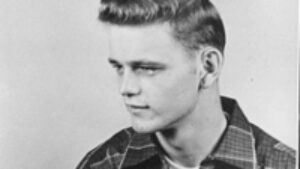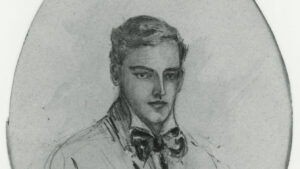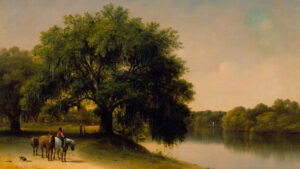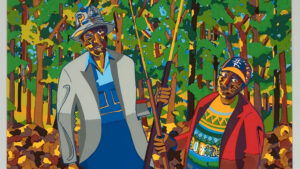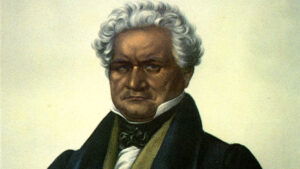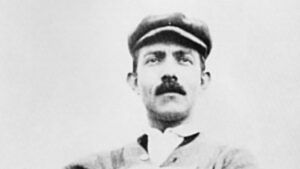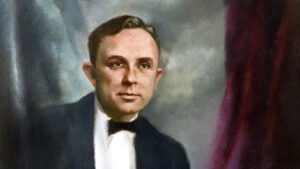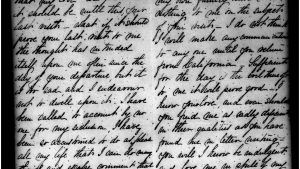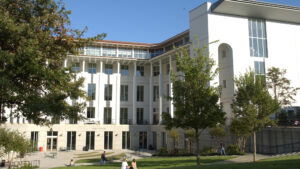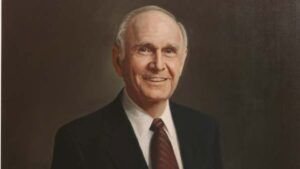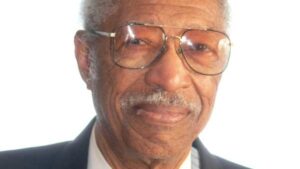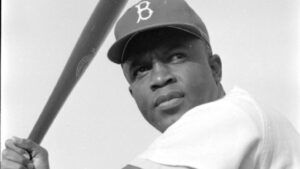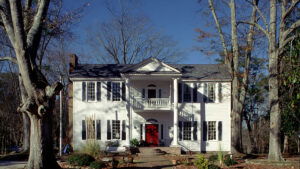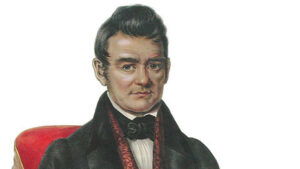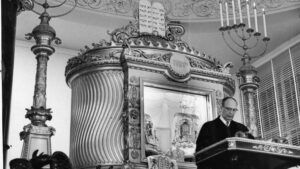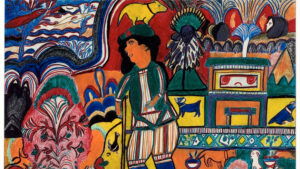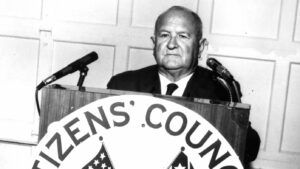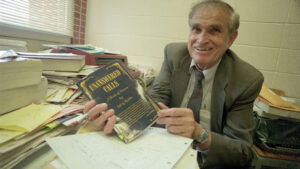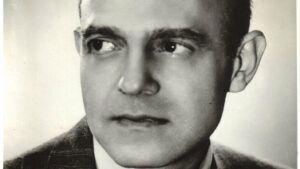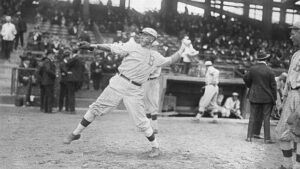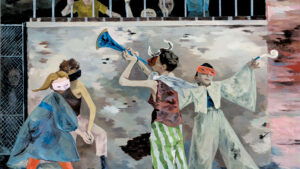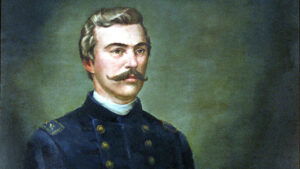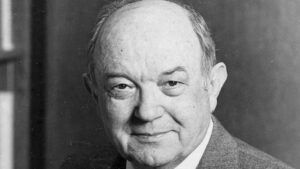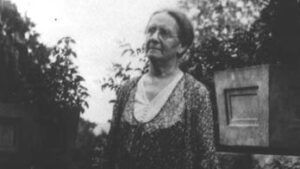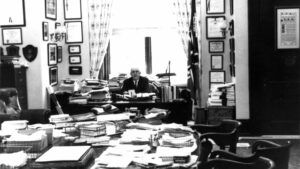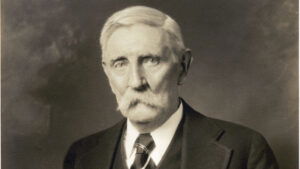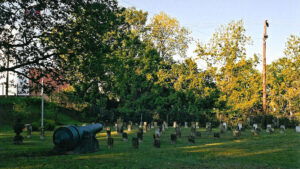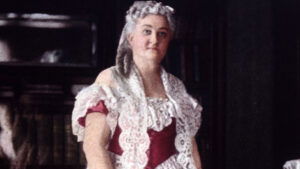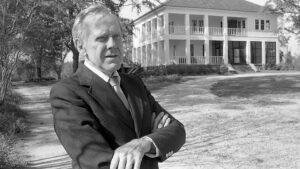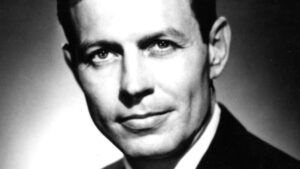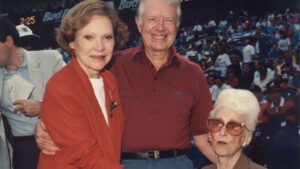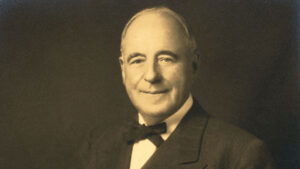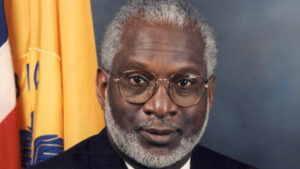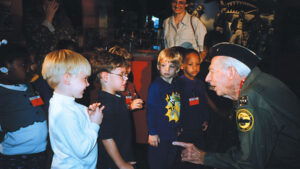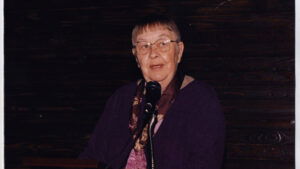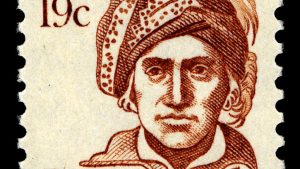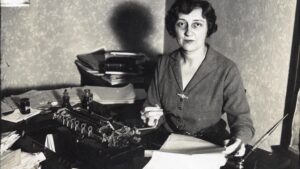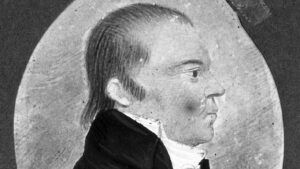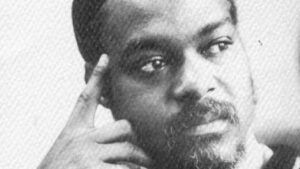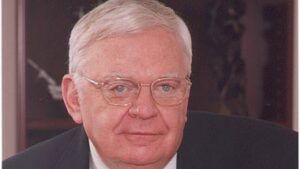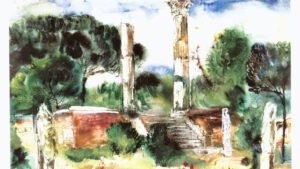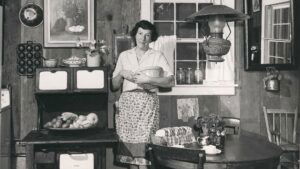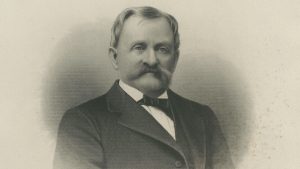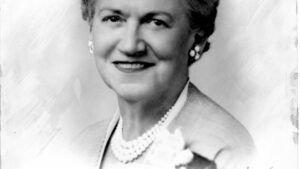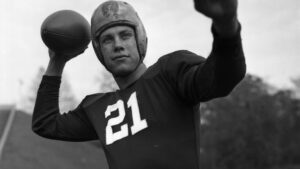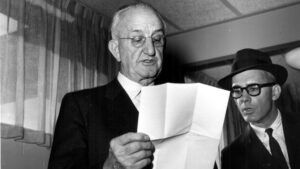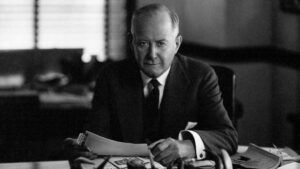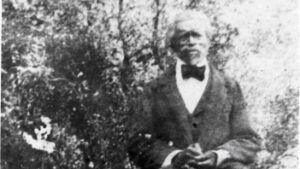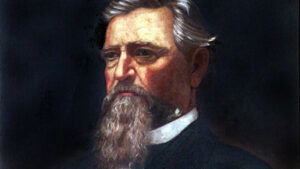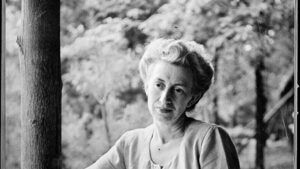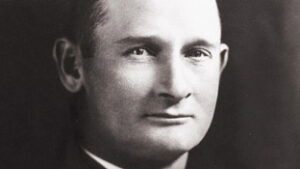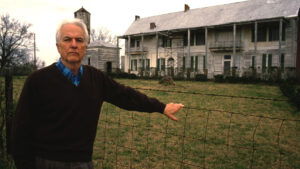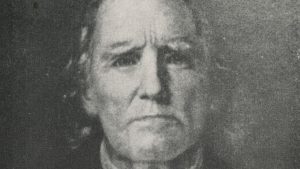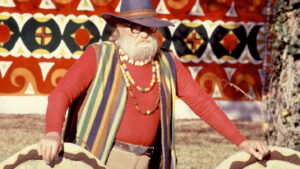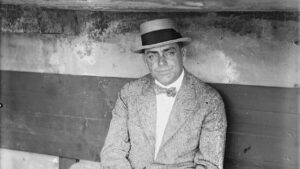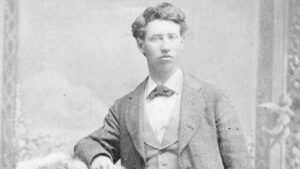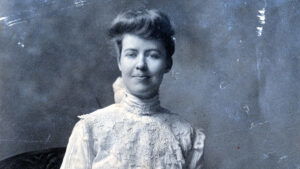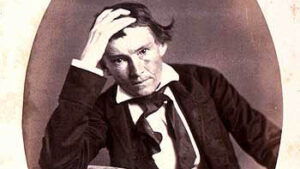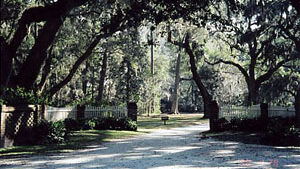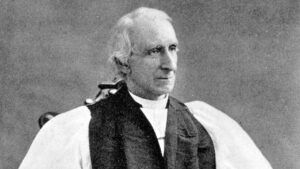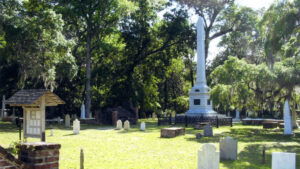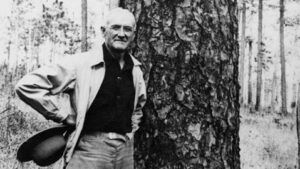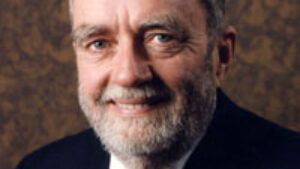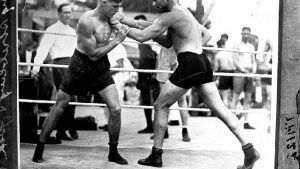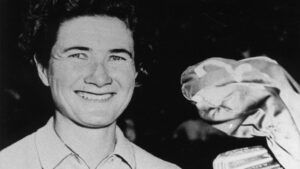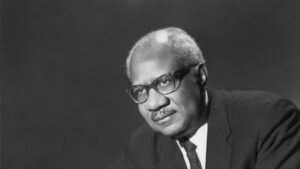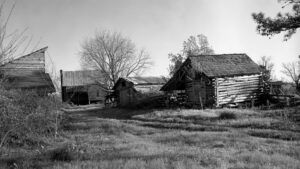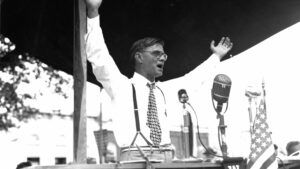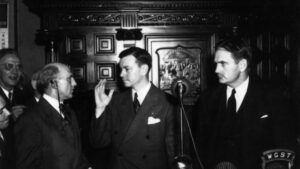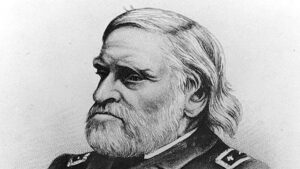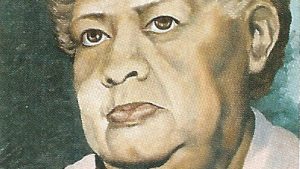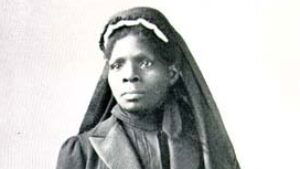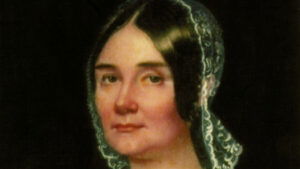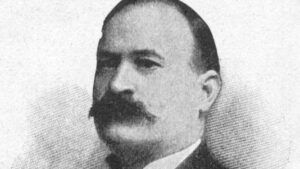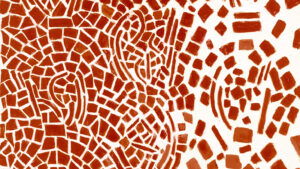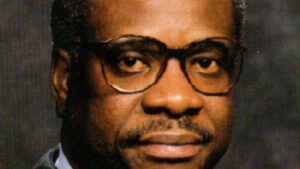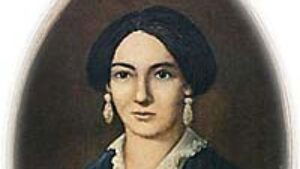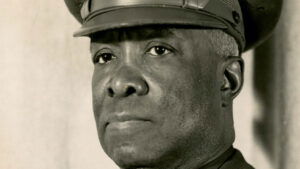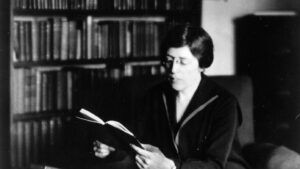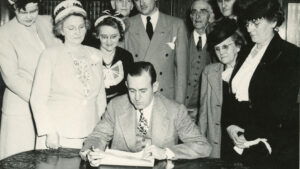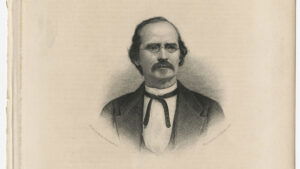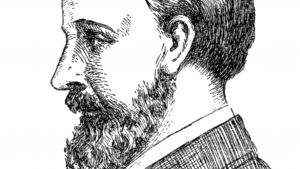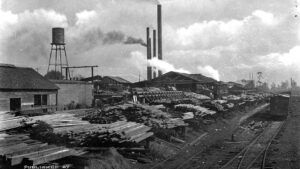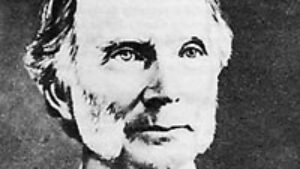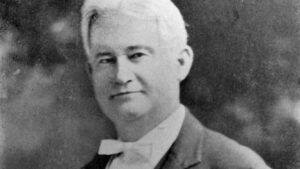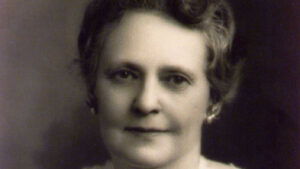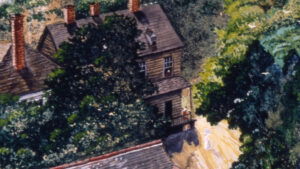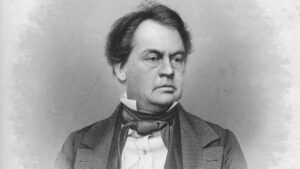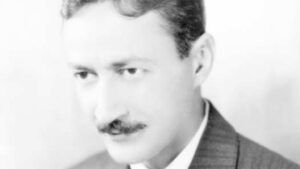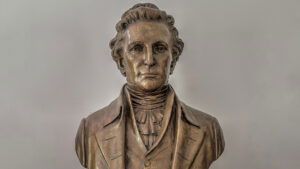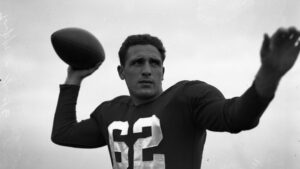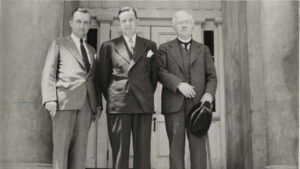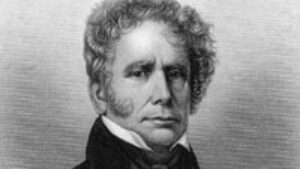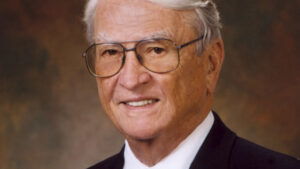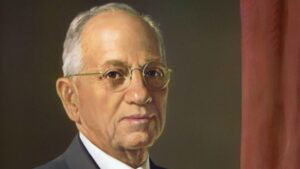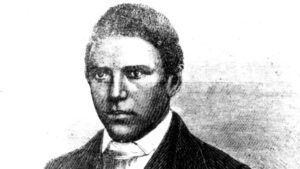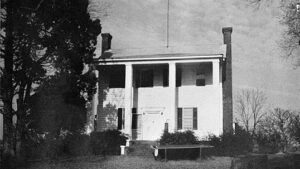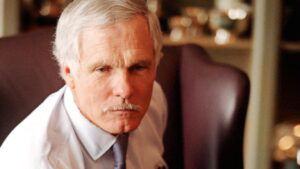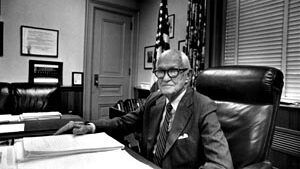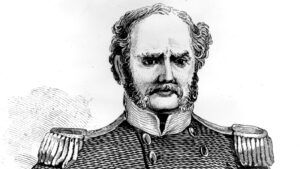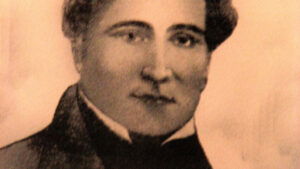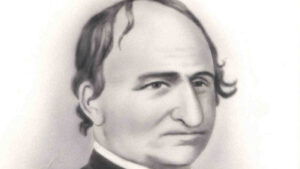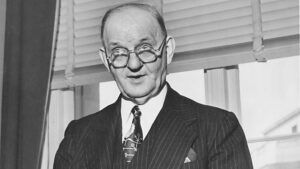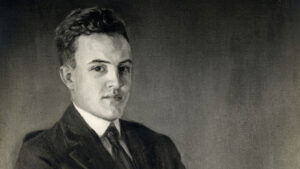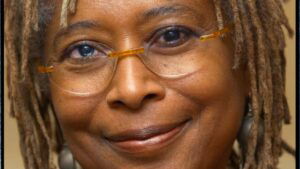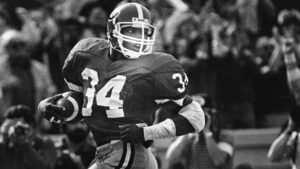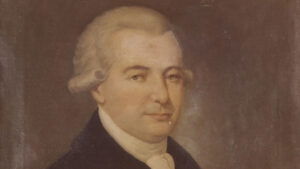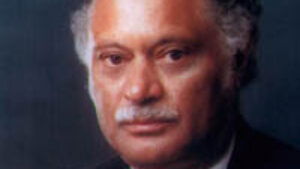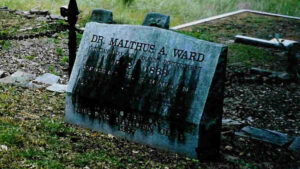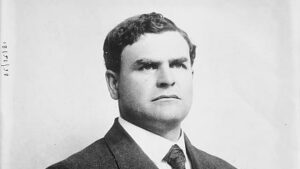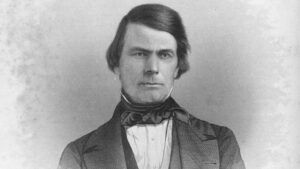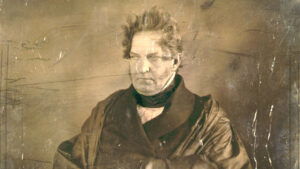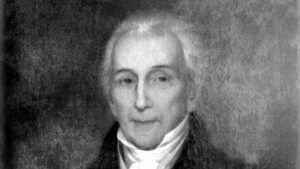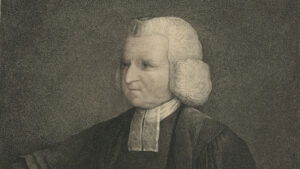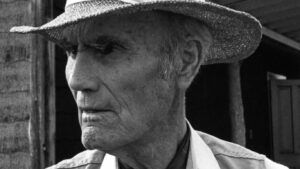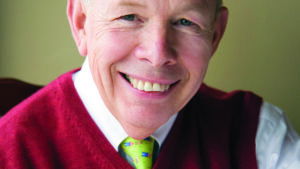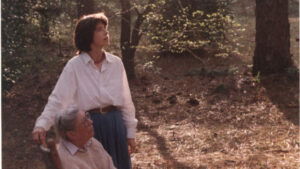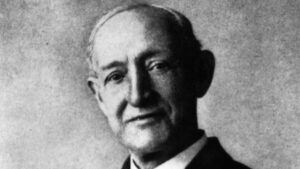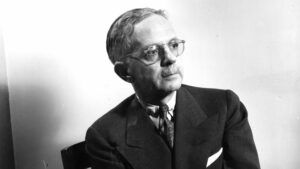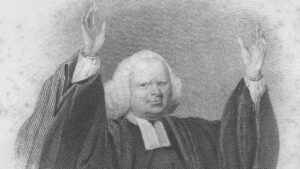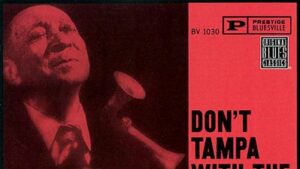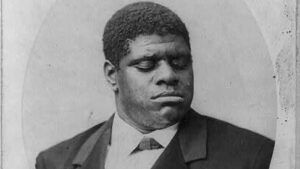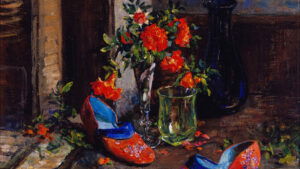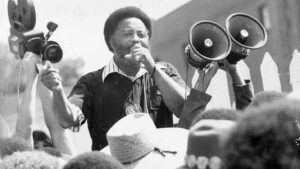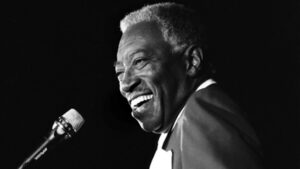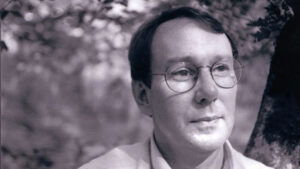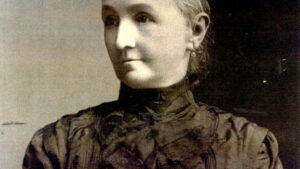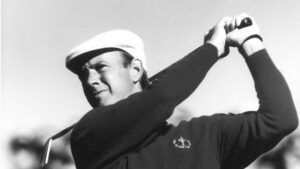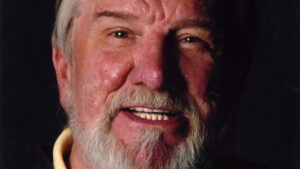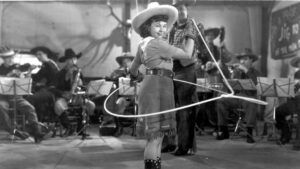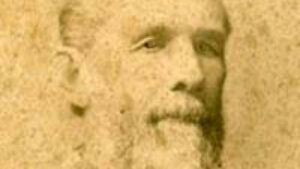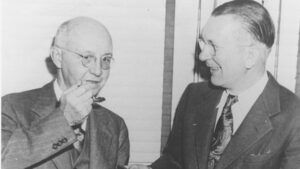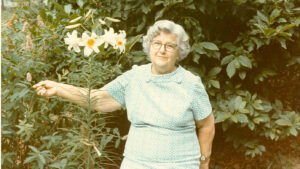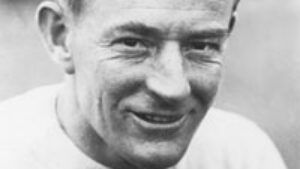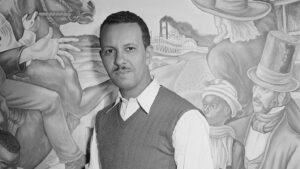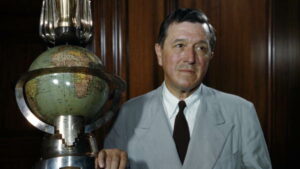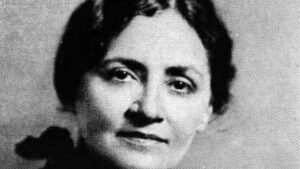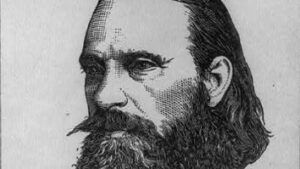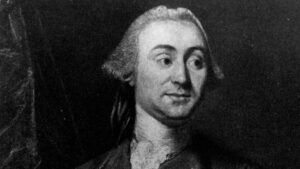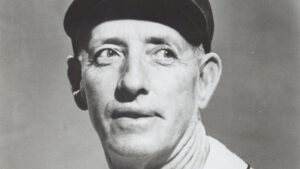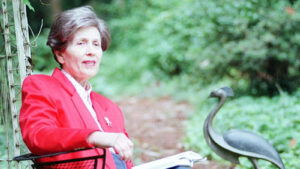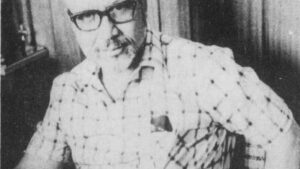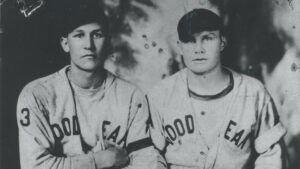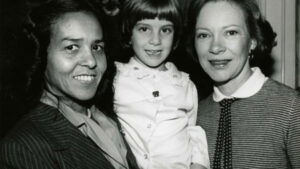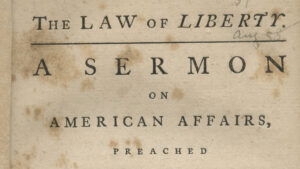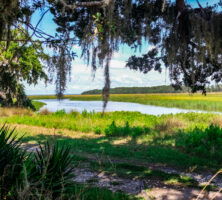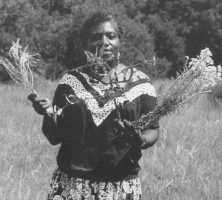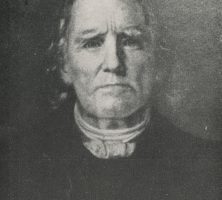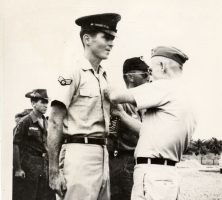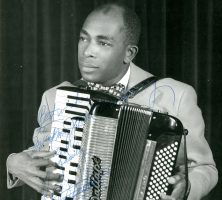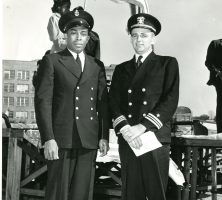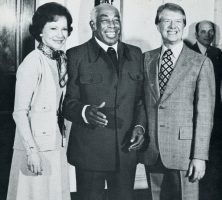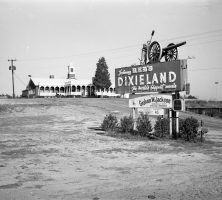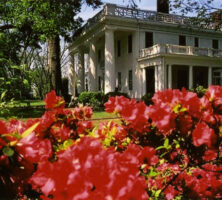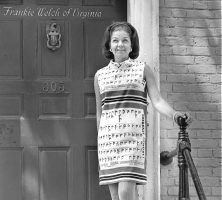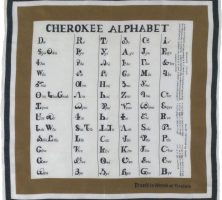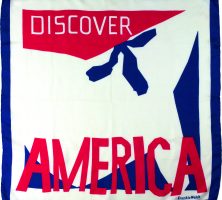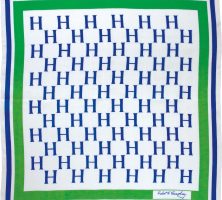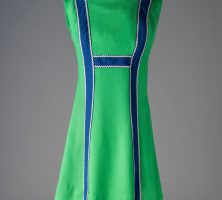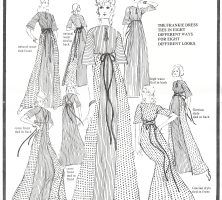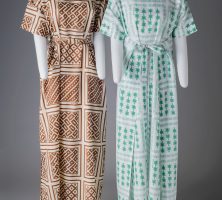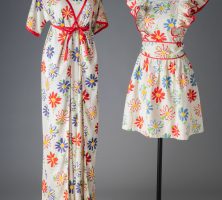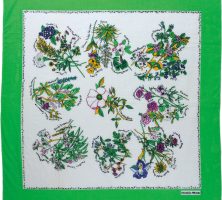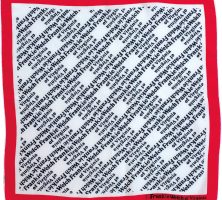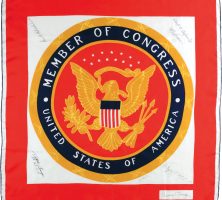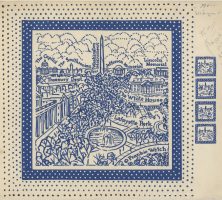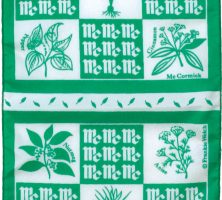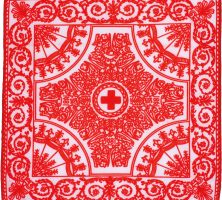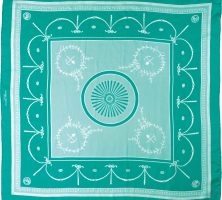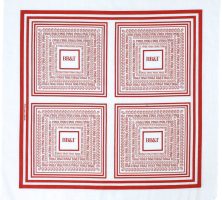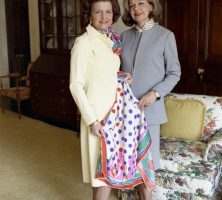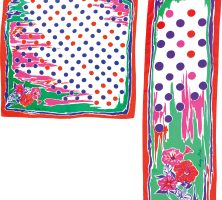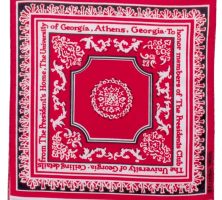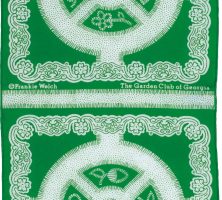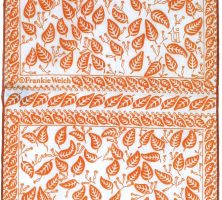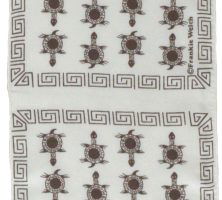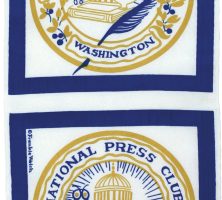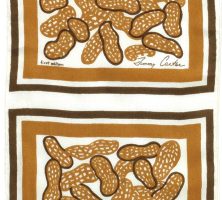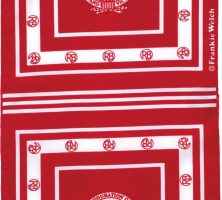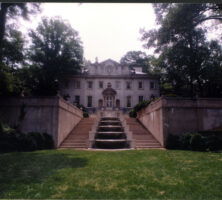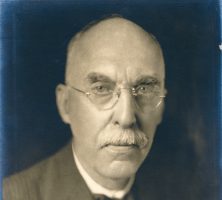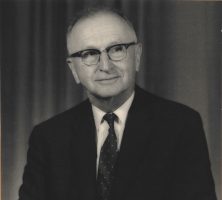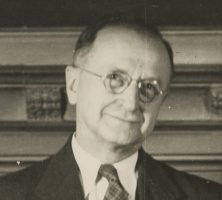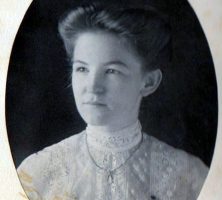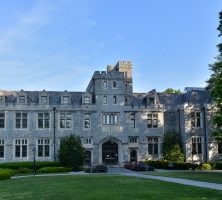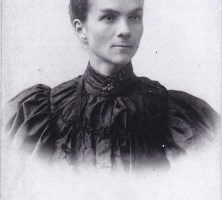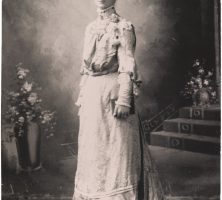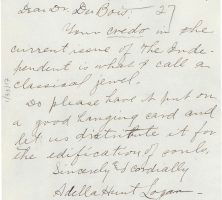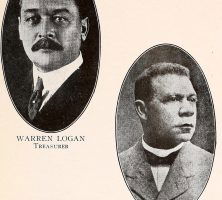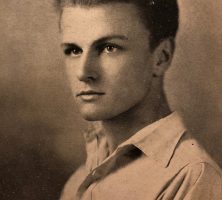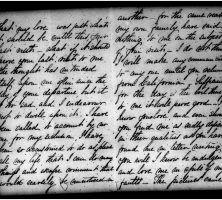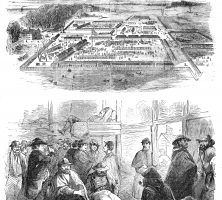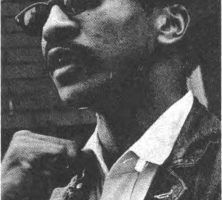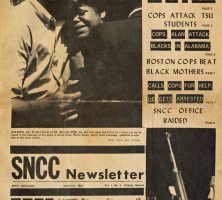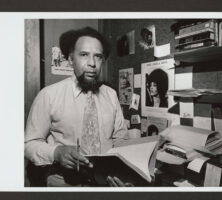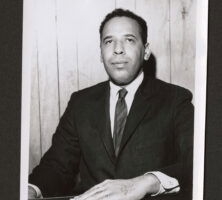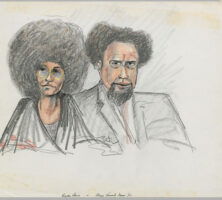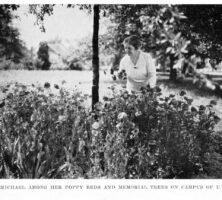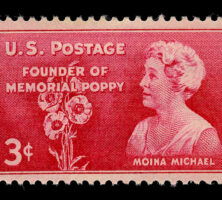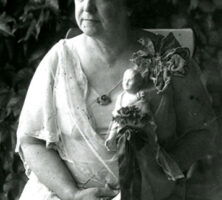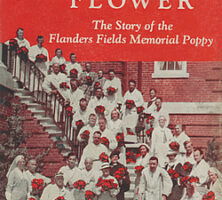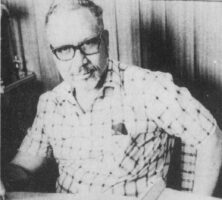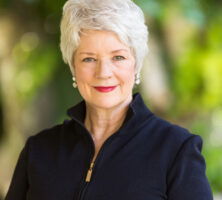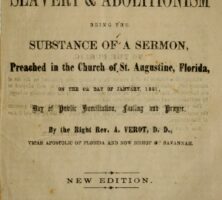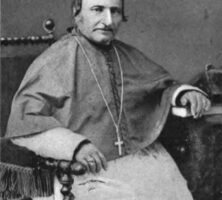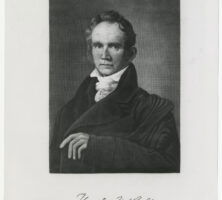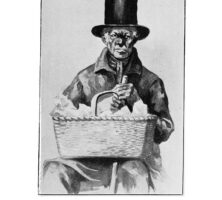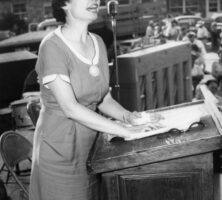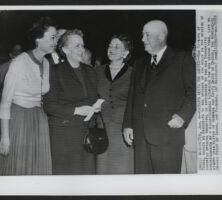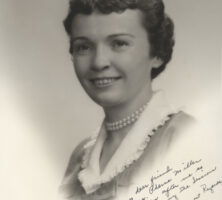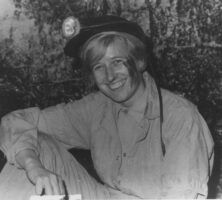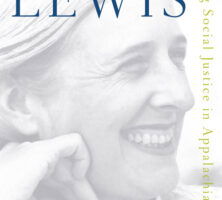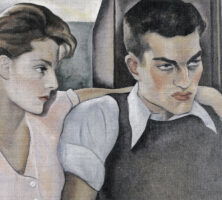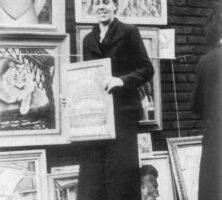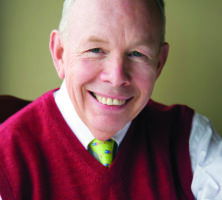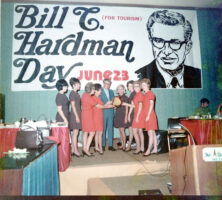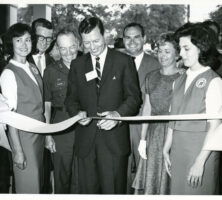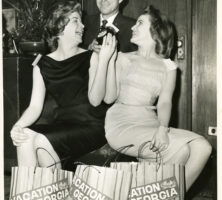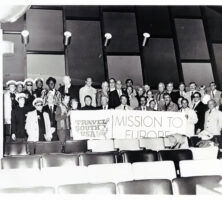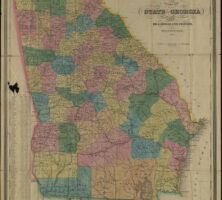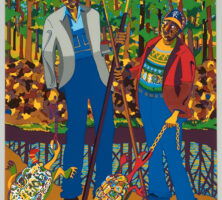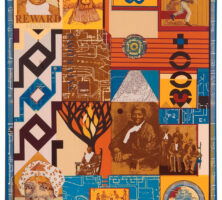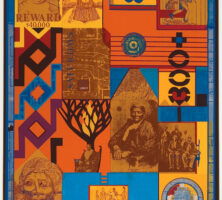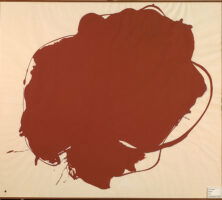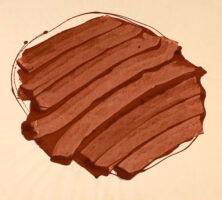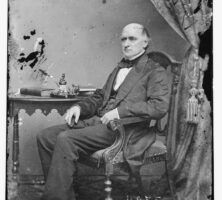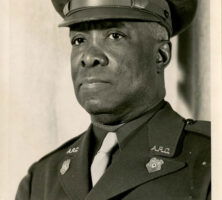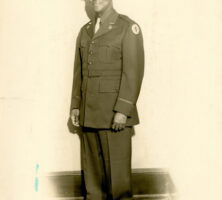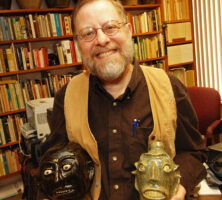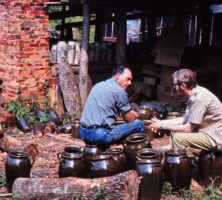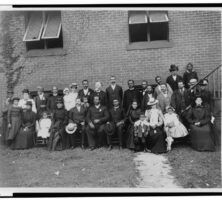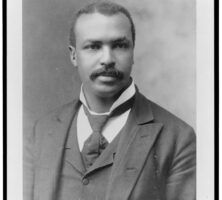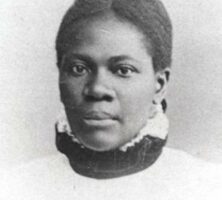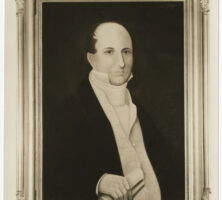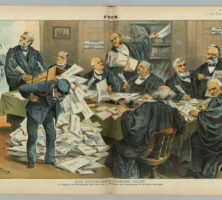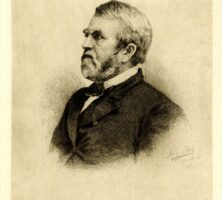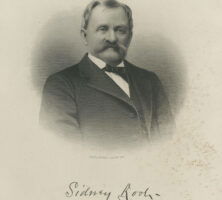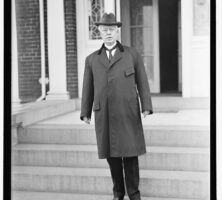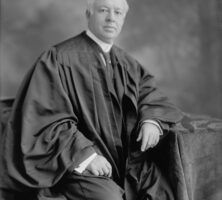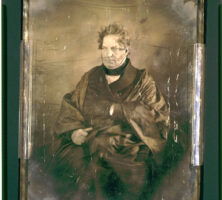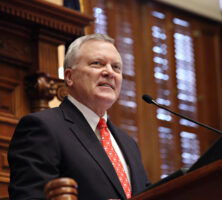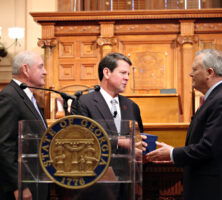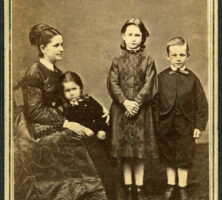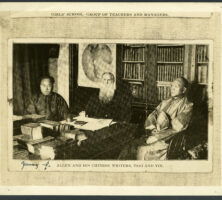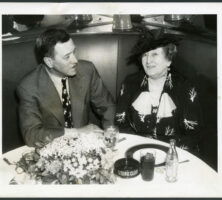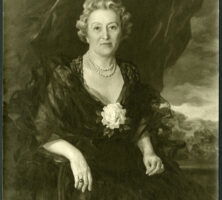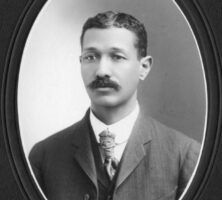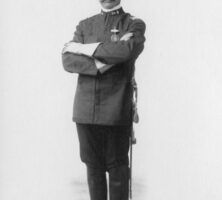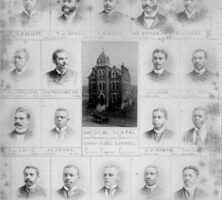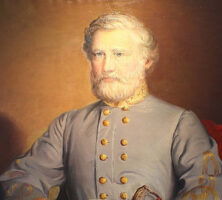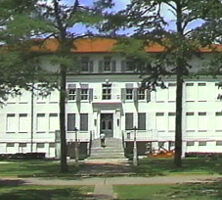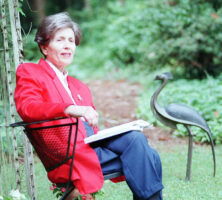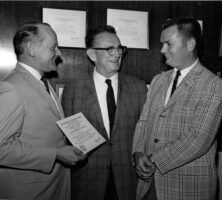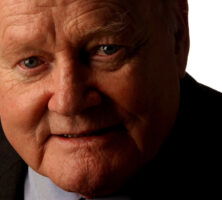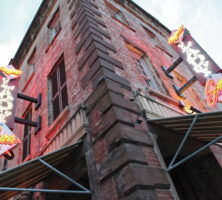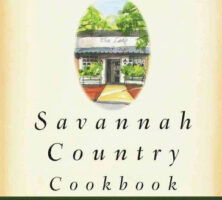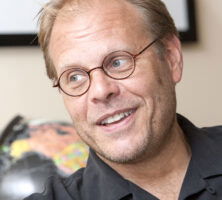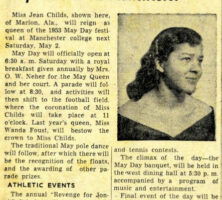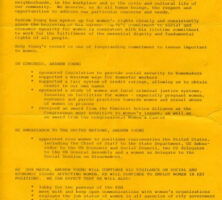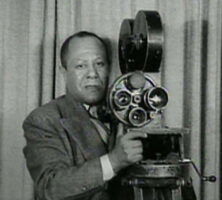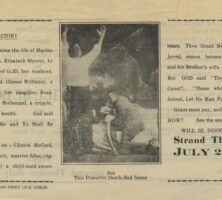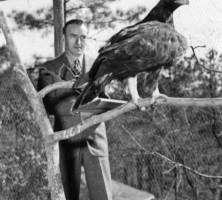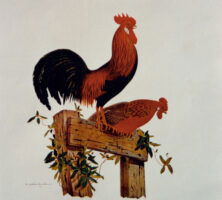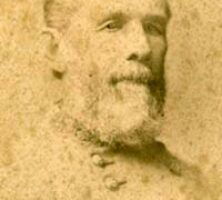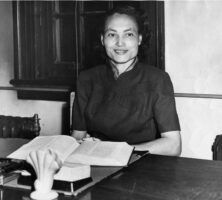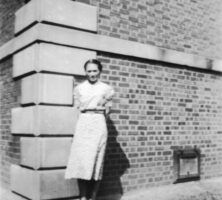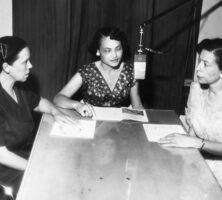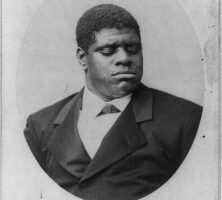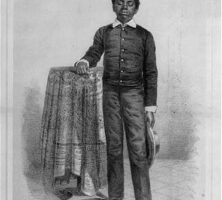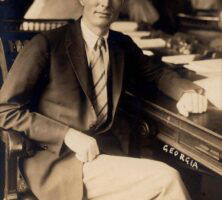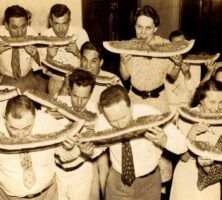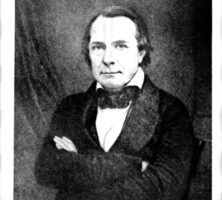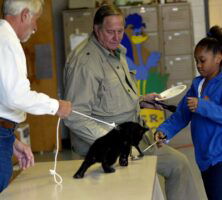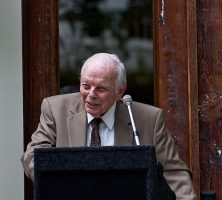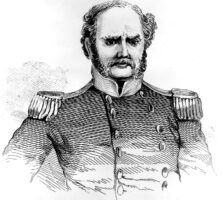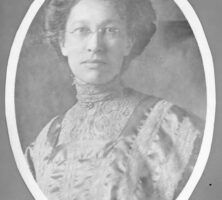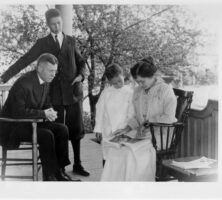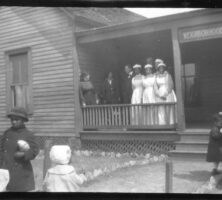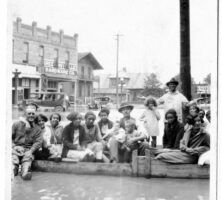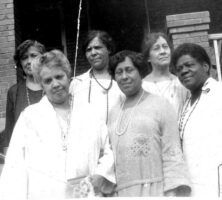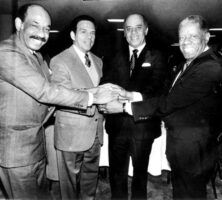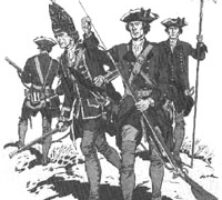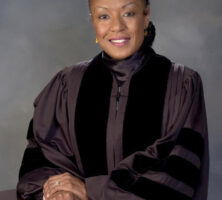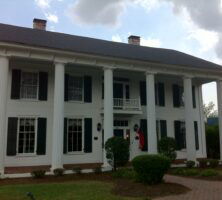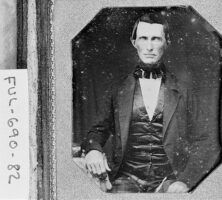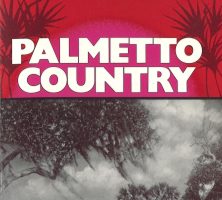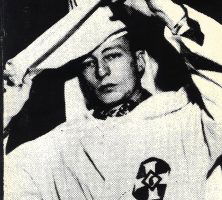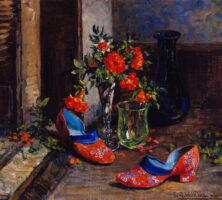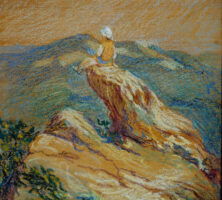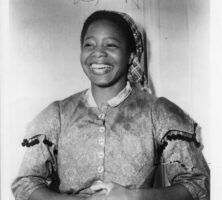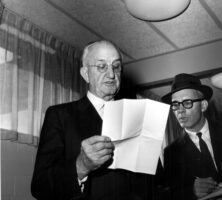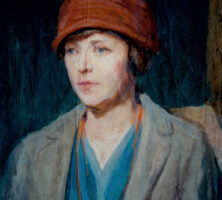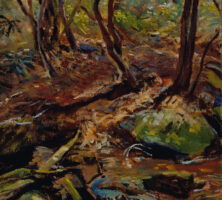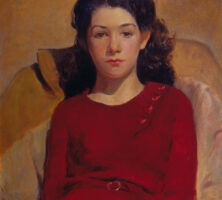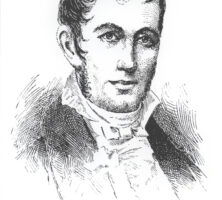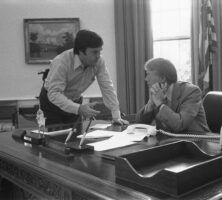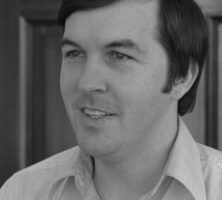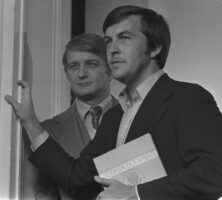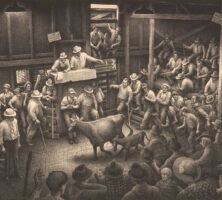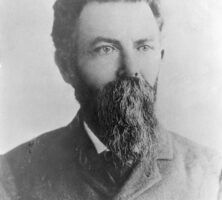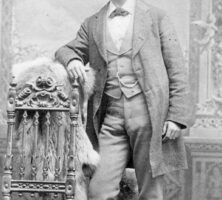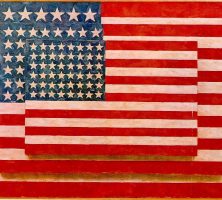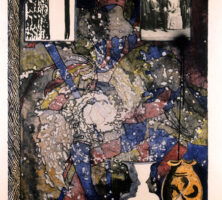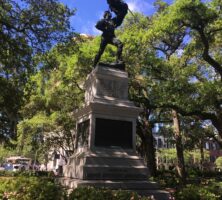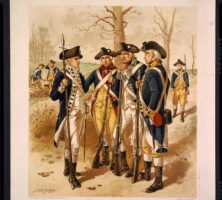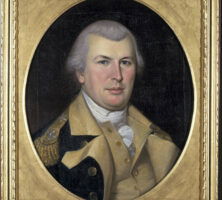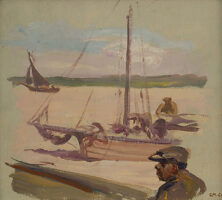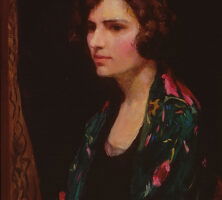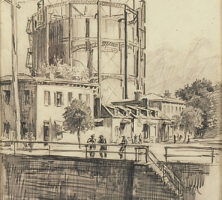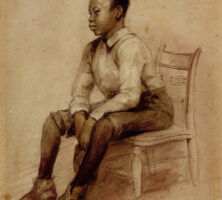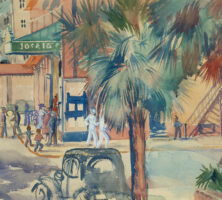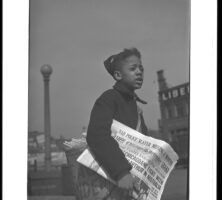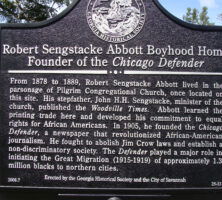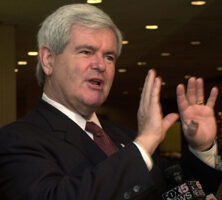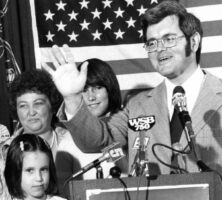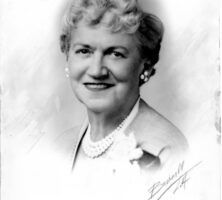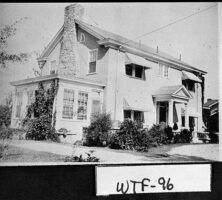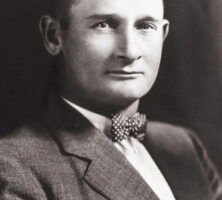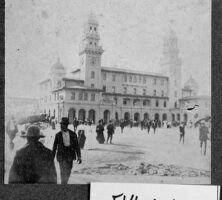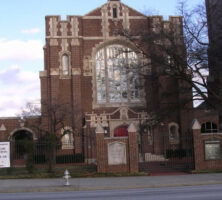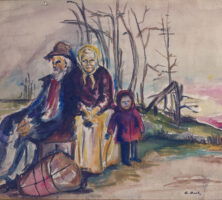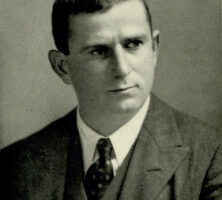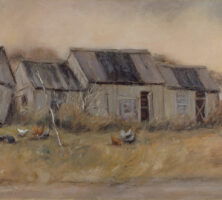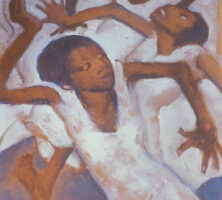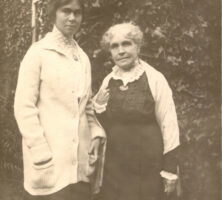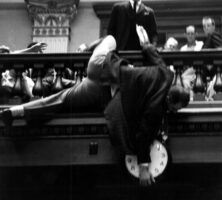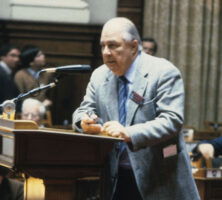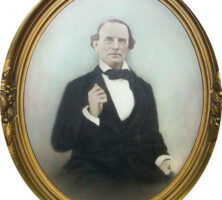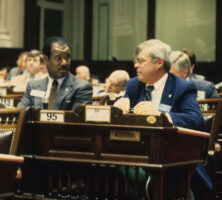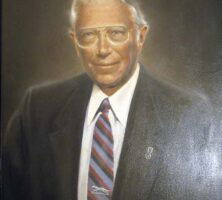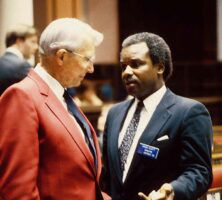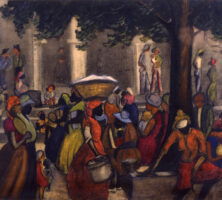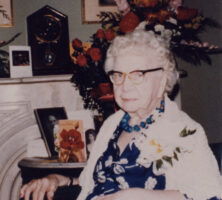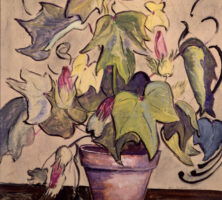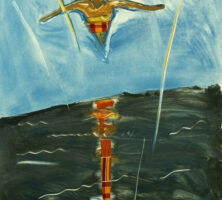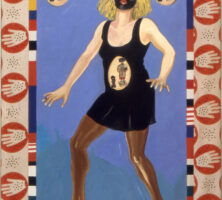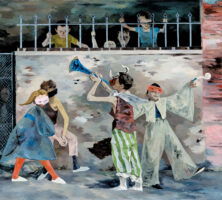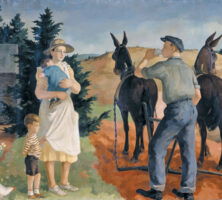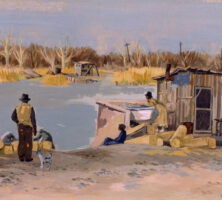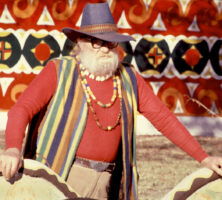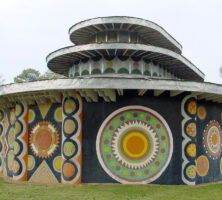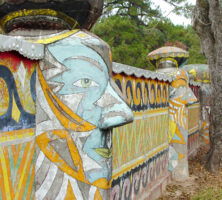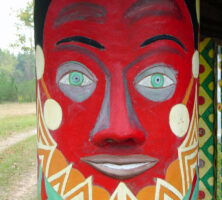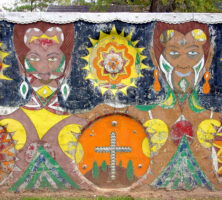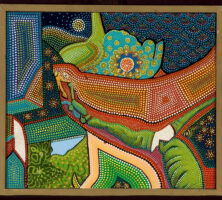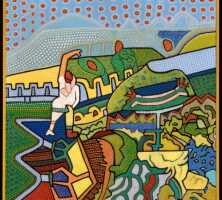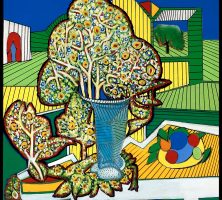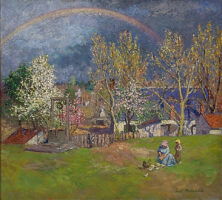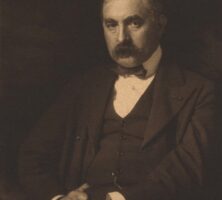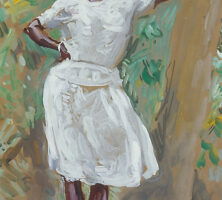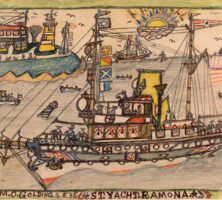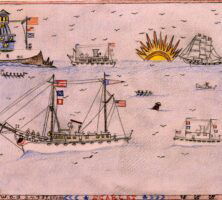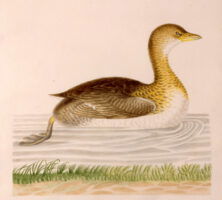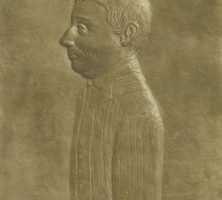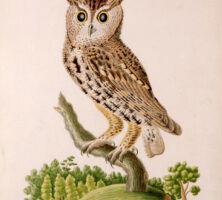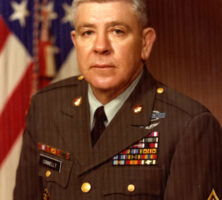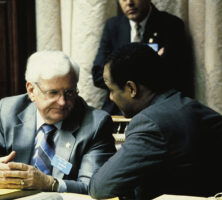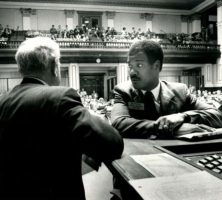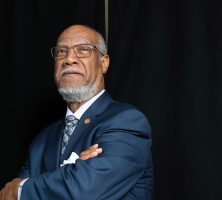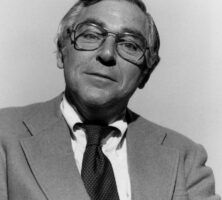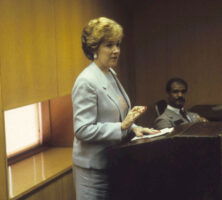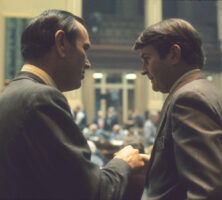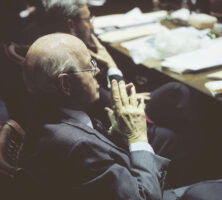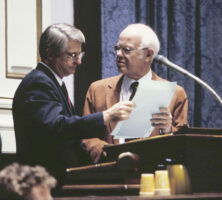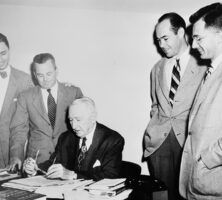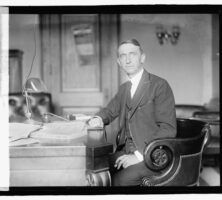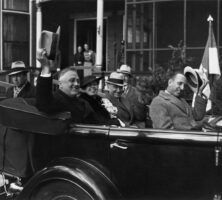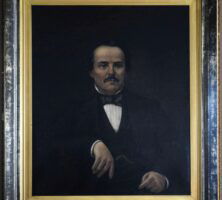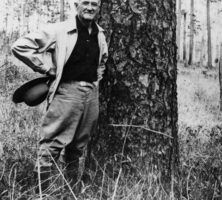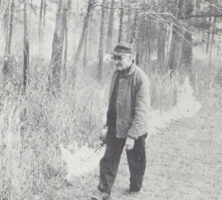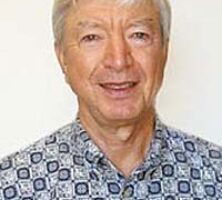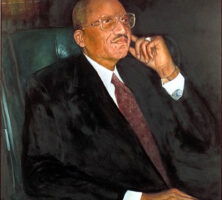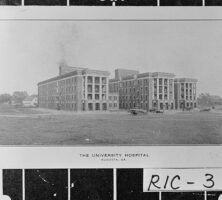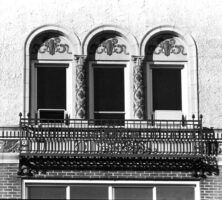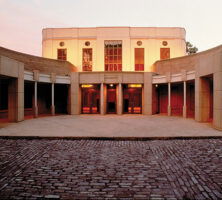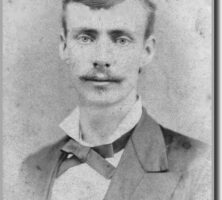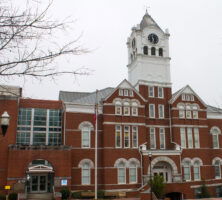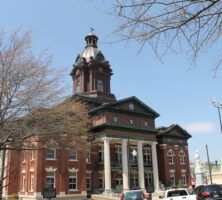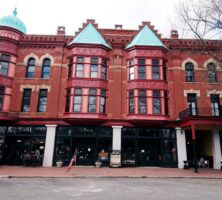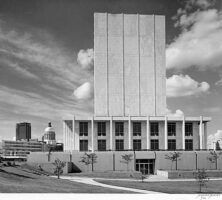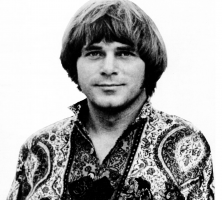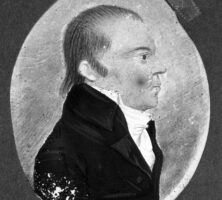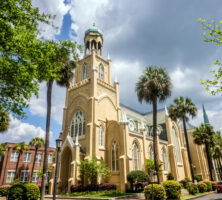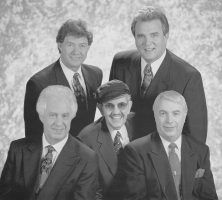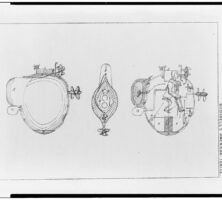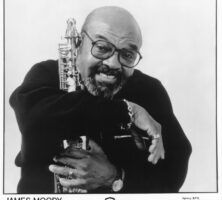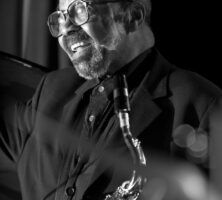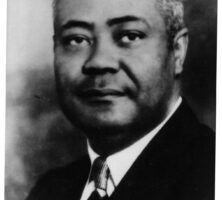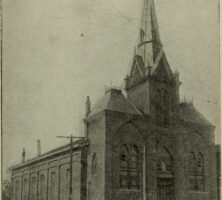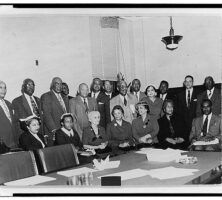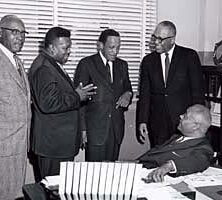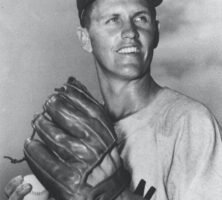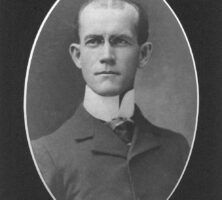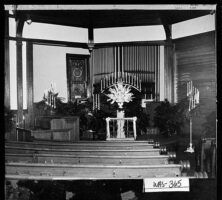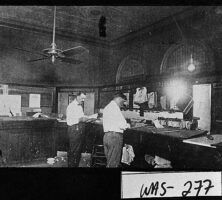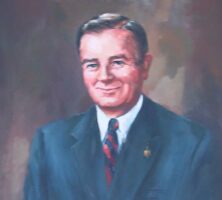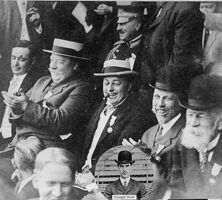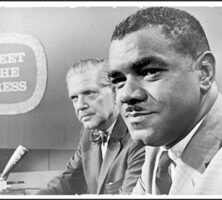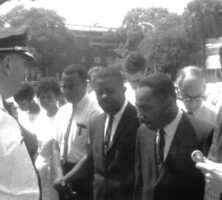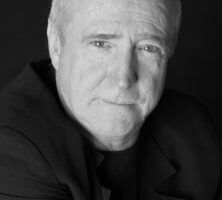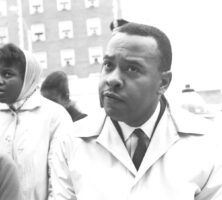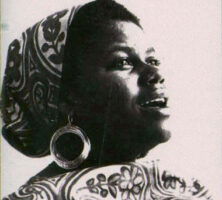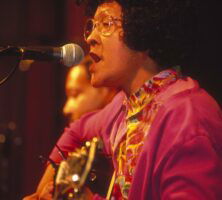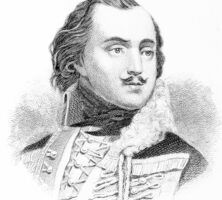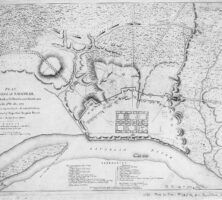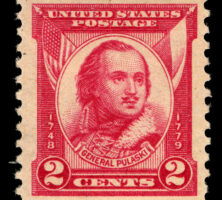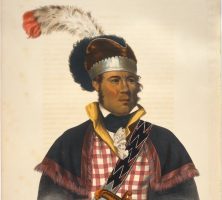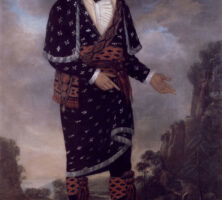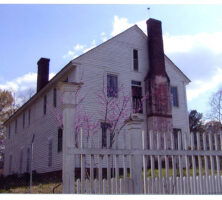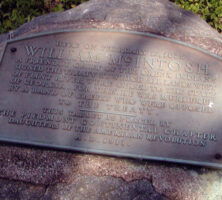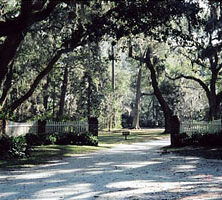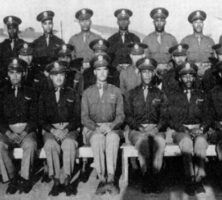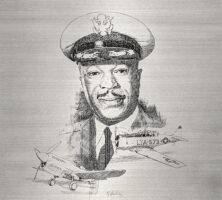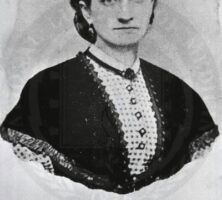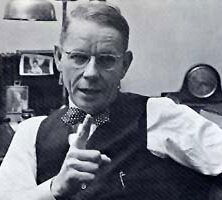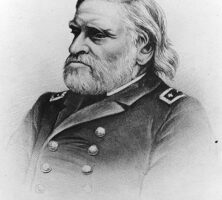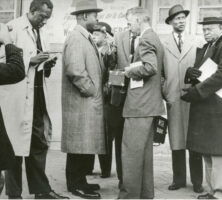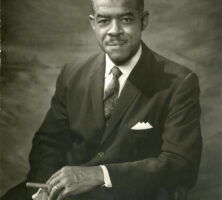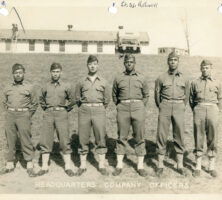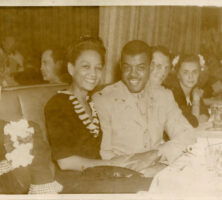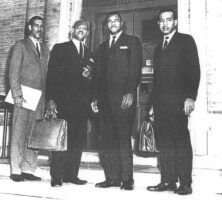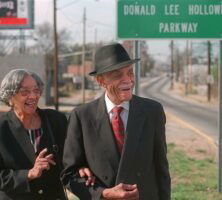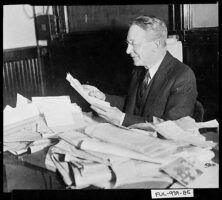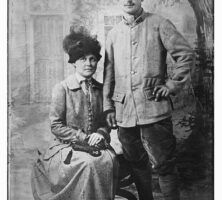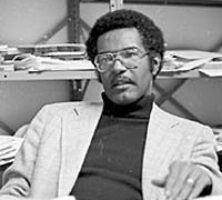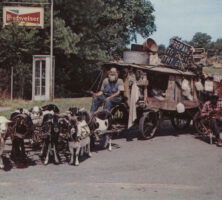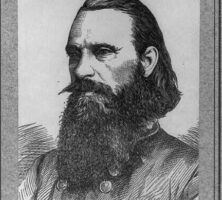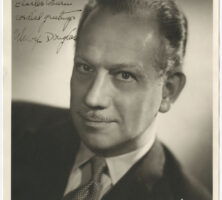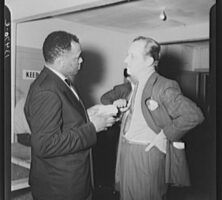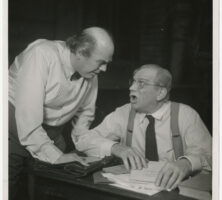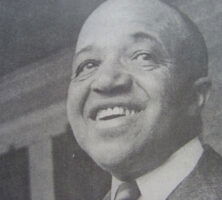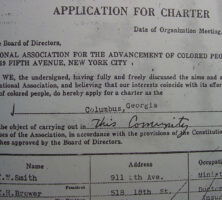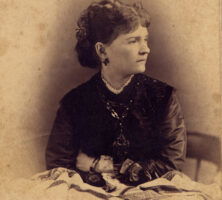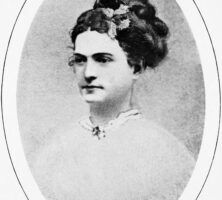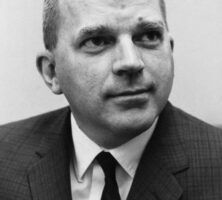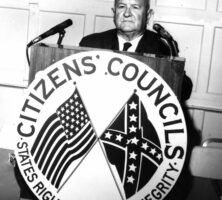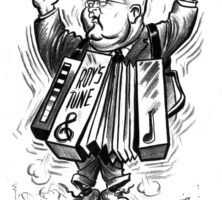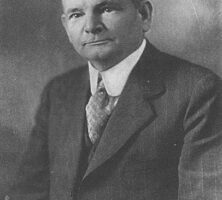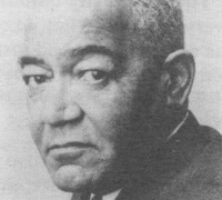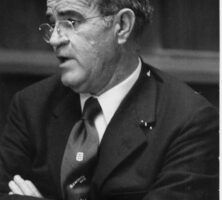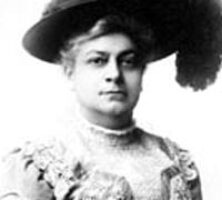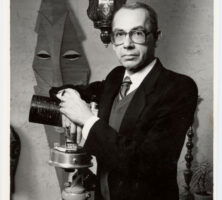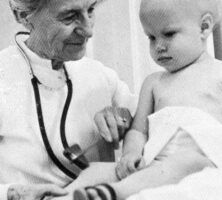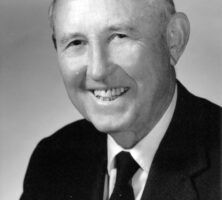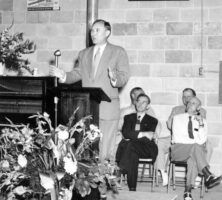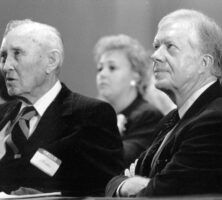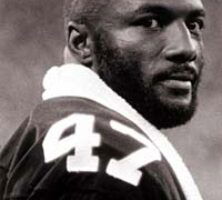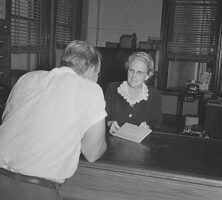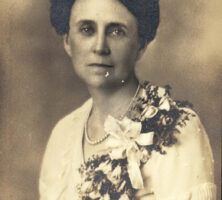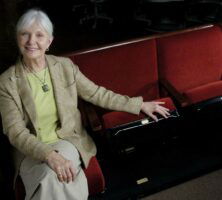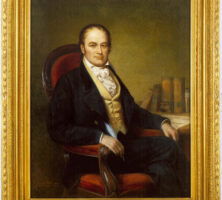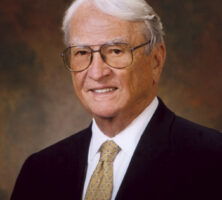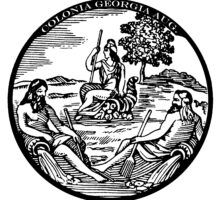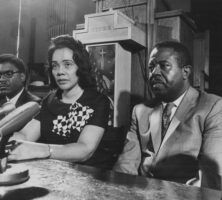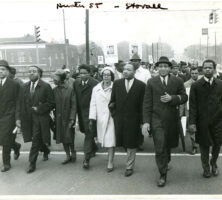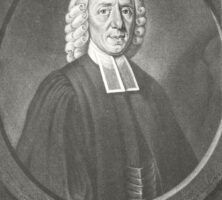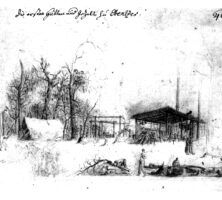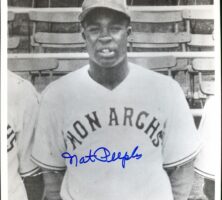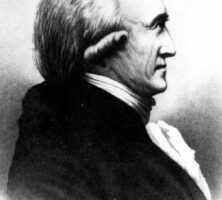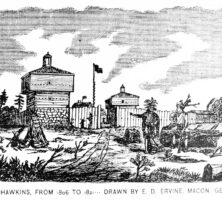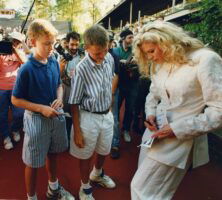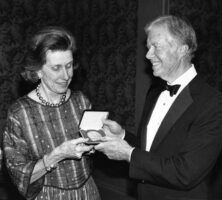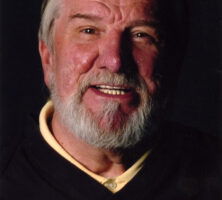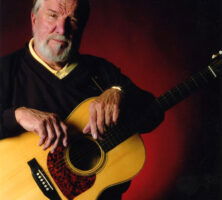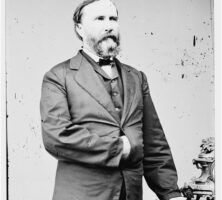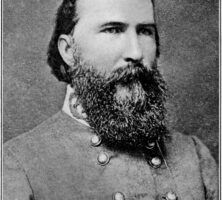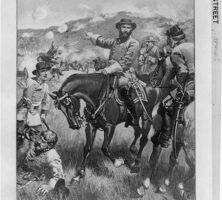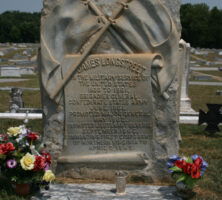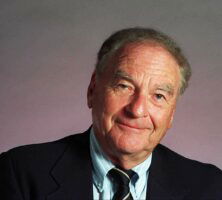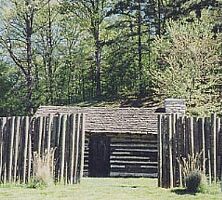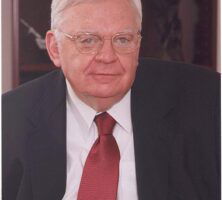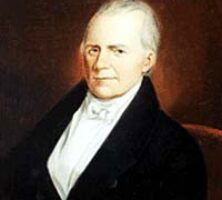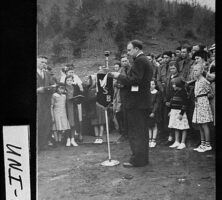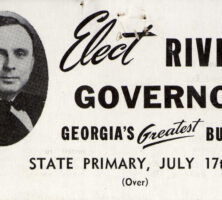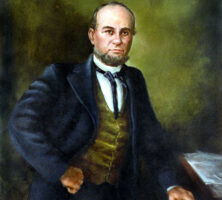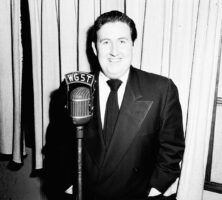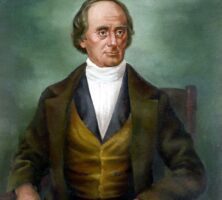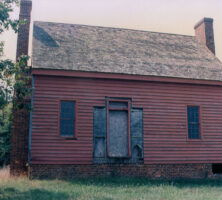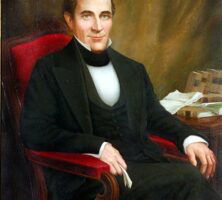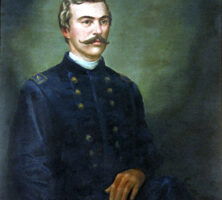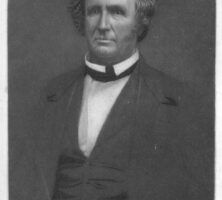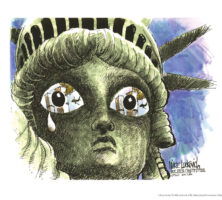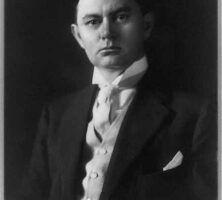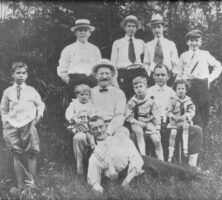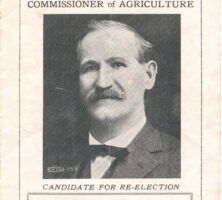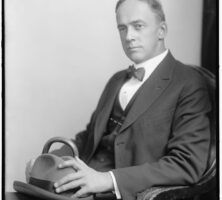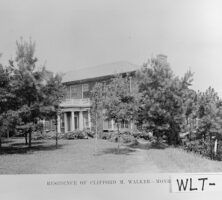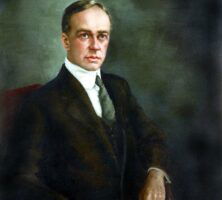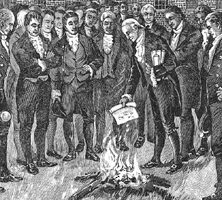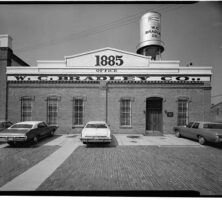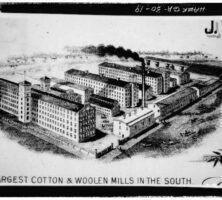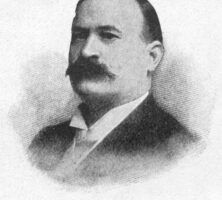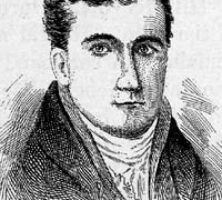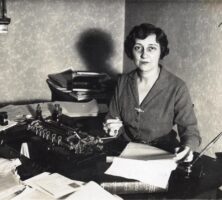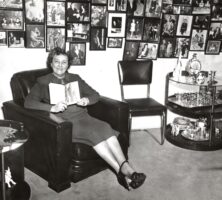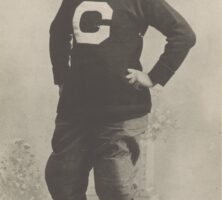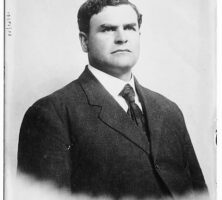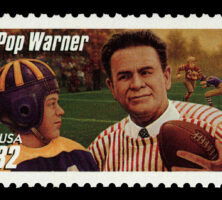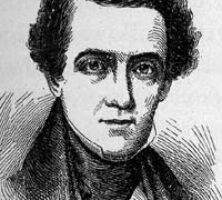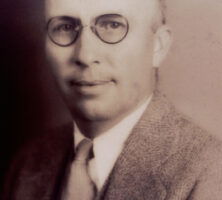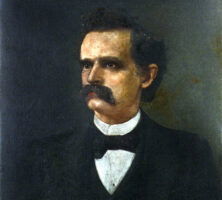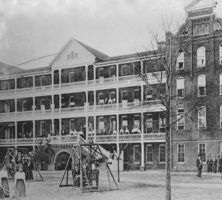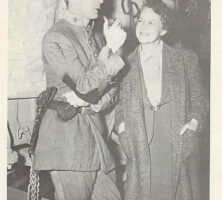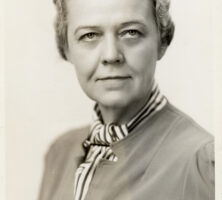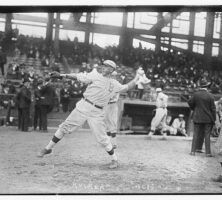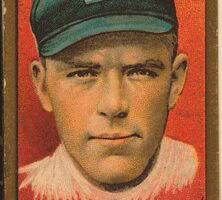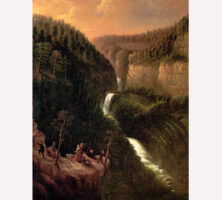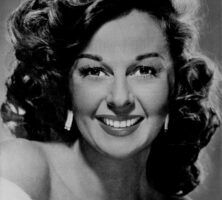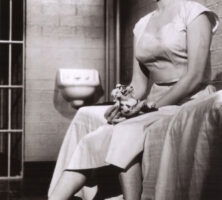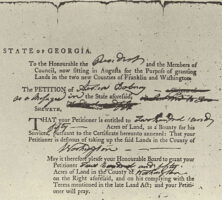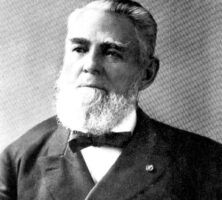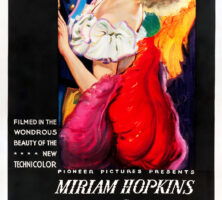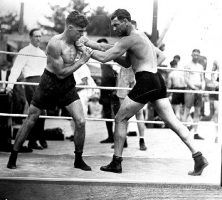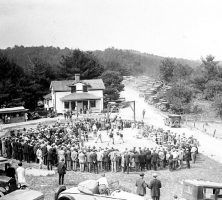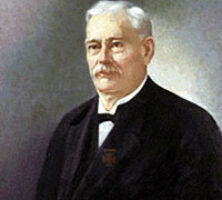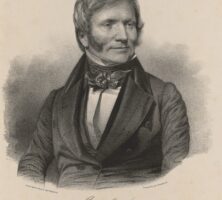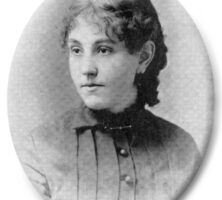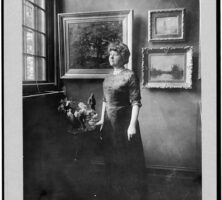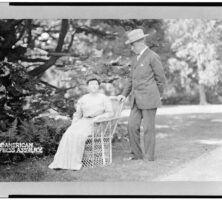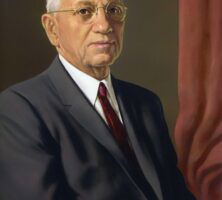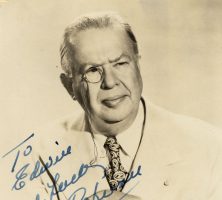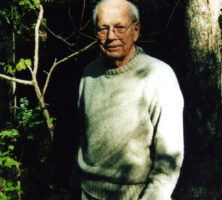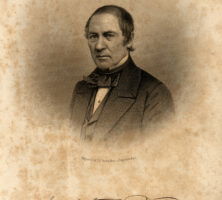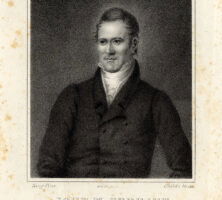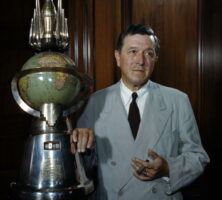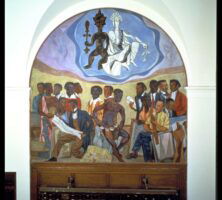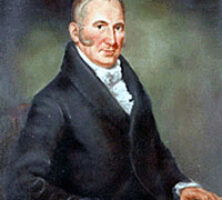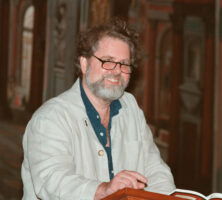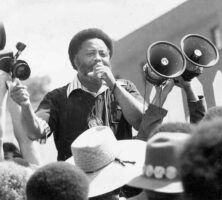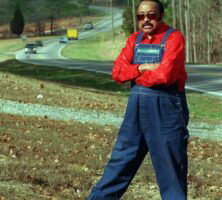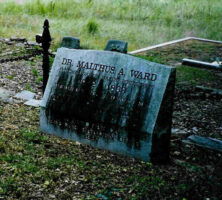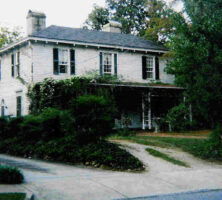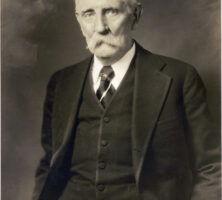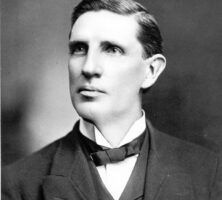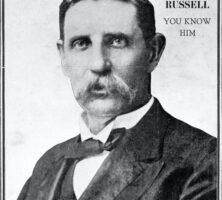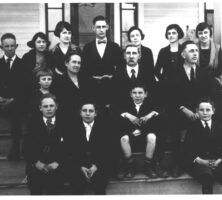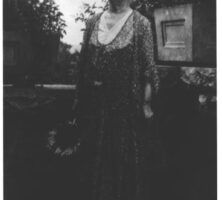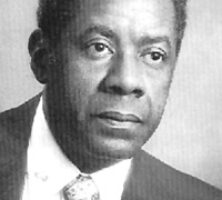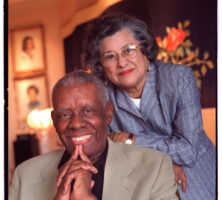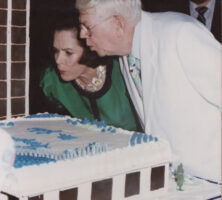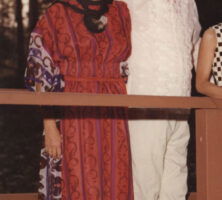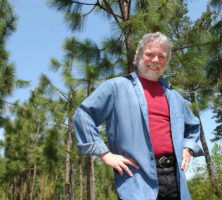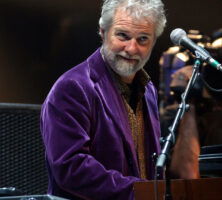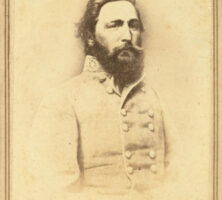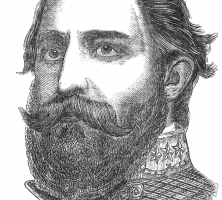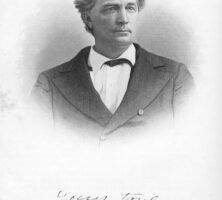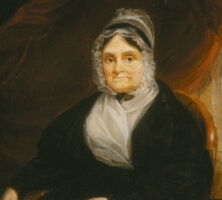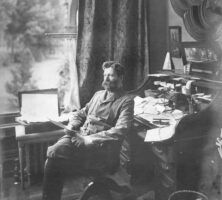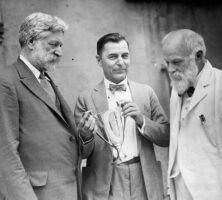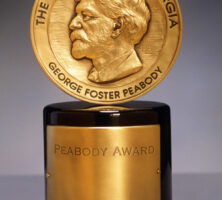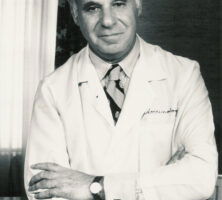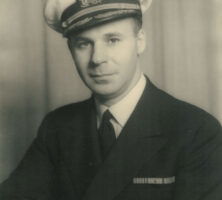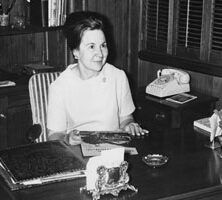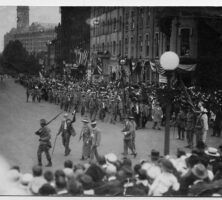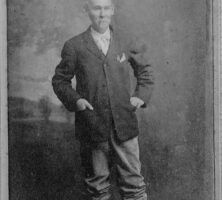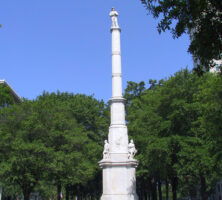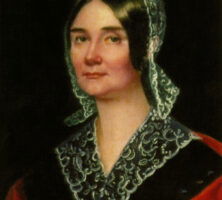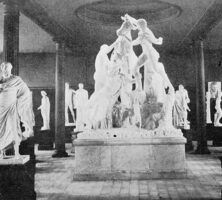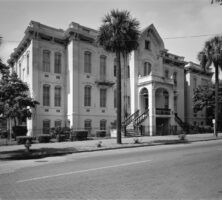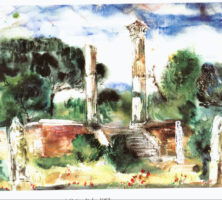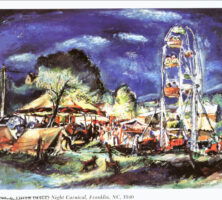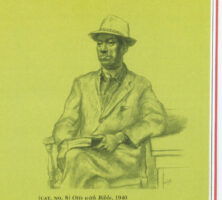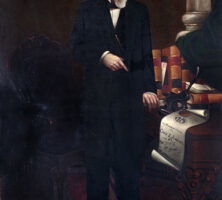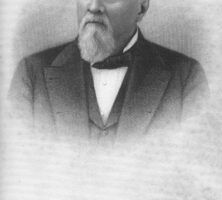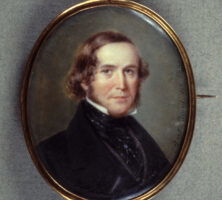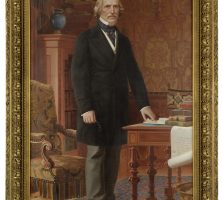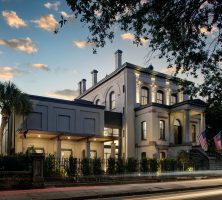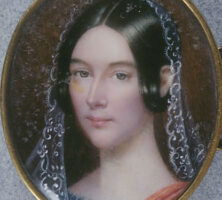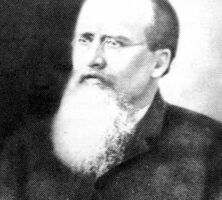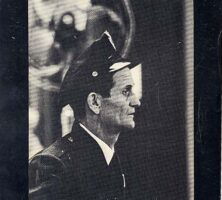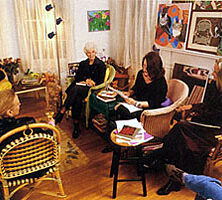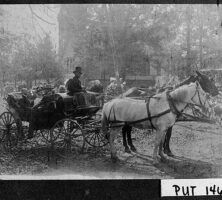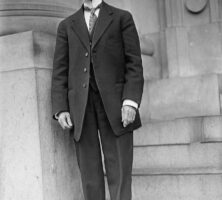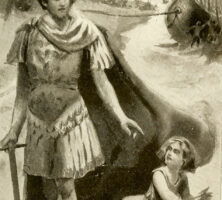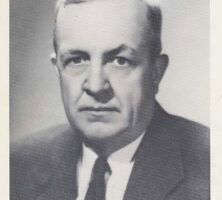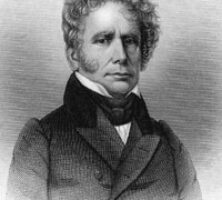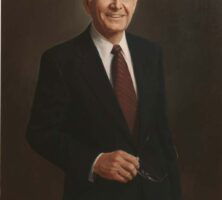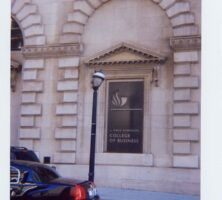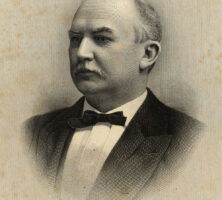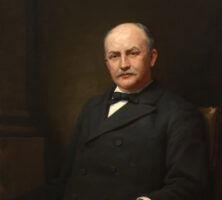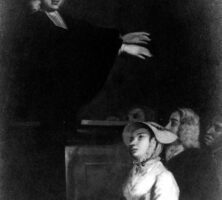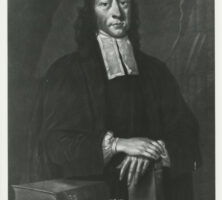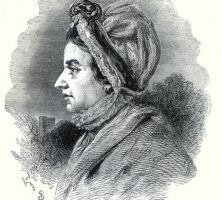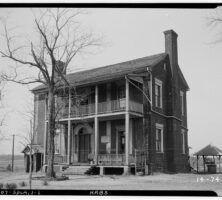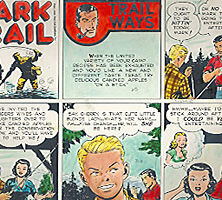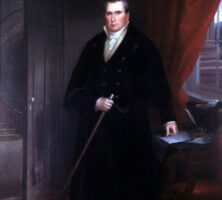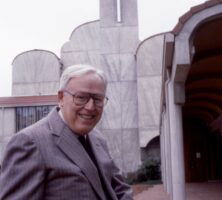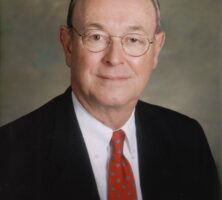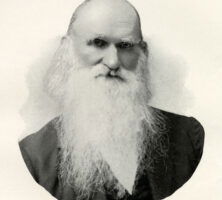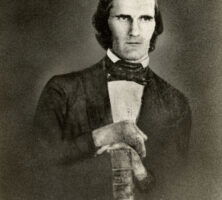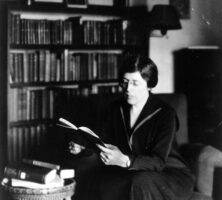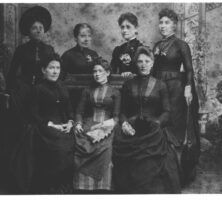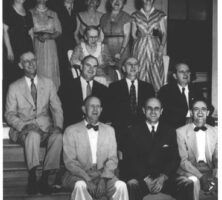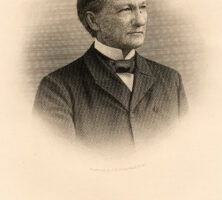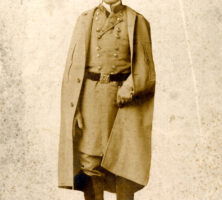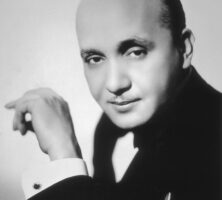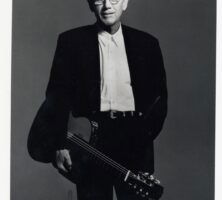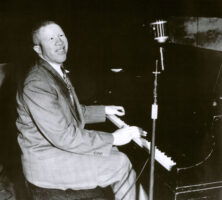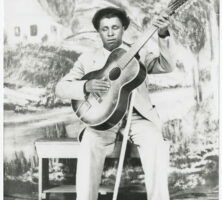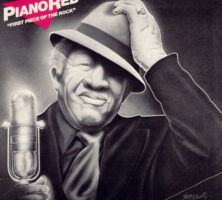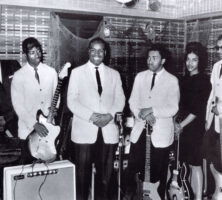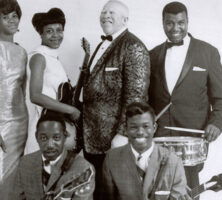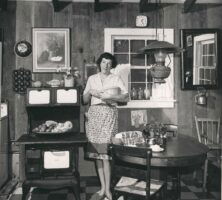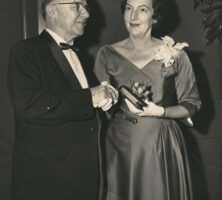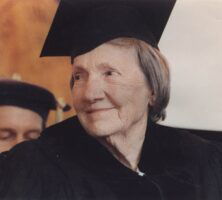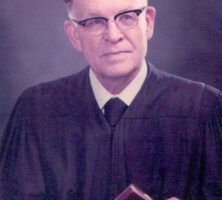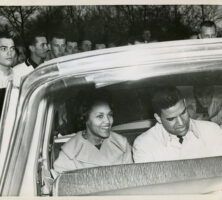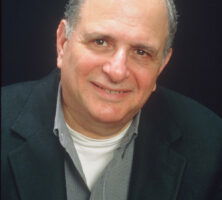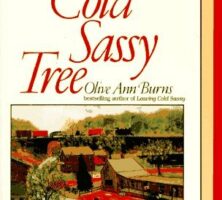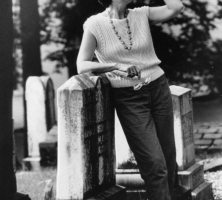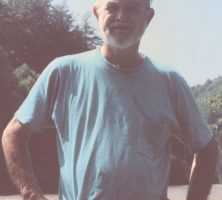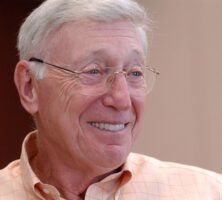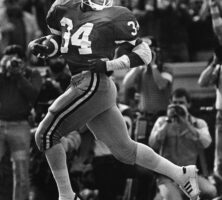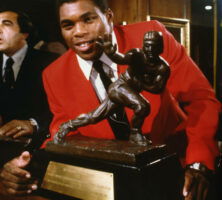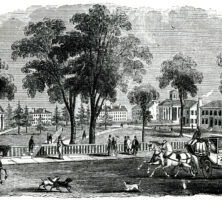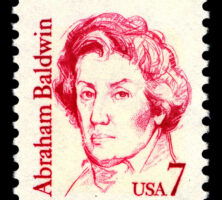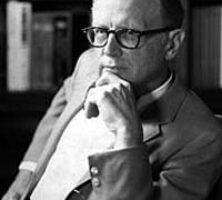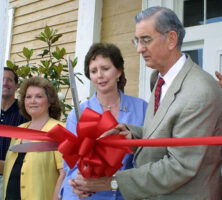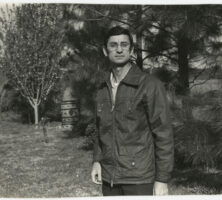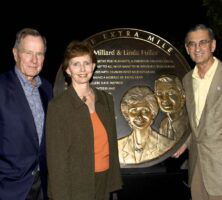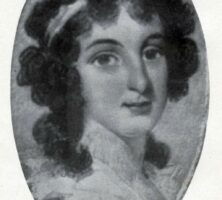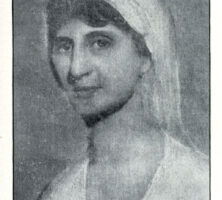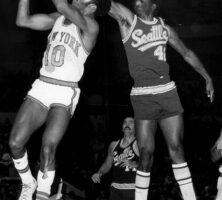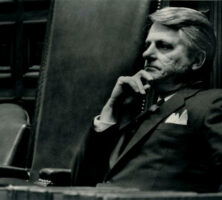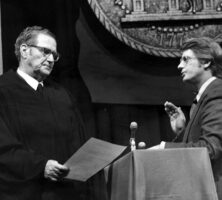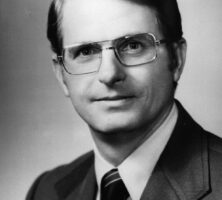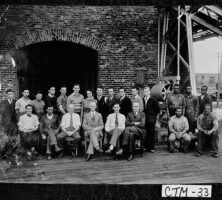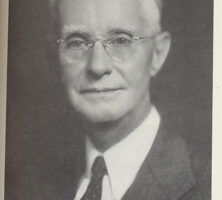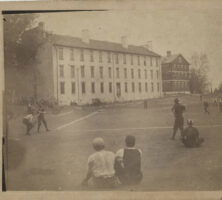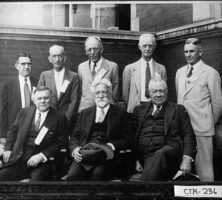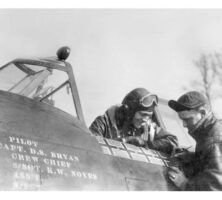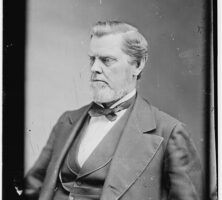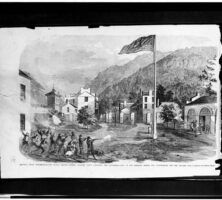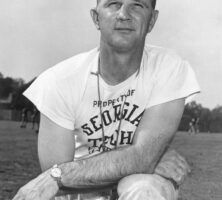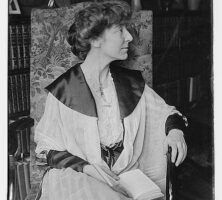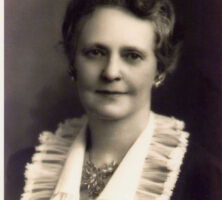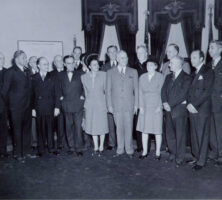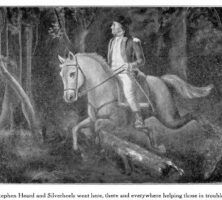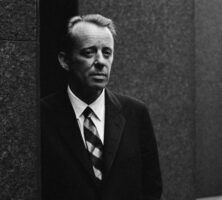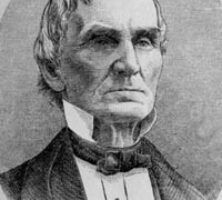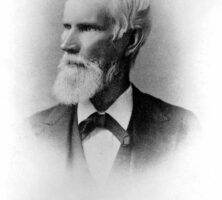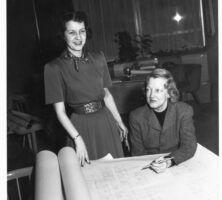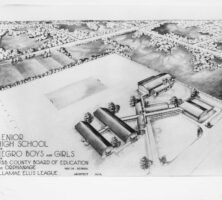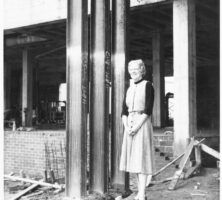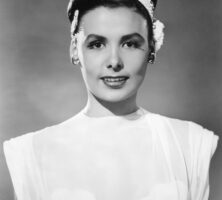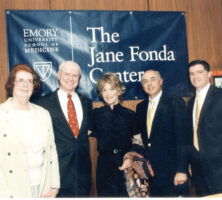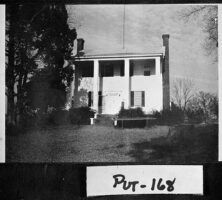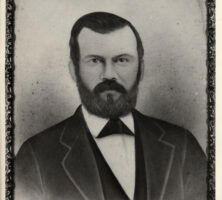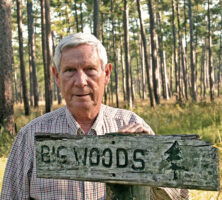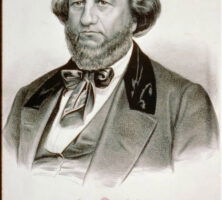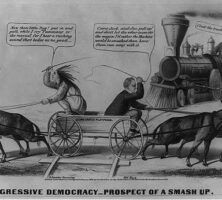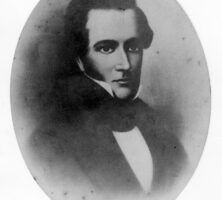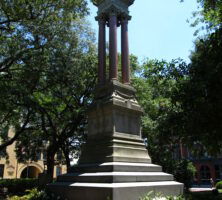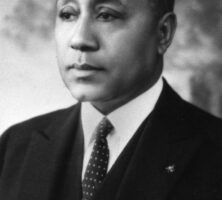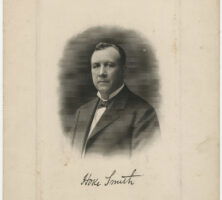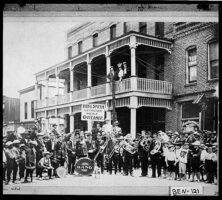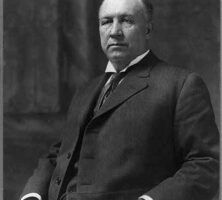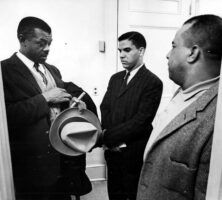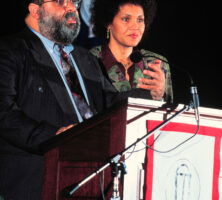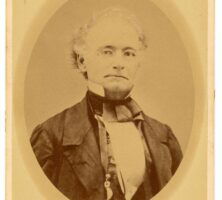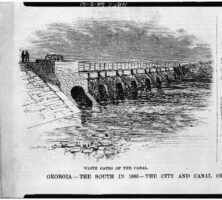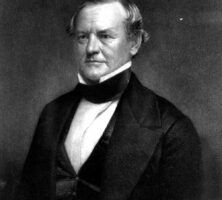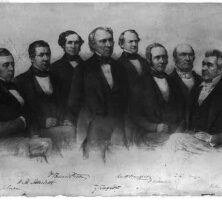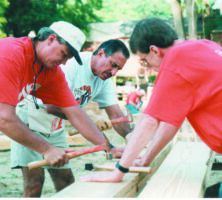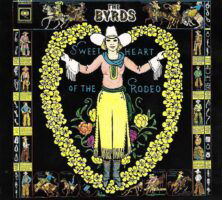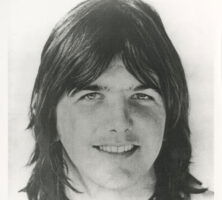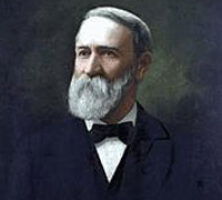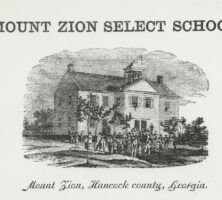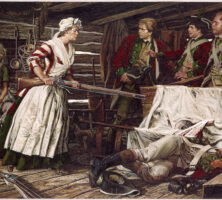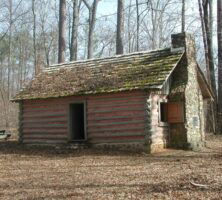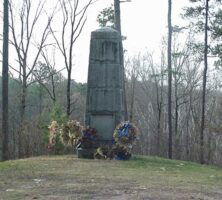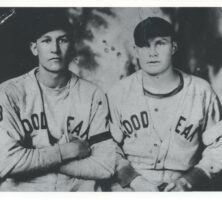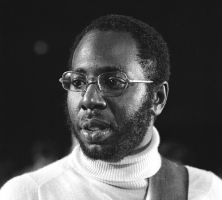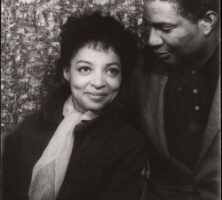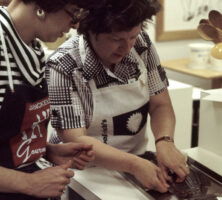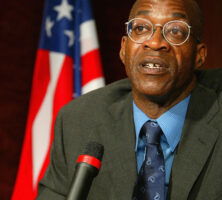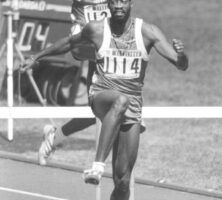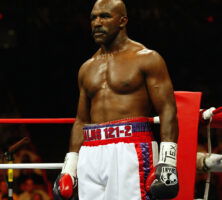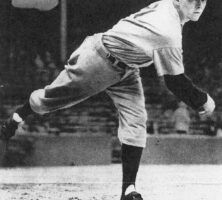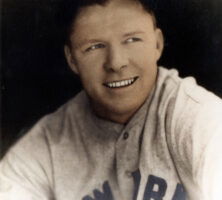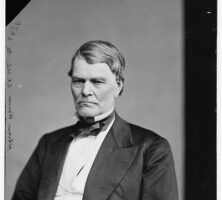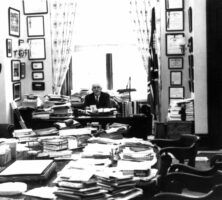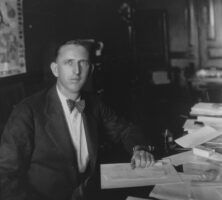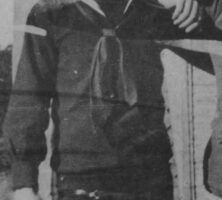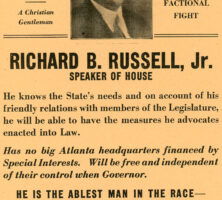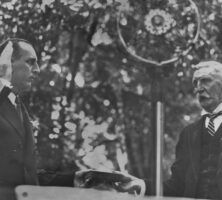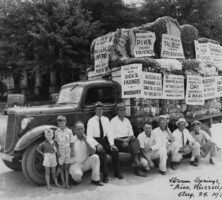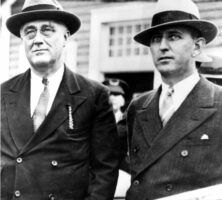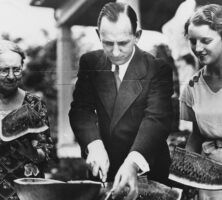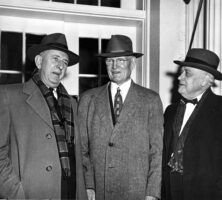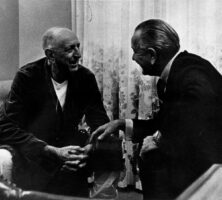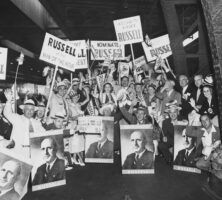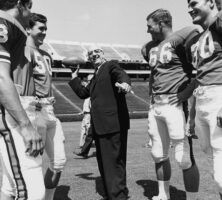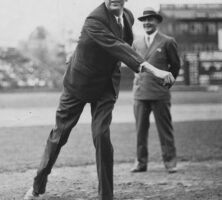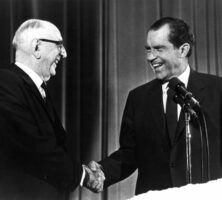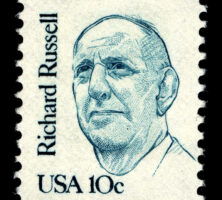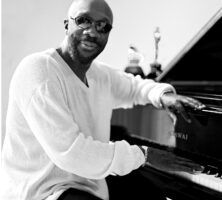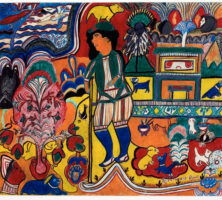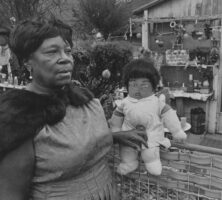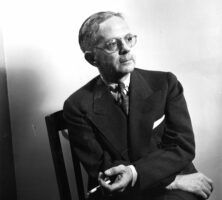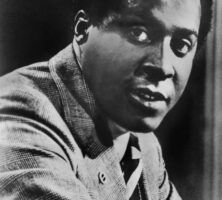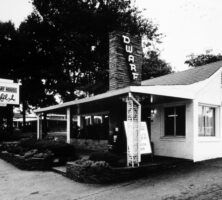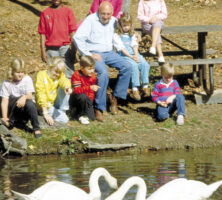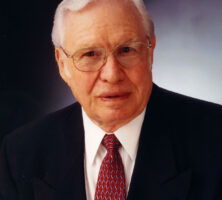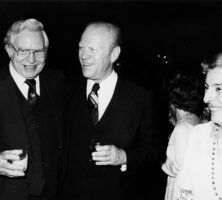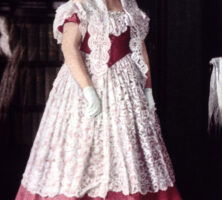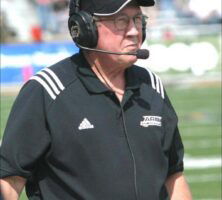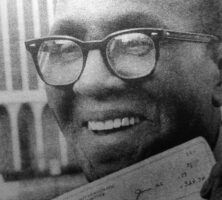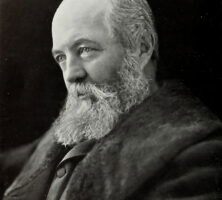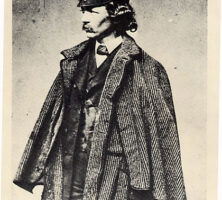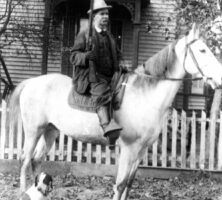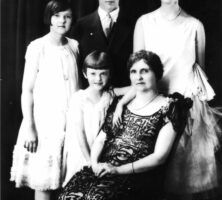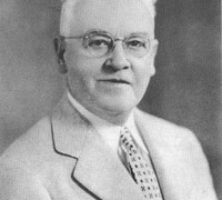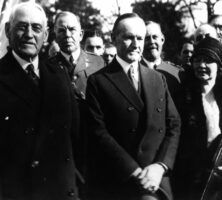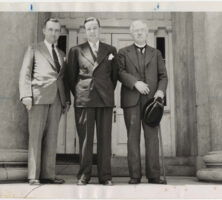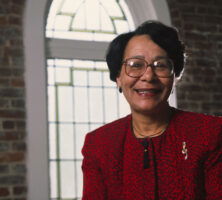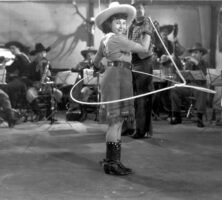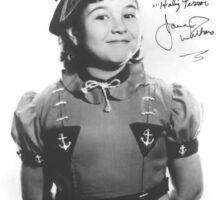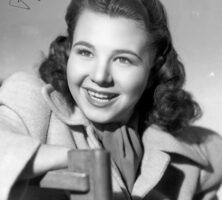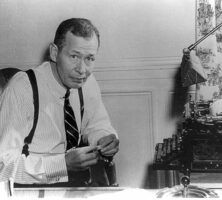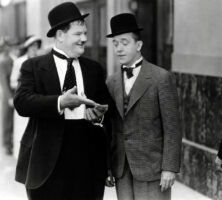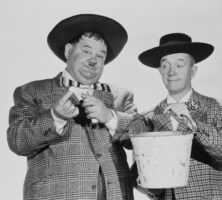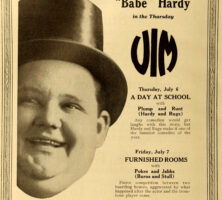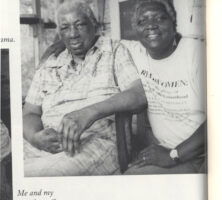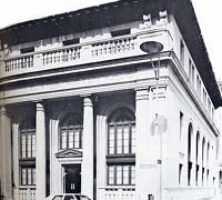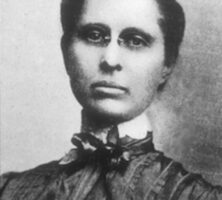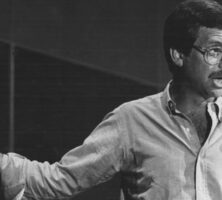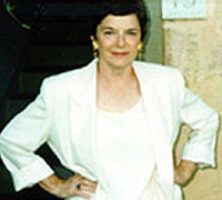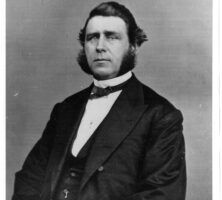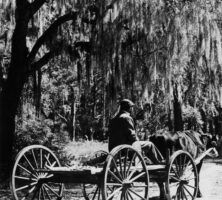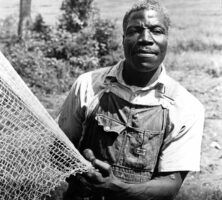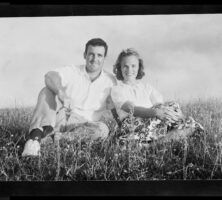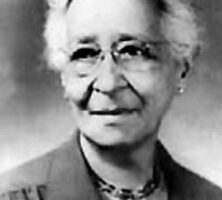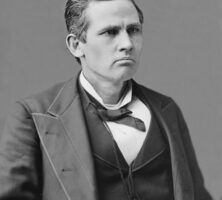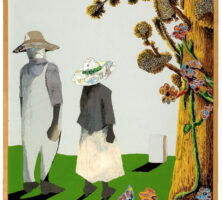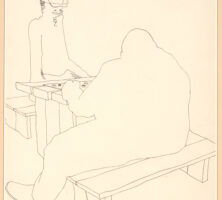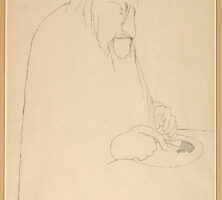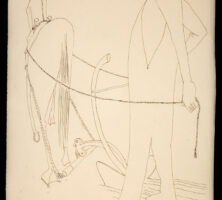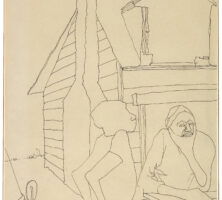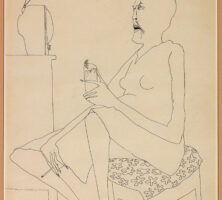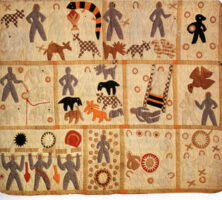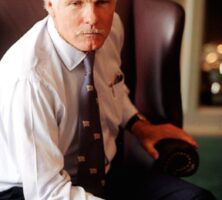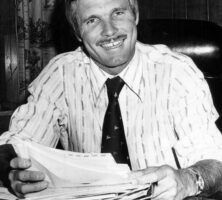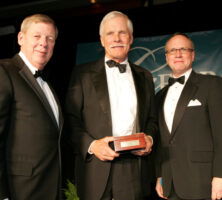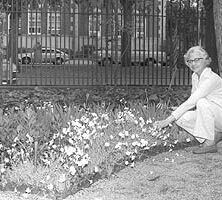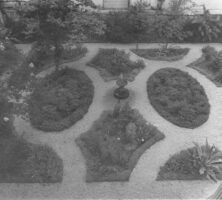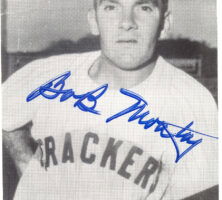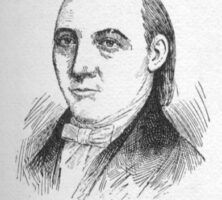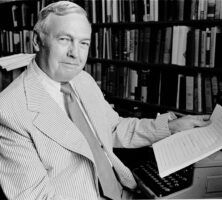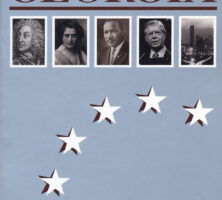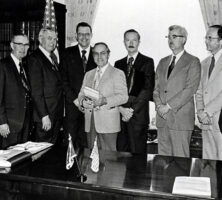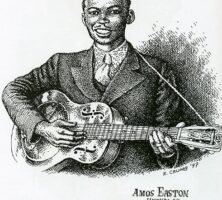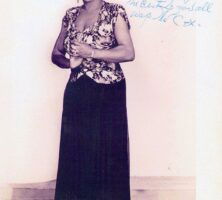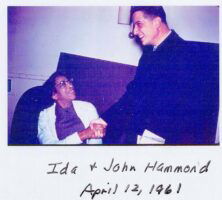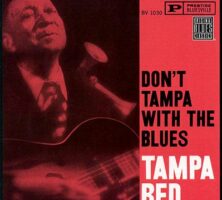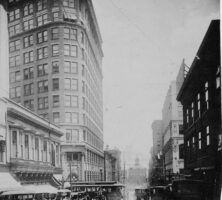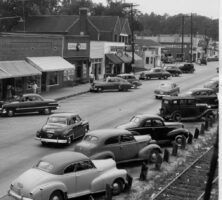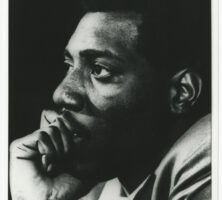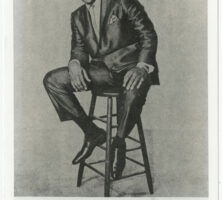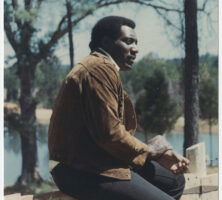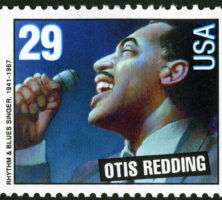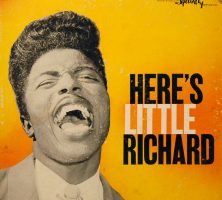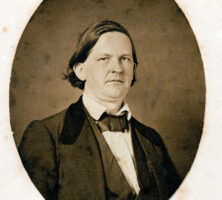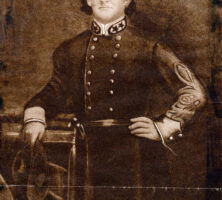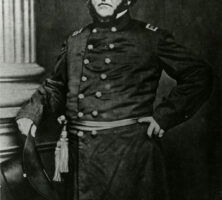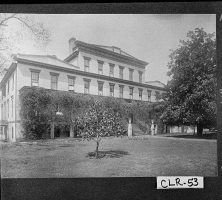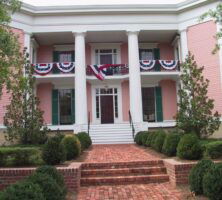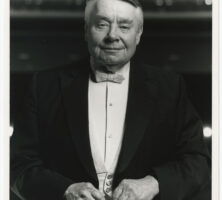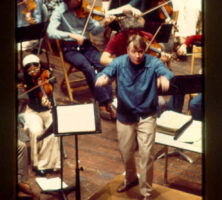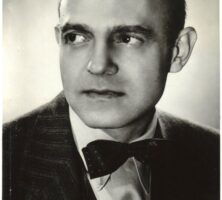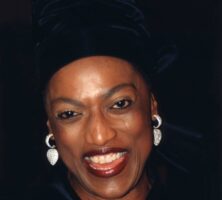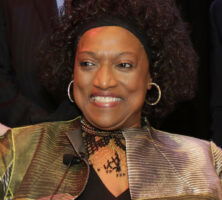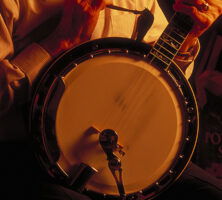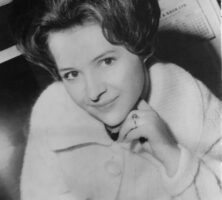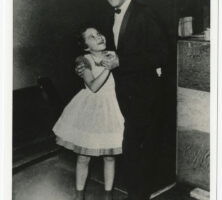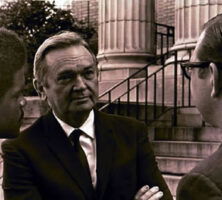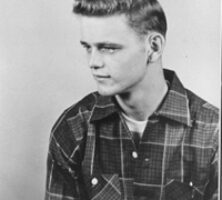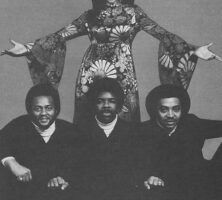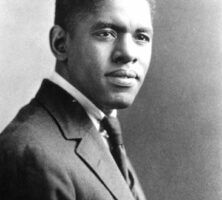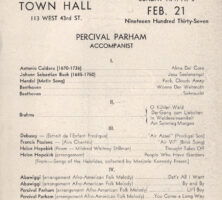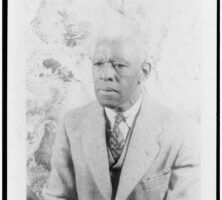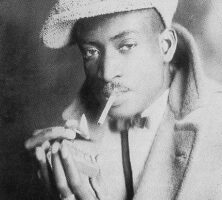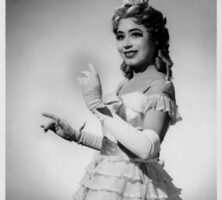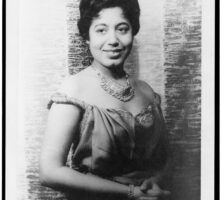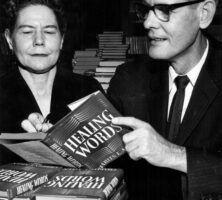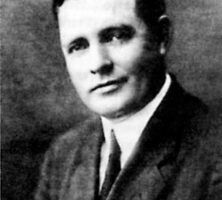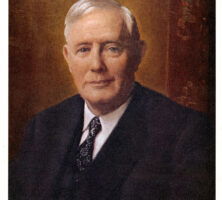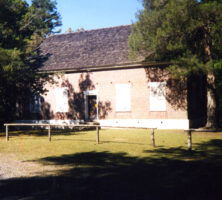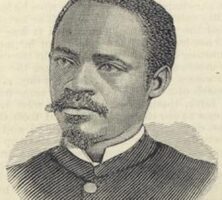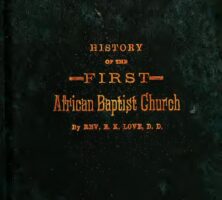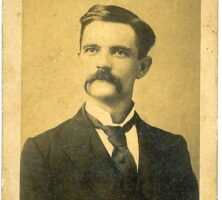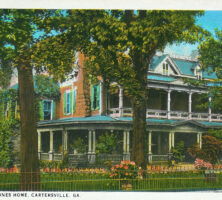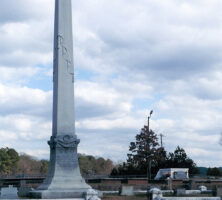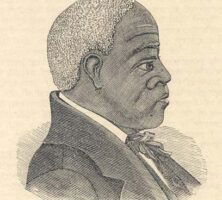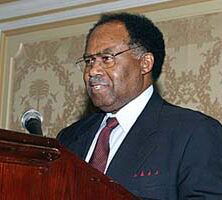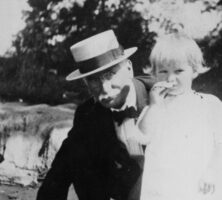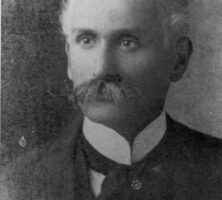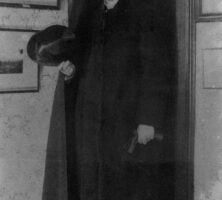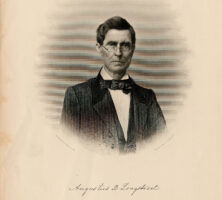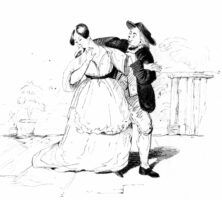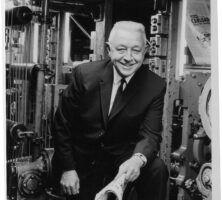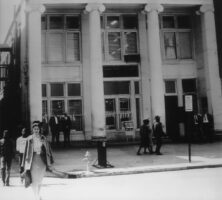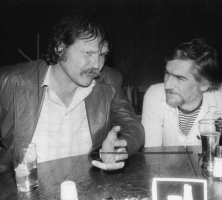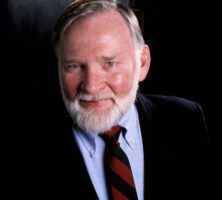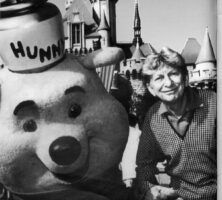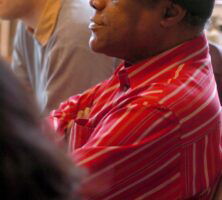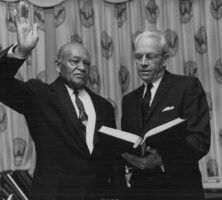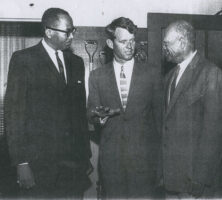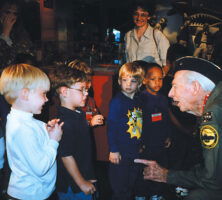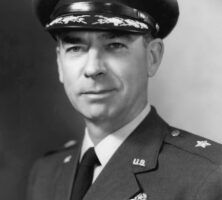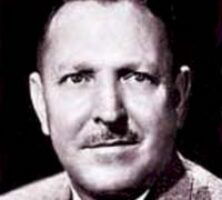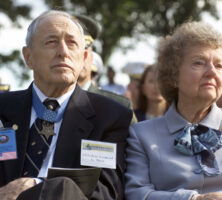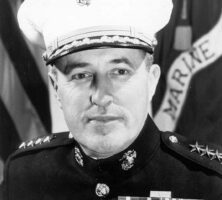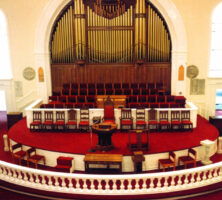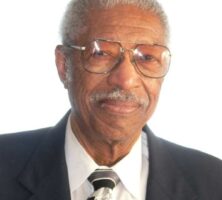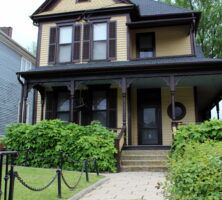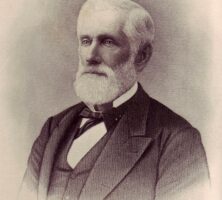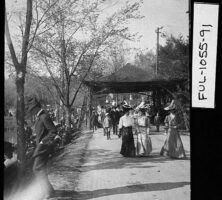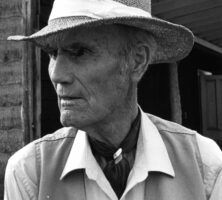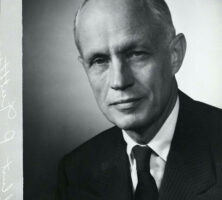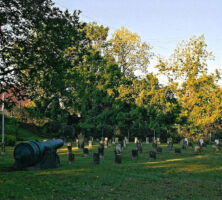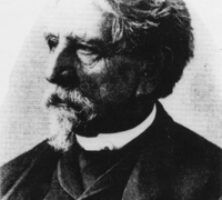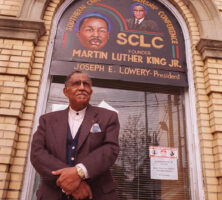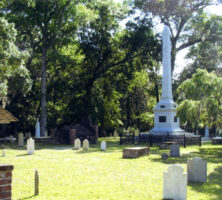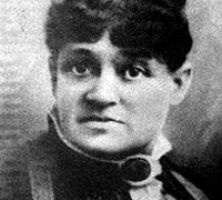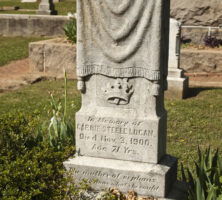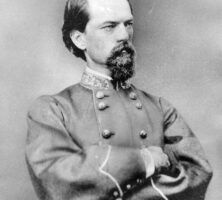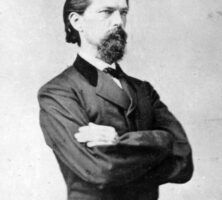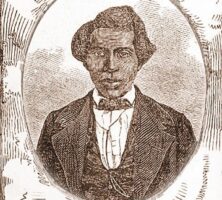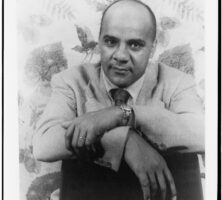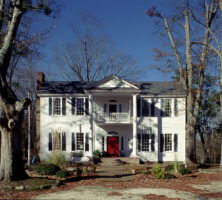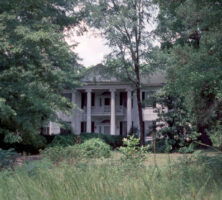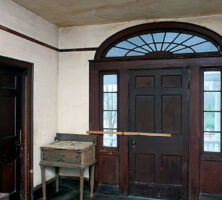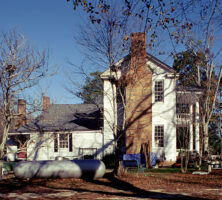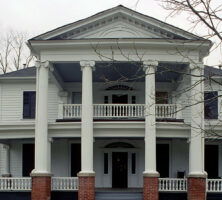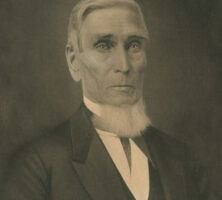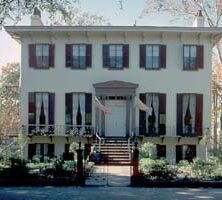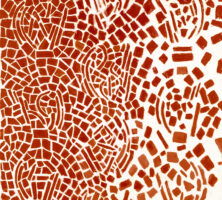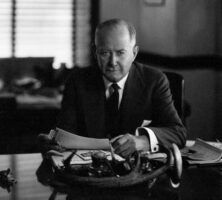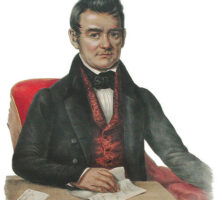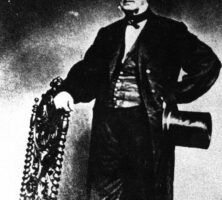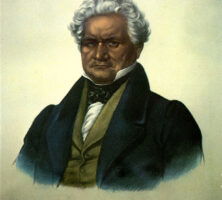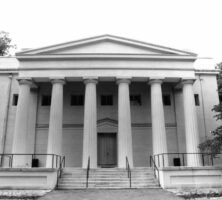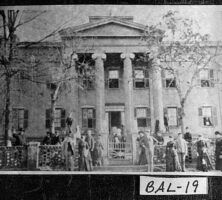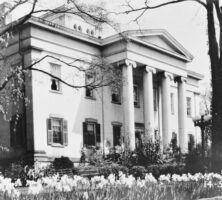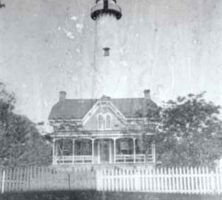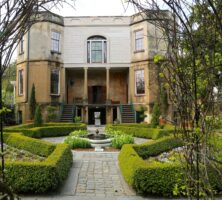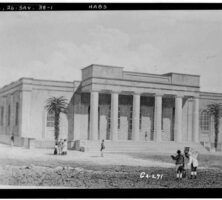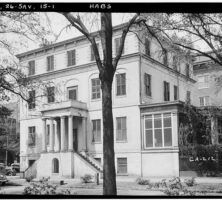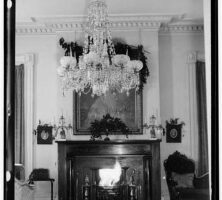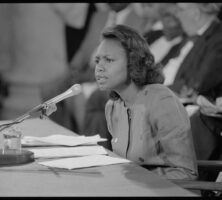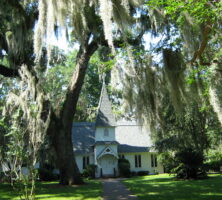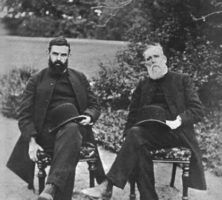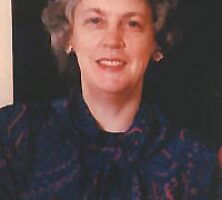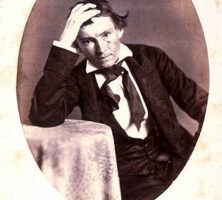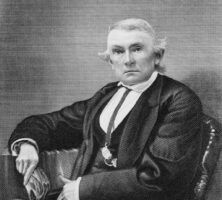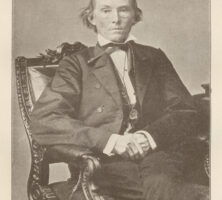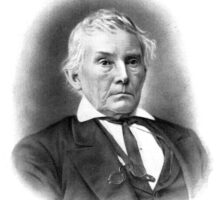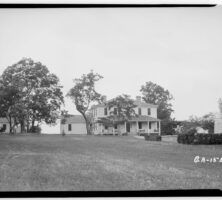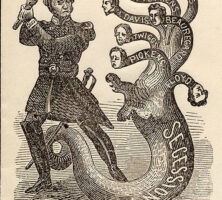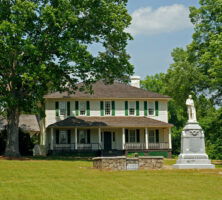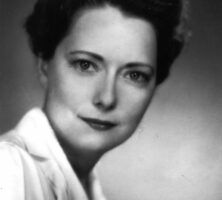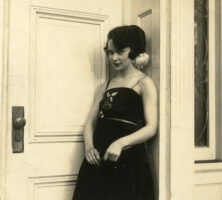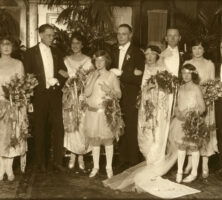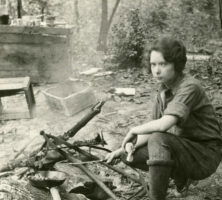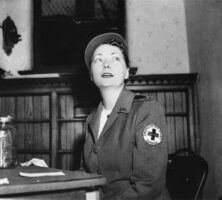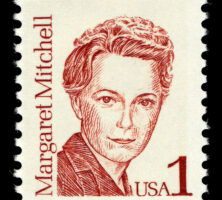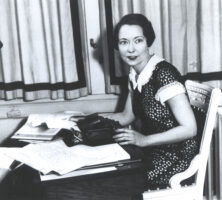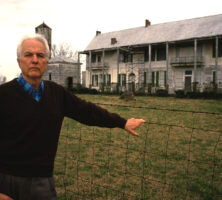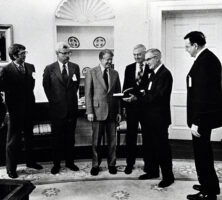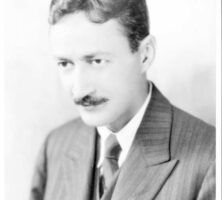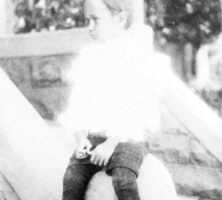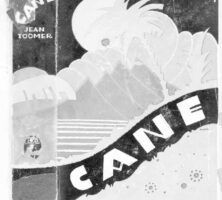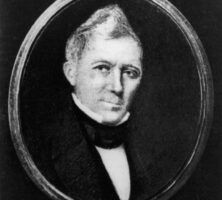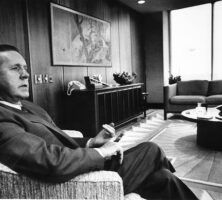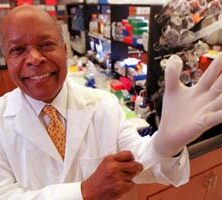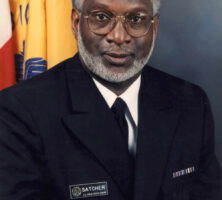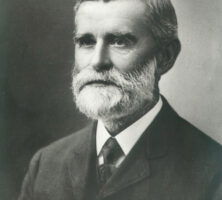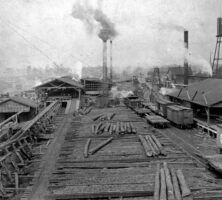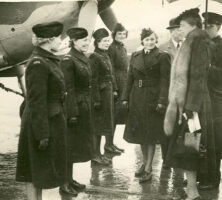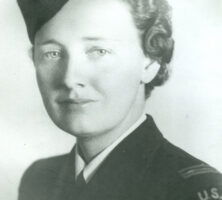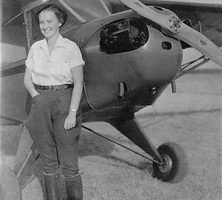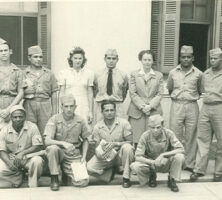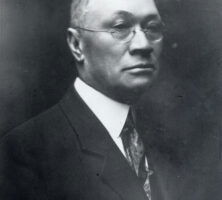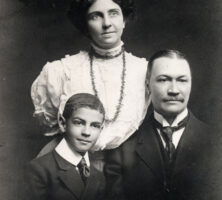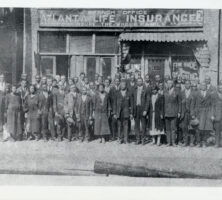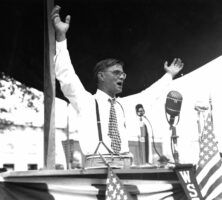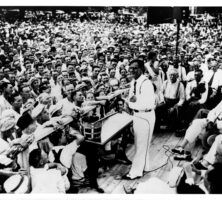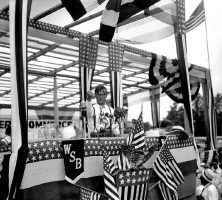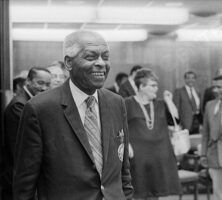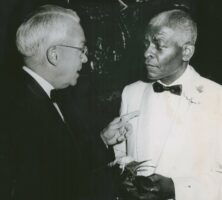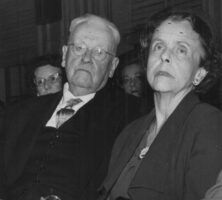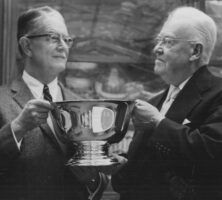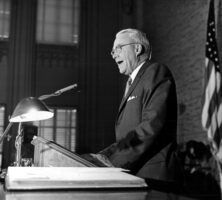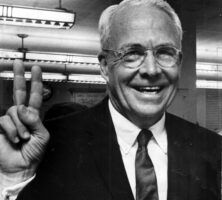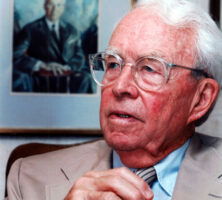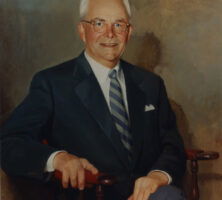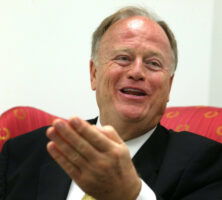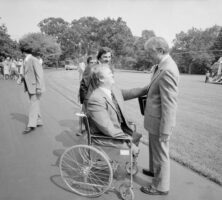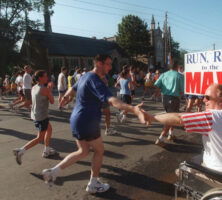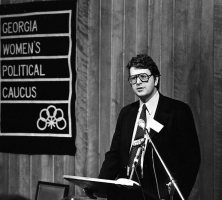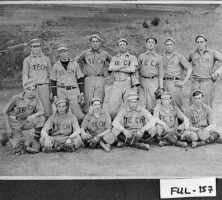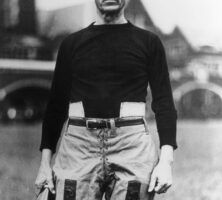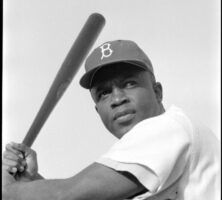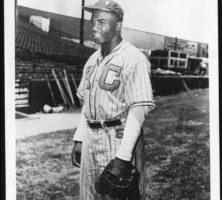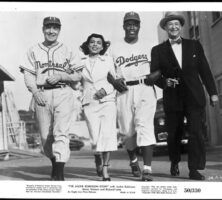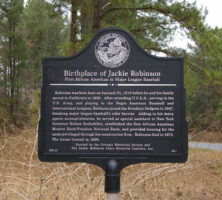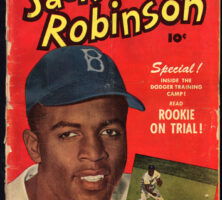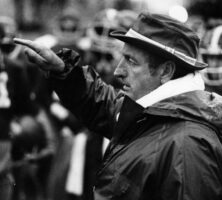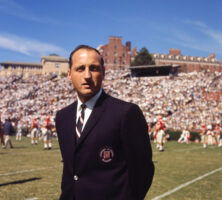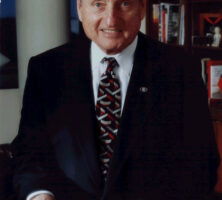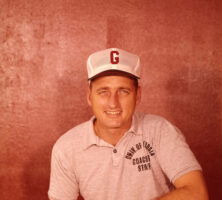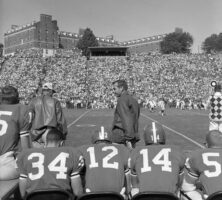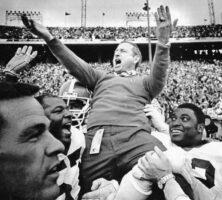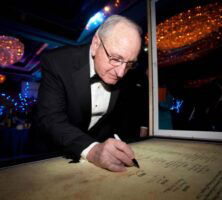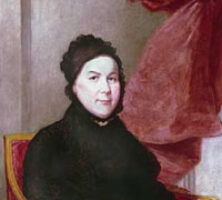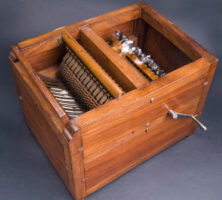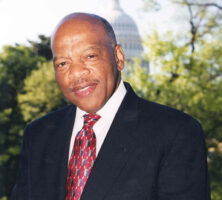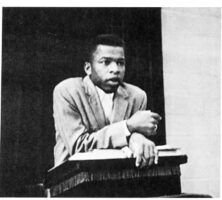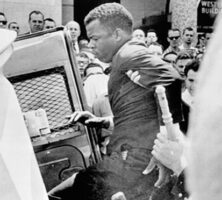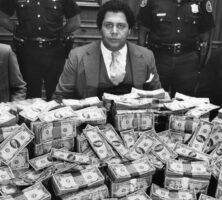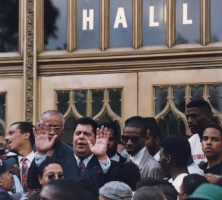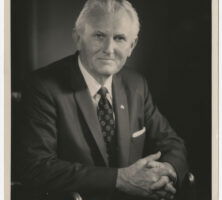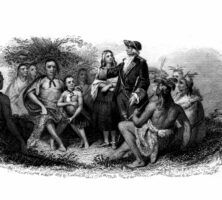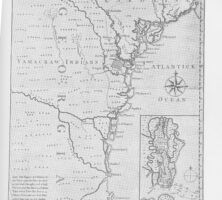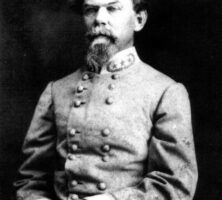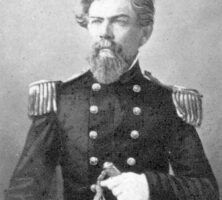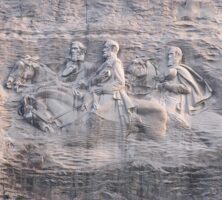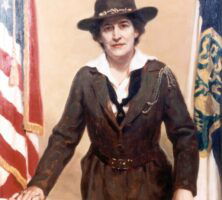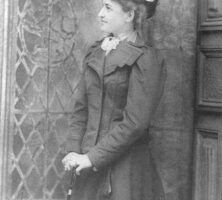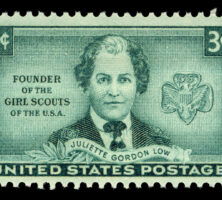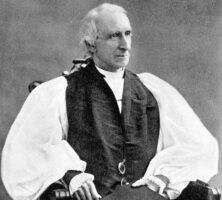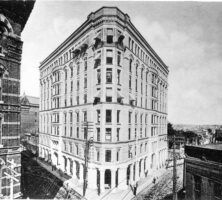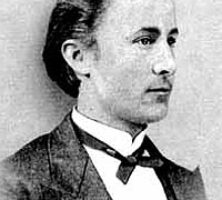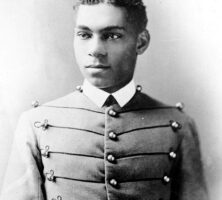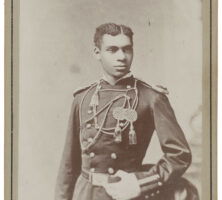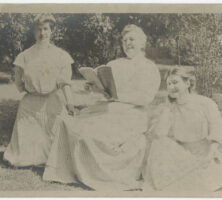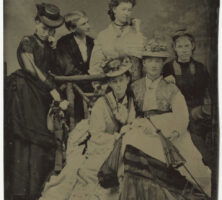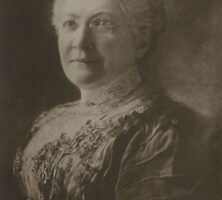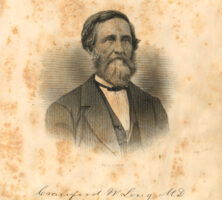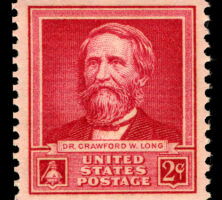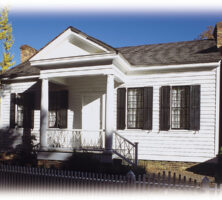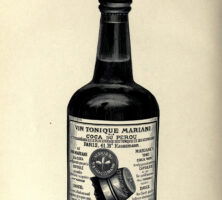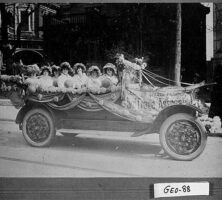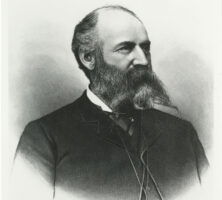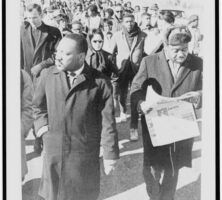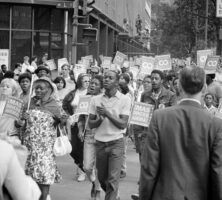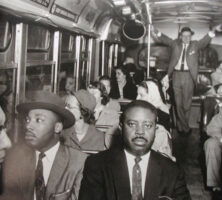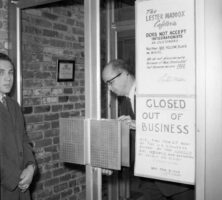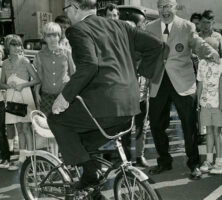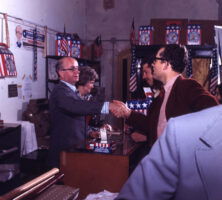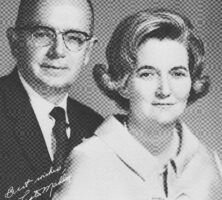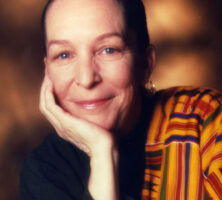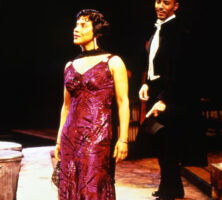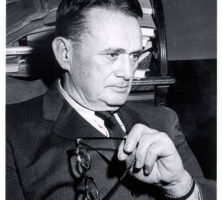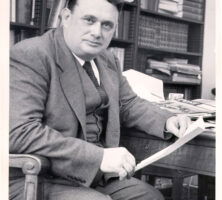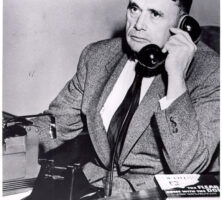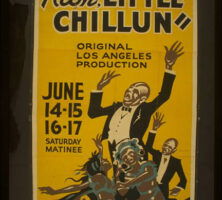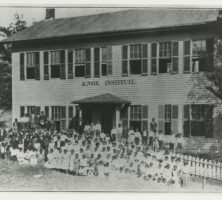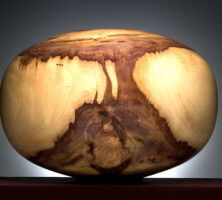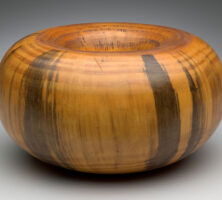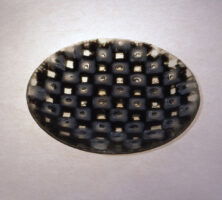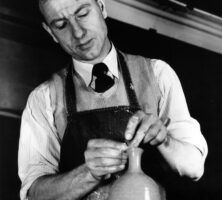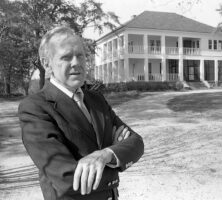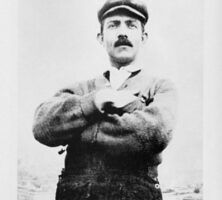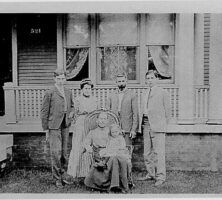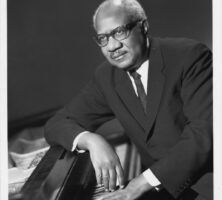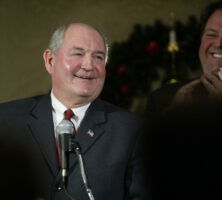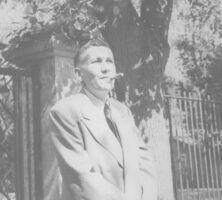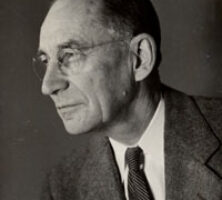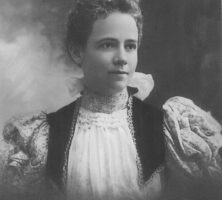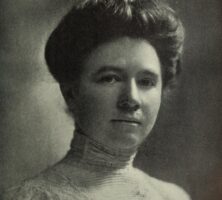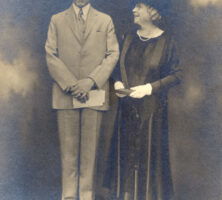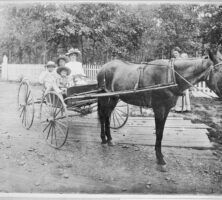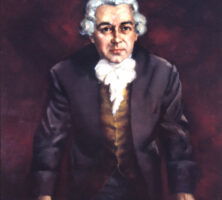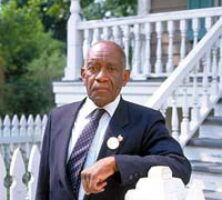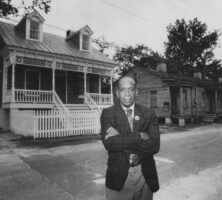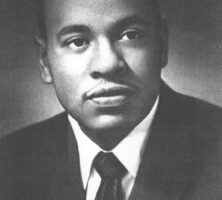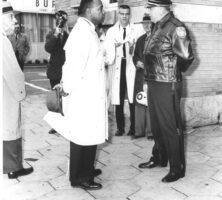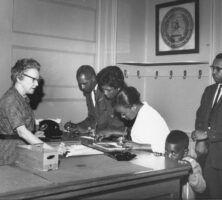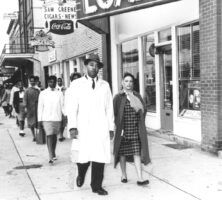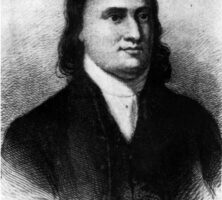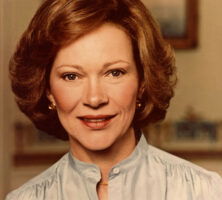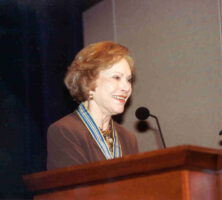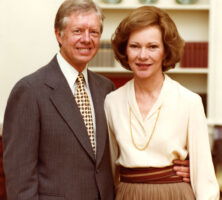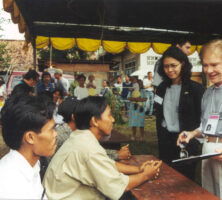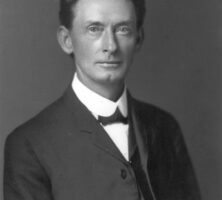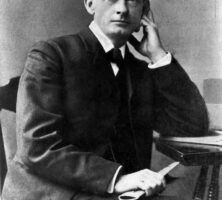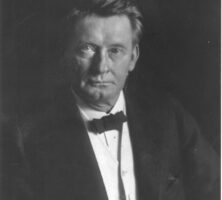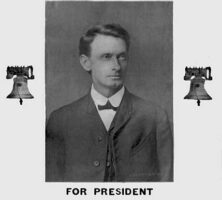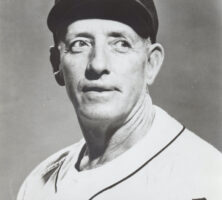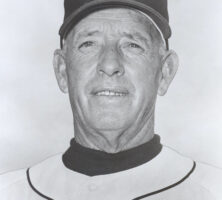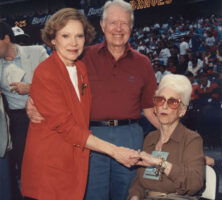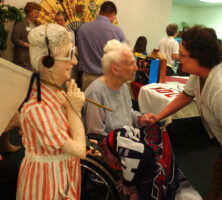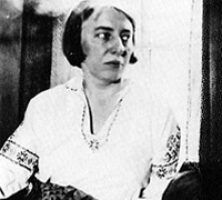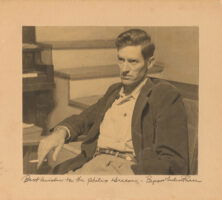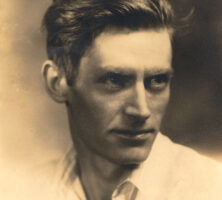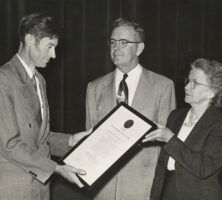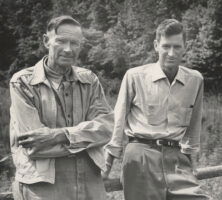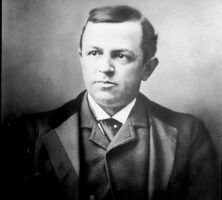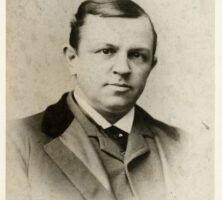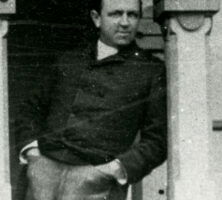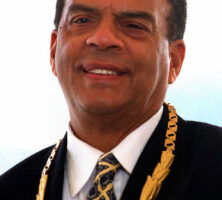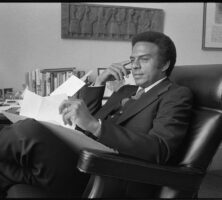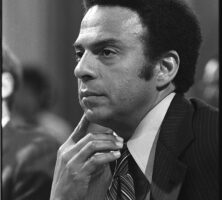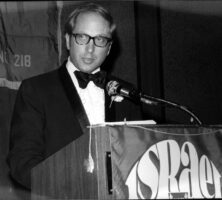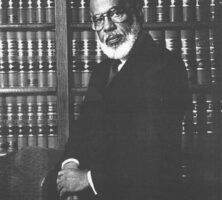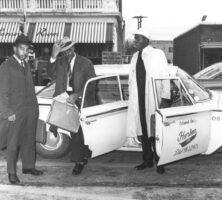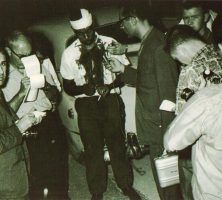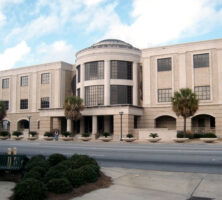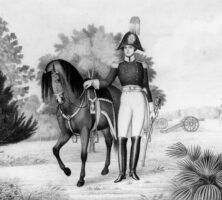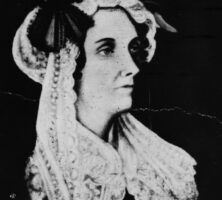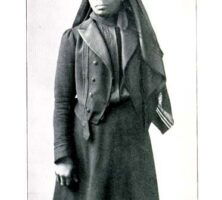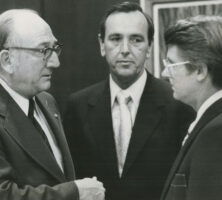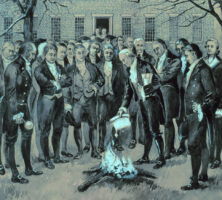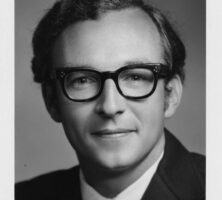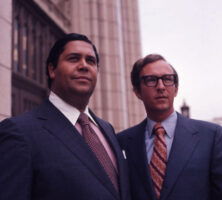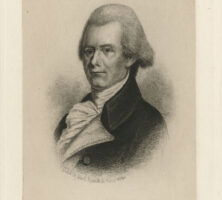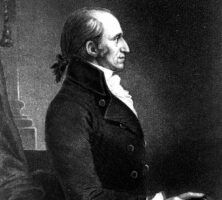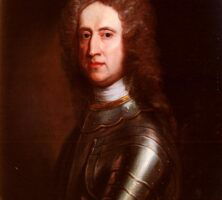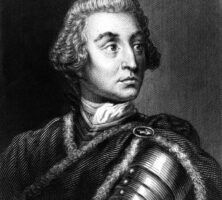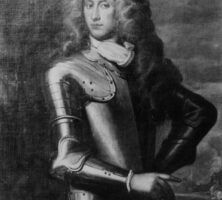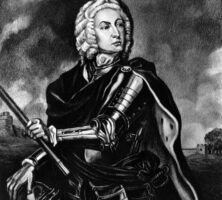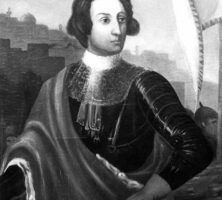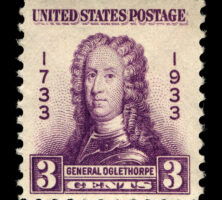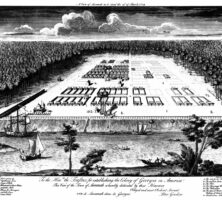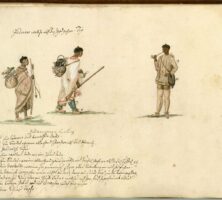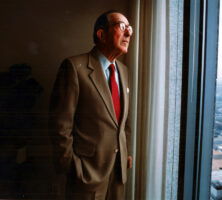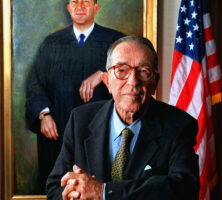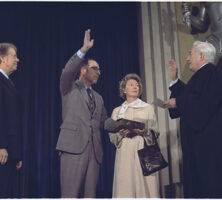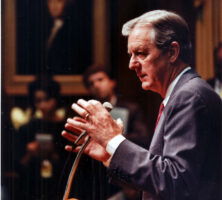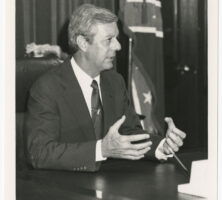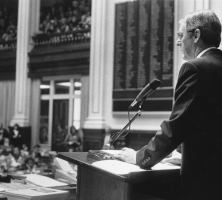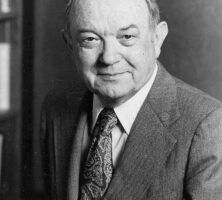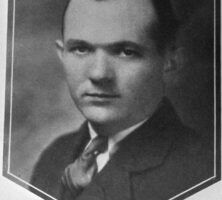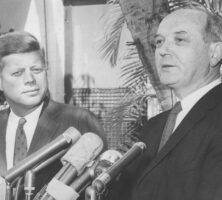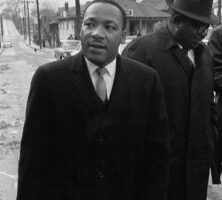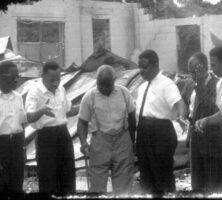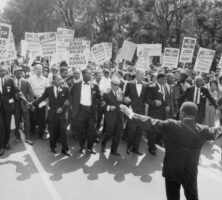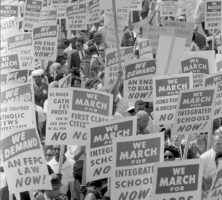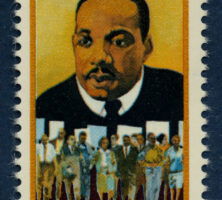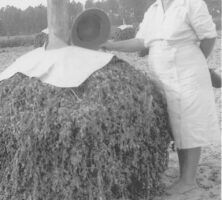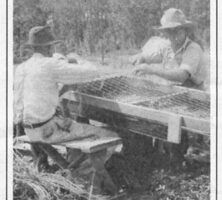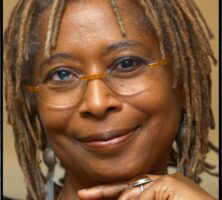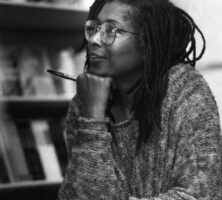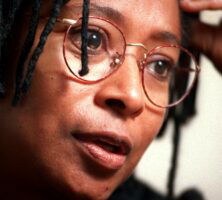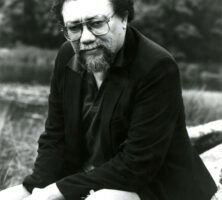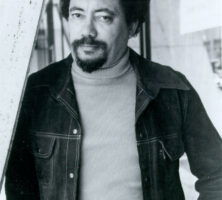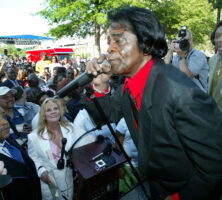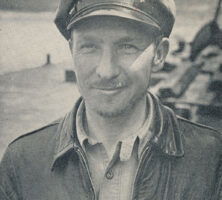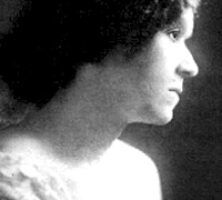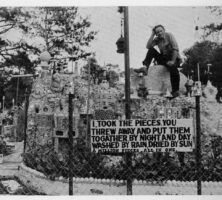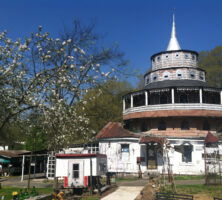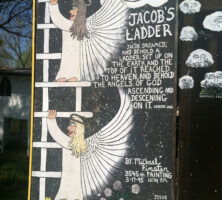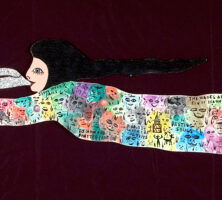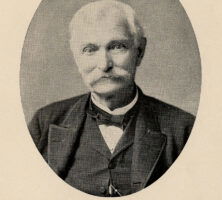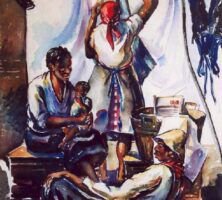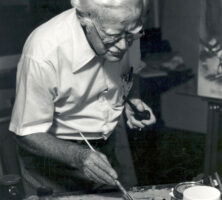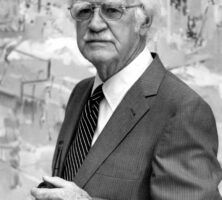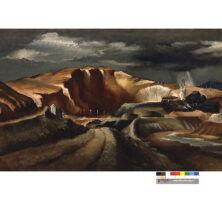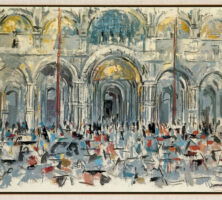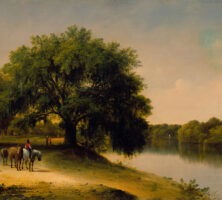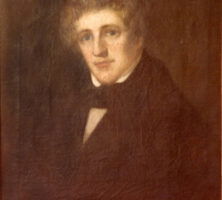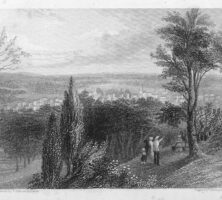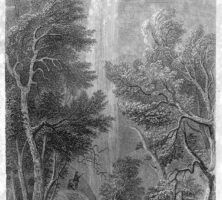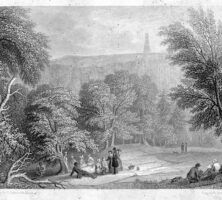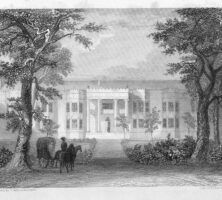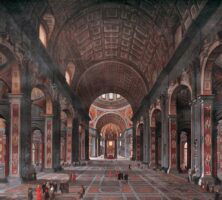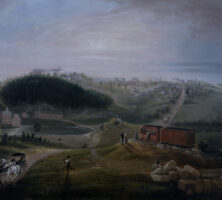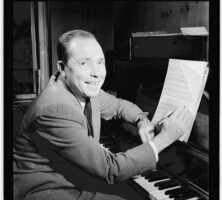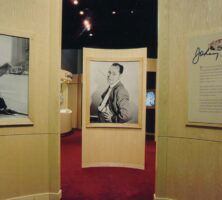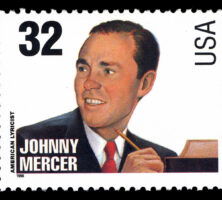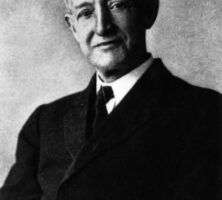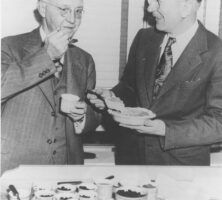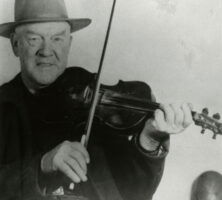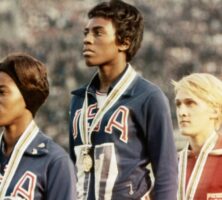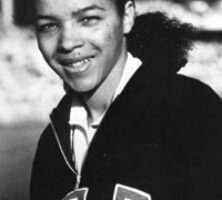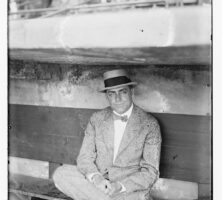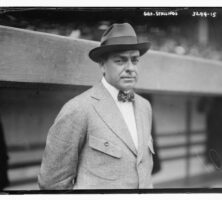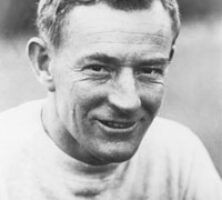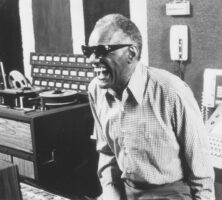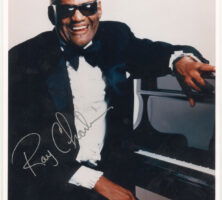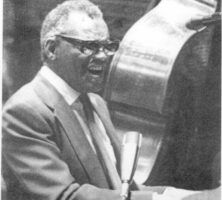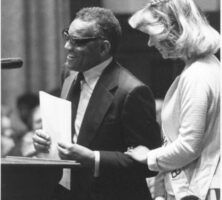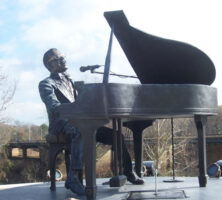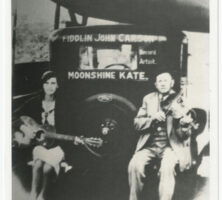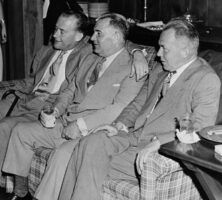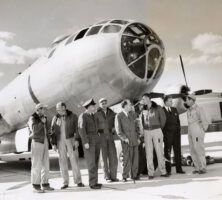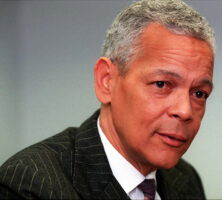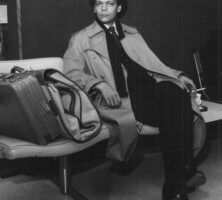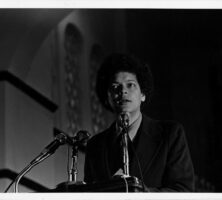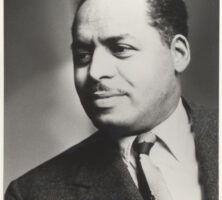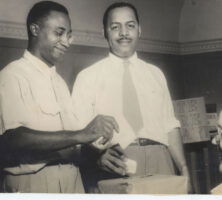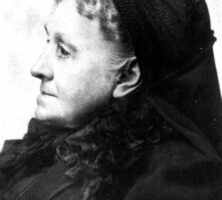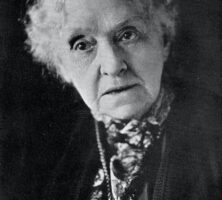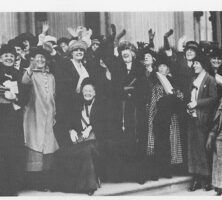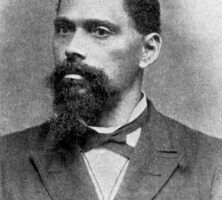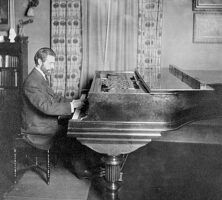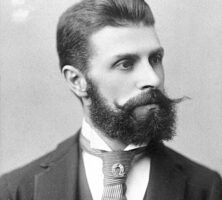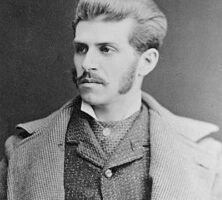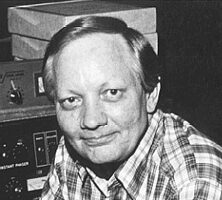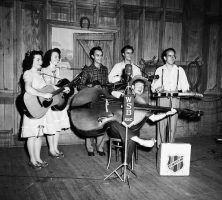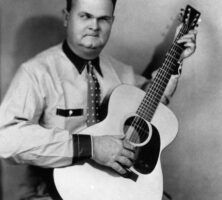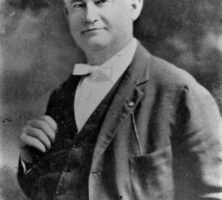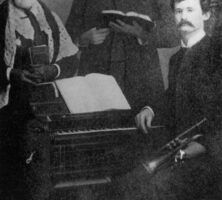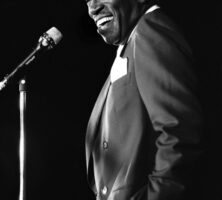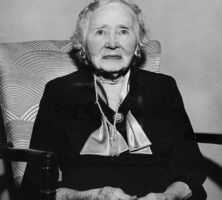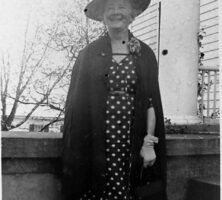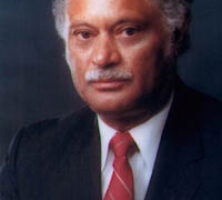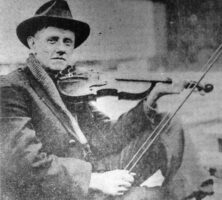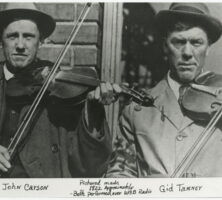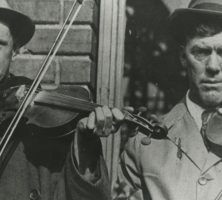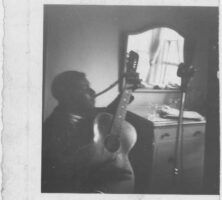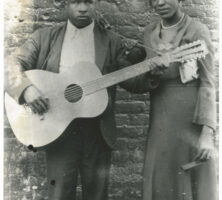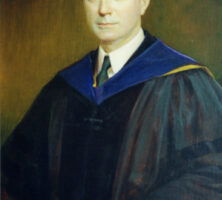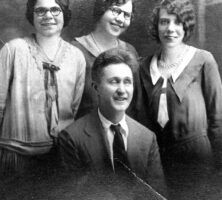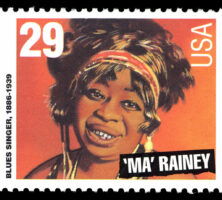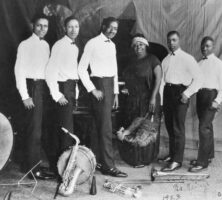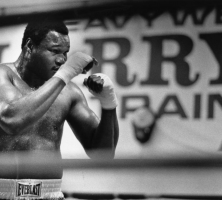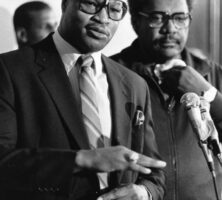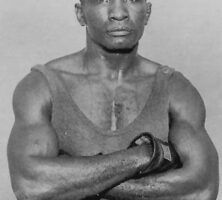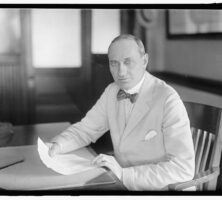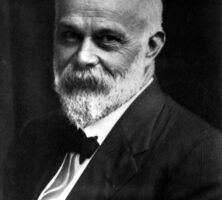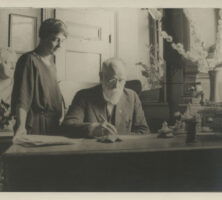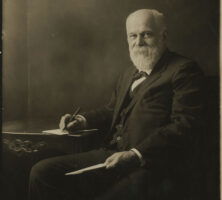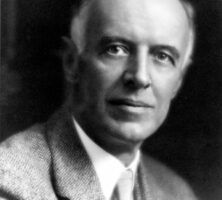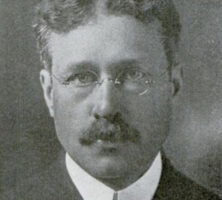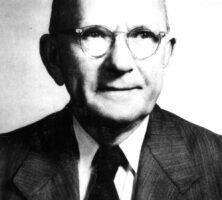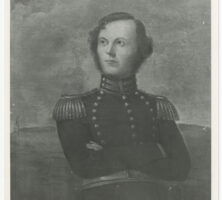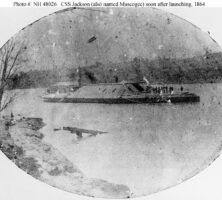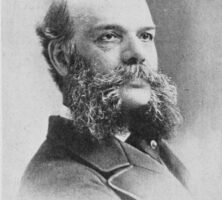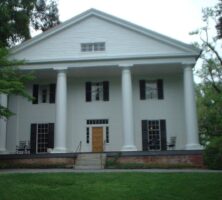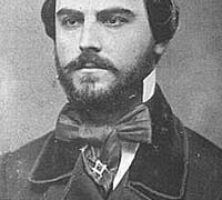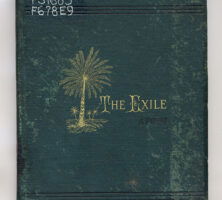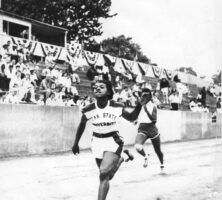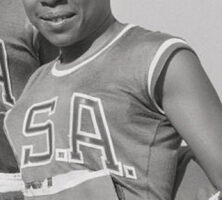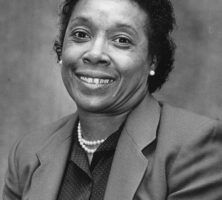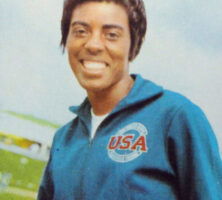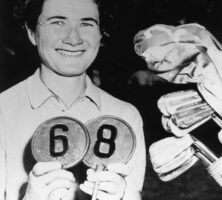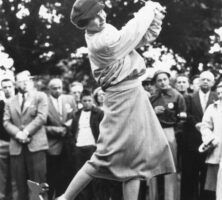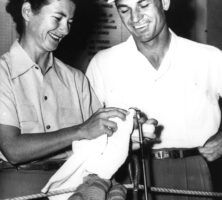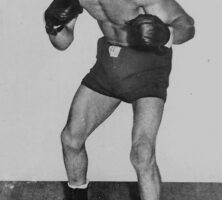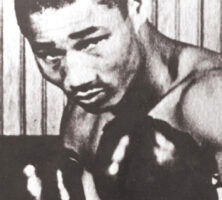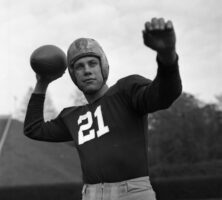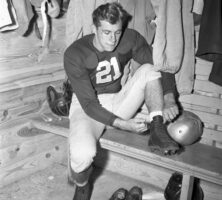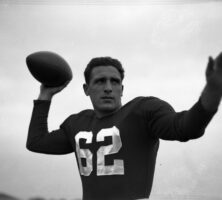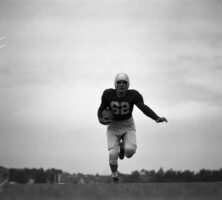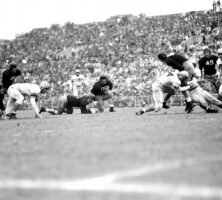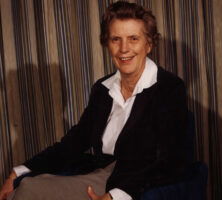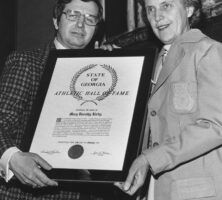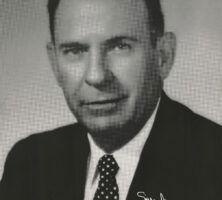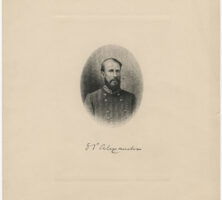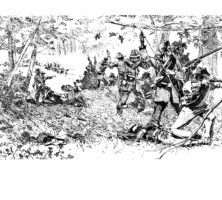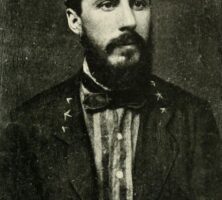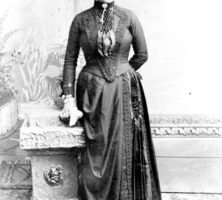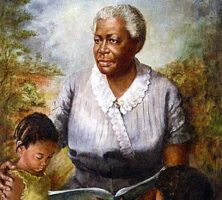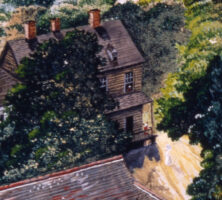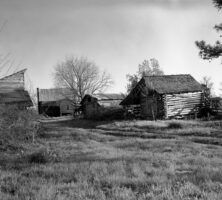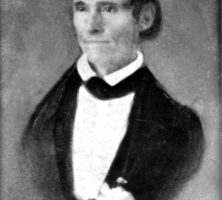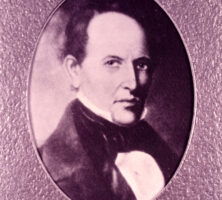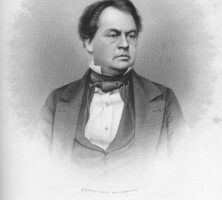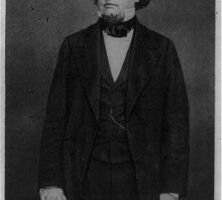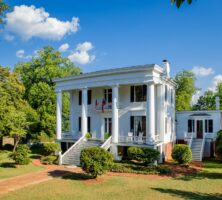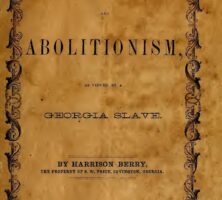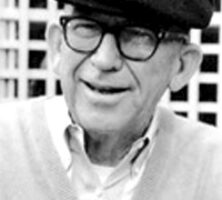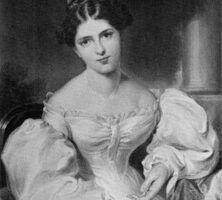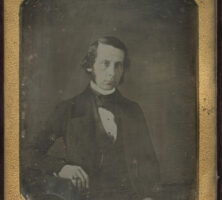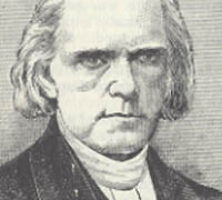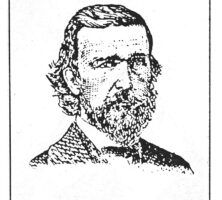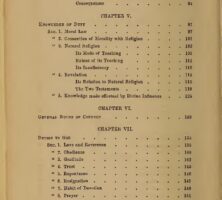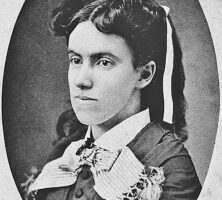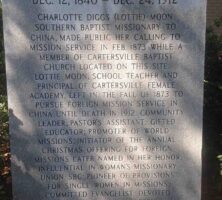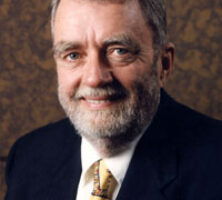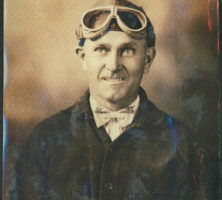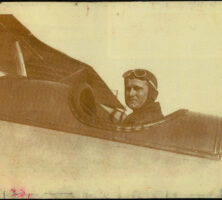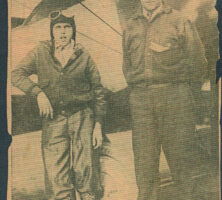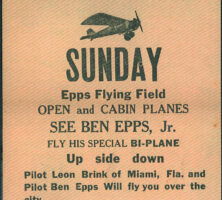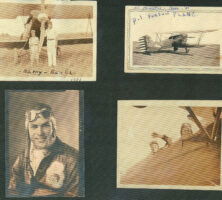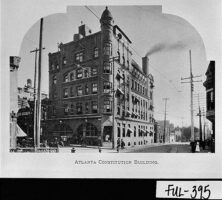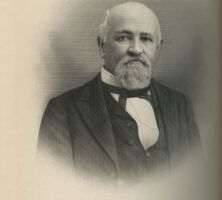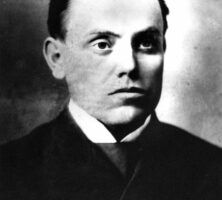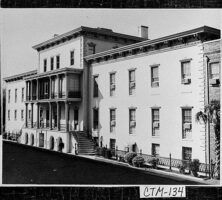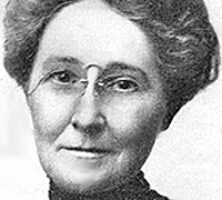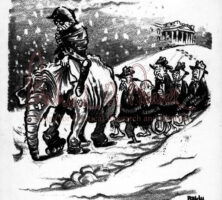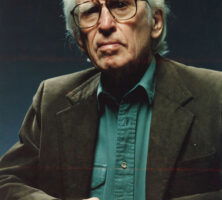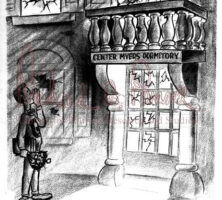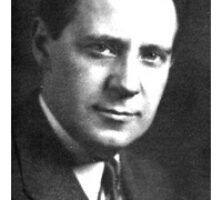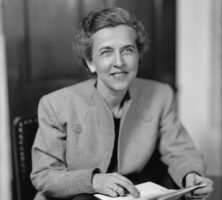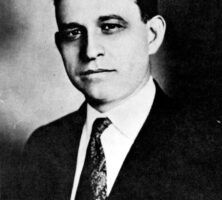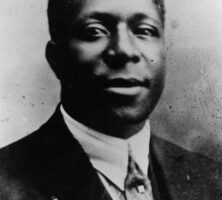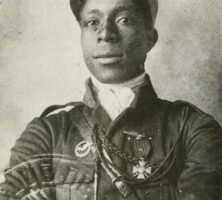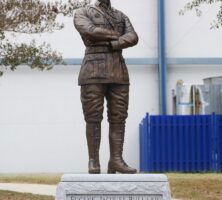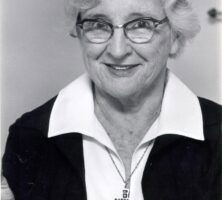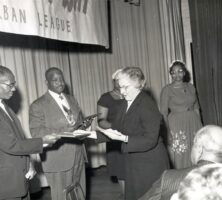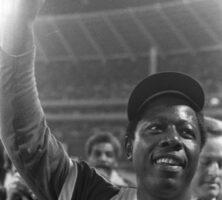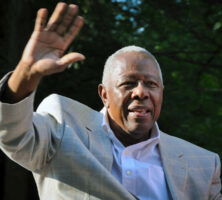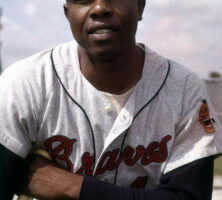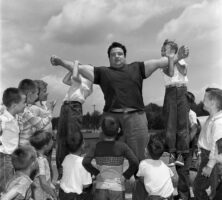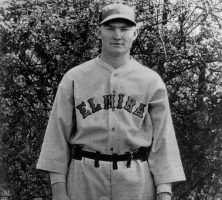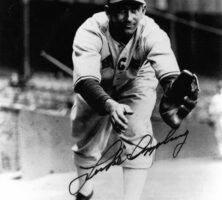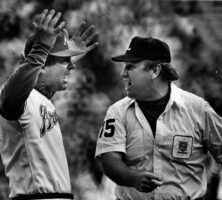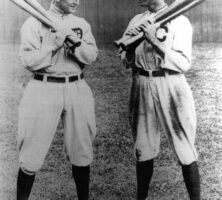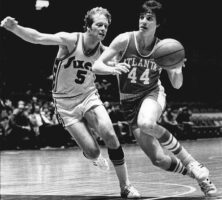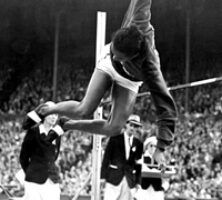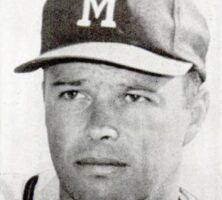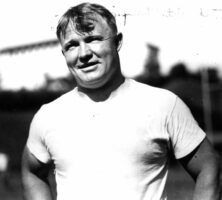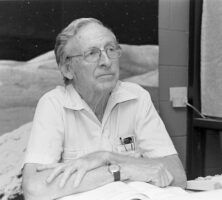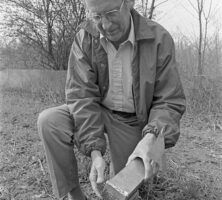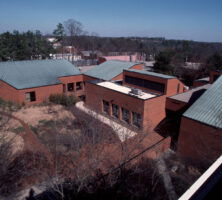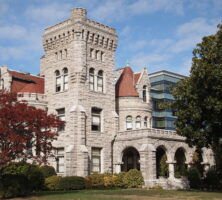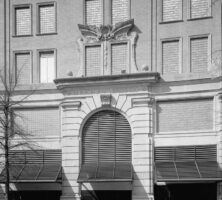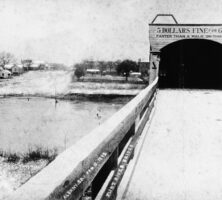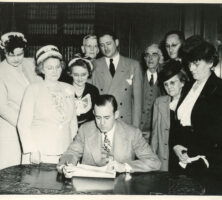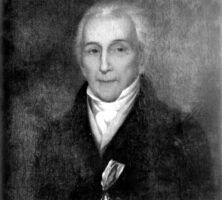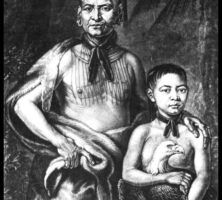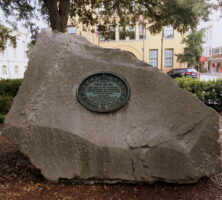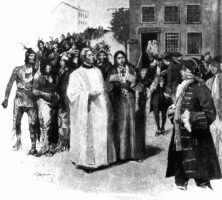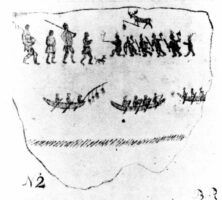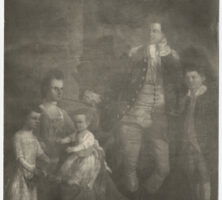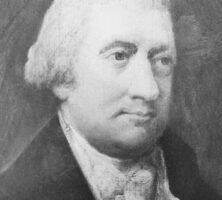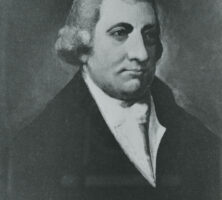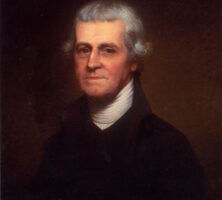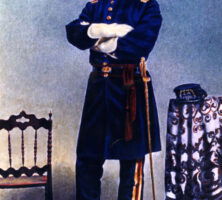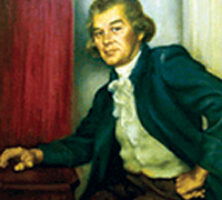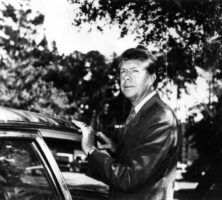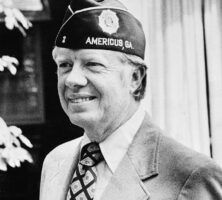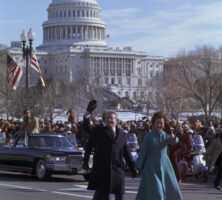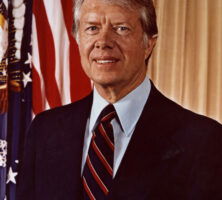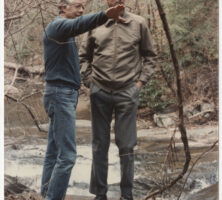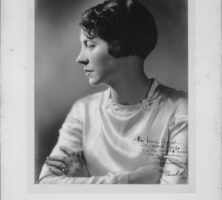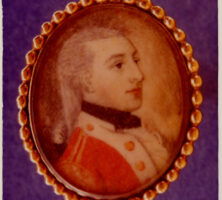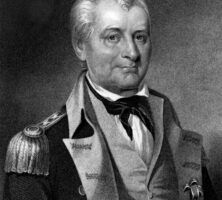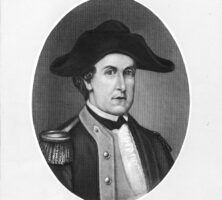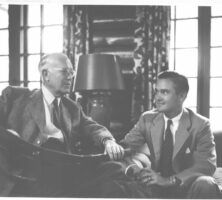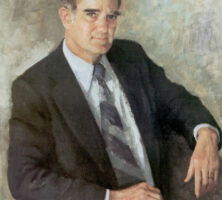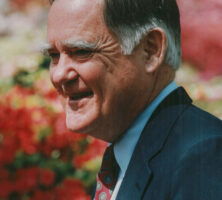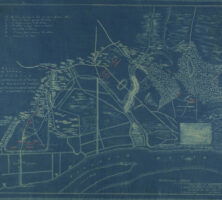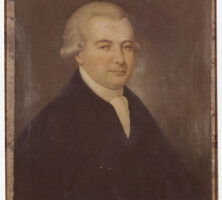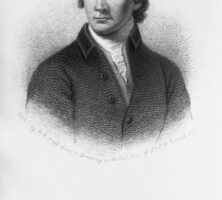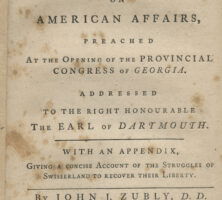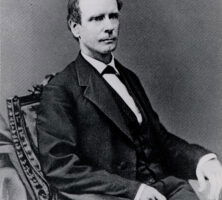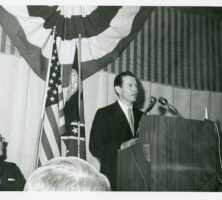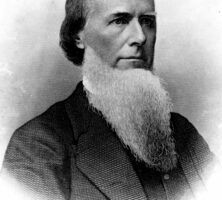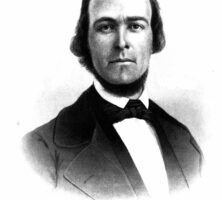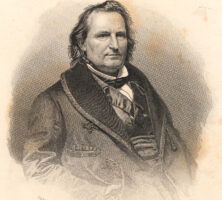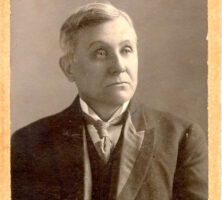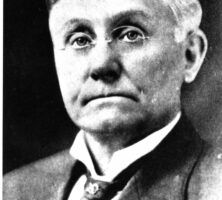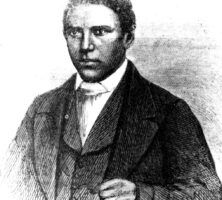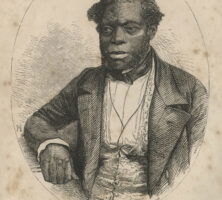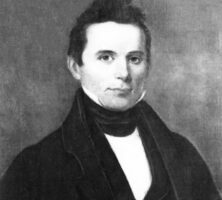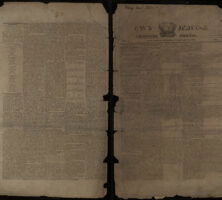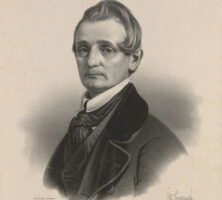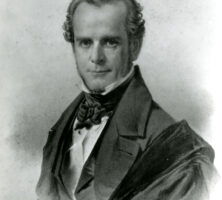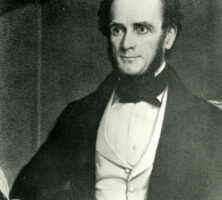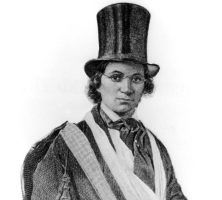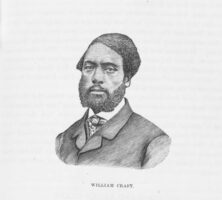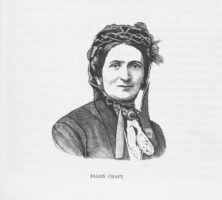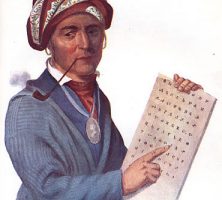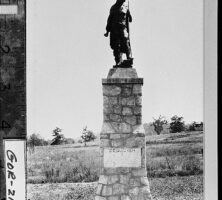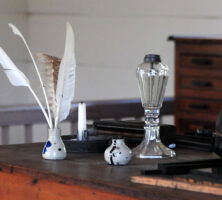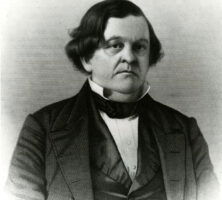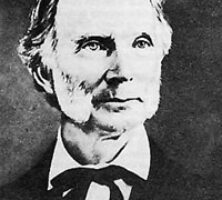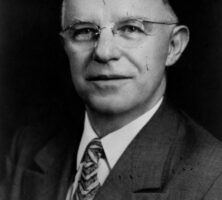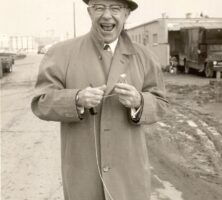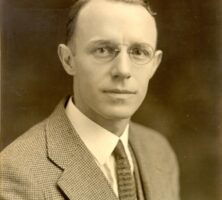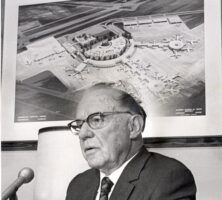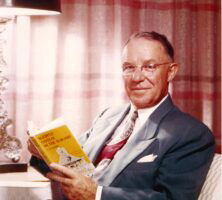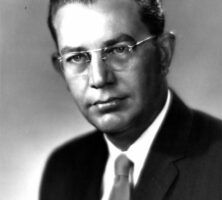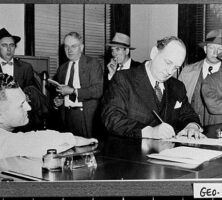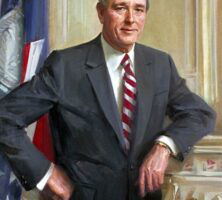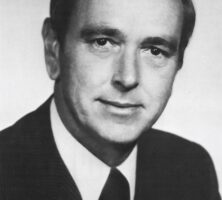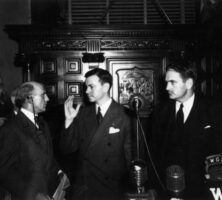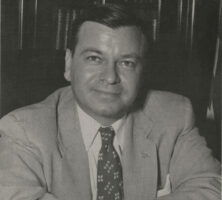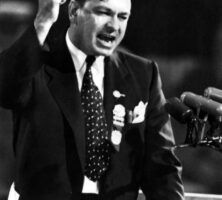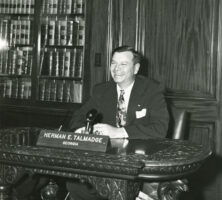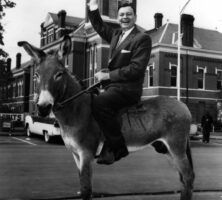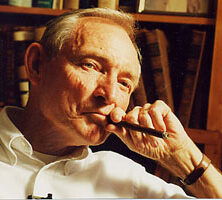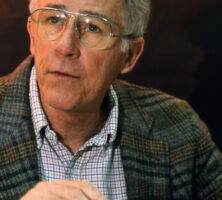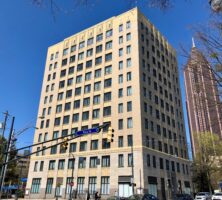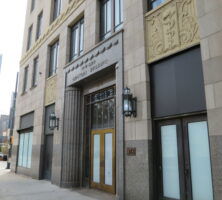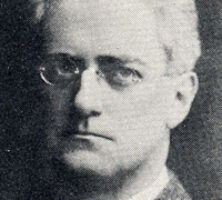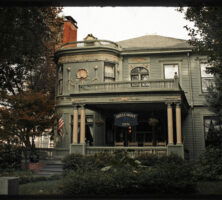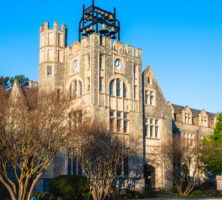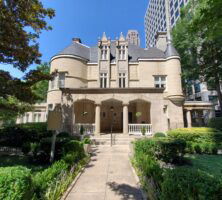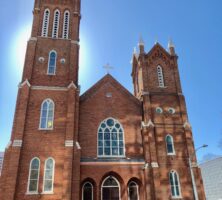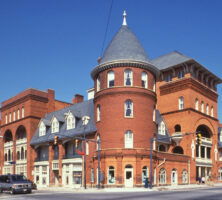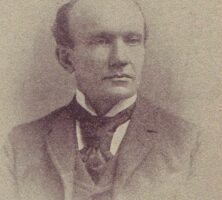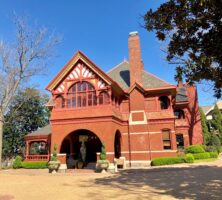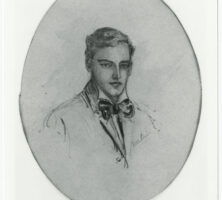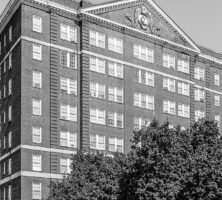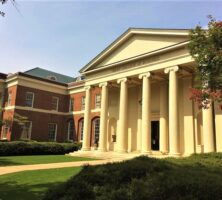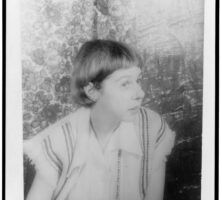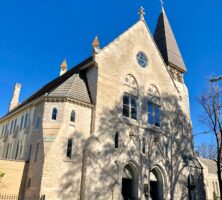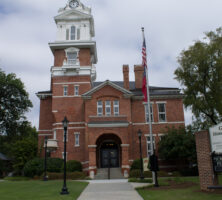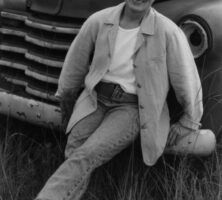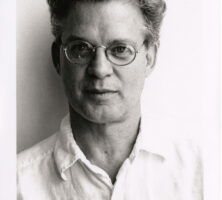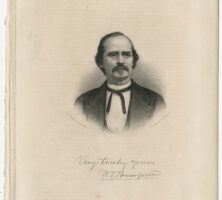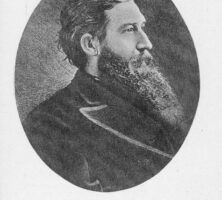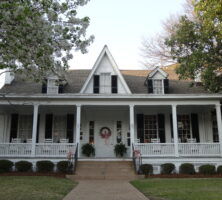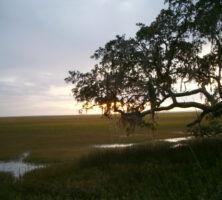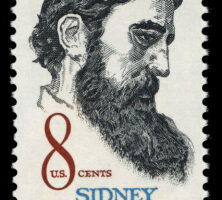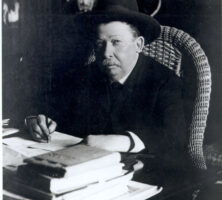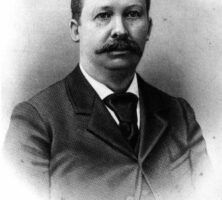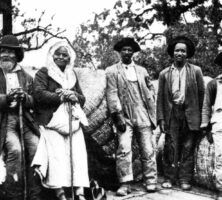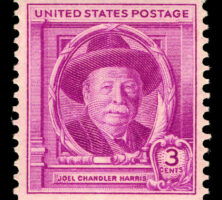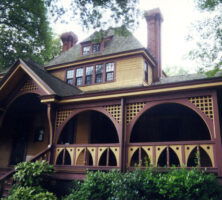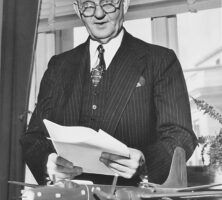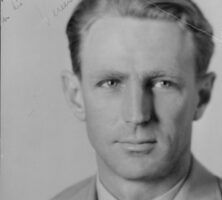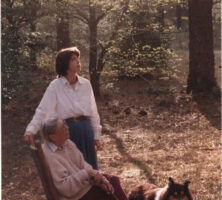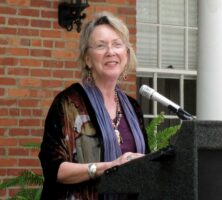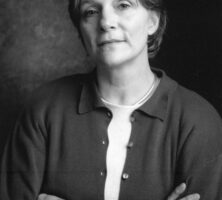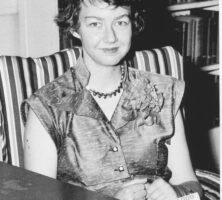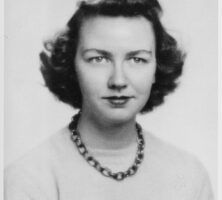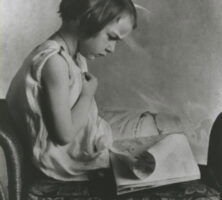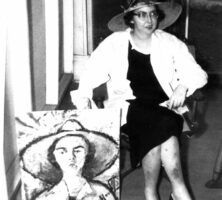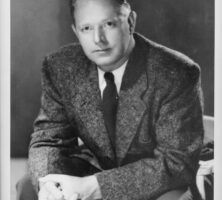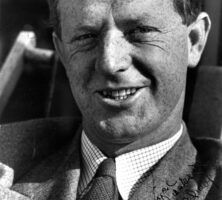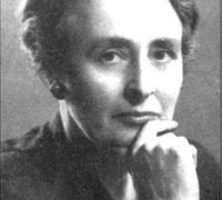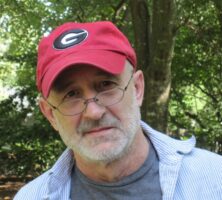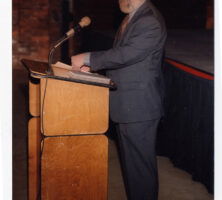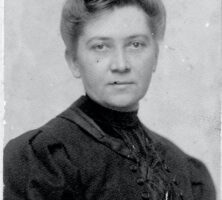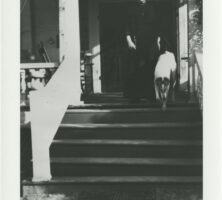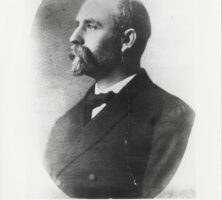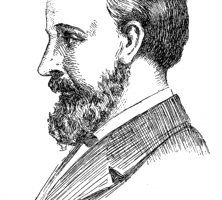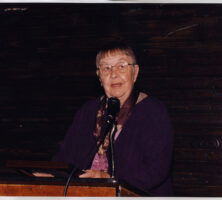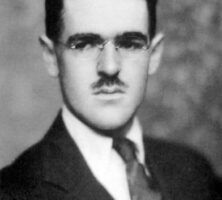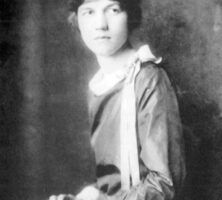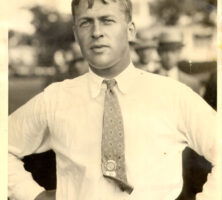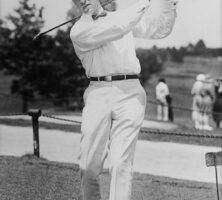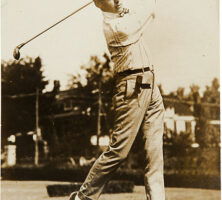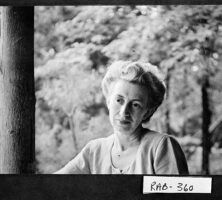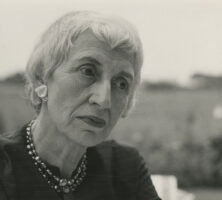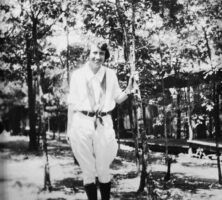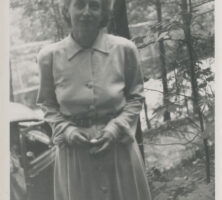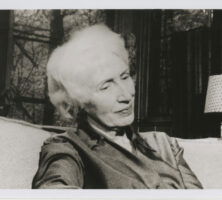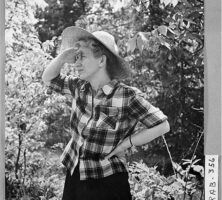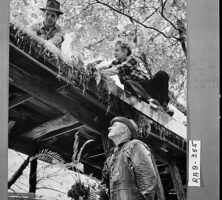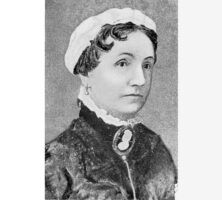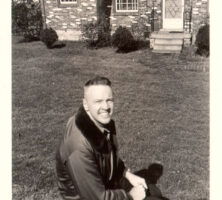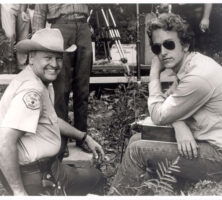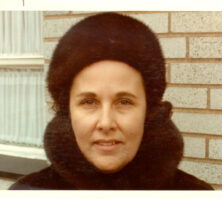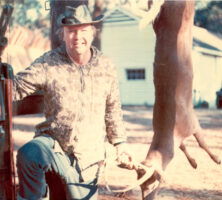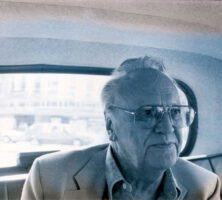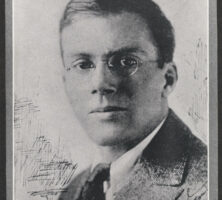The New Georgia Encyclopedia is supported by funding from A More Perfect Union, a special initiative of the National Endowment for the Humanities.
Jericho Brown is an award-winning poet and creator of the “Duplex” form. In 2024 he won a coveted “genius grant” from the MacArthur Foundation.
John D. and Catherine T. MacArthur Foundation
The New Georgia Encyclopedia does not hold the copyright for this media resource and can neither grant nor deny permission to republish or reproduce the image online or in print. All requests for permission to publish or reproduce the resource must be submitted to the rights holder.
Jericho Brown's third collection, The Tradition (2019), finds the poet in full bloom as he works with existing and new forms to examine cycles of violence and terror, love and loss. The collection earned Brown a Pulitzer Prize in 2020.
The New Georgia Encyclopedia does not hold the copyright for this media resource and can neither grant nor deny permission to republish or reproduce the image online or in print. All requests for permission to publish or reproduce the resource must be submitted to the rights holder.
A renowned educator and social reformer, Judia Jackson Harris (center) was instrumental in the creation of both the Mutual Benefit Association and the Model and Training School in Clarke County.
Courtesy of Hargrett Rare Book and Manuscript Library, University of Georgia Libraries, James Reap Collection.
The New Georgia Encyclopedia does not hold the copyright for this media resource and can neither grant nor deny permission to republish or reproduce the image online or in print. Requests for permission to publish or reproduce the resource should be submitted to the Hargrett Manuscript and Rare Book Library at the University of Georgia.
Judia Jackson Harris opened the Model and Training School in 1903. The first of its kind in the South, the school combined a model curriculum with a teacher training institute.
From Special Collections, University of Virginia Library, Jackson Davis Collection of African American Photographs, #uva-lib-370464.
The New Georgia Encyclopedia does not hold the copyright for this media resource and can neither grant nor deny permission to republish or reproduce the image online or in print. All requests for permission to publish or reproduce the resource must be submitted to the rights holder.
Established in 1903, Clarke County's Model and Training School reopened in 1926 following a devastating fire. The new schoolhouse was constructed with support from the Rosenwald Foundation. The school closed in 1956 and was placed on Historic Athens' "places in peril" in 2020.
Courtesy of Jane McPherson
The New Georgia Encyclopedia does not hold the copyright for this media resource and can neither grant nor deny permission to republish or reproduce the image online or in print. All requests for permission to publish or reproduce the resource must be submitted to the rights holder.
RuPaul Andre Charles was born to Ernestine “Toni” Fontenette and Irving Charles in San Diego, California, on November 17, 1960. His parents, who relocated from the South during the Great Migration, named him after roux, a mixture of flour and fat common in Creole cooking.
Courtesy of Paula Gately Tillman
The New Georgia Encyclopedia does not hold the copyright for this media resource and can neither grant nor deny permission to republish or reproduce the image online or in print. All requests for permission to publish or reproduce the resource must be submitted to the rights holder.
In 1996 RuPaul became the first drag queen and the first openly gay person to host a national television show with the debut of The RuPaul Show on VH1. The show that launched RuPaul into superstardom, RuPaul’s Drag Race, aired its first episode in 2009. The show’s popularity has helped destigmatize the LGBTQ+ community and provided a platform for gay people to publicly discuss experiences of conversion therapy, becoming HIV positive, and coming out to their families and loved ones, among other important issues.
Courtesy of Paula Gately Tillman
The New Georgia Encyclopedia does not hold the copyright for this media resource and can neither grant nor deny permission to republish or reproduce the image online or in print. All requests for permission to publish or reproduce the resource must be submitted to the rights holder.
The television version of The American Music Show debuted on Atlanta’s People TV cable station in early 1981. Dick Richards and James Bond co-hosted, with camerawork and production by Potsy Duncan. When Bond left the show in the early 1980s, Potsy Duncan took over as co-host alongside Richards, while Bud “Beebo” Lowry ran the camera and simultaneously co-hosted, made visible on a monitor between Richards and Duncan.
Courtesy of Paula Gately Tillman
The New Georgia Encyclopedia does not hold the copyright for this media resource and can neither grant nor deny permission to republish or reproduce the image online or in print. All requests for permission to publish or reproduce the resource must be submitted to the rights holder.
Known as the “world’s most famous drag queen,” RuPaul George is a prominent entertainer and television personality. Though he’s most famous for hosting the award-winning RuPaul’s Drag Race, his career began with public access television and club performances in 1980s Atlanta.
Courtesy of Paula Gately Tillman
The New Georgia Encyclopedia does not hold the copyright for this media resource and can neither grant nor deny permission to republish or reproduce the image online or in print. All requests for permission to publish or reproduce the resource must be submitted to the rights holder.
A scenic road cuts through the wilds of Sapelo Island. The barrier island is home to abundant plant and animal life.
Image from Kevin
The New Georgia Encyclopedia does not hold the copyright for this media resource and can neither grant nor deny permission to republish or reproduce the image online or in print. All requests for permission to publish or reproduce the resource must be submitted to the rights holder.
Cornelia Bailey gathers silver grass and life everlasting, an herb used by her grandfather to make medicinal tea, on Sapelo Island. Bailey received a 2004 Governor's Award in the Humanities for her efforts to preserve the island's Geechee culture.
Photograph by Richard Cheppy. Courtesy of Cornelia Bailey
The New Georgia Encyclopedia does not hold the copyright for this media resource and can neither grant nor deny permission to republish or reproduce the image online or in print. All requests for permission to publish or reproduce the resource must be submitted to the rights holder.
Bilali Mohammed, an enslaved African who lived openly as a Muslim on Sapelo Island, has been a subject of scholarly and popular interest since the nineteenth century. His experience is reflected in the “Bilali Document,” a brief manuscript he wrote concerning Islamic regulations.
Courtesy of Hargrett Rare Book and Manuscript Library, University of Georgia Libraries, Francis R. Goulding papers.
The New Georgia Encyclopedia does not hold the copyright for this media resource and can neither grant nor deny permission to republish or reproduce the image online or in print. Requests for permission to publish or reproduce the resource should be submitted to the Hargrett Manuscript and Rare Book Library at the University of Georgia.
Thomas Spalding, a prominent planter and slaveholder, was an agricultural innovator, amateur architect, and businessman in McIntosh County. Spalding relied on enslaved labor to clear and develop Sapelo Island, which he owned.
The New Georgia Encyclopedia does not hold the copyright for this media resource and can neither grant nor deny permission to republish or reproduce the image online or in print. Requests for permission to publish or reproduce the resource should be submitted to the Hargrett Manuscript and Rare Book Library at the University of Georgia.
John C. Inscoe is University Professor Emeritus and the Albert B. Saye Professor of History, Emeritus, in the Department of History at the University of Georgia. He has authored several books on Appalachian and southern history and is the founding editor of the New Georgia Encyclopedia.
From the Department of History at the University of Georgia
The New Georgia Encyclopedia does not hold the copyright for this media resource and can neither grant nor deny permission to republish or reproduce the image online or in print. All requests for permission to publish or reproduce the resource must be submitted to the rights holder.
John C. Inscoe, Professor Emeritus at the University of Georgia, taught popular courses including American Lives, Multicultural Georgia, and Appalachia on Film. Those courses later influenced his scholarly works, including Movie-Made Appalachia: History, Hollywood, and the Highland South (2020).
The New Georgia Encyclopedia does not hold the copyright for this media resource and can neither grant nor deny permission to republish or reproduce the image online or in print. All requests for permission to publish or reproduce the resource must be submitted to the rights holder.
Leonard Matlovich received a Bronze Star in 1966 for his service in the Vietnam War. Born in Savannah, he was one of the earliest activists to challenge the status of gays and lesbians in the U.S. military.
Courtesy of Hormel LGBTQIA Center, San Francisco Public Library, Cliff Anchor Papers (GLC 49), #GLC-0013.
The New Georgia Encyclopedia does not hold the copyright for this media resource and can neither grant nor deny permission to republish or reproduce the image online or in print. All requests for permission to publish or reproduce the resource must be submitted to the rights holder.
Graham Jackson Sr. began his musical career with the jazz group the Seminole Syncopaters in Atlanta. He performed for Franklin D. Roosevelt over twenty-four times during his career, and at the president's funeral in 1945.
Courtesy of Auburn Avenue Research Library, Graham Washington Jackson, Sr. papers.
The New Georgia Encyclopedia does not hold the copyright for this media resource and can neither grant nor deny permission to republish or reproduce the image online or in print. All requests for permission to publish or reproduce the resource must be submitted to the rights holder.
As part of a campaign to expand the roles for African Americans during World War II, Jackson enlisted and served in the Navy from 1942 until the war's end, in 1945.
Courtesy of Auburn Avenue Research Library, Graham Washington Jackson, Sr. papers.
The New Georgia Encyclopedia does not hold the copyright for this media resource and can neither grant nor deny permission to republish or reproduce the image online or in print. All requests for permission to publish or reproduce the resource must be submitted to the rights holder.
Known as "The Ambassador of Good Will," Graham Jackson Sr. was invited to perform for U.S. presidents throughout his career. Jimmy Carter was the last president for whom Jackson performed.
Courtesy of Auburn Avenue Research Library, Graham Washington Jackson, Sr. papers.
The New Georgia Encyclopedia does not hold the copyright for this media resource and can neither grant nor deny permission to republish or reproduce the image online or in print. All requests for permission to publish or reproduce the resource must be submitted to the rights holder.
Graham Jackson Sr. performed nightly at Johnny Reb's Dixieland canteen and restaurant in Atlanta until 1967.
Courtesy of Special Collections & Archives, Georgia State University Library, Tracy O'Neal Photographic Collection, #N10-23_a.
The New Georgia Encyclopedia does not hold the copyright for this media resource and can neither grant nor deny permission to republish or reproduce the image online or in print. Requests for permission to publish or reproduce the resource should be submitted to Special Collections and Archives at Georgia State University.
The Joshua Hill House, one of the many antebellum homes in Madison, was built around 1840 for U.S. congressman Joshua Hill, who may have convinced Union general William T. Sherman to spare the town during his March to the Sea. Today it is part of the Madison Historic District.
Courtesy of Georgia Department of Economic Development.
The New Georgia Encyclopedia does not hold the copyright for this media resource and can neither grant nor deny permission to republish or reproduce the image online or in print. Requests for permission to publish or reproduce the resource may need to be submitted to the Georgia Department of Economic Development.
Frankie Welch wearing a Cherokee Alphabet dress in front of Duvall House, Alexandria, Virginia, 1968.
Courtesy of Hargrett Rare Book and Manuscript Library, University of Georgia Libraries, Collection of Frankie Welch, Peggy Welch Williams, and Genie Welch Leisure.
The New Georgia Encyclopedia does not hold the copyright for this media resource and can neither grant nor deny permission to republish or reproduce the image online or in print. Requests for permission to publish or reproduce the resource should be submitted to the Hargrett Manuscript and Rare Book Library at the University of Georgia.
Cherokee Alphabet scarf, 1967, silk.
Courtesy of Hargrett Rare Book and Manuscript Library, University of Georgia Libraries, Frankie Welch Textile Collection.
The New Georgia Encyclopedia does not hold the copyright for this media resource and can neither grant nor deny permission to republish or reproduce the image online or in print. Requests for permission to publish or reproduce the resource should be submitted to the Hargrett Manuscript and Rare Book Library at the University of Georgia.
Discover America scarf, ca. 1968, unidentified fabric.
Courtesy of Hargrett Rare Book and Manuscript Library, University of Georgia Libraries, Frankie Welch Textile Collection.
The New Georgia Encyclopedia does not hold the copyright for this media resource and can neither grant nor deny permission to republish or reproduce the image online or in print. Requests for permission to publish or reproduce the resource should be submitted to the Hargrett Manuscript and Rare Book Library at the University of Georgia.
Hubert H. Humphrey scarf, 1968, silk.
Courtesy of Hargrett Rare Book and Manuscript Library, University of Georgia Libraries, Frankie Welch Textile Collection.
The New Georgia Encyclopedia does not hold the copyright for this media resource and can neither grant nor deny permission to republish or reproduce the image online or in print. Requests for permission to publish or reproduce the resource should be submitted to the Hargrett Manuscript and Rare Book Library at the University of Georgia.
Hubert H. Humphrey dress, 1968.
Courtesy of Ashley Callahan
The New Georgia Encyclopedia does not hold the copyright for this media resource and can neither grant nor deny permission to republish or reproduce the image online or in print. All requests for permission to publish or reproduce the resource must be submitted to the rights holder.
Frankie flyer, ca. 1975.
Courtesy of Hargrett Rare Book and Manuscript Library, University of Georgia Libraries, Collection of Frankie Welch, Peggy Welch Williams, and Genie Welch Leisure.
The New Georgia Encyclopedia does not hold the copyright for this media resource and can neither grant nor deny permission to republish or reproduce the image online or in print. Requests for permission to publish or reproduce the resource should be submitted to the Hargrett Manuscript and Rare Book Library at the University of Georgia.
Basket Weave Frankie and Turtles Frankie, n.d.
Courtesy of Hargrett Rare Book and Manuscript Library, University of Georgia Libraries, Frankie Welch Textile Collection.
The New Georgia Encyclopedia does not hold the copyright for this media resource and can neither grant nor deny permission to republish or reproduce the image online or in print. Requests for permission to publish or reproduce the resource should be submitted to the Hargrett Manuscript and Rare Book Library at the University of Georgia.
Republican National Convention Frankie and pinafore, 1968.
Courtesy of Hargrett Rare Book and Manuscript Library, University of Georgia Libraries, (left) Frankie Welch Collection, Rome Area History Center and (right) Frankie Welch Textile Collection, Hargrett Rare Book and Manuscript Library, University of Georgia Libraries.
The New Georgia Encyclopedia does not hold the copyright for this media resource and can neither grant nor deny permission to republish or reproduce the image online or in print. Requests for permission to publish or reproduce the resource should be submitted to the Hargrett Manuscript and Rare Book Library at the University of Georgia.
Models wearing Clyde’s scarf and tie, ca. 1976.
Courtesy of Hargrett Rare Book and Manuscript Library, University of Georgia Libraries, Collection of Frankie Welch, Peggy Welch Williams, and Genie Welch Leisure.
The New Georgia Encyclopedia does not hold the copyright for this media resource and can neither grant nor deny permission to republish or reproduce the image online or in print. Requests for permission to publish or reproduce the resource should be submitted to the Hargrett Manuscript and Rare Book Library at the University of Georgia.
Fifty State Flowers scarf, 1970, cotton.
Courtesy of Hargrett Rare Book and Manuscript Library, University of Georgia Libraries, Collection of Frankie Welch, Peggy Welch Williams, and Genie Welch Leisure.
The New Georgia Encyclopedia does not hold the copyright for this media resource and can neither grant nor deny permission to republish or reproduce the image online or in print. Requests for permission to publish or reproduce the resource should be submitted to the Hargrett Manuscript and Rare Book Library at the University of Georgia.
National Cherry Blossom Festival, Washington, D.C., scarf, 1970, unidentified fabric.
Courtesy of Hargrett Rare Book and Manuscript Library, University of Georgia Libraries, Frankie Welch Collection, Rome Area History Center.
The New Georgia Encyclopedia does not hold the copyright for this media resource and can neither grant nor deny permission to republish or reproduce the image online or in print. Requests for permission to publish or reproduce the resource should be submitted to the Hargrett Manuscript and Rare Book Library at the University of Georgia.
Frankie Welch of Virginia scarf, 1969, silk.
Courtesy of Hargrett Rare Book and Manuscript Library, University of Georgia Libraries, Frankie Welch Textile Collection.
The New Georgia Encyclopedia does not hold the copyright for this media resource and can neither grant nor deny permission to republish or reproduce the image online or in print. Requests for permission to publish or reproduce the resource should be submitted to the Hargrett Manuscript and Rare Book Library at the University of Georgia.
Member of Congress scarf, 1969, silk.
Courtesy of Hargrett Rare Book and Manuscript Library, University of Georgia Libraries, Frankie Welch Collection, Historic Clothing and Textile Collection, College of Family and Consumer Science, University of Georgia.
The New Georgia Encyclopedia does not hold the copyright for this media resource and can neither grant nor deny permission to republish or reproduce the image online or in print. Requests for permission to publish or reproduce the resource should be submitted to the Hargrett Manuscript and Rare Book Library at the University of Georgia.
Washington, D.C., scarf design, ca. 1978.
Courtesy of Hargrett Rare Book and Manuscript Library, University of Georgia Libraries, Collection of Frankie Welch, Peggy Welch Williams, and Genie Welch Leisure.
The New Georgia Encyclopedia does not hold the copyright for this media resource and can neither grant nor deny permission to republish or reproduce the image online or in print. Requests for permission to publish or reproduce the resource should be submitted to the Hargrett Manuscript and Rare Book Library at the University of Georgia.
McDonald’s scarf, 1976, Qiana.
Courtesy of Ashley Callahan
The New Georgia Encyclopedia does not hold the copyright for this media resource and can neither grant nor deny permission to republish or reproduce the image online or in print. All requests for permission to publish or reproduce the resource must be submitted to the rights holder.
McCormick scarf, 1977, Qiana.
Courtesy of Hargrett Rare Book and Manuscript Library, University of Georgia Libraries, Frankie Welch Textile Collection.
The New Georgia Encyclopedia does not hold the copyright for this media resource and can neither grant nor deny permission to republish or reproduce the image online or in print. Requests for permission to publish or reproduce the resource should be submitted to the Hargrett Manuscript and Rare Book Library at the University of Georgia.
McCormick scarf, 1978, polyester.
Courtesy of Hargrett Rare Book and Manuscript Library, University of Georgia Libraries, Frankie Welch Textile Collection.
The New Georgia Encyclopedia does not hold the copyright for this media resource and can neither grant nor deny permission to republish or reproduce the image online or in print. Requests for permission to publish or reproduce the resource should be submitted to the Hargrett Manuscript and Rare Book Library at the University of Georgia.
Red Cross napachief, 1981, unidentified synthetic fabric.
Courtesy of Hargrett Rare Book and Manuscript Library, University of Georgia Libraries, Frankie Welch Textile Collection.
The New Georgia Encyclopedia does not hold the copyright for this media resource and can neither grant nor deny permission to republish or reproduce the image online or in print. Requests for permission to publish or reproduce the resource should be submitted to the Hargrett Manuscript and Rare Book Library at the University of Georgia.
National Treasures (Mount Vernon) scarf, 1993, silk.
Courtesy of Hargrett Rare Book and Manuscript Library, University of Georgia Libraries, Collection of Frankie Welch, Peggy Welch Williams, and Genie Welch Leisure.
The New Georgia Encyclopedia does not hold the copyright for this media resource and can neither grant nor deny permission to republish or reproduce the image online or in print. Requests for permission to publish or reproduce the resource should be submitted to the Hargrett Manuscript and Rare Book Library at the University of Georgia.
BB&T bandana, n.d., cotton.
Courtesy of Hargrett Rare Book and Manuscript Library, University of Georgia Libraries, Collection of Frankie Welch, Peggy Welch Williams, and Genie Welch Leisure.
The New Georgia Encyclopedia does not hold the copyright for this media resource and can neither grant nor deny permission to republish or reproduce the image online or in print. Requests for permission to publish or reproduce the resource should be submitted to the Hargrett Manuscript and Rare Book Library at the University of Georgia.
Betty Ford and Frankie Welch with the Betty Ford scarf, 1975.
U.S. National Archives and Records Administration, U.S. National Archives and Records Administration.
The New Georgia Encyclopedia does not hold the copyright for this media resource and can neither grant nor deny permission to republish or reproduce the image online or in print. All requests for permission to publish or reproduce the resource must be submitted to the rights holder.
Betty Ford scarf/scarves, 1975, Qiana.
Courtesy of Hargrett Rare Book and Manuscript Library, University of Georgia Libraries, Collection of Frankie Welch, Peggy Welch Williams, and Genie Welch Leisure.
The New Georgia Encyclopedia does not hold the copyright for this media resource and can neither grant nor deny permission to republish or reproduce the image online or in print. Requests for permission to publish or reproduce the resource should be submitted to the Hargrett Manuscript and Rare Book Library at the University of Georgia.
Frankie Welch, 1987.
Courtesy of Hargrett Rare Book and Manuscript Library, University of Georgia Libraries, Collection of Frankie Welch, Peggy Welch Williams, and Genie Welch Leisure.
The New Georgia Encyclopedia does not hold the copyright for this media resource and can neither grant nor deny permission to republish or reproduce the image online or in print. Requests for permission to publish or reproduce the resource should be submitted to the Hargrett Manuscript and Rare Book Library at the University of Georgia.
University of Georgia scarf for the President’s Club, 1982, polyester.
Courtesy of Ashley Callahan
The New Georgia Encyclopedia does not hold the copyright for this media resource and can neither grant nor deny permission to republish or reproduce the image online or in print. All requests for permission to publish or reproduce the resource must be submitted to the rights holder.
Garden Club of Georgia scarf, 1978, polyester.
Courtesy of Hargrett Rare Book and Manuscript Library, University of Georgia Libraries, Frankie Welch Textile Collection.
The New Georgia Encyclopedia does not hold the copyright for this media resource and can neither grant nor deny permission to republish or reproduce the image online or in print. Requests for permission to publish or reproduce the resource should be submitted to the Hargrett Manuscript and Rare Book Library at the University of Georgia.
Tobacco Institute scarf, 1978, cotton.
Courtesy of Hargrett Rare Book and Manuscript Library, University of Georgia Libraries, Frankie Welch Textile Collection.
The New Georgia Encyclopedia does not hold the copyright for this media resource and can neither grant nor deny permission to republish or reproduce the image online or in print. Requests for permission to publish or reproduce the resource should be submitted to the Hargrett Manuscript and Rare Book Library at the University of Georgia.
Turtles scarf, designed ca. 1971, Qiana.
Courtesy of Hargrett Rare Book and Manuscript Library, University of Georgia Libraries, Collection of Frankie Welch, Peggy Welch Williams, and Genie Welch Leisure.
The New Georgia Encyclopedia does not hold the copyright for this media resource and can neither grant nor deny permission to republish or reproduce the image online or in print. Requests for permission to publish or reproduce the resource should be submitted to the Hargrett Manuscript and Rare Book Library at the University of Georgia.
Thirteen Original States scarf, designed 1975, Qiana.
Courtesy of Hargrett Rare Book and Manuscript Library, University of Georgia Libraries, Collection of Frankie Welch, Peggy Welch Williams, and Genie Welch Leisure.
The New Georgia Encyclopedia does not hold the copyright for this media resource and can neither grant nor deny permission to republish or reproduce the image online or in print. Requests for permission to publish or reproduce the resource should be submitted to the Hargrett Manuscript and Rare Book Library at the University of Georgia.
National Press Club scarf, 1973, unidentified fabric.
Courtesy of Hargrett Rare Book and Manuscript Library, University of Georgia Libraries, Collection of Frankie Welch, Peggy Welch Williams, and Genie Welch Leisure.
The New Georgia Encyclopedia does not hold the copyright for this media resource and can neither grant nor deny permission to republish or reproduce the image online or in print. Requests for permission to publish or reproduce the resource should be submitted to the Hargrett Manuscript and Rare Book Library at the University of Georgia.
Peanut scarf for Governor and Mrs. Jimmy Carter, 1973, silk.
Courtesy of Ashley Callahan
The New Georgia Encyclopedia does not hold the copyright for this media resource and can neither grant nor deny permission to republish or reproduce the image online or in print. All requests for permission to publish or reproduce the resource must be submitted to the rights holder.
Scarf for the inauguration of Ronald Reagan and George H. W. Bush, 1980, polyester.
Courtesy of Hargrett Rare Book and Manuscript Library, University of Georgia Libraries, Frankie Welch Textile Collection.
The New Georgia Encyclopedia does not hold the copyright for this media resource and can neither grant nor deny permission to republish or reproduce the image online or in print. Requests for permission to publish or reproduce the resource should be submitted to the Hargrett Manuscript and Rare Book Library at the University of Georgia.
Georgia Libraries Association scarf, 1971, Qiana.
Courtesy of Hargrett Rare Book and Manuscript Library, University of Georgia Libraries, Frankie Welch Textile Collection.
The New Georgia Encyclopedia does not hold the copyright for this media resource and can neither grant nor deny permission to republish or reproduce the image online or in print. Requests for permission to publish or reproduce the resource should be submitted to the Hargrett Manuscript and Rare Book Library at the University of Georgia.
The Edward H. Inman (1925-28) House in Atlanta, also known as Swan House, is one of Philip Trammell Shutze's best-known works with the partnership Hentz, Adler and Shutze. Mrs. Inman chose the swan motif from which the house gets its name.
The New Georgia Encyclopedia does not hold the copyright for this media resource and can neither grant nor deny permission to republish or reproduce the image online or in print. Requests for permission to publish or reproduce the resource may need to be submitted to the Georgia Department of Community Affairs, Historic Preservation Division.
Walter McElreath was an Atlanta-based attorney, banking executive, legislator, and the founding president of the Atlanta Historical Society (today the Atlanta History Center).
Courtesy of Atlanta History Center.
The New Georgia Encyclopedia does not hold the copyright for this media resource and can neither grant nor deny permission to republish or reproduce the image online or in print. Requests for permission to publish or reproduce the resource should be submitted to the Atlanta History Center.
Award-winning author and Poet Laureate of Georgia Chelsea Rathburn has served as an ambassador for the literary arts at events across the state. Since 2019, Rathburn has taught creative writing at Mercer University in Macon and continues to work actively in Georgia's literary community.
From Chelsea Rathburn
The New Georgia Encyclopedia does not hold the copyright for this media resource and can neither grant nor deny permission to republish or reproduce the image online or in print. All requests for permission to publish or reproduce the resource must be submitted to the rights holder.
In her third collection of poems, Still Life with Mother and Knife (2019), Chelsea Rathburn navigates themes of women's sexuality, mental health, and healing from adolescence to adulthood. The collection was named one of the "Books All Georgians Should Read" by the Georgia Center for the Book and received the 2020 Eric Hoffer Book Award in Poetry.
From Chelsea Rathburn
The New Georgia Encyclopedia does not hold the copyright for this media resource and can neither grant nor deny permission to republish or reproduce the image online or in print. All requests for permission to publish or reproduce the resource must be submitted to the rights holder.
Chelsea Rathburn's second book, A Raft of Grief (2013), was awarded the 2012 Autumn Press Poetry Prize. In this collection, Rathburn abandons iambics and rhyme in her exploration of personal themes such as marital dysfunction, alcoholism, self-reclamation, and love.
From Chelsea Rathburn
The New Georgia Encyclopedia does not hold the copyright for this media resource and can neither grant nor deny permission to republish or reproduce the image online or in print. All requests for permission to publish or reproduce the resource must be submitted to the rights holder.
Attorney and academic leader Philip Weltner, born July 18, 1887, worked for nearly nine decades enacting social, judicial, and educational change in Georgia.
Courtesy of Philip Weltner Library, Oglethorpe University.
The New Georgia Encyclopedia does not hold the copyright for this media resource and can neither grant nor deny permission to republish or reproduce the image online or in print. Requests for permission to publish or reproduce the resource should be submitted to the Philip Weltner Library at Oglethorpe University.
Philip Weltner held several academic leadership positions, including chancellor of the University System of Georgia and president of Oglethorpe University.
Courtesy of Philip Weltner Library, Oglethorpe University.
The New Georgia Encyclopedia does not hold the copyright for this media resource and can neither grant nor deny permission to republish or reproduce the image online or in print. Requests for permission to publish or reproduce the resource should be submitted to the Philip Weltner Library at Oglethorpe University.
Sally Cobb Hull, born in Athens in 1887, married Philip Weltner in 1913. After Weltner retired from his position as president of Oglethorpe University, the couple moved to a plot of land behind the Brookhaven campus, gifted by the University's Board of Trustees.
Image from A.L. Hull
The New Georgia Encyclopedia does not hold the copyright for this media resource and can neither grant nor deny permission to republish or reproduce the image online or in print. All requests for permission to publish or reproduce the resource must be submitted to the rights holder.
As president of Oglethorpe University from 1944-53, Philip Weltner revamped the core curriculum program and saved the university from near financial ruin. The Philip Weltner Library at Lowry Hall, shown here, is named in his honor.
Image from Jack Kennard
The New Georgia Encyclopedia does not hold the copyright for this media resource and can neither grant nor deny permission to republish or reproduce the image online or in print. All requests for permission to publish or reproduce the resource must be submitted to the rights holder.
William Walsh's award-winning book of poetry, Fly Fishing in Times Square (2020), centers on themes of place and memory as the speaker seeks to reconcile their past and present.
Courtesy of William Walsh
The New Georgia Encyclopedia does not hold the copyright for this media resource and can neither grant nor deny permission to republish or reproduce the image online or in print. All requests for permission to publish or reproduce the resource must be submitted to the rights holder.
Author, professor, and editor William Walsh is known for his work as a southern narrative poet and as an interviewer of contemporary authors.
Courtesy of William Walsh
The New Georgia Encyclopedia does not hold the copyright for this media resource and can neither grant nor deny permission to republish or reproduce the image online or in print. All requests for permission to publish or reproduce the resource must be submitted to the rights holder.
William Walsh's second book, Lost in the White Ruins (2014), examines childhood, regrets of loss, and the search "to find what makes us whole."
Courtesy of William Walsh
The New Georgia Encyclopedia does not hold the copyright for this media resource and can neither grant nor deny permission to republish or reproduce the image online or in print. All requests for permission to publish or reproduce the resource must be submitted to the rights holder.
William Walsh's first novel, Lakewood, was published in 2022.
Courtesy of William Walsh
The New Georgia Encyclopedia does not hold the copyright for this media resource and can neither grant nor deny permission to republish or reproduce the image online or in print. All requests for permission to publish or reproduce the resource must be submitted to the rights holder.
Educator and suffragist Adella Hunt Logan received an honorary master's degree from Atlanta University in 1901. The degree was "honorary" because the school was not yet accredited to grant graduate degrees.
From Adele Logan Alexander's personal collection
The New Georgia Encyclopedia does not hold the copyright for this media resource and can neither grant nor deny permission to republish or reproduce the image online or in print. All requests for permission to publish or reproduce the resource must be submitted to the rights holder.
Adella Hunt Logan is pictured in her wedding dress in Atlanta. She married Tuskegee Institute treasurer Warren Logan in 1888.
From Wikimedia
The New Georgia Encyclopedia does not hold the copyright for this media resource and can neither grant nor deny permission to republish or reproduce the image online or in print. All requests for permission to publish or reproduce the resource must be submitted to the rights holder.
After accepting a teaching position at the Tuskegee Institute in 1883, Adella Hunt Logan forged enduring relationships with fellow educators and civil rights leaders. Among her new acquaintances was NAACP cofounder W. E. B. Du Bois, with whom she shared a lifelong correspondence.
Courtesy of Special Collections and University Archives, University of Massachusetts Amherst Libraries
The New Georgia Encyclopedia does not hold the copyright for this media resource and can neither grant nor deny permission to republish or reproduce the image online or in print. All requests for permission to publish or reproduce the resource must be submitted to the rights holder.
Tuskegee Institute founder Booker T. Washington and school treasurer Warren Logan are featured in the Lincoln Jubilee Album, shortly after Washington's death in 1915.
Image from Wikimedia, Lincoln Financial Foundation Collection.
The New Georgia Encyclopedia does not hold the copyright for this media resource and can neither grant nor deny permission to republish or reproduce the image online or in print. All requests for permission to publish or reproduce the resource must be submitted to the rights holder.
Environmental concerns figure prominently in the work of Georgia author Taylor Brown.
Photograph by Benjamin Galland
The New Georgia Encyclopedia does not hold the copyright for this media resource and can neither grant nor deny permission to republish or reproduce the image online or in print. All requests for permission to publish or reproduce the resource must be submitted to the rights holder.
Taylor Brown's first novel, Fallen Land (2016), follows two youths as they travel from Virginia to the Georgia coast during the Civil War.
St. Martin's Press
The New Georgia Encyclopedia does not hold the copyright for this media resource and can neither grant nor deny permission to republish or reproduce the image online or in print. All requests for permission to publish or reproduce the resource must be submitted to the rights holder.
Taylor Brown's fourth novel, Pride of Eden (2020), takes place in an animal sanctuary on the Georgia coast and explores the plight of wild animals in the modern world.
St. Martin's Press
The New Georgia Encyclopedia does not hold the copyright for this media resource and can neither grant nor deny permission to republish or reproduce the image online or in print. All requests for permission to publish or reproduce the resource must be submitted to the rights holder.
Alice Friman entered the Georgia literary scene in 2001 when she read her work for the Georgia Poetry Circuit. A prolific and accomplished writer, she has earned numerous awards including the Pushcart Prize and the Ezra Pound Poetry Award.
Photograph by Lillian Elaine Wilson
The New Georgia Encyclopedia does not hold the copyright for this media resource and can neither grant nor deny permission to republish or reproduce the image online or in print. All requests for permission to publish or reproduce the resource must be submitted to the rights holder.
In her book The View From Saturn: Poems (2014), Alice Friman explores loss, existentialism, and the natural world.
The New Georgia Encyclopedia does not hold the copyright for this media resource and can neither grant nor deny permission to republish or reproduce the image online or in print. All requests for permission to publish or reproduce the resource must be submitted to the rights holder.
Poet and Bozart Press publisher Ernest Hartsock was an important figure in Atlanta's literary community during the 1920s.
Courtesy of Philip Weltner Library, Oglethorpe University.
The New Georgia Encyclopedia does not hold the copyright for this media resource and can neither grant nor deny permission to republish or reproduce the image online or in print. Requests for permission to publish or reproduce the resource should be submitted to the Philip Weltner Library at Oglethorpe University.
This letter, dated June 24, 1859, shows a correspondence between Elizabeth Craig and her soon-to-be husband, James Robb. The couple married in 1860 and relocated to Chicago before the outbreak of the Civil War.
The Historic New Orleans Collection (Williams Research Center), James Robb Collection , #MSS 265.
The New Georgia Encyclopedia does not hold the copyright for this media resource and can neither grant nor deny permission to republish or reproduce the image online or in print. All requests for permission to publish or reproduce the resource must be submitted to the rights holder.
Camp Douglas, depicted in this etching from Harper's Weekly, served as a prisoner of war camp during the Civil War. Elizabeth Church Robb frequently visited the camp to assist Confederate prisoners—a fact that was later used to sensationalize her legacy as a Lost Cause heroine.
From Harper's Weekly, Wikimedia Commons
The New Georgia Encyclopedia does not hold the copyright for this media resource and can neither grant nor deny permission to republish or reproduce the image online or in print. All requests for permission to publish or reproduce the resource must be submitted to the rights holder.
Elizabeth Church Robb died in 1868 and was buried in a family plot at the Oconee Hill Cemetery in Athens. Though Robb died from ovarian cancer, her obituary was embellished and reprinted to bolster Lost Cause mythology.
From the Willson Center Digital Humanities Lab, Death and Human History in Athens.
The New Georgia Encyclopedia does not hold the copyright for this media resource and can neither grant nor deny permission to republish or reproduce the image online or in print. All requests for permission to publish or reproduce the resource must be submitted to the rights holder.
H. Rap Brown, the final leader of the Student Nonviolent Coordinating Committee, speaks at a press conference in 1967. In 1968 he changed the name of the organization to the Student National Coordinating Committee, marking the group's new willingness to use violence as a means of self-defense.
Courtesy of Library of Congress, Prints and Photographs Division
The New Georgia Encyclopedia does not hold the copyright for this media resource and can neither grant nor deny permission to republish or reproduce the image online or in print. All requests for permission to publish or reproduce the resource must be submitted to the rights holder.
H. Rap Brown was the fifth chairman of the Student Nonviolent Coordinating Committee (SNCC) and an honorary officer of the Black Panther Party in the late 1960s.
Courtesy of Atlanta University Center, Robert W. Woodruff Library Archives, The Clark Atlanta University Panther.
The New Georgia Encyclopedia does not hold the copyright for this media resource and can neither grant nor deny permission to republish or reproduce the image online or in print. All requests for permission to publish or reproduce the resource must be submitted to the Atlanta University Center Robert W. Woodruff Library and Archives Research Center.
Civil rights activist H. Rap Brown was elected chairman of the Student Nonviolent Coordinating Committee (SNCC) in 1967. Brown's radical vision and aggressive rhetoric marked a shift from the nonviolent civil disobedience prescribed by Martin Luther King Jr.
Courtesy of Atlanta University Center, Robert W. Woodruff Library Archives, The Clark Atlanta University Panther.
The New Georgia Encyclopedia does not hold the copyright for this media resource and can neither grant nor deny permission to republish or reproduce the image online or in print. All requests for permission to publish or reproduce the resource must be submitted to the Atlanta University Center Robert W. Woodruff Library and Archives Research Center.
H. Rap Brown's leadership of the Student Nonviolent Coordination Committee (SNCC) was characterized by radical discourse, as seen in SNCC's newsletters from the late 1960s.
Image from Washington Area Spark
The New Georgia Encyclopedia does not hold the copyright for this media resource and can neither grant nor deny permission to republish or reproduce the image online or in print. All requests for permission to publish or reproduce the resource must be submitted to the rights holder.
Jamil Abdullah Al-Amin (formerly H. Rap Brown) is pictured in 1990 in front of his grocery store in Atlanta's West End. Al-Amin was arrested in 1999 for his involvement in the fatal shooting of a police officer and later sentenced to life in prison.
Courtesy of Atlanta Journal-Constitution.
The New Georgia Encyclopedia does not hold the copyright for this media resource and can neither grant nor deny permission to republish or reproduce the image online or in print. All requests for permission to publish or reproduce the resource must be submitted to the Atlanta Journal-Constitution.
Shay Younblood is pictured at a Yaddo artist residency in Saratoga Springs, New York. A graduate of Clark College (later Clark Atlanta University), Youngblood has received numerous honors, including a Pushcart Prize, a Lorraine Hansberry Playwriting Award, and several NAACP Theater Awards.
Courtesy of Shay Youngblood, Photograph by Carol Bullard.
The New Georgia Encyclopedia does not hold the copyright for this media resource and can neither grant nor deny permission to republish or reproduce the image online or in print. All requests for permission to publish or reproduce the resource must be submitted to the rights holder.
Shay Youngblood, from Columbus, writes novels, plays, and shorts stories that center on the lives of Black women. Her plays have been staged in theaters across the country, including numerous productions in Atlanta.
Courtesy of Shay Youngblood, Photograph by Miriam Phields.
The New Georgia Encyclopedia does not hold the copyright for this media resource and can neither grant nor deny permission to republish or reproduce the image online or in print. All requests for permission to publish or reproduce the resource must be submitted to the rights holder.
Lauren Gunderson, from Decatur, is one of the most produced playwrights in the United States. Atlanta's Essential Theatre produced her first play when she was still in high school.
The New Georgia Encyclopedia does not hold the copyright for this media resource and can neither grant nor deny permission to republish or reproduce the image online or in print. All requests for permission to publish or reproduce the resource must be submitted to the rights holder.
Anya Krugovoy Silver, a poet and longtime professor at Mercer University, was the author of four collections of poetry. She was named a Guggenheim Fellow in 2018.
Photograph from Mercer University
The New Georgia Encyclopedia does not hold the copyright for this media resource and can neither grant nor deny permission to republish or reproduce the image online or in print. All requests for permission to publish or reproduce the resource must be submitted to the rights holder.
Silver's second book, I Watched You Disappear (2014), won the Georgia Author of the Year award for poetry.
The New Georgia Encyclopedia does not hold the copyright for this media resource and can neither grant nor deny permission to republish or reproduce the image online or in print. All requests for permission to publish or reproduce the resource must be submitted to the rights holder.
The New Georgia Encyclopedia does not hold the copyright for this media resource and can neither grant nor deny permission to republish or reproduce the image online or in print. All requests for permission to publish or reproduce the resource must be submitted to the rights holder.
Howard Moore Jr., a civil rights attorney from Atlanta, handled a number of precedent-setting cases in the 1960s and 1970s. He is best known for serving as lead counsel on the Angela Davis trial.
The New Georgia Encyclopedia does not hold the copyright for this media resource and can neither grant nor deny permission to republish or reproduce the image online or in print. For more information about this resource, contact the Stuart A. Rose Manuscript, Archives, and Rare Book Library at Emory University.
Howard Moore Jr. grew up near the Auburn Avenue neighborhood in Atlanta. After attending law school in Boston, he returned to Atlanta and soon developed a reputation as the go-to defense attorney for political activists.
The New Georgia Encyclopedia does not hold the copyright for this media resource and can neither grant nor deny permission to republish or reproduce the image online or in print. For more information about this resource, contact the Stuart A. Rose Manuscript, Archives, and Rare Book Library at Emory University.
Howard Moore Jr., depicted here in a court-rendering alongside Angela Davis, relocated to California in 1971 to serve as lead counsel for Davis's trial. The jury found Davis not guilty in June 1972.
Photograph from Bancroft Library, University of California Berkeley
The New Georgia Encyclopedia does not hold the copyright for this media resource and can neither grant nor deny permission to republish or reproduce the image online or in print. All requests for permission to publish or reproduce the resource must be submitted to the rights holder.
Noted civil rights attorney Howard Moore Jr., depicted in this courtroom sketch, speaks in defense of his client Angela Davis. Moore served as lead counsel on a number of high-profile cases.
Photograph from Bancroft Library, University of California Berkeley
The New Georgia Encyclopedia does not hold the copyright for this media resource and can neither grant nor deny permission to republish or reproduce the image online or in print. All requests for permission to publish or reproduce the resource must be submitted to the rights holder.
Moina Michael plants poppies on the University of Georgia campus. As a result of her efforts, red poppies became a symbol for military sacrifice around the world.
Photograph from UGA Today
The New Georgia Encyclopedia does not hold the copyright for this media resource and can neither grant nor deny permission to republish or reproduce the image online or in print. All requests for permission to publish or reproduce the resource must be submitted to the rights holder.
A commemorative stamp honoring Moina Belle Michael, a Walton County native and originator of the red memorial poppy, was first issued in November 1948. After World War I, paper poppies were sold and worn on Remembrance Day (Armistice Day), held on the second Sunday in November in Britain, to fund soldier rehabilitation.
Courtesy of Smithsonian National Postal Museum
The New Georgia Encyclopedia does not hold the copyright for this media resource and can neither grant nor deny permission to republish or reproduce the image online or in print. All requests for permission to publish or reproduce the resource must be submitted to the rights holder.
This envelope commemorates Moina Belle Michael, longtime Georgia educator and World War I remembrance advocate.
Courtesy of Digital Library of Georgia, Athens-Clarke County Library Collection.
The New Georgia Encyclopedia does not hold the copyright for this media resource and can neither grant nor deny permission to republish or reproduce the image online or in print. Requests for permission to publish or reproduce the resource may need to be submitted to the Digital Library of Georgia.
Moina Belle Michael first proposed that silk or paper red field poppies be worn as a memorial symbol for soldiers who died during World War I (1917-18). Through her advocacy, Michael earned the nickname the "Poppy Lady."
Courtesy of Hargrett Rare Book and Manuscript Library, University of Georgia Libraries, Earnest Photographs Collection .
The New Georgia Encyclopedia does not hold the copyright for this media resource and can neither grant nor deny permission to republish or reproduce the image online or in print. Requests for permission to publish or reproduce the resource should be submitted to the Hargrett Manuscript and Rare Book Library at the University of Georgia.
Born in Good Hope in Walton County, Michael had a long career as a rural schoolteacher, administrator, and college professor. She is pictured at the State Normal School in Athens, where she served as social director after World War I.
Courtesy of Digital Library of Georgia, Athens-Clarke County Library Collection.
The New Georgia Encyclopedia does not hold the copyright for this media resource and can neither grant nor deny permission to republish or reproduce the image online or in print. Requests for permission to publish or reproduce the resource may need to be submitted to the Digital Library of Georgia.
In the years following World War I, the memorial poppy was adopted by the American Legion, its Auxiliary, and the Veterans of Foreign Wars. Since then, poppy sales have raised millions for veterans' groups. Here, Moina Michael meets with veterans after the release of her book, The Miracle Flower: The Story of the Flanders Field Memorial Poppy (1941).
Courtesy of Special Collections & Archives, Georgia State University Library, Lane Brothers Commercial Photographers Photographic Collection.
The New Georgia Encyclopedia does not hold the copyright for this media resource and can neither grant nor deny permission to republish or reproduce the image online or in print. Requests for permission to publish or reproduce the resource should be submitted to Special Collections and Archives at Georgia State University.
Moina Michael's biography The Miracle Flower: The Story of the Flanders Field Memorial Poppy (1941) details her inspiration to make the red field poppy a symbol of remembrance.
The New Georgia Encyclopedia does not hold the copyright for this media resource and can neither grant nor deny permission to republish or reproduce the image online or in print. All requests for permission to publish or reproduce the resource must be submitted to the rights holder.
Michael Bishop was named to the Georgia Writers Hall of Fame in 2018.
The New Georgia Encyclopedia does not hold the copyright for this media resource and can neither grant nor deny permission to republish or reproduce the image online or in print. All requests for permission to publish or reproduce the resource must be submitted to the rights holder.
Like many of Bishop's works, the 1985 novel Ancient of Days is set in Georgia.
The New Georgia Encyclopedia does not hold the copyright for this media resource and can neither grant nor deny permission to republish or reproduce the image online or in print. All requests for permission to publish or reproduce the resource must be submitted to the rights holder.
The Secret Ascension: Philip K. Dick is Dead, Alas (1987) imagines a parallel universe in which President Richard Nixon, serving his fourth term, has turned the country into a totalitarian police state.
The New Georgia Encyclopedia does not hold the copyright for this media resource and can neither grant nor deny permission to republish or reproduce the image online or in print. All requests for permission to publish or reproduce the resource must be submitted to the rights holder.
Augusta native Frank Yerby came to be known as "king of the costume novel" for his successful works of historical fiction.
Courtesy of Digital Library of Georgia, Georgia Historic Newspapers.
The New Georgia Encyclopedia does not hold the copyright for this media resource and can neither grant nor deny permission to republish or reproduce the image online or in print. Requests for permission to publish or reproduce the resource may need to be submitted to the Digital Library of Georgia.
Sue Monk Kidd is the author of multiple novels, including The Secret Life of Bees and The Invention of Wings.
The New Georgia Encyclopedia does not hold the copyright for this media resource and can neither grant nor deny permission to republish or reproduce the image online or in print. All requests for permission to publish or reproduce the resource must be submitted to the rights holder.
Augustin Verot, known as the "Rebel Bishop" for his support of the Confederacy during the Civil War, became bishop of the Diocese of Savannah in 1861 and led the Catholic community through the turbulent years of war and Reconstruction.
Courtesy of Catholic Diocese of Savannah Archives
The New Georgia Encyclopedia does not hold the copyright for this media resource and can neither grant nor deny permission to republish or reproduce the image online or in print. All requests for permission to publish or reproduce the resource must be submitted to the rights holder.
On January 4, 1861 Augustin Verot delivered a sermon defending the practice of slavery and condemning abolitionism. It was later reprinted as a Confederate tract and circulated throughout the region, earning Verot wide acclaim in southern states.
The New Georgia Encyclopedia does not hold the copyright for this media resource and can neither grant nor deny permission to republish or reproduce the image online or in print. All requests for permission to publish or reproduce the resource must be submitted to the rights holder.
In the aftermath of the Civil War, Augustin Verot called for Catholic bishops to support the construction of schools and churches for freedmen.
The New Georgia Encyclopedia does not hold the copyright for this media resource and can neither grant nor deny permission to republish or reproduce the image online or in print. All requests for permission to publish or reproduce the resource must be submitted to the rights holder.
Steve Penley's second book, Ronald Reagan and the American Ideal, was published in 2010.
From Ronald Reagan and the American Ideal, Steve Penley
The New Georgia Encyclopedia does not hold the copyright for this media resource and can neither grant nor deny permission to republish or reproduce the image online or in print. All requests for permission to publish or reproduce the resource must be submitted to the rights holder.
Hugh McCall is generally regarded as Georgia's first historian. The first volume of his History of Georgia was published in 1811, and the second in 1816. The two books cover the history of the state from the events leading up to the founding of the colony in 1732 through the state's constitutional convention of 1784.
The New Georgia Encyclopedia does not hold the copyright for this media resource and can neither grant nor deny permission to republish or reproduce the image online or in print. Requests for permission to publish or reproduce the resource should be submitted to the Hargrett Manuscript and Rare Book Library at the University of Georgia.
This portrait was published with the Life of William Grimes, the Runaway Slave. The book, the first slave narrative printed in the U.S., was first published in New York City in 1825.
Photograph from Dwight C. Kilbourne, The Bench and Bar of Litchfield County, Connecticut, 1709-1909: Biographical Sketches of Members, History and Catalogue of the Litchfield Law School Historical Notes
The New Georgia Encyclopedia does not hold the copyright for this media resource and can neither grant nor deny permission to republish or reproduce the image online or in print. All requests for permission to publish or reproduce the resource must be submitted to the rights holder.
This map of Savannah River-area rice plantations was created in 1825, the same year William Grimes first published his narrative in New York City. Grimes served six enslavers in Savannah between 1811 and 1815 before escaping to freedom in New England.
Chatham County Map Portfolio, compiled by workers of the Writers program of the Works Projects Administration in the State of Georgia. Sponsored by the Georgia Society of the Colonial Dames of America.
The New Georgia Encyclopedia does not hold the copyright for this media resource and can neither grant nor deny permission to republish or reproduce the image online or in print. All requests for permission to publish or reproduce the resource must be submitted to the rights holder.
Iris Blitch, pictured here speaking in Jesup in Wayne County, broke ground for female politicians in the 1950s and 1960s. When she was first elected in 1948, she was the only female legislator in the state.
Courtesy of Atlanta Journal-Constitution.
The New Georgia Encyclopedia does not hold the copyright for this media resource and can neither grant nor deny permission to republish or reproduce the image online or in print. All requests for permission to publish or reproduce the resource must be submitted to the Atlanta Journal-Constitution.
Iris Blitch, far left, greets U.S. House Sepaker Sam Rayburn. Blitch and Edith Green of Oregon, second from left, were newly elected congresswomen in 1955. The Eighty-Fourth U.S. Congress had seventeen women.
Courtesy of the Collection of the U.S. House of Representatives
The New Georgia Encyclopedia does not hold the copyright for this media resource and can neither grant nor deny permission to republish or reproduce the image online or in print. All requests for permission to publish or reproduce the resource must be submitted to the rights holder.
Iris Blitch, pictured here circa 1955, won her first congressional election in 1954, after unseating U.S. representative William McDonald "Don" Wheeler. She served the Eighth Congressional District of Georgia from 1955 to to 1963.
Courtesy of the Collection of the U.S. House of Representatives
The New Georgia Encyclopedia does not hold the copyright for this media resource and can neither grant nor deny permission to republish or reproduce the image online or in print. All requests for permission to publish or reproduce the resource must be submitted to the rights holder.
Helen Lewis, activist and scholar, was a founder of the Appalachian Studies discipline. After moving to Wise, Virginia, in the heart of coal country, in 1955, she came to despise the human and environmental devastation caused by the coal and chemical industry.
Courtesy of Appalachian State University, W.L. Eury Appalachian Collection.
The New Georgia Encyclopedia does not hold the copyright for this media resource and can neither grant nor deny permission to republish or reproduce the image online or in print. All requests for permission to publish or reproduce the resource must be submitted to the rights holder.
Living Social Justice in Appalachia was published by the University Press of Kentucky in 2012. Compiled by longtime colleagues Judith Jennings and Patricia Beaver, it contains biographical essays, oral histories, and interviews with Helen Lewis.
The New Georgia Encyclopedia does not hold the copyright for this media resource and can neither grant nor deny permission to republish or reproduce the image online or in print. All requests for permission to publish or reproduce the resource must be submitted to the rights holder.
The Student was painted circa 1937. This was about five years after Hutchinson's first large-scale solo exhibition, which was at the High Musuem of Art in Atlanta. She lived in New York at the time.
Courtesy of Archives Division, Auburn Avenue Research Library on African American Culture and History, Atlanta-Fulton Public Library System
The New Georgia Encyclopedia does not hold the copyright for this media resource and can neither grant nor deny permission to republish or reproduce the image online or in print. All requests for permission to publish or reproduce the resource must be submitted to the rights holder.
The High Museum of Art in Atlanta acquired this painting, painted circa 1933, in 1934 and prominently displayed it through the 1930s. After many years in storage, the museum deaccessioned the work.
Courtesy of Jason Schoen
The New Georgia Encyclopedia does not hold the copyright for this media resource and can neither grant nor deny permission to republish or reproduce the image online or in print. All requests for permission to publish or reproduce the resource must be submitted to the rights holder.
Mary E. Hutchinson working on a portrait of Don Sheldon, a personal friend, in 1950.
The New Georgia Encyclopedia does not hold the copyright for this media resource and can neither grant nor deny permission to republish or reproduce the image online or in print. For more information about this resource, contact the Stuart A. Rose Manuscript, Archives, and Rare Book Library at Emory University.
Mary E. Hutchinson's Dream of Violets is a self-portrait she painted circa 1942.
Courtesy of Hutchinson Estate Private Collection
The New Georgia Encyclopedia does not hold the copyright for this media resource and can neither grant nor deny permission to republish or reproduce the image online or in print. All requests for permission to publish or reproduce the resource must be submitted to the rights holder.
Joanna Lanza, pictured, was Hutchinson's first partner and primary model from 1931 to 1935.
Courtesy of Hutchinson Estate Private Collection
The New Georgia Encyclopedia does not hold the copyright for this media resource and can neither grant nor deny permission to republish or reproduce the image online or in print. All requests for permission to publish or reproduce the resource must be submitted to the rights holder.
Don Sheldon was Hutchinson's personal friend. He worked as a window dresser for Rich's Department Store in Atlanta. This portrait was made in 1950.
Courtesy of Hutchinson Estate Private Collection
The New Georgia Encyclopedia does not hold the copyright for this media resource and can neither grant nor deny permission to republish or reproduce the image online or in print. All requests for permission to publish or reproduce the resource must be submitted to the rights holder.
Mary E. Hutchinson attending the Washington Square Sidewalk Show in New York City, circa 1932. Hutchinson's first solo New York exhibition was in 1934. She moved back to Atlanta in 1945.
The New Georgia Encyclopedia does not hold the copyright for this media resource and can neither grant nor deny permission to republish or reproduce the image online or in print. For more information about this resource, contact the Stuart A. Rose Manuscript, Archives, and Rare Book Library at Emory University.
Gus Whalen, the fourth-generation president and CEO of the Warren Featherbone Company, was a major employer in Gainesville and a noted philanthropist. His advocacy of "intergenerational community learning" brought him national attention in the 2000s.
©Billy Howard
The New Georgia Encyclopedia does not hold the copyright for this media resource and can neither grant nor deny permission to republish or reproduce the image online or in print. All requests for permission to publish or reproduce the resource must be submitted to the rights holder.
Bill Hardman recieves an award in Atlanta during Bill Hardman Day.
The New Georgia Encyclopedia does not hold the copyright for this media resource and can neither grant nor deny permission to republish or reproduce the image online or in print. Requests for permission to publish or reproduce the resource may need to be submitted to the Richard B. Russell Library for Political Research and Studies at the University of Georgia.
Governor Carl Sanders cuts the ribbon at the opening of the Columbus Welcome Center, off Interstate 185 on June 8, 1965. Bill Hardman, in glasses, looks on.
The New Georgia Encyclopedia does not hold the copyright for this media resource and can neither grant nor deny permission to republish or reproduce the image online or in print. Requests for permission to publish or reproduce the resource may need to be submitted to the Richard B. Russell Library for Political Research and Studies at the University of Georgia.
While serving as Georgia's tourism director from 1959 to 1970, Bill Hardman revolutionized the state's image among vacationers. He was the driving force behind the creation of the state's welcome centers and of clever campaigns like "See Georgia First" and "Stay and See Georgia." Through his efforts, the state shed its reputation for speed traps, clip joints, and poor roads.
Courtesy of Richard B. Russell Library for Political Research and Studies, University of Georgia Libraries, William Hardman Sr.'s Papers.
The New Georgia Encyclopedia does not hold the copyright for this media resource and can neither grant nor deny permission to republish or reproduce the image online or in print. Requests for permission to publish or reproduce the resource may need to be submitted to the Richard B. Russell Library for Political Research and Studies at the University of Georgia.
Hardman, in center with glasses, looks on as Georgia Welcome Center hostesses debut new Georgia tourism posters for 1966.
The New Georgia Encyclopedia does not hold the copyright for this media resource and can neither grant nor deny permission to republish or reproduce the image online or in print. Requests for permission to publish or reproduce the resource may need to be submitted to the Richard B. Russell Library for Political Research and Studies at the University of Georgia.
Bill Hardman promoted Georgia at every opportunity through parades, radio and television spots, and trade shows. By 1967 tourist spending in Georgia reached more than $570 million.
The New Georgia Encyclopedia does not hold the copyright for this media resource and can neither grant nor deny permission to republish or reproduce the image online or in print. Requests for permission to publish or reproduce the resource may need to be submitted to the Richard B. Russell Library for Political Research and Studies at the University of Georgia.
Bill Hardman became the founding president of the Southern Travel Directors' Council in 1965. The council adopted the "Travel South USA" motto in 1971.
The New Georgia Encyclopedia does not hold the copyright for this media resource and can neither grant nor deny permission to republish or reproduce the image online or in print. Requests for permission to publish or reproduce the resource may need to be submitted to the Richard B. Russell Library for Political Research and Studies at the University of Georgia.
Space Station III (1989) by Joseph Perrin is part of Georgia's State Art Collection. Acrylic, 44 x 37 inches
Courtesy of Georgia Council for the Arts, Georgia's State Art Collection.
The New Georgia Encyclopedia does not hold the copyright for this media resource and can neither grant nor deny permission to republish or reproduce the image online or in print. Requests for permission to publish or reproduce the resource should be submitted to the Georgia Council for the Arts.
Chroma (1974) by Joseph Perrin is part of Georgia's State Art Collection. Mixed media, 48 x 60 inches
Courtesy of Georgia Council for the Arts, Georgia's State Art Collection.
The New Georgia Encyclopedia does not hold the copyright for this media resource and can neither grant nor deny permission to republish or reproduce the image online or in print. Requests for permission to publish or reproduce the resource should be submitted to the Georgia Council for the Arts.
Chroma #160 (1989) by Joseph Perrin is part of Georgia's State Art Collection. Print (silkscreen), 37 1/4 x 25 1/2 inches
Courtesy of Georgia Council for the Arts, Georgia's State Art Collection.
The New Georgia Encyclopedia does not hold the copyright for this media resource and can neither grant nor deny permission to republish or reproduce the image online or in print. Requests for permission to publish or reproduce the resource should be submitted to the Georgia Council for the Arts.
Shapes and Sky by James McRae is part of Georgia's State Art Collection. Acrylic, 30 x 27 1/2 inches
Courtesy of Georgia Council for the Arts, Georgia's State Art Collection.
The New Georgia Encyclopedia does not hold the copyright for this media resource and can neither grant nor deny permission to republish or reproduce the image online or in print. Requests for permission to publish or reproduce the resource should be submitted to the Georgia Council for the Arts.
Cooking Utensils by Ivan F. Bailey is part of Georgia's State Art Collection. Iron
Courtesy of Georgia Council for the Arts, Georgia's State Art Collection.
The New Georgia Encyclopedia does not hold the copyright for this media resource and can neither grant nor deny permission to republish or reproduce the image online or in print. Requests for permission to publish or reproduce the resource should be submitted to the Georgia Council for the Arts.
Untitled (1977) by Ivan F. Bailey is part of Georgia's State Art Collection. Iron, 11 1/2 x 18 x 8 inches
Courtesy of Georgia Council for the Arts, Georgia's State Art Collection.
The New Georgia Encyclopedia does not hold the copyright for this media resource and can neither grant nor deny permission to republish or reproduce the image online or in print. Requests for permission to publish or reproduce the resource should be submitted to the Georgia Council for the Arts.
Hey Diddle Fiddle (1970) by Byron McKeeby is part of Georgia's State Art Collection. Print, 28 x 20 1/4 inches
Courtesy of Georgia Council for the Arts, Georgia's State Art Collection.
The New Georgia Encyclopedia does not hold the copyright for this media resource and can neither grant nor deny permission to republish or reproduce the image online or in print. Requests for permission to publish or reproduce the resource should be submitted to the Georgia Council for the Arts.
William G. Bonner's Pocket Map of the State of Georgia was published in Milledgeville in 1851. Bonner was a civil engineer who published a series of pocket maps in the mid-nineteenth century.
The New Georgia Encyclopedia does not hold the copyright for this media resource and can neither grant nor deny permission to republish or reproduce the image online or in print. Requests for permission to publish or reproduce the resource should be submitted to the Hargrett Manuscript and Rare Book Library at the University of Georgia.
Turtlemen with Turtlehooks (1985) by John T. Riddle Jr. is part of Georgia's State Art Collection. Print (silkscreen), 28 x 20 inches
Courtesy of Georgia Council for the Arts, Georgia's State Art Collection.
The New Georgia Encyclopedia does not hold the copyright for this media resource and can neither grant nor deny permission to republish or reproduce the image online or in print. Requests for permission to publish or reproduce the resource should be submitted to the Georgia Council for the Arts.
Clubs Is Trumps (date unknown) by John T. Riddle Jr. is part of Georgia's State Art Collection. Mixed media, 49 x 35 inches
Courtesy of Georgia Council for the Arts, Georgia's State Art Collection.
The New Georgia Encyclopedia does not hold the copyright for this media resource and can neither grant nor deny permission to republish or reproduce the image online or in print. Requests for permission to publish or reproduce the resource should be submitted to the Georgia Council for the Arts.
Harriet Tubman: Carrying Out the Plan (1981) by John T. Riddle Jr. is part of Georgia's State Art Collection. Print
Courtesy of Georgia Council for the Arts, Georgia's State Art Collection.
The New Georgia Encyclopedia does not hold the copyright for this media resource and can neither grant nor deny permission to republish or reproduce the image online or in print. Requests for permission to publish or reproduce the resource should be submitted to the Georgia Council for the Arts.
Harriet Tubman: Carrying Out the Plan (1981) by John T. Riddle Jr. is part of Georgia's State Art Collection. Print
Courtesy of Georgia Council for the Arts, Georgia's State Art Collection.
The New Georgia Encyclopedia does not hold the copyright for this media resource and can neither grant nor deny permission to republish or reproduce the image online or in print. Requests for permission to publish or reproduce the resource should be submitted to the Georgia Council for the Arts.
Untitled #74 (date unknown) by Herbert Creecy is part of Georgia's State Art Collection. Acrylic, 37 x 37 inches
Courtesy of Georgia Council for the Arts, Georgia's State Art Collection.
The New Georgia Encyclopedia does not hold the copyright for this media resource and can neither grant nor deny permission to republish or reproduce the image online or in print. Requests for permission to publish or reproduce the resource should be submitted to the Georgia Council for the Arts.
Cube (date unknown) by Herbert Creecy is part of Georgia's State Art Collection. Acrylic, 42 x 46 1/2 inches
Courtesy of Georgia Council for the Arts, Georgia's State Art Collection.
The New Georgia Encyclopedia does not hold the copyright for this media resource and can neither grant nor deny permission to republish or reproduce the image online or in print. Requests for permission to publish or reproduce the resource should be submitted to the Georgia Council for the Arts.
Study #8 (date unknown) by Herbert Creecy is part of Georgia's State Art Collection. Acrylic, 40 1/2 x 36 inches
Courtesy of Georgia Council for the Arts, Georgia's State Art Collection.
The New Georgia Encyclopedia does not hold the copyright for this media resource and can neither grant nor deny permission to republish or reproduce the image online or in print. Requests for permission to publish or reproduce the resource should be submitted to the Georgia Council for the Arts.
Study #44 (date unknown) by Herbert Creecy is part of Georgia's State Art Collection. Acrylic, 30 1/2 x 27 inches
Courtesy of Georgia Council for the Arts, Georgia's State Art Collection.
The New Georgia Encyclopedia does not hold the copyright for this media resource and can neither grant nor deny permission to republish or reproduce the image online or in print. Requests for permission to publish or reproduce the resource should be submitted to the Georgia Council for the Arts.
Study #17 (date unknown) by Herbert Creecy is part of Georgia's State Art Collection. Print (silkscreen), 31 x 27 inches
Courtesy of Georgia Council for the Arts, Georgia's State Art Collection.
The New Georgia Encyclopedia does not hold the copyright for this media resource and can neither grant nor deny permission to republish or reproduce the image online or in print. Requests for permission to publish or reproduce the resource should be submitted to the Georgia Council for the Arts.
John Archibald Campbell, a native of Wilkes County, served on the U.S. Supreme Court from 1853 until the outbreak of the Civil War in 1861.
Courtesy of Library of Congress, Prints and Photographs Division
The New Georgia Encyclopedia does not hold the copyright for this media resource and can neither grant nor deny permission to republish or reproduce the image online or in print. All requests for permission to publish or reproduce the resource must be submitted to the rights holder.
Jesse O. Thomas, a Mississippi native, moved to Atlanta in 1919 and opened the Field Secretary Office of the National Urban League. During his tenure, he hired the first two Black public school nurses in Atlanta and organized the school of social work at Atlanta University (later Clark Atlanta University). During the 1940s the American Red Cross recruited him as its first African American employee, and he led the racial integration efforts of that organization until 1950.
Courtesy of Archives Division, Auburn Avenue Research Library on African American Culture and History, Atlanta-Fulton Public Library System
The New Georgia Encyclopedia does not hold the copyright for this media resource and can neither grant nor deny permission to republish or reproduce the image online or in print. All requests for permission to publish or reproduce the resource must be submitted to the rights holder.
Jesse O. Thomas, as head of the National Urban League's field office in Atlanta, played a prominent role in the city for nearly two decades. During World War II he created a highly successful program with the U.S. Treasury to sell war bonds to the African American community.
Courtesy of Archives Division, Auburn Avenue Research Library on African American Culture and History, Atlanta-Fulton Public Library System
The New Georgia Encyclopedia does not hold the copyright for this media resource and can neither grant nor deny permission to republish or reproduce the image online or in print. All requests for permission to publish or reproduce the resource must be submitted to the rights holder.
A folklorist and professor of English at Georgia State University in Atlanta, John A. Burrison has helped shape an entire academic field of specialty, that of folk pottery. He holds a couple of face "jugs."
Courtesy of John Burrison. Photograph by Carolyn Richardson
The New Georgia Encyclopedia does not hold the copyright for this media resource and can neither grant nor deny permission to republish or reproduce the image online or in print. All requests for permission to publish or reproduce the resource must be submitted to the rights holder.
Mossy Creek potter Lanier Meaders (left) with folklorist John A. Burrison in 1970. The painted vases on the kiln were made by Lanier's mother, Arie Meaders. The Meaders family is one of the best-known traditional potter families in northeast Georgia.
Courtesy of John Burrison. Photograph by Dick Pillsbury
The New Georgia Encyclopedia does not hold the copyright for this media resource and can neither grant nor deny permission to republish or reproduce the image online or in print. All requests for permission to publish or reproduce the resource must be submitted to the rights holder.
Members of the First Congregational Church, including the Reverend Henry Hugh Proctor (standing seventh from left), in Atlanta are pictured circa 1899. Today the church is an affiliate of the United Church of Christ, which formed in 1957.
Courtesy of Library of Congress, Prints and Photographs Division
The New Georgia Encyclopedia does not hold the copyright for this media resource and can neither grant nor deny permission to republish or reproduce the image online or in print. All requests for permission to publish or reproduce the resource must be submitted to the rights holder.
Henry Hugh Proctor, the minister at First Congregational Church in Atlanta from 1894 until 1920, is pictured circa 1900. In 1910 Proctor founded the Atlanta Colored Music Festival Association, which produced annual concerts by classically trained African American performers for nearly a decade.
Courtesy of Library of Congress, Prints and Photographs Division
The New Georgia Encyclopedia does not hold the copyright for this media resource and can neither grant nor deny permission to republish or reproduce the image online or in print. All requests for permission to publish or reproduce the resource must be submitted to the rights holder.
Eliza Ann Grier was the first African American woman licensed to practice medicine in the state of Georgia. After her graduation in 1897 from the Woman's Medical College in Pennsylvania (later part of Drexel University College of Medicine), she practiced in Atlanta for a few years.
Image from National Library of Medicine
The New Georgia Encyclopedia does not hold the copyright for this media resource and can neither grant nor deny permission to republish or reproduce the image online or in print. All requests for permission to publish or reproduce the resource must be submitted to the rights holder.
At the end of the 1820s Augustin Smith Clayton of Athens constructed a cotton mill near his hometown, hoping to prove the protective tariff that subsidized northern industry at the expense of southerners unnecessary.
Courtesy of Hargrett Rare Book and Manuscript Library, University of Georgia Libraries, Georgia Photo File.
The New Georgia Encyclopedia does not hold the copyright for this media resource and can neither grant nor deny permission to republish or reproduce the image online or in print. Requests for permission to publish or reproduce the resource should be submitted to the Hargrett Manuscript and Rare Book Library at the University of Georgia.
The New Georgia Encyclopedia does not hold the copyright for this media resource and can neither grant nor deny permission to republish or reproduce the image online or in print. All requests for permission to publish or reproduce the resource must be submitted to the rights holder.
DeForest Kelley, an Atlanta native, was an actor best known for playing the role of Dr. Leonard "Bones" McCoy in the television series Star Trek and feature films.
From the collections of the Margaret Herrick Library
The New Georgia Encyclopedia does not hold the copyright for this media resource and can neither grant nor deny permission to republish or reproduce the image online or in print. All requests for permission to publish or reproduce the resource must be submitted to the rights holder.
Published in 1885, the print Our Overworked Supreme Court depicts Supreme Court justices Woods, Blatchford, Harlan, Gray, Miller, Field, Waite, Bradley, and Matthews surrounded by paperwork for cases.
Courtesy of Library of Congress, Prints and Photographs Division
The New Georgia Encyclopedia does not hold the copyright for this media resource and can neither grant nor deny permission to republish or reproduce the image online or in print. All requests for permission to publish or reproduce the resource must be submitted to the rights holder.
William Burnham Woods, a native of Ohio, was a resident of Atlanta when he was appointed to the U.S. Supreme Court in 1881. He served on the Court until his death in 1887.
Courtesy of British Museum, London
The New Georgia Encyclopedia does not hold the copyright for this media resource and can neither grant nor deny permission to republish or reproduce the image online or in print. All requests for permission to publish or reproduce the resource must be submitted to the rights holder.
Sidney Root, a prominent Atlanta businessman, was an integral part of the Confederate war effort during the Civil War. He later served as the director of the International Cotton Exposition of 1881 in Atlanta and, as park commissioner for the city, was instrumental in the building of Grant Park.
The New Georgia Encyclopedia does not hold the copyright for this media resource and can neither grant nor deny permission to republish or reproduce the image online or in print. Requests for permission to publish or reproduce the resource should be submitted to the Hargrett Manuscript and Rare Book Library at the University of Georgia.
The New Georgia Encyclopedia does not hold the copyright for this media resource and can neither grant nor deny permission to republish or reproduce the image online or in print. All requests for permission to publish or reproduce the resource must be submitted to the rights holder.
The New Georgia Encyclopedia does not hold the copyright for this media resource and can neither grant nor deny permission to republish or reproduce the image online or in print. All requests for permission to publish or reproduce the resource must be submitted to the rights holder.
Joseph Rucker Lamar, a native of Elbert County, served as a justice on the U.S. Supreme Court from 1911 to 1915.
Courtesy of Library of Congress, Prints and Photographs Division
The New Georgia Encyclopedia does not hold the copyright for this media resource and can neither grant nor deny permission to republish or reproduce the image online or in print. All requests for permission to publish or reproduce the resource must be submitted to the rights holder.
Joseph Rucker Lamar, a native of Elbert County, served as a justice on the U.S. Supreme Court from 1911 to 1915.
Courtesy of Library of Congress, Prints and Photographs Division
The New Georgia Encyclopedia does not hold the copyright for this media resource and can neither grant nor deny permission to republish or reproduce the image online or in print. All requests for permission to publish or reproduce the resource must be submitted to the rights holder.
James Moore Wayne, pictured circa 1850, was a Savannah native and the first Georgian appointed to the U.S. Supreme Court. He served as a justice from 1835 to 1867, one of the longest tenures in the Court's history.
Courtesy of Library of Congress, Prints and Photographs Division
The New Georgia Encyclopedia does not hold the copyright for this media resource and can neither grant nor deny permission to republish or reproduce the image online or in print. All requests for permission to publish or reproduce the resource must be submitted to the rights holder.
Governor Nathan Deal, elected in 2010, delivers the State of the State address in January 2011. Deal served as governor from 2011 to 2019.
Courtesy of georgia.gov
The New Georgia Encyclopedia does not hold the copyright for this media resource and can neither grant nor deny permission to republish or reproduce the image online or in print. All requests for permission to publish or reproduce the resource must be submitted to the rights holder.
Nathan Deal (right) was sworn in as Georgia's eighty-second governor on January 10, 2011, in Atlanta. He is pictured with his predecessor, Governor Sonny Perdue (left), and Georgia secretary of state Brian Kemp. Deal served as governor from 2011 to 2019.
Courtesy of Georgia.gov
The New Georgia Encyclopedia does not hold the copyright for this media resource and can neither grant nor deny permission to republish or reproduce the image online or in print. All requests for permission to publish or reproduce the resource must be submitted to the rights holder.
Young John Allen, born in Burke County and raised in Meriwether County, traveled as a Methodist missionary to Shanghai, China, in 1860 and remained there for much of his life. In addition to his ministry, Allen worked as a journalist and founded a college in Shanghai.
The New Georgia Encyclopedia does not hold the copyright for this media resource and can neither grant nor deny permission to republish or reproduce the image online or in print. For more information about this resource, contact the Stuart A. Rose Manuscript, Archives, and Rare Book Library at Emory University.
Mary Houston Allen, the wife of Young John Allen, a Methodist missionary to China, is pictured with her children, circa 1870. Before her marriage, Allen attended Wesleyan College in Macon.
The New Georgia Encyclopedia does not hold the copyright for this media resource and can neither grant nor deny permission to republish or reproduce the image online or in print. For more information about this resource, contact the Stuart A. Rose Manuscript, Archives, and Rare Book Library at Emory University.
Young John Allen (center), a Georgia native and Methodist missionary to Shanghai, China, is pictured with two Chinese writers, identified as Tsai and Yin, circa 1900. During his many decades in China, Allen founded the publication (Church News) and translated books.
The New Georgia Encyclopedia does not hold the copyright for this media resource and can neither grant nor deny permission to republish or reproduce the image online or in print. For more information about this resource, contact the Stuart A. Rose Manuscript, Archives, and Rare Book Library at Emory University.
Robert Woodruff, the president of the Coca-Cola Company, is pictured with Lettie Pate Whitehead Evans at the Stork Club in New York City, during the 1940s. Evans owned the Atlanta Coca-Cola Bottling Company, founded by her husband Joseph Whitehead, for several decades before selling it to Woodruff in 1932.
The New Georgia Encyclopedia does not hold the copyright for this media resource and can neither grant nor deny permission to republish or reproduce the image online or in print. For more information about this resource, contact the Stuart A. Rose Manuscript, Archives, and Rare Book Library at Emory University.
Lettie Pate Whitehead Evans, a Virginia native, was a prominent businesswoman and philanthropist in Atlanta during the first half of the twentieth century. In 1932 she joined the board of directors for the Coca-Cola Company, becoming one of the first women in the country to serve on the board of a major corporation.
The New Georgia Encyclopedia does not hold the copyright for this media resource and can neither grant nor deny permission to republish or reproduce the image online or in print. For more information about this resource, contact the Stuart A. Rose Manuscript, Archives, and Rare Book Library at Emory University.
Henry Rutherford Butler, pictured circa 1883, was a prominent physician and pharmacist on Atlanta's Sweet Auburn Avenue in the late nineteenth and early twentieth centuries. His wife, Selena Sloan Butler, was a well-known education advocate in the city.
Courtesy of Archives Division, Auburn Avenue Research Library on African American Culture and History, Atlanta-Fulton Public Library System
The New Georgia Encyclopedia does not hold the copyright for this media resource and can neither grant nor deny permission to republish or reproduce the image online or in print. All requests for permission to publish or reproduce the resource must be submitted to the rights holder.
Henry Rutherford Butler, a pioneer in medicine and health care for African Americans, served in 1891 as surgeon of the Second Georgia Battalion, Colored Volunteers, with the rank of first lieutenant. That same year Rutherford began his medical practice on Atlanta's Wheat Street (later Auburn Avenue).
Courtesy of Archives Division, Auburn Avenue Research Library on African American Culture and History, Atlanta-Fulton Public Library System
The New Georgia Encyclopedia does not hold the copyright for this media resource and can neither grant nor deny permission to republish or reproduce the image online or in print. All requests for permission to publish or reproduce the resource must be submitted to the rights holder.
Thomas Heathe Slater (third row, far right) and Henry Rutherford Butler (top row, fourth from left) were classmates together at Meharry Medical College in Nashville, Tennessee. After graduating in 1890, they became the first African Americans to obtain a pharmacy license in Georgia. In 1891 the two opened a drugstore together in Atlanta and operated it for two decades.
Courtesy of Archives Division, Auburn Avenue Research Library on African American Culture and History, Atlanta-Fulton Public Library System
The New Georgia Encyclopedia does not hold the copyright for this media resource and can neither grant nor deny permission to republish or reproduce the image online or in print. All requests for permission to publish or reproduce the resource must be submitted to the rights holder.
Henry L. Benning was an influential advocate for secession and helped to draft Georgia's Ordinance of Secession.
Courtesy of Georgia Info, Digital Library of Georgia.
The New Georgia Encyclopedia does not hold the copyright for this media resource and can neither grant nor deny permission to republish or reproduce the image online or in print. Requests for permission to publish or reproduce the resource may need to be submitted to the Digital Library of Georgia.
The New Georgia Encyclopedia does not hold the copyright for this media resource and can neither grant nor deny permission to republish or reproduce the image online or in print. All requests for permission to publish or reproduce the resource must be submitted to the rights holder.
Fort Benning, home of the U.S. Army Infantry, comprises nearly 120,000 acres in Chattahoochee County.
Courtesy of Fort Benning
The New Georgia Encyclopedia does not hold the copyright for this media resource and can neither grant nor deny permission to republish or reproduce the image online or in print. All requests for permission to publish or reproduce the resource must be submitted to the rights holder.
Jane Hurt Yarn, an influential advocate for environmental conservation in Georgia, is pictured in Atlanta, circa 1995. She served on U.S. president Jimmy Carter's Council on Environmental Quality and was instrumental in the creation of Gray's Reef National Marine Sanctuary, located off the coast of Jekyll Island.
Courtesy of Atlanta Journal-Constitution.
The New Georgia Encyclopedia does not hold the copyright for this media resource and can neither grant nor deny permission to republish or reproduce the image online or in print. All requests for permission to publish or reproduce the resource must be submitted to the Atlanta Journal-Constitution.
Atlanta Constitution journalists and Pulitzer Prize winners Gene Patterson (left), Ralph McGill (center), and Jack Nelson are pictured circa 1967, the year Patterson received the award.
Courtesy of Atlanta Journal-Constitution.
The New Georgia Encyclopedia does not hold the copyright for this media resource and can neither grant nor deny permission to republish or reproduce the image online or in print. All requests for permission to publish or reproduce the resource must be submitted to the Atlanta Journal-Constitution.
Gene Patterson, pictured in 2002, was an influential editor of the Atlanta Constitution during the civil rights movement and later founded Georgia Trend magazine.
Courtesy of Atlanta Journal-Constitution.
The New Georgia Encyclopedia does not hold the copyright for this media resource and can neither grant nor deny permission to republish or reproduce the image online or in print. All requests for permission to publish or reproduce the resource must be submitted to the Atlanta Journal-Constitution.
Albany native Paula Deen, a well-known restaurateur and television personality, is the host of Paula's Home Cooking, which premiered on the Food Network in 2002. Her restaurant, The Lady and Sons, is a popular tourist destination in Savannah.
Photograph from Paula Deen
The New Georgia Encyclopedia does not hold the copyright for this media resource and can neither grant nor deny permission to republish or reproduce the image online or in print. All requests for permission to publish or reproduce the resource must be submitted to the rights holder.
Paula Deen's iconic restaurant The Lady and Sons opened in downtown Savannah in 1996 and features such southern favorites as fried green tomatoes and hoecakes. In 2004 she opened another restaurant in Savannah, Uncle Bubba's Oyster House, with her younger brother.
Image from Steven Miller
The New Georgia Encyclopedia does not hold the copyright for this media resource and can neither grant nor deny permission to republish or reproduce the image online or in print. All requests for permission to publish or reproduce the resource must be submitted to the rights holder.
Paula Deen published her first cookbook, The Lady and Sons: Savannah Country Cookbook, in 1997, one year after opening The Lady and Sons restaurant in Savannah. She became well known outside the South by selling the cookbook on QVC, a home-shopping television network.
The New Georgia Encyclopedia does not hold the copyright for this media resource and can neither grant nor deny permission to republish or reproduce the image online or in print. All requests for permission to publish or reproduce the resource must be submitted to the rights holder.
Atlanta-based Alton Brown, the host and producer of the Food Network's television series Good Eats, has written numerous books about cooking, including I'm Just Here for the Food (2002) and Good Eats: The Early Years (2009).
The New Georgia Encyclopedia does not hold the copyright for this media resource and can neither grant nor deny permission to republish or reproduce the image online or in print. All requests for permission to publish or reproduce the resource must be submitted to the rights holder.
Alton Brown, raised in White County, is a food television personality and producer based in Atlanta. His cooking show, Good Eats, premiered in 1999 and received a George Foster Peabody Award from the University of Georgia in 2007.
Photograph from UGA Today
The New Georgia Encyclopedia does not hold the copyright for this media resource and can neither grant nor deny permission to republish or reproduce the image online or in print. All requests for permission to publish or reproduce the resource must be submitted to the rights holder.
Jean Childs Young (left), pictured with Rosalynn Carter in 1979, was appointed by U.S. president Jimmy Carter as chair of the 1979 International Year of the Child, a program celebrating the twentieth anniversary of the United Nations Declaration of the Rights of the Child. The program also worked to raise awareness of children's rights and issues.
Courtesy of Archives Division, Auburn Avenue Research Library on African American Culture and History, Atlanta-Fulton Public Library System. Photograph by Rick Reinhard
The New Georgia Encyclopedia does not hold the copyright for this media resource and can neither grant nor deny permission to republish or reproduce the image online or in print. All requests for permission to publish or reproduce the resource must be submitted to the rights holder.
Jean Childs Young, pictured circa 1985, was the wife of Georgia politician and civil rights leader Andrew Young. She was renowned nationally and internationally for her work as an educator and advocate for children's rights.
Courtesy of Archives Division, Auburn Avenue Research Library on African American Culture and History, Atlanta-Fulton Public Library System
The New Georgia Encyclopedia does not hold the copyright for this media resource and can neither grant nor deny permission to republish or reproduce the image online or in print. All requests for permission to publish or reproduce the resource must be submitted to the rights holder.
In 1953, the year before she married civil rights leader Andrew Young, Jean Childs became the first African American to be elected "May Queen" at Manchester College in Indiana. She graduated from Manchester with a bachelor's degree in elementary education and later earned her master's degree in education from Queens College in New York City.
Courtesy of Archives Division, Auburn Avenue Research Library on African American Culture and History, Atlanta-Fulton Public Library System
The New Georgia Encyclopedia does not hold the copyright for this media resource and can neither grant nor deny permission to republish or reproduce the image online or in print. All requests for permission to publish or reproduce the resource must be submitted to the rights holder.
Jean Childs Young is pictured with her husband, Andrew Young, during his tenure as mayor of Atlanta in the 1980s. During those years, Jean Childs Young founded and chaired the Mayor's Task Force on Public Education and was active in other educational endeavors, including the Georgia Alliance for Public Education.
Courtesy of Archives Division, Auburn Avenue Research Library on African American Culture and History, Atlanta-Fulton Public Library System
The New Georgia Encyclopedia does not hold the copyright for this media resource and can neither grant nor deny permission to republish or reproduce the image online or in print. All requests for permission to publish or reproduce the resource must be submitted to the rights holder.
A 1981 flier from the group "Women for Andrew Young," founded by Jean Childs Young, promotes Andrew Young during his campaign to be elected mayor of Atlanta. The group supported Young through four U.S. congressional campaigns, two mayoral campaigns, and one Georgia gubernatorial campaign.
Courtesy of Archives Division, Auburn Avenue Research Library on African American Culture and History, Atlanta-Fulton Public Library System
The New Georgia Encyclopedia does not hold the copyright for this media resource and can neither grant nor deny permission to republish or reproduce the image online or in print. All requests for permission to publish or reproduce the resource must be submitted to the rights holder.
J. Richardson Jones, an Atlanta native, was a journalist, filmmaker, and entertainer whose work both challenged segregation and celebrated African American life during the Jim Crow era.
Courtesy of Atlanta History Center.
The New Georgia Encyclopedia does not hold the copyright for this media resource and can neither grant nor deny permission to republish or reproduce the image online or in print. Requests for permission to publish or reproduce the resource should be submitted to the Atlanta History Center.
J. Richardson Jones, kneeling right, is pictured on a handbill from the 1925 production of his play Thy Will Be Done at the Strand Theatre in Jacksonville, Florida. The play was later produced in July 1926 at the Douglass Theatre in Macon. An Atlanta native, Jones began his career in vaudeville and radio, and later became a journalist for the Atlanta Daily World.
Courtesy of Middle Georgia Archives, Washington Memorial Library.
The New Georgia Encyclopedia does not hold the copyright for this media resource and can neither grant nor deny permission to republish or reproduce the image online or in print. Requests for permission to publish or reproduce the resource may need to be submitted to the Middle Georgia Archives at Washington Memorial Library.
A poster advertises Parade of Negro Progress, a Technicolor feature film based on a short newsreel produced in 1939 by J. Richardson Jones as an advertisement for the Atlanta Life Insurance Company. The feature played in all-Black theaters around the South in 1941-42.
Courtesy of Archives Division, Auburn Avenue Research Library on African American Culture and History, Atlanta-Fulton Public Library System
The New Georgia Encyclopedia does not hold the copyright for this media resource and can neither grant nor deny permission to republish or reproduce the image online or in print. All requests for permission to publish or reproduce the resource must be submitted to the rights holder.
Athos Menaboni's 1962 lithograph Mourning Dove (26" x 20") is housed at the Morris Museum of Art in Augusta. Menaboni is best known for his detailed paintings of birds, usually portrayed in pairs in their natural habitats.
Courtesy of Morris Museum of Art
The New Georgia Encyclopedia does not hold the copyright for this media resource and can neither grant nor deny permission to republish or reproduce the image online or in print. All requests for permission to publish or reproduce the resource must be submitted to the rights holder.
Athos Menaboni, pictured in 1945, stands in his aviary studying a golden eagle.
Courtesy of Special Collections & Archives, Georgia State University Library, Atlanta Journal-Constitution Photographic Archive.
The New Georgia Encyclopedia does not hold the copyright for this media resource and can neither grant nor deny permission to republish or reproduce the image online or in print. Requests for permission to publish or reproduce the resource should be submitted to Special Collections and Archives at Georgia State University.
Artist Athos Menaboni was renowned for his detailed paintings of birds. He and his wife, Sara, obtained permits to capture rare and protected species for study at their home near Atlanta. Menaboni's 1962 lithograph Bobwhite (26" x 20") is housed at the Morris Museum of Art in Augusta.
Courtesy of Morris Museum of Art
The New Georgia Encyclopedia does not hold the copyright for this media resource and can neither grant nor deny permission to republish or reproduce the image online or in print. All requests for permission to publish or reproduce the resource must be submitted to the rights holder.
Artist Athos Menaboni made his first bird painting in 1937, when he painted a cardinal from memory during a lull in commissioned work. His c. 1948 lithograph Cardinals (13 1/4" x 10 1/2") is housed at the Morris Museum of Art in Augusta.
Courtesy of Morris Museum of Art
The New Georgia Encyclopedia does not hold the copyright for this media resource and can neither grant nor deny permission to republish or reproduce the image online or in print. All requests for permission to publish or reproduce the resource must be submitted to the rights holder.
Athos Menaboni, renowned for his bird paintings, reached the height of his career during the 1940s and 1950s. His 1956 lithograph Brown Leghorn (22" x 17 1/2") is housed at the Morris Museum of Art in Augusta.
Courtesy of Morris Museum of Art
The New Georgia Encyclopedia does not hold the copyright for this media resource and can neither grant nor deny permission to republish or reproduce the image online or in print. All requests for permission to publish or reproduce the resource must be submitted to the rights holder.
American Bald Eagle by Athos Menaboni is part of Georgia's State Art Collection. Lithograph, 23 x 30 inches
Courtesy of Georgia Council for the Arts, Georgia's State Art Collection.
The New Georgia Encyclopedia does not hold the copyright for this media resource and can neither grant nor deny permission to republish or reproduce the image online or in print. Requests for permission to publish or reproduce the resource should be submitted to the Georgia Council for the Arts.
W. T. Wofford, pictured on a postcard distributed in 1881 during the International Cotton Exposition in Atlanta, was a military leader and state legislator. A native of Habersham County, Wofford served in both the Mexican War and Civil War.
The New Georgia Encyclopedia does not hold the copyright for this media resource and can neither grant nor deny permission to republish or reproduce the image online or in print. Requests for permission to publish or reproduce the resource should be submitted to the Hargrett Manuscript and Rare Book Library at the University of Georgia.
Ella Gertrude Clanton Thomas kept an extensive journal chronicling her life as the daughter and wife of Augusta planters from 1848 to 1889. An edited version of the journal was published in 1990 under the title The Secret Eye.
Courtesy of Georgia Info, Digital Library of Georgia.
The New Georgia Encyclopedia does not hold the copyright for this media resource and can neither grant nor deny permission to republish or reproduce the image online or in print. Requests for permission to publish or reproduce the resource may need to be submitted to the Digital Library of Georgia.
Annie L. McPheeters, pictured circa 1940, was appointed assistant librarian at the Auburn Branch of the Carnegie Library of Atlanta in 1934. McPheeters was responsible for developing the library's core Negro History Collection, housed today at the Auburn Avenue Research Library.
Courtesy of Archives Division, Auburn Avenue Research Library on African American Culture and History, Atlanta-Fulton Public Library System. Photograph by Lane Brothers
The New Georgia Encyclopedia does not hold the copyright for this media resource and can neither grant nor deny permission to republish or reproduce the image online or in print. All requests for permission to publish or reproduce the resource must be submitted to the rights holder.
Annie L. Watters (McPheeters), pictured in 1934, stands beside the booktruck that she used as a librarian in Greenville, South Carolina. That same year she arrived at the Auburn Branch of the Atlanta Public Library, where she became one of the city's first African American professional librarians.
Courtesy of Archives Division, Auburn Avenue Research Library on African American Culture and History, Atlanta-Fulton Public Library System
The New Georgia Encyclopedia does not hold the copyright for this media resource and can neither grant nor deny permission to republish or reproduce the image online or in print. All requests for permission to publish or reproduce the resource must be submitted to the rights holder.
Annie L. Watters (McPheeters) stands outside the Auburn Branch of the Atlanta Public Library, circa 1938. McPheeters worked at the Auburn Branch from 1934 until 1949, during which time she launched and expanded the Negro History Collection, housed today at the Auburn Avenue Research Library.
Courtesy of Archives Division, Auburn Avenue Research Library on African American Culture and History, Atlanta-Fulton Public Library System
The New Georgia Encyclopedia does not hold the copyright for this media resource and can neither grant nor deny permission to republish or reproduce the image online or in print. All requests for permission to publish or reproduce the resource must be submitted to the rights holder.
Atlanta librarian Annie L. McPheeters (center), pictured circa 1955, participates in a Friends of the Library Broadcast on WERD radio. With her are Ernestine Brazeal (left), president of Friends of the Library, and Vivian Beavers, member of Friends of the Library.
Courtesy of Archives Division, Auburn Avenue Research Library on African American Culture and History, Atlanta-Fulton Public Library System
The New Georgia Encyclopedia does not hold the copyright for this media resource and can neither grant nor deny permission to republish or reproduce the image online or in print. All requests for permission to publish or reproduce the resource must be submitted to the rights holder.
Thomas "Blind Tom" Wiggins, pictured circa 1880, was a musical prodigy. He was born into slave status in Columbus and spent most of his life performing on the piano for audiences around the country. He also wrote original compositions, including the famous "Battle of Manassas."
Courtesy of Library of Congress, Prints and Photographs Division
The New Georgia Encyclopedia does not hold the copyright for this media resource and can neither grant nor deny permission to republish or reproduce the image online or in print. All requests for permission to publish or reproduce the resource must be submitted to the rights holder.
Thomas "Blind Tom" Wiggins, pictured circa 1860 at about the age of ten, was born into slave status in Columbus. He was recognized as a musical prodigy by his owner, James Bethune, and was hired out as a child to traveling showman Perry Oliver. During the presidency of James Buchanan (1857-61), Blind Tom became the first African American musician to perform at the White House.
Courtesy of Library of Congress, Prints and Photographs Division
The New Georgia Encyclopedia does not hold the copyright for this media resource and can neither grant nor deny permission to republish or reproduce the image online or in print. All requests for permission to publish or reproduce the resource must be submitted to the rights holder.
Tyler Perry, a native of New Orleans, Louisiana, is an Atlanta-based filmmaker, playwright, and performer. His Tyler Perry Studios, established in Atlanta in 2008, is the first major film studio in the nation to be solely owned by an African American.
Photograph from AMFM STUDIOS LLC
The New Georgia Encyclopedia does not hold the copyright for this media resource and can neither grant nor deny permission to republish or reproduce the image online or in print. All requests for permission to publish or reproduce the resource must be submitted to the rights holder.
Hugh Peterson, pictured in 1925, was a state legislator from 1922 until 1934, during which time he was instrumental in passing the State Reorganization Act of 1931. Peterson went on to represent Georgia's First Congressional District in the U.S. Congress, serving from 1934 to 1946.
The New Georgia Encyclopedia does not hold the copyright for this media resource and can neither grant nor deny permission to republish or reproduce the image online or in print. Requests for permission to publish or reproduce the resource may need to be submitted to the Richard B. Russell Library for Political Research and Studies at the University of Georgia.
Congressman Hugh Peterson (front row, center), pictured in July 1937, and guests eat watermelons sent by J. M. Stubbs of Savannah. Peterson served in the U.S. House of Representatives from 1934 to 1946.
The New Georgia Encyclopedia does not hold the copyright for this media resource and can neither grant nor deny permission to republish or reproduce the image online or in print. Requests for permission to publish or reproduce the resource may need to be submitted to the Richard B. Russell Library for Political Research and Studies at the University of Georgia.
During the 1820s Mirabeau Lamar, a Georgia native, established the Columbus Enquirer newspaper and served in the state senate. In 1835 he left Georgia for Texas, where he became president of the republic in 1838.
Reprinted by permission of Institute of Texan Cultures, # 068-0069, source unknown
The New Georgia Encyclopedia does not hold the copyright for this media resource and can neither grant nor deny permission to republish or reproduce the image online or in print. All requests for permission to publish or reproduce the resource must be submitted to the rights holder.
Conservationist Jim Fowler, a Georgia native, holds a peregrine falcon at the National Bison Range near Missoula, Montana, in 1998. Fowler cohosted the television series Mutual of Omaha's Wild Kingdom for more than twenty years and made frequent appearances on the Today show and on the Tonight Show Starring Johnny Carson.
Courtesy of Atlanta Journal-Constitution.
The New Georgia Encyclopedia does not hold the copyright for this media resource and can neither grant nor deny permission to republish or reproduce the image online or in print. All requests for permission to publish or reproduce the resource must be submitted to the Atlanta Journal-Constitution.
Jim Fowler (center), a conservationist and environmental educator, shows a student in Rockdale County how to feed a baby black-spotted leopard in 2003. A native of Dougherty County, Fowler was the longtime cohost of the television series Mutual of Omaha's Wild Kingdom.
Courtesy of Atlanta Journal-Constitution.
The New Georgia Encyclopedia does not hold the copyright for this media resource and can neither grant nor deny permission to republish or reproduce the image online or in print. All requests for permission to publish or reproduce the resource must be submitted to the Atlanta Journal-Constitution.
Visitors feed a rhino in the Parks at Chehaw in Albany. The zoo was designed by Dougherty County native Jim Fowler, the longtime cohost of Mutual of Omaha's Wild Kingdom. The Chehaw zoo and Zoo Atlanta are the only two accredited zoos in the state.
Courtesy of Explore Georgia, Photograph by Ralph Daniel.
The New Georgia Encyclopedia does not hold the copyright for this media resource and can neither grant nor deny permission to republish or reproduce the image online or in print. Requests for permission to publish or reproduce the resource may need to be submitted to Explore Georgia.
Journalist Deborah Norville, pictured in 2007, is a native of Dalton and a graduate of the University of Georgia. She became host of the news and entertainment television program Inside Edition in 1995.
Courtesy of Atlanta Journal-Constitution.
The New Georgia Encyclopedia does not hold the copyright for this media resource and can neither grant nor deny permission to republish or reproduce the image online or in print. All requests for permission to publish or reproduce the resource must be submitted to the Atlanta Journal-Constitution.
Deborah Norville is pictured in 1997 at a signing for her self-help book Back on Track. A Georgia native, Norville is the host of the television news program Inside Edition and the author of several books.
Courtesy of Atlanta Journal-Constitution.
The New Georgia Encyclopedia does not hold the copyright for this media resource and can neither grant nor deny permission to republish or reproduce the image online or in print. All requests for permission to publish or reproduce the resource must be submitted to the Atlanta Journal-Constitution.
Journalist Deborah Norville, a native of Dalton, published her third motivational book, The Power of Respect, in 2009. Norville has also published knitting and children's books.
The New Georgia Encyclopedia does not hold the copyright for this media resource and can neither grant nor deny permission to republish or reproduce the image online or in print. All requests for permission to publish or reproduce the resource must be submitted to the rights holder.
As part of the top 10 percent of naval aviators, Cecil Alexander volunteered for the marines and became a dive bomber pilot during World War II. The future Atlanta architect flew a total of sixty missions and was twice awarded the Distinguished Flying Cross.
Courtesy of Cecil Alexander
The New Georgia Encyclopedia does not hold the copyright for this media resource and can neither grant nor deny permission to republish or reproduce the image online or in print. All requests for permission to publish or reproduce the resource must be submitted to the rights holder.
A prominent Atlanta architect and principal of the FABRAP architectural firm before his retirement, Cecil Alexander was a leader in the movement to desegregate Atlanta's public housing and businesses. He is pictured in 2008.
Reprinted by permission of Stephen H. Moore (http://www.shmoore.com/)
The New Georgia Encyclopedia does not hold the copyright for this media resource and can neither grant nor deny permission to republish or reproduce the image online or in print. All requests for permission to publish or reproduce the resource must be submitted to the rights holder.
The BellSouth Telecommunications Building, located at 675 West Peachtree Street in Atlanta, was built in 1980 by the Atlanta-based firm FABRAP, in conjunction with Skidmore Owings and Merrill of New York. It served as headquarters for both Southern Bell and BellSouth. In 2006 BellSouth was absorbed by AT&T, and today the building is part of the AT&T Midtown Center.
Courtesy of AT&T
The New Georgia Encyclopedia does not hold the copyright for this media resource and can neither grant nor deny permission to republish or reproduce the image online or in print. All requests for permission to publish or reproduce the resource must be submitted to the rights holder.
Coca-Cola's headquarters in Atlanta, designed by the architectural firm FABRAP, house the corporate offices as well as the offices for the Coca-Cola Foundation.
Photograph by David A. Pike
The New Georgia Encyclopedia does not hold the copyright for this media resource and can neither grant nor deny permission to republish or reproduce the image online or in print. All requests for permission to publish or reproduce the resource must be submitted to the rights holder.
The Atlanta-Fulton County Stadium hosts the opening night of the World Series in October 1995. The stadium, jointly designed by the architecture firms FABRAP and Heery and Heery, was completed in 1965 and attracted two professional teams, the Atlanta Braves and the Atlanta Falcons, to the city.
Courtesy of Atlanta Journal-Constitution.
The New Georgia Encyclopedia does not hold the copyright for this media resource and can neither grant nor deny permission to republish or reproduce the image online or in print. All requests for permission to publish or reproduce the resource must be submitted to the Atlanta Journal-Constitution.
The architect Cecil Alexander, a founding partner of the firm FABRAP, and his second wife, Helen, pictured at their home in Atlanta in 2007.
Reprinted by permission of Stephen H. Moore (http://www.shmoore.com/)
The New Georgia Encyclopedia does not hold the copyright for this media resource and can neither grant nor deny permission to republish or reproduce the image online or in print. All requests for permission to publish or reproduce the resource must be submitted to the rights holder.
David Emanuel Twiggs, a U.S. Army general, surrendered U.S. forces to Confederate authorities in Texas when that state seceded from the Union in 1861. He was the son of prominent Revolutionary War general John Twiggs and nephew of Georgia governor David Emanuel.
The New Georgia Encyclopedia does not hold the copyright for this media resource and can neither grant nor deny permission to republish or reproduce the image online or in print. Requests for permission to publish or reproduce the resource should be submitted to the Hargrett Manuscript and Rare Book Library at the University of Georgia.
Lugenia Burns Hope was a prominent community organizer and civil rights activist, at both local and national levels, in the first half of the twentieth century. In 1908 she founded the Neighborhood Union to provide assistance to Atlanta's impoverished Black neighborhoods, and in 1932 she became the first vice president of the Atlanta chapter of the NAACP.
Courtesy of Atlanta University Center, Robert W. Woodruff Library Archives, Neighborhood Union Collection..
The New Georgia Encyclopedia does not hold the copyright for this media resource and can neither grant nor deny permission to republish or reproduce the image online or in print. All requests for permission to publish or reproduce the resource must be submitted to the Atlanta University Center Robert W. Woodruff Library and Archives Research Center.
John and Lugenia Burns Hope, pictured with their sons, John and Edward, were leaders in Atlanta's Black community during the early 1900s. John Hope served as president of both Morehouse College and Atlanta University, and Lugenia Burns Hope founded Atlanta's Neighborhood Union.
The New Georgia Encyclopedia does not hold the copyright for this media resource and can neither grant nor deny permission to republish or reproduce the image online or in print. All requests for permission to publish or reproduce the resource must be submitted to the Atlanta University Center Robert W. Woodruff Library and Archives Research Center.
The Neighborhood Union was formed in 1908 by Lugenia Burns Hope and other community organizers to combat social decay in Atlanta's Black neighborhoods. The Neighborhood Union offered assistance with housing, education, and medical care, and provided recreational opportunities.
Courtesy of Atlanta University Center, Robert W. Woodruff Library Archives, Neighborhood Union Collection..
The New Georgia Encyclopedia does not hold the copyright for this media resource and can neither grant nor deny permission to republish or reproduce the image online or in print. All requests for permission to publish or reproduce the resource must be submitted to the Atlanta University Center Robert W. Woodruff Library and Archives Research Center.
The Great Flood of 1927 devastated portions of Mississippi (pictured), Arkansas, and Louisiana. Atlanta activist Lugenia Burns Hope was appointed to U.S. president Herbert Hoover's Colored Advisory Commission, which investigated acts of racial discrimination during flood relief efforts.
Courtesy of Atlanta University Center, Robert W. Woodruff Library Archives, Neighborhood Union Collection..
The New Georgia Encyclopedia does not hold the copyright for this media resource and can neither grant nor deny permission to republish or reproduce the image online or in print. All requests for permission to publish or reproduce the resource must be submitted to the Atlanta University Center Robert W. Woodruff Library and Archives Research Center.
Lugenia Burns Hope (back row, far right) is pictured with members of the International Council of Women of the Darker Races, circa 1930. Hope later served as assistant to Mary McLeod Bethune (front row, far right), director of Negro Affairs for the National Youth Administration. Also pictured are Marion Wilkinson (front row, far left) and Mrs. Moton (back row, middle).
Courtesy of Atlanta University Center, Robert W. Woodruff Library Archives, Neighborhood Union Collection..
The New Georgia Encyclopedia does not hold the copyright for this media resource and can neither grant nor deny permission to republish or reproduce the image online or in print. All requests for permission to publish or reproduce the resource must be submitted to the Atlanta University Center Robert W. Woodruff Library and Archives Research Center.
Georgia governor Joe Frank Harris (left) presents Herman J. Russell, an Atlanta entrepreneur and community leader, with the award for the Atlanta Business League's CEO of the Year in 1986.
Courtesy of Archives Division, Auburn Avenue Research Library on African American Culture and History, Atlanta-Fulton Public Library System, Harmon Perry Photograph Collection.
The New Georgia Encyclopedia does not hold the copyright for this media resource and can neither grant nor deny permission to republish or reproduce the image online or in print. All requests for permission to publish or reproduce the resource must be submitted to the rights holder.
Three prominent civil rights leaders from Atlanta gather in 1987 to endorse the candidacy of Richard Arrington Jr. for mayor of Birmingham, Alabama. Arrington won the election to become the first Black mayor of that city. From left, Herman J. Russell, Andrew Young, Richard Arrington, and Jesse Hill.
Courtesy of Archives Division, Auburn Avenue Research Library on African American Culture and History, Atlanta–Fulton Public Library System, Harmon Perry Photograph Collection.
The New Georgia Encyclopedia does not hold the copyright for this media resource and can neither grant nor deny permission to republish or reproduce the image online or in print. All requests for permission to publish or reproduce the resource must be submitted to the rights holder.
Herman J. Russell (left), founder of the Atlanta-based construction and real estate conglomerate H. J. Russell and Company, consults in 1983 with developer Robert Holder on plans for the Delta Air Lines building in College Park.
Courtesy of Atlanta Journal-Constitution.
The New Georgia Encyclopedia does not hold the copyright for this media resource and can neither grant nor deny permission to republish or reproduce the image online or in print. All requests for permission to publish or reproduce the resource must be submitted to the Atlanta Journal-Constitution.
The New Georgia Encyclopedia does not hold the copyright for this media resource and can neither grant nor deny permission to republish or reproduce the image online or in print. All requests for permission to publish or reproduce the resource must be submitted to the rights holder.
Three companies of the British Sixtieth Regiment of Foot were sent to the Georgia colony in 1763 by King George III to strengthen the defense of colonial garrisons against attack by the French and Spanish.
Courtesy of The Company of Military Historians
The New Georgia Encyclopedia does not hold the copyright for this media resource and can neither grant nor deny permission to republish or reproduce the image online or in print. All requests for permission to publish or reproduce the resource must be submitted to the rights holder.
Leah Ward Sears, the first woman and youngest justice to sit on the Supreme Court of Georgia, served as chief justice from 2005 to 2009.
The New Georgia Encyclopedia does not hold the copyright for this media resource and can neither grant nor deny permission to republish or reproduce the image online or in print. All requests for permission to publish or reproduce the resource must be submitted to the rights holder.
The Holliday-Dorsey-Fife House in Fayetteville, designed in the Greek revival style, was built in 1855 by John Stiles Holliday, the uncle of "Doc" Holliday. The city bought the home in 1999, and following renovations, the Holliday-Dorsey-Fife House Museum opened to the public in 2003.
Image from Cdrcody
The New Georgia Encyclopedia does not hold the copyright for this media resource and can neither grant nor deny permission to republish or reproduce the image online or in print. All requests for permission to publish or reproduce the resource must be submitted to the rights holder.
Henry Burroughs Holliday, the father of Old West icon John Henry "Doc" Holliday, is pictured circa 1840. Henry Holliday served as a major in the Twenty-seventh Georgia Infantry during the Civil War.
Courtesy of Georgia Archives, Vanishing Georgia, #
ful0690-82.
The New Georgia Encyclopedia does not hold the copyright for this media resource and can neither grant nor deny permission to republish or reproduce the image online or in print. Requests for permission to publish or reproduce the resource should be submitted to the Georgia Archives.
The Hyatt Regency Hotel in Atlanta, designed by John Portman, was completed in 1967. The structure features a twenty-two-story lobby and served as a model for other atrium hotels built in the 1970s and after.
Courtesy of Hyatt Press Photo Library
The New Georgia Encyclopedia does not hold the copyright for this media resource and can neither grant nor deny permission to republish or reproduce the image online or in print. All requests for permission to publish or reproduce the resource must be submitted to the rights holder.
John Portman, pictured in 2006, is a graduate of the architecture school at Georgia Tech and founder of the Atlanta firm Portman and Associates. Portman designed numerous buildings in the city, including the Peachtree Center Office Building, Westin Peachtree Plaza Hotel, and Atlanta Marriott Marquis.
Courtesy of Atlanta Journal-Constitution.
The New Georgia Encyclopedia does not hold the copyright for this media resource and can neither grant nor deny permission to republish or reproduce the image online or in print. All requests for permission to publish or reproduce the resource must be submitted to the Atlanta Journal-Constitution.
The New Georgia Encyclopedia does not hold the copyright for this media resource and can neither grant nor deny permission to republish or reproduce the image online or in print. All requests for permission to publish or reproduce the resource must be submitted to the rights holder.
Stetson Kennedy, pictured circa 1939 in Miami, Florida, collected oral histories with the Federal Writers Project in Florida from 1937 until 1941. In 1942 Kennedy moved to Atlanta, and during World War II he infiltrated and reported on the activities of the Ku Klux Klan in the city.
Courtesy of Stetson Kennedy. Photograph by Edith Kennedy. Photograph restored by C. Ivy Bigbee
The New Georgia Encyclopedia does not hold the copyright for this media resource and can neither grant nor deny permission to republish or reproduce the image online or in print. All requests for permission to publish or reproduce the resource must be submitted to the rights holder.
The New Georgia Encyclopedia does not hold the copyright for this media resource and can neither grant nor deny permission to republish or reproduce the image online or in print. All requests for permission to publish or reproduce the resource must be submitted to the rights holder.
Originally published in 1942, Palmetto Country by Stetson Kennedy is a compilation of the history and folklore of Georgia, Alabama, and Florida. The book was reissued in 1989 by the University Press of Florida, and again in 2009 by the Florida Historical Society.
The New Georgia Encyclopedia does not hold the copyright for this media resource and can neither grant nor deny permission to republish or reproduce the image online or in print. All requests for permission to publish or reproduce the resource must be submitted to the rights holder.
Stetson Kennedy, who spent 1946-47 infiltrating the Columbians, a neo-Nazi group, and the Ku Klux Klan in Atlanta, published his experiences in 1954 as I Rode with the Ku Klux Klan. The book was reissued in 1990 by the University Press of Florida as The Klan Unmasked.
The New Georgia Encyclopedia does not hold the copyright for this media resource and can neither grant nor deny permission to republish or reproduce the image online or in print. All requests for permission to publish or reproduce the resource must be submitted to the rights holder.
Savannah native Emma Cheves Wilkins's undated Red Shoes, Blue Vase, Glass and Carnations (oil on canvas, 20 1/4" x 24 1/8") is part of the collection at the Morris Museum of Art in Augusta.
Courtesy of Morris Museum of Art
The New Georgia Encyclopedia does not hold the copyright for this media resource and can neither grant nor deny permission to republish or reproduce the image online or in print. All requests for permission to publish or reproduce the resource must be submitted to the rights holder.
Emma Cheves Wilkins, the third generation in a family of Savannah artists, specialized in painting portraits, landscapes, and still lifes. Her undated Blue Jug and Camellias (oil on canvas, 23" x 21") is part of the collection at the Morris Museum of Art in Augusta.
Courtesy of Morris Museum of Art
The New Georgia Encyclopedia does not hold the copyright for this media resource and can neither grant nor deny permission to republish or reproduce the image online or in print. All requests for permission to publish or reproduce the resource must be submitted to the rights holder.
Youngster Sitting atop Hawks Bill, N.C. was painted by Savannah native Emma Cheves Wilkins, who is known for her impressionistic landscapes. The undated painting (pastel on sandpaper, 14 5/8" x 11 5/8") is part of the collection at the Morris Museum of Art in Augusta.
Courtesy of Morris Museum of Art
The New Georgia Encyclopedia does not hold the copyright for this media resource and can neither grant nor deny permission to republish or reproduce the image online or in print. All requests for permission to publish or reproduce the resource must be submitted to the rights holder.
Actress Butterfly McQueen is best known for her portrayal of Prissy in the film Gone With the Wind (1939). McQueen spent her childhood and many of her adult years in Augusta, where she died in 1995.
Courtesy of Atlanta History Center.
The New Georgia Encyclopedia does not hold the copyright for this media resource and can neither grant nor deny permission to republish or reproduce the image online or in print. Requests for permission to publish or reproduce the resource should be submitted to the Atlanta History Center.
Journalist Claude Sitton (right) covers the desegregation of the University of Georgia in 1961 as the southern correspondent for the New York Times.
Courtesy of Atlanta Journal-Constitution.
The New Georgia Encyclopedia does not hold the copyright for this media resource and can neither grant nor deny permission to republish or reproduce the image online or in print. All requests for permission to publish or reproduce the resource must be submitted to the Atlanta Journal-Constitution.
The New Georgia Encyclopedia does not hold the copyright for this media resource and can neither grant nor deny permission to republish or reproduce the image online or in print. All requests for permission to publish or reproduce the resource must be submitted to the rights holder.
The New Georgia Encyclopedia does not hold the copyright for this media resource and can neither grant nor deny permission to republish or reproduce the image online or in print. All requests for permission to publish or reproduce the resource must be submitted to the rights holder.
Earl Shinhoster, a Savannah native, served in various leadership positions with the National Association for the Advancement of Colored People for more than thirty years. His career with the organization began in 1966 when, at the age of sixteen, he was elected president of the Savannah NAACP Youth Council. At the time of his death in 2000, Shinhoster was the NAACP's national director of voter empowerment.
Courtesy of Savannah Tribune
The New Georgia Encyclopedia does not hold the copyright for this media resource and can neither grant nor deny permission to republish or reproduce the image online or in print. All requests for permission to publish or reproduce the resource must be submitted to the rights holder.
Impressionist painter Hattie Saussy completed In the Hall (oil on board, 20" x 24") in 1927. Saussy spent much of her career in her native Savannah, where she was an active member of the Savannah Art Association.
Courtesy of Morris Museum of Art
The New Georgia Encyclopedia does not hold the copyright for this media resource and can neither grant nor deny permission to republish or reproduce the image online or in print. All requests for permission to publish or reproduce the resource must be submitted to the rights holder.
Hattie Saussy, a Savannah native, established herself as an impressionistic painter following study in Savannah, New York City, and Paris in the 1910s. She is depicted in this undated portrait (oil on canvas, 21 7/8" x 18") by fellow Savannah artist Christopher Murphy Jr.
Courtesy of Morris Museum of Art
The New Georgia Encyclopedia does not hold the copyright for this media resource and can neither grant nor deny permission to republish or reproduce the image online or in print. All requests for permission to publish or reproduce the resource must be submitted to the rights holder.
Impressionist painter Hattie Saussy's undated Stream in Wooded Landscape (oil on canvas board, 15 7/8" x 11 7/8") is one example of the landscape paintings for which she is well known. Saussy traveled throughout the region of her native Savannah, painting landscapes outdoors, from the 1920s through the 1970s.
Courtesy of Morris Museum of Art
The New Georgia Encyclopedia does not hold the copyright for this media resource and can neither grant nor deny permission to republish or reproduce the image online or in print. All requests for permission to publish or reproduce the resource must be submitted to the rights holder.
Hattie Saussy painted Portrait—Girl in Red (oil on board, 24" x 20") in 1935. A Savannah native, Saussy painted numerous portraits, as well as impressionistic landscapes, during her long career.
Courtesy of Morris Museum of Art
The New Georgia Encyclopedia does not hold the copyright for this media resource and can neither grant nor deny permission to republish or reproduce the image online or in print. All requests for permission to publish or reproduce the resource must be submitted to the rights holder.
Oliver H. Prince, a native of Connecticut, had a varied career in Georgia, which included stints as a lawyer, state and U.S. senator, journalist, and humorist. He was also instrumental in the founding of Macon and in bringing railroads to the state.
The New Georgia Encyclopedia does not hold the copyright for this media resource and can neither grant nor deny permission to republish or reproduce the image online or in print. Requests for permission to publish or reproduce the resource should be submitted to the Hargrett Manuscript and Rare Book Library at the University of Georgia.
U.S. president Jimmy Carter (right) meets with Hamilton Jordan in the Oval Office of the White House in 1977. Jordan served as Carter's chief of staff from 1977 to 1980.
Courtesy of Jimmy Carter Presidential Library and Museum.
The New Georgia Encyclopedia does not hold the copyright for this media resource and can neither grant nor deny permission to republish or reproduce the image online or in print. Requests for permission to publish or reproduce the resource may need to be submitted to the Jimmy Carter Presidential Library and Museum.
Hamilton Jordan, pictured in 1977, served as a prominent advisor to Jimmy Carter during Carter's tenures as governor of Georgia and president of the United States. Jordan grew up in Albany and graduated from the University of Georgia with a degree in political science.
Courtesy of Jimmy Carter Presidential Library and Museum.
The New Georgia Encyclopedia does not hold the copyright for this media resource and can neither grant nor deny permission to republish or reproduce the image online or in print. Requests for permission to publish or reproduce the resource may need to be submitted to the Jimmy Carter Presidential Library and Museum.
Georgians Jody Powell (left) and Hamilton Jordan, known as "the gold dust twins," sucessfully managed Jimmy Carter's presidential campaign in 1976. Following the election both men, pictured in 1977, served in Carter's administration, Powell as press secretary and Jordan as chief of staff.
Courtesy of Jimmy Carter Presidential Library and Museum.
The New Georgia Encyclopedia does not hold the copyright for this media resource and can neither grant nor deny permission to republish or reproduce the image online or in print. Requests for permission to publish or reproduce the resource may need to be submitted to the Jimmy Carter Presidential Library and Museum.
The New Georgia Encyclopedia does not hold the copyright for this media resource and can neither grant nor deny permission to republish or reproduce the image online or in print. All requests for permission to publish or reproduce the resource must be submitted to the rights holder.
Jackson Lee Nesbitt created the lithograph Auction Barn (15" x 19 1/2") in Atlanta with master printer Wayne Kline in 1989. The image is a composite of several sketches of Arkansas cattle auctions in the 1940s. Nesbitt added a Coca-Cola bottle, which sits on a rafter behind the auctioneer.
Courtesy of Morris Museum of Art
The New Georgia Encyclopedia does not hold the copyright for this media resource and can neither grant nor deny permission to republish or reproduce the image online or in print. All requests for permission to publish or reproduce the resource must be submitted to the rights holder.
Jackson Lee Nesbitt, pictured circa 1955, was a native of the Midwest and a well-regarded printmaker and painter for much of the twentieth century. In 1957 he moved to Atlanta and gave up his art to work in advertising, but in 1987 he resumed printmaking at Rolling Stone Press in Atlanta.
Courtesy of Morris Museum of Art
The New Georgia Encyclopedia does not hold the copyright for this media resource and can neither grant nor deny permission to republish or reproduce the image online or in print. All requests for permission to publish or reproduce the resource must be submitted to the rights holder.
Jackson Lee Nesbitt's 1990 lithograph The Matthew W. Johnston Family (12 1/4" x 15") is composed of a mother and daughter whom Nesbitt knew during his childhood in Oklahoma. The man in the image was a model from the Kansas City Art Institute, where Nesbitt studied from 1933 to 1938.
Courtesy of Morris Museum of Art
The New Georgia Encyclopedia does not hold the copyright for this media resource and can neither grant nor deny permission to republish or reproduce the image online or in print. All requests for permission to publish or reproduce the resource must be submitted to the rights holder.
John Morgan, pictured in 1890, arrived in Georgia as a missionary of the Church of Jesus Christ of Latter-day Saints in 1876. Two years later he was given authority over the church's Southern States Mission, headquarterd in Rome.
Courtesy of Special Collections Department, J. Willard Marriott Library, University of Utah
The New Georgia Encyclopedia does not hold the copyright for this media resource and can neither grant nor deny permission to republish or reproduce the image online or in print. All requests for permission to publish or reproduce the resource must be submitted to the rights holder.
Joseph Standing was sent as a Mormon missionary to Georgia in 1878. The following year he was killed by a mob in Whitfield County while traveling with fellow missionary Rudger Clawson. A memorial park at the murder site was dedicated to Standing in 1952.
Courtesy of Special Collections Department, J. Willard Marriott Library, University of Utah
The New Georgia Encyclopedia does not hold the copyright for this media resource and can neither grant nor deny permission to republish or reproduce the image online or in print. All requests for permission to publish or reproduce the resource must be submitted to the rights holder.
The encaustic painting "Three Flags" (1958) is representative of the distinctive style and subject matter that characterized Jasper Johns's work during the peak of the pop art movement. Johns mixed pigment with wax in order to achieve a faster drying time and create a textured, layered surface that emphasizes the artist's strokes against the canvas. The three canvases are stacked on top of each other, projecting into a three dimensional space to create an effect that contrasts with centuries of classical presentations of art.
Image from Wikimedia
The New Georgia Encyclopedia does not hold the copyright for this media resource and can neither grant nor deny permission to republish or reproduce the image online or in print. All requests for permission to publish or reproduce the resource must be submitted to the rights holder.
Since 1895 artists have convened to exhibit the most important works of their day at the Venice Biennale in Venice, Italy. Though Jasper Johns was first included at the twenty-ninth Biennale, in 1958, this image depicts the unloading of one of his paintings for the thirty-second Venice Biennale, held in 1964.
Courtesy of the Smithsonian Institution Archives
The New Georgia Encyclopedia does not hold the copyright for this media resource and can neither grant nor deny permission to republish or reproduce the image online or in print. All requests for permission to publish or reproduce the resource must be submitted to the rights holder.
Jasper Johns donated the 1994 lithograph American Center Paris, 1994 (42" x 36 1/16") to Brenau University Galleries in honor of his aunts Gladys and Eunice Johns, both alumnae of the university, whose childhood images appear in the upper right corner.
Art (c) Jasper Johns/Licensed by VAGA, New York, N.Y. Courtesy of Brenau University Galleries
The New Georgia Encyclopedia does not hold the copyright for this media resource and can neither grant nor deny permission to republish or reproduce the image online or in print. All requests for permission to publish or reproduce the resource must be submitted to the rights holder.
A statue of William Jasper, a Revolutionary War hero who was killed during the Siege of Savannah in 1779, stands on Madison Square in Savannah. The town of Jasper, the seat of Pickens County, was named in his honor.
Image from Disc wheel
The New Georgia Encyclopedia does not hold the copyright for this media resource and can neither grant nor deny permission to republish or reproduce the image online or in print. All requests for permission to publish or reproduce the resource must be submitted to the rights holder.
Henry Alexander's lithograph Infantry: Continental Army, 1779-1783 depicts the uniforms and weapons used by the Continental Army during the Revolutionary War.
Courtesy of Library of Congress, Prints and Photographs Division
The New Georgia Encyclopedia does not hold the copyright for this media resource and can neither grant nor deny permission to republish or reproduce the image online or in print. All requests for permission to publish or reproduce the resource must be submitted to the rights holder.
Nathanael Greene was one of the most respected generals of the Revolutionary War and a talented military strategist. As commander of the Southern Department of the Continental army, his leadership was the catalyst that turned the tide toward American victory in Georgia.
Courtesy of Independence National Historical Park
The New Georgia Encyclopedia does not hold the copyright for this media resource and can neither grant nor deny permission to republish or reproduce the image online or in print. All requests for permission to publish or reproduce the resource must be submitted to the rights holder.
Savannah artist Christopher Murphy Jr.'s undated painting Mosquito Fleet (oil on board, 11" x 13 3/4") depicts the vessels used by African American fishermen along the Georgia coast. Murphy is known for creating paintings and etchings that capture the activity in the streets and along the waterfront of his native Savannah.
Courtesy of Morris Museum of Art
The New Georgia Encyclopedia does not hold the copyright for this media resource and can neither grant nor deny permission to republish or reproduce the image online or in print. All requests for permission to publish or reproduce the resource must be submitted to the rights holder.
Christopher Murphy Jr., captured in this undated self-portrait (oil on board, 23 3/4" x 18"), was a prominent Savannah artist and teacher for much of the twentieth century. He is known particularly for his depictions of Savannah daily life and architecture, as well as for his portraiture.
Courtesy of Morris Museum of Art
The New Georgia Encyclopedia does not hold the copyright for this media resource and can neither grant nor deny permission to republish or reproduce the image online or in print. All requests for permission to publish or reproduce the resource must be submitted to the rights holder.
Christopher Murphy Jr., a Savannah native and artist, painted a number of portraits, such as his undated Green Kimono (oil on canvas, 22" x 18"). The painting's dark background and the serene expression of the sitter contrast with the vibrant pattern of her kimono.
Courtesy of Morris Museum of Art
The New Georgia Encyclopedia does not hold the copyright for this media resource and can neither grant nor deny permission to republish or reproduce the image online or in print. All requests for permission to publish or reproduce the resource must be submitted to the rights holder.
Joe Street, Savannah (charcoal on paper, 9 3/4" x 15 1/2"), an undated etching by Savannah artist Christopher Murphy Jr., was chosen in 1935 by the Print Club of Rochester in New York as its second annual presentation print.
Courtesy of Morris Museum of Art
The New Georgia Encyclopedia does not hold the copyright for this media resource and can neither grant nor deny permission to republish or reproduce the image online or in print. All requests for permission to publish or reproduce the resource must be submitted to the rights holder.
Christopher Murphy Jr.'s undated drawing Different Levels (graphite on paper, 10" x 7 3/4") was the source for one of the thirty-seven illustrations Murphy created for the book Savannah (1947), which was written by Savannah historian Walter Charlton Hartridge.
Courtesy of Morris Museum of Art
The New Georgia Encyclopedia does not hold the copyright for this media resource and can neither grant nor deny permission to republish or reproduce the image online or in print. All requests for permission to publish or reproduce the resource must be submitted to the rights holder.
The subject of Black Man Seated on a Chair (1910), a sepia wash on paper by Savannah artist Lucile Desbouillons Murphy, may have been an employee of the Telfair Academy of Arts and Sciences, where Murphy studied under Carl Brandt in the 1890s.
Courtesy of Morris Museum of Art
The New Georgia Encyclopedia does not hold the copyright for this media resource and can neither grant nor deny permission to republish or reproduce the image online or in print. All requests for permission to publish or reproduce the resource must be submitted to the rights holder.
Margaret Augusta Murphy, the daughter of Savannah artists Lucile Desbouillons and Christopher P. H. Murphy, painted the watercolor Street Scene, Savannah between 1930 and 1940. Her watercolor technique developed under the tutelage of Eliot O'Hara, a visiting artist at the Telfair Academy of Arts and Sciences.
Courtesy of Morris Museum of Art
The New Georgia Encyclopedia does not hold the copyright for this media resource and can neither grant nor deny permission to republish or reproduce the image online or in print. All requests for permission to publish or reproduce the resource must be submitted to the rights holder.
Robert S. Abbott, a Georgia native, was a prominent journalist who founded the Chicago Defender in 1905. He is pictured (second row, fifth from right) in June 1918 at a meeting of Black leaders in Washington, D.C. Prominent historian and educator W. E. B. Du Bois stands in the first row, fourth from the right.
Courtesy of Special Collections and University Archives, University of Massachusetts Amherst Libraries
The New Georgia Encyclopedia does not hold the copyright for this media resource and can neither grant nor deny permission to republish or reproduce the image online or in print. All requests for permission to publish or reproduce the resource must be submitted to the rights holder.
A newsboy sells copies in April 1942 of the Chicago Defender, a leading Black newspaper founded in 1905 by Georgia native Robert S. Abbott. The publication covered events and issues in Chicago's Black community, but also reported on racial news from the South and encouraged southern Blacks to move north after World War I.
Courtesy of Library of Congress, Prints and Photographs Division
The New Georgia Encyclopedia does not hold the copyright for this media resource and can neither grant nor deny permission to republish or reproduce the image online or in print. All requests for permission to publish or reproduce the resource must be submitted to the rights holder.
The Georgia Historical Society erected a historical marker at the site of newspaper editor Robert S. Abbott's childhood home in Savannah on August 26, 2008. In 1905 Abbott founded the Chicago Defender, which quickly became one of the most important Black newspapers in the first half of the twentieth century.
Courtesy of Georgia Historical Society, Historical Marker Program.
The New Georgia Encyclopedia does not hold the copyright for this media resource and can neither grant nor deny permission to republish or reproduce the image online or in print. All requests for permission to publish or reproduce the resource must be submitted to Georgia Historical Society.
John H. Sengstacke (right), a Savannah native and nephew of Robert S. Abbott, assumed management of the Chicago Defender in 1940 upon the death of Abbott, who founded the newspaper in 1905. Sengstacke is pictured in March 1942 at the Defender's office in Chicago.
Courtesy of Library of Congress, Prints and Photographs Division, Farm Security Administration - Office of War Information Photograph Collection, #LC-USW3-000802-D.
The New Georgia Encyclopedia does not hold the copyright for this media resource and can neither grant nor deny permission to republish or reproduce the image online or in print. All requests for permission to publish or reproduce the resource must be submitted to the rights holder.
Newt Gingrich speaks to the media in Atlanta in December 2000, after the U.S. Supreme Court had decided in favor of George W. Bush in the contested presidential election of that year. Gingrich has remained politically active since his resignation from the U.S. Congress in 1999.
Courtesy of Atlanta Journal-Constitution.
The New Georgia Encyclopedia does not hold the copyright for this media resource and can neither grant nor deny permission to republish or reproduce the image online or in print. All requests for permission to publish or reproduce the resource must be submitted to the Atlanta Journal-Constitution.
The New Georgia Encyclopedia does not hold the copyright for this media resource and can neither grant nor deny permission to republish or reproduce the image online or in print. All requests for permission to publish or reproduce the resource must be submitted to the rights holder.
In 1978 Republican Newt Gingrich won his first term to the U.S. House of Representatives. He went on to represent the Sixth District of Georgia until 1999.
Courtesy of Atlanta Journal-Constitution.
The New Georgia Encyclopedia does not hold the copyright for this media resource and can neither grant nor deny permission to republish or reproduce the image online or in print. All requests for permission to publish or reproduce the resource must be submitted to the Atlanta Journal-Constitution.
Marian McCamy Sims, a fiction writer, was a native of Dalton and an alumnae of Agnes Scott College in Decatur. Her novels and short stories, written in North Carolina during the 1930s and 1940s, focus primarily on the lives of white, middle-class southerners.
Reprinted by permission of University of North Carolina at Charlotte Library, Marian McCamy Sims Papers.
The New Georgia Encyclopedia does not hold the copyright for this media resource and can neither grant nor deny permission to republish or reproduce the image online or in print. All requests for permission to publish or reproduce the resource must be submitted to the rights holder.
The family home of writer Marian McCamy Sims, pictured circa 1921, was built in Dalton around 1918. Originally located on South Thornton Avenue, the house was later moved to another site.
Courtesy of Georgia Archives, Vanishing Georgia, #
wtf096.
The New Georgia Encyclopedia does not hold the copyright for this media resource and can neither grant nor deny permission to republish or reproduce the image online or in print. Requests for permission to publish or reproduce the resource should be submitted to the Georgia Archives.
Natasha Trethewey was named poet laureate of the United States in 2012. A native of Mississippi, Trethewey graduated from the University of Georgia in 1989. Her third volume of poetry, Native Guard, won the Pulitzer Prize in 2007.
Courtesy of Emory University
The New Georgia Encyclopedia does not hold the copyright for this media resource and can neither grant nor deny permission to republish or reproduce the image online or in print. All requests for permission to publish or reproduce the resource must be submitted to the rights holder.
Poet Natasha Trethewey signs books following a reading at the University of Georgia on January 16, 2008. Trethewey read selections from Native Guard, which won the Pulitzer Prize for poetry in 2007.
Photograph by Sarah E. McKee, New Georgia Encyclopedia
The New Georgia Encyclopedia does not hold the copyright for this media resource and can neither grant nor deny permission to republish or reproduce the image online or in print. All requests for permission to publish or reproduce the resource must be submitted to the rights holder.
Natasha Trethewey, a graduate of the University of Georgia and professor at Emory University, won the Pulitzer Prize in poetry for her third collection of poems, Native Guard (2006).
The New Georgia Encyclopedia does not hold the copyright for this media resource and can neither grant nor deny permission to republish or reproduce the image online or in print. All requests for permission to publish or reproduce the resource must be submitted to the rights holder.
Domestic Work (2000), by Natasha Trethewey, was selected by former U.S. poet laureate Rita Dove to be the first winner of the Cave Canem Prize, awarded each year to the best first collection of poems by an African American poet.
The New Georgia Encyclopedia does not hold the copyright for this media resource and can neither grant nor deny permission to republish or reproduce the image online or in print. All requests for permission to publish or reproduce the resource must be submitted to the rights holder.
Between 1911 and 1927 native Georgian Sherry Smith played for fourteen years in the major leagues. His team played in the World Series twice. Later in his career, Smith returned to Georgia to coach for the Macon Peaches in the Southeastern League.
Courtesy of Georgia Sports Hall of Fame.
The New Georgia Encyclopedia does not hold the copyright for this media resource and can neither grant nor deny permission to republish or reproduce the image online or in print. Requests for permission to publish or reproduce the resource may need to be submitted to the Georgia Sports Hall of Fame.
During the 1730s, Scottish settler Patrick Tailfer led a group of colonists, knowns as the Malcontents, in protest of various laws and policies enforced by the Georgia Trustees. His 1740 tract, entitled A True and Historical Narrative of the Colony of Georgia, was read in influential circles but failed to make a substantial impact on the circumstances of the Malcontents.
From A True and Historical Narrative of the Colony of Georgia in America, by P. Tailfer
The New Georgia Encyclopedia does not hold the copyright for this media resource and can neither grant nor deny permission to republish or reproduce the image online or in print. All requests for permission to publish or reproduce the resource must be submitted to the rights holder.
The original Southern Bell Telephone Building in Atlanta, pictured in 2008, was designed by architect P. Thornton Marye in the late 1920s. The art deco-style building was advertised as the city's "first modernistic skyscraper." The building's original six stories were extended to fourteen in the 1940s and topped with a tower in the 1960s.
Photograph by Mary Ann Sullivan
The New Georgia Encyclopedia does not hold the copyright for this media resource and can neither grant nor deny permission to republish or reproduce the image online or in print. All requests for permission to publish or reproduce the resource must be submitted to the rights holder.
The Atlanta Terminal Station, pictured circa 1905, was designed in a Renaissance revival style by architect P. Thornton Marye. The structure, a pioneer work in reinforced concrete, was razed in 1971.
Courtesy of Georgia Archives, Vanishing Georgia, #
ful0100.
The New Georgia Encyclopedia does not hold the copyright for this media resource and can neither grant nor deny permission to republish or reproduce the image online or in print. Requests for permission to publish or reproduce the resource should be submitted to the Georgia Archives.
The New Georgia Encyclopedia does not hold the copyright for this media resource and can neither grant nor deny permission to republish or reproduce the image online or in print. All requests for permission to publish or reproduce the resource must be submitted to the rights holder.
St. Luke's Episcopal Church in Atlanta, pictured in 2005, was built in 1906. The church was designed in the Gothic revival style by architect P. Thornton Marye, in association with A. Ten Eyck Brown.
Courtesy of Atlanta Time Machine
The New Georgia Encyclopedia does not hold the copyright for this media resource and can neither grant nor deny permission to republish or reproduce the image online or in print. All requests for permission to publish or reproduce the resource must be submitted to the rights holder.
The Fox Theatre in Atlanta, pictured from the south in 2002, was originally designed as the Yaraab Temple by the architectural firm Marye, Alger, and Vinour. The building opened as a theater in 1929.
Photograph by Mary Ann Sullivan
The New Georgia Encyclopedia does not hold the copyright for this media resource and can neither grant nor deny permission to republish or reproduce the image online or in print. All requests for permission to publish or reproduce the resource must be submitted to the rights holder.
Realist painter Alexander Brook's undated work Dispossessed (watercolor on paper, 14 1/4" x 16 3/8") depicts the dignity of a desperate family by capturing the expression of the woman in a pensive moment, amid what appear to be bleak prospects.
Courtesy of Morris Museum of Art
The New Georgia Encyclopedia does not hold the copyright for this media resource and can neither grant nor deny permission to republish or reproduce the image online or in print. All requests for permission to publish or reproduce the resource must be submitted to the rights holder.
Alexander Brook, a native of New York, was a prominent figurative painter during the first half of the twentieth century. Between 1938 and 1948 he lived sporadically in Savannah, where he executed numerous sketches that became the basis for paintings exhibited nationwide.
Courtesy of Morris Museum of Art
The New Georgia Encyclopedia does not hold the copyright for this media resource and can neither grant nor deny permission to republish or reproduce the image online or in print. All requests for permission to publish or reproduce the resource must be submitted to the rights holder.
Alexander Brook's undated sketch of a woman living in the Yamacraw district of Savannah was used for the central figure in the foreground of his finished work, Georgia Jungle. Brook was awarded first prize at the Carnegie International exhibition for the painting in 1939.
Courtesy of Morris Museum of Art
The New Georgia Encyclopedia does not hold the copyright for this media resource and can neither grant nor deny permission to republish or reproduce the image online or in print. All requests for permission to publish or reproduce the resource must be submitted to the rights holder.
Alexander Brook, a prominent New York painter, was fascinated with the rural landscape and vernacular architecture on the outskirts of Savannah. The horizontal line of the leaning shacks in his undated painting Savannah Chickens and Shacks (oil on canvas, 12" x 26") is enhanced by far-off smoke as the chickens give the only living presence to the scene.
Courtesy of Morris Museum of Art
The New Georgia Encyclopedia does not hold the copyright for this media resource and can neither grant nor deny permission to republish or reproduce the image online or in print. All requests for permission to publish or reproduce the resource must be submitted to the rights holder.
Hilda Belcher, a prominent artist, painted Run Little Chillun, Run, Fo' de Devil's Done Loose (oil on board, 13 7/8" x 11 3/4") in 1931. Belcher, a native of Vermont, attended services at several African American churches around Savannah during her frequent visits to the city. In this work, which was also the basis for a 1935 oil painting of the same name, she captures the energy of a Savannah choir.
Courtesy of Morris Museum of Art
The New Georgia Encyclopedia does not hold the copyright for this media resource and can neither grant nor deny permission to republish or reproduce the image online or in print. All requests for permission to publish or reproduce the resource must be submitted to the rights holder.
Hilda Belcher (left) poses with her mother, Martha Wood Belcher, in 1913 at Daventry, England. Hilda Belcher, a native of Vermont, traveled frequently to Georgia during her career to sketch scenes, particularly in Savannah, and to paint commissioned portraits.
Reprinted by permission of the Belcher family
The New Georgia Encyclopedia does not hold the copyright for this media resource and can neither grant nor deny permission to republish or reproduce the image online or in print. All requests for permission to publish or reproduce the resource must be submitted to the rights holder.
On the final day of the 1964 legislative session, Georgia representative Denmark Groover attempted to stop the clock in the state House of Representatives during a debate on congressional redistricting.
Courtesy of Atlanta Journal-Constitution.
The New Georgia Encyclopedia does not hold the copyright for this media resource and can neither grant nor deny permission to republish or reproduce the image online or in print. All requests for permission to publish or reproduce the resource must be submitted to the Atlanta Journal-Constitution.
Representative Denmark Groover, pictured in 1984, was considered one of the shrewdest members of the General Assembly because of his prodigious memory for legislation. He was also involved in some of the state's most controversial political events, including two redesigns of the state flag.
Courtesy of Georgia Info, Digital Library of Georgia.
The New Georgia Encyclopedia does not hold the copyright for this media resource and can neither grant nor deny permission to republish or reproduce the image online or in print. Requests for permission to publish or reproduce the resource may need to be submitted to the Digital Library of Georgia.
John D. Gray was the first major railroad contractor in the South and served as president of the Monroe Railroad in Georgia. During the Civil War he manufactured weaponry for the Confederacy.
Courtesy of Nancy Eubanks
The New Georgia Encyclopedia does not hold the copyright for this media resource and can neither grant nor deny permission to republish or reproduce the image online or in print. All requests for permission to publish or reproduce the resource must be submitted to the rights holder.
Pictured in 1982, Tom Buck of Columbus served in the Georgia House of Representatives for thirty-eight years, one of the longest tenures of any lawmaker in the state's history.
Courtesy of Georgia Info, Digital Library of Georgia.
The New Georgia Encyclopedia does not hold the copyright for this media resource and can neither grant nor deny permission to republish or reproduce the image online or in print. Requests for permission to publish or reproduce the resource may need to be submitted to the Digital Library of Georgia.
Calvin Smyre (left) and Tom Buck were powerful and effective legislators in the state House of Representatives for their home district of Columbus. They are pictured in 1986.
Courtesy of Georgia Info, Digital Library of Georgia.
The New Georgia Encyclopedia does not hold the copyright for this media resource and can neither grant nor deny permission to republish or reproduce the image online or in print. Requests for permission to publish or reproduce the resource may need to be submitted to the Digital Library of Georgia.
State senator Culver Kidd, pictured in 1990, was a powerful legislator who sponsored a larger number of bills each session than most of his colleagues.
Courtesy of Georgia Info, Digital Library of Georgia.
The New Georgia Encyclopedia does not hold the copyright for this media resource and can neither grant nor deny permission to republish or reproduce the image online or in print. Requests for permission to publish or reproduce the resource may need to be submitted to the Digital Library of Georgia.
Culver Kidd served as a member of the Georgia General Assembly for forty-two years, representing Baldwin County in middle Georgia. His portrait was painted circa 1996 by Stan J. Strickland and hangs in the state capitol.
Courtesy of Georgia Capitol Museum, University of Georgia Libraries
The New Georgia Encyclopedia does not hold the copyright for this media resource and can neither grant nor deny permission to republish or reproduce the image online or in print. All requests for permission to publish or reproduce the resource must be submitted to the rights holder.
Georgia state senator Culver Kidd speaks in 1988 with fellow Democratic state senator David Scott in the legislative chambers. Scott was elected to the U.S. Congress in 2002.
Courtesy of Georgia Info, Digital Library of Georgia.
The New Georgia Encyclopedia does not hold the copyright for this media resource and can neither grant nor deny permission to republish or reproduce the image online or in print. Requests for permission to publish or reproduce the resource may need to be submitted to the Digital Library of Georgia.
Nell Choate Jones's Court Day, Marietta (charcoal, pencil, ink, and gouache on tracing paper, 19" x 24") depicts a crowd of people, shown without individual features, as they congregate around the courthouse, which is barely visible in the background. Action and gesture take precedence in this vividly colored, undated work.
Courtesy of Morris Museum of Art
The New Georgia Encyclopedia does not hold the copyright for this media resource and can neither grant nor deny permission to republish or reproduce the image online or in print. All requests for permission to publish or reproduce the resource must be submitted to the rights holder.
The oil painting Georgia Red Clay (25" x 30") was made by Georgia native Nell Choate Jones in 1946. The painting exemplifies several aspects of her style, including strong contours and shapes, as well as a modernist emphasis on color.
Courtesy of Morris Museum of Art
The New Georgia Encyclopedia does not hold the copyright for this media resource and can neither grant nor deny permission to republish or reproduce the image online or in print. All requests for permission to publish or reproduce the resource must be submitted to the rights holder.
Nell Choate Jones, pictured at her 100th birthday party in 1979, was a prominent artist whose paintings were exhibited widely from 1925 until 1979. A Hawkinsville native, Jones drew inspiration for her work from southern landscapes and culture.
Courtesy of Mrs. Thomas S. Potts
The New Georgia Encyclopedia does not hold the copyright for this media resource and can neither grant nor deny permission to republish or reproduce the image online or in print. All requests for permission to publish or reproduce the resource must be submitted to the rights holder.
Hawkinsville native Nell Choate Jones painted Cotton Blooms (mixed media on paper, 21 3/8" x 17 7/8") circa 1936. This still life depicts a plant commonly seen in Georgia but rarely found in the colder climates where the artist spent most of her long life.
Courtesy of Morris Museum of Art
The New Georgia Encyclopedia does not hold the copyright for this media resource and can neither grant nor deny permission to republish or reproduce the image online or in print. All requests for permission to publish or reproduce the resource must be submitted to the rights holder.
Sea Dive (monoprint with African fabric collage, 29 1/2" x 20 3/4"), created in 1989 by Atlanta native Emma Amos, depicts a clothed figure hovering in midair above a body of water, which is divided by a strip of African fabric. Action lines in the air and water enhance the sense of the figure's movement.
Courtesy of Morris Museum of Art
The New Georgia Encyclopedia does not hold the copyright for this media resource and can neither grant nor deny permission to republish or reproduce the image online or in print. All requests for permission to publish or reproduce the resource must be submitted to the rights holder.
This glass mosaic bench (1996) forms part of an art installation designed by artist Emma Amos for the Ralph David Abernathy Memorial Plaza in Atlanta, which commemorates the legacy of the civil rights leader. Amos's installation also includes a bronze chair and a gazebo.
Courtesy of Emma Amos
The New Georgia Encyclopedia does not hold the copyright for this media resource and can neither grant nor deny permission to republish or reproduce the image online or in print. All requests for permission to publish or reproduce the resource must be submitted to the rights holder.
Emma Amos, an Atlanta native and acclaimed artist, worked in a variety of media, including printmaking, painting, textiles, and collage. Her work explored issues of politics, race, gender, and cultural history. Amos was a professor and former chair at the Mason Gross School of the Arts at Rutgers University in New Jersey.
Courtesy of Emma Amos
The New Georgia Encyclopedia does not hold the copyright for this media resource and can neither grant nor deny permission to republish or reproduce the image online or in print. All requests for permission to publish or reproduce the resource must be submitted to the rights holder.
Emma Amos, an acclaimed artist and Atlanta native, painted Does Black Wear Off? (oil on canvas, African fabric, and photo transfers, 90" x 56") in 1999. A cloth border imprinted with hands and minstrel's white gloves encloses a strip of woven fabric from Burkina Faso. The multi-hued female figure wears a minstrel's black face with images of figurines repeated around her.
Courtesy of Morris Museum of Art
The New Georgia Encyclopedia does not hold the copyright for this media resource and can neither grant nor deny permission to republish or reproduce the image online or in print. All requests for permission to publish or reproduce the resource must be submitted to the rights holder.
Children's Mardi Gras (oil on canvas, 29 1/2" x 34 1/2") was painted by Andree Ruellan in 1949. Although seemingly playful, the painting is executed in a dark palette and is more somber than the artist's work prior to World War II.
Courtesy of Columbus Museum. Museum purchase made possible by Norman S. Rothschild in honor of his parents, Aleen and Irwin B. Rothschild
The New Georgia Encyclopedia does not hold the copyright for this media resource and can neither grant nor deny permission to republish or reproduce the image online or in print. All requests for permission to publish or reproduce the resource must be submitted to the rights holder.
Andree Ruellan's mural Spring in Georgia, commissioned by the U.S. Treasury Department's Section of Fine Arts, was installed at the Lawrenceville post office in 1942. Today the mural is housed in the R. G. Stephens Federal Building in Athens.
Courtesy of U.S. General Services Administration, Public Buildings Service, Fine Arts Collection.
The New Georgia Encyclopedia does not hold the copyright for this media resource and can neither grant nor deny permission to republish or reproduce the image online or in print. All requests for permission to publish or reproduce the resource must be submitted to the rights holder.
Artist Andree Ruellan's Morning on the River (gouache on paper, 12 1/4" x 18 1/2"), executed in 1940, captures the Savannah River in morning light and includes several people and shanties along the water's edge.
Courtesy of Morris Museum of Art
The New Georgia Encyclopedia does not hold the copyright for this media resource and can neither grant nor deny permission to republish or reproduce the image online or in print. All requests for permission to publish or reproduce the resource must be submitted to the rights holder.
Artist and Georgia native Eddie Owens Martin, also known as St. EOM, poses at Pasaquan, the visionary art site that he established in Marion County around 1957.
Courtesy of Pasaquan Preservation Society
The New Georgia Encyclopedia does not hold the copyright for this media resource and can neither grant nor deny permission to republish or reproduce the image online or in print. All requests for permission to publish or reproduce the resource must be submitted to the rights holder.
The studio building of folk artist St. EOM (Eddie Owens Martin) is attached to the original family farmhouse. Every surface of St. EOM's estate, Pasaquan, in Marion County is covered by his art, inside and out.
Courtesy of Pasaquan Preservation Society, www.pasaquan.com
The New Georgia Encyclopedia does not hold the copyright for this media resource and can neither grant nor deny permission to republish or reproduce the image online or in print. All requests for permission to publish or reproduce the resource must be submitted to the rights holder.
The walls of Pasaquan, the estate of the Buena Vista folk artist known as St. EOM, vary in height, width, and length. They are created with wire mesh and concrete in detailed relief.
Courtesy of Pasaquan Preservation Society, www.pasaquan.com
The New Georgia Encyclopedia does not hold the copyright for this media resource and can neither grant nor deny permission to republish or reproduce the image online or in print. All requests for permission to publish or reproduce the resource must be submitted to the rights holder.
The folk artist known as St. EOM (Eddie Owens Martin) was fascinated by the human face. The artwork at Pasaquan, Martin's Marion County estate, includes more than 100 faces.
Courtesy of Pasaquan Preservation Society, www.pasaquan.com
The New Georgia Encyclopedia does not hold the copyright for this media resource and can neither grant nor deny permission to republish or reproduce the image online or in print. All requests for permission to publish or reproduce the resource must be submitted to the rights holder.
The folk artist Eddie Owens Martin, also known as St. EOM, constructed his visionary art site Pasaquan in Marion County in the 1950s. Martin's work, including this hammered tin wall at Pasaquan, reveals the influence of international icons and images.
Courtesy of Pasaquan Preservation Society, www.pasaquan.com
The New Georgia Encyclopedia does not hold the copyright for this media resource and can neither grant nor deny permission to republish or reproduce the image online or in print. All requests for permission to publish or reproduce the resource must be submitted to the rights holder.
Artist Larry Connatser's untitled painting (acrylic on wood, 13" x 13"), created circa 1980, is a complex composition containing numerous figures in an architectural setting. Identifiable furniture is juxtaposed with fantasy elements.
Courtesy of Morris Museum of Art
The New Georgia Encyclopedia does not hold the copyright for this media resource and can neither grant nor deny permission to republish or reproduce the image online or in print. All requests for permission to publish or reproduce the resource must be submitted to the rights holder.
Larry Connatser, a self-taught artist who spent much of his life in Georgia, created 2,500 paintings, 800 drawings, and numerous murals over the course of his career. Hallmarks of his expressionistic style include bright colors, fantasy figures, and dreamlike spaces.
Courtesy of the Joan Cobitz Estate
The New Georgia Encyclopedia does not hold the copyright for this media resource and can neither grant nor deny permission to republish or reproduce the image online or in print. All requests for permission to publish or reproduce the resource must be submitted to the rights holder.
A section of the mural at the Decatur MARTA station (paint on architectural brick, twin murals each 66' x 26') are visible to passengers at both the concourse and platform levels. The mural was created by Georgia artist Larry Connatser in 1981 and depicts stylized renderings of the mountains and sea as vacation destinations.
Image from Joel Mann
The New Georgia Encyclopedia does not hold the copyright for this media resource and can neither grant nor deny permission to republish or reproduce the image online or in print. All requests for permission to publish or reproduce the resource must be submitted to the rights holder.
Of his twin murals painted at the MARTA station in Decatur, artist Larry Connatser explained, "Stylized fantasies of the two favorite American vacations--escapes to the mountain and sea, were my theme. . . . A stylized ocean and mountain flowers enhance these expressions."
Courtesy of MARTA
The New Georgia Encyclopedia does not hold the copyright for this media resource and can neither grant nor deny permission to republish or reproduce the image online or in print. All requests for permission to publish or reproduce the resource must be submitted to the rights holder.
All That Jazz Party, a mural designed by artist Larry Connatser and created with the help of students in 1980, covered the floor of the original library in Poetter Hall at the Savannah College of Art and Design. The mural remains intact at Poetter Hall, which today houses administrative offices.
Courtesy of the Savannah College of Art and Design
The New Georgia Encyclopedia does not hold the copyright for this media resource and can neither grant nor deny permission to republish or reproduce the image online or in print. All requests for permission to publish or reproduce the resource must be submitted to the rights holder.
#1764 (1974) by Larry Connatser is part of Georgia's State Art Collection. Acrylic, 21 x 24 inches
Courtesy of Georgia Council for the Arts, Georgia's State Art Collection.
The New Georgia Encyclopedia does not hold the copyright for this media resource and can neither grant nor deny permission to republish or reproduce the image online or in print. Requests for permission to publish or reproduce the resource should be submitted to the Georgia Council for the Arts.
#2149 (1977) by Larry Connatser is part of Georgia's State Art Collection. Acrylic, 26 x 26 inches
Courtesy of Georgia Council for the Arts, Georgia's State Art Collection.
The New Georgia Encyclopedia does not hold the copyright for this media resource and can neither grant nor deny permission to republish or reproduce the image online or in print. Requests for permission to publish or reproduce the resource should be submitted to the Georgia Council for the Arts.
Untitled by Larry Connatser is part of Georgia's State Art Collection. Acrylic, 48 1/4 x 48 1/4 inches
Courtesy of Georgia Council for the Arts, Georgia's State Art Collection.
The New Georgia Encyclopedia does not hold the copyright for this media resource and can neither grant nor deny permission to republish or reproduce the image online or in print. Requests for permission to publish or reproduce the resource should be submitted to the Georgia Council for the Arts.
Painter Gari Melchers's Rainbow (oil on canvas, 27 1/4" x 30"), an example of the artist's impressionistic style, was created circa 1925.
Courtesy of Morris Museum of Art
The New Georgia Encyclopedia does not hold the copyright for this media resource and can neither grant nor deny permission to republish or reproduce the image online or in print. All requests for permission to publish or reproduce the resource must be submitted to the rights holder.
Gari Melchers, pictured circa 1900, was a prominent painter in the late nineteenth and early twentieth centuries. A native of Michigan, he established studios in the Netherlands, Virginia, and New York City over the course of his career. In 1906 he was appointed fine arts advisor to the Telfair Academy of Arts and Sciences in Savannah, for which he acquired more than seventy works of art.
Image from Frank Scott Clark
The New Georgia Encyclopedia does not hold the copyright for this media resource and can neither grant nor deny permission to republish or reproduce the image online or in print. All requests for permission to publish or reproduce the resource must be submitted to the rights holder.
Gari Melchers's oil painting The Unpretentious Garden (33 5/8" x 40 1/2") was created around 1905 and is an example of the artist's impressionistic style.
Courtesy of Telfair Museums.
The New Georgia Encyclopedia does not hold the copyright for this media resource and can neither grant nor deny permission to republish or reproduce the image online or in print. All requests for permission to publish or reproduce the resource must be submitted to Telfair Museums.
Artist Gari Melchers painted Marie (West Indian) (gouache on paper, 18 1/2" x 11") around 1925, during a trip to the West Indies. The subject of the painting, whom Melchers called "Ma Petite," was one of the painter's favorite models.
Courtesy of Morris Museum of Art
The New Georgia Encyclopedia does not hold the copyright for this media resource and can neither grant nor deny permission to republish or reproduce the image online or in print. All requests for permission to publish or reproduce the resource must be submitted to the rights holder.
William O. Golding, a Savannah native who spent most of his life at sea, created around sixty drawings of ships and ports while a patient at the U.S. Marine Hospital in Savannah. He completed St. Yacht Thelma, Bangor, Maine, June 12, 1935 (crayon and graphite on paper, 9" x 12") in 1935.
Courtesy of Morris Museum of Art
The New Georgia Encyclopedia does not hold the copyright for this media resource and can neither grant nor deny permission to republish or reproduce the image online or in print. All requests for permission to publish or reproduce the resource must be submitted to the rights holder.
William O. Golding's St. Yacht Ramona (crayon and pencil on paper, 8 3/4 " x 11 3/4") depicts ships in American waters and features a lighthouse and flags, both recurring images in the artist's work.
Courtesy of Morris Museum of Art
The New Georgia Encyclopedia does not hold the copyright for this media resource and can neither grant nor deny permission to republish or reproduce the image online or in print. All requests for permission to publish or reproduce the resource must be submitted to the rights holder.
African American artist William O. Golding drew his Merchant Ship—Scarlet (crayon and pencil on paper, 9" x 12") in 1934. In a variation on his distinctive image of the sun partially hidden by a cloud, a recurring image in the artist's work, Golding places the sun at the horizon in this drawing.
Courtesy of Morris Museum of Art
The New Georgia Encyclopedia does not hold the copyright for this media resource and can neither grant nor deny permission to republish or reproduce the image online or in print. All requests for permission to publish or reproduce the resource must be submitted to the rights holder.
The New Georgia Encyclopedia does not hold the copyright for this media resource and can neither grant nor deny permission to republish or reproduce the image online or in print. All requests for permission to publish or reproduce the resource must be submitted to the rights holder.
John Abbot painted his Yellow Breasted Finch (watercolor on paper, 11 1/8" x 8 3/4") in 1790, fifteen years after moving from Virginia to Georgia. A native of England, Abbot traveled to America in 1773 and spent the remainder of his life collecting and drawing specimens of New World birds, insects, and butterflies.
Courtesy of Morris Museum of Art
The New Georgia Encyclopedia does not hold the copyright for this media resource and can neither grant nor deny permission to republish or reproduce the image online or in print. All requests for permission to publish or reproduce the resource must be submitted to the rights holder.
Painter John Abbot's Grebe, Didapper, or Water Witch (watercolor on paper, 11 1/8" x 8 3/4") is housed at the Morris Museum of Art in Augusta.
Courtesy of Morris Museum of Art
The New Georgia Encyclopedia does not hold the copyright for this media resource and can neither grant nor deny permission to republish or reproduce the image online or in print. All requests for permission to publish or reproduce the resource must be submitted to the rights holder.
This bronze plaque depicting the naturalist and illustrator John Abbot graces a monument erected in 1957 by the Georgia Historical Society and the Georgia Historical Commission in Bulloch County. Abbot, a British native, collected and drew numerous specimens of birds, insects, butterflies, and moths during his nearly sixty-five years in Georgia.
Courtesy of Georgia Historical Society, Georgia Historical Society collection of photographs, #GHS 1361PH-24-01-4588.
The New Georgia Encyclopedia does not hold the copyright for this media resource and can neither grant nor deny permission to republish or reproduce the image online or in print. All requests for permission to publish or reproduce the resource must be submitted to Georgia Historical Society.
This watercolor of a butterfly, today identified as the American Painted Lady, is one of many images depicting butterflies and moths by John Abbot, a British collector and illustrator who lived and worked in Georgia from 1775 until around 1840.
From The Natural History of the Rarer Lepidopterous Insects of Georgia, by J. Abbot
The New Georgia Encyclopedia does not hold the copyright for this media resource and can neither grant nor deny permission to republish or reproduce the image online or in print. All requests for permission to publish or reproduce the resource must be submitted to the rights holder.
John Abbot, a painter and naturalist, created Little Horn Owl or Screech Owl (watercolor on paper, 11 1/8" x 8 3/4") in 1790. From 1775 until 1818 Abbot lived and worked in present-day Burke County, sending specimens and illustrations of New World species to collectors in his homeland of England.
Courtesy of Morris Museum of Art
The New Georgia Encyclopedia does not hold the copyright for this media resource and can neither grant nor deny permission to republish or reproduce the image online or in print. All requests for permission to publish or reproduce the resource must be submitted to the rights holder.
Monticello native William A. Connelly served as Sergeant Major of the Army, the highest-ranking noncommissioned officer in the U.S. Army, from 1979 to 1983.
Courtesy of U.S. Army
The New Georgia Encyclopedia does not hold the copyright for this media resource and can neither grant nor deny permission to republish or reproduce the image online or in print. All requests for permission to publish or reproduce the resource must be submitted to the rights holder.
Bill Lee (left), one of the longest-serving members of the state House of Representatives, converses with Representative Calvin Smyre in 1988. A native of Clayton County, Lee served as chairman of the House Rules Committee.
Courtesy of Georgia Info, Digital Library of Georgia.
The New Georgia Encyclopedia does not hold the copyright for this media resource and can neither grant nor deny permission to republish or reproduce the image online or in print. Requests for permission to publish or reproduce the resource may need to be submitted to the Digital Library of Georgia.
State representative Bill Lee (left) is pictured with fellow representative Frank Redding in the 1990s. Lee served in the house for forty-two consecutive years, thereby earning the nickname "Dean of the House."
Courtesy of Georgia Info, Digital Library of Georgia.
The New Georgia Encyclopedia does not hold the copyright for this media resource and can neither grant nor deny permission to republish or reproduce the image online or in print. Requests for permission to publish or reproduce the resource may need to be submitted to the Digital Library of Georgia.
Calvin Smyre speaking to a colleague on the floor of the Georgia State House in 1987.
Courtesy of Atlanta History Center, Southline Press, Inc. Photographs, #VIS 158.01.269.
The New Georgia Encyclopedia does not hold the copyright for this media resource and can neither grant nor deny permission to republish or reproduce the image online or in print. Requests for permission to publish or reproduce the resource should be submitted to the Atlanta History Center.
Calvin Smyre concluded a forty-eight-year career in politics in April 2022.
Courtesy of Atlanta Journal-Constitution.
The New Georgia Encyclopedia does not hold the copyright for this media resource and can neither grant nor deny permission to republish or reproduce the image online or in print. All requests for permission to publish or reproduce the resource must be submitted to the Atlanta Journal-Constitution.
Sidney J. Marcus was elected to the state House of Representatives in 1968 and served for seven terms. He chaired the house's Health and Ecology Committee and was a member of both the Rules Committee and the Ways and Means Committee. The auditorium at the World Congress Center in Atlanta, which Marcus worked to establish, is named in his honor.
Courtesy of Richard B. Russell Library for Political Research and Studies, University of Georgia Libraries, Sidney J. Marcus Papers.
The New Georgia Encyclopedia does not hold the copyright for this media resource and can neither grant nor deny permission to republish or reproduce the image online or in print. Requests for permission to publish or reproduce the resource may need to be submitted to the Richard B. Russell Library for Political Research and Studies at the University of Georgia.
Senator George Hooks, from Americus, retired in 2012 from serving the Georgia General Assembly. During his thirty-two years in the assembly, he became known as an expert on the state's finances, as well as the unofficial historian of the senate.
Courtesy of Georgia Info, Digital Library of Georgia.
The New Georgia Encyclopedia does not hold the copyright for this media resource and can neither grant nor deny permission to republish or reproduce the image online or in print. Requests for permission to publish or reproduce the resource may need to be submitted to the Digital Library of Georgia.
The New Georgia Encyclopedia does not hold the copyright for this media resource and can neither grant nor deny permission to republish or reproduce the image online or in print. All requests for permission to publish or reproduce the resource must be submitted to the rights holder.
Dorothy Felton, pictured in 1979, was the first Republican woman to be elected to the Georgia General Assembly. She was elected to the state House of Representatives in 1974 and served until 2000.
Courtesy of Georgia Info, Digital Library of Georgia.
The New Georgia Encyclopedia does not hold the copyright for this media resource and can neither grant nor deny permission to republish or reproduce the image online or in print. Requests for permission to publish or reproduce the resource may need to be submitted to the Digital Library of Georgia.
Mike Egan (right) is pictured with George Busbee in 1974, the year Busbee was elected governor of Georgia. Egan served in the state legislature as both a representative (1966-76) and a senator (1989-2000). He also served as associate attorney general under U.S. president Jimmy Carter.
Courtesy of Georgia Info, Digital Library of Georgia.
The New Georgia Encyclopedia does not hold the copyright for this media resource and can neither grant nor deny permission to republish or reproduce the image online or in print. Requests for permission to publish or reproduce the resource may need to be submitted to the Digital Library of Georgia.
Paul Broun Sr., pictured in the 1980s, served in the state senate from 1962 until 2000. A native of Randolph County, Broun was a businessman in Athens at the time of his election to the senate, where he served as chairman of the Appropriations Committee and the University System Committee.
Courtesy of Georgia Info, Digital Library of Georgia.
The New Georgia Encyclopedia does not hold the copyright for this media resource and can neither grant nor deny permission to republish or reproduce the image online or in print. Requests for permission to publish or reproduce the resource may need to be submitted to the Digital Library of Georgia.
Paul Broun (right), a state senator for thirty-eight consecutive years, is pictured in 1986 with Georgia lieutenant governor (later governor) Zell Miller. Broun and Miller worked together in the 1990s to establish the HOPE scholarship program.
Courtesy of Georgia Info, Digital Library of Georgia.
The New Georgia Encyclopedia does not hold the copyright for this media resource and can neither grant nor deny permission to republish or reproduce the image online or in print. Requests for permission to publish or reproduce the resource may need to be submitted to the Digital Library of Georgia.
U.S. senator Walter F. George (center) is pictured in 1951 at his Dooly County office with members of the Vienna Chamber of Commerce Housing Committee. George served in the U.S. Senate from 1922 until 1957.
Courtesy of Georgia Archives, Vanishing Georgia, # clq085.
The New Georgia Encyclopedia does not hold the copyright for this media resource and can neither grant nor deny permission to republish or reproduce the image online or in print. Requests for permission to publish or reproduce the resource should be submitted to the Georgia Archives.
Up to 1937 U.S. senator Walter F. George had supported most of President Franklin D. Roosevelt's major New Deal programs, but he joined a coalition of Republicans and conservative Democrats who resisted further reforms. In 1945 George supported Roosevelt's efforts to create the United Nations charter.
Courtesy of Library of Congress, Prints and Photographs Division, National Photo Company Collection.
The New Georgia Encyclopedia does not hold the copyright for this media resource and can neither grant nor deny permission to republish or reproduce the image online or in print. All requests for permission to publish or reproduce the resource must be submitted to the rights holder.
Walter F. George (back seat, far right), one of Georgia's longest-serving members of the U.S. Senate (1922-57), drives through Warm Springs with President Franklin D. Roosevelt and First Lady Eleanor Roosevelt in 1933. U.S. senator Richard B. Russell Jr. rides in the front seat.
Courtesy of Georgia Department of Natural Resources.
The New Georgia Encyclopedia does not hold the copyright for this media resource and can neither grant nor deny permission to republish or reproduce the image online or in print. Requests for permission to publish or reproduce the resource may need to be submitted to the Georgia Department of Natural Resources.
Colonel Francis S. Bartow was killed in July 1861 during a Civil War battle at Manassas, Virginia. He was the first high-ranking Georgia military officer to die in the war. Before his death, Bartow advocated for secession and became one of the leaders of the new Confederate government. His portrait was painted by Willis Pepoon.
Courtesy of Georgia Historical Society, Georgia Historical Society collection of portraits, #GHS 1361-320.
The New Georgia Encyclopedia does not hold the copyright for this media resource and can neither grant nor deny permission to republish or reproduce the image online or in print. All requests for permission to publish or reproduce the resource must be submitted to Georgia Historical Society.
Herbert Stoddard, a renowned southern conservationist of the twentieth century, was an authority on the bobwhite quail and a pioneer in the development of both land and wildlife management practices. Much of Stoddard's work was conducted at Sherwood, his 1,000-acre property in Grady County.
Courtesy of Tall Timbers Research Station & Land Conservancy
The New Georgia Encyclopedia does not hold the copyright for this media resource and can neither grant nor deny permission to republish or reproduce the image online or in print. All requests for permission to publish or reproduce the resource must be submitted to the rights holder.
Naturalist Herbert Stoddard ignites a controlled burn on his longleaf pine preserve, Sherwood, in Grady County, circa 1966. Stoddard was a staunch advocate of using fire in the management of the wiregrass and longleaf pine ecosystem of south Georgia.
Courtesy of Tall Timbers Research Station & Land Conservancy
The New Georgia Encyclopedia does not hold the copyright for this media resource and can neither grant nor deny permission to republish or reproduce the image online or in print. All requests for permission to publish or reproduce the resource must be submitted to the rights holder.
Edward J. Cashin, a prominent historian of colonial- and Revolutionary-era Georgia, was a professor at Augusta State University for nearly thirty years. He founded the Center for the Study of Georgia History there in 1996 and served as its director until his death in 2007. A prolific writer and researcher, Cashin published more than twenty books over the course of his career and was active in numerous historical organizations around the state.
Courtesy of Augusta State University
The New Georgia Encyclopedia does not hold the copyright for this media resource and can neither grant nor deny permission to republish or reproduce the image online or in print. All requests for permission to publish or reproduce the resource must be submitted to the rights holder.
The New Georgia Encyclopedia does not hold the copyright for this media resource and can neither grant nor deny permission to republish or reproduce the image online or in print. All requests for permission to publish or reproduce the resource must be submitted to the rights holder.
The New Georgia Encyclopedia does not hold the copyright for this media resource and can neither grant nor deny permission to republish or reproduce the image online or in print. All requests for permission to publish or reproduce the resource must be submitted to the rights holder.
Leroy Johnson desegregated the Georgia General Assembly when he won his seat in 1962 and went on to become one of Georgia's most powerful state senators. During his tenure, Johnson revised the literacy test for voting rights, making voting more accessible to all citizens of Georgia.
Courtesy of Georgia Capitol Museum, University of Georgia Libraries
The New Georgia Encyclopedia does not hold the copyright for this media resource and can neither grant nor deny permission to republish or reproduce the image online or in print. All requests for permission to publish or reproduce the resource must be submitted to the rights holder.
With fifty-six years in office, Hugh Gillis of Treutlen County was the longest-serving member of the Georgia General Assembly. Gillis held powerful committee positions during his long legislative career, including president pro tempore of the senate.
Courtesy of Georgia Info, Digital Library of Georgia.
The New Georgia Encyclopedia does not hold the copyright for this media resource and can neither grant nor deny permission to republish or reproduce the image online or in print. Requests for permission to publish or reproduce the resource may need to be submitted to the Digital Library of Georgia.
Atlanta City Hall, pictured in 1942, was designed by G. Lloyd Preacher in the neo-Gothic style. Completed in 1930, the building stands at the corner of Washington and Mitchell streets.
Courtesy of Georgia Archives, Vanishing Georgia, # ful0154.
The New Georgia Encyclopedia does not hold the copyright for this media resource and can neither grant nor deny permission to republish or reproduce the image online or in print. Requests for permission to publish or reproduce the resource should be submitted to the Georgia Archives.
University Hospital in Augusta, pictured in the 1920s, was designed by Atlanta architect G. Lloyd Preacher. The building was completed in 1915 and razed in 1991.
Courtesy of Georgia Archives, Vanishing Georgia, #
ric003.
The New Georgia Encyclopedia does not hold the copyright for this media resource and can neither grant nor deny permission to republish or reproduce the image online or in print. Requests for permission to publish or reproduce the resource should be submitted to the Georgia Archives.
Architect G. Lloyd Preacher's Briarcliff Hotel, also known as the "Seven Fifty," was built in Atlanta on the corner of Ponce de Leon and North Highland avenues in 1924-25.
Courtesy of Atlanta Journal-Constitution.
The New Georgia Encyclopedia does not hold the copyright for this media resource and can neither grant nor deny permission to republish or reproduce the image online or in print. All requests for permission to publish or reproduce the resource must be submitted to the Atlanta Journal-Constitution.
The Georgia Dome in Atlanta was designed by architect George T. Heery's firm in collaboration with Rosser Fabrap International (formerly FABRAP). Completed in 1992 and demolished in 2017, the stadium was home to the Atlanta Falcons football team and also served as a venue for numerous other events.
Image from Michael Barera
The New Georgia Encyclopedia does not hold the copyright for this media resource and can neither grant nor deny permission to republish or reproduce the image online or in print. All requests for permission to publish or reproduce the resource must be submitted to the rights holder.
The Georgia Power Building in downtown Atlanta, designed by Heery Architects and Engineers, houses the headquarters for both the Georgia Power Company and the Georgia Power Foundation. In 2004 the Georgia Power Foundation awarded $5 million in grants to organizations primarily in the state of Georgia.
Image from Counse
The New Georgia Encyclopedia does not hold the copyright for this media resource and can neither grant nor deny permission to republish or reproduce the image online or in print. All requests for permission to publish or reproduce the resource must be submitted to the rights holder.
The Atlanta History Museum, located on the campus of the Atlanta History Center, is one of the Southeast's largest history museums. The 30,000-square-foot facility, designed by architect George T. Heery, opened in 1993 and houses four permanent exhibitions, as well as two galleries for traveling exhibitions.
Courtesy of Atlanta History Center.
The New Georgia Encyclopedia does not hold the copyright for this media resource and can neither grant nor deny permission to republish or reproduce the image online or in print. Requests for permission to publish or reproduce the resource should be submitted to the Atlanta History Center.
J. W. Golucke was born in June 1857. Working from Atlanta, he built thirty-one county courthouses in Georgia and Alabama.
Courtesy of Union County Historical Society
The New Georgia Encyclopedia does not hold the copyright for this media resource and can neither grant nor deny permission to republish or reproduce the image online or in print. All requests for permission to publish or reproduce the resource must be submitted to the rights holder.
DeKalb County's fourth courthouse, built in 1916 and known today as the Old Courthouse, sits on the historic square in Decatur. A small park and bandstand surround the building, which today houses the DeKalb History Center. The courthouse, pictured in 2003, was designed by J. W. Golucke, the most prolific architect of Georgia courthouses.
Photograph by Melinda G. Smith, New Georgia Encyclopedia
The New Georgia Encyclopedia does not hold the copyright for this media resource and can neither grant nor deny permission to republish or reproduce the image online or in print. All requests for permission to publish or reproduce the resource must be submitted to the rights holder.
The Henry County Courthouse in McDonough, designed in the Romanesque revival style by architect J. W. Golucke, was completed in 1897. A Confederate monument stands in front of the courthouse, which was placed on the National Register of Historic Places in 1980.
Courtesy of Don Bowman
The New Georgia Encyclopedia does not hold the copyright for this media resource and can neither grant nor deny permission to republish or reproduce the image online or in print. All requests for permission to publish or reproduce the resource must be submitted to the rights holder.
The Coweta County courthouse, located in Newnan, was built in 1904. The structure, designed by J. W. Golucke in the neoclassical revival style, was refurbished in 1975, and both its interior and exterior were rehabilitated in 1989-90.
Courtesy of Don Bowman
The New Georgia Encyclopedia does not hold the copyright for this media resource and can neither grant nor deny permission to republish or reproduce the image online or in print. All requests for permission to publish or reproduce the resource must be submitted to the rights holder.
The Fitzpatrick Hotel, pictured in 2006, is a historic hotel in Washington, the seat of Wilkes County. The building, constructed in 1898, is credited to architect J. W. Golucke, a native of Wilkes County.
Courtesy of the Fitzpatrick Hotel
The New Georgia Encyclopedia does not hold the copyright for this media resource and can neither grant nor deny permission to republish or reproduce the image online or in print. All requests for permission to publish or reproduce the resource must be submitted to the rights holder.
The Georgia Archives building, built in 1965 on Capitol Avenue in downtown Atlanta, was designed by A. Thomas Bradbury, the architect for several government buildings around the state capitol. In 2003 the archives relocated to a new site in Morrow.
Courtesy of Georgia Archives.
The New Georgia Encyclopedia does not hold the copyright for this media resource and can neither grant nor deny permission to republish or reproduce the image online or in print. Requests for permission to publish or reproduce the resource should be submitted to the Georgia Archives.
The New Georgia Encyclopedia does not hold the copyright for this media resource and can neither grant nor deny permission to republish or reproduce the image online or in print. All requests for permission to publish or reproduce the resource must be submitted to the rights holder.
The Labor Building in Atlanta, pictured in 1955, was designed by A. Thomas Bradbury, a native of the city and graduate of the architecture school at Georgia Tech. Bradbury also designed the buildings housing the departments of human resources and transportation in Atlanta.
The New Georgia Encyclopedia does not hold the copyright for this media resource and can neither grant nor deny permission to republish or reproduce the image online or in print. Requests for permission to publish or reproduce the resource should be submitted to Special Collections and Archives at Georgia State University.
The Governor's Mansion, completed in 1967, was designed in the Greek revival style by Atlanta architect A. Thomas Bradbury. The thirty-room home, located in the Buckhead area of Atlanta, was first occupied by Governor Lester Maddox.
Photograph from Georgia.gov
The New Georgia Encyclopedia does not hold the copyright for this media resource and can neither grant nor deny permission to republish or reproduce the image online or in print. All requests for permission to publish or reproduce the resource must be submitted to the rights holder.
Musician Joe South created the country soul genre in the 1960s. His songs were performed by major country and rock-and-roll singers and groups in the 1960s and 1970s.
Courtesy of Hargrett Rare Book and Manuscript Library, University of Georgia Libraries, Georgia Music Hall of Fame Collection.
The New Georgia Encyclopedia does not hold the copyright for this media resource and can neither grant nor deny permission to republish or reproduce the image online or in print. Requests for permission to publish or reproduce the resource should be submitted to the Hargrett Manuscript and Rare Book Library at the University of Georgia.
Songwriter and musician Joe South won two Grammy Awards for his hit song "Games People Play" in 1969. While working as a studio musician in Muscle Shoals, Alabama, and Nashville, Tennessee, South also played on recordings by such legendary performers as Aretha Franklin, Wilson Pickett, Marty Robbins, and Simon and Garfunkel.
Image from Capitol Records
The New Georgia Encyclopedia does not hold the copyright for this media resource and can neither grant nor deny permission to republish or reproduce the image online or in print. All requests for permission to publish or reproduce the resource must be submitted to the rights holder.
The New Georgia Encyclopedia does not hold the copyright for this media resource and can neither grant nor deny permission to republish or reproduce the image online or in print. All requests for permission to publish or reproduce the resource must be submitted to the rights holder.
Sheftall Sheftall was the eldest son of Mordecai Sheftall, a successful Savannah merchant, shipper, and statesman. In 1777, during the Revolutionary War, Mordecai became a colonel, and he named Sheftall as his assistant. The following year both men were taken as prisoners by the British and held in the Caribbean for two years before being released.
Courtesy of Hargrett Rare Book and Manuscript Library, University of Georgia Libraries, Georgia Photo File.
The New Georgia Encyclopedia does not hold the copyright for this media resource and can neither grant nor deny permission to republish or reproduce the image online or in print. Requests for permission to publish or reproduce the resource should be submitted to the Hargrett Manuscript and Rare Book Library at the University of Georgia.
Congregation Mickve Israel in Savannah is the oldest Jewish congregation in the South and the third oldest in the United States. The congregation was founded during the establishment of the colony in 1733, and the current temple building was completed in 1878.
Photograph by Mark Kortum
The New Georgia Encyclopedia does not hold the copyright for this media resource and can neither grant nor deny permission to republish or reproduce the image online or in print. All requests for permission to publish or reproduce the resource must be submitted to the rights holder.
The Statesmen were a renowned gospel group formed in 1948 by Hovie Lister. Over the years the lineup of the group changed many times. Pictured is the last configuration of the performers. Seated left to right, Jack Toney (lead), Hovie Lister (pianist), and Wallace Nelms (tenor); standing left to right, Doug Young (bass) and Rick Fair (baritone).
The New Georgia Encyclopedia does not hold the copyright for this media resource and can neither grant nor deny permission to republish or reproduce the image online or in print. All requests for permission to publish or reproduce the resource must be submitted to the rights holder.
Connecticut native and, later, Georgia resident David Bushnell invented the submarine. He created the first prototype of a manned submarine, called the "Turtle," in the 1770s. His design was used in the Revolutionary War against the British.
Courtesy of Library of Congress, Prints and Photographs Division
The New Georgia Encyclopedia does not hold the copyright for this media resource and can neither grant nor deny permission to republish or reproduce the image online or in print. All requests for permission to publish or reproduce the resource must be submitted to the rights holder.
Savannah-born James Moody was one of the early innovators of bebop. The jazz saxophonist, composer, and band leader recorded more than fifty albums.
The New Georgia Encyclopedia does not hold the copyright for this media resource and can neither grant nor deny permission to republish or reproduce the image online or in print. All requests for permission to publish or reproduce the resource must be submitted to the rights holder.
The New Georgia Encyclopedia does not hold the copyright for this media resource and can neither grant nor deny permission to republish or reproduce the image online or in print. All requests for permission to publish or reproduce the resource must be submitted to the rights holder.
Jazz musician James Moody, a native of Savannah, performs in 2007 at his eighty-second birthday celebration, held in New York City.
Photograph by Ned Radinsky. Courtesy of rockymountainjazz.com
The New Georgia Encyclopedia does not hold the copyright for this media resource and can neither grant nor deny permission to republish or reproduce the image online or in print. All requests for permission to publish or reproduce the resource must be submitted to the rights holder.
The Reverend William Holmes Borders served as pastor of Wheat Street Baptist Church in Atlanta from 1937 to 1988. In the late 1950s he led the Love, Law, and Liberation Movement to desegregate the city's bus system, and in the 1960s he arranged for the construction of a low-income housing project, Wheat Street Gardens.
Courtesy of Wheat Street Baptist Church; Estate of the Reverend William Holmes Borders Sr.
The New Georgia Encyclopedia does not hold the copyright for this media resource and can neither grant nor deny permission to republish or reproduce the image online or in print. All requests for permission to publish or reproduce the resource must be submitted to the rights holder.
Wheat Street Baptist Church, located in the Sweet Auburn district of Atlanta, was founded in 1869. The church building, located at the corner of Auburn Avenue and Yonge Street (later William Holmes Borders Drive), was constructed between 1921 and 1939. William Holmes Borders, a prominent civil rights activist, was pastor of the church from 1937 to 1988.
From The United Negro: His Problems and His Progress: Containing the Addresses and Proceedings the Negro Young People's Christian and Educational Congress, Held August 6-11, 1902, by Irvine Garland Penn and John W. E. Bowen Sr.
The New Georgia Encyclopedia does not hold the copyright for this media resource and can neither grant nor deny permission to republish or reproduce the image online or in print. All requests for permission to publish or reproduce the resource must be submitted to the rights holder.
Members of the National Association for the Advancement of Colored People gather in February 1957 for civil rights hearings held before the U.S. Senate in Washington, D.C. Prominent leaders from Georgia include A. T. Walden (second row, fourth from left) and the Reverend William Holmes Borders (second row, fifth from left).
Courtesy of Library of Congress, Prints and Photographs Division, Visual Materials from the National Association for the Advancement of Colored People Records, #LC-USZ62-126520.
The New Georgia Encyclopedia does not hold the copyright for this media resource and can neither grant nor deny permission to republish or reproduce the image online or in print. All requests for permission to publish or reproduce the resource must be submitted to the rights holder.
Leaders of the movement to desegregate the bus system in Atlanta gather in the office of Rev. William Holmes Borders (seated) at Wheat Street Baptist Church. From left, Rev. R. B. Shorts, Rev. R. Joseph Johnson, Rev. Howard T. Bussey, and Rev. Ray Williams.
Courtesy of Wheat Street Baptist Church; Estate of the Reverend William Holmes Borders Sr.
The New Georgia Encyclopedia does not hold the copyright for this media resource and can neither grant nor deny permission to republish or reproduce the image online or in print. All requests for permission to publish or reproduce the resource must be submitted to the rights holder.
Baseball player Willard Nixon is pictured in 1951 as a pitcher for the Boston Red Sox. He was especially effective pitching against the New York Yankees and earned the nickname "Yankee Killer."
Courtesy of Boston Red Sox
The New Georgia Encyclopedia does not hold the copyright for this media resource and can neither grant nor deny permission to republish or reproduce the image online or in print. All requests for permission to publish or reproduce the resource must be submitted to the rights holder.
Charles E. Choate, a native of Houston County, was a Methodist minister and architect in the late nineteenth and early twentieth centuries. He designed several churches throughout the state, as well as commercial buildings and residences, particularly in Washington County.
Courtesy of the Washington County Chamber of Commerce
The New Georgia Encyclopedia does not hold the copyright for this media resource and can neither grant nor deny permission to republish or reproduce the image online or in print. All requests for permission to publish or reproduce the resource must be submitted to the rights holder.
Tennille Baptist Church, pictured in the 1960s, was built in Washington County in 1900. The building was designed in the Romanesque revival style by Georgia architect Charles E. Choate, who was also a Methodist minister.
Courtesy of Georgia Archives, Vanishing Georgia, #was365.
The New Georgia Encyclopedia does not hold the copyright for this media resource and can neither grant nor deny permission to republish or reproduce the image online or in print. Requests for permission to publish or reproduce the resource should be submitted to the Georgia Archives.
The building for the Tennille Banking Company, pictured circa 1915, was designed by Georgia architect Charles E. Choate and completed in 1900. The building was added to the National Register of Historic Places in 1994.
Courtesy of Georgia Archives, Vanishing Georgia, #
was277.
The New Georgia Encyclopedia does not hold the copyright for this media resource and can neither grant nor deny permission to republish or reproduce the image online or in print. Requests for permission to publish or reproduce the resource should be submitted to the Georgia Archives.
A portrait of Albert B. Saye hangs in Demosthenian Hall at the University of Georgia. Saye taught at the university for fifty-five years, until his death in 1989.
Courtesy of the Demosthenian Literary Society
The New Georgia Encyclopedia does not hold the copyright for this media resource and can neither grant nor deny permission to republish or reproduce the image online or in print. All requests for permission to publish or reproduce the resource must be submitted to the rights holder.
After beginning a career in journalism, Augusta native Archibald Butt found success in the army, eventually attaining the rank of major. He is perhaps best known for his role as military aide to U.S. presidents Theodore Roosevelt and William Howard Taft.
Courtesy of Library of Congress, Prints and Photographs Division
The New Georgia Encyclopedia does not hold the copyright for this media resource and can neither grant nor deny permission to republish or reproduce the image online or in print. All requests for permission to publish or reproduce the resource must be submitted to the rights holder.
The Butt Memorial Bridge in downtown Augusta spans the Augusta Canal. Dedicated in 1914, the bridge was named for Archibald Butt, an Augusta native who was the military aide to U.S. president William Howard Taft at the time of his death aboard the Titanic. The bridge is the only Titanic memorial in Georgia.
Courtesy of Georgia Archives, Historic Postcard Collection, #hpc0814.
The New Georgia Encyclopedia does not hold the copyright for this media resource and can neither grant nor deny permission to republish or reproduce the image online or in print. Requests for permission to publish or reproduce the resource should be submitted to the Georgia Archives.
U.S. president William Howard Taft (front row, second from left) attends a baseball game in 1910. Seated directly behind Taft is Augusta native Archibald Butt, who served as the president's military aide from 1909 until his death aboard the Titanic in 1912.
Courtesy of Georgia Archives, Vanishing Georgia, #
rab289.
The New Georgia Encyclopedia does not hold the copyright for this media resource and can neither grant nor deny permission to republish or reproduce the image online or in print. Requests for permission to publish or reproduce the resource should be submitted to the Georgia Archives.
U.S. president William Howard Taft (far right) presides at the April 1914 dedication of the Butt Memorial Bridge over the Augusta Canal between Walton Way and Green Street in downtown Augusta. The bridge was named in honor of Archibald Butt, military aide to Taft, who died during the sinking of the Titanic.
Courtesy of Georgia Archives, Vanishing Georgia, #
ric080.
The New Georgia Encyclopedia does not hold the copyright for this media resource and can neither grant nor deny permission to republish or reproduce the image online or in print. Requests for permission to publish or reproduce the resource should be submitted to the Georgia Archives.
Physician William Anderson, the president of the Albany Movement, is pictured in July 1962.
Courtesy of Library of Congress, Prints and Photographs Division
The New Georgia Encyclopedia does not hold the copyright for this media resource and can neither grant nor deny permission to republish or reproduce the image online or in print. All requests for permission to publish or reproduce the resource must be submitted to the rights holder.
Martin Luther King Jr. (second from right) and Ralph David Abernathy (third from right) pray during their arrest in Albany on July 27, 1962. William G. Anderson, the president of the Albany Movement, asked King and Abernathy to help with efforts to desegregate the city.
The New Georgia Encyclopedia does not hold the copyright for this media resource and can neither grant nor deny permission to republish or reproduce the image online or in print. All requests for permission to publish or reproduce the resource must be submitted to the Walter J. Brown Media Archives and Peabody Awards Collection.
Protesters march down Broad Street in Albany during the Albany Movement, one of the largest civil rights campaigns in Georgia. From 1961 to 1962 Black residents protested the city's segregationist practices. Around 1,200 protesters were imprisoned as a result of their activities during the movement.
Courtesy of Georgia Archives, Vanishing Georgia, #dgh231-86.
The New Georgia Encyclopedia does not hold the copyright for this media resource and can neither grant nor deny permission to republish or reproduce the image online or in print. Requests for permission to publish or reproduce the resource should be submitted to the Georgia Archives.
Scott Wilson, an Atlanta native, was an actor with credits in more than fifty feature films and in numerous television productions. His filmography includes In the Heat of the Night (1967), In Cold Blood (1967), The Great Gatsby (1974), Dead Man Walking (1995), Pearl Harbor (2001), and Junebug (2005).
Courtesy of Scott Wilson
The New Georgia Encyclopedia does not hold the copyright for this media resource and can neither grant nor deny permission to republish or reproduce the image online or in print. All requests for permission to publish or reproduce the resource must be submitted to the rights holder.
The New Georgia Encyclopedia does not hold the copyright for this media resource and can neither grant nor deny permission to republish or reproduce the image online or in print. All requests for permission to publish or reproduce the resource must be submitted to the rights holder.
Albany native Bernice Johnson Reagon, a prominent singer of the civil rights movement, worked at the Smithsonian Institution from 1974 to 1994, first as a cultural historian in the Division of Performing Arts/African Diaspora Project, and then as a curator at the National Museum of American History. In 1993 she was appointed distinguished professor of history at American University.
Courtesy of Bernice Johnson Reagon. Photograph by Sharon Farmer
The New Georgia Encyclopedia does not hold the copyright for this media resource and can neither grant nor deny permission to republish or reproduce the image online or in print. All requests for permission to publish or reproduce the resource must be submitted to the rights holder.
Civil rights activist and real estate broker Slater King was one of the leaders of the Albany Movement. To the left is Bernice Johnson, one of the original Student Nonviolent Coordinating Committee Freedom Singers, who later formed the musical group Sweet Honey in the Rock.
Courtesy of Cochran Studios/A. E. Jenkins Photography
The New Georgia Encyclopedia does not hold the copyright for this media resource and can neither grant nor deny permission to republish or reproduce the image online or in print. All requests for permission to publish or reproduce the resource must be submitted to the rights holder.
Bernice Johnson Reagon was a member of the Freedom Singers, which formed in Albany during the civil rights movement. Reagon later founded two a capella ensembles of African American women singers—the Harambee Singers, in 1966, and Sweet Honey in the Rock, in 1973.
Photograph from Sweet Honey in the Rock album Give Your Hands to Struggle (1975)
The New Georgia Encyclopedia does not hold the copyright for this media resource and can neither grant nor deny permission to republish or reproduce the image online or in print. All requests for permission to publish or reproduce the resource must be submitted to the rights holder.
Traditional gospel singer and songwriter Dottie Peoples is also a record producer and the host of the radio show The Dottie Peoples Showcase.
Photograph from Dottie Peoples
The New Georgia Encyclopedia does not hold the copyright for this media resource and can neither grant nor deny permission to republish or reproduce the image online or in print. All requests for permission to publish or reproduce the resource must be submitted to the rights holder.
Babbie Mason is an award-winning contemporary Christian singer and songwriter.
Courtesy of Babbie Mason
The New Georgia Encyclopedia does not hold the copyright for this media resource and can neither grant nor deny permission to republish or reproduce the image online or in print. All requests for permission to publish or reproduce the resource must be submitted to the rights holder.
Blues musician Precious Bryant performs at the Atlanta History Center Blues Festival. Born in Talbot County in 1942, Bryant learned to play guitar as a child and began performing publicly in the 1960s.
Courtesy of Georgia Department of Economic Development.
The New Georgia Encyclopedia does not hold the copyright for this media resource and can neither grant nor deny permission to republish or reproduce the image online or in print. Requests for permission to publish or reproduce the resource may need to be submitted to the Georgia Department of Economic Development.
The New Georgia Encyclopedia does not hold the copyright for this media resource and can neither grant nor deny permission to republish or reproduce the image online or in print. All requests for permission to publish or reproduce the resource must be submitted to the rights holder.
Count Casimir Pulaski was one of Georgia's most notable military heroes during the Revolutionary War. A Polish nobleman, Pulaski was killed while leading an unsuccessful charge against the British during the 1779 Siege of Savannah.
Courtesy of Georgia Historical Society, Foltz Photography Studio (Savannah, Ga.), photographs, 1899-1960, #GHS 1360-25-13-14.
The New Georgia Encyclopedia does not hold the copyright for this media resource and can neither grant nor deny permission to republish or reproduce the image online or in print. All requests for permission to publish or reproduce the resource must be submitted to Georgia Historical Society.
Fort Pulaski, situated on Cockspur Island at the mouth of the Savannah River, was built in the 1830s and 1840s to defend Savannah. During the Civil War, Union forces captured the fort on April 11, 1862, and controlled it for the remainder of the war.
Photograph by Brooke Novak
The New Georgia Encyclopedia does not hold the copyright for this media resource and can neither grant nor deny permission to republish or reproduce the image online or in print. All requests for permission to publish or reproduce the resource must be submitted to the rights holder.
This drawing by a British officer details the failed attempt by American and French forces to recapture Savannah from British troops on October 9, 1779.
Courtesy of Hargrett Rare Book and Manuscript Library, University of Georgia Libraries, Rare Maps Collection.
The New Georgia Encyclopedia does not hold the copyright for this media resource and can neither grant nor deny permission to republish or reproduce the image online or in print. Requests for permission to publish or reproduce the resource should be submitted to the Hargrett Manuscript and Rare Book Library at the University of Georgia.
General Casimir Pulaski, featured on this 1931 U.S. postage stamp, joined American forces in the Revolutionary War. Fort Pulaski, near the mouth of the Savannah River, bears his name.
Courtesy of the Smithsonian National Postal Museum
The New Georgia Encyclopedia does not hold the copyright for this media resource and can neither grant nor deny permission to republish or reproduce the image online or in print. All requests for permission to publish or reproduce the resource must be submitted to the rights holder.
Charles Bird King's portrait of William McIntosh (ca. 1825). In 1825 McIntosh negotiated and signed the Treaty of Indian Springs, signing away all Creek lands in Georgia and thereby defying most of the reforms that he had encouraged and the laws that he had helped write.
Image from Archives and Rare Books Library, University of Cincinnati Libraries, McKenney and Hall: History of the Indian Tribes Collection.
The New Georgia Encyclopedia does not hold the copyright for this media resource and can neither grant nor deny permission to republish or reproduce the image online or in print. All requests for permission to publish or reproduce the resource must be submitted to the rights holder.
A Lower Creek Indian chief, William McIntosh was born to a Scottish father and Creek mother and was fluent in the culture and language of both Creek and white societies. He supported the United States in its efforts to obtain Creek land, and his role in the 1825 Treaty of Indian Springs was considered a betrayal by Creeks.
Image from Alabama Department of Archives and History
The New Georgia Encyclopedia does not hold the copyright for this media resource and can neither grant nor deny permission to republish or reproduce the image online or in print. All requests for permission to publish or reproduce the resource must be submitted to the rights holder.
The McIntosh Inn, built in 1823 at Indian Springs in Butts County by Creek leader William McIntosh, thrived as a popular resort until the 1930s. In 1825 McIntosh signed the Treaty of Indian Springs with the U.S. government at the hotel; he was murdered three months later by angry Creeks who considered the agreement a betrayal.
Photograph by Melinda Smith Mullikin, New Georgia Encyclopedia
The New Georgia Encyclopedia does not hold the copyright for this media resource and can neither grant nor deny permission to republish or reproduce the image online or in print. All requests for permission to publish or reproduce the resource must be submitted to the rights holder.
The marker reads: "Here on February 12, 1825, William McIntosh, a friendly chief of the Creek Indians, signed the Treaty by which all lands west of the Flint River were ceded to the State of Georgia. For this, he was murdered by a band of Creeks who were opposed to the treaty. This tablet is placed by The Piedmont Continental Chapter Daughters of the American Revolution A.D. 1911."
Photograph by Melinda Smith Mullikin, New Georgia Encyclopedia
The New Georgia Encyclopedia does not hold the copyright for this media resource and can neither grant nor deny permission to republish or reproduce the image online or in print. All requests for permission to publish or reproduce the resource must be submitted to the rights holder.
This tree-lined drive marks the entrance to Beaulieu Plantation, the estate of William Stephens, who came to Savannah in 1737 to serve as secretary of Trustee Georgia. Beaulieu was one of the leading river plantations, and Stephens experimented with grape and cotton cultivation.
Photograph by Carol Ebel
The New Georgia Encyclopedia does not hold the copyright for this media resource and can neither grant nor deny permission to republish or reproduce the image online or in print. All requests for permission to publish or reproduce the resource must be submitted to the rights holder.
The Tuskegee Airmen (including Charles Dryden) are pictured in late 1943, during World War II. The airmen excelled as bomber escorts, and they flew more than 15,000 combat sorties. Their excellent service led U.S. president Harry S. Truman to desegregate the U.S. military.
Courtesy of Museum of Aviation
The New Georgia Encyclopedia does not hold the copyright for this media resource and can neither grant nor deny permission to republish or reproduce the image online or in print. All requests for permission to publish or reproduce the resource must be submitted to the rights holder.
One of the famed Tuskegee Airmen of World War II, Charles Dryden flew mostly P-40F Warhawks and P-51 Mustangs. A New York native, Dryden moved to Atlanta later in life.
Image from Dsdugan
The New Georgia Encyclopedia does not hold the copyright for this media resource and can neither grant nor deny permission to republish or reproduce the image online or in print. All requests for permission to publish or reproduce the resource must be submitted to the rights holder.
The North American P-51 "Mustang" first entered service in the army air force in 1943. It was one of the most advanced fighters of World War II, serving as an escort for heavy bombers and as an attack and strafing aircraft. It also served in the Korean War.
Image from Alan Wilson
The New Georgia Encyclopedia does not hold the copyright for this media resource and can neither grant nor deny permission to republish or reproduce the image online or in print. All requests for permission to publish or reproduce the resource must be submitted to the rights holder.
Inspired by Florence Nightingale, Kate Cumming served as a nurse during the Civil War. She treated wounded Confederate soldiers in numerous field hospitals throughout Georgia. After the war she published a chronicle of her wartime nursing experiences.
Courtesy of National Library of Medicine
The New Georgia Encyclopedia does not hold the copyright for this media resource and can neither grant nor deny permission to republish or reproduce the image online or in print. All requests for permission to publish or reproduce the resource must be submitted to the rights holder.
Louie D. Newton, pictured in 1949 in his office at Druid Hills Baptist Church in Atlanta, was a prominent Baptist preacher, author, editor, radio personality, and denominational leader. A native of Screven County, Newton was the pastor at Druid Hills from 1929 until his retirement in 1968.
Courtesy of Christian Index
The New Georgia Encyclopedia does not hold the copyright for this media resource and can neither grant nor deny permission to republish or reproduce the image online or in print. All requests for permission to publish or reproduce the resource must be submitted to the rights holder.
Professional golfer Larry Nelson has won ten PGA Tour events and nineteen Champions Tour events. In 2000 the Marietta resident was named Senior Player of the Year.
Courtesy of Georgia Golf Hall of Fame
The New Georgia Encyclopedia does not hold the copyright for this media resource and can neither grant nor deny permission to republish or reproduce the image online or in print. All requests for permission to publish or reproduce the resource must be submitted to the rights holder.
Garnett Andrews was appointed judge of the Northern Circuit of the Superior Court of Georgia in 1834. He later served in the state House of Representatives and, on the eve of the Civil War, was a vocal opponent of secession. The portrait was painted in the early 1830s.
Courtesy of Rosalie Andrews McConnell
The New Georgia Encyclopedia does not hold the copyright for this media resource and can neither grant nor deny permission to republish or reproduce the image online or in print. All requests for permission to publish or reproduce the resource must be submitted to the rights holder.
The New Georgia Encyclopedia does not hold the copyright for this media resource and can neither grant nor deny permission to republish or reproduce the image online or in print. All requests for permission to publish or reproduce the resource must be submitted to the rights holder.
Southern gospel music songwriter and performer Lee Roy Abernathy was an innovator. He invented a music typesetting system, pioneered the use of public address systems in gospel concerts, and wrote the first singing commercials.
Courtesy of Hargrett Rare Book and Manuscript Library, University of Georgia Libraries, Georgia Music Hall of Fame Collection.
The New Georgia Encyclopedia does not hold the copyright for this media resource and can neither grant nor deny permission to republish or reproduce the image online or in print. Requests for permission to publish or reproduce the resource should be submitted to the Hargrett Manuscript and Rare Book Library at the University of Georgia.
As a U.S. naval officer, Josiah Tattnall traveled around the world during the 1840s and 1850s. After the Civil War began, he was commissioned as a captain in the Confederate navy, with command of the Georgia and South Carolina coasts.
Image from U.S. Naval Historical Center Photograph
The New Georgia Encyclopedia does not hold the copyright for this media resource and can neither grant nor deny permission to republish or reproduce the image online or in print. All requests for permission to publish or reproduce the resource must be submitted to the rights holder.
Prominent civil rights attorney Donald Hollowell talks to WSB reporters during the desegregation of the University of Georgia in 1961. Hollowell represented Hamilton Holmes and Charlayne Hunter, the first African American students to gain admission to the university.
Courtesy of Archives Division, Auburn Avenue Research Library on African American Culture
The New Georgia Encyclopedia does not hold the copyright for this media resource and can neither grant nor deny permission to republish or reproduce the image online or in print. All requests for permission to publish or reproduce the resource must be submitted to the rights holder.
Civil rights attorney Donald Hollowell, a native of Kansas, was instrumental in the movement to desegregate public institutions throughout Georgia during the 1950s and 1960s. He established a law practice in Atlanta in 1952 and remained a resident of the city until his death in 2004.
Courtesy of Archives Division, Auburn Avenue Research Library on African American Culture
The New Georgia Encyclopedia does not hold the copyright for this media resource and can neither grant nor deny permission to republish or reproduce the image online or in print. All requests for permission to publish or reproduce the resource must be submitted to the rights holder.
Donald Hollowell (third from the right) served in the U.S. Army's segregated Tenth Cavalry Regiment, better known as the Buffalo Soldiers, from 1935 to 1938. He was recalled to active service in 1941, when the United States entered World War II.
Courtesy of Archives Division, Auburn Avenue Research Library on African American Culture
The New Georgia Encyclopedia does not hold the copyright for this media resource and can neither grant nor deny permission to republish or reproduce the image online or in print. All requests for permission to publish or reproduce the resource must be submitted to the rights holder.
Louise and Donald Hollowell are pictured at Cafe Zanzibar in New York City on August 13, 1944, during World War II. Hollowell served with distinction in Europe during the war, rising to the rank of captain by the war's end.
Courtesy of Archives Division, Auburn Avenue Research Library on African American Culture and History, Atlanta-Fulton Public Library System
The New Georgia Encyclopedia does not hold the copyright for this media resource and can neither grant nor deny permission to republish or reproduce the image online or in print. All requests for permission to publish or reproduce the resource must be submitted to the rights holder.
(Left to right) Attorney T. M. Jackson, chief counsel Donald Hollowell, Dr. William G. Anderson, and attorney C. B. King stand in front of the Albany federal courthouse and post office.
Courtesy of Cochran Studios/A. E. Jenkins Photography
The New Georgia Encyclopedia does not hold the copyright for this media resource and can neither grant nor deny permission to republish or reproduce the image online or in print. All requests for permission to publish or reproduce the resource must be submitted to the rights holder.
Donald and Louise Hollowell stand next to the Donald L. Hollowell Parkway in Atlanta. The former Bankhead Highway was renamed in 1998 in honor of the prominent civil rights attorney.
Courtesy of Atlanta Journal-Constitution.
The New Georgia Encyclopedia does not hold the copyright for this media resource and can neither grant nor deny permission to republish or reproduce the image online or in print. All requests for permission to publish or reproduce the resource must be submitted to the Atlanta Journal-Constitution.
Julian Harris, editor and co-owner, with his wife, Julia, of the Columbus Enquirer-Sun, reads mail at his desk in the late 1920s. Harris, the son of Georgia folklorist Joel Chandler Harris, and his wife jointly won a Pulitzer Prize in 1926 for their reporting in the Enquirer-Sun on state officials with ties to the Ku Klux Klan.
Courtesy of Georgia Archives, Vanishing Georgia, #
ful0939-85.
The New Georgia Encyclopedia does not hold the copyright for this media resource and can neither grant nor deny permission to republish or reproduce the image online or in print. Requests for permission to publish or reproduce the resource should be submitted to the Georgia Archives.
Julia Harris (left) poses with artist Marcel Lenoir. An Atlanta native, Harris was co-owner of the Columbus Enquirer-Sun, along with her husband, Julian Harris, during the 1920s. The couple's editorials against the Ku Klux Klan won a Pulitzer Prize in 1926, and in 1998 Harris was inducted into Georgia Women of Achievement.
Courtesy of Library of Congress, Prints and Photographs Division
The New Georgia Encyclopedia does not hold the copyright for this media resource and can neither grant nor deny permission to republish or reproduce the image online or in print. All requests for permission to publish or reproduce the resource must be submitted to the rights holder.
The New Georgia Encyclopedia does not hold the copyright for this media resource and can neither grant nor deny permission to republish or reproduce the image online or in print. All requests for permission to publish or reproduce the resource must be submitted to the rights holder.
John Blassingame, a native of Covington, was a noted historian of slavery. He received his bachelor's degree at Fort Valley State College in Peach County, and completed graduate work at Howard University and Yale University, where he joined the faculty in 1971. His major work, The Slave Community, was published the following year, and from 1979 to 1999 he edited six volumes of the Papers of Frederick Douglass.
Courtesy of Yale University
The New Georgia Encyclopedia does not hold the copyright for this media resource and can neither grant nor deny permission to republish or reproduce the image online or in print. All requests for permission to publish or reproduce the resource must be submitted to the rights holder.
The New Georgia Encyclopedia does not hold the copyright for this media resource and can neither grant nor deny permission to republish or reproduce the image online or in print. All requests for permission to publish or reproduce the resource must be submitted to the rights holder.
Neptune Small, pictured circa 1900, was born into slave status on St. Simons Island at Retreat Plantation, which was owned by Thomas Butler King. Small accompanied King's sons to battle during the Civil War. After the war he lived as a free man on St. Simons for more than forty years.
Courtesy of Coastal Georgia Historical Society.
The New Georgia Encyclopedia does not hold the copyright for this media resource and can neither grant nor deny permission to republish or reproduce the image online or in print. Requests for permission to publish or reproduce the resource may need to be submitted to the Coastal Georgia Historical Society.
The New Georgia Encyclopedia does not hold the copyright for this media resource and can neither grant nor deny permission to republish or reproduce the image online or in print. All requests for permission to publish or reproduce the resource must be submitted to the rights holder.
Jefferson Franklin Long was the first African American from Georgia to serve in the U.S. House of Representatives. A native of Crawford County, Long was elected in December 1870 and served until March 1871.
Courtesy of Library of Congress, Prints and Photographs Division
The New Georgia Encyclopedia does not hold the copyright for this media resource and can neither grant nor deny permission to republish or reproduce the image online or in print. All requests for permission to publish or reproduce the resource must be submitted to the rights holder.
Charles McCartney, also known as the "Goat Man," was a traveling preacher who roamed central Georgia in a goat-pulled wagon in the mid-twentieth century.
Courtesy of Hargrett Rare Book and Manuscript Library, University of Georgia Libraries, Georgia Postcards.
The New Georgia Encyclopedia does not hold the copyright for this media resource and can neither grant nor deny permission to republish or reproduce the image online or in print. Requests for permission to publish or reproduce the resource should be submitted to the Hargrett Manuscript and Rare Book Library at the University of Georgia.
Charles McCartney, also known as the "Goat Man," was a folk figure in Georgia for four decades in the mid-twentieth century. He likely inspired some of the characters in Flannery O'Connor's fiction.
Courtesy of Special Collections & Archives, Georgia State University Library, Southern Labor Archives.
The New Georgia Encyclopedia does not hold the copyright for this media resource and can neither grant nor deny permission to republish or reproduce the image online or in print. Requests for permission to publish or reproduce the resource should be submitted to Special Collections and Archives at Georgia State University.
A portrait of journalist Clark Howell who served as a bridge from Georgia to the rest of the nation in matters political and journalistic.
Georgia Historical Quarterly
The New Georgia Encyclopedia does not hold the copyright for this media resource and can neither grant nor deny permission to republish or reproduce the image online or in print. All requests for permission to publish or reproduce the resource must be submitted to the rights holder.
The New Georgia Encyclopedia does not hold the copyright for this media resource and can neither grant nor deny permission to republish or reproduce the image online or in print. All requests for permission to publish or reproduce the resource must be submitted to the rights holder.
Ambrose Wright, a native of Jefferson County, served as a general in the Confederate army during the Civil War. In 1866 he became part owner and editor of the Augusta Chronicle and Sentinel newspaper, which he used to protest radical Republican policies during Reconstruction.
Courtesy of Library of Congress, Prints and Photographs Division
The New Georgia Encyclopedia does not hold the copyright for this media resource and can neither grant nor deny permission to republish or reproduce the image online or in print. All requests for permission to publish or reproduce the resource must be submitted to the rights holder.
Melvyn Douglas was a prominent film, television, and theater actor in the mid-twentieth century, and one of the few to win an Oscar, an Emmy, and a Tony award. Born in Macon, Douglas first entered show business at the age of two, when he won first prize at the 1903 Georgia State Fair Baby Show.
The New Georgia Encyclopedia does not hold the copyright for this media resource and can neither grant nor deny permission to republish or reproduce the image online or in print. Requests for permission to publish or reproduce the resource should be submitted to the Hargrett Manuscript and Rare Book Library at the University of Georgia.
Actor Melvyn Douglas (right), a Macon native, chats with actor Paul Robeson at a benefit in Washington, D.C., in June 1942. Earlier that year Douglas, an active member of the Democratic Party, was appointed head of the Office of Civilian Defense Arts Council, which enlisted the help of artists to support the war effort during World War II.
Courtesy of Library of Congress, Prints and Photographs Division
The New Georgia Encyclopedia does not hold the copyright for this media resource and can neither grant nor deny permission to republish or reproduce the image online or in print. All requests for permission to publish or reproduce the resource must be submitted to the rights holder.
The New Georgia Encyclopedia does not hold the copyright for this media resource and can neither grant nor deny permission to republish or reproduce the image online or in print. All requests for permission to publish or reproduce the resource must be submitted to the rights holder.
Melvyn Douglas (seated) starred as Henry Drummond in a stage production of Inherit the Wind during the 1950s.
The New Georgia Encyclopedia does not hold the copyright for this media resource and can neither grant nor deny permission to republish or reproduce the image online or in print. Requests for permission to publish or reproduce the resource should be submitted to the Hargrett Manuscript and Rare Book Library at the University of Georgia.
Founder of the local NAACP chapter in Columbus, Thomas Brewer (pictured ca. 1950) is remembered for orchestrating the legal challenge to Georgia's all-white primary system.
Courtesy of Columbus State University Archives
The New Georgia Encyclopedia does not hold the copyright for this media resource and can neither grant nor deny permission to republish or reproduce the image online or in print. All requests for permission to publish or reproduce the resource must be submitted to the rights holder.
The NAACP charter application for a Columbus branch was signed in 1939 by Thomas Brewer, a local physician and political activist.
Courtesy of Columbus State University Archives
The New Georgia Encyclopedia does not hold the copyright for this media resource and can neither grant nor deny permission to republish or reproduce the image online or in print. All requests for permission to publish or reproduce the resource must be submitted to the rights holder.
Eliza Frances Andrews (pictured ca. 1879) was a writer of journals, novels, newspaper reports, botany articles and textbooks, and editorials. Her published diary, War-Time Journal of a Georgia Girl, 1864-1865, is one of the most compelling first-person accounts of the Civil War home front.
Courtesy of University of Tennessee at Chattanooga Lupton Library Special Collections
The New Georgia Encyclopedia does not hold the copyright for this media resource and can neither grant nor deny permission to republish or reproduce the image online or in print. All requests for permission to publish or reproduce the resource must be submitted to the rights holder.
Image of Eliza Frances Andrews in the War-Time Journal of a Georgia Girl, 1864-1865, one of the most compelling first-person accounts of the Civil War (1861-65) home front, published in 1908. Eliza Frances Andrews was a writer, newspaper reporter, editor, columnist, social critic, scientist, and educator. By the time of her death in 1931 in Rome, Georgia, Andrews had written three novels, more than a dozen scientific articles on botany, two internationally recognized botany textbooks, and dozens of articles, commentaries, and reports on topics ranging from politics to environmental issues.
Image from The War Time Journal of a Georgia Girl (1908)
The New Georgia Encyclopedia does not hold the copyright for this media resource and can neither grant nor deny permission to republish or reproduce the image online or in print. All requests for permission to publish or reproduce the resource must be submitted to the rights holder.
Journalist Millard Grimes, a Georgia native, wrote for a number of publications in the state, including the Athens Daily News, the Columbus Ledger, and the Red and Black, the student newspaper at the University of Georgia. Grimes also twice owned the business magazine Georgia Trend, which he sold for the second time in 1999.
Courtesy of Hargrett Rare Book and Manuscript Library, University of Georgia Libraries, Georgia Photo File.
The New Georgia Encyclopedia does not hold the copyright for this media resource and can neither grant nor deny permission to republish or reproduce the image online or in print. Requests for permission to publish or reproduce the resource should be submitted to the Hargrett Manuscript and Rare Book Library at the University of Georgia.
A powerful Augusta politician, Roy Harris twice served as Speaker of the Georgia House of Representatives. His support was deemed critical for those seeking the governorship. As the president (1958-66) of the segregationist organization known as Citizens' Councils of America, Harris was also a powerful figure regionally.
The New Georgia Encyclopedia does not hold the copyright for this media resource and can neither grant nor deny permission to republish or reproduce the image online or in print. Requests for permission to publish or reproduce the resource should be submitted to the Hargrett Manuscript and Rare Book Library at the University of Georgia.
This cartoon (ca. 1958), drawn by political cartoonist Clifford "Baldy" Baldowski, depicts former state legislator and Board of Regents member Roy Harris. Harris plays "Roy's Tune" on an accordion. The caption reads, "Everybody now.... let's dance!"
Courtesy of Richard B. Russell Library for Political Research and Studies, University of Georgia Libraries, Clifford Baldowski Editorial Cartoon Collection.
The New Georgia Encyclopedia does not hold the copyright for this media resource and can neither grant nor deny permission to republish or reproduce the image online or in print. Requests for permission to publish or reproduce the resource may need to be submitted to the Richard B. Russell Library for Political Research and Studies at the University of Georgia.
Journalist Lucian Lamar Knight worked as a literary editor for the Atlanta Constitution and as an associate editor for the Atlanta Georgian before becoming the founder and first director of the Georgia Department of Archives and History (later Georgia Archives).
Courtesy of Georgia Archives,
Ad Hoc Collection, #
ah00134.
The New Georgia Encyclopedia does not hold the copyright for this media resource and can neither grant nor deny permission to republish or reproduce the image online or in print. Requests for permission to publish or reproduce the resource should be submitted to the Georgia Archives.
Jacob Rothschild, who served as rabbi for the Hebrew Benevolent Congregation in Atlanta from 1946 to 1973, reads during a Rosh Hashanah service. During his tenure Rothschild was an advocate for civil rights and developed a close friendship with Martin Luther King Jr.
Courtesy of Atlanta Journal-Constitution.
The New Georgia Encyclopedia does not hold the copyright for this media resource and can neither grant nor deny permission to republish or reproduce the image online or in print. All requests for permission to publish or reproduce the resource must be submitted to the Atlanta Journal-Constitution.
Horace Mann Bond, a historian and the father of Georgia politician Julian Bond, served as the president of Fort Valley Normal and Industrial School (later Fort Valley State University) from 1939 to 1945. During that time, he doubled the school's income and oversaw its transition to a four-year college.
The New Georgia Encyclopedia does not hold the copyright for this media resource and can neither grant nor deny permission to republish or reproduce the image online or in print. All requests for permission to publish or reproduce the resource must be submitted to the rights holder.
Mills B. Lane Jr., a native of Savannah, was president of Citizens and Southern National Bank, based in Atlanta, from 1946 to 1973. During his tenure Lane financed several major projects in the city, including the Atlanta Stadium, and worked to establish peaceful race relations in both Atlanta and Savannah.
Courtesy of Atlanta Journal-Constitution.
The New Georgia Encyclopedia does not hold the copyright for this media resource and can neither grant nor deny permission to republish or reproduce the image online or in print. All requests for permission to publish or reproduce the resource must be submitted to the Atlanta Journal-Constitution.
An International League baseball game is played at the Atlanta-Fulton County Stadium in 1965, the same year in which the facility was completed. In addition to sporting events, the stadium was used for concerts and other large gatherings before it was destroyed in 1997 to make way for Turner Field (later Center Parc Stadium).
Courtesy of Atlanta Journal-Constitution.
The New Georgia Encyclopedia does not hold the copyright for this media resource and can neither grant nor deny permission to republish or reproduce the image online or in print. All requests for permission to publish or reproduce the resource must be submitted to the Atlanta Journal-Constitution.
Julia Flisch, a native of Augusta, was instrumental to the development of higher-education opportunities for women in Georgia. Over the course of her career, Flisch taught at Georgia Normal and Industrial College (later Georgia College and State University) in Milledgeville, Tubman High School for Girls in Augusta, and the Junior College of Augusta (later Augusta State University).
The New Georgia Encyclopedia does not hold the copyright for this media resource and can neither grant nor deny permission to republish or reproduce the image online or in print. All requests for permission to publish or reproduce the resource must be submitted to the rights holder.
Poet Alfred Corn's collection Contradictions was published in 2002 by Copper Canyon Press. Corn, born in Bainbridge, has published several collections of poetry as well as essays, translations, and other writings.
The New Georgia Encyclopedia does not hold the copyright for this media resource and can neither grant nor deny permission to republish or reproduce the image online or in print. All requests for permission to publish or reproduce the resource must be submitted to the rights holder.
The New Georgia Encyclopedia does not hold the copyright for this media resource and can neither grant nor deny permission to republish or reproduce the image online or in print. All requests for permission to publish or reproduce the resource must be submitted to the rights holder.
The New Georgia Encyclopedia does not hold the copyright for this media resource and can neither grant nor deny permission to republish or reproduce the image online or in print. All requests for permission to publish or reproduce the resource must be submitted to the rights holder.
The New Georgia Encyclopedia does not hold the copyright for this media resource and can neither grant nor deny permission to republish or reproduce the image online or in print. All requests for permission to publish or reproduce the resource must be submitted to the rights holder.
Poet Turner Cassity, a Mississippi native, worked for nearly thirty years as a librarian at Emory University's Robert W. Woodruff Library. Cassity's verse tends toward the New Formalist school and offers a broad interpretation of modern "southernness."
The New Georgia Encyclopedia does not hold the copyright for this media resource and can neither grant nor deny permission to republish or reproduce the image online or in print. For more information about this resource, contact the Stuart A. Rose Manuscript, Archives, and Rare Book Library at Emory University.
Tayari Jones, an Atlanta native, writes short stories, articles, and novels, many of which focus on African American life in her hometown after the civil rights movement. A graduate of Spelman College, Jones has received fellowships from the Bread Loaf Writers' Conference and the Corporation of Yaddo, among others.
Photograph by Richard Powers
The New Georgia Encyclopedia does not hold the copyright for this media resource and can neither grant nor deny permission to republish or reproduce the image online or in print. All requests for permission to publish or reproduce the resource must be submitted to the rights holder.
Leaving Atlanta, the debut novel of Atlanta native Tayari Jones, chronicles the child murders of 1979-81 in Atlanta's Black community. Told from the perspective of three elementary school children, the novel received several awards and honors, including the Lillian Smith Book Award in 2005.
The New Georgia Encyclopedia does not hold the copyright for this media resource and can neither grant nor deny permission to republish or reproduce the image online or in print. All requests for permission to publish or reproduce the resource must be submitted to the rights holder.
The Untelling, published in 2005, is the second novel by Atlanta native Tayari Jones. Through a narrative focusing on a young African American woman's work among the poor in Atlanta, Jones explores the changing dynamics of race, class, and gender in the urban South.
The New Georgia Encyclopedia does not hold the copyright for this media resource and can neither grant nor deny permission to republish or reproduce the image online or in print. All requests for permission to publish or reproduce the resource must be submitted to the rights holder.
Leila Denmark, a pediatrician in Alpharetta, examines a patient. Denmark opened her practice in 1931 and retired in 2001, at the age of 103, as the oldest practicing pediatrician in the nation. In addition to running her private practice, Denmark conducted research that led to the development of the pertussis (or whooping cough) vaccine.
Courtesy of Jack Tarver Library Special Collections, Mercer University
The New Georgia Encyclopedia does not hold the copyright for this media resource and can neither grant nor deny permission to republish or reproduce the image online or in print. All requests for permission to publish or reproduce the resource must be submitted to the rights holder.
D. W. Brooks, a national agricultural leader for much of the twentieth century, was a native of Franklin County. In 1933, along with five farmers, he founded the Georgia Cotton Cooperative Association in Carroll County. The cooperative, later known as the Cotton Producers Association, changed its name to Gold Kist in 1974.
Courtesy of Richard B. Russell Library for Political Research and Studies, University of Georgia Libraries, D. W. Brooks Papers.
The New Georgia Encyclopedia does not hold the copyright for this media resource and can neither grant nor deny permission to republish or reproduce the image online or in print. Requests for permission to publish or reproduce the resource may need to be submitted to the Richard B. Russell Library for Political Research and Studies at the University of Georgia.
D. W. Brooks speaks before a meeting of the Georgia Cotton Cooperative Association, which he cofounded in Carroll County in 1933. The association fostered cooperation among farmers to help them overcome numerous economic difficulties. Initially focused on cotton, the cooperative expanded into insurance, fertilizer, seed, and other farm supplies during the 1940s.
Courtesy of Richard B. Russell Library for Political Research and Studies, University of Georgia Libraries, D. W. Brooks Papers.
The New Georgia Encyclopedia does not hold the copyright for this media resource and can neither grant nor deny permission to republish or reproduce the image online or in print. Requests for permission to publish or reproduce the resource may need to be submitted to the Richard B. Russell Library for Political Research and Studies at the University of Georgia.
D. W. Brooks (left), a Georgia native, sits with U.S. president Jimmy Carter. Carter was one of seven presidents to be advised by Brooks on agricultural policy.
Courtesy of Richard B. Russell Library for Political Research and Studies, University of Georgia Libraries, D. W. Brooks Papers.
The New Georgia Encyclopedia does not hold the copyright for this media resource and can neither grant nor deny permission to republish or reproduce the image online or in print. Requests for permission to publish or reproduce the resource may need to be submitted to the Richard B. Russell Library for Political Research and Studies at the University of Georgia.
A Vidalia native, Mel Blount played with the Pittsburgh Steelers throughout the 1970s and early 1980s as part of the team's famous "Steel Curtain" defense. Blount helped the Steelers win four Super Bowls.
Courtesy of Georgia Sports Hall of Fame.
The New Georgia Encyclopedia does not hold the copyright for this media resource and can neither grant nor deny permission to republish or reproduce the image online or in print. Requests for permission to publish or reproduce the resource may need to be submitted to the Georgia Sports Hall of Fame.
Viola Napier performs her duties as city clerk of Macon in 1952. One of the first two women elected to Georgia's state legislature, Napier became city clerk in 1927 and served in that capacity for twenty-seven years. She also provided unofficial legal counsel for five mayors during her tenure.
Courtesy of Middle Georgia Archives, Washington Memorial Library.
The New Georgia Encyclopedia does not hold the copyright for this media resource and can neither grant nor deny permission to republish or reproduce the image online or in print. Requests for permission to publish or reproduce the resource may need to be submitted to the Middle Georgia Archives at Washington Memorial Library.
Viola Napier, pictured in 1932, was one of the first two women elected to Georgia's House of Representatives. She won office in 1922, along with Bessie Kempton, and served until 1926. Trained as a lawyer, Napier was also the first woman to argue a case before the Supreme Court of Georgia.
Courtesy of Middle Georgia Archives, Washington Memorial Library.
The New Georgia Encyclopedia does not hold the copyright for this media resource and can neither grant nor deny permission to republish or reproduce the image online or in print. Requests for permission to publish or reproduce the resource may need to be submitted to the Middle Georgia Archives at Washington Memorial Library.
Joanne Woodward, born in Thomasville and raised in Marietta, became a major film star during the 1950s. Known for playing southern characters, Woodward won an Oscar in 1958 for her portrayal of a Georgia woman with multiple personality disorder in The Three Faces of Eve.
Photograph by Fran Collin
The New Georgia Encyclopedia does not hold the copyright for this media resource and can neither grant nor deny permission to republish or reproduce the image online or in print. All requests for permission to publish or reproduce the resource must be submitted to the rights holder.
Joanne Woodward, a Georgia native, married fellow actor Paul Newman in 1958 and starred with him in a number of films, including The Long Hot Summer (1958), The Drowning Pool (1975), and Mr. and Mrs. Bridge (1990). The couple also established the food-products line Newman's Own, which donates all proceeds to charity, as well as the Scott Newman Foundation, which works to prevent drug abuse.
Courtesy of Westport Country Playhouse
The New Georgia Encyclopedia does not hold the copyright for this media resource and can neither grant nor deny permission to republish or reproduce the image online or in print. All requests for permission to publish or reproduce the resource must be submitted to the rights holder.
The New Georgia Encyclopedia does not hold the copyright for this media resource and can neither grant nor deny permission to republish or reproduce the image online or in print. All requests for permission to publish or reproduce the resource must be submitted to the rights holder.
Joanne Woodward, a well-known film actor and Georgia native, sits in the auditorium of the Westport Country Playhouse in Westport, Connecticut. Woodward served as the company's artistic director from 2000 through 2005.
Courtesy of Westport Country Playhouse
The New Georgia Encyclopedia does not hold the copyright for this media resource and can neither grant nor deny permission to republish or reproduce the image online or in print. All requests for permission to publish or reproduce the resource must be submitted to the rights holder.
William Harris Crawford, a longtime resident of Oglethorpe County, became the first Georgian to run for the U.S. presidency when he stood for election in both 1816 and 1824. Although never elected president, Crawford served in a variety of other capacities during his political career, including service as a state representative, U.S. senator, minister to France, and cabinet member for U.S. president James Madison.
Courtesy of Department of the Treasury
The New Georgia Encyclopedia does not hold the copyright for this media resource and can neither grant nor deny permission to republish or reproduce the image online or in print. All requests for permission to publish or reproduce the resource must be submitted to the rights holder.
Columbus native William Bradley Turner has been a business, civic, and philanthropic leader through his work with the Synovus Financial Corporation, the W. C. Bradley Company, the Bradley-Turner Foundation, and the Pastoral Institute.
Courtesy of Synovus
The New Georgia Encyclopedia does not hold the copyright for this media resource and can neither grant nor deny permission to republish or reproduce the image online or in print. All requests for permission to publish or reproduce the resource must be submitted to the rights holder.
The New Georgia Encyclopedia does not hold the copyright for this media resource and can neither grant nor deny permission to republish or reproduce the image online or in print. All requests for permission to publish or reproduce the resource must be submitted to the rights holder.
One face of the 1733 seal of the Georgia Trustees features two figures resting upon urns. They represent the Savannah and Altamaha rivers, which formed the northwestern and southeastern boundaries of the province. The genius of the colony is seated beside a cornucopia, with a cap of liberty on her head and a spear in one hand. The abbreviated Latin phrase Colonia Georgia Aug means "May the colony of Georgia prosper."
Courtesy of Georgia Historical Society.
The New Georgia Encyclopedia does not hold the copyright for this media resource and can neither grant nor deny permission to republish or reproduce the image online or in print. All requests for permission to publish or reproduce the resource must be submitted to Georgia Historical Society.
Coretta Scott King, sitting beside Ralph David Abernathy (right) at Ebenezer Baptist Church in Atlanta, speaks to the press after the assassination of her husband, Martin Luther King Jr., in 1968. For nearly forty years after her husband's death, King continued to promote their shared vision of equality and nonviolence.
Courtesy of Atlanta Journal-Constitution.
The New Georgia Encyclopedia does not hold the copyright for this media resource and can neither grant nor deny permission to republish or reproduce the image online or in print. All requests for permission to publish or reproduce the resource must be submitted to the Atlanta Journal-Constitution.
Ralph David Abernathy (second from left) marches with Coretta Scott King and Martin Luther King Jr. (center) in 1966 on the Georgia state capitol. All were influential leaders during the early years of the Southern Christian Leadership Conference.
Courtesy of Atlanta Journal-Constitution.
The New Georgia Encyclopedia does not hold the copyright for this media resource and can neither grant nor deny permission to republish or reproduce the image online or in print. All requests for permission to publish or reproduce the resource must be submitted to the Atlanta Journal-Constitution.
Lutheran minister Johann Martin Boltzius, along with religious refugees from Salzburger, founded the settlement of Ebenezer near Savannah in the early 1730s as a religious utopia. Boltzius hoped to create a successful economic system that was not dependent upon slavery.
The New Georgia Encyclopedia does not hold the copyright for this media resource and can neither grant nor deny permission to republish or reproduce the image online or in print. Requests for permission to publish or reproduce the resource should be submitted to the Hargrett Manuscript and Rare Book Library at the University of Georgia.
This sketch of the early Ebenezer settlement was drawn in 1736 by Philip Georg Friedrich von Reck. That same year the Salzburger settlement moved to a location closer to the Savannah River, where conditions were better for farming.
Print from Von Reck Archive, Royal Library of Denmark, Copenhagen
The New Georgia Encyclopedia does not hold the copyright for this media resource and can neither grant nor deny permission to republish or reproduce the image online or in print. All requests for permission to publish or reproduce the resource must be submitted to the rights holder.
An engraving of Anglican minister George Whitefield, created in 1774, depicts him preaching at a church in New York. A popular figure of the eighteenth-century Great Awakening in America, Whitefield founded the Bethesda orphanage near Savannah in 1740.
Courtesy of Library of Congress, Prints and Photographs Division
The New Georgia Encyclopedia does not hold the copyright for this media resource and can neither grant nor deny permission to republish or reproduce the image online or in print. All requests for permission to publish or reproduce the resource must be submitted to the rights holder.
The Atlanta Crackers (1901-1965) played at Ponce de Leon Ballpark in their hometown.
Courtesy of Special Collections & Archives, Georgia State University Library, Lane Brothers Commercial Photographers Photographic Collection, 1920-1976.
The New Georgia Encyclopedia does not hold the copyright for this media resource and can neither grant nor deny permission to republish or reproduce the image online or in print. Requests for permission to publish or reproduce the resource should be submitted to Special Collections and Archives at Georgia State University.
In 1954 Nat Peeples, a native of Memphis, Tennessee, played two games with the Atlanta Crackers, a minor league baseball team affiliated with the Southern Association. He was the first and only Black player to be recruited by a team in that organization.
Photograph from NBC
The New Georgia Encyclopedia does not hold the copyright for this media resource and can neither grant nor deny permission to republish or reproduce the image online or in print. All requests for permission to publish or reproduce the resource must be submitted to the rights holder.
Benjamin Hawkins, a North Carolina native, served as the "Principal Temporary Agent for Indian Affairs South of the Ohio River" from 1796 until his death in 1816. Hawkins established the Creek Agency Reserve along the Flint River in present-day Crawford County, Georgia, where he lived with his wife and children. A skilled and fair diplomat, Hawkins encouraged Indians in his jurisdiction to adopt the U.S. government's "plan for civilization" as their best option for survival.
The New Georgia Encyclopedia does not hold the copyright for this media resource and can neither grant nor deny permission to republish or reproduce the image online or in print. All requests for permission to publish or reproduce the resource must be submitted to the rights holder.
Indian Superintendent Benjamin Hawkins personally selected the location of Fort Benjamin Hawkins, which was built to protect settlers from the Creeks. Despite Hawkins's fear that the Creeks would attack the settlement, no problems arose during the fifteen years that the fort was used as an outpost. Fort Hawkins was later used as a supply hub during the War of 1812.
Courtesy of Middle Georgia Archives, Washington Memorial Library.
The New Georgia Encyclopedia does not hold the copyright for this media resource and can neither grant nor deny permission to republish or reproduce the image online or in print. Requests for permission to publish or reproduce the resource may need to be submitted to the Middle Georgia Archives at Washington Memorial Library.
Hollywood actor Kim Basinger signs autographs in 1991 at the University of Georgia's Henry Field Stadium tennis complex. An Athens native, Basinger donated a lighting system to the facility.
Courtesy of Atlanta Journal-Constitution.
The New Georgia Encyclopedia does not hold the copyright for this media resource and can neither grant nor deny permission to republish or reproduce the image online or in print. All requests for permission to publish or reproduce the resource must be submitted to the Atlanta Journal-Constitution.
Kim Basinger arrives at the Ritz-Carlton Hotel in Buckhead, circa 1990. Born in Athens, Basinger is a well-known Hollywood actor, as well as a fashion model and recording artist.
Courtesy of Atlanta Journal-Constitution.
The New Georgia Encyclopedia does not hold the copyright for this media resource and can neither grant nor deny permission to republish or reproduce the image online or in print. All requests for permission to publish or reproduce the resource must be submitted to the Atlanta Journal-Constitution.
Kim Basinger attends a 2006 benefit for the Metropolitan Museum of Art in New York City. The Oscar-winning actor and former model is a native of Athens. In 1989 the actress purchased the town of Braselton in Jackson County, with plans to build a movie studio and begin a film festival there. In 1994 she sold the town.
Photograph by Corbis
The New Georgia Encyclopedia does not hold the copyright for this media resource and can neither grant nor deny permission to republish or reproduce the image online or in print. All requests for permission to publish or reproduce the resource must be submitted to the rights holder.
The New Georgia Encyclopedia does not hold the copyright for this media resource and can neither grant nor deny permission to republish or reproduce the image online or in print. All requests for permission to publish or reproduce the resource must be submitted to the rights holder.
Anne Cox Chambers accepts the Human Relations Award in 1984 from U.S. president Jimmy Carter. Chambers received the award during the annual banquet of the Institute of Human Relations of the American Jewish Committee.
Courtesy of Atlanta Journal-Constitution.
The New Georgia Encyclopedia does not hold the copyright for this media resource and can neither grant nor deny permission to republish or reproduce the image online or in print. All requests for permission to publish or reproduce the resource must be submitted to the Atlanta Journal-Constitution.
Larry Jon Wilson, an Augusta-based singer, songwriter, and composer, began his musical career in 1975 with the release of his first album, New Beginnings. His work is described by critics as a blend of country, soul, and folk.
Courtesy of Larry Jon Wilson
The New Georgia Encyclopedia does not hold the copyright for this media resource and can neither grant nor deny permission to republish or reproduce the image online or in print. All requests for permission to publish or reproduce the resource must be submitted to the rights holder.
Georgia singer, songwriter Larry Jon Wilson with his guitar. WIlson's released his first album in 1975 and released six more before his death in 2010.
Courtesy of Larry Jon Wilson
The New Georgia Encyclopedia does not hold the copyright for this media resource and can neither grant nor deny permission to republish or reproduce the image online or in print. All requests for permission to publish or reproduce the resource must be submitted to the rights holder.
Singer, Songwriter Larry Jon Wilson performing on stage. Wilson taught himself to play the guitar at age thirty and soon transferred from a career in chemistry to one in music.
Courtesy of Larry Jon Wilson
The New Georgia Encyclopedia does not hold the copyright for this media resource and can neither grant nor deny permission to republish or reproduce the image online or in print. All requests for permission to publish or reproduce the resource must be submitted to the rights holder.
During Reconstruction, James Longstreet, pictured circa 1865, lived in New Orleans, Louisiana. Although he served as a Confederate general during the Civil War, Longstreet acquired the image of a southern traitor during the postwar years by cultivating political relationships with such prominent Republicans as U.S. president Ulysses S. Grant.
Courtesy of Library of Congress, Prints and Photographs Division, Civil War Glass Negative Collection, #LC-DIG-cwpb-06084.
The New Georgia Encyclopedia does not hold the copyright for this media resource and can neither grant nor deny permission to republish or reproduce the image online or in print. All requests for permission to publish or reproduce the resource must be submitted to the rights holder.
James Longstreet, a general during the Civil War, grew up primarily in Georgia, where from the age of nine he was raised by his uncle Augustus Baldwin Longstreet. He served as second-in-command to Robert E. Lee in the Army of Northern Virginia and in 1864 helped lead Confederate troops to victory at the Battle of Chickamauga, which was fought in north Georgia.
Image from Bradford, Gamaliel, 1863-1932
The New Georgia Encyclopedia does not hold the copyright for this media resource and can neither grant nor deny permission to republish or reproduce the image online or in print. All requests for permission to publish or reproduce the resource must be submitted to the rights holder.
Painter H. A. Ogden depicts James Longstreet leading his troops in Longstreet at Gettysburg (circa 1900). Longstreet, a Confederate general, disagreed with the tactics of his superior, Robert E. Lee, and was later blamed for the Confederacy's loss of the battle.
Courtesy of Library of Congress, Prints and Photographs Division
The New Georgia Encyclopedia does not hold the copyright for this media resource and can neither grant nor deny permission to republish or reproduce the image online or in print. All requests for permission to publish or reproduce the resource must be submitted to the rights holder.
A monument to James Longstreet, a Confederate general and Georgia politician, stands in the Alta Vista Cemetery in Gainesville, where he is buried. Longstreet lived in Gainesville, operating the Piedmont Hotel and a farm, from 1875 until his death in 1904.
Photograph by Michael Noirot
The New Georgia Encyclopedia does not hold the copyright for this media resource and can neither grant nor deny permission to republish or reproduce the image online or in print. All requests for permission to publish or reproduce the resource must be submitted to the rights holder.
Furman Bisher, a prolific and highly regarded sportswriter and editor, began his career in North Carolina, his home state. In 1950 he became sports editor at the Atlanta Constitution and continued with the paper until his retirement in 2009. Bisher also wrote for such national periodicals as Sports Illustrated and the Sporting News, in addition to publishing several books.
Courtesy of Atlanta Journal-Constitution.
The New Georgia Encyclopedia does not hold the copyright for this media resource and can neither grant nor deny permission to republish or reproduce the image online or in print. All requests for permission to publish or reproduce the resource must be submitted to the Atlanta Journal-Constitution.
Sportswriter Furman Bisher is pictured during the Masters Tournament at the Augusta National Golf Club in 2000. Bisher began his career in 1938 and covered the Masters each year for the rest of his life.
Courtesy of Atlanta Journal-Constitution.
The New Georgia Encyclopedia does not hold the copyright for this media resource and can neither grant nor deny permission to republish or reproduce the image online or in print. All requests for permission to publish or reproduce the resource must be submitted to the Atlanta Journal-Constitution.
Lewis Grizzard (left) and Furman Bisher, sportswriters and columnists for the Atlanta Constitution, are pictured in 1990.
Courtesy of Atlanta Journal-Constitution.
The New Georgia Encyclopedia does not hold the copyright for this media resource and can neither grant nor deny permission to republish or reproduce the image online or in print. All requests for permission to publish or reproduce the resource must be submitted to the Atlanta Journal-Constitution.
A replica of Fort Peach Tree, which was erected on the banks of the Chattahoochee River in 1814 during the War of 1812, stands in Atlanta. The fort was used as a construction yard for the flatboats that carried shipments along the river to Fort Mitchell, in present-day Alabama.
Courtesy of Susan Barnard
The New Georgia Encyclopedia does not hold the copyright for this media resource and can neither grant nor deny permission to republish or reproduce the image online or in print. All requests for permission to publish or reproduce the resource must be submitted to the rights holder.
Preston King, pictured in 2012, is a member of a family known for its activism during the Albany Movement. King was convicted of draft evasion in 1961, after he refused to comply with orders from the Albany draft board addressing him as "Preston," rather than "Mr. King." King jumped bail following his trial and lived abroad until 2000, when he received a pardon and returned to Georgia. A prominent academic, today King lives in Atlanta.
Photograph from C-SPAN
The New Georgia Encyclopedia does not hold the copyright for this media resource and can neither grant nor deny permission to republish or reproduce the image online or in print. All requests for permission to publish or reproduce the resource must be submitted to the rights holder.
Bill Shipp, pictured in 2006, served as a prominent Georgia journalist and political commentator. His journalistic career stretched over half a century, and his pronouncements and predictions were heeded by policymakers and activists at all levels of government.
Courtesy of Bill Shipp Enterprises, Inc.
The New Georgia Encyclopedia does not hold the copyright for this media resource and can neither grant nor deny permission to republish or reproduce the image online or in print. All requests for permission to publish or reproduce the resource must be submitted to the rights holder.
Henry McDaniel was elected governor in 1883 to replace Alexander Stephens, who died while in office. McDaniel was subsequently reelected to a full term in 1884. During his tenure, he oversaw a substantial reduction of the state's debt, the construction of the state capitol, and the establishment of the Georgia Institute of Technology.
Courtesy of Georgia Capitol Museum, University of Georgia Libraries
The New Georgia Encyclopedia does not hold the copyright for this media resource and can neither grant nor deny permission to republish or reproduce the image online or in print. All requests for permission to publish or reproduce the resource must be submitted to the rights holder.
The New Georgia Encyclopedia does not hold the copyright for this media resource and can neither grant nor deny permission to republish or reproduce the image online or in print. All requests for permission to publish or reproduce the resource must be submitted to the rights holder.
David B. Mitchell served three terms as governor of Georgia early in the nineteenth century. Before his election to the governor's office, he served as mayor as Savannah. Mitchell resigned in 1817 from his third gubernatorial term to accept the post of U.S. Agent to the Creek Indians.
Courtesy of Georgia Capitol Museum, University of Georgia Libraries
The New Georgia Encyclopedia does not hold the copyright for this media resource and can neither grant nor deny permission to republish or reproduce the image online or in print. All requests for permission to publish or reproduce the resource must be submitted to the rights holder.
Marie Woolfolk Taylor, a native of Atlanta, was one of the cofounders of the Alpha Kappa Alpha sorority, the first Greek-letter organization in the nation to be established by Black college women. The sorority began in 1908 at Howard University in Washington, D.C., and as of 2006 comprises more than 170,000 members.
From Footprints in the Sands of Time, by M. H. Parker
The New Georgia Encyclopedia does not hold the copyright for this media resource and can neither grant nor deny permission to republish or reproduce the image online or in print. All requests for permission to publish or reproduce the resource must be submitted to the rights holder.
E. D. Rivers, credited with bringing a "Little New Deal" to the state, served two terms as Georgia's governor, from 1937 until 1941. During his first term, Rivers instituted numerous reforms in education, the penal system, and public health. His second term was plagued by accusations of corruption and an inability to finance the measures enacted during his first term.
Courtesy of Georgia Capitol Museum, University of Georgia Libraries
The New Georgia Encyclopedia does not hold the copyright for this media resource and can neither grant nor deny permission to republish or reproduce the image online or in print. All requests for permission to publish or reproduce the resource must be submitted to the rights holder.
E. D. Rivers speaks in 1939, during his second gubernatorial term, at a gathering in Union County, located in the north Georgia mountains. During his first term, Rivers secured federal funding to support public housing and rural electrification in the state.
Courtesy of Georgia Archives, Vanishing Georgia, #uni005.
The New Georgia Encyclopedia does not hold the copyright for this media resource and can neither grant nor deny permission to republish or reproduce the image online or in print. Requests for permission to publish or reproduce the resource should be submitted to the Georgia Archives.
The front side of a promotional card outlining E. D. Rivers's 1938 gubernatorial platform. Rivers was reelected in 1938, but by the end of his second term, his administration was awash in charges of corruption.
Courtesy of Richard B. Russell Library for Political Research and Studies, University of Georgia Libraries, Georgia Ephemera Collection.
The New Georgia Encyclopedia does not hold the copyright for this media resource and can neither grant nor deny permission to republish or reproduce the image online or in print. Requests for permission to publish or reproduce the resource may need to be submitted to the Richard B. Russell Library for Political Research and Studies at the University of Georgia.
The back side of a promotional card outlining E. D. Rivers's 1938 gubernatorial platform.
Courtesy of Richard B. Russell Library for Political Research and Studies, University of Georgia Libraries, Georgia Ephemera Collection.
The New Georgia Encyclopedia does not hold the copyright for this media resource and can neither grant nor deny permission to republish or reproduce the image online or in print. Requests for permission to publish or reproduce the resource may need to be submitted to the Richard B. Russell Library for Political Research and Studies at the University of Georgia.
James Johnson served as the provisional governor of Georgia, appointed by U.S. president Andrew Johnson, for most of 1865. A native of North Carolina, Johnson lived much of his life in Columbus, Georgia, where he established a law practice.
Courtesy of Georgia Capitol Museum, University of Georgia Libraries
The New Georgia Encyclopedia does not hold the copyright for this media resource and can neither grant nor deny permission to republish or reproduce the image online or in print. All requests for permission to publish or reproduce the resource must be submitted to the rights holder.
Bill Lowery began his career in Atlanta as a disc jockey and broadcaster for Georgia Tech football games at radio station WGST in 1948. His weekly programs at the station included Musical Tune and Uncle Ebenezer Brown.
The New Georgia Encyclopedia does not hold the copyright for this media resource and can neither grant nor deny permission to republish or reproduce the image online or in print. Requests for permission to publish or reproduce the resource should be submitted to Special Collections and Archives at Georgia State University.
Bill Lowery, pictured in 1969, poses at Bill Lowery Enterprises, which included the Lowery Music Company and the National Recording Corporation. Lowery, known as "Mr. Atlanta Music," was a prominent disc jockey, producer, manager, and music publisher in the city from 1948 until his death in 2004. He was one of the first two inductees into the Georgia Music Hall of Fame, which he also helped to establish.
The New Georgia Encyclopedia does not hold the copyright for this media resource and can neither grant nor deny permission to republish or reproduce the image online or in print. Requests for permission to publish or reproduce the resource should be submitted to Special Collections and Archives at Georgia State University.
George R. Gilmer served two terms as the governor of Georgia, first from 1829 to 1831, and again from 1837 to 1839. Relations with the Cherokees following the discovery of gold in north Georgia dominated his first term, while skirmishes with Seminoles in south Georgia occupied much of his second. Gilmer County, in the north Georgia mountains, is named in his honor.
Courtesy of Georgia Capitol Museum, University of Georgia Libraries
The New Georgia Encyclopedia does not hold the copyright for this media resource and can neither grant nor deny permission to republish or reproduce the image online or in print. All requests for permission to publish or reproduce the resource must be submitted to the rights holder.
Georgia governor George R. Gilmer's childhood home originally stood in the Goose Pond community of Oglethorpe County. The house is now located at the Calloway Plantation in Wilkes County.
Photograph by Carol Ebel
The New Georgia Encyclopedia does not hold the copyright for this media resource and can neither grant nor deny permission to republish or reproduce the image online or in print. All requests for permission to publish or reproduce the resource must be submitted to the rights holder.
Jared Irwin served two terms as the governor of Georgia, first from 1796 to 1798, and again from 1807 to 1809. During his first term, Irwin signed the Rescinding Act, which nullified the Yazoo Act of 1795, in which the state illegally sold lands in Georgia's western territory. A colonel during the Revolutionary War, Irwin also served as brigadier general in the state militia and several terms as a state legislator.
Courtesy of Georgia Capitol Museum, University of Georgia Libraries
The New Georgia Encyclopedia does not hold the copyright for this media resource and can neither grant nor deny permission to republish or reproduce the image online or in print. All requests for permission to publish or reproduce the resource must be submitted to the rights holder.
Thomas Ruger, a Union officer, was appointed military provisional governor of Georgia in 1868, during Reconstruction. During his six-month tenure, Ruger instituted the state's convict lease system.
Courtesy of Georgia Capitol Museum, University of Georgia Libraries
The New Georgia Encyclopedia does not hold the copyright for this media resource and can neither grant nor deny permission to republish or reproduce the image online or in print. All requests for permission to publish or reproduce the resource must be submitted to the rights holder.
Charles McDonald, a lawyer and businessman, was elected governor of Georgia in 1839 and served until 1843. As governor, McDonald worked to improve the state's precarious financial situation, brought about by the panic of 1837.
From The History of the State of Georgia, by I. W. Avery
The New Georgia Encyclopedia does not hold the copyright for this media resource and can neither grant nor deny permission to republish or reproduce the image online or in print. All requests for permission to publish or reproduce the resource must be submitted to the rights holder.
Mike Luckovich, the editorial cartoonist for the Atlanta Journal-Constitution, drew Liberty Mourns in 2001 as a commentary on the events of September 11, when the World Trade Center in New York City was attacked by members of Al Qaeda.
Courtesy of Atlanta Journal-Constitution.
The New Georgia Encyclopedia does not hold the copyright for this media resource and can neither grant nor deny permission to republish or reproduce the image online or in print. All requests for permission to publish or reproduce the resource must be submitted to the Atlanta Journal-Constitution.
Mike Luckovich, a native of Seattle, Washington, became the editorial cartoonist for the Atlanta Journal-Constitution in 1989. Luckovich has twice won the Pulitzer Prize, in 1995 and 2006, for his nationally syndicated work.
Courtesy of Atlanta Journal-Constitution.
The New Georgia Encyclopedia does not hold the copyright for this media resource and can neither grant nor deny permission to republish or reproduce the image online or in print. All requests for permission to publish or reproduce the resource must be submitted to the Atlanta Journal-Constitution.
Thomas Hardwick, pictured circa 1912, became governor of Georgia in 1921. A native of Thomasville, Hardwick also served in the state legislature and in both houses of the U.S. Congress during his political career.
Courtesy of Library of Congress, Prints and Photographs Division
The New Georgia Encyclopedia does not hold the copyright for this media resource and can neither grant nor deny permission to republish or reproduce the image online or in print. All requests for permission to publish or reproduce the resource must be submitted to the rights holder.
The New Georgia Encyclopedia does not hold the copyright for this media resource and can neither grant nor deny permission to republish or reproduce the image online or in print. All requests for permission to publish or reproduce the resource must be submitted to the rights holder.
James M. Smith, a Confederate veteran and native of Twiggs County, served as the governor of Georgia from 1872 to 1877. Smith's election marked the end of Reconstruction in the state.
Courtesy of Georgia Capitol Museum, University of Georgia Libraries
The New Georgia Encyclopedia does not hold the copyright for this media resource and can neither grant nor deny permission to republish or reproduce the image online or in print. All requests for permission to publish or reproduce the resource must be submitted to the rights holder.
J. J. Brown (seated left), Georgia's eighth commissioner of agriculture, poses at John Harris's fish camp on the Chattahoochee River with Governor Hugh M. Dorsey (seated right), circa 1918.
Courtesy of Watson-Brown Foundation, Inc.
The New Georgia Encyclopedia does not hold the copyright for this media resource and can neither grant nor deny permission to republish or reproduce the image online or in print. All requests for permission to publish or reproduce the resource must be submitted to the rights holder.
The New Georgia Encyclopedia does not hold the copyright for this media resource and can neither grant nor deny permission to republish or reproduce the image online or in print. All requests for permission to publish or reproduce the resource must be submitted to the rights holder.
J. J. Brown won five consecutive terms as Georgia's commissioner of agriculture, serving from 1917 to 1927. During his tenure, Brown created a state Bureau of Markets and established the Market Bulletin, a free weekly periodical for Georgia farmers still in circulation today as the Farmers and Consumers Market Bulletin.
Courtesy of Watson-Brown Foundation, Inc.
The New Georgia Encyclopedia does not hold the copyright for this media resource and can neither grant nor deny permission to republish or reproduce the image online or in print. All requests for permission to publish or reproduce the resource must be submitted to the rights holder.
Clifford Walker, a native of Monroe, was elected as the state's sixty-first governor in 1923. He served two consecutive terms, during which time his ties to the Ku Klux Klan were uncovered by journalist Julian Harris, son of writer Joel Chandler Harris.
Courtesy of Library of Congress, Prints and Photographs Division, Harris & Ewing Collection.
The New Georgia Encyclopedia does not hold the copyright for this media resource and can neither grant nor deny permission to republish or reproduce the image online or in print. All requests for permission to publish or reproduce the resource must be submitted to the rights holder.
Clifford Walker, the governor of Georgia from 1923 to 1927, was born in Monroe and lived there for much of his life. Walker also began his political career in Monroe, where he was elected mayor in 1902.
Courtesy of Georgia Archives, Vanishing Georgia, #
wlt004.
The New Georgia Encyclopedia does not hold the copyright for this media resource and can neither grant nor deny permission to republish or reproduce the image online or in print. Requests for permission to publish or reproduce the resource should be submitted to the Georgia Archives.
Clifford Walker, the sixty-first governor of Georgia, achieved little legislatively during his tenure and is best remembered for his ties to the Ku Klux Klan.
Courtesy of Georgia Capitol Museum, University of Georgia Libraries, Capitol Art Collection (Capitol Museum Collection), #1992.23.0058.
The New Georgia Encyclopedia does not hold the copyright for this media resource and can neither grant nor deny permission to republish or reproduce the image online or in print. All requests for permission to publish or reproduce the resource must be submitted to the rights holder.
James Jackson, a U.S. senator from Georgia, destroys records connected with the Yazoo land fraud in 1796, after the passage of the Yazoo Rescinding Act. Josiah Tattnall Sr., a state representative, helped Jackson secure the votes necessary in the legislature to pass the act.
From A History of Georgia for Use in Schools, by L. B. Evans
The New Georgia Encyclopedia does not hold the copyright for this media resource and can neither grant nor deny permission to republish or reproduce the image online or in print. All requests for permission to publish or reproduce the resource must be submitted to the rights holder.
William Schley served as the governor of Georgia from 1835 to 1837. Before his gubernatorial term, Schley was elected judge of the Superior Court of the Middle District in Georgia and U.S. representative from the state.
From A History of Georgia for Use in Schools, by L. B. Evans
The New Georgia Encyclopedia does not hold the copyright for this media resource and can neither grant nor deny permission to republish or reproduce the image online or in print. All requests for permission to publish or reproduce the resource must be submitted to the rights holder.
Bryan "Bitsy" Grant, a native of Atlanta, was a champion tennis player during the 1930s. In both 1935 and 1936, he was ranked as the third best player in the world, and he won the U.S. Championships (later the U.S. Open) three times.
Courtesy of Georgia Sports Hall of Fame.
The New Georgia Encyclopedia does not hold the copyright for this media resource and can neither grant nor deny permission to republish or reproduce the image online or in print. Requests for permission to publish or reproduce the resource may need to be submitted to the Georgia Sports Hall of Fame.
In 2003 the W. C. Bradley Company's real estate division began restoring the site of the old Eagle and Phenix Mills in Columbus. Today the restored brick structure has been converted to condominiums.
The New Georgia Encyclopedia does not hold the copyright for this media resource and can neither grant nor deny permission to republish or reproduce the image online or in print. Requests for permission to publish or reproduce the resource may need to be submitted to the Georgia Department of Community Affairs, Historic Preservation Division.
The New Georgia Encyclopedia does not hold the copyright for this media resource and can neither grant nor deny permission to republish or reproduce the image online or in print. All requests for permission to publish or reproduce the resource must be submitted to the rights holder.
The W. C. Bradley Company, pictured circa 1968, was founded in Columbus in 1885. The company was involved in a variety of concerns, including groceries, steamboats, fertilizer, cotton, textiles, and real estate. As of 2005 the organization was Georgia's nineteenth-largest privately held company.
Courtesy of Library of Congress, Prints and Photographs Division, Historic American Engineering Record Collection, #HAER GA,108-COLM,23-7.
The New Georgia Encyclopedia does not hold the copyright for this media resource and can neither grant nor deny permission to republish or reproduce the image online or in print. All requests for permission to publish or reproduce the resource must be submitted to the rights holder.
Eagle and Phenix Mills, built in Columbus around 1868, was eventually acquired by the W. C. Bradley Company, which was founded in 1895 by financier and philanthropist W. C. Bradley. In 2003 the company began a redevelopment project on the old mill site.
Courtesy of Library of Congress, Prints and Photographs Division, Historic American Engineering Record, #HAER GA,108-COLM,17-19.
The New Georgia Encyclopedia does not hold the copyright for this media resource and can neither grant nor deny permission to republish or reproduce the image online or in print. All requests for permission to publish or reproduce the resource must be submitted to the rights holder.
Joseph M. Terrell, a native of Meriwether County, was known as Georgia's "education governor." He served two consecutive terms, from 1902 to 1907, during which time he passed legislation creating eleven district agricultural and mechanical schools. Terrell also served as the state attorney general and as a U.S. senator during his political career.
The New Georgia Encyclopedia does not hold the copyright for this media resource and can neither grant nor deny permission to republish or reproduce the image online or in print. All requests for permission to publish or reproduce the resource must be submitted to the rights holder.
The rap musician Ludacris poses in 2003 outside the Def Jam South offices in Midtown Atlanta. Ludacris signed with Def Jam in 2000 and later that year released the album Back for the First Time, which contained his first national hit, "What's Your Fantasy?"
Courtesy of Atlanta Journal-Constitution.
The New Georgia Encyclopedia does not hold the copyright for this media resource and can neither grant nor deny permission to republish or reproduce the image online or in print. All requests for permission to publish or reproduce the resource must be submitted to the Atlanta Journal-Constitution.
Ludacris, a rapper in the "Dirty South" style, performs during the 2005 Vibe Music Festival at the Georgia Dome in Atlanta. Ludacris began his career as a disc jockey in Atlanta and relased his first album, Incognegro, in 2000. The following year he established the Ludacris Foundation for underprivileged children in Atlanta.
Courtesy of Atlanta Journal-Constitution.
The New Georgia Encyclopedia does not hold the copyright for this media resource and can neither grant nor deny permission to republish or reproduce the image online or in print. All requests for permission to publish or reproduce the resource must be submitted to the Atlanta Journal-Constitution.
Usher, a native of Chattanooga, Tennessee, began his recording career in 1994 with Atlanta-based LaFace Records. In 2001 the artist received two Grammy awards. Usher has also starred in several feature films.
Courtesy of Atlanta Journal-Constitution.
The New Georgia Encyclopedia does not hold the copyright for this media resource and can neither grant nor deny permission to republish or reproduce the image online or in print. All requests for permission to publish or reproduce the resource must be submitted to the Atlanta Journal-Constitution.
Peter Early, governor of Georgia from 1813 to 1815, also served as a U.S. congressman, state superior court judge, and state senator during his political career. A trustee of the University of Georgia, Early served as the school's interim president in 1817.
From A History of Georgia for Use in Schools, by L. B. Evans
The New Georgia Encyclopedia does not hold the copyright for this media resource and can neither grant nor deny permission to republish or reproduce the image online or in print. All requests for permission to publish or reproduce the resource must be submitted to the rights holder.
Mildred Seydell was one of the first women in Georgia to work as a professional journalist. A native of Atlanta, Seydell began her career as a correspondent for a West Virginia newspaper before being hired in 1924 as a society-page writer for the Atlanta Georgian.
Courtesy of Stuart A. Rose Manuscript, Archives, and Rare Book Library, Emory University, Mildred Seydell Papers.
The New Georgia Encyclopedia does not hold the copyright for this media resource and can neither grant nor deny permission to republish or reproduce the image online or in print. For more information about this resource, contact the Stuart A. Rose Manuscript, Archives, and Rare Book Library at Emory University.
Journalist Mildred Seydell looks at the hand of Harold E. "Red" Grange, a well-known football player, during the 1925 Scopes trial, her first major news story for the Atlanta Georgian. Seydell performed celebrity hand readings as a gimmick for the paper during the early years of her career. Photograph by Lane Brothers Studio, Atlanta.
Courtesy of Stuart A. Rose Manuscript, Archives, and Rare Book Library, Emory University, Mildred Seydell Papers.
The New Georgia Encyclopedia does not hold the copyright for this media resource and can neither grant nor deny permission to republish or reproduce the image online or in print. For more information about this resource, contact the Stuart A. Rose Manuscript, Archives, and Rare Book Library at Emory University.
Mildred Seydell, one of the first women journalists in Georgia, published two books in the 1930s and founded a journal, the Seydell Quarterly, in 1948.
Courtesy of Stuart A. Rose Manuscript, Archives, and Rare Book Library, Emory University, Mildred Seydell Papers.
The New Georgia Encyclopedia does not hold the copyright for this media resource and can neither grant nor deny permission to republish or reproduce the image online or in print. For more information about this resource, contact the Stuart A. Rose Manuscript, Archives, and Rare Book Library at Emory University.
Atlanta native and journalist Mildred Seydell published the Think Tank, a newsletter featuring a variety of short articles, reviews, and poetry, from 1940 until 1947.
The New Georgia Encyclopedia does not hold the copyright for this media resource and can neither grant nor deny permission to republish or reproduce the image online or in print. All requests for permission to publish or reproduce the resource must be submitted to the rights holder.
Glenn "Pop" Warner, shown here in Athens in 1895, coached the University of Georgia football team around the end of the nineteenth century. He was inducted into the College Football Hall of Fame in 1951.
Courtesy of Georgia Archives, Vanishing Georgia, #
clr093.
The New Georgia Encyclopedia does not hold the copyright for this media resource and can neither grant nor deny permission to republish or reproduce the image online or in print. Requests for permission to publish or reproduce the resource should be submitted to the Georgia Archives.
The New Georgia Encyclopedia does not hold the copyright for this media resource and can neither grant nor deny permission to republish or reproduce the image online or in print. All requests for permission to publish or reproduce the resource must be submitted to the rights holder.
One of the most successful coaches in college football history, Glenn "Pop" Warner coached the University of Georgia football team to their first undefeated season in 1896.
Photograph by Wikimedia
The New Georgia Encyclopedia does not hold the copyright for this media resource and can neither grant nor deny permission to republish or reproduce the image online or in print. All requests for permission to publish or reproduce the resource must be submitted to the rights holder.
Glenn "Pop" Warner coached football at the University of Georgia for two seasons, leading the team to its first undefeated season in 1896-97. Warner enjoyed a long collegiate coaching career after leaving Georgia in 1897, and in 1929 he founded the Pop Warner Youth Football League, which exists today as the Pop Warner Little Scholars Program.
Courtesy of Library of Congress, Prints and Photographs Division
The New Georgia Encyclopedia does not hold the copyright for this media resource and can neither grant nor deny permission to republish or reproduce the image online or in print. All requests for permission to publish or reproduce the resource must be submitted to the rights holder.
This 1997 postage stamp commemorates Glen "Pop" Warner's career. Warner coached for forty-four years at six different colleges.
Courtesy of Smithsonian National Postal Museum
The New Georgia Encyclopedia does not hold the copyright for this media resource and can neither grant nor deny permission to republish or reproduce the image online or in print. All requests for permission to publish or reproduce the resource must be submitted to the rights holder.
A native of Clayton County, Cecil Travis earned honors as both a hitter and a fielder during his major league baseball career with the Washington Senators, from 1934 to 1941. In 1975 he was inducted into the Georgia Sports Hall of Fame.
Photograph by the Boston Public Library
The New Georgia Encyclopedia does not hold the copyright for this media resource and can neither grant nor deny permission to republish or reproduce the image online or in print. All requests for permission to publish or reproduce the resource must be submitted to the rights holder.
George W. Towns served as the governor of Georgia from 1847 to 1851. Earlier in his career, Towns served as both a state legislator and a U.S. congressman. Although he entered politics as a Unionist, Towns was known as an ardent states' rights secessionist during his governorship.
The New Georgia Encyclopedia does not hold the copyright for this media resource and can neither grant nor deny permission to republish or reproduce the image online or in print. All requests for permission to publish or reproduce the resource must be submitted to the rights holder.
William C. Pauley, a landscape architect, designed numerous parks and college grounds in Georgia and the Southeast during the twentieth century. In 1919 he became the first landscape architect to establish a practice in Atlanta. Among his most important projects in the state are the Gardens at Bankshaven in Newnan and Hurt Park in Atlanta.
Courtesy of Spencer Tunnell
The New Georgia Encyclopedia does not hold the copyright for this media resource and can neither grant nor deny permission to republish or reproduce the image online or in print. All requests for permission to publish or reproduce the resource must be submitted to the rights holder.
As the governor of Georgia from 1894 to 1898, Democrat William Y. Atkinson condemned lynching, reformed the convict lease system, and decreased the state's debt. The portrait of Atkinson, painted by James Pope Field, hangs in the state capitol in Atlanta.
Courtesy of Georgia Capitol Museum, University of Georgia Libraries
The New Georgia Encyclopedia does not hold the copyright for this media resource and can neither grant nor deny permission to republish or reproduce the image online or in print. All requests for permission to publish or reproduce the resource must be submitted to the rights holder.
Students on the campus of Georgia Normal and Industrial College (later Georgia College and State University) in Milledgeville walk past Atkinson Hall, circa 1900. The first college for women in the state, the school was named for Georgia governor William Y. Atkinson, who was instrumental in its founding.
Courtesy of Georgia Archives, Vanishing Georgia, # bal098.
The New Georgia Encyclopedia does not hold the copyright for this media resource and can neither grant nor deny permission to republish or reproduce the image online or in print. Requests for permission to publish or reproduce the resource should be submitted to the Georgia Archives.
Susan Myrick, a journalist for the Macon Telegraph, stands with actor Leslie Howard on the film set for Gone With the Wind in 1939. Myrick, at the request of novelist Margaret Mitchell, served as the southern "arbiter of manners and customs" during the filming.
The New Georgia Encyclopedia does not hold the copyright for this media resource and can neither grant nor deny permission to republish or reproduce the image online or in print. All requests for permission to publish or reproduce the resource must be submitted to the rights holder.
Susan Myrick, a prominent journalist and columnist, wrote for the Macon Telegraph from the 1920s until her death in 1978. Myrick began her career with an advice column entitled "Life in a Tangle." She later covered World War II as the paper's war editor and promoted soil conservation as farm editor.
The New Georgia Encyclopedia does not hold the copyright for this media resource and can neither grant nor deny permission to republish or reproduce the image online or in print. For more information about this resource, contact the Stuart A. Rose Manuscript, Archives, and Rare Book Library at Emory University.
Nap Rucker, pitcher for the Brooklyn Superbas (later Brooklyn Dodgers) from 1907 to 1916, winds up a throw. Rucker, a Georgia native, is often credited with the invention of the knuckleball in 1905, along with Augusta native Eddie Cicotte.
Courtesy of Library of Congress, Prints and Photographs Division
The New Georgia Encyclopedia does not hold the copyright for this media resource and can neither grant nor deny permission to republish or reproduce the image online or in print. All requests for permission to publish or reproduce the resource must be submitted to the rights holder.
Nap Rucker, a native of Crabapple, pitched for the Brooklyn Superbas (later the Brooklyn Dodgers) throughout his career in major league baseball, from 1907 to 1916. Rucker is pictured on a baseball card issued in 1911 by the American Tobacco Company.
Courtesy of Library of Congress, Prints and Photographs Division, Benjamin K. Edwards Collection, #LC-USZC2-1363.
The New Georgia Encyclopedia does not hold the copyright for this media resource and can neither grant nor deny permission to republish or reproduce the image online or in print. All requests for permission to publish or reproduce the resource must be submitted to the rights holder.
George Cooke's Tallulah Falls (1841) features elements typical of the Hudson River School of landscape painting, particularly in its depiction of the picturesque and sublime. Tallulah Falls, located in the northeast Georgia mountains, comprises four waterfalls, three of which Cooke captures in his painting. Oil on canvas (35 3/4" x 28 3/4").
Courtesy of Georgia Museum of Art, University of Georgia; gift of Mrs. William Lorenzo Moss. GMOA 1959.646
The New Georgia Encyclopedia does not hold the copyright for this media resource and can neither grant nor deny permission to republish or reproduce the image online or in print. All requests for permission to publish or reproduce the resource must be submitted to the rights holder.
William Lundigan and Susan Hayward played the newly married couple William and Mary Thompson in the 1951 film I'd Climb the Highest Mountain, which was filmed in north Georgia around Cleveland and Helen. Hayward was honored by the state senate as an "adopted daughter of Georgia" during the film's Atlanta premiere.
Courtesy of Twentieth Century Fox Film Corporation
The New Georgia Encyclopedia does not hold the copyright for this media resource and can neither grant nor deny permission to republish or reproduce the image online or in print. All requests for permission to publish or reproduce the resource must be submitted to the rights holder.
Susan Hayward, a successful Hollywood actress during the 1940s and 1950s, poses for a publicity portrait, circa 1939. Hayward starred in I'd Climb the Highest Mountain (1951), written and produced by Lamar Trotti, a Georgia native. The film was based on The Circuit Rider's Wife (1910), a novel written by Georgia author Corra Harris.
Image from Wikimedia
The New Georgia Encyclopedia does not hold the copyright for this media resource and can neither grant nor deny permission to republish or reproduce the image online or in print. All requests for permission to publish or reproduce the resource must be submitted to the rights holder.
Susan Hayward received an Academy Award for her portrayal of convicted murderer Barbara Graham in I Want to Live! (1958). Hayward, a native of New York, moved to Carrollton with her husband in the late 1950s and remained until her death in 1975.
Image from Insomnia Cured Here
The New Georgia Encyclopedia does not hold the copyright for this media resource and can neither grant nor deny permission to republish or reproduce the image online or in print. All requests for permission to publish or reproduce the resource must be submitted to the rights holder.
Austin Dabney, an enslaved Georgian, earned freedom in exchange for his service in the patriot army. Dabney was banned from participating in the land lottery open to Revolutionary War veterans in 1819, but the legislature granted him acreage in Washington County in 1821.
From The Black Presence in the Era of the American Revolution, by S. Kaplan and E. N. Kaplan
The New Georgia Encyclopedia does not hold the copyright for this media resource and can neither grant nor deny permission to republish or reproduce the image online or in print. All requests for permission to publish or reproduce the resource must be submitted to the rights holder.
Allen D. Candler served as governor of Georgia from 1898 to 1902 and was a resident of Banks County. Candler County, created in southeast Georgia in 1914, was named for him.
Courtesy of Hargrett Rare Book and Manuscript Library, University of Georgia Libraries, Georgia Photo File.
The New Georgia Encyclopedia does not hold the copyright for this media resource and can neither grant nor deny permission to republish or reproduce the image online or in print. Requests for permission to publish or reproduce the resource should be submitted to the Hargrett Manuscript and Rare Book Library at the University of Georgia.
Georgia native Miriam Hopkins received an Oscar nomination for her performance in Becky Sharp (1935), the first full-length color film made in Hollywood. A few years later Hopkins was disappointed to be passed over for the role of Scarlett O'Hara in the film adaptation of Gone With the Wind (1939).
Image from Wikimedia
The New Georgia Encyclopedia does not hold the copyright for this media resource and can neither grant nor deny permission to republish or reproduce the image online or in print. All requests for permission to publish or reproduce the resource must be submitted to the rights holder.
Actress Miriam Hopkins was born in Savannah and grew up in Bainbridge. She began her career in the 1920s as a dancer and vaudeville performer before finding success as a Hollywood actress during the 1930s. Hopkins appeared in thirty-six feature films over the course of her career.
Image from Wikimedia
The New Georgia Encyclopedia does not hold the copyright for this media resource and can neither grant nor deny permission to republish or reproduce the image online or in print. All requests for permission to publish or reproduce the resource must be submitted to the rights holder.
Young Stribling (left), a heavyweight boxer, trains in North Carolina with Jack Dempsey, circa 1930. Stribling was well known across his home state of Georgia for his civic involvement, which included service as a lieutenant in the Army Air Reserve Corps.
Courtesy of Special Collections & Archives, Georgia State University Library, Tracy O'Neal Photographic Collection.
The New Georgia Encyclopedia does not hold the copyright for this media resource and can neither grant nor deny permission to republish or reproduce the image online or in print. Requests for permission to publish or reproduce the resource should be submitted to Special Collections and Archives at Georgia State University.
Young Stribling, a native of Bainbridge, was a well-known professional boxer. His career began in 1920 with his first professional fight in Atlanta and continued until 1933, when he died in a motorcycle accident in Macon. Stribling fought in more than 285 professional fights, winning 221 of the bouts.
Photograph by Wikimedia
The New Georgia Encyclopedia does not hold the copyright for this media resource and can neither grant nor deny permission to republish or reproduce the image online or in print. All requests for permission to publish or reproduce the resource must be submitted to the rights holder.
Young Stribling, a boxing champion during the 1920s and early 1930s, trains in North Carolina for a match against Paul Berlenbach. A Georgia native, Stribling was inducted into the Georgia Sports Hall of Fame in 1965.
Courtesy of Special Collections & Archives, Georgia State University Library, Tracy O'Neal Photographic Collection.
The New Georgia Encyclopedia does not hold the copyright for this media resource and can neither grant nor deny permission to republish or reproduce the image online or in print. Requests for permission to publish or reproduce the resource should be submitted to Special Collections and Archives at Georgia State University.
Nathaniel E. Harris served as the governor of Georgia from 1915 to 1917. His primary focus was on the improvement of public services and social welfare. A strong advocate for public education, Harris also instituted compulsory education and reformed teacher pay during his tenure.
Courtesy of Georgia Captiol Museum, Office of Secretary of State
The New Georgia Encyclopedia does not hold the copyright for this media resource and can neither grant nor deny permission to republish or reproduce the image online or in print. All requests for permission to publish or reproduce the resource must be submitted to the rights holder.
John Forsyth served as a U.S. congressman and senator and as the minister to Spain before becoming the governor of Georgia in 1827. In 1833 U.S. president Andrew Jackson named Forsyth secretary of state, making him the only Georgian to hold the office until Dean Rusk in 1961.
Courtesy of Library of Congress, Prints and Photographs Division
The New Georgia Encyclopedia does not hold the copyright for this media resource and can neither grant nor deny permission to republish or reproduce the image online or in print. All requests for permission to publish or reproduce the resource must be submitted to the rights holder.
Ellen Louise Axson and Woodrow Wilson were married in Savannah on June 24, 1885. Before her marriage, Axson attended the Art Students League of New York.
The New Georgia Encyclopedia does not hold the copyright for this media resource and can neither grant nor deny permission to republish or reproduce the image online or in print. All requests for permission to publish or reproduce the resource must be submitted to the rights holder.
Ellen Axson Wilson, pictured in 1912, became the first Georgian to serve as first lady of the United States when her husband, Woodrow Wilson, won the 1912 presidential election. Ellen Wilson was born in Savannah and grew up primarily in Rome, where her father was a Presbyterian minister.
Courtesy of Library of Congress, Prints and Photographs Division
The New Georgia Encyclopedia does not hold the copyright for this media resource and can neither grant nor deny permission to republish or reproduce the image online or in print. All requests for permission to publish or reproduce the resource must be submitted to the rights holder.
Independent Presbyterian Church in Savannah, pictured circa 1930, counted Mary Telfair, the benefactor of Telfair Museums, as a member in the nineteenth century. U.S. first lady Ellen Axson Wilson, whose paternal grandfather began serving as pastor in 1857, was born in the manse of the church in 1860 and married there in 1885.
Courtesy of Georgia Archives, Vanishing Georgia, #
ctm159.
The New Georgia Encyclopedia does not hold the copyright for this media resource and can neither grant nor deny permission to republish or reproduce the image online or in print. Requests for permission to publish or reproduce the resource should be submitted to the Georgia Archives.
Ellen Axson Wilson poses in 1910 with her husband, Woodrow Wilson, who served as governor of New Jersey in 1911-12. Beginning in 1905 Ellen Wilson, who studied art before her marriage, resumed painting and spent occasional summers at an art colony in Connecticut.
Courtesy of Library of Congress, Prints and Photographs Division
The New Georgia Encyclopedia does not hold the copyright for this media resource and can neither grant nor deny permission to republish or reproduce the image online or in print. All requests for permission to publish or reproduce the resource must be submitted to the rights holder.
Woodrow Wilson and his wife, Ellen Axson Wilson (standing), pose with their three daughters in 1912, the same year that Woodrow Wilson won the presidential election. As first lady, Ellen Wilson campaigned to improve conditions on the streets of Washington, D.C., and planned the rose garden on the White House grounds.
Courtesy of Library of Congress, Prints and Photographs Division
The New Georgia Encyclopedia does not hold the copyright for this media resource and can neither grant nor deny permission to republish or reproduce the image online or in print. All requests for permission to publish or reproduce the resource must be submitted to the rights holder.
U.S. president Woodrow Wilson's carriage proceeds down Broad Street in Rome during the funeral of his wife, Ellen Axson Wilson, on August 11, 1914. A native of Rome, the first lady died in the White House on August 6.
Courtesy of Georgia Archives, Vanishing Georgia, # flo128.
The New Georgia Encyclopedia does not hold the copyright for this media resource and can neither grant nor deny permission to republish or reproduce the image online or in print. Requests for permission to publish or reproduce the resource should be submitted to the Georgia Archives.
D. Abbott Turner, the president and chairman of the board for the W. C. Bradley Company, was a prominent businessman and philanthropist in Columbus. In 1961 Turner established the D. Abbott and Elizabeth Bradley Turner Foundation, known today as the Bradley-Turner Foundation.
Courtesy of Epworth By The Sea
The New Georgia Encyclopedia does not hold the copyright for this media resource and can neither grant nor deny permission to republish or reproduce the image online or in print. All requests for permission to publish or reproduce the resource must be submitted to the rights holder.
Georgia native Julia Roberts, an established Hollywood icon, has starred in numerous films, most notably Pretty Woman (1990) and Erin Brockovich (2000), for which she received an Academy Award. Roberts, pictured in 2005, also owns a production company and is known for her philanthropic work with UNICEF and the International Rett Syndrome Association.
Photograph from Corbis
The New Georgia Encyclopedia does not hold the copyright for this media resource and can neither grant nor deny permission to republish or reproduce the image online or in print. All requests for permission to publish or reproduce the resource must be submitted to the rights holder.
The New Georgia Encyclopedia does not hold the copyright for this media resource and can neither grant nor deny permission to republish or reproduce the image online or in print. All requests for permission to publish or reproduce the resource must be submitted to the rights holder.
The New Georgia Encyclopedia does not hold the copyright for this media resource and can neither grant nor deny permission to republish or reproduce the image online or in print. All requests for permission to publish or reproduce the resource must be submitted to the rights holder.
The character actor Charles Coburn began his acting career as a young boy in Savannah. In 1896 he moved to New York City and established himself as a stage actor. About forty years later, after the death of his wife, Coburn moved to California and worked in radio, television, and film.
The New Georgia Encyclopedia does not hold the copyright for this media resource and can neither grant nor deny permission to republish or reproduce the image online or in print. Requests for permission to publish or reproduce the resource should be submitted to the Hargrett Manuscript and Rare Book Library at the University of Georgia.
The New Georgia Encyclopedia does not hold the copyright for this media resource and can neither grant nor deny permission to republish or reproduce the image online or in print. All requests for permission to publish or reproduce the resource must be submitted to the rights holder.
Edward Daugherty, pictured in 2006, is a prominent Atlanta landscape architect. Among his many projects in Georgia are the Atlanta Botanical Garden and the grounds of the Georgia Institute of Technology, where he also studied before earning his bachelor's and master's degrees from Harvard University.
The New Georgia Encyclopedia does not hold the copyright for this media resource and can neither grant nor deny permission to republish or reproduce the image online or in print. All requests for permission to publish or reproduce the resource must be submitted to the rights holder.
Landscape architect Edward Daugherty contributed to the design of the Atlanta Botanical Garden grounds from 1981 until 1995. The garden, which offers displays, tours, and classes to the public, opened in the 1970s.
Image from JR P
The New Georgia Encyclopedia does not hold the copyright for this media resource and can neither grant nor deny permission to republish or reproduce the image online or in print. All requests for permission to publish or reproduce the resource must be submitted to the rights holder.
As a U.S. senator, John Macpherson Berrien distinguished himself as an eloquent debater. The U.S. Supreme Court chief justice John Marshall dubbed him "the honey-tongued Georgia youth." Engraving is by J. C. Buttre from a daguerreotype.
Courtesy of Hargrett Rare Book and Manuscript Library, University of Georgia Libraries, Georgia Photo File.
The New Georgia Encyclopedia does not hold the copyright for this media resource and can neither grant nor deny permission to republish or reproduce the image online or in print. Requests for permission to publish or reproduce the resource should be submitted to the Hargrett Manuscript and Rare Book Library at the University of Georgia.
John Macpherson Berrien, pictured circa 1830, served as a state senator, a U.S. senator, and the attorney general of the United States under President Andrew Jackson. A native of New Jersey, Berrien spent much of his life in Savannah.
Courtesy of Hargrett Rare Book and Manuscript Library, University of Georgia Libraries, Georgia Photo File.
The New Georgia Encyclopedia does not hold the copyright for this media resource and can neither grant nor deny permission to republish or reproduce the image online or in print. Requests for permission to publish or reproduce the resource should be submitted to the Hargrett Manuscript and Rare Book Library at the University of Georgia.
The New Georgia Encyclopedia does not hold the copyright for this media resource and can neither grant nor deny permission to republish or reproduce the image online or in print. All requests for permission to publish or reproduce the resource must be submitted to the rights holder.
The Coca-Cola Company and independent bottlers expanded across the country and globally during the 1930s. The company also launched several innovative marketing campaigns, including the introduction of the six-bottle carton, during this decade. Today Coca-Cola is the world's largest manufacturer and distributor of nonalcoholic beverages and syrups.
Courtesy of the Coca-Cola Museum
The New Georgia Encyclopedia does not hold the copyright for this media resource and can neither grant nor deny permission to republish or reproduce the image online or in print. All requests for permission to publish or reproduce the resource must be submitted to the rights holder.
Robert W. Woodruff became president of both the Trust Company of Georgia and the Coca-Cola Company in 1923 and eventually became the architect of Coke's worldwide expansion. In later years Woodruff was also Emory University's greatest benefactor. In 1937 he established the Robert W. Woodruff Foundation, a charitable organization.
Image from oaktree_b
The New Georgia Encyclopedia does not hold the copyright for this media resource and can neither grant nor deny permission to republish or reproduce the image online or in print. All requests for permission to publish or reproduce the resource must be submitted to the rights holder.
Inspired by the Mexican muralists, Hale Woodruff, a nationally recognized African American artist, completed three mural series over the course of his career. Art of the Negro was completed around 1951 and hangs in the gallery at Clark Atlanta University, where Woodruff taught art for fifteen years. His other murals are entitled The Amistad Mutiny (1939) and The Negro in California History (1949).
Courtesy of Clark Atlanta University Art Galleries
The New Georgia Encyclopedia does not hold the copyright for this media resource and can neither grant nor deny permission to republish or reproduce the image online or in print. All requests for permission to publish or reproduce the resource must be submitted to the rights holder.
Hale Woodruff, a member of the Atlanta University (later Clark Atlanta University) faculty from 1931 until 1946, stands before one of his murals. Woodruff trained in Paris, France, and became a nationally known printmaker, draftsman, and painter during his career.
Courtesy of Library of Congress, Prints and Photographs Division, Farm Security Administration - Office of War Information photograph collection, Photograph by Arthur Rothstein.
The New Georgia Encyclopedia does not hold the copyright for this media resource and can neither grant nor deny permission to republish or reproduce the image online or in print. All requests for permission to publish or reproduce the resource must be submitted to the rights holder.
Hale Woodruff's 1953 work Celestial Gate (oil on canvas, 50" x 40") hangs in the gallery of the Spelman College Museum of Fine Art. During the 1930s and 1940s, Woodruff, a prominent African American artist, was a member of Atlanta University's faculty and taught classes at Spelman.
Courtesy of Spelman College Museum of Fine Art
The New Georgia Encyclopedia does not hold the copyright for this media resource and can neither grant nor deny permission to republish or reproduce the image online or in print. All requests for permission to publish or reproduce the resource must be submitted to the rights holder.
John Milledge, a veteran of the Revolutionary War, served as the state attorney general and in the state legislature before being elected governor of Georgia in 1802. Milledgeville, which served as the state capital for much of the nineteenth century, was named in his honor.
Courtesy of Georgia Capitol Museum, University of Georgia Libraries
The New Georgia Encyclopedia does not hold the copyright for this media resource and can neither grant nor deny permission to republish or reproduce the image online or in print. All requests for permission to publish or reproduce the resource must be submitted to the rights holder.
Coleman Barks, professor emeritus of literature at the University of Georgia, is renowned both for his translations of the thirteenth-century poet Rumi and for his own verse.
Courtesy of University of Georgia Photographic Services
The New Georgia Encyclopedia does not hold the copyright for this media resource and can neither grant nor deny permission to republish or reproduce the image online or in print. All requests for permission to publish or reproduce the resource must be submitted to the rights holder.
The New Georgia Encyclopedia does not hold the copyright for this media resource and can neither grant nor deny permission to republish or reproduce the image online or in print. All requests for permission to publish or reproduce the resource must be submitted to the rights holder.
The New Georgia Encyclopedia does not hold the copyright for this media resource and can neither grant nor deny permission to republish or reproduce the image online or in print. All requests for permission to publish or reproduce the resource must be submitted to the rights holder.
Coleman Barks reads his poem "Some Orange Juice" from the book (1993).
Video by Darby Carl Sanders, New Georgia Encyclopedia
The New Georgia Encyclopedia does not hold the copyright for this media resource and can neither grant nor deny permission to republish or reproduce the image online or in print. All requests for permission to publish or reproduce the resource must be submitted to the rights holder.
Coleman Barks discusses the sophisticated way he attempts to “get out of theway” of himself when translating Rumi’s poetry.
Video by Darby Carl Sanders and Joshua Borger, the New Georgia Encyclopedia.
The New Georgia Encyclopedia does not hold the copyright for this media resource and can neither grant nor deny permission to republish or reproduce the image online or in print. All requests for permission to publish or reproduce the resource must be submitted to the rights holder.
Coleman Barks describes Rumi’s sense of what falling in love means.
Video by Darby Carl Sanders and Joshua Borger, the New Georgia Encyclopedia.
The New Georgia Encyclopedia does not hold the copyright for this media resource and can neither grant nor deny permission to republish or reproduce the image online or in print. All requests for permission to publish or reproduce the resource must be submitted to the rights holder.
Hosea Williams, a civil rights leader in both Savannah and Atlanta, speaks at a rally in 1974. In 1963 Williams joined the Southern Christian Leadership Conference and worked with Martin Luther King Jr. until King's assassination in 1968. Williams continued to work with the SCLC until 1979.
Courtesy of Atlanta Journal-Constitution.
The New Georgia Encyclopedia does not hold the copyright for this media resource and can neither grant nor deny permission to republish or reproduce the image online or in print. All requests for permission to publish or reproduce the resource must be submitted to the Atlanta Journal-Constitution.
Civil rights activist Hosea Williams, wearing his trademark overalls and red shirt, poses in 1997 at the site of a demonstration march held ten years earlier in Forsyth County. Williams led the march to protest Ku Klux Klan activities in the area.
Courtesy of Atlanta Journal-Constitution.
The New Georgia Encyclopedia does not hold the copyright for this media resource and can neither grant nor deny permission to republish or reproduce the image online or in print. All requests for permission to publish or reproduce the resource must be submitted to the Atlanta Journal-Constitution.
Hosea Williams folds T-shirts in 1996 for his Hosea Feed the Hungry and Homeless program. The program, founded by Williams in Atlanta in 1971, provides food, health care, and clothing to thousands in the Atlanta area each year.
Courtesy of Atlanta Journal-Constitution.
The New Georgia Encyclopedia does not hold the copyright for this media resource and can neither grant nor deny permission to republish or reproduce the image online or in print. All requests for permission to publish or reproduce the resource must be submitted to the Atlanta Journal-Constitution.
Hosea Williams led two demonstration marches in Forsyth County in 1987. The first march, held in celebration of the Martin Luther King Jr. holiday, was attacked by several hundred members of the Ku Klux Klan. The second march, attended by Coretta Scott King, was held in protest of Klan activities in the county.
Courtesy of Atlanta Journal-Constitution.
The New Georgia Encyclopedia does not hold the copyright for this media resource and can neither grant nor deny permission to republish or reproduce the image online or in print. All requests for permission to publish or reproduce the resource must be submitted to the Atlanta Journal-Constitution.
Hapeville native Jeff Foxworthy performs at Chestnut Mountain in 2005. A stand-up comedian and writer, Foxworthy is best known for his You Might Be a Redneck If . . . comedy routines and book series.
Courtesy of Atlanta Journal-Constitution.
The New Georgia Encyclopedia does not hold the copyright for this media resource and can neither grant nor deny permission to republish or reproduce the image online or in print. All requests for permission to publish or reproduce the resource must be submitted to the Atlanta Journal-Constitution.
The Athens Garden Club installed a marker at the grave site of Malthus Ward, the first professor of natural history at the University of Georgia, in 1987. After leaving the university in 1842, Ward opened a commercial garden in Athens and founded the Horticultural Society of Georgia.
Photograph by LeAnna Biles Schooley
The New Georgia Encyclopedia does not hold the copyright for this media resource and can neither grant nor deny permission to republish or reproduce the image online or in print. All requests for permission to publish or reproduce the resource must be submitted to the rights holder.
Trees planted by natural historian Malthus Ward during the 1830s still stand outside his former home on Dearing Street in Athens. During his tenure as a professor at the University of Georgia, Ward maintained a botanical garden on the property.
Photograph by LeAnna Biles Schooley
The New Georgia Encyclopedia does not hold the copyright for this media resource and can neither grant nor deny permission to republish or reproduce the image online or in print. All requests for permission to publish or reproduce the resource must be submitted to the rights holder.
Country musician Travis Tritt performs at the Country Fair 2000 in his hometown of Marietta. That year, Tritt released Down the Road I Go, his eighth new album and the first with Columbia Records.
Courtesy of Atlanta Journal-Constitution.
The New Georgia Encyclopedia does not hold the copyright for this media resource and can neither grant nor deny permission to republish or reproduce the image online or in print. All requests for permission to publish or reproduce the resource must be submitted to the Atlanta Journal-Constitution.
Travis Tritt, a native of Marietta, is a Grammy Award-winning country musician and member of the Grand Ole Opry. In 1999 he was inducted into the Georgia Music Hall of Fame. Tritt's platinum-selling albums include Country Club (1990), It's All about to Change (1991), and T-R-O-U-B-L-E (1994).
Courtesy of Atlanta Journal-Constitution.
The New Georgia Encyclopedia does not hold the copyright for this media resource and can neither grant nor deny permission to republish or reproduce the image online or in print. All requests for permission to publish or reproduce the resource must be submitted to the Atlanta Journal-Constitution.
The New Georgia Encyclopedia does not hold the copyright for this media resource and can neither grant nor deny permission to republish or reproduce the image online or in print. All requests for permission to publish or reproduce the resource must be submitted to the rights holder.
Richard B. Russell Sr. was elected chief justice of the Supreme Court of Georgia in 1922. His prior service to the state included tenures as a state legislator and an appeals court justice. He was the father of Richard B. Russell Jr., who served as a U.S. senator from Georgia from 1933 to 1971.
Courtesy of Richard B. Russell Library for Political Research and Studies, University of Georgia Libraries, Richard B. Russell Sr. Papers.
The New Georgia Encyclopedia does not hold the copyright for this media resource and can neither grant nor deny permission to republish or reproduce the image online or in print. Requests for permission to publish or reproduce the resource may need to be submitted to the Richard B. Russell Library for Political Research and Studies at the University of Georgia.
As a young man, Richard B. Russell attended law school at the University of Georgia before his election in 1882 as the youngest member of the state legislator. He served for three terms, during which time he focused on promoting higher education in the state.
Courtesy of Richard B. Russell Library for Political Research and Studies, University of Georgia Libraries, Richard B. Russell Sr. Papers.
The New Georgia Encyclopedia does not hold the copyright for this media resource and can neither grant nor deny permission to republish or reproduce the image online or in print. Requests for permission to publish or reproduce the resource may need to be submitted to the Richard B. Russell Library for Political Research and Studies at the University of Georgia.
The New Georgia Encyclopedia does not hold the copyright for this media resource and can neither grant nor deny permission to republish or reproduce the image online or in print. All requests for permission to publish or reproduce the resource must be submitted to the rights holder.
Richard B. Russell Sr. campaigned for the office of chief justice of the state supreme court in 1922. He won the election over incumbent William Fish and served on the bench until his death in 1938.
Courtesy of Richard B. Russell Library for Political Research and Studies, University of Georgia Libraries, Richard B. Russell Sr. Papers.
The New Georgia Encyclopedia does not hold the copyright for this media resource and can neither grant nor deny permission to republish or reproduce the image online or in print. Requests for permission to publish or reproduce the resource may need to be submitted to the Richard B. Russell Library for Political Research and Studies at the University of Georgia.
Ina Dillard and Richard B. Russell Sr. (center) pose with their children for a campaign photo in 1922. Richard B. Russell Jr., a future governor and U.S. senator, sits beside his father.
Courtesy of Richard B. Russell Library for Political Research and Studies, University of Georgia Libraries, Courtesy of Sally Russell..
The New Georgia Encyclopedia does not hold the copyright for this media resource and can neither grant nor deny permission to republish or reproduce the image online or in print. Requests for permission to publish or reproduce the resource may need to be submitted to the Richard B. Russell Library for Political Research and Studies at the University of Georgia.
Ina Dillard Russell, the wife of Richard B. Russell Sr. and mother of Richard B. Russell Jr., stands in the garden of the Governor's Mansion in 1931. Known as "Mother Russell" across the state, Russell and her husband lived at the mansion during their son's tenure as governor from 1931 to 1933.
Courtesy of Richard B. Russell Library for Political Research and Studies, University of Georgia Libraries, Courtesy of Sally Russell..
The New Georgia Encyclopedia does not hold the copyright for this media resource and can neither grant nor deny permission to republish or reproduce the image online or in print. Requests for permission to publish or reproduce the resource may need to be submitted to the Richard B. Russell Library for Political Research and Studies at the University of Georgia.
Jesse Hill was a prominent businessman and civil rights leader in Atlanta. He served as the president and chief executive officer of the Atlanta Life Insurance Company, one of the nation's largest Black-owned companies, from 1973 until 1992. He also served on the boards of several leading Atlanta corporations, including Delta Air Lines and SunTrust.
Courtesy of Alexa Benson Henderson
The New Georgia Encyclopedia does not hold the copyright for this media resource and can neither grant nor deny permission to republish or reproduce the image online or in print. All requests for permission to publish or reproduce the resource must be submitted to the rights holder.
Atlanta Life Insurance Company was founded by Alonzo Herndon, a prominent Black businessman in Atlanta, in 1905. After Herndon's death, leadership of the company passed to his son, Norris Herndon, in 1927 and then to Jesse Hill in 1973. The company is headquartered in Atlanta's Sweet Auburn district.
Photograph by Wally Gobetz
The New Georgia Encyclopedia does not hold the copyright for this media resource and can neither grant nor deny permission to republish or reproduce the image online or in print. All requests for permission to publish or reproduce the resource must be submitted to the rights holder.
Jesse Hill, the former leader of the Atlanta Life Insurance Company, is pictured in 2001 with his wife, Azira. Hill became active in the civil rights movement upon his arrival in the city in 1949, while living at the YMCA on Butler Street. The street was renamed in his honor in 2001.
Courtesy of Atlanta Journal-Constitution.
The New Georgia Encyclopedia does not hold the copyright for this media resource and can neither grant nor deny permission to republish or reproduce the image online or in print. All requests for permission to publish or reproduce the resource must be submitted to the Atlanta Journal-Constitution.
In 1955 John Amos, along with his brothers William and Paul, founded the American Family Life Assurance Company in Columbus. Known today as Aflac, the company grew under Amos's leadership into an international corporation with more than 40 million policyholders in 2003.
Courtesy of Aflac
The New Georgia Encyclopedia does not hold the copyright for this media resource and can neither grant nor deny permission to republish or reproduce the image online or in print. All requests for permission to publish or reproduce the resource must be submitted to the rights holder.
John Amos, a cofounder of the insurance company Aflac, made significant contributions in the business, political, and philanthropic arenas of Columbus. In addition to Aflac, Amos founded a television network, the American Family Broadcast Group, and was an active member of the Democratic party at both the local and national levels.
Courtesy of Aflac
The New Georgia Encyclopedia does not hold the copyright for this media resource and can neither grant nor deny permission to republish or reproduce the image online or in print. All requests for permission to publish or reproduce the resource must be submitted to the rights holder.
In 1989 John Amos, a prominent member of the Columbus business community, celebrated his sixty-fifth birthday with the help of his wife, Elena Diaz-Verson Amos. Five years earlier, the couple successfully campaigned to bring the U.S. Army's School of the Americas to Fort Benning, and they were also active in promoting Latin American studies in Georgia.
Courtesy of Aflac
The New Georgia Encyclopedia does not hold the copyright for this media resource and can neither grant nor deny permission to republish or reproduce the image online or in print. All requests for permission to publish or reproduce the resource must be submitted to the rights holder.
The new free-standing facility for the John B. Amos Cancer Center of the Columbus Regional Healthcare System was dedicated in 2004. The center was established through an endowment provided by Aflac cofounder John Amos in 1990; he died of lung cancer that same year.
Courtesy of Aflac
The New Georgia Encyclopedia does not hold the copyright for this media resource and can neither grant nor deny permission to republish or reproduce the image online or in print. All requests for permission to publish or reproduce the resource must be submitted to the rights holder.
Elena Diaz-Verson Amos poses with her husband, Aflac cofounder John Amos, in the 1980s. Born in Havana, Cuba, Amos studied as an exchange student at the University of Miami in Florida and remained active in Cuban advocacy and humanitarian causes throughout her life. In 1955 she and her husband moved to Columbus, where she became active in a variety of philanthropic causes.
Courtesy of Aflac
The New Georgia Encyclopedia does not hold the copyright for this media resource and can neither grant nor deny permission to republish or reproduce the image online or in print. All requests for permission to publish or reproduce the resource must be submitted to the rights holder.
The New Georgia Encyclopedia does not hold the copyright for this media resource and can neither grant nor deny permission to republish or reproduce the image online or in print. All requests for permission to publish or reproduce the resource must be submitted to the rights holder.
The water tower at Old Town Plantation is located approximately eight miles southeast of Louisville in Jefferson County. The plantation was established as a trading post around 1770 by Georgia Galphin, an Indian commissioner, on the site of an ancient Creek town.
Courtesy of Forrest Shropshire
The New Georgia Encyclopedia does not hold the copyright for this media resource and can neither grant nor deny permission to republish or reproduce the image online or in print. All requests for permission to publish or reproduce the resource must be submitted to the rights holder.
Chuck Leavell stands among the longleaf pines on Charlane Plantation, his timber farm and hunting preserve in Twiggs County. Leavell and his wife, Rose, have received state and national awards recognizing their efforts in conservation.
Courtesy of Atlanta Journal-Constitution.
The New Georgia Encyclopedia does not hold the copyright for this media resource and can neither grant nor deny permission to republish or reproduce the image online or in print. All requests for permission to publish or reproduce the resource must be submitted to the Atlanta Journal-Constitution.
Pianist Chuck Leavell, a resident of Twiggs County since the early 1980s, has played with such notable acts as the Allman Brothers Band and the Rolling Stones. Inducted into the Georgia Music Hall of Fame in 2004, Leavell has also released several solo albums.
Courtesy of Atlanta Journal-Constitution.
The New Georgia Encyclopedia does not hold the copyright for this media resource and can neither grant nor deny permission to republish or reproduce the image online or in print. All requests for permission to publish or reproduce the resource must be submitted to the Atlanta Journal-Constitution.
Alfred H. Colquitt joined the Confederate army as a captain in 1861 and rose to the rank of major general by the end of the Civil War. Although his service during the 1863 battle at Chancellorsville, Virginia, was considered questionable, Colquitt redeemed himself the following year at the Battle of Olustee in Florida.
Reprinted by permission of Alabama Department of Archives and History
The New Georgia Encyclopedia does not hold the copyright for this media resource and can neither grant nor deny permission to republish or reproduce the image online or in print. All requests for permission to publish or reproduce the resource must be submitted to the rights holder.
Alfred H. Colquitt, a veteran officer of the Civil War, was a native of Walton County. Before the war, Colquitt served in the U.S. Congress, and in 1876 he was elected governor of Georgia. In 1883 he returned to Congress as a senator.
Portrait of Brigadier-General Alfred Holt Colquitt, Southern Illustrated News, 1863. Image from Wikimedia.
The New Georgia Encyclopedia does not hold the copyright for this media resource and can neither grant nor deny permission to republish or reproduce the image online or in print. All requests for permission to publish or reproduce the resource must be submitted to the rights holder.
Alfred H. Colquitt, a member of the Bourbon Triumvirate, was elected governor of Georgia in 1876. Although his tenure was marked by controversial finances and other scandals, Colquitt is credited with advocating industrialization in the state as a means of recovering from the economic hardships of the Civil War.
From The History of the State of Georgia, by I. W. Avery
The New Georgia Encyclopedia does not hold the copyright for this media resource and can neither grant nor deny permission to republish or reproduce the image online or in print. All requests for permission to publish or reproduce the resource must be submitted to the rights holder.
Alex Cooley, pictured in 1978, owned and operated a number of the best-known rock venues in Atlanta, including Alex Cooley's Electric Ballroom and the Tabernacle. In 1987 Cooley was inducted as a nonperformer into the Georgia Music Hall of Fame.
Courtesy of Atlanta Journal-Constitution.
The New Georgia Encyclopedia does not hold the copyright for this media resource and can neither grant nor deny permission to republish or reproduce the image online or in print. All requests for permission to publish or reproduce the resource must be submitted to the Atlanta Journal-Constitution.
Alex Cooley gives an interview to the Atlanta Journal-Constitution in 1998. Cooley became a concert promoter during the late 1960s and founded the city's Midtown Music Festival in 1994.
Courtesy of Atlanta Journal-Constitution.
The New Georgia Encyclopedia does not hold the copyright for this media resource and can neither grant nor deny permission to republish or reproduce the image online or in print. All requests for permission to publish or reproduce the resource must be submitted to the Atlanta Journal-Constitution.
Sarah Gibbons was born into one of the wealthiest families in the Georgia colony. In 1774 she married Edward Telfair, a prominent planter and merchant in Savannah, and the couple had seven children who survived infancy. Portrait by unknown artist, oil on board (8 1/4" x 7"), date unknown.
Courtesy of Telfair Museums.
The New Georgia Encyclopedia does not hold the copyright for this media resource and can neither grant nor deny permission to republish or reproduce the image online or in print. All requests for permission to publish or reproduce the resource must be submitted to Telfair Museums.
Francine Reed performs at Music Midtown, an annual festival in Atlanta begun in 1990s. A native of Illinois, Reed became known as Atlanta's "queen of the blues" following her move to Georgia in the early 1990s.
Courtesy of Georgia Department of Economic Development.
The New Georgia Encyclopedia does not hold the copyright for this media resource and can neither grant nor deny permission to republish or reproduce the image online or in print. Requests for permission to publish or reproduce the resource may need to be submitted to the Georgia Department of Economic Development.
The financier and philanthropist George Foster Peabody, a native of Columbus, made significant contributions to the University of Georgia beginning in the late 1800s. In 1906 he was named a life trustee of and awarded an honorary degree by the university.
Courtesy of Hargrett Rare Book and Manuscript Library, University of Georgia Libraries, John Brown Gordon Family Papers.
The New Georgia Encyclopedia does not hold the copyright for this media resource and can neither grant nor deny permission to republish or reproduce the image online or in print. Requests for permission to publish or reproduce the resource should be submitted to the Hargrett Manuscript and Rare Book Library at the University of Georgia.
George Foster Peabody (left) and University of Georgia chancellor David C. Barrow (right) honor Harry Hodgson, a businessman and trustee of the University of Georgia, for his leadership of an endowment campaign for the school, circa 1920.
The New Georgia Encyclopedia does not hold the copyright for this media resource and can neither grant nor deny permission to republish or reproduce the image online or in print. Requests for permission to publish or reproduce the resource should be submitted to the Hargrett Manuscript and Rare Book Library at the University of Georgia.
The George Foster Peabody Award is given annually by the Grady College of Journalism and Mass Communication at the University of Georgia to honor "distinguished achievement and meritorious service" by individuals, networks, stations, and organizations in the media industry.
Courtesy of University of Georgia Photographic Services
The New Georgia Encyclopedia does not hold the copyright for this media resource and can neither grant nor deny permission to republish or reproduce the image online or in print. All requests for permission to publish or reproduce the resource must be submitted to the rights holder.
Robert B. Greenblatt, a native of Montreal, Canada, is credited with pioneering the discipline of endocrinology during his tenure at the Medical College of Georgia (later Georgia Health Sciences University) in Augusta, where he served as chair of the endocrinology department from 1946 to 1972.
Courtesy of Historical Collections and Archives, Robert B. Greenblatt, M.D. Library, Georgia Health Sciences University
The New Georgia Encyclopedia does not hold the copyright for this media resource and can neither grant nor deny permission to republish or reproduce the image online or in print. All requests for permission to publish or reproduce the resource must be submitted to the rights holder.
During World War II, noted endocrinologist Robert B. Greenblatt joined the U.S. Navy. During his service, Greenblatt studied the effects of the atomic bomb dropped on Nagasaki, Japan.
Courtesy of Historical Collections and Archives, Robert B. Greenblatt, M.D. Library, Georgia Health Sciences University
The New Georgia Encyclopedia does not hold the copyright for this media resource and can neither grant nor deny permission to republish or reproduce the image online or in print. All requests for permission to publish or reproduce the resource must be submitted to the rights holder.
In 1988 the library at Georgia Health Sciences University in Augusta was renamed in memory of Robert B. Greenblatt, the renowned endocrinologist who performed groundbreaking infertility research at the institution.
Photograph by Phil Jones, Georgia Health Sciences University
The New Georgia Encyclopedia does not hold the copyright for this media resource and can neither grant nor deny permission to republish or reproduce the image online or in print. All requests for permission to publish or reproduce the resource must be submitted to the rights holder.
Wessie Connell works in her office at the Roddenbery Memorial Library in Cairo, circa 1970. Connell founded the first public library in Cairo in 1939 and is credited with developing such outreach activities as children's story time and book mobiles.
Courtesy of Roddenbery Memorial Library
The New Georgia Encyclopedia does not hold the copyright for this media resource and can neither grant nor deny permission to republish or reproduce the image online or in print. All requests for permission to publish or reproduce the resource must be submitted to the rights holder.
The New Georgia Encyclopedia does not hold the copyright for this media resource and can neither grant nor deny permission to republish or reproduce the image online or in print. All requests for permission to publish or reproduce the resource must be submitted to the rights holder.
The New Georgia Encyclopedia does not hold the copyright for this media resource and can neither grant nor deny permission to republish or reproduce the image online or in print. All requests for permission to publish or reproduce the resource must be submitted to the rights holder.
Berry Benson, an Augusta resident and veteran of the Civil War, leads a 1917 review before U.S. president Woodrow Wilson in Washington, D.C. Benson carries his rifle, which he refused to surrender at the end of the war in 1865.
Courtesy of Edward J. Cashin
The New Georgia Encyclopedia does not hold the copyright for this media resource and can neither grant nor deny permission to republish or reproduce the image online or in print. All requests for permission to publish or reproduce the resource must be submitted to the rights holder.
Berry Benson, a longtime citizen of Augusta, was a Civil War veteran, cotton broker, accountant, and writer. He served as the model for the anonymous soldier standing atop the Confederate Monument in Augusta, erected in 1878 on Broad Street.
Courtesy of Edward J. Cashin
The New Georgia Encyclopedia does not hold the copyright for this media resource and can neither grant nor deny permission to republish or reproduce the image online or in print. All requests for permission to publish or reproduce the resource must be submitted to the rights holder.
The Confederate Monument in downtown Augusta bears the inscription, "No Nation Rose So White and Fair; None Fell So Pure of Crime." Four Confederate generals, including Georgian Thomas R. R. Cobb, stand around the base of the memorial, while the likeness of Augusta resident Benson Berry graces the top.
Photograph by Melinda Smith Mullikin, New Georgia Encyclopedia
The New Georgia Encyclopedia does not hold the copyright for this media resource and can neither grant nor deny permission to republish or reproduce the image online or in print. All requests for permission to publish or reproduce the resource must be submitted to the rights holder.
Mary Telfair, the daughter of Georgia governor Edward Telfair, bequeathed the family home in Savannah to found Telfair Museums, today the oldest public art museum in the South. Portrait by Enrichetta Narducci (1842), gouache on ivory, 3 1/8" x 2 3/4".
Courtesy of Telfair Museums.
The New Georgia Encyclopedia does not hold the copyright for this media resource and can neither grant nor deny permission to republish or reproduce the image online or in print. All requests for permission to publish or reproduce the resource must be submitted to Telfair Museums.
Sculptures donated by Mary Telfair grace the interior of the Telfair Academy of Arts and Sciences (later Telfair Museums) in Savannah, circa 1900. Telfair bequeathed the family home, designed by William Jay, for the establishment of the museum upon her death in 1875.
Courtesy of Georgia Archives, Vanishing Georgia, # ctm189.
The New Georgia Encyclopedia does not hold the copyright for this media resource and can neither grant nor deny permission to republish or reproduce the image online or in print. Requests for permission to publish or reproduce the resource should be submitted to the Georgia Archives.
The Telfair Hospital for Females, in Savannah, was built in 1884 in the Italianate style by the architectural firm of Fay and Eichberg. Funding for the hospital was provided for in Mary Telfair's will, and by 1960, when it merged with Candler General Hospital, the facility had become the longest-operating women's hospital in the country.
Courtesy of Library of Congress, Prints and Photographs Division, Historic American Buildings Survey, Photograph by Walter Smalling Jr..
The New Georgia Encyclopedia does not hold the copyright for this media resource and can neither grant nor deny permission to republish or reproduce the image online or in print. All requests for permission to publish or reproduce the resource must be submitted to the rights holder.
Ben Shute, a prominent Atlanta artist, is well known for his landscape portraits of such diverse locales as Mexico, Italy, and the Georgia coast. Ostia, Italy (1962), casein and ink on paper.
Courtesy of Betty Plummer Woodruff Collection
The New Georgia Encyclopedia does not hold the copyright for this media resource and can neither grant nor deny permission to republish or reproduce the image online or in print. All requests for permission to publish or reproduce the resource must be submitted to the rights holder.
Acclaimed artist Ben Shute, a cofounder of the Atlanta College of Art, lived in Atlanta from 1928 until his death in 1986. His 1940 work Night Carnival, Franklin, N.C., casein and ink on paper, is housed in the permanent collection of the Georgia Museum of Art in Athens.
Courtesy of Georgia Museum of Art, University of Georgia; Gift of Betty Plummer Potts Woodruff GMOA 2004.7
The New Georgia Encyclopedia does not hold the copyright for this media resource and can neither grant nor deny permission to republish or reproduce the image online or in print. All requests for permission to publish or reproduce the resource must be submitted to the rights holder.
Acclaimed artist Ben Shute, a Wisconsin native, lived for the majority of his career in Atlanta, where he earned a reputation as an accomplished portrait artist. His Otis with Bible, charcoal on paper, was completed in 1940.
Courtesy of Georgia Musuem of Art, University of Georgia; Gift of Betty Plummer Potts Woodruff GMOA 2004.6
The New Georgia Encyclopedia does not hold the copyright for this media resource and can neither grant nor deny permission to republish or reproduce the image online or in print. All requests for permission to publish or reproduce the resource must be submitted to the rights holder.
Beginning in the early 1950s, Atlanta artist Ben Shute traveled to coastal Maine, where he painted elements of the landscape using a shifting cubist perspective. Deserted House, Port Clyde, Maine (1965), casein and ink on paper.
Courtesy of Betty Plummer Woodruff Collection
The New Georgia Encyclopedia does not hold the copyright for this media resource and can neither grant nor deny permission to republish or reproduce the image online or in print. All requests for permission to publish or reproduce the resource must be submitted to the rights holder.
Charles Jones Jenkins accepts a scroll bearing the governor's seal and the motto In Arduis Fidelis (Steadfast in Adversity) in this portrait by Poindexter Page Carter. In 1872 the state presented the seal and motto to the former governor in appreciation for his resistance to the dictates of the federal government during Reconstruction.
Courtesy of Georgia Capitol Museum, University of Georgia Libraries
The New Georgia Encyclopedia does not hold the copyright for this media resource and can neither grant nor deny permission to republish or reproduce the image online or in print. All requests for permission to publish or reproduce the resource must be submitted to the rights holder.
The Georgia Platform established Georgia's conditional acceptance of the Compromise of 1850. Much of the document followed a draft written by Charles Jones Jenkins, who later served as Georgia's governor from 1865 to 1868.
The New Georgia Encyclopedia does not hold the copyright for this media resource and can neither grant nor deny permission to republish or reproduce the image online or in print. Requests for permission to publish or reproduce the resource should be submitted to the Hargrett Manuscript and Rare Book Library at the University of Georgia.
William Brown Hodgson married into the prominent Telfair family of Savannah in 1842 and, in addition to managing the family plantations, became an important figure in the city's intellectual life. Watercolor-on-ivory miniature portrait (1842) by Ernest J. A. Girard.
Courtesy of Telfair Museums.
The New Georgia Encyclopedia does not hold the copyright for this media resource and can neither grant nor deny permission to republish or reproduce the image online or in print. All requests for permission to publish or reproduce the resource must be submitted to Telfair Museums.
This portrait of William Brown Hodgson, by artist Carl Brandt, was unveiled at the 1876 dedication ceremony for Hodsgon Hall in Savannah. The hall was built in Hodgson's memory by his wife, Margaret Telfair Hodgson, to house the Georgia Historical Society.
Courtesy of Georgia Historical Society, Georgia Historical Society collection of portraits, #GHS 1361-084.
The New Georgia Encyclopedia does not hold the copyright for this media resource and can neither grant nor deny permission to republish or reproduce the image online or in print. All requests for permission to publish or reproduce the resource must be submitted to Georgia Historical Society.
The New Georgia Encyclopedia does not hold the copyright for this media resource and can neither grant nor deny permission to republish or reproduce the image online or in print. All requests for permission to publish or reproduce the resource must be submitted to the rights holder.
Hodgson Hall, completed in 1875, stands at the northwest corner of Forsyth Park in Savannah and houses the Georgia Historical Society. The building was erected by Margaret Telfair Hodgson in honor of her husband, William Brown Hodgson, an active member and curator in the society.
Courtesy of Georgia Historical Society.
The New Georgia Encyclopedia does not hold the copyright for this media resource and can neither grant nor deny permission to republish or reproduce the image online or in print. All requests for permission to publish or reproduce the resource must be submitted to Georgia Historical Society.
Margaret Telfair was born into the prominent Telfair family of Savannah in 1797, and in 1842 she married William Hodgson in London, England. The couple lived in the Telfair mansion on St. James Square in Savannah until their deaths in the 1870s. Portrait attributed to Richard West Habersham, watercolor on ivory (1 7/8" x 1 1/2 "), ca. 1834-35.
Courtesy of Telfair Museums.
The New Georgia Encyclopedia does not hold the copyright for this media resource and can neither grant nor deny permission to republish or reproduce the image online or in print. All requests for permission to publish or reproduce the resource must be submitted to Telfair Museums.
Atticus G. Haygood, a bishop of the Methodist Episcopal Church, South, rose to national prominence around 1880 with a Thanksgiving speech and a book extolling the contributions of African Americans since emancipation. Haygood served as president of Emory College in Oxford from 1875 until 1884.
Courtesy of Moore Methodist Museum
The New Georgia Encyclopedia does not hold the copyright for this media resource and can neither grant nor deny permission to republish or reproduce the image online or in print. All requests for permission to publish or reproduce the resource must be submitted to the rights holder.
Walter Griffin, pictured in 2005, founded the Atlanta Poets Workshop in 1972 and conducted meetings until 1998. Griffin had more than 400 publications to his credit and was named the master poet-in-residence by the Georgia Council for the Arts and Humanities in 1978.
Courtesy of Walter Griffin
The New Georgia Encyclopedia does not hold the copyright for this media resource and can neither grant nor deny permission to republish or reproduce the image online or in print. All requests for permission to publish or reproduce the resource must be submitted to the rights holder.
In 1976 Walter Griffin, an Atlanta poet, published Port Authority: Selected Poems, 1965-1976. Another of his published collections, Night Music (1974), won the International Small Press Book Award and the Georgia Poet of the Year Award.
The New Georgia Encyclopedia does not hold the copyright for this media resource and can neither grant nor deny permission to republish or reproduce the image online or in print. All requests for permission to publish or reproduce the resource must be submitted to the rights holder.
Georgia poet Rosemary Daniell leads a Zona Rosa workshop at her home in Savannah. Daniell founded this creative-writing forum for women in 1981 and christened it Zona Rosa, which is Spanish for "pink zone," in 1983. Similar workshops also operate in Atlanta, Daniell's hometown, and in Charleston, South Carolina.
Courtesy of Southern Living
The New Georgia Encyclopedia does not hold the copyright for this media resource and can neither grant nor deny permission to republish or reproduce the image online or in print. All requests for permission to publish or reproduce the resource must be submitted to the rights holder.
The New Georgia Encyclopedia does not hold the copyright for this media resource and can neither grant nor deny permission to republish or reproduce the image online or in print. All requests for permission to publish or reproduce the resource must be submitted to the rights holder.
The Woman Who Spilled Words All Over Herself (1997) is a writing guidebook for women by Rosemary Daniell. Daniell, the founder of the Zona Rosa workshops in Savannah, Atlanta, and Charleston, South Carolina, presents the writing process as an opportunity for women's healing and empowerment.
The New Georgia Encyclopedia does not hold the copyright for this media resource and can neither grant nor deny permission to republish or reproduce the image online or in print. All requests for permission to publish or reproduce the resource must be submitted to the rights holder.
Joseph M. Brown (hatless man in back of carriage) and others return to Atlanta from a racetrack in Eatonton, circa 1907. Brown served on the Georgia State Railroad Commission from 1904 until 1907 and was elected to his first term as governor in 1909.
Courtesy of Georgia Archives, Vanishing Georgia, #
put146.
The New Georgia Encyclopedia does not hold the copyright for this media resource and can neither grant nor deny permission to republish or reproduce the image online or in print. Requests for permission to publish or reproduce the resource should be submitted to the Georgia Archives.
Railroad commissioner and author Joseph M. Brown served two terms as governor, in 1909-11 and in 1912-13. He was the son of Georgia's Civil War governor, Joseph E. Brown.
Courtesy of Library of Congress, Prints and Photographs Division
The New Georgia Encyclopedia does not hold the copyright for this media resource and can neither grant nor deny permission to republish or reproduce the image online or in print. All requests for permission to publish or reproduce the resource must be submitted to the rights holder.
The frontispiece to Joseph M. Brown's Astyanax (1907), illustrated by William Lincoln Hudson, depicts the novel's warrior hero, Astyanax, telling a little girl that "sunbeams are hard to catch." Brown, a governor of Georgia, also wrote The Mountain Campaigns in Georgia (1886), a Civil War military history.
From Astyanax, by J. M. Brown
The New Georgia Encyclopedia does not hold the copyright for this media resource and can neither grant nor deny permission to republish or reproduce the image online or in print. All requests for permission to publish or reproduce the resource must be submitted to the rights holder.
John Donald Wade posed for this portrait by Kate F. Edwards in the early 1910s. Wade, a great-great-grandson of John Adam Treutlen, the state's first governor, was an important participant in the Vanderbilt Agrarian movement of the 1930s. Also a noted biographer, Wade published works on the lives of Augustus Baldwin Longstreet and John Wesley.
The New Georgia Encyclopedia does not hold the copyright for this media resource and can neither grant nor deny permission to republish or reproduce the image online or in print. Requests for permission to publish or reproduce the resource should be submitted to the Hargrett Manuscript and Rare Book Library at the University of Georgia.
Native Georgian John Donald Wade contributed to I'll Take My Stand (1930), the manifesto of the Agrarian literary movement, while teaching at Vanderbilt University in Nashville, Tennessee. In 1934 Wade returned to the University of Georgia, where his academic career began, and twelve years later founded the Georgia Review, a renowned literary journal.
From Selected Essays and Other Writings, edited by D. Davidson
The New Georgia Encyclopedia does not hold the copyright for this media resource and can neither grant nor deny permission to republish or reproduce the image online or in print. All requests for permission to publish or reproduce the resource must be submitted to the rights holder.
George Troup served two terms, from 1823 to 1827, as the governor of Georgia. During his tenure, Troup removed the majority of Creek Indians from the state and opened their lands to white settlement.
Courtesy of Hargrett Rare Book and Manuscript Library, University of Georgia Libraries, Georgia Photo File.
The New Georgia Encyclopedia does not hold the copyright for this media resource and can neither grant nor deny permission to republish or reproduce the image online or in print. Requests for permission to publish or reproduce the resource should be submitted to the Hargrett Manuscript and Rare Book Library at the University of Georgia.
The New Georgia Encyclopedia does not hold the copyright for this media resource and can neither grant nor deny permission to republish or reproduce the image online or in print. All requests for permission to publish or reproduce the resource must be submitted to the rights holder.
J. Mack Robinson, a prominent Atlanta businessman and philanthropist, began his career as a district manager for the Atlanta Journal. He subsequently opened finance and insurance offices around the state, and served as director for both the Atlanta American Corporation and First National Bank of Atlanta.
Oil portrait by Thomas V. Nash, Roswell
The New Georgia Encyclopedia does not hold the copyright for this media resource and can neither grant nor deny permission to republish or reproduce the image online or in print. All requests for permission to publish or reproduce the resource must be submitted to the rights holder.
The J. Mack Robinson College of Business at Georgia State University was renamed in honor of Atlanta businessman J. Mack Robinson, who donated a $10 million endowment to the school in 1998. In 1994 Robinson and his wife, Nita, were named Philanthropists of the Year by the Georgia chapter of the National Society of Fund-Raising Executives.
Photograph by Kate Howard, New Georgia Encyclopedia
The New Georgia Encyclopedia does not hold the copyright for this media resource and can neither grant nor deny permission to republish or reproduce the image online or in print. All requests for permission to publish or reproduce the resource must be submitted to the rights holder.
Charles Crisp, raised in Savannah, was a prominent judge and a U.S. congressman during the second half of the nineteenth century. Crisp County, located in south Georgia, is named in his honor.
From Memorial Addresses on the Life and Character of Charles Frederick Crisp
The New Georgia Encyclopedia does not hold the copyright for this media resource and can neither grant nor deny permission to republish or reproduce the image online or in print. All requests for permission to publish or reproduce the resource must be submitted to the rights holder.
Charles Crisp, a Confederate veteran from Georgia, served in the U.S. House of Representatives from 1883 until his death in 1896. During his tenure in Congress, Crisp was elected Speaker of the House from 1891 to 1895. He was the only Georgian to serve in that role between Howell Cobb, elected in 1849, and Newt Gingrich, elected in 1995.
Image from Robert Cutler Hinckley
The New Georgia Encyclopedia does not hold the copyright for this media resource and can neither grant nor deny permission to republish or reproduce the image online or in print. All requests for permission to publish or reproduce the resource must be submitted to the rights holder.
George Whitefield, an Anglican minister, was the central figure of the Great Awakening, which occurred from about 1720 to 1780 in America. The series of revivals sparked a move away from formal, outward religion to inward, personal religion.
The New Georgia Encyclopedia does not hold the copyright for this media resource and can neither grant nor deny permission to republish or reproduce the image online or in print. All requests for permission to publish or reproduce the resource must be submitted to the rights holder.
With funds raised primarily in his native England, Anglican minister George Whitefield opened the Bethesda Orphan House in Savannah in 1740. In 1791 the state assumed control of the orphanage and later opened an academy.
The New Georgia Encyclopedia does not hold the copyright for this media resource and can neither grant nor deny permission to republish or reproduce the image online or in print. Requests for permission to publish or reproduce the resource should be submitted to the Hargrett Manuscript and Rare Book Library at the University of Georgia.
John Wesley, one of the founders of Methodism, traveled to Georgia from England with his brother Charles in 1735 and served as the Anglican rector of Christ Church in Savannah until 1738. Upon his return to England, Wesley experienced a conversion, influenced in part by the Moravain settlers he encountered while in Georgia, that marked the beginning of his evangelical work.
The New Georgia Encyclopedia does not hold the copyright for this media resource and can neither grant nor deny permission to republish or reproduce the image online or in print. Requests for permission to publish or reproduce the resource should be submitted to the Hargrett Manuscript and Rare Book Library at the University of Georgia.
Susanna Wesley was the mother of John and Charles Wesley, the cofounders of Methodism during the eighteenth century. Wesley provided an early education to her sons during their boyhood in England, and both continued their studies at Christ Church College at Oxford University before traveling to Georgia in 1735.
Photograph by Wikimedia
The New Georgia Encyclopedia does not hold the copyright for this media resource and can neither grant nor deny permission to republish or reproduce the image online or in print. All requests for permission to publish or reproduce the resource must be submitted to the rights holder.
The New Georgia Encyclopedia does not hold the copyright for this media resource and can neither grant nor deny permission to republish or reproduce the image online or in print. All requests for permission to publish or reproduce the resource must be submitted to the rights holder.
Joseph Vann, the son of Cherokee chief James Vann, inherited his father's Spring Place Plantation in Murray County. Before being dispossessed of the plantation in 1834, Vann was a successful businessman and member of the Cherokee legislature.
Courtesy of Chief Vann House Historic Site
The New Georgia Encyclopedia does not hold the copyright for this media resource and can neither grant nor deny permission to republish or reproduce the image online or in print. All requests for permission to publish or reproduce the resource must be submitted to the rights holder.
In 1834 Cherokee chief James Vann's son Joseph lost the family home to the state. The home was subsequently owned by seventeen people and had fallen into a state of disrepair before its 1952 purchase and restoration by the Georgia Historical Commission.
Courtesy of Library of Congress, Prints and Photographs Division
The New Georgia Encyclopedia does not hold the copyright for this media resource and can neither grant nor deny permission to republish or reproduce the image online or in print. All requests for permission to publish or reproduce the resource must be submitted to the rights holder.
The comic strip Mark Trail was created by Ed Dodd in 1946. By the 1960s and 1970s the strip, which chronicles the adventures of naturalist Mark Trail and promotes wilderness education, appeared in hundreds of newspapers. It continues to run today.
Courtesy of Northeast Georgia History Center
The New Georgia Encyclopedia does not hold the copyright for this media resource and can neither grant nor deny permission to republish or reproduce the image online or in print. All requests for permission to publish or reproduce the resource must be submitted to the rights holder.
The New Georgia Encyclopedia does not hold the copyright for this media resource and can neither grant nor deny permission to republish or reproduce the image online or in print. All requests for permission to publish or reproduce the resource must be submitted to the rights holder.
The New Georgia Encyclopedia does not hold the copyright for this media resource and can neither grant nor deny permission to republish or reproduce the image online or in print. All requests for permission to publish or reproduce the resource must be submitted to the rights holder.
The New Georgia Encyclopedia does not hold the copyright for this media resource and can neither grant nor deny permission to republish or reproduce the image online or in print. All requests for permission to publish or reproduce the resource must be submitted to the rights holder.
John Clark, a Revolutionary War veteran, was the governor of Georgia from 1819 to 1823. During the war, Clark served under the command of his father, Elijah Clarke, at the battles of Kettle Creek and Musgrove Mill.
Courtesy of Georgia Capitol Museum, University of Georgia Libraries
The New Georgia Encyclopedia does not hold the copyright for this media resource and can neither grant nor deny permission to republish or reproduce the image online or in print. All requests for permission to publish or reproduce the resource must be submitted to the rights holder.
The New Georgia Encyclopedia does not hold the copyright for this media resource and can neither grant nor deny permission to republish or reproduce the image online or in print. All requests for permission to publish or reproduce the resource must be submitted to the rights holder.
William Ragsdale Cannon, a United Methodist bishop from 1968 until 1984, stands outside of Emory University's Cannon Chapel. The chapel was consecrated in 1981 and named in honor of the bishop, who had previously served as dean of the university's Candler School of Theology.
Courtesy of Emory University Photography
The New Georgia Encyclopedia does not hold the copyright for this media resource and can neither grant nor deny permission to republish or reproduce the image online or in print. All requests for permission to publish or reproduce the resource must be submitted to the rights holder.
William Ragsdale Cannon, a United Methodist minister and educator, was dean of the Candler School of Theology at Emory University from 1953 to 1968. He was named a bishop in 1968 and served areas in Georgia, North Carolina, and Virginia during his sixteen-year tenure.
Courtesy of Moore Methodist Museum
The New Georgia Encyclopedia does not hold the copyright for this media resource and can neither grant nor deny permission to republish or reproduce the image online or in print. All requests for permission to publish or reproduce the resource must be submitted to the rights holder.
Beginning in 1971, James Blanchard served as the chief executive officer of Synovus, a Columbus-based financial services company. Blanchard is credited with leading the company into its greatest period of growth and profitability. In 2003 he was named Georgian of the Year by Georgia Trend magazine.
Courtesy of Synovus
The New Georgia Encyclopedia does not hold the copyright for this media resource and can neither grant nor deny permission to republish or reproduce the image online or in print. All requests for permission to publish or reproduce the resource must be submitted to the rights holder.
James Blanchard, pictured in 1969, became the top executive at Columbus Bank and Trust Company (later Synovus) in 1967 and was named chief executive officer of the bank four years later. One of Blanchard's many innovations at the company was the introduction of the principles of "servant leadership" during the 1970s.
Courtesy of Synovus
The New Georgia Encyclopedia does not hold the copyright for this media resource and can neither grant nor deny permission to republish or reproduce the image online or in print. All requests for permission to publish or reproduce the resource must be submitted to the rights holder.
Total System Services Incorporated (TSYS) was founded by James Blanchard, the chief executive officer at Synovus, in 1983. The company processes electronic payments for millions of consumers worldwide.
Courtesy of Synovus Financial Corporation
The New Georgia Encyclopedia does not hold the copyright for this media resource and can neither grant nor deny permission to republish or reproduce the image online or in print. All requests for permission to publish or reproduce the resource must be submitted to the rights holder.
Charles Wesley is best known as one of the founders of Methodism in the eighteenth century. In 1735, along with his brother John, Wesley traveled from England to Georgia, where he served as secretary to James Oglethorpe and as chaplain at Fort Frederica.
The New Georgia Encyclopedia does not hold the copyright for this media resource and can neither grant nor deny permission to republish or reproduce the image online or in print. Requests for permission to publish or reproduce the resource should be submitted to the Hargrett Manuscript and Rare Book Library at the University of Georgia.
Logan Bleckley retired as chief justice of the state supreme court in 1894, at the age of sixty-seven. Interested in poetry, philosophy, and mathematics in addition to the law, Bleckley continued to study these disciplines into his later years.
Courtesy of Hargrett Rare Book and Manuscript Library, University of Georgia Libraries, Georgia Photo File.
The New Georgia Encyclopedia does not hold the copyright for this media resource and can neither grant nor deny permission to republish or reproduce the image online or in print. Requests for permission to publish or reproduce the resource should be submitted to the Hargrett Manuscript and Rare Book Library at the University of Georgia.
Logan Bleckley, a self-educated lawyer, served as both associate and chief justice of the Supreme Court of Georgia during the late nineteenth century. His opinions were circulated nationally and often contained stanzas of Bleckley's own poetry.
Courtesy of Hargrett Rare Book and Manuscript Library, University of Georgia Libraries, Georgia Photo File.
The New Georgia Encyclopedia does not hold the copyright for this media resource and can neither grant nor deny permission to republish or reproduce the image online or in print. Requests for permission to publish or reproduce the resource should be submitted to the Hargrett Manuscript and Rare Book Library at the University of Georgia.
C. Mildred Thompson, an Atlanta native, was a prominent historian who taught at both Vassar College and the University of Georgia. In 1915 she published an important study, Reconstruction in Georgia: Economic, Social, Political: 1865-1872.
Courtesy of Special Collections, Vassar College Libraries
The New Georgia Encyclopedia does not hold the copyright for this media resource and can neither grant nor deny permission to republish or reproduce the image online or in print. All requests for permission to publish or reproduce the resource must be submitted to the rights holder.
Ina Dillard, standing in the second row, third from the left, poses in 1890 with fellow teachers in Athens. Dillard taught the third grade at Washington Street School in Athens from 1889 until 1891, when she married Richard B. Russell Sr., a future chief justice of the Supreme Court of Georgia.
Courtesy of Richard B. Russell Library for Political Research and Studies, University of Georgia Libraries, Courtesy of Sally Russell..
The New Georgia Encyclopedia does not hold the copyright for this media resource and can neither grant nor deny permission to republish or reproduce the image online or in print. Requests for permission to publish or reproduce the resource may need to be submitted to the Richard B. Russell Library for Political Research and Studies at the University of Georgia.
Ina Dillard Russell, surrounded by her thirteen children, sits on the porch of the Russell home in Barrow County on June 22, 1953. Russell taught her children at home during their early years and was known for writing long instructional letters to them after they went away to school.
Courtesy of Richard B. Russell Library for Political Research and Studies, University of Georgia Libraries, Courtesy of Sally Russell.
The New Georgia Encyclopedia does not hold the copyright for this media resource and can neither grant nor deny permission to republish or reproduce the image online or in print. Requests for permission to publish or reproduce the resource may need to be submitted to the Richard B. Russell Library for Political Research and Studies at the University of Georgia.
Clement Evans, a native of Stewart County, served as a judge, state senator, soldier, and Methodist minister during his varied career. A supporter of the Confederate cause throughout his life, Evans cofounded the United Confederate Veterans and edited or authored several publications on Georgia's military history.
Courtesy of Hargrett Rare Book and Manuscript Library, University of Georgia Libraries, Georgia Photo File.
The New Georgia Encyclopedia does not hold the copyright for this media resource and can neither grant nor deny permission to republish or reproduce the image online or in print. Requests for permission to publish or reproduce the resource should be submitted to the Hargrett Manuscript and Rare Book Library at the University of Georgia.
Clement Evans, a Confederate veteran of the Civil War, voiced the foundation of Lost Cause ideology by asserting that the act of secession must be justified in order to preserve the honor of the South.
Courtesy of Hargrett Rare Book and Manuscript Library, University of Georgia Libraries, Georgia Photo File.
The New Georgia Encyclopedia does not hold the copyright for this media resource and can neither grant nor deny permission to republish or reproduce the image online or in print. Requests for permission to publish or reproduce the resource should be submitted to the Hargrett Manuscript and Rare Book Library at the University of Georgia.
The New Georgia Encyclopedia does not hold the copyright for this media resource and can neither grant nor deny permission to republish or reproduce the image online or in print. All requests for permission to publish or reproduce the resource must be submitted to the rights holder.
Fletcher Henderson, a native of Randolph County, formed the first big band orchestra around 1920 in New York City. In 1921 Fletcher's orchestra began making records, and the group played at the Roseland Ballroom in New York for the rest of the decade.
The New Georgia Encyclopedia does not hold the copyright for this media resource and can neither grant nor deny permission to republish or reproduce the image online or in print. All requests for permission to publish or reproduce the resource must be submitted to the rights holder.
Fletcher Henderson, an accomplished pianist and native of Cuthbert, is credited with forming the first big band orchestra in New York City during the 1920s. His musical contributions laid the foundation for swing music.
Image from Wikimedia
The New Georgia Encyclopedia does not hold the copyright for this media resource and can neither grant nor deny permission to republish or reproduce the image online or in print. All requests for permission to publish or reproduce the resource must be submitted to the rights holder.
The New Georgia Encyclopedia does not hold the copyright for this media resource and can neither grant nor deny permission to republish or reproduce the image online or in print. All requests for permission to publish or reproduce the resource must be submitted to the rights holder.
A publicity photo of Chet Atkins, a famed country music star credited with increasing country music's mainstream popularity. He won more than a dozen Grammy awards over his lifetime, and was inducted into the Georgia Music Hall of Fame in 1995.
Copyright 1997 SonyMusic Entertainment Inc.
The New Georgia Encyclopedia does not hold the copyright for this media resource and can neither grant nor deny permission to republish or reproduce the image online or in print. All requests for permission to publish or reproduce the resource must be submitted to the rights holder.
Willie Lee, or "Piano Red," Perryman was a blues pianist who played in the barrelhouse style. His professional music career began in the early 1930s and continued until the late 1960s.
Photograph from booklet "Piano Red, Dr. Feelgood," by Norbert Hess
The New Georgia Encyclopedia does not hold the copyright for this media resource and can neither grant nor deny permission to republish or reproduce the image online or in print. All requests for permission to publish or reproduce the resource must be submitted to the rights holder.
Blind Willie McTell, a native of Thomson, was a great blues musician of the 1920s and 1930s. Based in Atlanta, he displayed an extraordinary range on the twelve-string guitar.
The New Georgia Encyclopedia does not hold the copyright for this media resource and can neither grant nor deny permission to republish or reproduce the image online or in print. Requests for permission to publish or reproduce the resource should be submitted to the Hargrett Manuscript and Rare Book Library at the University of Georgia.
First Piece of the Rock was released in 1983 as a tribute to Willie Lee Perryman, a blues musician known as "Piano Red" for much of his career. Two of Perryman's songs, "Rockin' with Red" and "Red's Boogie," were recorded in Atlanta in 1950 and made the national charts.
Print by Mike McCarty. Courtesy of Lowery Group
The New Georgia Encyclopedia does not hold the copyright for this media resource and can neither grant nor deny permission to republish or reproduce the image online or in print. All requests for permission to publish or reproduce the resource must be submitted to the rights holder.
Willie Lee Perryman, a blues pianist, created the Dr. Feelgood persona for his WAOK radio show, and he performed under the name with his band, the Interns. From left, Perryman, Curtis Smith, Bobby Lee Tuggle, Roy Lee Johnson, Beverly Watkins, and Howard Hobbs.
Photograph from booklet "Piano Red, Dr. Feelgood," by Norbert Hess
The New Georgia Encyclopedia does not hold the copyright for this media resource and can neither grant nor deny permission to republish or reproduce the image online or in print. All requests for permission to publish or reproduce the resource must be submitted to the rights holder.
Willie Lee Perryman, also known as "Dr. Feelgood," poses in the early 1960s with his band, the Interns.
Photograph from booklet "Piano Red, Dr. Feelgood," by Norbert Hess
The New Georgia Encyclopedia does not hold the copyright for this media resource and can neither grant nor deny permission to republish or reproduce the image online or in print. All requests for permission to publish or reproduce the resource must be submitted to the rights holder.
Celestine Sibley, a noted author and journalist, poses in 1967 at Sweet Apple, her cabin in Roswell. Sibley's memoir A Place Called Sweet Apple (1967) details her efforts to restore the rustic cabin.
The New Georgia Encyclopedia does not hold the copyright for this media resource and can neither grant nor deny permission to republish or reproduce the image online or in print. All requests for permission to publish or reproduce the resource must be submitted to the rights holder.
Celestine Sibley stands at the corner of Peachtree and Forsyth streets in Atlanta, date unknown. Sibley was a well-known reporter and columnist for the Atlanta Constitution from 1941 until her death in 1999.
From Peachtree Street, U.S.A.
The New Georgia Encyclopedia does not hold the copyright for this media resource and can neither grant nor deny permission to republish or reproduce the image online or in print. All requests for permission to publish or reproduce the resource must be submitted to the rights holder.
Eleanor Roosevelt (left) poses with Celestine Sibley, a journalist with the Atlanta Constitution for almost sixty years. Sibley reported on a wide range of topics, including front-page news, politics, and celebrities over the course of her career.
The New Georgia Encyclopedia does not hold the copyright for this media resource and can neither grant nor deny permission to republish or reproduce the image online or in print. All requests for permission to publish or reproduce the resource must be submitted to the rights holder.
William B. Hartsfield, the mayor of Atlanta for six terms between 1937 and 1961, chats with Celestine Sibley, a renowned author and Atlanta Constitution journalist.
The New Georgia Encyclopedia does not hold the copyright for this media resource and can neither grant nor deny permission to republish or reproduce the image online or in print. All requests for permission to publish or reproduce the resource must be submitted to the rights holder.
Celestine Sibley, a prominent Atlanta writer and journalist, receives an honorary doctorate from Emory University in 1996.
The New Georgia Encyclopedia does not hold the copyright for this media resource and can neither grant nor deny permission to republish or reproduce the image online or in print. All requests for permission to publish or reproduce the resource must be submitted to the rights holder.
William Bootle served as a U.S. District Court judge in Georgia from 1954 to 1981. His rulings upheld decisions made by the U.S. Supreme Court in matters of school desegregation, including the desegregation of the University of Georgia in 1961.
Courtesy of Macon District Court
The New Georgia Encyclopedia does not hold the copyright for this media resource and can neither grant nor deny permission to republish or reproduce the image online or in print. All requests for permission to publish or reproduce the resource must be submitted to the rights holder.
Charlayne Hunter and Hamilton Holmes, the first Black students to enroll at the University of Georgia, are pictured here at the end of their first day on campus in January 1961.
Courtesy of Atlanta Journal-Constitution.
The New Georgia Encyclopedia does not hold the copyright for this media resource and can neither grant nor deny permission to republish or reproduce the image online or in print. All requests for permission to publish or reproduce the resource must be submitted to the Atlanta Journal-Constitution.
Alfred Uhry, a native of Atlanta, is the author of several successful plays, including Driving Miss Daisy (1987), The Last Night of Ballyhoo (1997), and Parade (1998). Uhry has received a Pulitzer Prize, an Academy Award, and several Tony Awards over the course of his career.
Photograph by Carol Rosseg
The New Georgia Encyclopedia does not hold the copyright for this media resource and can neither grant nor deny permission to republish or reproduce the image online or in print. All requests for permission to publish or reproduce the resource must be submitted to the rights holder.
The New Georgia Encyclopedia does not hold the copyright for this media resource and can neither grant nor deny permission to republish or reproduce the image online or in print. All requests for permission to publish or reproduce the resource must be submitted to the rights holder.
After a career in journalism, Olive Ann Burns was inspired to write her first novel, Cold Sassy Tree, after being diagnosed with cancer in 1975. The book was published in 1984 by Ticknor and Fields; the cover of the 1986 paperback reprint by Dell is pictured.
The New Georgia Encyclopedia does not hold the copyright for this media resource and can neither grant nor deny permission to republish or reproduce the image online or in print. All requests for permission to publish or reproduce the resource must be submitted to the rights holder.
Olive Ann Burns, a native of Banks County, began her writing career as a journalist for the Atlanta Journal and Constitution Magazine in 1946. She is best known for her novel Cold Sassy Tree (1984), which is set in the fictional town of Cold Sassy, Georgia, and draws upon Burns's family history.
Courtesy of Atlanta Journal-Constitution.
The New Georgia Encyclopedia does not hold the copyright for this media resource and can neither grant nor deny permission to republish or reproduce the image online or in print. All requests for permission to publish or reproduce the resource must be submitted to the Atlanta Journal-Constitution.
Poet Van K. Brock's most recent collection of poetry, Lightered: New and Selected Poems, was published in 2005 by Anhinga Press. Anhinga, founded by Brock in 1972, publishes poetry chapbooks and holds a national poetry competition each year.
Courtesy of Anhinga Press
The New Georgia Encyclopedia does not hold the copyright for this media resource and can neither grant nor deny permission to republish or reproduce the image online or in print. All requests for permission to publish or reproduce the resource must be submitted to the rights holder.
Van K. Brock, a Thomas County native, began writing poetry during the 1950s while studying and working at Emory University in Atlanta. In addition to publishing several books of poetry, Brock served as poetry editor for the journal National Forum and as editor for International Quarterly.
Courtesy of Anhinga Press
The New Georgia Encyclopedia does not hold the copyright for this media resource and can neither grant nor deny permission to republish or reproduce the image online or in print. All requests for permission to publish or reproduce the resource must be submitted to the rights holder.
Bernie Marcus's charitable efforts included the founding of the Marcus Institute (later the Marcus Autism Center) in 1991 and the donation of $3.9 million to the Centers for Disease Control and Prevention in 2002.
Courtesy of Georgia Aquarium and Marcus Foundation
The New Georgia Encyclopedia does not hold the copyright for this media resource and can neither grant nor deny permission to republish or reproduce the image online or in print. All requests for permission to publish or reproduce the resource must be submitted to the rights holder.
Bernie Marcus, a cofounder of the Home Depot, opened the Georgia Aquarium in Atlanta in 2005. The facility, one of the largest aquariums in the world, holds more than 8 million gallons of water and 100,000 animals.
Courtesy of Georgia Aquarium
The New Georgia Encyclopedia does not hold the copyright for this media resource and can neither grant nor deny permission to republish or reproduce the image online or in print. All requests for permission to publish or reproduce the resource must be submitted to the rights holder.
Herschel Walker played for the University of Georgia Bulldogs from 1980 to 1982, before beginning his professional career. He won the Heisman Trophy in 1982.
Courtesy of Atlanta Journal-Constitution.
The New Georgia Encyclopedia does not hold the copyright for this media resource and can neither grant nor deny permission to republish or reproduce the image online or in print. All requests for permission to publish or reproduce the resource must be submitted to the Atlanta Journal-Constitution.
Herschel Walker, considered to be one of the best college football players in history, won the Heisman Trophy in 1982 and was inducted into the College Football Hall of Fame in 1999. After playing for the University of Georgia from 1980 to 1982, Walker played professional football for the New Jersey Generals, Dallas Cowboys, Minnesota Vikings, Philadelphia Eagles, and New York Giants.
Courtesy of Atlanta Journal-Constitution.
The New Georgia Encyclopedia does not hold the copyright for this media resource and can neither grant nor deny permission to republish or reproduce the image online or in print. All requests for permission to publish or reproduce the resource must be submitted to the Atlanta Journal-Constitution.
After writing the charter for the University of Georgia, Abraham Baldwin served as the college's first president from 1786 to 1801. In 1787 he was chosen as one of four Georgia delegates to the Constitutional Convention. During his long political career, Baldwin also served in the Georgia General Assembly, the U.S. House of Representatives, and the U.S. Senate.
Courtesy of University of Georgia Photographic Services
The New Georgia Encyclopedia does not hold the copyright for this media resource and can neither grant nor deny permission to republish or reproduce the image online or in print. All requests for permission to publish or reproduce the resource must be submitted to the rights holder.
An early sketch, circa 1850, of the University of Georgia in Athens depicts the Franklin College quadrangle as seen from the southwest across Broad Street. The architecture of the campus was modeled after that of Yale University in Connecticut, the alma mater of Abraham Baldwin, UGA's first president.
The New Georgia Encyclopedia does not hold the copyright for this media resource and can neither grant nor deny permission to republish or reproduce the image online or in print. Requests for permission to publish or reproduce the resource should be submitted to the Hargrett Manuscript and Rare Book Library at the University of Georgia.
This 1985 U.S. postage stamp commemorates the life of former senator Abraham Baldwin, founder of the University of Georgia.
Courtesy of the Smithsonian National Postal Museum
The New Georgia Encyclopedia does not hold the copyright for this media resource and can neither grant nor deny permission to republish or reproduce the image online or in print. All requests for permission to publish or reproduce the resource must be submitted to the rights holder.
Daniel Boorstin, an Atlanta native and prominent historian, served as the Librarian of Congress from 1975 until his retirement in 1987. A prolific writer, Boorstin won the Pulitzer, Parkman, and Bancroft prizes over the course of his career.
Courtesy of Library of Congress, Prints and Photographs Division
The New Georgia Encyclopedia does not hold the copyright for this media resource and can neither grant nor deny permission to republish or reproduce the image online or in print. All requests for permission to publish or reproduce the resource must be submitted to the rights holder.
The New Georgia Encyclopedia does not hold the copyright for this media resource and can neither grant nor deny permission to republish or reproduce the image online or in print. All requests for permission to publish or reproduce the resource must be submitted to the rights holder.
The New Georgia Encyclopedia does not hold the copyright for this media resource and can neither grant nor deny permission to republish or reproduce the image online or in print. All requests for permission to publish or reproduce the resource must be submitted to the rights holder.
Burt Reynolds was an actor and filmmaker recognized around the world. Over the course of his career, Reynolds made a number of films in Georgia, including Deliverance (1972), Smokey and the Bandit (1977), The Cannonball Run (1981), and Sharky's Machine (1981).
The New Georgia Encyclopedia does not hold the copyright for this media resource and can neither grant nor deny permission to republish or reproduce the image online or in print. All requests for permission to publish or reproduce the resource must be submitted to the rights holder.
The New Georgia Encyclopedia does not hold the copyright for this media resource and can neither grant nor deny permission to republish or reproduce the image online or in print. All requests for permission to publish or reproduce the resource must be submitted to the rights holder.
Linda and Millard Fuller cut the ribbon at the dedication ceremony for the Fuller Center for Housing in Americus. The center, which opened in 2005, raises funds to support the efforts of organizations building affordable housing around the world.
Courtesy of Sumter Shots
The New Georgia Encyclopedia does not hold the copyright for this media resource and can neither grant nor deny permission to republish or reproduce the image online or in print. All requests for permission to publish or reproduce the resource must be submitted to the rights holder.
Millard Fuller is pictured in 1976 at Koinonia Farm in Sumter County. That same year he and his wife, Linda Fuller, founded Humanity International, which had built more than 175,000 homes around the world by 2005.
The New Georgia Encyclopedia does not hold the copyright for this media resource and can neither grant nor deny permission to republish or reproduce the image online or in print. Requests for permission to publish or reproduce the resource should be submitted to the Hargrett Manuscript and Rare Book Library at the University of Georgia.
The New Georgia Encyclopedia does not hold the copyright for this media resource and can neither grant nor deny permission to republish or reproduce the image online or in print. All requests for permission to publish or reproduce the resource must be submitted to the rights holder.
Former U.S. president Georgia H. W. Bush (far left) stands with Linda and Millard Fuller in front of the bronze marker commemorating the couple's work to build housing for low-income citizens. The marker is erected along the Extra Mile Points of Light Volunteer Pathway, a national monument in Washington, D.C., that opened in October 2005.
Courtesy of Points of Light
The New Georgia Encyclopedia does not hold the copyright for this media resource and can neither grant nor deny permission to republish or reproduce the image online or in print. All requests for permission to publish or reproduce the resource must be submitted to the rights holder.
Jimmy and Rosalynn Carter, pictured in the 1980s, participate in an annual "blitz build" with Habitat for Humanity as part of the Jimmy Carter Work Project.
The New Georgia Encyclopedia does not hold the copyright for this media resource and can neither grant nor deny permission to republish or reproduce the image online or in print. Requests for permission to publish or reproduce the resource should be submitted to the Hargrett Manuscript and Rare Book Library at the University of Georgia.
Nancy Lopez competes while a student-athlete at the University of Tulsa in Oklahoma. Lopez enrolled at the university in 1974 on a golf scholarship, and in 1976 she was named an all-American. The following year she left school to begin her professional career.
Courtesy of Tulsa Athletic Media Relations
The New Georgia Encyclopedia does not hold the copyright for this media resource and can neither grant nor deny permission to republish or reproduce the image online or in print. All requests for permission to publish or reproduce the resource must be submitted to the rights holder.
Nancy Lopez is one of the most successful golfers in the Ladies Professional Golf Association, with career tournament winnings of more than $5 million. Inducted into the Georgia Golf Hall of Fame in 1998, Lopez sponsors charity golf tournaments in Albany and Stockbridge each year.
Courtesy of Georgia Golf Hall of Fame
The New Georgia Encyclopedia does not hold the copyright for this media resource and can neither grant nor deny permission to republish or reproduce the image online or in print. All requests for permission to publish or reproduce the resource must be submitted to the rights holder.
Duane Allman was the guitarist for the Allman Brothers Band, which he formed with his younger brother, Gregg, in 1969. The band released its first album on Capricorn Records, a label based in Macon. Allman died in 1971 after being injured in a motorcycle accident.
The New Georgia Encyclopedia does not hold the copyright for this media resource and can neither grant nor deny permission to republish or reproduce the image online or in print. All requests for permission to publish or reproduce the resource must be submitted to the rights holder.
The New Georgia Encyclopedia does not hold the copyright for this media resource and can neither grant nor deny permission to republish or reproduce the image online or in print. All requests for permission to publish or reproduce the resource must be submitted to the rights holder.
James Osgood Andrew presided as senior bishop over the Methodist Episcopal Church, South, from 1846 until his death. Andrew College in Cuthbert was named for him.
Courtesy of Andrew College
The New Georgia Encyclopedia does not hold the copyright for this media resource and can neither grant nor deny permission to republish or reproduce the image online or in print. All requests for permission to publish or reproduce the resource must be submitted to the rights holder.
As a young girl, Elizabeth Lichtenstein Johnston first lived with her parents along the Little Ogeechee River in Georgia. In 1774, after the death of her mother, she was sent to Savannah, where she lived through the Revolutionary War. Johnston later wrote about her experiences during the war, including the 1779 siege on Savannah, in her memoir Recollections of a Georgia Loyalist.
The New Georgia Encyclopedia does not hold the copyright for this media resource and can neither grant nor deny permission to republish or reproduce the image online or in print. Requests for permission to publish or reproduce the resource should be submitted to the Hargrett Manuscript and Rare Book Library at the University of Georgia.
Elizabeth Lichtenstein Johnston's memoir of the American Revolution, which she experienced as a young girl in Savannah, was published in 1901. The book, entitled Recollections of a Georgia Loyalist, provides one of the most detailed accounts available of a southern woman's experience during the war.
The New Georgia Encyclopedia does not hold the copyright for this media resource and can neither grant nor deny permission to republish or reproduce the image online or in print. Requests for permission to publish or reproduce the resource should be submitted to the Hargrett Manuscript and Rare Book Library at the University of Georgia.
Walt Frazier, a guard for the New York Knicks, plays in a 1969 game against the Seattle SuperSonics. Frazier, a native of Atlanta, played for the Knicks from 1967 until 1976, during which time he often led the team in both assists and scoring.
Photograph by Wikimedia
The New Georgia Encyclopedia does not hold the copyright for this media resource and can neither grant nor deny permission to republish or reproduce the image online or in print. All requests for permission to publish or reproduce the resource must be submitted to the rights holder.
During his sixteen years as lieutenant governor, Zell Miller sparred regularly with Tom Murphy, the longitime Speaker of the state house.
Courtesy of Atlanta History Center.
The New Georgia Encyclopedia does not hold the copyright for this media resource and can neither grant nor deny permission to republish or reproduce the image online or in print. Requests for permission to publish or reproduce the resource should be submitted to the Atlanta History Center.
The New Georgia Encyclopedia does not hold the copyright for this media resource and can neither grant nor deny permission to republish or reproduce the image online or in print. All requests for permission to publish or reproduce the resource must be submitted to the rights holder.
Zell Miller is officially sworn in as Georgia's eighth Lieutenant Governor in 1975. He served for four consecutive four-year terms.
The New Georgia Encyclopedia does not hold the copyright for this media resource and can neither grant nor deny permission to republish or reproduce the image online or in print. Requests for permission to publish or reproduce the resource should be submitted to Special Collections and Archives at Georgia State University.
Zell Miller, pictured here during his tenure as lieutentant governor, was elected to that office in 1975 and held it for sixteen years. Miller began his political career in 1959, when he became mayor of Young Harris, his hometown. By the 1970s, Miller had served as a state senator for two terms and as the executive secretary to Governor Lester Maddox.
Image from Georgia Secretary of State
The New Georgia Encyclopedia does not hold the copyright for this media resource and can neither grant nor deny permission to republish or reproduce the image online or in print. All requests for permission to publish or reproduce the resource must be submitted to the rights holder.
The New Georgia Encyclopedia does not hold the copyright for this media resource and can neither grant nor deny permission to republish or reproduce the image online or in print. All requests for permission to publish or reproduce the resource must be submitted to the rights holder.
Eugenius Nisbet was one of the first three justices, along with Joseph Henry Lumpkin and Hiram Warner, to serve on the Supreme Court of Georgia upon its inception in 1845. Previously Nisbet had served as both a state representative and a U.S. congressman.
From Georgia Government and History, by A. B. Saye
The New Georgia Encyclopedia does not hold the copyright for this media resource and can neither grant nor deny permission to republish or reproduce the image online or in print. All requests for permission to publish or reproduce the resource must be submitted to the rights holder.
Charles Herty (seated, fourth from left) is pictured with staff members at his Savannah Pulp and Paper Laboratory, circa 1933. Herty founded the lab in 1931 to develop techniques for producing newsprint from southern pine trees.
Courtesy of Georgia Archives, Vanishing Georgia, #
ctm033.
The New Georgia Encyclopedia does not hold the copyright for this media resource and can neither grant nor deny permission to republish or reproduce the image online or in print. Requests for permission to publish or reproduce the resource should be submitted to the Georgia Archives.
Charles Herty, a native of Milledgeville, was a renowned chemist known for his contributions to both the forestry and paper industries during his career. While a professor at the University of Georgia in the 1890s, Herty also established the university's athletic program.
Courtesy of Georgia Historical Society, Foltz Photography Studio (Savannah, Ga.), photographs, 1899-1960, #1360-25-10-14.
The New Georgia Encyclopedia does not hold the copyright for this media resource and can neither grant nor deny permission to republish or reproduce the image online or in print. All requests for permission to publish or reproduce the resource must be submitted to Georgia Historical Society.
University of Georgia students play baseball in 1893 at a field located on the northwest corner of campus. Charles Herty, a chemistry professor who was named director of the Department of Physical Culture at UGA in 1894, enlarged the field and built a grandstand in 1896. The site was later named Herty Field in his honor.
The New Georgia Encyclopedia does not hold the copyright for this media resource and can neither grant nor deny permission to republish or reproduce the image online or in print. Requests for permission to publish or reproduce the resource should be submitted to the Hargrett Manuscript and Rare Book Library at the University of Georgia.
The New Georgia Encyclopedia does not hold the copyright for this media resource and can neither grant nor deny permission to republish or reproduce the image online or in print. All requests for permission to publish or reproduce the resource must be submitted to the rights holder.
Charles Herty, an internationally recognized chemist from Georgia, meets in Savannah with leaders of the forestry and paper industries in the 1930s. Herty stands fourth from the left, and the philanthropist George Foster Peabody sits in the center.
Courtesy of Georgia Archives, Vanishing Georgia, #
ctm236.
The New Georgia Encyclopedia does not hold the copyright for this media resource and can neither grant nor deny permission to republish or reproduce the image online or in print. Requests for permission to publish or reproduce the resource should be submitted to the Georgia Archives.
Pilots Donald Bryan (left) and K. W. Noyes paint crosses on their Republic P-47 Thunderbolt on February 24, 1944. The crosses represent victories in battle by the pilots, who served as escorts for bombers in Germany during World War II.
Courtesy of 352nd Fighter Group Association, and Sam Sox Jr. Archivist
The New Georgia Encyclopedia does not hold the copyright for this media resource and can neither grant nor deny permission to republish or reproduce the image online or in print. All requests for permission to publish or reproduce the resource must be submitted to the rights holder.
Donald Bryan was a captain in the Eighth Army Air Force (or "Mighty Eighth") when this photograph was taken on November 2, 1944, in Bodney, England. On this day Bryan downed five enemy aircraft, for which he was awarded the Distinguished Service Cross.
Courtesy of 352nd Fighter Group Association, and Sam Sox Jr. Archivist
The New Georgia Encyclopedia does not hold the copyright for this media resource and can neither grant nor deny permission to republish or reproduce the image online or in print. All requests for permission to publish or reproduce the resource must be submitted to the rights holder.
A replica of the P-51 flown by Donald Bryan during World War II is displayed at the Mighty Eighth Air Force Museum near Savannah. The P-51 was a technologically advanced plane used to escort bombers on missions over German territory.
Courtesy of Mighty Eighth Air Force Museum
The New Georgia Encyclopedia does not hold the copyright for this media resource and can neither grant nor deny permission to republish or reproduce the image online or in print. All requests for permission to publish or reproduce the resource must be submitted to the rights holder.
Benjamin Hill, a native of Japer County, served as a Georgia statesman for more than three decades. Hill began his political career in 1851 as a state representative, served as a Confederate senator during the Civil War, and won a seat in the U.S. Congress in 1875.
Courtesy of Library of Congress, Prints and Photographs Division
The New Georgia Encyclopedia does not hold the copyright for this media resource and can neither grant nor deny permission to republish or reproduce the image online or in print. All requests for permission to publish or reproduce the resource must be submitted to the rights holder.
This 1859 sketch of the abolitionist John Brown's raid on Harpers Ferry, Virginia, appeared in Frank Leslie's Illustrated Newspaper and depicts an attack on the raiders at the railroad bridge. News of the raid intensified the call for secession by many southern slaveowners.
Courtesy of Library of Congress, Prints and Photographs Division
The New Georgia Encyclopedia does not hold the copyright for this media resource and can neither grant nor deny permission to republish or reproduce the image online or in print. All requests for permission to publish or reproduce the resource must be submitted to the rights holder.
Holly Hunter plays the role of Barb in the 2004 film Little Black Book. Hunter, a native of Conyers, began her professional career in 1981 and has established herself since that time as a versatile actress of both stage and screen.
Photograph from Corbis
The New Georgia Encyclopedia does not hold the copyright for this media resource and can neither grant nor deny permission to republish or reproduce the image online or in print. All requests for permission to publish or reproduce the resource must be submitted to the rights holder.
The New Georgia Encyclopedia does not hold the copyright for this media resource and can neither grant nor deny permission to republish or reproduce the image online or in print. All requests for permission to publish or reproduce the resource must be submitted to the rights holder.
Bobby Dodd was the head coach of the Georgia Tech football team from 1945 to 1966. In addition to coaching the Yellow Jackets to the 1952 national championship, Dodd is remembered for leading the team in a thirty-one-game winning streak from 1945 to 1966. He is the first man to be inducted into the College Football Hall of Fame as both a player and a coach.
Courtesy of Georgia Tech Sports Information
The New Georgia Encyclopedia does not hold the copyright for this media resource and can neither grant nor deny permission to republish or reproduce the image online or in print. All requests for permission to publish or reproduce the resource must be submitted to the rights holder.
Bobby Dodd Stadium, named for former head coach Bobby Dodd, was built in 1913 by students at Georgia Tech and is today the oldest on-campus stadium in NCAA Division I-A football. Renovated in 2003, the stadium is home to the Georgia Tech football team.
Courtesy of Georgia Tech Sports Information
The New Georgia Encyclopedia does not hold the copyright for this media resource and can neither grant nor deny permission to republish or reproduce the image online or in print. All requests for permission to publish or reproduce the resource must be submitted to the rights holder.
Tommy Aaron, a native of Gainesville, won the Master's Tournament in Augusta in 1973. He was later inducted into both the Georgia Sports Hall of Fame and the Georgia Golf Hall of Fame.
Courtesy of Atlanta Journal-Constitution.
The New Georgia Encyclopedia does not hold the copyright for this media resource and can neither grant nor deny permission to republish or reproduce the image online or in print. All requests for permission to publish or reproduce the resource must be submitted to the Atlanta Journal-Constitution.
Tommy Aaron became an amateur golf champion during his high school years in the 1950s. After turning professional in 1961, Aaron became one of the Professional Golf Association's top money earners. In 1969 and 1973 he played for the Ryder Cup team.
Courtesy of Special Collections & Archives, Georgia State University Library, Atlanta Journal-Constitution Photographic Archive.
The New Georgia Encyclopedia does not hold the copyright for this media resource and can neither grant nor deny permission to republish or reproduce the image online or in print. Requests for permission to publish or reproduce the resource should be submitted to Special Collections and Archives at Georgia State University.
Jeannette Rankin poses for a portrait in 1916, the same year in which she became the first woman to win election to the U.S. House of Representatives. In the decade before her election, Rankin had worked for women's suffrage, which was achieved with the adoption of the Nineteenth Amendment during her tenure in the House.
Courtesy of Library of Congress, Prints and Photographs Division
The New Georgia Encyclopedia does not hold the copyright for this media resource and can neither grant nor deny permission to republish or reproduce the image online or in print. All requests for permission to publish or reproduce the resource must be submitted to the rights holder.
Jeannette Rankin spent most of the last years of her life in Watksinsville. A dedicated pacifist, Rankin actively opposed both world wars and the Vietnam War during her long political career.
Courtesy of Hargrett Rare Book and Manuscript Library, University of Georgia Libraries, Georgia Photo File.
The New Georgia Encyclopedia does not hold the copyright for this media resource and can neither grant nor deny permission to republish or reproduce the image online or in print. Requests for permission to publish or reproduce the resource should be submitted to the Hargrett Manuscript and Rare Book Library at the University of Georgia.
Jeannette Rankin, a native of Montana, became the first woman elected to the U.S. House of Representatives in 1916 and later purchased property in Georgia, first in Bogart and then in Watksinsville. After her death in 1973, proceeds from the sale of her Watkinsville land were used in 1976 to found the Jeannette Rankin Foundation, which is headquartered in Athens.
Courtesy of Library of Congress, Prints and Photographs Division, George Grantham Bain Collection, #LC-DIG-ggbain-23835.
The New Georgia Encyclopedia does not hold the copyright for this media resource and can neither grant nor deny permission to republish or reproduce the image online or in print. All requests for permission to publish or reproduce the resource must be submitted to the rights holder.
Emily Woodward, the prominent Georgia journalist. Woodward edited the weekly Vienna News from 1916 until 1933. She later devoted much of her time to advocating for adult education.
Image from Progressive Georgians (1937) by Dudley Glass
The New Georgia Encyclopedia does not hold the copyright for this media resource and can neither grant nor deny permission to republish or reproduce the image online or in print. All requests for permission to publish or reproduce the resource must be submitted to the rights holder.
Dorothy Rogers Tilly, a native of Hampton, began a lifetime of civil rights work in 1918 with the Women's Missionary Society of the Methodist Church. During the 1930s she worked with the Commission on Interracial Cooperation, traveling throughout Georgia to help diffuse violence against African Americans and prevent lynchings.
Courtesy of Stuart A. Rose Manuscript, Archives, and Rare Book Library, Emory University, Dorothy Rogers Tilly Papers.
The New Georgia Encyclopedia does not hold the copyright for this media resource and can neither grant nor deny permission to republish or reproduce the image online or in print. For more information about this resource, contact the Stuart A. Rose Manuscript, Archives, and Rare Book Library at Emory University.
Dorothy Tilly, a civil rights activist from Georgia, stands to the right of President Harry S. Truman (center) and his Committee on Civil Rights, to which she was appointed in 1946. Three years later Tilly founded the Fellowship of the Concerned, a biracial group dedicated to educating white southerners as a means of overcoming prejudice.
Courtesy of Stuart A. Rose Manuscript, Archives, and Rare Book Library, Emory University, Dorothy Rogers Tilly Papers.
The New Georgia Encyclopedia does not hold the copyright for this media resource and can neither grant nor deny permission to republish or reproduce the image online or in print. For more information about this resource, contact the Stuart A. Rose Manuscript, Archives, and Rare Book Library at Emory University.
This sketch of Stephen Heard, a Revolutionary War veteran and early state legislator, mounted on his horse, Silverheels, appears in the 1913 collection Grandmother Stories from the Land of Used-to-Be, by Howard Meriwether Lovett.
The New Georgia Encyclopedia does not hold the copyright for this media resource and can neither grant nor deny permission to republish or reproduce the image online or in print. Requests for permission to publish or reproduce the resource should be submitted to the Hargrett Manuscript and Rare Book Library at the University of Georgia.
Georgia native Calder Willingham, shown circa 1970, wrote novels, plays, and screenplays. His screenplay for The Graduate (1967), cowritten with Buck Henry, was nominated for an Academy Award. Willingham also wrote many other scripts, including The Strange One (1957), which was an adapation of his first novel, End as a Man (1947).
Photograph from Corbis
The New Georgia Encyclopedia does not hold the copyright for this media resource and can neither grant nor deny permission to republish or reproduce the image online or in print. All requests for permission to publish or reproduce the resource must be submitted to the rights holder.
Charles Weltner accepts the John F. Kennedy Profile in Courage Award in 1991. An Atlanta native, Weltner served as both a U.S. congressman from Georgia and as an associate justice of the Supreme Court of Georgia. His career was marked by an ardent opposition to segregation during the 1950s.
Courtesy of John F. Kennedy Library Foundation
The New Georgia Encyclopedia does not hold the copyright for this media resource and can neither grant nor deny permission to republish or reproduce the image online or in print. All requests for permission to publish or reproduce the resource must be submitted to the rights holder.
Adiel Sherwood was one of the most influential Baptists in Georgia during the nineteenth century. In addition to his preaching and mission work, Sherwood was also a temperance activist, an educator, and a prolific writer.
Courtesy of Jack Tarver Library Special Collections, Mercer University
The New Georgia Encyclopedia does not hold the copyright for this media resource and can neither grant nor deny permission to republish or reproduce the image online or in print. All requests for permission to publish or reproduce the resource must be submitted to the rights holder.
Patrick Hues Mell, a native of Liberty County, was a prominent Baptist leader in the state during the nineteenth century. Also an influential educator, Mell taught at Emory College, Mercer University, and the University of Georgia, where he became chancellor in 1878.
The New Georgia Encyclopedia does not hold the copyright for this media resource and can neither grant nor deny permission to republish or reproduce the image online or in print. Requests for permission to publish or reproduce the resource should be submitted to the Hargrett Manuscript and Rare Book Library at the University of Georgia.
Renowned Georgia architect Ellamae Ellis League (right) looks over building plans with her daughter Jean in 1952. A native of Macon, League was a practicing architect in that city from 1922 until 1975. At the time of her death in 1991, she was the only woman in Georgia admitted as a Fellow of the American Institute of Architects.
Courtesy of Middle Georgia Archives, Washington Memorial Library.
The New Georgia Encyclopedia does not hold the copyright for this media resource and can neither grant nor deny permission to republish or reproduce the image online or in print. Requests for permission to publish or reproduce the resource may need to be submitted to the Middle Georgia Archives at Washington Memorial Library.
Ballard-Hudson High School in Bibb County was designed by Ellamae Ellis League, who opened her own architecture practice in Macon in 1934. Before her retirement in 1975, League designed many churches, schools, and hospitals, which were reportedly her favorite projects.
Courtesy of Middle Georgia Archives, Washington Memorial Library.
The New Georgia Encyclopedia does not hold the copyright for this media resource and can neither grant nor deny permission to republish or reproduce the image online or in print. Requests for permission to publish or reproduce the resource may need to be submitted to the Middle Georgia Archives at Washington Memorial Library.
Ellamae Ellis League stands at the construction site for the Macon-Bibb County Health Center in 1957. League, a prominent Macon architect, designed this building, as well as numerous other structures in the Macon area.
Courtesy of Middle Georgia Archives, Washington Memorial Library.
The New Georgia Encyclopedia does not hold the copyright for this media resource and can neither grant nor deny permission to republish or reproduce the image online or in print. Requests for permission to publish or reproduce the resource may need to be submitted to the Middle Georgia Archives at Washington Memorial Library.
In 1968, seven years before her retirement, renowned architect Ellamae Ellis League began restoration work on the Grand Opera House in Macon. That same year, League was elected as a Fellow of the American Institute of Architects. She was one of only eight female fellows by the time of her death in 1991.
Image from Mark Strozier
The New Georgia Encyclopedia does not hold the copyright for this media resource and can neither grant nor deny permission to republish or reproduce the image online or in print. All requests for permission to publish or reproduce the resource must be submitted to the rights holder.
Lena Horne, an acclaimed entertainer and civil rights activist, is pictured in a 1946 publicity still for Till the Clouds Roll By. Born in Brooklyn, New York, Horne spent part of her childhood in both Fort Valley and Atlanta before beginning her career in New York at the age of sixteen. In 1984 she received the Kennedy Center Honor for lifetime achievement in the performing arts.
Image from Wikimedia
The New Georgia Encyclopedia does not hold the copyright for this media resource and can neither grant nor deny permission to republish or reproduce the image online or in print. All requests for permission to publish or reproduce the resource must be submitted to the rights holder.
Jane Fonda has been an active presence in Atlanta since her move to the city in 1991. A well-known Hollywood actress and former wife of CNN founder Ted Turner, Fonda has initiated both philanthropic and artistic endeavors within Georgia.
The New Georgia Encyclopedia does not hold the copyright for this media resource and can neither grant nor deny permission to republish or reproduce the image online or in print. All requests for permission to publish or reproduce the resource must be submitted to the rights holder.
In 2001 the Jane Fonda Center at Emory University in Atlanta opened to conduct research in adolescent reproductive health. The center also offers training for health care professionals. Jane Fonda, who donated $2 million to open the center, stands beside Dr. Michael Johns, the chief executive officer of Emory Healthcare.
Courtesy of Emory University
The New Georgia Encyclopedia does not hold the copyright for this media resource and can neither grant nor deny permission to republish or reproduce the image online or in print. All requests for permission to publish or reproduce the resource must be submitted to the rights holder.
Turnwold Plantation in Eatonton was the home of Joseph Addison Turner, who published a Confederate newspaper called The Countryman during the Civil War. It is also the setting of On the Plantation, a fictionalized account by Joel Chandler Harris of his experiences as a young typesetter at Turnwold.
Courtesy of Georgia Archives, Vanishing Georgia, #
put168.
The New Georgia Encyclopedia does not hold the copyright for this media resource and can neither grant nor deny permission to republish or reproduce the image online or in print. Requests for permission to publish or reproduce the resource should be submitted to the Georgia Archives.
Joseph Addison Turner, a native of Putnam County, published a weekly Confederate newspaper during the Civil War. Entitled The Countryman, the paper was published from Turner's plantation and launched the writing career of fellow Georgian Joel Chandler Harris.
The New Georgia Encyclopedia does not hold the copyright for this media resource and can neither grant nor deny permission to republish or reproduce the image online or in print. For more information about this resource, contact the Stuart A. Rose Manuscript, Archives, and Rare Book Library at Emory University.
Janisse Ray, a native of Baxley, is an environmental activist and award-winning author.
Photograph by Nancy Marshall
The New Georgia Encyclopedia does not hold the copyright for this media resource and can neither grant nor deny permission to republish or reproduce the image online or in print. All requests for permission to publish or reproduce the resource must be submitted to the rights holder.
The New Georgia Encyclopedia does not hold the copyright for this media resource and can neither grant nor deny permission to republish or reproduce the image online or in print. All requests for permission to publish or reproduce the resource must be submitted to the rights holder.
Leon Neel stands at the entrance to the Big Woods of Greenwood Plantation in Thomas County. Neel spent his career promoting the ecological management of the longleaf pine forests in Georgia and Florida.
Photograph by Julius F. Ariail Jr.
The New Georgia Encyclopedia does not hold the copyright for this media resource and can neither grant nor deny permission to republish or reproduce the image online or in print. All requests for permission to publish or reproduce the resource must be submitted to the rights holder.
A stand of longleaf pines grows at the Greenwood Plantation in Thomas County. The longleaf pine ecosystem is naturally managed by fire, and the use of prescribed annual burning, as was promoted by Georgia ecologist Leon Neel, is fundamental to the maintenance of the forest.
Photograph by Julius F. Ariail Jr.
The New Georgia Encyclopedia does not hold the copyright for this media resource and can neither grant nor deny permission to republish or reproduce the image online or in print. All requests for permission to publish or reproduce the resource must be submitted to the rights holder.
Herschel Johnson, a nineteenth-century Georgia politician, is pictured in an 1860 Currier and Ives portrait. That same year, Johnson was the vice-presidential running mate for Democratic candidate Stephen Douglas, who lost the election to Abraham Lincoln.
Courtesy of Library of Congress, Prints and Photographs Division
The New Georgia Encyclopedia does not hold the copyright for this media resource and can neither grant nor deny permission to republish or reproduce the image online or in print. All requests for permission to publish or reproduce the resource must be submitted to the rights holder.
Republican candidate Abraham Lincoln, with running mate Hannibal Hamlin, steams toward a wagon named "Democratic Platform" that is trapped on the tracks between two teams of candidates. Stephen Douglas and Hershel Johnson pull toward the left, while John Breckinridge and Joseph Lane pull toward the right.
Courtesy of Library of Congress, Prints and Photographs Division
The New Georgia Encyclopedia does not hold the copyright for this media resource and can neither grant nor deny permission to republish or reproduce the image online or in print. All requests for permission to publish or reproduce the resource must be submitted to the rights holder.
William Washington Gordon served the state in a variety of ways during the nineteenth century, including terms as both representative and senator in the Georgia legislature. Gordon also made significant contributions as the president of Central Railroad and Banking Company, which constructed the first rail line between Savannah and the state's interior.
Courtesy of Hargrett Rare Book and Manuscript Library, University of Georgia Libraries, Georgia Photo File.
The New Georgia Encyclopedia does not hold the copyright for this media resource and can neither grant nor deny permission to republish or reproduce the image online or in print. Requests for permission to publish or reproduce the resource should be submitted to the Hargrett Manuscript and Rare Book Library at the University of Georgia.
The monument to William Washington Gordon, builder of the state's first railroad, is situated on Wright Square in Savannah. Erected in 1883, the monument was designed by Henry Van Brunt and Frank M. Howe.
Image from Ken Lund
The New Georgia Encyclopedia does not hold the copyright for this media resource and can neither grant nor deny permission to republish or reproduce the image online or in print. All requests for permission to publish or reproduce the resource must be submitted to the rights holder.
Irene and John Wesley Dobbs with their six daughters and grandchildren at the Spelman College graduation of daughter June. The Dobbs girls all graduated from Spelman. (Left to right) Mr. Dobbs; Irene Dobbs Jackson, class of '29; Juliet Dobbs Blackburn, class of '31; Millicent Dobbs Jordan, class of '33; Josephine Dobbs Clement, class of '37; Mattiwilda Dobbs Janzon, class of '46; June Dobbs Butts, class of '48; and Mrs. Dobbs.
Courtesy of Spelman College Archives
The New Georgia Encyclopedia does not hold the copyright for this media resource and can neither grant nor deny permission to republish or reproduce the image online or in print. All requests for permission to publish or reproduce the resource must be submitted to the rights holder.
John Wesley Dobbs was one of the most influential African Americans in Atlanta during the first half of the twentieth century. The founder of the Atlanta Civic and Political League and cofounder of the Atlanta Negro Voters League, Dobbs worked throughout his life to further the causes of Black suffrage and equality.
Courtesy of Atlanta Journal-Constitution.
The New Georgia Encyclopedia does not hold the copyright for this media resource and can neither grant nor deny permission to republish or reproduce the image online or in print. All requests for permission to publish or reproduce the resource must be submitted to the Atlanta Journal-Constitution.
Governor Hoke Smith is perhaps the figure most associated with Progressive era reform in the state. During his governorship reforms were seen in education and railroad regulation; the convict lease system was abolished; and a major public health project, a state sanatorium for tuberculosis patients, was undertaken.
The New Georgia Encyclopedia does not hold the copyright for this media resource and can neither grant nor deny permission to republish or reproduce the image online or in print. Requests for permission to publish or reproduce the resource should be submitted to the Hargrett Manuscript and Rare Book Library at the University of Georgia.
Residents of Fitzgerald in Ben Hill County gather for a political rally for Hoke Smith, owner of the Atlanta Journal, during the gubernatorial race of 1906. Smith, the Democratic candidate, won the election over Clark Howell, his rival publisher at the Atlanta Constitution.
Courtesy of Georgia Archives, Vanishing Georgia, #
ben121.
The New Georgia Encyclopedia does not hold the copyright for this media resource and can neither grant nor deny permission to republish or reproduce the image online or in print. Requests for permission to publish or reproduce the resource should be submitted to the Georgia Archives.
Hoke Smith poses for a portrait in 1912, the year after his second term as Georgia's governor had ended. Smith served as governor first from 1907 to 1909 and then again in 1911, until he was selected to fill the empty U.S. Senate seat of Joseph M. Terrell. He remained in this seat until 1921.
Courtesy of Library of Congress, Prints and Photographs Division
The New Georgia Encyclopedia does not hold the copyright for this media resource and can neither grant nor deny permission to republish or reproduce the image online or in print. All requests for permission to publish or reproduce the resource must be submitted to the rights holder.
In 1961 Hamilton Holmes (center) became one of the first African American students to gain admission to the University of Georgia after a two-year legal battle, led in part by Donald Hollowell (left). Holmes's father, Alfred "Tup" Holmes (right), was an Atlanta businessman.
Courtesy of Atlanta Journal-Constitution.
The New Georgia Encyclopedia does not hold the copyright for this media resource and can neither grant nor deny permission to republish or reproduce the image online or in print. All requests for permission to publish or reproduce the resource must be submitted to the Atlanta Journal-Constitution.
Hamilton Holmes and Charlayne Hunter-Gault, the students who desegregated the University of Georgia in 1961, returned in 1992 to speak at the first annual Holmes-Hunter lecture. Holmes, a prominent orthopedic surgeon in Atlanta until his death in 1995, was named the first African American member of the university foundation's board of trustees in 1983.
Courtesy of University of Georgia Photographic Services
The New Georgia Encyclopedia does not hold the copyright for this media resource and can neither grant nor deny permission to republish or reproduce the image online or in print. All requests for permission to publish or reproduce the resource must be submitted to the rights holder.
Henry Cumming, a native of Augusta, is best remembered for his pioneering vision of and support for the Augusta Canal, which was completed in 1846. In 1822 Cumming opened a law practice in Augusta with George Crawford, who would become governor of the state in 1843.
Courtesy of David Connolly
The New Georgia Encyclopedia does not hold the copyright for this media resource and can neither grant nor deny permission to republish or reproduce the image online or in print. All requests for permission to publish or reproduce the resource must be submitted to the rights holder.
This sketch of the Augusta Canal, a project championed and partially funded by Augusta attorney Henry Cumming, was made in 1880.
Courtesy of Library of Congress, Prints and Photographs Division
The New Georgia Encyclopedia does not hold the copyright for this media resource and can neither grant nor deny permission to republish or reproduce the image online or in print. All requests for permission to publish or reproduce the resource must be submitted to the rights holder.
George W. Crawford was the first and only Whig to be elected governor of Georgia. He served two terms, from 1843 to 1847. A native of Columbia County, Crawford also served as a state representative and as Georgia's attorney general.
From The History of the State of Georgia, by I. W. Avery
The New Georgia Encyclopedia does not hold the copyright for this media resource and can neither grant nor deny permission to republish or reproduce the image online or in print. All requests for permission to publish or reproduce the resource must be submitted to the rights holder.
In 1849 George W. Crawford, a former governor of Georgia, joined U.S. president Zachary Taylor's cabinet as secretary of war. From left, Reverdy Johnson, William M. Meredith, William B. Preston, Zachary Taylor, Crawford, Jacob Collamer, Thomas Ewing, and John M. Clayton.
Courtesy of Library of Congress, Prints and Photographs Division
The New Georgia Encyclopedia does not hold the copyright for this media resource and can neither grant nor deny permission to republish or reproduce the image online or in print. All requests for permission to publish or reproduce the resource must be submitted to the rights holder.
Arthur Blank, pictured here in 2004, has twice been voted the most respected chief executive officer in the state by Georgia Trend magazine. Cofounder of the Home Depot and owner of the Atlanta Falcons football team, Blank also established the Arthur M. Blank Family Foundation in 1995.
Courtesy of Arthur M. Blank Family Foundation
The New Georgia Encyclopedia does not hold the copyright for this media resource and can neither grant nor deny permission to republish or reproduce the image online or in print. All requests for permission to publish or reproduce the resource must be submitted to the rights holder.
This 2012 photograph shows the Home Depot corporate offices in Atlanta. The company opened its first three stores in Atlanta in 1979 and by 2004 had spread to every state in the nation, as well as to Canada, Chile, and Mexico.
Photograph by Eric Kennedy
The New Georgia Encyclopedia does not hold the copyright for this media resource and can neither grant nor deny permission to republish or reproduce the image online or in print. All requests for permission to publish or reproduce the resource must be submitted to the rights holder.
A crew from the Arthur M. Blank Family Foundation, headquarted in Atlanta, drives nails during a Habitat for Humanity house-raising. Arthur Blank, center, cofounded The Home Depot in 1979 and established the foundation in 1995.
Courtesy of Arthur M. Blank Family Foundation
The New Georgia Encyclopedia does not hold the copyright for this media resource and can neither grant nor deny permission to republish or reproduce the image online or in print. All requests for permission to publish or reproduce the resource must be submitted to the rights holder.
Harry James, a renowned swing trumpet player during the 1930s and 1940s, rehearses for the Coca-Cola radio show in New York City around 1946. James was born in Albany to traveling circus performers and began playing the trumpet as a child.
Courtesy of Library of Congress, Music Division, William P. Gottlieb/Ira and Leonore S. Gershwin Fund Collection.
The New Georgia Encyclopedia does not hold the copyright for this media resource and can neither grant nor deny permission to republish or reproduce the image online or in print. All requests for permission to publish or reproduce the resource must be submitted to the rights holder.
The New Georgia Encyclopedia does not hold the copyright for this media resource and can neither grant nor deny permission to republish or reproduce the image online or in print. All requests for permission to publish or reproduce the resource must be submitted to the rights holder.
Pictured in New York circa 1947, Harry James was a renowned trumpet player and band leader. The Albany native played with some of the most prominent performers of the swing era, including Benny Goodman and Connie Haines.
Courtesy of Library of Congress, Music Division, William P. Gottlieb/Ira and Leonore S. Gershwin Fund Collection.
The New Georgia Encyclopedia does not hold the copyright for this media resource and can neither grant nor deny permission to republish or reproduce the image online or in print. All requests for permission to publish or reproduce the resource must be submitted to the rights holder.
Gram Parsons's work on the album Sweetheart of the Rodeo (1968) earned critical success and increased popularity for the Byrds, but it turned out to be the only album Parsons would record with the band.
The New Georgia Encyclopedia does not hold the copyright for this media resource and can neither grant nor deny permission to republish or reproduce the image online or in print. All requests for permission to publish or reproduce the resource must be submitted to the rights holder.
Gram Parsons's influence on other musicians stems from his innovative fusion of the country and rock genres. Though he died young in the early 1970s, Parsons left behind a body of work that continues to earn the admiration of contemporary musicians.
Courtesy of Hargrett Rare Book and Manuscript Library, University of Georgia Libraries, Georgia Music Hall of Fame Collection.
The New Georgia Encyclopedia does not hold the copyright for this media resource and can neither grant nor deny permission to republish or reproduce the image online or in print. Requests for permission to publish or reproduce the resource should be submitted to the Hargrett Manuscript and Rare Book Library at the University of Georgia.
Vocalist Emmylou Harris recorded two albums with Gram Parsons: GP (1973) and Grievous Angel (1974). Between the releases of these two records, Harris toured with Parsons's Fallen Angels band.
Photograph copyright Geoff Gibbs
The New Georgia Encyclopedia does not hold the copyright for this media resource and can neither grant nor deny permission to republish or reproduce the image online or in print. All requests for permission to publish or reproduce the resource must be submitted to the rights holder.
During his tenure as governor, from 1890 to 1894, William J. Northen limited the workday for railroad employees to thirteen hours and granted the Georgia Railroad Commission power to regulate telegraph companies. He also advanced agricultural inspection and education.
Image from Wikimedia Commons
The New Georgia Encyclopedia does not hold the copyright for this media resource and can neither grant nor deny permission to republish or reproduce the image online or in print. All requests for permission to publish or reproduce the resource must be submitted to the rights holder.
William J. Northen began teaching at Mount Zion Academy in Hancock County soon after his graduation from Mercer University in about 1853. Over time, he rose to assistant principal and finally became headmaster of the school, a post he held until his health forced him into retirement in 1874.
Courtesy of Hargrett Rare Book and Manuscript Library, University of Georgia Libraries, Georgia Photo File.
The New Georgia Encyclopedia does not hold the copyright for this media resource and can neither grant nor deny permission to republish or reproduce the image online or in print. Requests for permission to publish or reproduce the resource should be submitted to the Hargrett Manuscript and Rare Book Library at the University of Georgia.
According to Revolutionary lore, Nancy Hart famously outwitted a group of Tories who had invaded her home. She served them wine and, once they were drunk, filched their weapons, which she used to shoot two of the men and hold the rest captive until help arrived. Painting by Louis S. Glanzman.
Courtesy of National Geographic
The New Georgia Encyclopedia does not hold the copyright for this media resource and can neither grant nor deny permission to republish or reproduce the image online or in print. All requests for permission to publish or reproduce the resource must be submitted to the rights holder.
A replica of Revolutionary War patriot Nancy Hart's cabin stands near its original site in Elbert County. Hart is renowned for capturing and killing several Tories at her cabin during the war.
Courtesy of Elbert County Chamber of Commerce
The New Georgia Encyclopedia does not hold the copyright for this media resource and can neither grant nor deny permission to republish or reproduce the image online or in print. All requests for permission to publish or reproduce the resource must be submitted to the rights holder.
The Kettle Creek Battlefield Historic Monument commemorates a Revolutionary War battle that took place on February 14, 1779. Famed patriot Nancy Hart was reportedly present during the conflict.
Courtesy of Thomas Hammack Jr.
The New Georgia Encyclopedia does not hold the copyright for this media resource and can neither grant nor deny permission to republish or reproduce the image online or in print. All requests for permission to publish or reproduce the resource must be submitted to the rights holder.
Margaret Edson, a kindergarten teacher in Atlanta, began writing her Pulitzer Prize-winning play, Wit, in 1991. The play focuses on Vivian Bearing, a literature professor who is struggling with cancer.
Photograph by Dave Smiley
The New Georgia Encyclopedia does not hold the copyright for this media resource and can neither grant nor deny permission to republish or reproduce the image online or in print. All requests for permission to publish or reproduce the resource must be submitted to the rights holder.
The New Georgia Encyclopedia does not hold the copyright for this media resource and can neither grant nor deny permission to republish or reproduce the image online or in print. All requests for permission to publish or reproduce the resource must be submitted to the rights holder.
Rudy York (left) sits with teammate Roy Henderson in 1930, when the two played together on the company team for the textile mill in Atco. York later went on to play professionally for the Detroit Tigers.
Photograph from Collection of Bartow History Center, Cartersville
The New Georgia Encyclopedia does not hold the copyright for this media resource and can neither grant nor deny permission to republish or reproduce the image online or in print. All requests for permission to publish or reproduce the resource must be submitted to the rights holder.
The New Georgia Encyclopedia does not hold the copyright for this media resource and can neither grant nor deny permission to republish or reproduce the image online or in print. All requests for permission to publish or reproduce the resource must be submitted to the rights holder.
Rudy York examines a baseball bat in the late 1960s with three young boys wearing Atlanta Crackers jerseys.
Photograph from Collection of Bartow History Center, Cartersville
The New Georgia Encyclopedia does not hold the copyright for this media resource and can neither grant nor deny permission to republish or reproduce the image online or in print. All requests for permission to publish or reproduce the resource must be submitted to the rights holder.
Curtis Mayfield began his career as a professional musician at age sixteen. His longtime affiliation with a vocal group called the Impressions was followed by a series of successful and influential solo projects. Today Mayfield is revered by many for his pioneering work in the soul and funk genres.
Image from Wikimedia
The New Georgia Encyclopedia does not hold the copyright for this media resource and can neither grant nor deny permission to republish or reproduce the image online or in print. All requests for permission to publish or reproduce the resource must be submitted to the rights holder.
Ossie Davis at the 1963 Civil Rights March in Washington, D.C.
From Wikimedia
The New Georgia Encyclopedia does not hold the copyright for this media resource and can neither grant nor deny permission to republish or reproduce the image online or in print. All requests for permission to publish or reproduce the resource must be submitted to the rights holder.
Ossie Davis, a native of south Georgia, was an acclaimed actor, civil rights activist, and writer. Along with his wife of fifty-six years, Ruby Dee, Davis received numerous awards, including the National Medal of Arts in 1995 and a Kennedy Center Honor in 2004.
Courtesy of Beinecke Rare Book and Manuscript Library, Yale University, Yale Collection of American Literature, Photograph by Carl Van Vechten.
The New Georgia Encyclopedia does not hold the copyright for this media resource and can neither grant nor deny permission to republish or reproduce the image online or in print. All requests for permission to publish or reproduce the resource must be submitted to the rights holder.
Propelled by two chart-climbing singles, Toni Braxton achieved stardom before the release of her first full-length record. When the rhythm-and-blues singer's debut album, Toni Braxton, finally came out in 1993, it sold more than 9 million copies.
Courtesy of Hargrett Rare Book and Manuscript Library, University of Georgia Libraries, Georgia Music Hall of Fame Collection.
The New Georgia Encyclopedia does not hold the copyright for this media resource and can neither grant nor deny permission to republish or reproduce the image online or in print. Requests for permission to publish or reproduce the resource should be submitted to the Hargrett Manuscript and Rare Book Library at the University of Georgia.
In his unique career, Jermaine Dupri has been a breakdancer, songwriter, music producer, entrepreneur, rapper, and athletics manager. He has held high-level positions at major record companies, in addition to owning Atlanta-based So So Def Records, and he has produced several music acts that have gone on to sell millions of albums each.
Image from Timothy M. Moore
The New Georgia Encyclopedia does not hold the copyright for this media resource and can neither grant nor deny permission to republish or reproduce the image online or in print. All requests for permission to publish or reproduce the resource must be submitted to the rights holder.
Davis Love III, a professional golfer who makes his home in Sea Island, played for the University of North Carolina at Chapel Hill from 1983 to 1985. He was named an all-American three times, as well as an all-Atlantic Coast Conference golfer, during his collegiate career.
Courtesy of UNC Athletic Communications
The New Georgia Encyclopedia does not hold the copyright for this media resource and can neither grant nor deny permission to republish or reproduce the image online or in print. All requests for permission to publish or reproduce the resource must be submitted to the rights holder.
Davis Love III, a resident of Sea Island, was inducted into the Georgia Golf Hall of Fame in 2001. A professional golfer since 1985, Love was listed in 2004 as the fourth all-time money winner on the Professional Golf Association tour.
Courtesy of Georgia Golf Hall of Fame
The New Georgia Encyclopedia does not hold the copyright for this media resource and can neither grant nor deny permission to republish or reproduce the image online or in print. All requests for permission to publish or reproduce the resource must be submitted to the rights holder.
Nathalie Dupree's practical sensibility and guileless approach to teaching have helped her cooking shows and books to gain wide popularity. Dupree has published nine cookbooks and appeared in more than 300 half-hour television episodes.
Photograph by Chris Rogers
The New Georgia Encyclopedia does not hold the copyright for this media resource and can neither grant nor deny permission to republish or reproduce the image online or in print. All requests for permission to publish or reproduce the resource must be submitted to the rights holder.
Nathalie Dupree (left) works with a student at her cooking school, which opened at Rich's Department Store in 1975. The school ran for almost ten years and enrolled more than 10,000 students.
Courtesy of Nathalie Dupree
The New Georgia Encyclopedia does not hold the copyright for this media resource and can neither grant nor deny permission to republish or reproduce the image online or in print. All requests for permission to publish or reproduce the resource must be submitted to the rights holder.
The New Georgia Encyclopedia does not hold the copyright for this media resource and can neither grant nor deny permission to republish or reproduce the image online or in print. All requests for permission to publish or reproduce the resource must be submitted to the rights holder.
After retiring from his career as a track runner, Edwin Moses began to campaign against steroid use. He also served on the International Olympic Committee and worked in support of the Goodwill Games and the Special Olympics.
Courtesy of Atlanta Journal-Constitution.
The New Georgia Encyclopedia does not hold the copyright for this media resource and can neither grant nor deny permission to republish or reproduce the image online or in print. All requests for permission to publish or reproduce the resource must be submitted to the Atlanta Journal-Constitution.
Edwin Moses competes at the 1988 Olympic Games in Seoul, Korea. Moses shares the honor of being a two-time Olympic champion of the 400-meter hurdles with only one other man. This distinction is especially remarkable because his two wins occurred eight years apart.
Courtesy of Atlanta Journal-Constitution.
The New Georgia Encyclopedia does not hold the copyright for this media resource and can neither grant nor deny permission to republish or reproduce the image online or in print. All requests for permission to publish or reproduce the resource must be submitted to the Atlanta Journal-Constitution.
Evander Holyfield, the only boxer to become the heavyweight champion of the world four times, trained for his second title fight at the Atlanta gym of Lee Haney, an eight-time Mr. Olympia.
Photograph by John Kloepper
The New Georgia Encyclopedia does not hold the copyright for this media resource and can neither grant nor deny permission to republish or reproduce the image online or in print. All requests for permission to publish or reproduce the resource must be submitted to the rights holder.
Evander Holyfield poses with his championship belts in 1990, after becoming the undisputed heavyweight champion of the world.
Courtesy of Georgia Sports Hall of Fame.
The New Georgia Encyclopedia does not hold the copyright for this media resource and can neither grant nor deny permission to republish or reproduce the image online or in print. Requests for permission to publish or reproduce the resource may need to be submitted to the Georgia Sports Hall of Fame.
Aside from boxing, Evander Holyfield is involved in various religious and philanthropic activities, including a college fund for minority students and a family community center.
Photograph by Glenn Francis
The New Georgia Encyclopedia does not hold the copyright for this media resource and can neither grant nor deny permission to republish or reproduce the image online or in print. All requests for permission to publish or reproduce the resource must be submitted to the rights holder.
Despite being interrupted repeatedly by injuries, Spud Chandler's career was exceptional. With the highest winning percentage in major league history among experienced pitchers, and having pitched for six world championship wins, Spud Chandler received the American League's Most Valuable Player award in 1943 and is a member of the Georgia Sports Hall of Fame.
Courtesy of University of Georgia Sports Communications Office
The New Georgia Encyclopedia does not hold the copyright for this media resource and can neither grant nor deny permission to republish or reproduce the image online or in print. All requests for permission to publish or reproduce the resource must be submitted to the rights holder.
As a young boy, Spud Chandler, shown here in his Yankees uniform between 1937 and 1947, was a fan of the New York team. While at the University of Georgia, he rejected offers from professional football teams and from other professional baseball teams so that he could play for the Yankees, with whom he spent his entire pitching career.
Courtesy of University of Georgia Sports Communications Office
The New Georgia Encyclopedia does not hold the copyright for this media resource and can neither grant nor deny permission to republish or reproduce the image online or in print. All requests for permission to publish or reproduce the resource must be submitted to the rights holder.
Hiram Warner, a native of Massachusetts, moved to Georgia in 1822 at the age of twenty to teach in Hancock County. He subsequently practiced law and won election to both the state legislature and the U.S. Congress during his long political career. In 1867 Warner was appointed the second chief justice of the Supreme Court of Georgia.
From The History of the State of Georgia, by I. W. Avery
The New Georgia Encyclopedia does not hold the copyright for this media resource and can neither grant nor deny permission to republish or reproduce the image online or in print. All requests for permission to publish or reproduce the resource must be submitted to the rights holder.
Hiram Warner, pictured here between 1870 and 1880, was appointed the second chief justice of the Supreme Court of Georgia in 1867 and served for one year. In 1872 Warner returned for another term as chief justice, serving until 1880. Of his 2,000 written opinions, many continue to influence the interpretation of Georgia law today.
Courtesy of Library of Congress, Prints and Photographs Division
The New Georgia Encyclopedia does not hold the copyright for this media resource and can neither grant nor deny permission to republish or reproduce the image online or in print. All requests for permission to publish or reproduce the resource must be submitted to the rights holder.
A U.S. senator from Georgia for thirty-eight years, Richard B. Russell Jr. became one of the most influential senators of his time. From 1935 until the passage of the Civil Rights Act in 1964, Russell used his clout as leader of the Southern Bloc in the Senate to prevent the passage of national civil rights legislation.
Courtesy of Richard B. Russell Library for Political Research and Studies, University of Georgia Libraries, Richard B. Russell Jr. Collection.
The New Georgia Encyclopedia does not hold the copyright for this media resource and can neither grant nor deny permission to republish or reproduce the image online or in print. Requests for permission to publish or reproduce the resource may need to be submitted to the Richard B. Russell Library for Political Research and Studies at the University of Georgia.
Richard B. Russell Jr. became one of the youngest members of the Georgia House of Representatives upon his election in 1920. By the time of this 1928 photograph, he was serving as Speaker of the House. Russell would later take office in 1931 as Georgia's youngest governor, and he entered national politics as a U.S. senator in 1933.
Courtesy of Richard B. Russell Library for Political Research and Studies, University of Georgia Libraries, Richard B. Russell Jr. Collection.
The New Georgia Encyclopedia does not hold the copyright for this media resource and can neither grant nor deny permission to republish or reproduce the image online or in print. Requests for permission to publish or reproduce the resource may need to be submitted to the Richard B. Russell Library for Political Research and Studies at the University of Georgia.
In 1918, following his graduation from the University of Georgia law school, Richard B. Russell Jr. enlisted in the U.S. Naval Reserve Forces. Russell began practicing law the following year, and in 1920 began his political career as a state representative.
Courtesy of Richard B. Russell Library for Political Research and Studies, University of Georgia Libraries, Richard B. Russell Jr. Collection.
The New Georgia Encyclopedia does not hold the copyright for this media resource and can neither grant nor deny permission to republish or reproduce the image online or in print. Requests for permission to publish or reproduce the resource may need to be submitted to the Richard B. Russell Library for Political Research and Studies at the University of Georgia.
Richard B. Russell Jr. announced his candidacy for governor in April 1930 and took the oath of office in June 1931. Russell ran a strong grassroots campaign to win the election over several more experienced candidates.
Courtesy of Richard B. Russell Library for Political Research and Studies, University of Georgia Libraries, Richard B. Russell Jr. Collection.
The New Georgia Encyclopedia does not hold the copyright for this media resource and can neither grant nor deny permission to republish or reproduce the image online or in print. Requests for permission to publish or reproduce the resource may need to be submitted to the Richard B. Russell Library for Political Research and Studies at the University of Georgia.
Richard B. Russell Jr. was sworn in as the youngest governor of Georgia by his father, Richard B. Russell Sr., in June 1931. During his eighteen-month tenure, Russell reduced the size of state government, balanced the state budget, and organized the University System of Georgia.
Courtesy of Richard B. Russell Library for Political Research and Studies, University of Georgia Libraries, Richard B. Russell Jr. Collection.
The New Georgia Encyclopedia does not hold the copyright for this media resource and can neither grant nor deny permission to republish or reproduce the image online or in print. Requests for permission to publish or reproduce the resource may need to be submitted to the Richard B. Russell Library for Political Research and Studies at the University of Georgia.
Volunteers gather beside a campaign wagon used during Richard B. Russell Jr.'s 1936 campaign against Georgia governor Eugene Talmadge for a seat in the U.S. Senate. This campaign was one of only two contested elections for Russell during his tenure as a U.S. senator, from 1933 until his death in 1971.
Courtesy of Richard B. Russell Library for Political Research and Studies, University of Georgia Libraries, Richard B. Russell Jr. Collection.
The New Georgia Encyclopedia does not hold the copyright for this media resource and can neither grant nor deny permission to republish or reproduce the image online or in print. Requests for permission to publish or reproduce the resource may need to be submitted to the Richard B. Russell Library for Political Research and Studies at the University of Georgia.
Richard B. Russell Jr. (right) campaigns in Warm Springs for U.S. presidential candidate Franklin D. Roosevelt in 1932. Russell, upon his election to the U.S. Senate in 1933, helped to ensure passage of Roosevelt's New Deal programs throughout the 1930s.
The New Georgia Encyclopedia does not hold the copyright for this media resource and can neither grant nor deny permission to republish or reproduce the image online or in print. Requests for permission to publish or reproduce the resource may need to be submitted to the Richard B. Russell Library for Political Research and Studies at the University of Georgia.
Richard B. Russell Jr. participates in a 1933 festival with his mother (left) and sister (right). During this year Russell was elected to the U.S. Senate and appointed to the Naval Affairs Committee, the first of many powerful committee appointments during his long tenure as senator.
The New Georgia Encyclopedia does not hold the copyright for this media resource and can neither grant nor deny permission to republish or reproduce the image online or in print. Requests for permission to publish or reproduce the resource may need to be submitted to the Richard B. Russell Library for Political Research and Studies at the University of Georgia.
Richard B. Russell Jr. (left), who served from 1933 to 1971 as a U.S. senator from Georgia, stands with fellow senators Carl Hayden of Arizona (center) and Alexander Wiley of Wisconsin (right) in 1955.
Photograph by Abbie Rowe, National Park Service. Courtesy of Dwight D. Eisenhower Presidential Library, National Archives and Records Administration
The New Georgia Encyclopedia does not hold the copyright for this media resource and can neither grant nor deny permission to republish or reproduce the image online or in print. All requests for permission to publish or reproduce the resource must be submitted to the rights holder.
U.S. senator Richard B. Russell Jr. (left) converses with U.S. president Lyndon B. Johnson in 1968. Russell, an early supporter of and mentor to Johnson, criticized the Johnson administration's escalation of the war in Vietnam during the 1960s.
Courtesy of Richard B. Russell Library for Political Research and Studies, University of Georgia Libraries, Richard B. Russell Jr. Collection.
The New Georgia Encyclopedia does not hold the copyright for this media resource and can neither grant nor deny permission to republish or reproduce the image online or in print. Requests for permission to publish or reproduce the resource may need to be submitted to the Richard B. Russell Library for Political Research and Studies at the University of Georgia.
Supporters campaign at the 1952 Democratic National Convention for the presidential nomination of Richard B. Russell Jr., a U.S. senator from Georgia. Russell won the Florida primary after announcing his candidacy but lost the party's nomination to Adlai Stevenson during the convention.
Courtesy of Richard B. Russell Library for Political Research and Studies, University of Georgia Libraries, Richard B. Russell Jr. Collection.
The New Georgia Encyclopedia does not hold the copyright for this media resource and can neither grant nor deny permission to republish or reproduce the image online or in print. Requests for permission to publish or reproduce the resource may need to be submitted to the Richard B. Russell Library for Political Research and Studies at the University of Georgia.
A graduate of the law school at the University of Georgia, U.S. senator Richard B. Russell Jr. visits the school's football team at Sanford Stadium in 1969.
Courtesy of Richard B. Russell Library for Political Research and Studies, University of Georgia Libraries, Richard B. Russell Jr. Collection.
The New Georgia Encyclopedia does not hold the copyright for this media resource and can neither grant nor deny permission to republish or reproduce the image online or in print. Requests for permission to publish or reproduce the resource may need to be submitted to the Richard B. Russell Library for Political Research and Studies at the University of Georgia.
Richard B. Russell Jr. of Georgia, for whom this building was renamed in 1972, became a prominent and respected senator during his thirty-eight-year tenure in the U.S. Senate. Completed in 1908, this oldest of the Senate office buildings is designed in the Beaux-Arts style and is constructed with marble, limestone, and granite.
Photograph by Larry Lamsa
The New Georgia Encyclopedia does not hold the copyright for this media resource and can neither grant nor deny permission to republish or reproduce the image online or in print. All requests for permission to publish or reproduce the resource must be submitted to the rights holder.
Richard B. Russell Jr. throws the first pitch at an Atlanta Crackers game in 1931, the same year in which he took the oath of office as Georgia's youngest governor.
Courtesy of Richard B. Russell Library for Political Research and Studies, University of Georgia Libraries, Richard B. Russell Jr. Collection.
The New Georgia Encyclopedia does not hold the copyright for this media resource and can neither grant nor deny permission to republish or reproduce the image online or in print. Requests for permission to publish or reproduce the resource may need to be submitted to the Richard B. Russell Library for Political Research and Studies at the University of Georgia.
Richard B. Russell Jr., a U.S. senator from Georgia, greets U.S. president Richard Nixon.
Courtesy of Richard B. Russell Library for Political Research and Studies, University of Georgia Libraries, Richard B. Russell Jr. Collection.
The New Georgia Encyclopedia does not hold the copyright for this media resource and can neither grant nor deny permission to republish or reproduce the image online or in print. Requests for permission to publish or reproduce the resource may need to be submitted to the Richard B. Russell Library for Political Research and Studies at the University of Georgia.
Produced by the University of Georgia College of Education and General Mills, The School That Learned to Eat (1948) is a short film chronicling a community's efforts to improve the school lunch program at East Griffin Elementary School in Spalding County.
The New Georgia Encyclopedia does not hold the copyright for this media resource and can neither grant nor deny permission to republish or reproduce the image online or in print. Requests for permission to publish or reproduce the resource may need to be submitted to the Richard B. Russell Library for Political Research and Studies at the University of Georgia.
Issued in 1984, this 10 cent postage stamp honors Richard B. Russell, the youngest governor in Georgia's history.
Courtesy of Smithsonian National Postal Museum
The New Georgia Encyclopedia does not hold the copyright for this media resource and can neither grant nor deny permission to republish or reproduce the image online or in print. All requests for permission to publish or reproduce the resource must be submitted to the rights holder.
The New Georgia Encyclopedia does not hold the copyright for this media resource and can neither grant nor deny permission to republish or reproduce the image online or in print. All requests for permission to publish or reproduce the resource must be submitted to the rights holder.
The New Georgia Encyclopedia does not hold the copyright for this media resource and can neither grant nor deny permission to republish or reproduce the image online or in print. All requests for permission to publish or reproduce the resource must be submitted to the rights holder.
Diet Coke, developed in 1982 under the leadership of Coca-Cola president Roberto C. Goizueta, is the most popular diet soft drink in the world.
Courtesy of the Coca-Cola Company
The New Georgia Encyclopedia does not hold the copyright for this media resource and can neither grant nor deny permission to republish or reproduce the image online or in print. All requests for permission to publish or reproduce the resource must be submitted to the rights holder.
Emory's relationship with Coca-Cola extends to the early days of the corporation, when founder Asa Candler donated $1 million to the university in 1914. The school recently built a $33.4 million addition to the Goizueta Business School, named after former Coca-Cola president Roberto Goizueta.
Image from Yaniv Yaakubovich
The New Georgia Encyclopedia does not hold the copyright for this media resource and can neither grant nor deny permission to republish or reproduce the image online or in print. All requests for permission to publish or reproduce the resource must be submitted to the rights holder.
The Goizueta Business School at Emory University in Atlanta is named for Roberto Goizueta, the former president of the Coca-Cola Company. The school, which offers both undergraduate and graduate programs, was ranked among the top fifty business schools by in 2004 .
Courtesy of Emory University
The New Georgia Encyclopedia does not hold the copyright for this media resource and can neither grant nor deny permission to republish or reproduce the image online or in print. All requests for permission to publish or reproduce the resource must be submitted to the rights holder.
Isaac Hayes, credited with developing the "Memphis soul" sound in the 1960s and 1970s, was inducted into the Georgia Music Hall of Fame in 1994. A Tennessee native, Hayes lived in Atlanta from the mid-1970s until 1992.
Courtesy of www.isaachayes.com
The New Georgia Encyclopedia does not hold the copyright for this media resource and can neither grant nor deny permission to republish or reproduce the image online or in print. All requests for permission to publish or reproduce the resource must be submitted to the rights holder.
Isaac Hayes, an innovative soul musician, greets onlookers along the red carpet at the 2004 Turner Broadcasting System's Trumpet Awards, held at the Omni Hotel in Atlanta. Hayes began as a rhythm-and-blues musician in Memphis, Tennessee, before establishing himself as a soul musician with the 1969 album Hot Buttered Soul.
Courtesy of Atlanta Journal-Constitution.
The New Georgia Encyclopedia does not hold the copyright for this media resource and can neither grant nor deny permission to republish or reproduce the image online or in print. All requests for permission to publish or reproduce the resource must be submitted to the Atlanta Journal-Constitution.
The New Georgia Encyclopedia does not hold the copyright for this media resource and can neither grant nor deny permission to republish or reproduce the image online or in print. All requests for permission to publish or reproduce the resource must be submitted to the rights holder.
Soul musician Isaac Hayes performs in 2003 at Philips Arena (later State Farm Arena) in Atlanta during an NBA All-Star event.
Courtesy of Atlanta Journal-Constitution.
The New Georgia Encyclopedia does not hold the copyright for this media resource and can neither grant nor deny permission to republish or reproduce the image online or in print. All requests for permission to publish or reproduce the resource must be submitted to the Atlanta Journal-Constitution.
Norman Blake, a highly regarded perfomer of traditional southern music, married musician Nancy Blake in 1972. Since that time, the two have often performed and recorded together.
Courtesy of Hargrett Rare Book and Manuscript Library, University of Georgia Libraries, Georgia Music Hall of Fame Collection.
The New Georgia Encyclopedia does not hold the copyright for this media resource and can neither grant nor deny permission to republish or reproduce the image online or in print. Requests for permission to publish or reproduce the resource should be submitted to the Hargrett Manuscript and Rare Book Library at the University of Georgia.
The Hiker (1980) by Nellie Mae Rowe is part of Georgia's State Art Collection. Crayon, 29 x 24 1/2 inches
Courtesy of Georgia Council for the Arts, Georgia's State Art Collection.
The New Georgia Encyclopedia does not hold the copyright for this media resource and can neither grant nor deny permission to republish or reproduce the image online or in print. Requests for permission to publish or reproduce the resource should be submitted to the Georgia Council for the Arts.
Nellie Mae Rowe stands in front of her home in Vinings. After her husband's death in 1948, Rowe began decorating both the interior and exterior of the house with drawings, dolls, and recycled objects. Discovered by artists and collectors during the 1970s, Rowe's work is exhibited today in museums around the country.
Courtesy of Atlanta Journal-Constitution.
The New Georgia Encyclopedia does not hold the copyright for this media resource and can neither grant nor deny permission to republish or reproduce the image online or in print. All requests for permission to publish or reproduce the resource must be submitted to the Atlanta Journal-Constitution.
The New Georgia Encyclopedia does not hold the copyright for this media resource and can neither grant nor deny permission to republish or reproduce the image online or in print. All requests for permission to publish or reproduce the resource must be submitted to the rights holder.
The New Georgia Encyclopedia does not hold the copyright for this media resource and can neither grant nor deny permission to republish or reproduce the image online or in print. All requests for permission to publish or reproduce the resource must be submitted to the rights holder.
The New Georgia Encyclopedia does not hold the copyright for this media resource and can neither grant nor deny permission to republish or reproduce the image online or in print. All requests for permission to publish or reproduce the resource must be submitted to the rights holder.
A prominent African American figure and spokesperson during the early civil rights years, Walter White served as chief secretary of the NAACP from 1929 to 1955.
Courtesy of Library of Congress, Prints and Photographs Division, Farm Security Administration - Office of War Information Photograph Collection, #LC-USF34-013342-C.
The New Georgia Encyclopedia does not hold the copyright for this media resource and can neither grant nor deny permission to republish or reproduce the image online or in print. All requests for permission to publish or reproduce the resource must be submitted to the rights holder.
Vernon Jordan, an Atlanta native, rose to national prominence during the 1960s and 1970s as a lawyer and civil rights activist. As part of the legal team responsible for forcing the University of Georgia to admit African Americans, Jordan escorted Charlayne Hunter, the first Black woman enrolled at the university, to the admissions office in 1961.
Courtesy of National Urban League
The New Georgia Encyclopedia does not hold the copyright for this media resource and can neither grant nor deny permission to republish or reproduce the image online or in print. All requests for permission to publish or reproduce the resource must be submitted to the rights holder.
Vernon Can Read!, the autobiography of civil rights activist Vernon Jordan, was published by PublicAffairs in 2001. Cowritten with law professor Annette Gordon-Reed, the book chronicles Jordan's years with the NAACP, the United Negro College Fund, and the National Urban League.
The New Georgia Encyclopedia does not hold the copyright for this media resource and can neither grant nor deny permission to republish or reproduce the image online or in print. All requests for permission to publish or reproduce the resource must be submitted to the rights holder.
Atlanta native Truett Cathy was the founder and chairman of Chick-fil-A, one of the largest privately owned restaurant chains in the United States. Cathy, who attributed his business success to hard work and trust in God, donated a significant portion of his wealth to disadvantaged children and provided college scholarships to many of his employees.
Courtesy of Chick-fil-A
The New Georgia Encyclopedia does not hold the copyright for this media resource and can neither grant nor deny permission to republish or reproduce the image online or in print. All requests for permission to publish or reproduce the resource must be submitted to the rights holder.
Truett Cathy, the founder of Chick-fil-A, first started in the restaurant business by opening a twenty-four-hour diner in Hapeville, outside Atlanta, in 1946. Because the restaurant was so small, Cathy and his brother, Ben, decided to name the restaurant the Dwarf Grill (later changed to the Dwarf House).
Courtesy of Chick-fil-A
The New Georgia Encyclopedia does not hold the copyright for this media resource and can neither grant nor deny permission to republish or reproduce the image online or in print. All requests for permission to publish or reproduce the resource must be submitted to the rights holder.
Truett Cathy, along with his wife, Jeannette, took in more than 150 foster children. In 1984 Cathy established the WinShape Center Foundation, which supports foster care for disadvantaged children. The foundation also runs WinShape Camps, a Christian camp for children, each summer on the campus of Berry College.
Courtesy of Chick-fil-A
The New Georgia Encyclopedia does not hold the copyright for this media resource and can neither grant nor deny permission to republish or reproduce the image online or in print. All requests for permission to publish or reproduce the resource must be submitted to the rights holder.
Truett Cathy, who opened his first Chick-fil-A restaurant in 1967, published his memoir Eat Mor Chikin: Inspire More People in 2002. In addition to telling his life story, the book discusses Cathy's unique business philosophy and his philanthropic work with foster children.
Courtesy of Chick-fil-A
The New Georgia Encyclopedia does not hold the copyright for this media resource and can neither grant nor deny permission to republish or reproduce the image online or in print. All requests for permission to publish or reproduce the resource must be submitted to the rights holder.
Founded in 1987 by Truett Cathy, WinShape Homes offer nurturing foster environments to children, ages six to sixteen. A total of thirteen WinShape Homes have been established in Georgia, Alabama, Tennessee, and Brazil. Each home houses up to twelve children, and large sibling groups are given an opportunity to live together.
Courtesy of WinShape Foundation
The New Georgia Encyclopedia does not hold the copyright for this media resource and can neither grant nor deny permission to republish or reproduce the image online or in print. All requests for permission to publish or reproduce the resource must be submitted to the rights holder.
W. J. Usery (far right), in his role as director of the Federal Mediation and Conciliation Service, talks to workers in a West Virginia coal mine during the 1970s. Usery served as director of the service from 1973 to 1974.
Courtesy of Special Collections & Archives, Georgia State University Library, W. J. Usery Papers, Southern Labor Archives.
The New Georgia Encyclopedia does not hold the copyright for this media resource and can neither grant nor deny permission to republish or reproduce the image online or in print. Requests for permission to publish or reproduce the resource should be submitted to Special Collections and Archives at Georgia State University.
W. J. Usery Jr., a native of Hardwick, was the first Georgian to serve as the U.S. secretary of labor. Appointed to the position by U.S. president Gerald Ford in 1976, Usery resolved major labor disputes in the rubber and trucking industries during his tenure as secretary.
Courtesy of Special Collections & Archives, Georgia State University Library, W. J. Usery Papers, Southern Labor Archives.
The New Georgia Encyclopedia does not hold the copyright for this media resource and can neither grant nor deny permission to republish or reproduce the image online or in print. Requests for permission to publish or reproduce the resource should be submitted to Special Collections and Archives at Georgia State University.
W. J. Usery (right) inspects the Atlas missile launch vehicle with colleagues at the Cape Canaveral Air Force Test Facilities. Usery served as the International Association of Machinists' Grand Lodge special representative to Cape Canaveral in 1956.
Courtesy of Special Collections & Archives, Georgia State University Library, W. J. Usery Papers, Southern Labor Archives.
The New Georgia Encyclopedia does not hold the copyright for this media resource and can neither grant nor deny permission to republish or reproduce the image online or in print. Requests for permission to publish or reproduce the resource should be submitted to Special Collections and Archives at Georgia State University.
W. J. Usery (left) attends a reception in 1978 at the Mayflower Hotel in Washington, D.C., with U.S. president Gerald Ford. In 1976 Ford appointed Usery, who had extensive experience in resolving labor disptures, as the first U.S. secretary of labor from Georgia.
Courtesy of Special Collections & Archives, Georgia State University Library, W. J. Usery Papers, Southern Labor Archives.
The New Georgia Encyclopedia does not hold the copyright for this media resource and can neither grant nor deny permission to republish or reproduce the image online or in print. Requests for permission to publish or reproduce the resource should be submitted to Special Collections and Archives at Georgia State University.
Mildred Lewis Rutherford taught at the Lucy Cobb Institute in Athens from 1880 to 1928, serving as principal of the school for twenty-two of those years. A prominent member of the United Daughters of the Confederacy and an advocate for the "Lost Cause" interpretation of the Civil War, Rutherford also published a number of books on southern history.
The New Georgia Encyclopedia does not hold the copyright for this media resource and can neither grant nor deny permission to republish or reproduce the image online or in print. Requests for permission to publish or reproduce the resource should be submitted to the Hargrett Manuscript and Rare Book Library at the University of Georgia.
Mildred Lewis Rutherford, a teacher, historian, writer, and lecturer known primarily for her Confederate memorial activities, published a monthy periodical entitled Miss Rutherford's Scrap Book from 1923 to 1926.
From Miss Rutherford's Scrap Book, vol. 4, April 1923
The New Georgia Encyclopedia does not hold the copyright for this media resource and can neither grant nor deny permission to republish or reproduce the image online or in print. All requests for permission to publish or reproduce the resource must be submitted to the rights holder.
Bobby Ross, a successful football coach at both the collegiate and professional levels, poses with Georgia Tech's 1990 national championship trophy. Ross served as head football coach for the Yellow Jackets from 1987 to 1991.
Courtesy of Georgia Tech Sports Information
The New Georgia Encyclopedia does not hold the copyright for this media resource and can neither grant nor deny permission to republish or reproduce the image online or in print. All requests for permission to publish or reproduce the resource must be submitted to the rights holder.
The Georgia Tech Yellow Jackets, coached by Bobby Ross, beat the Nebraska Cornhuskers in 1990 to secure their fourth national championship in NCAA Division I-A football.
Courtesy of Georgia Tech Sports Information
The New Georgia Encyclopedia does not hold the copyright for this media resource and can neither grant nor deny permission to republish or reproduce the image online or in print. All requests for permission to publish or reproduce the resource must be submitted to the rights holder.
Bobby Ross began his long coaching career after graduating from Virginia Military Institute in 1959. After more than forty years of collegiate and professional coaching, including five years at Georgia Tech, Bobby Ross retired in 2000. He returned to the sport in 2003 as the head coach for the United States Military Academy at West Point.
Photograph by U.S. Army
The New Georgia Encyclopedia does not hold the copyright for this media resource and can neither grant nor deny permission to republish or reproduce the image online or in print. All requests for permission to publish or reproduce the resource must be submitted to the rights holder.
In 1977 the Democratic Executive Committee of Muscogee County, as mandated by Federal Judge T. Hoyt Davis in 1945, presented a check for $324.70 to Primus E. King. The court awarded the money to King in reparation for the denial of his right to vote in a 1944 Democratic primary.
The New Georgia Encyclopedia does not hold the copyright for this media resource and can neither grant nor deny permission to republish or reproduce the image online or in print. All requests for permission to publish or reproduce the resource must be submitted to the rights holder.
Designed by the sons of famed landscape architect Frederick Law Olmsted, Piedmont Park conforms to the principles established by Olmsted.
The New Georgia Encyclopedia does not hold the copyright for this media resource and can neither grant nor deny permission to republish or reproduce the image online or in print. Requests for permission to publish or reproduce the resource may need to be submitted to the Georgia Department of Community Affairs, Historic Preservation Division.
Frederick Law Olmsted, at work around 1890, is credited with founding the profession of landscape architecture. Olmsted designed the Druid Park area of Atlanta, and many of the city's parks, including Piedmont and Grant, follow his design principles.
Image from James Notman
The New Georgia Encyclopedia does not hold the copyright for this media resource and can neither grant nor deny permission to republish or reproduce the image online or in print. All requests for permission to publish or reproduce the resource must be submitted to the rights holder.
The New Georgia Encyclopedia does not hold the copyright for this media resource and can neither grant nor deny permission to republish or reproduce the image online or in print. All requests for permission to publish or reproduce the resource must be submitted to the rights holder.
Frederick Law Olmsted poses for a portrait around 1860. A New England native, Olmsted traveled through the South from 1852 to 1854, visiting Georgia twice during that time. He returned to the state in the 1890s to consult with the Cotton States Exposition Commission and to design Druid Hills, a suburban development in Atlanta.
Courtesy of National Park Service, Frederick Law Olmsted National Historic Site
The New Georgia Encyclopedia does not hold the copyright for this media resource and can neither grant nor deny permission to republish or reproduce the image online or in print. All requests for permission to publish or reproduce the resource must be submitted to the rights holder.
The New Georgia Encyclopedia does not hold the copyright for this media resource and can neither grant nor deny permission to republish or reproduce the image online or in print. All requests for permission to publish or reproduce the resource must be submitted to the rights holder.
Georgia Governor from 1927 to 1931, Lamertine Hardman pictured on a horse holding a rifle. Hardman was one of the wealthiest men in Georgia at the turn of the twentieth century and strove to make governmental processes more efficient
The New Georgia Encyclopedia does not hold the copyright for this media resource and can neither grant nor deny permission to republish or reproduce the image online or in print. Requests for permission to publish or reproduce the resource may need to be submitted to the Richard B. Russell Library for Political Research and Studies at the University of Georgia.
Emma Wiley Griffin, a Valdosta native, married Georgia state representative and future governor Lamartine Hardman in 1907. The couple had four children, three daughters and one son, who are pictured here with their mother in this undated photograph.
Courtesy of Richard B. Russell Library for Political Research and Studies, University of Georgia Libraries, Lamartine G. Hardman Collection.
The New Georgia Encyclopedia does not hold the copyright for this media resource and can neither grant nor deny permission to republish or reproduce the image online or in print. Requests for permission to publish or reproduce the resource may need to be submitted to the Richard B. Russell Library for Political Research and Studies at the University of Georgia.
Atlanta businessman and booster Ivan Allen Sr. cofounded the office supply firm later known as the Ivan Allen Company. He also served a brief stint in 1917 as president of the Atlanta Chamber of Commerce and headed a commission on goverment efficiency for Governor Lamartine Hardman during the early 1930s.
The New Georgia Encyclopedia does not hold the copyright for this media resource and can neither grant nor deny permission to republish or reproduce the image online or in print. All requests for permission to publish or reproduce the resource must be submitted to the rights holder.
Georgia Govenor Lamartine Hardman with President Calvin Coolidge.
The New Georgia Encyclopedia does not hold the copyright for this media resource and can neither grant nor deny permission to republish or reproduce the image online or in print. Requests for permission to publish or reproduce the resource may need to be submitted to the Richard B. Russell Library for Political Research and Studies at the University of Georgia.
Larmartine Hardman (second from right) pictured with the daughter of Crawford Long (to the left of the stone marker) at a tribute to Long in 1922. Long was a Georgian physician who is credited with the discovery of anethesia in 1879.
The New Georgia Encyclopedia does not hold the copyright for this media resource and can neither grant nor deny permission to republish or reproduce the image online or in print. Requests for permission to publish or reproduce the resource may need to be submitted to the Richard B. Russell Library for Political Research and Studies at the University of Georgia.
Lamar Trotti (middle), a prolific Hollywood screenwriter and producer during the 1930s and 1940s, visited the University of Georgia campus in 1945 with John E. Drewery (left) and T. W. Reed (right).
The New Georgia Encyclopedia does not hold the copyright for this media resource and can neither grant nor deny permission to republish or reproduce the image online or in print. Requests for permission to publish or reproduce the resource should be submitted to the Hargrett Manuscript and Rare Book Library at the University of Georgia.
Mary Frances Early was the first African American to graduate from the University of Georgia. Early transferred from the University of Michigan as a music education graduate student in 1961 and earned her master's degree from UGA the following year.
Courtesy of University of Georgia Photographic Services
The New Georgia Encyclopedia does not hold the copyright for this media resource and can neither grant nor deny permission to republish or reproduce the image online or in print. All requests for permission to publish or reproduce the resource must be submitted to the rights holder.
Mary Frances Early, the first African American to graduate from the University of Georgia, sits in her Center Myers dorm room, which also housed Charlayne Hunter-Gault, the first African American woman to be admitted to the university. A riot erupted outside of this room two days after Hunter arrived on campus in 1961.
Courtesy of Mary Frances Early
The New Georgia Encyclopedia does not hold the copyright for this media resource and can neither grant nor deny permission to republish or reproduce the image online or in print. All requests for permission to publish or reproduce the resource must be submitted to the rights holder.
The New Georgia Encyclopedia does not hold the copyright for this media resource and can neither grant nor deny permission to republish or reproduce the image online or in print. All requests for permission to publish or reproduce the resource must be submitted to the rights holder.
Jane Withers, an Atlanta native, starred in thirty-eight Hollywood films over twelve years, beginning with a bit role in the 1932 film Handle with Care. In 1934 she performed a scene in the film It's a Gift with comedian W. C. Fields, who later praised her abilities.
Courtesy of Classic Movie Kids
The New Georgia Encyclopedia does not hold the copyright for this media resource and can neither grant nor deny permission to republish or reproduce the image online or in print. All requests for permission to publish or reproduce the resource must be submitted to the rights holder.
Jane Withers, a child star in Hollywood, California, during the 1930s, was born and began her career in Atlanta. The young Withers sang, danced, performed impressions, and starred in her own radio program in Atlanta before moving to Hollywood in 1932.
Courtesy of Classic Movie Kids
The New Georgia Encyclopedia does not hold the copyright for this media resource and can neither grant nor deny permission to republish or reproduce the image online or in print. All requests for permission to publish or reproduce the resource must be submitted to the rights holder.
In 1934 Jane Withers won the part of Joy in the film Bright Eyes, starring Shirley Temple, the most popular child actor in Hollywood at the time. Withers's successful performance led to a contract with Fox Studios and to her first starring role in the 1935 film Ginger.
Courtesy of Classic Movie Kids
The New Georgia Encyclopedia does not hold the copyright for this media resource and can neither grant nor deny permission to republish or reproduce the image online or in print. All requests for permission to publish or reproduce the resource must be submitted to the rights holder.
At the age of fifteen, Atlanta native and child star Jane Withers wrote a story for Fox Studios that became the 1941 film Small Town Deb. Frustrated with continuing to be cast as a child by the studio, Withers wrote a part that enabled her to play a character closer to her actual age.
Courtesy of Classic Movie Kids
The New Georgia Encyclopedia does not hold the copyright for this media resource and can neither grant nor deny permission to republish or reproduce the image online or in print. All requests for permission to publish or reproduce the resource must be submitted to the rights holder.
Nunnally Johnson, a native of Columbus, wrote for newspapers in Columbus, Savannah, and New York City before embarking on a career as a screenwriter and film director in Los Angeles, California. An accomplished short-story writer, Johnson excelled at adapting fiction, including the novel Tobacco Road by Georgia writer Erskine Caldwell, for the screen.
Courtesy of Dorris Bowdon Johnson
The New Georgia Encyclopedia does not hold the copyright for this media resource and can neither grant nor deny permission to republish or reproduce the image online or in print. All requests for permission to publish or reproduce the resource must be submitted to the rights holder.
In 1991 the U.S. Postal Service commemorated several iconic comedians, including Georgia native Oliver Hardy. He is pictured alongside Stanley Laurel, with whom Hardy starred in several successful comedies during the twenties and thirties, including the Academy Award-winning film The Music Box (1931).
Courtesy of Smithsonian National Postal Museum
The New Georgia Encyclopedia does not hold the copyright for this media resource and can neither grant nor deny permission to republish or reproduce the image online or in print. All requests for permission to publish or reproduce the resource must be submitted to the rights holder.
As a young boy, Oliver Hardy lived in several Georgia towns, where he began singing in local theater productions. Hardy continued to perform during his college years and in 1913 embarked on a film career in Jacksonville, Florida.
The New Movie, Feb. 1930
The New Georgia Encyclopedia does not hold the copyright for this media resource and can neither grant nor deny permission to republish or reproduce the image online or in print. All requests for permission to publish or reproduce the resource must be submitted to the rights holder.
By 1926 Oliver Hardy had appeared in more than ninety Hollywood films, including both comedies and dramas. Hardy typically played the role of the "heavy," a large and intimidating villain often seen in silent films of the 1920s.
Image from Insomnia Cured Here
The New Georgia Encyclopedia does not hold the copyright for this media resource and can neither grant nor deny permission to republish or reproduce the image online or in print. All requests for permission to publish or reproduce the resource must be submitted to the rights holder.
The comedy team of Stan Laurel and Oliver Hardy was formed in 1927 when the duo starred in The Second Hundred Years for Hal Roach Studios. Laurel and Hardy performed together in sixty short and sixteen feature films between 1927 and 1940.
Image from Insomnia Cured Here
The New Georgia Encyclopedia does not hold the copyright for this media resource and can neither grant nor deny permission to republish or reproduce the image online or in print. All requests for permission to publish or reproduce the resource must be submitted to the rights holder.
Oliver Hardy, a native of Harlem, Georgia, became one of the most recognized and acclaimed slapstick comedians during the 1920s as part a comedy team with Stan Laurel. Today Laurel and Hardy are remembered with museums in each of their hometowns, as well as an international appreciation society.
Image from Wikimedia
The New Georgia Encyclopedia does not hold the copyright for this media resource and can neither grant nor deny permission to republish or reproduce the image online or in print. All requests for permission to publish or reproduce the resource must be submitted to the rights holder.
Beverly Buchanan's undated Self-Portrait with Figure and Chicken (marker and pen on paper, 4 11/16" x 6 3/16") includes images associated with the artist's childhood memories of rural Georgia.
Courtesy of Morris Museum of Art
The New Georgia Encyclopedia does not hold the copyright for this media resource and can neither grant nor deny permission to republish or reproduce the image online or in print. All requests for permission to publish or reproduce the resource must be submitted to the rights holder.
Beverly Buchanan constructed her 1990 sculpture Flye Town (13 3/4" x 45" x 12") from wood, metal, and paint as a tribute to the creativity and resourcefulness that rural southern farmers bring to the use of available materials.
Image from Allison Meier
The New Georgia Encyclopedia does not hold the copyright for this media resource and can neither grant nor deny permission to republish or reproduce the image online or in print. All requests for permission to publish or reproduce the resource must be submitted to the rights holder.
The New Georgia Encyclopedia does not hold the copyright for this media resource and can neither grant nor deny permission to republish or reproduce the image online or in print. All requests for permission to publish or reproduce the resource must be submitted to the rights holder.
The New Georgia Encyclopedia does not hold the copyright for this media resource and can neither grant nor deny permission to republish or reproduce the image online or in print. All requests for permission to publish or reproduce the resource must be submitted to the rights holder.
Cornelia Bailey, the "griot" of Sapelo Island, preserves the oral history of the Geechee culture through educational tours and storytelling. This portrait of Bailey with her mother appears in Bailey's 2000 memoir, God, Dr. Buzzard, and the Bolito Man.
Photograph by Richard Cheppy. Courtesy of Cornelia Bailey
The New Georgia Encyclopedia does not hold the copyright for this media resource and can neither grant nor deny permission to republish or reproduce the image online or in print. All requests for permission to publish or reproduce the resource must be submitted to the rights holder.
Cornelia Bailey welcomes U.S. president Jimmy Carter to Sapelo Island in 1979 with an oyster roast in his honor. After living on St. Simons Island for many years, Bailey returned to her childhood home in 1966 and began working to educate the public about Sapelo's Geechee culture.
Photograph by Richard Cheppy. Courtesy of Cornelia Bailey
The New Georgia Encyclopedia does not hold the copyright for this media resource and can neither grant nor deny permission to republish or reproduce the image online or in print. All requests for permission to publish or reproduce the resource must be submitted to the rights holder.
The New Georgia Encyclopedia does not hold the copyright for this media resource and can neither grant nor deny permission to republish or reproduce the image online or in print. All requests for permission to publish or reproduce the resource must be submitted to the rights holder.
Henrietta Dozier, the first female architect in Georgia, served as associate and supervising architect for the Federal Reserve Bank of Atlanta, constructed in 1923-24 in Jacksonville, Florida. The exterior of the building, which was designed in a Neoclassical Revival style, has remained nearly unchanged since the time of its completion.
From Jacksonville's Architectural Heritage, by W. W. Wood. Photograph by Judy Davis and David Vedas
The New Georgia Encyclopedia does not hold the copyright for this media resource and can neither grant nor deny permission to republish or reproduce the image online or in print. All requests for permission to publish or reproduce the resource must be submitted to the rights holder.
Henrietta Dozier was the first woman in Georgia to work as a professional architect, and she was a founding member of the Atlanta Chapter of the American Institute of Architects. Dozier designed several buildings in Atlanta between 1901 and 1916, including the Episcopal Chapel for the All Saints Episcopal Church and the Southern Ruralist Building.
From Jacksonville's Architectural Heritage, by W. W. Wood
The New Georgia Encyclopedia does not hold the copyright for this media resource and can neither grant nor deny permission to republish or reproduce the image online or in print. All requests for permission to publish or reproduce the resource must be submitted to the rights holder.
Ha Jin, a native of China's Liaoning Province, traveled to the United States in 1985 to pursue a doctorate in English. His first collection of poetry in English appeared in 1990, and since that time he has published additional collections of poems and short stories, as well as several novels. In 1993 Jin joined the creative writing faculty at Emory University, where he taught for ten years.
Photograph by Michael Romanos
The New Georgia Encyclopedia does not hold the copyright for this media resource and can neither grant nor deny permission to republish or reproduce the image online or in print. All requests for permission to publish or reproduce the resource must be submitted to the rights holder.
The New Georgia Encyclopedia does not hold the copyright for this media resource and can neither grant nor deny permission to republish or reproduce the image online or in print. All requests for permission to publish or reproduce the resource must be submitted to the rights holder.
The New Georgia Encyclopedia does not hold the copyright for this media resource and can neither grant nor deny permission to republish or reproduce the image online or in print. All requests for permission to publish or reproduce the resource must be submitted to the rights holder.
The New Georgia Encyclopedia does not hold the copyright for this media resource and can neither grant nor deny permission to republish or reproduce the image online or in print. All requests for permission to publish or reproduce the resource must be submitted to the rights holder.
The country-boy perspective of Georgia-born humorist and best-selling author Lewis Grizzard shaped his reaction to all of his personal experiences even as he became a national and international celebrity. Grizzard published twenty-five books on a variety of subjects, from women and religion to golf and UGA football.
Courtesy of Atlanta Journal-Constitution.
The New Georgia Encyclopedia does not hold the copyright for this media resource and can neither grant nor deny permission to republish or reproduce the image online or in print. All requests for permission to publish or reproduce the resource must be submitted to the Atlanta Journal-Constitution.
The New Georgia Encyclopedia does not hold the copyright for this media resource and can neither grant nor deny permission to republish or reproduce the image online or in print. All requests for permission to publish or reproduce the resource must be submitted to the rights holder.
Melissa Fay Greene, a native of Macon, has written two award-winning books chronicling dramatic episodes in the civil rights movement in Georgia: Praying for Sheetrock (1991) and The Temple Bombing (1996).
Photograph from UGA Today
The New Georgia Encyclopedia does not hold the copyright for this media resource and can neither grant nor deny permission to republish or reproduce the image online or in print. All requests for permission to publish or reproduce the resource must be submitted to the rights holder.
The New Georgia Encyclopedia does not hold the copyright for this media resource and can neither grant nor deny permission to republish or reproduce the image online or in print. All requests for permission to publish or reproduce the resource must be submitted to the rights holder.
Mayes has achieved wide recognition for two best-selling books about her life and her second home in Italy: Under the Tuscan Sun: At Home in Italy and Bella Tuscany: The Sweet Life in Italy.
The New Georgia Encyclopedia does not hold the copyright for this media resource and can neither grant nor deny permission to republish or reproduce the image online or in print. All requests for permission to publish or reproduce the resource must be submitted to the rights holder.
The New Georgia Encyclopedia does not hold the copyright for this media resource and can neither grant nor deny permission to republish or reproduce the image online or in print. All requests for permission to publish or reproduce the resource must be submitted to the rights holder.
Hopkins Holsey was appointed to finish James C. Terrell's term in the U.S. Congress in 1835 and served as a representative from Georgia until 1838. In 1838 he moved to Athens, where in 1846 he bought the Southern Banner, a local newspaper.
Photograph by Mathew B. Brady. Courtesy of National Archives and Records Administration
The New Georgia Encyclopedia does not hold the copyright for this media resource and can neither grant nor deny permission to republish or reproduce the image online or in print. All requests for permission to publish or reproduce the resource must be submitted to the rights holder.
This photograph, taken by Malcolm and Muriel Bell, captures Julius Bailey driving an ox cart along a Sapelo Island road around 1939. The image graces the cover of Drums and Shadows, a study of Black culture in coastal Georgia. Originally published in 1940, the book was reissued by the University of Georgia Press in 1986.
Courtesy of Georgia Historical Society, Muriel Barrow Bell and Malcolm Bell, Jr. collection, #GHS 1283-PH-03-02-101.
The New Georgia Encyclopedia does not hold the copyright for this media resource and can neither grant nor deny permission to republish or reproduce the image online or in print. All requests for permission to publish or reproduce the resource must be submitted to Georgia Historical Society.
The New Georgia Encyclopedia does not hold the copyright for this media resource and can neither grant nor deny permission to republish or reproduce the image online or in print. All requests for permission to publish or reproduce the resource must be submitted to the rights holder.
Malcolm Bell Jr. and his wife, Muriel Barrow Bell, worked in 1939 with the Federal Writers' Project to document the African heritage in coastal Georgia. This portrait of Lewis McIver, a fisherman at Pin Point, is one of the many photographs composed by the couple during that year.
Courtesy of Georgia Historical Society, Photograph by Malcolm and Muriel Bell..
The New Georgia Encyclopedia does not hold the copyright for this media resource and can neither grant nor deny permission to republish or reproduce the image online or in print. All requests for permission to publish or reproduce the resource must be submitted to Georgia Historical Society.
Husband and wife Malcolm Bell Jr. and Muriel Barrow Bell pose in 1938. Two years later, the couple's photographs were published in Drums and Shadows, a photographic study of African American culture along the Georgia coast commissioned by the Federal Writers' Project.
Courtesy of Library of Congress, Prints and Photographs Division
The New Georgia Encyclopedia does not hold the copyright for this media resource and can neither grant nor deny permission to republish or reproduce the image online or in print. All requests for permission to publish or reproduce the resource must be submitted to the rights holder.
The New Georgia Encyclopedia does not hold the copyright for this media resource and can neither grant nor deny permission to republish or reproduce the image online or in print. All requests for permission to publish or reproduce the resource must be submitted to the rights holder.
Selena Sloan Butler founded the first chapter of the National Congress of Colored Parents and Teachers in 1911 and is credited with cofounding the National Parent Teacher Association.
Courtesy of Andrew College
The New Georgia Encyclopedia does not hold the copyright for this media resource and can neither grant nor deny permission to republish or reproduce the image online or in print. All requests for permission to publish or reproduce the resource must be submitted to the rights holder.
The New Georgia Encyclopedia does not hold the copyright for this media resource and can neither grant nor deny permission to republish or reproduce the image online or in print. All requests for permission to publish or reproduce the resource must be submitted to the rights holder.
Cheryl Haworth trains in 2004 at the Anderson/Cohen Weightlifting Center in her hometown of Savannah. Haworth has won numerous awards, including a bronze Olympic medal in 2000, during her weightlifting career.
Courtesy of Atlanta Journal-Constitution.
The New Georgia Encyclopedia does not hold the copyright for this media resource and can neither grant nor deny permission to republish or reproduce the image online or in print. All requests for permission to publish or reproduce the resource must be submitted to the Atlanta Journal-Constitution.
Cheryl Haworth rests during a 2004 training session in Savannah. In 1998, at age fifteen, Haworth became the youngest lifter to hold senior American records.
Courtesy of Atlanta Journal-Constitution.
The New Georgia Encyclopedia does not hold the copyright for this media resource and can neither grant nor deny permission to republish or reproduce the image online or in print. All requests for permission to publish or reproduce the resource must be submitted to the Atlanta Journal-Constitution.
James Blount served as the U.S. representative for the Sixth District of Georgia from 1873 to 1893. In the months following his 1893 retirement, Blount investigated the Hawaiian Revolution of that same year and reported to the U.S. government that most Hawaiians were opposed to annexation by the United States.
Courtesy of Library of Congress, Prints and Photographs Division, Brady-Handy photograph collection.
The New Georgia Encyclopedia does not hold the copyright for this media resource and can neither grant nor deny permission to republish or reproduce the image online or in print. All requests for permission to publish or reproduce the resource must be submitted to the rights holder.
Homage (1989) by Benny Andrews is part of Georgia's State Art Collection. Mixed media (oil collage), 35 3/4 x 29 1/2 inches
Courtesy of Georgia Council for the Arts, Georgia's State Art Collection.
The New Georgia Encyclopedia does not hold the copyright for this media resource and can neither grant nor deny permission to republish or reproduce the image online or in print. Requests for permission to publish or reproduce the resource should be submitted to the Georgia Council for the Arts.
Benny Andrews, a native of Plainview, began experimenting with collage as a student at the Art Institute of Chicago during the 1950s. His 1994 work Preacher, oil and collage on canvas (48 x 28 inches), is housed at the Morris Museum of Art in Augusta.
Courtesy of Morris Museum of Art. Reprinted by permission of Benny Andrews
The New Georgia Encyclopedia does not hold the copyright for this media resource and can neither grant nor deny permission to republish or reproduce the image online or in print. All requests for permission to publish or reproduce the resource must be submitted to the rights holder.
The New Georgia Encyclopedia does not hold the copyright for this media resource and can neither grant nor deny permission to republish or reproduce the image online or in print. All requests for permission to publish or reproduce the resource must be submitted to the rights holder.
The New Georgia Encyclopedia does not hold the copyright for this media resource and can neither grant nor deny permission to republish or reproduce the image online or in print. All requests for permission to publish or reproduce the resource must be submitted to the rights holder.
The New Georgia Encyclopedia does not hold the copyright for this media resource and can neither grant nor deny permission to republish or reproduce the image online or in print. All requests for permission to publish or reproduce the resource must be submitted to the rights holder.
Hmmmmm (date unknown) by Benny Andrews is part of Georgia's State Art Collection. Pen and ink, 15 x 11 inches
Courtesy of Georgia Council for the Arts, Georgia's State Art Collection.
The New Georgia Encyclopedia does not hold the copyright for this media resource and can neither grant nor deny permission to republish or reproduce the image online or in print. Requests for permission to publish or reproduce the resource should be submitted to the Georgia Council for the Arts.
Old Woman Eating by Benny Andrews is part of Georgia's State Art Collection. Pen and ink, 17 1/2 x 11 inches
Courtesy of Georgia Council for the Arts, Georgia's State Art Collection.
The New Georgia Encyclopedia does not hold the copyright for this media resource and can neither grant nor deny permission to republish or reproduce the image online or in print. Requests for permission to publish or reproduce the resource should be submitted to the Georgia Council for the Arts.
Plower (1990) by Benny Andrews is part of Georgia's State Art Collection. Pen and ink, 22 1/4 x 15 inches
Courtesy of Georgia Council for the Arts, Georgia's State Art Collection.
The New Georgia Encyclopedia does not hold the copyright for this media resource and can neither grant nor deny permission to republish or reproduce the image online or in print. Requests for permission to publish or reproduce the resource should be submitted to the Georgia Council for the Arts.
Rock (1990) by Benny Andrews is part of Georgia's State Art Collection. Pen and ink, 22 x 15 inches
Courtesy of Georgia Council for the Arts, Georgia's State Art Collection.
The New Georgia Encyclopedia does not hold the copyright for this media resource and can neither grant nor deny permission to republish or reproduce the image online or in print. Requests for permission to publish or reproduce the resource should be submitted to the Georgia Council for the Arts.
Study #35 for Symbols (date unknown) by Benny Andrews is part of Georgia's State Art Collection. Pen and ink, 15 x 13 inches
Courtesy of Georgia Council for the Arts, Georgia's State Art Collection.
The New Georgia Encyclopedia does not hold the copyright for this media resource and can neither grant nor deny permission to republish or reproduce the image online or in print. Requests for permission to publish or reproduce the resource should be submitted to the Georgia Council for the Arts.
The Good Life (date unknown) by Benny Andrews is part of Georgia's State Art Collection. Pen and ink, 17 1/2 x 11 1/2 inches
Courtesy of Georgia Council for the Arts, Georgia's State Art Collection.
The New Georgia Encyclopedia does not hold the copyright for this media resource and can neither grant nor deny permission to republish or reproduce the image online or in print. Requests for permission to publish or reproduce the resource should be submitted to the Georgia Council for the Arts.
Harriet Powers finished her Bible Quilt around 1886 in Athens. The third panel in the second row depicts the story of Jacob's dream, when "he lay on the ground." Enslaved African Americans identified with Jacob, for he was homeless, hunted, and weary of his journey.
Courtesy of National Museum of American History, Smithsonian Institution
The New Georgia Encyclopedia does not hold the copyright for this media resource and can neither grant nor deny permission to republish or reproduce the image online or in print. All requests for permission to publish or reproduce the resource must be submitted to the rights holder.
The New Georgia Encyclopedia does not hold the copyright for this media resource and can neither grant nor deny permission to republish or reproduce the image online or in print. All requests for permission to publish or reproduce the resource must be submitted to the rights holder.
Ted Turner, a media magnate, philanthropist, and restauranteur, has played a significant role in the Atlanta business and entertainment communities since the establishment of his Turner Broadcasting System in 1970. As the creator of CNN, the owner of the Atlanta Braves, and cofounder of the Nuclear Threat Initiative, Turner has influenced a variety of arenas from the local to the international.
Courtesy of Atlanta Journal-Constitution.
The New Georgia Encyclopedia does not hold the copyright for this media resource and can neither grant nor deny permission to republish or reproduce the image online or in print. All requests for permission to publish or reproduce the resource must be submitted to the Atlanta Journal-Constitution.
The New Georgia Encyclopedia does not hold the copyright for this media resource and can neither grant nor deny permission to republish or reproduce the image online or in print. All requests for permission to publish or reproduce the resource must be submitted to the rights holder.
Businessman Ted Turner launched CNN, the world's first twenty-four-hour news television network, in 1980.
Courtesy of Atlanta Journal-Constitution.
The New Georgia Encyclopedia does not hold the copyright for this media resource and can neither grant nor deny permission to republish or reproduce the image online or in print. All requests for permission to publish or reproduce the resource must be submitted to the Atlanta Journal-Constitution.
The New Georgia Encyclopedia does not hold the copyright for this media resource and can neither grant nor deny permission to republish or reproduce the image online or in print. All requests for permission to publish or reproduce the resource must be submitted to the rights holder.
Ted Turner carries the World Series trophy in 1995 after the Braves win the series for the first time since relocating from Milwaukee, Wisconsin, to Atlanta in 1966. Turner began broadcasting the Braves' games in 1973 and purchased the team in 1976.
Courtesy of Atlanta Journal-Constitution.
The New Georgia Encyclopedia does not hold the copyright for this media resource and can neither grant nor deny permission to republish or reproduce the image online or in print. All requests for permission to publish or reproduce the resource must be submitted to the Atlanta Journal-Constitution.
Members of the board for the Nuclear Threat Initiative include, back row, left to right: Fujia Yang, Eugene E. Habiger, Hisashi Owada, Susan Eisenhower, Sam Nunn, Ted Turner, Andrei Kokoshin, Jessica Mathews, Charles B. Curtis, Prince El Hassan bin Talal. Front row, left to right: William Perry, Rolf Ekeus, Richard G. Lugar, Nafis Sadik.
Courtesy of Nuclear Threat Initiative
The New Georgia Encyclopedia does not hold the copyright for this media resource and can neither grant nor deny permission to republish or reproduce the image online or in print. All requests for permission to publish or reproduce the resource must be submitted to the rights holder.
The company logo of Ted's Montana Grill adorns the exterior of the restaurant in Midtown Atlanta. Turner established the restaurant chain, which specializes in bison meat, in 2003.
Courtesy of Ted's Montana Grill
The New Georgia Encyclopedia does not hold the copyright for this media resource and can neither grant nor deny permission to republish or reproduce the image online or in print. All requests for permission to publish or reproduce the resource must be submitted to the rights holder.
Ted Turner (center), selected in 2010 as a Georgia Trustee, is pictured at the induction ceremony in Savannah with U.S. senator Johnny Isakson (left) and Georgia Historical Society president Todd Groce. The Georgia Trustees honor is bestowed annually by the Georgia Historical Society and the Office of the Governor.
Courtesy of Georgia Historical Society.
The New Georgia Encyclopedia does not hold the copyright for this media resource and can neither grant nor deny permission to republish or reproduce the image online or in print. All requests for permission to publish or reproduce the resource must be submitted to Georgia Historical Society.
Clermont Lee, the first female professional landscape architect to open a private practice in Savannah, works in the Juliette Gordon Low Birthplace garden.
Courtesy of Juliette Low Birthplace
The New Georgia Encyclopedia does not hold the copyright for this media resource and can neither grant nor deny permission to republish or reproduce the image online or in print. All requests for permission to publish or reproduce the resource must be submitted to the rights holder.
During the 1950s, Clermont Lee designed gardens for several of Savannah's most prominent historic homes, including the Andrew Low House, the Juliette Gordon Low Birthplace, and the Green-Meldrim mansion. This aerial view of the Juliette Low garden was taken around 1956.
Courtesy of Juliette Low Birthplace
The New Georgia Encyclopedia does not hold the copyright for this media resource and can neither grant nor deny permission to republish or reproduce the image online or in print. All requests for permission to publish or reproduce the resource must be submitted to the rights holder.
Bob Montag, an outfielder for the Atlanta Crackers during the 1950s, was a fan favorite who hit 113 home runs for the team before his retirement in 1959.
Courtesy of Bob Montag
The New Georgia Encyclopedia does not hold the copyright for this media resource and can neither grant nor deny permission to republish or reproduce the image online or in print. All requests for permission to publish or reproduce the resource must be submitted to the rights holder.
Jesse Mercer, a prominent Baptist leader in Georgia, served as president of the Georgia Baptist Convention from 1822 until his death in 1841. Also an active publisher, Mercer compiled a hymnal in 1810 and edited the Christian Index, a Baptist newspaper, from 1833 to 1840. In 1833 he founded Mercer Institute, which later became Mercer University.
The New Georgia Encyclopedia does not hold the copyright for this media resource and can neither grant nor deny permission to republish or reproduce the image online or in print. All requests for permission to publish or reproduce the resource must be submitted to the rights holder.
Kenneth Coleman, shown here in 1975, was an authority on colonial Georgia as well as a prolific writer and editor. Coleman taught in the history department at the University of Georgia for twenty-one years and was an active member of several state historic preservation societies.
Courtesy of University of Georgia Photographic Services
The New Georgia Encyclopedia does not hold the copyright for this media resource and can neither grant nor deny permission to republish or reproduce the image online or in print. All requests for permission to publish or reproduce the resource must be submitted to the rights holder.
Kenneth Coleman served as general editor for A History of Georgia, which the University of Georgia Press published in 1977. A second edition was published in 1991.
The New Georgia Encyclopedia does not hold the copyright for this media resource and can neither grant nor deny permission to republish or reproduce the image online or in print. All requests for permission to publish or reproduce the resource must be submitted to the rights holder.
The publication of A History of Georgia was celebrated by historians and administrators at the University of Georgia. From left to right: Numan Bartley, UGA Press director Ralph Stephens, Kenneth Coleman, UGA president Fred Davison, Doug Barnard, Charles Wynes, Nash Boney, William Holmes, and Phinizy Spalding. Photograph taken April 1978.
The New Georgia Encyclopedia does not hold the copyright for this media resource and can neither grant nor deny permission to republish or reproduce the image online or in print. Requests for permission to publish or reproduce the resource should be submitted to the Hargrett Manuscript and Rare Book Library at the University of Georgia.
Bumble Bee Slim Easton, a native of Brunswick, became a prominent blues musician in Chicago, Illinois, where he recorded more than 150 songs during the 1930s.
Courtesy of Hargrett Rare Book and Manuscript Library, University of Georgia Libraries, Georgia Music Hall of Fame Collection.
The New Georgia Encyclopedia does not hold the copyright for this media resource and can neither grant nor deny permission to republish or reproduce the image online or in print. Requests for permission to publish or reproduce the resource should be submitted to the Hargrett Manuscript and Rare Book Library at the University of Georgia.
Ida Cox, a Georgia native, began her career as a vaudeville performer. She recorded her first blues songs in 1923 for the Paramount label, which dubbed her the "Uncrowned Queen of the Blues." By 1929, Cox had recorded seventy-eight songs, most of which she had written herself.
The New Georgia Encyclopedia does not hold the copyright for this media resource and can neither grant nor deny permission to republish or reproduce the image online or in print. All requests for permission to publish or reproduce the resource must be submitted to the rights holder.
Ida Cox, a successful blues singer of the 1920s, meets with John Hammond some years after her 1939 performance in his From Spirituals to Swing concert for an integrated audience at Carnegie Hall in New York City. Hammond, a prominent musician and producer, worked throughout the 1930s to integrate the music business.
The New Georgia Encyclopedia does not hold the copyright for this media resource and can neither grant nor deny permission to republish or reproduce the image online or in print. All requests for permission to publish or reproduce the resource must be submitted to the rights holder.
The New Georgia Encyclopedia does not hold the copyright for this media resource and can neither grant nor deny permission to republish or reproduce the image online or in print. All requests for permission to publish or reproduce the resource must be submitted to the rights holder.
Tampa Red Whittaker, a native of Smithville, was a prominent Chicago blues musician during the 1930s and 1940s.
The New Georgia Encyclopedia does not hold the copyright for this media resource and can neither grant nor deny permission to republish or reproduce the image online or in print. All requests for permission to publish or reproduce the resource must be submitted to the rights holder.
The New Georgia Encyclopedia does not hold the copyright for this media resource and can neither grant nor deny permission to republish or reproduce the image online or in print. All requests for permission to publish or reproduce the resource must be submitted to the rights holder.
This photograph of the Atlanta National Bank (tall building, left) on Alabama Street was taken during the 1910s. Atlanta Joint Terminal Georgia Railroad Freight Depot is at the end of the street.
Courtesy of Atlanta Journal-Constitution.
The New Georgia Encyclopedia does not hold the copyright for this media resource and can neither grant nor deny permission to republish or reproduce the image online or in print. All requests for permission to publish or reproduce the resource must be submitted to the Atlanta Journal-Constitution.
The town of Austell, in Cobb County, was named for the banker Alfred Austell in honor of his work to build two branches of the Southern Railway. This photograph of Main Street in downtown Austell was taken in 1951.
Courtesy of Atlanta Journal-Constitution.
The New Georgia Encyclopedia does not hold the copyright for this media resource and can neither grant nor deny permission to republish or reproduce the image online or in print. All requests for permission to publish or reproduce the resource must be submitted to the Atlanta Journal-Constitution.
Otis Redding, a Georgia native, was an influentual rhythm-and-blues and soul musician during the 1960s. Killed in an airplane crash in 1967, Redding was posthumously honored by a statue in Macon, his hometown, and induction into both the Georgia Music Hall of Fame and the Rock and Roll Hall of Fame.
The New Georgia Encyclopedia does not hold the copyright for this media resource and can neither grant nor deny permission to republish or reproduce the image online or in print. Requests for permission to publish or reproduce the resource should be submitted to the Hargrett Manuscript and Rare Book Library at the University of Georgia.
Otis Redding, an influential soul musician, began his musical career with "Little Richard" Penniman after dropping out of high school. In 1960 he joined Johnny Jenkins and the Pinetoppers as a vocalist and recorded his first hit song, "These Arms of Mine," for Stax Records in 1962.
The New Georgia Encyclopedia does not hold the copyright for this media resource and can neither grant nor deny permission to republish or reproduce the image online or in print. Requests for permission to publish or reproduce the resource should be submitted to the Hargrett Manuscript and Rare Book Library at the University of Georgia.
Although Otis Redding achieved success as a rhythm-and-blues and soul musician during the early 1960s, he did not receive much mainstream attention until the release of his song "I've Been Loving You Too Long (To Stop Now)" in 1965. In 1967 Redding released the crossover hit "Try a Little Tenderness" and was the only soul act to appear at the Monterey Pop Festival in California.
The New Georgia Encyclopedia does not hold the copyright for this media resource and can neither grant nor deny permission to republish or reproduce the image online or in print. Requests for permission to publish or reproduce the resource should be submitted to the Hargrett Manuscript and Rare Book Library at the University of Georgia.
Otis Redding, a soul musician whose work influenced such rock acts as the Rolling Stones, achieved his single number-one recording with the release of "(Sittin' on) The Dock of the Bay." The song was released three months after Redding's death in an airplane crash on December 10, 1967.
The New Georgia Encyclopedia does not hold the copyright for this media resource and can neither grant nor deny permission to republish or reproduce the image online or in print. Requests for permission to publish or reproduce the resource should be submitted to the Hargrett Manuscript and Rare Book Library at the University of Georgia.
The U.S. Postal Service's American Music Series commemorated the life of Georgia soul musician Otis Redding in 1992.
Courtesy of Smithsonian National Postal Museum
The New Georgia Encyclopedia does not hold the copyright for this media resource and can neither grant nor deny permission to republish or reproduce the image online or in print. All requests for permission to publish or reproduce the resource must be submitted to the rights holder.
Little Richard's debut album, Here's Little Richard, was released in 1957 by Specialty Records.
Photography by Jay Miller
The New Georgia Encyclopedia does not hold the copyright for this media resource and can neither grant nor deny permission to republish or reproduce the image online or in print. All requests for permission to publish or reproduce the resource must be submitted to the rights holder.
Little Richard Penniman, known as "the Georgia Peach," claimed to be "the innovator and the architect of rock and roll." From 1956 to 1957 he recorded a string of hits before renouncing show business to enter the seminary. He returned to the stage in 1962 and continued to perform into his seventies. In 1986 Little Richard was one of the first inductees into the Rock and Roll Hall of Fame.
Image from Wikimedia
The New Georgia Encyclopedia does not hold the copyright for this media resource and can neither grant nor deny permission to republish or reproduce the image online or in print. All requests for permission to publish or reproduce the resource must be submitted to the rights holder.
After graduation from the University of Georgia, Thomas R. R. Cobb practiced law and wrote several significant legal works, including a defense of slavery called An Inquiry into the Law of Negro Slavery in the United States of America (1858). Cobb and his brother Howell campaigned around Georgia for secession following the election of Abraham Lincoln in 1860.
Courtesy of Hargrett Rare Book and Manuscript Library, University of Georgia Libraries, Georgia Photo File.
The New Georgia Encyclopedia does not hold the copyright for this media resource and can neither grant nor deny permission to republish or reproduce the image online or in print. Requests for permission to publish or reproduce the resource should be submitted to the Hargrett Manuscript and Rare Book Library at the University of Georgia.
Thomas R. R. Cobb, an antebellum legal authority and Confederate general, was born in Jefferson County but spent most of his life in Athens. He graduated at the top of his class from the University of Georgia and in 1844 married Marion Lumpkin, the daughter of prominent judge Joseph Henry Lumpkin.
Courtesy of Hargrett Rare Book and Manuscript Library, University of Georgia Libraries, Georgia Photo File.
The New Georgia Encyclopedia does not hold the copyright for this media resource and can neither grant nor deny permission to republish or reproduce the image online or in print. Requests for permission to publish or reproduce the resource should be submitted to the Hargrett Manuscript and Rare Book Library at the University of Georgia.
Following Georgia's secession from the Union in 1861, Howell Cobb served as president of the Confederate Provisional Congress (1861-62) and a major general of the Confederate army.
Courtesy of Hargrett Rare Book and Manuscript Library, University of Georgia Libraries, Georgia Photo File.
The New Georgia Encyclopedia does not hold the copyright for this media resource and can neither grant nor deny permission to republish or reproduce the image online or in print. Requests for permission to publish or reproduce the resource should be submitted to the Hargrett Manuscript and Rare Book Library at the University of Georgia.
The Lucy Cobb Institute, a secondary school for young women in Athens, was founded in 1859 by Thomas R. R. Cobb, a prominent lawyer and proslavery writer.
Courtesy of Georgia Archives, Vanishing Georgia, # clr053.
The New Georgia Encyclopedia does not hold the copyright for this media resource and can neither grant nor deny permission to republish or reproduce the image online or in print. Requests for permission to publish or reproduce the resource should be submitted to the Georgia Archives.
The historic T. R. R. Cobb house, built in Athens in 1839, was moved to Stone Mountain in 1985. The home was returned in 2004 to Athens and situated two blocks from its original location. Restored by the Watson-Brown Foundation, the home opened in 2007 as a house museum and conference site.
Photograph by Sarah E. McKee, New Georgia Encyclopedia
The New Georgia Encyclopedia does not hold the copyright for this media resource and can neither grant nor deny permission to republish or reproduce the image online or in print. All requests for permission to publish or reproduce the resource must be submitted to the rights holder.
Robert Shaw conducted the Atlanta Symphony Orchestra from 1967 to 1988. Credited with building the symphony into a major American orchestra, Shaw received many national and international honors throughout his long career.
The New Georgia Encyclopedia does not hold the copyright for this media resource and can neither grant nor deny permission to republish or reproduce the image online or in print. Requests for permission to publish or reproduce the resource should be submitted to the Hargrett Manuscript and Rare Book Library at the University of Georgia.
Robert Shaw leads a rehearsal of the Atlanta Symphony Orchestra, circa 1970.
Courtesy of Atlanta Symphony Orchestra Archive
The New Georgia Encyclopedia does not hold the copyright for this media resource and can neither grant nor deny permission to republish or reproduce the image online or in print. All requests for permission to publish or reproduce the resource must be submitted to the rights holder.
The New Georgia Encyclopedia does not hold the copyright for this media resource and can neither grant nor deny permission to republish or reproduce the image online or in print. All requests for permission to publish or reproduce the resource must be submitted to the rights holder.
The Atlanta Symphony Orchestra and Chorus, led by conductor Robert Shaw, is pictured during a performance in 1973. .
Courtesy of Special Collections & Archives, Georgia State University Library, Atlanta Journal-Constitution Photographic Archive.
The New Georgia Encyclopedia does not hold the copyright for this media resource and can neither grant nor deny permission to republish or reproduce the image online or in print. Requests for permission to publish or reproduce the resource should be submitted to Special Collections and Archives at Georgia State University.
Classical pianist and composer Beryl Rubinstein spent much of his career at the Cleveland Institute of Music, where he served in a number of capacities, including head of the piano department, dean of faculty, and director of the school. Rubinstein, born in Athens in 1898, returned to Georgia in May 1952 to perform concerts in Athens and Atlanta.
Courtesy of Cleveland Institute of Music
The New Georgia Encyclopedia does not hold the copyright for this media resource and can neither grant nor deny permission to republish or reproduce the image online or in print. All requests for permission to publish or reproduce the resource must be submitted to the rights holder.
Jessye Norman, a native of Augusta, was a world-renowned and highly-decorated operatic soprano. In her lifetime, she received more than thirty honorary degrees, won five Grammys, was awarded the French Legion of Honor, and became the youngest recipient of the Kennedy Center Honor at the age of just fifty-one.
Photograph by John Mathew Smith
The New Georgia Encyclopedia does not hold the copyright for this media resource and can neither grant nor deny permission to republish or reproduce the image online or in print. All requests for permission to publish or reproduce the resource must be submitted to the rights holder.
Jessye Norman, an Augusta native, began her career as an opera singer in 1969 with the Deutsche Oper Berlin in Germany. She subsequently performed in Milan, Italy, and London, England, before making her debut at the New York Metropolitan Opera in 1983.
Image from the Walters Art Museum in Baltimore
The New Georgia Encyclopedia does not hold the copyright for this media resource and can neither grant nor deny permission to republish or reproduce the image online or in print. All requests for permission to publish or reproduce the resource must be submitted to the rights holder.
The New Georgia Encyclopedia does not hold the copyright for this media resource and can neither grant nor deny permission to republish or reproduce the image online or in print. All requests for permission to publish or reproduce the resource must be submitted to the rights holder.
The New Georgia Encyclopedia does not hold the copyright for this media resource and can neither grant nor deny permission to republish or reproduce the image online or in print. All requests for permission to publish or reproduce the resource must be submitted to the rights holder.
Brenda Lee began her career as a singer at the age of five and continues to perform into the twenty-first century. A rockabilly performer in her early days, Lee later adopted adult contemporary and country styles. She is the only woman to be inducted into both the Country Music Hall of Fame and the Rock and Roll Hall of Fame.
Image from Bradford Timeline
The New Georgia Encyclopedia does not hold the copyright for this media resource and can neither grant nor deny permission to republish or reproduce the image online or in print. All requests for permission to publish or reproduce the resource must be submitted to the rights holder.
Rockabilly singer Brenda Lee began performing in the Atlanta area at the age of five. In 1957 she met Elvis Presley for the first time and performed with him in a Grand Ole Opry performance at the Ryman Auditorium in Nashville, Tennessee.
The New Georgia Encyclopedia does not hold the copyright for this media resource and can neither grant nor deny permission to republish or reproduce the image online or in print. Requests for permission to publish or reproduce the resource should be submitted to the Hargrett Manuscript and Rare Book Library at the University of Georgia.
Clarence Jordan (center), a Southern Baptist preacher known for his dedication to racial reconciliation and economic justice, attends a church meeting. In addition to preaching and speaking around the country, Jordan cofounded Koinonia Farm and wrote the "Cotton Patch" versions of New Testament books.
Courtesy of Koinonia Partners
The New Georgia Encyclopedia does not hold the copyright for this media resource and can neither grant nor deny permission to republish or reproduce the image online or in print. All requests for permission to publish or reproduce the resource must be submitted to the rights holder.
As a young man, the rockabilly singer Jerry Reed moved from Atlanta to Nashville, Tennessee, to record with Capitol Records from 1955 to 1958. In 1958 he returned to Atlanta and recorded with the National Recording Corporation before joining the army.
Courtesy of Hargrett Rare Book and Manuscript Library, University of Georgia Libraries, Georgia Music Hall of Fame Collection.
The New Georgia Encyclopedia does not hold the copyright for this media resource and can neither grant nor deny permission to republish or reproduce the image online or in print. Requests for permission to publish or reproduce the resource should be submitted to the Hargrett Manuscript and Rare Book Library at the University of Georgia.
Jerry Reed's long career in the country and pop music industry began in 1955, when he was eighteen years old, and continued into the twenty-first century. In addition to writing and recording his own songs, Reed has worked as a session musician for such artists as Willie Nelson and Elvis Presley and as a producer on his own record label.
Image from SSGT Lee Schading
The New Georgia Encyclopedia does not hold the copyright for this media resource and can neither grant nor deny permission to republish or reproduce the image online or in print. All requests for permission to publish or reproduce the resource must be submitted to the rights holder.
Gladys Knight and the Pips formed in 1952 and toured the "Chitlin' Circuit" throughout the 1950s. In the late 1960s and early 1970s the group recorded its biggest hits, including "I Heard It through the Grapevine" (1967) and "Midnight Train to Georgia" (1973).
The New Georgia Encyclopedia does not hold the copyright for this media resource and can neither grant nor deny permission to republish or reproduce the image online or in print. All requests for permission to publish or reproduce the resource must be submitted to the rights holder.
Gladys Knight began her solo career in the late 1980s after reuniting briefly with her family band, the Pips, earlier in the decade.
Image from John Mathew Smith
The New Georgia Encyclopedia does not hold the copyright for this media resource and can neither grant nor deny permission to republish or reproduce the image online or in print. All requests for permission to publish or reproduce the resource must be submitted to the rights holder.
Roland Hayes, the renowned African American tenor, earned international acclaim by singing classical and operatic music on the concert stage. Initially compelled to arrange and promote his own concerts, Hayes eventually became the highest-paid tenor in the world, despite the racial barriers that often excluded African Americans from careers in classical music.
Courtesy of Gordon County Chamber of Commerce
The New Georgia Encyclopedia does not hold the copyright for this media resource and can neither grant nor deny permission to republish or reproduce the image online or in print. All requests for permission to publish or reproduce the resource must be submitted to the rights holder.
This image of Roland Hayes, the internationally known African American tenor, appeared on a program for a 1937 concert he gave in New York City. Hayes began his career with the renowned Jubilee Singers at Fisk University in Nashville, Tennessee, and performed his final concert over fifty years later at Carnegie Hall in New York.
Courtesy of University of Iowa Libraries, Redpath Chautauqua Collection.
The New Georgia Encyclopedia does not hold the copyright for this media resource and can neither grant nor deny permission to republish or reproduce the image online or in print. All requests for permission to publish or reproduce the resource must be submitted to the rights holder.
Roland Hayes, the famous Black tenor, often incorporated "Aframerican religious folk music," or spirituals, into his classical repertoire, as demonstrated by this 1937 program. Hayes arranged the spirituals, which had been passed down orally from generation to generation, for orchestral accompaniment.
Courtesy of University of Iowa Libraries, Redpath Chautauqua Collection.
The New Georgia Encyclopedia does not hold the copyright for this media resource and can neither grant nor deny permission to republish or reproduce the image online or in print. All requests for permission to publish or reproduce the resource must be submitted to the rights holder.
The acclaimed African American tenor Roland Hayes sits in 1954 for a portrait by photographer Carl Van Vechten. Hayes left his home in Georgia in 1948, several years after a violent conflict with a white store owner in Rome, and spent his remaining years in Massachusetts. After retiring from the stage in 1962, Hayes taught and mentored young musicians during his later years.
Courtesy of Library of Congress, Prints and Photographs Division, Carl Van Vechten Collection, #LC-USZ62-114533.
The New Georgia Encyclopedia does not hold the copyright for this media resource and can neither grant nor deny permission to republish or reproduce the image online or in print. All requests for permission to publish or reproduce the resource must be submitted to the rights holder.
Georgia Tom Dorsey began his career as a blues pianist at the age of twelve in Atlanta. In 1916 Dorsey moved to Chicago, where he assumed the leadership of Gertrude "Ma" Rainey's Wild Cats Jazz Band in 1924 and began recording with "Tampa Red" Whittaker in 1928.
From The Story of the Blues, by P. Oliver
The New Georgia Encyclopedia does not hold the copyright for this media resource and can neither grant nor deny permission to republish or reproduce the image online or in print. All requests for permission to publish or reproduce the resource must be submitted to the rights holder.
Georgia Tom Dorsey became an icon in gospel music during the 1930s and 1940s, working in Chicago with such gospel singers as Mahalia Jackson, Della Reece, and Clara Ward. Dorsey began his career as a blues musician but turned exclusively to spiritual music following the death of his wife in 1932.
Courtesy of Hargrett Rare Book and Manuscript Library, University of Georgia Libraries, Georgia Music Hall of Fame Collection.
The New Georgia Encyclopedia does not hold the copyright for this media resource and can neither grant nor deny permission to republish or reproduce the image online or in print. Requests for permission to publish or reproduce the resource should be submitted to the Hargrett Manuscript and Rare Book Library at the University of Georgia.
Mattiwilda Dobbs, an Atlanta native and renowned soprano, performed the role of Olympia in the Metropolitan Opera's 1959 production of The Tales of Hoffman by Jacques Offenbach. Dobbs joined the Metropolitan Opera in 1956 and sang with the company for eight seasons.
Photograph by Louis Melancon
The New Georgia Encyclopedia does not hold the copyright for this media resource and can neither grant nor deny permission to republish or reproduce the image online or in print. All requests for permission to publish or reproduce the resource must be submitted to the rights holder.
The New Georgia Encyclopedia does not hold the copyright for this media resource and can neither grant nor deny permission to republish or reproduce the image online or in print. All requests for permission to publish or reproduce the resource must be submitted to the rights holder.
This portrait of opera singer Mattiwilda Dobbs was made in 1955 by the American photographer Carl Van Vechten, who photographed many notable artists of the Harlem Renaissance. Dobbs, the daughter of prominent Black activist John Wesley Dobbs, was a native of Atlanta and Spelman College graduate who rose to international fame as an opera diva during the 1950s. Dobbs performed at opera houses and festivals around the world, but she did not sing before an integrated audience in her home city until 1962.
Courtesy of Library of Congress, Prints and Photographs Division, Carl Van Vechten Collection, #LOT 12735, no. 306.
The New Georgia Encyclopedia does not hold the copyright for this media resource and can neither grant nor deny permission to republish or reproduce the image online or in print. All requests for permission to publish or reproduce the resource must be submitted to the rights holder.
Charles Allen, a well-known United Methodist minister, writer, and broadcaster, signs copies of his book (1961). Allen served as pastor of Grace Methodist Church in Atlanta from 1948 to 1960 and broadcast his sermons on both radio and television.
Courtesy of Atlanta Journal-Constitution.
The New Georgia Encyclopedia does not hold the copyright for this media resource and can neither grant nor deny permission to republish or reproduce the image online or in print. All requests for permission to publish or reproduce the resource must be submitted to the Atlanta Journal-Constitution.
George Foster Pierce, a Methodist minister and native of Greene County, served as the president of both Georgia Female College and Emory College before his 1854 election as bishop. A supporter of the Confederacy during the Civil War, Pierce defended the ownership of enslaved people by church leaders, an issue which created a breach between northern and southern Methodists.
Courtesy of Moore Methodist Museum
The New Georgia Encyclopedia does not hold the copyright for this media resource and can neither grant nor deny permission to republish or reproduce the image online or in print. All requests for permission to publish or reproduce the resource must be submitted to the rights holder.
Arthur Moore was a prominent Methodist bishop in the Atlanta area from 1940 until his retirement in 1960. Before coming to Atlanta, Moore served as the pastor of churches in Texas and Alabama and, while bishop of the Pacific Coast area, led the Bishops' Crusade in 1937.
Courtesy of Moore Methodist Museum
The New Georgia Encyclopedia does not hold the copyright for this media resource and can neither grant nor deny permission to republish or reproduce the image online or in print. All requests for permission to publish or reproduce the resource must be submitted to the rights holder.
Upon his retirement in 1960 as the Methodist bishop in the Atlanta area, Arthur Moore continued his work through the Arthur J. Moore Evangelistic Association.
Courtesy of Moore Methodist Museum
The New Georgia Encyclopedia does not hold the copyright for this media resource and can neither grant nor deny permission to republish or reproduce the image online or in print. All requests for permission to publish or reproduce the resource must be submitted to the rights holder.
Kiokee Baptist Church, located today in Appling, is the oldest Baptist church still active in Georgia. Pictured is the church's third building, which was constructed in 1808 several miles outside Appling in Columbia County.
Courtesy of Jarrett Burch
The New Georgia Encyclopedia does not hold the copyright for this media resource and can neither grant nor deny permission to republish or reproduce the image online or in print. All requests for permission to publish or reproduce the resource must be submitted to the rights holder.
The New Georgia Encyclopedia does not hold the copyright for this media resource and can neither grant nor deny permission to republish or reproduce the image online or in print. All requests for permission to publish or reproduce the resource must be submitted to the rights holder.
E. K. Love was a Baptist minister, missionary, and writer in the late nineteenth century. This sketch of Love is taken from his History of the First African Baptist Church, which was published in 1888.
From History of the First African Baptist Church
The New Georgia Encyclopedia does not hold the copyright for this media resource and can neither grant nor deny permission to republish or reproduce the image online or in print. All requests for permission to publish or reproduce the resource must be submitted to the rights holder.
In addition to writing History of the First African Baptist Church (1888), Emmanuel Love King edited three Black Baptist newspapers: the Baptist Truth, the Centennial Record, and the Georgia Sentinel.
From History of the First African Baptist Church
The New Georgia Encyclopedia does not hold the copyright for this media resource and can neither grant nor deny permission to republish or reproduce the image online or in print. All requests for permission to publish or reproduce the resource must be submitted to the rights holder.
The Reverend Samuel P. Jones, or "just plain 'Sam Jones,'" as he preferred to be called, reached the peak of his popularity as an evangelical Methodist minister in the early 1880s. Rarely spending time at his home in Cartersville, Jones preached his "quit your meanness" theology in cities across the United States.
Courtesy of David B. Parker
The New Georgia Encyclopedia does not hold the copyright for this media resource and can neither grant nor deny permission to republish or reproduce the image online or in print. All requests for permission to publish or reproduce the resource must be submitted to the rights holder.
Rose Lawn was the Cartersville home of Sam Jones and his family. This postcard view shows the house after renovations in 1895, during which the two story "cottage" was raised and a new first floor was built beneath it. Rose Lawn is currently open to the public as a house museum.
Courtesy of David B. Parker
The New Georgia Encyclopedia does not hold the copyright for this media resource and can neither grant nor deny permission to republish or reproduce the image online or in print. All requests for permission to publish or reproduce the resource must be submitted to the rights holder.
According to family lore, the Methodist evangelist Sam Jones, a frequent traveler, was buried close to the railroad tracks behind Cartersville's Oak Hill Cemetery so that his tall marker could be seen by the engineers and conductors he had befriended. Jones's wife, Laura McElwain Jones, is buried beside him.
Courtesy of Chantal Parker
The New Georgia Encyclopedia does not hold the copyright for this media resource and can neither grant nor deny permission to republish or reproduce the image online or in print. All requests for permission to publish or reproduce the resource must be submitted to the rights holder.
Andrew Bryan, born enslaved in 1737, was a founder and leader of First African Baptist Church in Savannah along with his brother Sampson. The congregation grew and established two satellite churches after 1800, despite opposition and threats of violence from the white community. This sketch of Bryan appeared in Savannah's Morning News Print in 1888.
Reprinted by permission of the University Library, University of North Carolina
The New Georgia Encyclopedia does not hold the copyright for this media resource and can neither grant nor deny permission to republish or reproduce the image online or in print. All requests for permission to publish or reproduce the resource must be submitted to the rights holder.
First African Baptist Church, which was established during the 1770s, played an important part in the Savannah civil rights movement. The stained-glass windows in the current church building, located at 23 Montgomery Street in Savannah, feature prominent Black leaders.
Photograph by Carl Elmore. Courtesy of Savannah Morning News
The New Georgia Encyclopedia does not hold the copyright for this media resource and can neither grant nor deny permission to republish or reproduce the image online or in print. All requests for permission to publish or reproduce the resource must be submitted to the rights holder.
Laura Belle Barnard, a native of Glennville, was a Free Will Baptist missionary to India between 1935 and 1957. There she worked primarily with the "untouchables," the lowest class in the Hindu caste system. Also a prolific writer, Barnard was a professor at the Free Will Baptist College from 1960 until 1972.
Courtesy of Matt Pinson
The New Georgia Encyclopedia does not hold the copyright for this media resource and can neither grant nor deny permission to republish or reproduce the image online or in print. All requests for permission to publish or reproduce the resource must be submitted to the rights holder.
Robert Benham, the first African American chief justice of the Supreme Court of Georgia, delivers the keynote address at the 2004 Georgia Excellence in Public Service Awards.
Courtesy of Georgia Info, Digital Library of Georgia.
The New Georgia Encyclopedia does not hold the copyright for this media resource and can neither grant nor deny permission to republish or reproduce the image online or in print. Requests for permission to publish or reproduce the resource may need to be submitted to the Digital Library of Georgia.
The novelist Will Harben poses with Elizabeth, one of his three children, in 1915.
Courtesy of James Murphy
The New Georgia Encyclopedia does not hold the copyright for this media resource and can neither grant nor deny permission to republish or reproduce the image online or in print. All requests for permission to publish or reproduce the resource must be submitted to the rights holder.
Will Harben, a Dalton native, achieved literary success by creating colorful characters based on the mountaineers of north Georgia.
Courtesy of James Murphy
The New Georgia Encyclopedia does not hold the copyright for this media resource and can neither grant nor deny permission to republish or reproduce the image online or in print. All requests for permission to publish or reproduce the resource must be submitted to the rights holder.
The ancestral home of the Georgia novelist Will Harben is located at 306 Selvidge Street in Dalton.
Courtesy of James Murphy
The New Georgia Encyclopedia does not hold the copyright for this media resource and can neither grant nor deny permission to republish or reproduce the image online or in print. All requests for permission to publish or reproduce the resource must be submitted to the rights holder.
Although novelist Will Harben spent most of his adult life in New York City, he always returned for a visit each summer to his native Dalton. Harben is quoted as saying, "I may live in the North, but my heart is in Dixie."
Courtesy of James Murphy
The New Georgia Encyclopedia does not hold the copyright for this media resource and can neither grant nor deny permission to republish or reproduce the image online or in print. All requests for permission to publish or reproduce the resource must be submitted to the rights holder.
Augustus Baldwin Longstreet was the dean of the Georgia humorists. His book of humorous sketches, Georgia Scenes (1835), paved the way for other satirists, collectively known as the Georgia humorists.
Courtesy of Hargrett Rare Book and Manuscript Library, University of Georgia Libraries, Georgia Photo File.
The New Georgia Encyclopedia does not hold the copyright for this media resource and can neither grant nor deny permission to republish or reproduce the image online or in print. Requests for permission to publish or reproduce the resource should be submitted to the Hargrett Manuscript and Rare Book Library at the University of Georgia.
This illustration from the 1840 edition of Augustus Baldwin Longstreet's Georgia Scenes depicts a young man practicing his technique for eye-gouging.
From Georgia Scenes, by Augustus Baldwin Longstreet
The New Georgia Encyclopedia does not hold the copyright for this media resource and can neither grant nor deny permission to republish or reproduce the image online or in print. All requests for permission to publish or reproduce the resource must be submitted to the rights holder.
Augustus Baldwin Longstreet's vain and selfish character Evelina, illustrated here in the 1840 edition of Georgia Scenes, drives her husband to drink and dishonor in the literary sketch "The Charming Creature."
From Georgia Scenes, by Augustus Baldwin Longstreet
The New Georgia Encyclopedia does not hold the copyright for this media resource and can neither grant nor deny permission to republish or reproduce the image online or in print. All requests for permission to publish or reproduce the resource must be submitted to the rights holder.
Publisher and philanthropist Peyton Anderson poses in the Macon Telegraph pressroom in the late 1950s or early 1960s. Anderson assumed control of the Telegraph from 1951 until 1969.
Courtesy Peyton Anderson Foundation
The New Georgia Encyclopedia does not hold the copyright for this media resource and can neither grant nor deny permission to republish or reproduce the image online or in print. All requests for permission to publish or reproduce the resource must be submitted to the rights holder.
The Macon Telegraph was housed in this building, pictured in the early 1950s, during the editorship of Peyton Anderson Jr.
Courtesy of Peyton Anderson Foundation
The New Georgia Encyclopedia does not hold the copyright for this media resource and can neither grant nor deny permission to republish or reproduce the image online or in print. All requests for permission to publish or reproduce the resource must be submitted to the rights holder.
The New Georgia Encyclopedia does not hold the copyright for this media resource and can neither grant nor deny permission to republish or reproduce the image online or in print. All requests for permission to publish or reproduce the resource must be submitted to the rights holder.
Writers Harry Crews and Paul Hemphill at Manuel's Tavern in Atlanta, 1979. Crews, author of the acclaimed memoir A Childhood: The Biography of a Place and numerous novels, wrote primarily about the poor white South. Often compared to such noted Georgia writers as Flannery O'Connor and James Dickey, Crews himself has been an important influence on many younger southern writers.
Courtesy of Special Collections & Archives, Georgia State University Library, Atlanta Journal-Constitution Photographic Archive.
The New Georgia Encyclopedia does not hold the copyright for this media resource and can neither grant nor deny permission to republish or reproduce the image online or in print. Requests for permission to publish or reproduce the resource should be submitted to Special Collections and Archives at Georgia State University.
Stanley Lindberg served as editor of the Georgia Review from 1977 until his death in 2000. He is credited with transforming this regional literary magazine into an award-winning journal that regularly publishes the work of some of the nation's most renowned writers.
Courtesy of University of Georgia Photographic Services
The New Georgia Encyclopedia does not hold the copyright for this media resource and can neither grant nor deny permission to republish or reproduce the image online or in print. All requests for permission to publish or reproduce the resource must be submitted to the rights holder.
Sterling Holloway poses with Winnie the Pooh at Disneyland in Anaheim, California. Holloway created the voices of Pooh and a number of other animated characters for Walt Disney Studios.
Courtesy of Donnie Jarrell Collection
The New Georgia Encyclopedia does not hold the copyright for this media resource and can neither grant nor deny permission to republish or reproduce the image online or in print. All requests for permission to publish or reproduce the resource must be submitted to the rights holder.
The New Georgia Encyclopedia does not hold the copyright for this media resource and can neither grant nor deny permission to republish or reproduce the image online or in print. All requests for permission to publish or reproduce the resource must be submitted to the rights holder.
The New Georgia Encyclopedia does not hold the copyright for this media resource and can neither grant nor deny permission to republish or reproduce the image online or in print. All requests for permission to publish or reproduce the resource must be submitted to the rights holder.
Alan Ball at work on the set of the HBO series Six Feet Under, for which he wrote, produced, and directed. The series received the Peabody Award in 2002. Ball also wrote the Oscar-winning screenplay for the 1999 film American Beauty.
Photograph from Corbis
The New Georgia Encyclopedia does not hold the copyright for this media resource and can neither grant nor deny permission to republish or reproduce the image online or in print. All requests for permission to publish or reproduce the resource must be submitted to the rights holder.
The cover of Wyatt Prunty’s collection, Couldn't Prove, Had to Promise (2015).
The New Georgia Encyclopedia does not hold the copyright for this media resource and can neither grant nor deny permission to republish or reproduce the image online or in print. All requests for permission to publish or reproduce the resource must be submitted to the rights holder.
James Alan McPherson attends a University of Iowa Writer’s Workshop class in 2005. McPherson, a Savannah native, was the first African American to win the Pulitzer Prize, awarded for his short story collection Elbow Room.
Photograph by Kirk Murray
The New Georgia Encyclopedia does not hold the copyright for this media resource and can neither grant nor deny permission to republish or reproduce the image online or in print. All requests for permission to publish or reproduce the resource must be submitted to the rights holder.
The New Georgia Encyclopedia does not hold the copyright for this media resource and can neither grant nor deny permission to republish or reproduce the image online or in print. All requests for permission to publish or reproduce the resource must be submitted to the rights holder.
Atlanta mayor Ivan Allen (right) swears in A. T. Walden as judge of the Atlanta Municipal Court on February 3, 1964. Walden, the first Black judge appointed in Georgia following Reconstruction, served as president of Atlanta's NAACP branch from 1924 to 1936.
Courtesy of Atlanta Journal-Constitution.
The New Georgia Encyclopedia does not hold the copyright for this media resource and can neither grant nor deny permission to republish or reproduce the image online or in print. All requests for permission to publish or reproduce the resource must be submitted to the Atlanta Journal-Constitution.
Attorney A. T. Walden, a key participant in the effort to increase Black voter registration during the 1940s, served as one of the first cochairs of the Atlanta Negro Voters League executive committee.
Courtesy of Archives Division, Auburn Avenue Research Library on African American Culture and History, Atlanta–Fulton Public Library System
The New Georgia Encyclopedia does not hold the copyright for this media resource and can neither grant nor deny permission to republish or reproduce the image online or in print. All requests for permission to publish or reproduce the resource must be submitted to the rights holder.
The story of General Robert Scott (right), a famed member of the American Volunteer Group, or the "Flying Tigers," is part of an exhibition on World War II at the Museum of Aviation in Warner Robins. Scott was involved extensively in the museum's development and served as a museum docent from the mid-1980s until his death in 2006.
Courtesy of the Museum of Aviation
The New Georgia Encyclopedia does not hold the copyright for this media resource and can neither grant nor deny permission to republish or reproduce the image online or in print. All requests for permission to publish or reproduce the resource must be submitted to the rights holder.
Robert Scott, a World War II flying ace, published God Is My Co-Pilot, a best-selling memoir of his experiences, in 1943.
Image from U.S. Air Force
The New Georgia Encyclopedia does not hold the copyright for this media resource and can neither grant nor deny permission to republish or reproduce the image online or in print. All requests for permission to publish or reproduce the resource must be submitted to the rights holder.
Jesse Jewell, founder of J. D. Jewell, Incorporated, is widely credited with making Gainesville the "poultry capital of the world" through his pioneering use of vertical integration. Jewell was also a leader within the wider poultry industry, serving as president for both the National Broiler Council and the Southeastern Poultry and Egg Association.
Courtesy of Georgia Agricultural Hall of Fame, College of Agricultural and Environmental Sciences, University of Georgia
The New Georgia Encyclopedia does not hold the copyright for this media resource and can neither grant nor deny permission to republish or reproduce the image online or in print. All requests for permission to publish or reproduce the resource must be submitted to the rights holder.
The New Georgia Encyclopedia does not hold the copyright for this media resource and can neither grant nor deny permission to republish or reproduce the image online or in print. All requests for permission to publish or reproduce the resource must be submitted to the rights holder.
As a lieutenant colonel during the Korean War, Raymond Davis and his battalion saved the lives of thousands of fellow marines surrounded by Chinese soldiers at the Chosin Reservoir. Davis returned to combat during the Vietnam War as a major general.
Image from U.S. Navy
The New Georgia Encyclopedia does not hold the copyright for this media resource and can neither grant nor deny permission to republish or reproduce the image online or in print. All requests for permission to publish or reproduce the resource must be submitted to the rights holder.
Raymond G. Davis, who served in the Marine Corps during World War II and the Korean and Vietnam wars, was decorated many times during his military career. Among his numerous awards are the Congressional Medal of Honor, the Navy Cross, and the Purple Heart.
Image from Korean War Medal of Honor recipients
The New Georgia Encyclopedia does not hold the copyright for this media resource and can neither grant nor deny permission to republish or reproduce the image online or in print. All requests for permission to publish or reproduce the resource must be submitted to the rights holder.
Dominique Wilkins, who began his career at the University of Georgia, was one of the most popular players for the Atlanta Hawks from 1982 until 1994, when he was traded to the Los Angeles Clippers. Wilkins later played for the Boston Celtics, San Antonio Spurs, and Orlando Magic, as well as for professional teams in Greece and Italy.
Courtesy of Atlanta Journal-Constitution.
The New Georgia Encyclopedia does not hold the copyright for this media resource and can neither grant nor deny permission to republish or reproduce the image online or in print. All requests for permission to publish or reproduce the resource must be submitted to the Atlanta Journal-Constitution.
The New Georgia Encyclopedia does not hold the copyright for this media resource and can neither grant nor deny permission to republish or reproduce the image online or in print. All requests for permission to publish or reproduce the resource must be submitted to the rights holder.
Big Bethel African Methodist Episcopal Church on Auburn Avenue is one of the rehabilitation projects undertaken by J. W. Robinson in the Sweet Auburn historic district.
Courtesy of J. W. Robinson & Associates, Inc.
The New Georgia Encyclopedia does not hold the copyright for this media resource and can neither grant nor deny permission to republish or reproduce the image online or in print. All requests for permission to publish or reproduce the resource must be submitted to the rights holder.
J. W. Robinson, pictured in June 2006, was an influential Georgia architect. In addition to his firm's work on such public projects as parks, university buildings, and churches in Atlanta, Robinson took an active role in the preservation of historic buildings in the state.
Courtesy of J. W. Robinson & Associates, Inc.
The New Georgia Encyclopedia does not hold the copyright for this media resource and can neither grant nor deny permission to republish or reproduce the image online or in print. All requests for permission to publish or reproduce the resource must be submitted to the rights holder.
J. W. Robinson received an award from the Atlanta chapter of the American Institute of Architects for his design of Fire Station #38, one of the first projects of J. W. Robinson & Associates, Inc.
Courtesy of J. W. Robinson & Associates, Inc.
The New Georgia Encyclopedia does not hold the copyright for this media resource and can neither grant nor deny permission to republish or reproduce the image online or in print. All requests for permission to publish or reproduce the resource must be submitted to the rights holder.
The federal courthouse in Albany, named for civil rights attorney C. B. King, was designed by architect J. W. Robinson in 1992 and completed in 2002. It may be the first federal courthouse in the United States to be designed by an African American architect.
Courtesy of Jeffrey L. Robinson
The New Georgia Encyclopedia does not hold the copyright for this media resource and can neither grant nor deny permission to republish or reproduce the image online or in print. All requests for permission to publish or reproduce the resource must be submitted to the rights holder.
The New Georgia Encyclopedia does not hold the copyright for this media resource and can neither grant nor deny permission to republish or reproduce the image online or in print. All requests for permission to publish or reproduce the resource must be submitted to the rights holder.
The birthplace of Martin Luther King Jr. in Atlanta is one of the many historic properties that J. W. Robinson has worked to restore.
Image from Wally Gobetz
The New Georgia Encyclopedia does not hold the copyright for this media resource and can neither grant nor deny permission to republish or reproduce the image online or in print. All requests for permission to publish or reproduce the resource must be submitted to the rights holder.
The Thornton House, designed by J. W. Robinson and built in 1962, is the first Black-designed and -constructed home to be situated in an Atlanta neighborhood long barred to African Americans. Eventually this neighborhood became a mecca for prominent Black professionals and politicians.
Courtesy of J. W. Robinson and Associates, Inc.
The New Georgia Encyclopedia does not hold the copyright for this media resource and can neither grant nor deny permission to republish or reproduce the image online or in print. All requests for permission to publish or reproduce the resource must be submitted to the rights holder.
A railroad engineer, Lemuel Grant designed the fortifications for Atlanta during the Civil War. He also designed and built the Market (Broad) Street Bridge in 1865, and in 1882 donated 100 acres for Atlanta's first park, which is named in his honor.
Image from Atlanta And Its Builders by Thomas H. Martin
The New Georgia Encyclopedia does not hold the copyright for this media resource and can neither grant nor deny permission to republish or reproduce the image online or in print. All requests for permission to publish or reproduce the resource must be submitted to the rights holder.
Atlanta residents stroll through Grant Park in 1907. Other popular activities at the park included swimming, boating, and playing tennis.
Courtesy of Georgia Archives, Vanishing Georgia, #
ful1055-91.
The New Georgia Encyclopedia does not hold the copyright for this media resource and can neither grant nor deny permission to republish or reproduce the image online or in print. Requests for permission to publish or reproduce the resource should be submitted to the Georgia Archives.
An educator, activist, preacher, and poet, Don West worked throughout his life for social justice and the preservation of mountain culture. In 1964 West and his wife helped to open the Appalachian South Folklife Center at Pipestem, West Virginia, where West worked until his death in 1992. This photograph was taken at Pipestem circa 1986.
Courtesy of Yvonne Snyder Farley
The New Georgia Encyclopedia does not hold the copyright for this media resource and can neither grant nor deny permission to republish or reproduce the image online or in print. All requests for permission to publish or reproduce the resource must be submitted to the rights holder.
The New Georgia Encyclopedia does not hold the copyright for this media resource and can neither grant nor deny permission to republish or reproduce the image online or in print. All requests for permission to publish or reproduce the resource must be submitted to the rights holder.
Elbert P. Tuttle works in his Atlanta office in 1982, shortly after the creation of the Eleventh Circuit.
Courtesy of Atlanta Journal-Constitution.
The New Georgia Encyclopedia does not hold the copyright for this media resource and can neither grant nor deny permission to republish or reproduce the image online or in print. All requests for permission to publish or reproduce the resource must be submitted to the Atlanta Journal-Constitution.
Elbert Parr Tuttle heard a number of significant civil rights cases as chief judge of the Fifth Circuit during the 1950s and 1960s. In 1968 he stepped down as chief judge and entered semiretirement as a senior judge, serving on the Eleventh Circuit Court of Appeals from its creation in 1981 until his death in 1996.
Courtesy of Special Collections & Archives, Georgia State University Library, Lane Brothers Commercial Photographers Photographic Collection, 1920-1976.
The New Georgia Encyclopedia does not hold the copyright for this media resource and can neither grant nor deny permission to republish or reproduce the image online or in print. Requests for permission to publish or reproduce the resource should be submitted to Special Collections and Archives at Georgia State University.
The women of Columbus, led by Lizzie Rutherford, began to maintain the Confederate section of Linwood Cemetery shortly before the Civil War ended. Rutherford's efforts were among the earliest to foster a nostalgia for the prewar South that eventually culminated in what historians today term "Lost Cause religion."
Courtesy of Historic Linwood Foundation, Inc.
The New Georgia Encyclopedia does not hold the copyright for this media resource and can neither grant nor deny permission to republish or reproduce the image online or in print. All requests for permission to publish or reproduce the resource must be submitted to the rights holder.
Major Raphael Moses, as chief supply officer for General James Longstreet, carried out the final order of the Confederate government. He is also credited with being the first to ship and sell peaches outside of the South.
The New Georgia Encyclopedia does not hold the copyright for this media resource and can neither grant nor deny permission to republish or reproduce the image online or in print. All requests for permission to publish or reproduce the resource must be submitted to the rights holder.
Joseph Lowery stands before the SCLC headquarters in Atlanta. In 1977 Lowery succeeded Ralph David Abernathy as president of the SCLC, which has been based in Atlanta since its inception in 1957.
Courtesy of Atlanta Journal-Constitution.
The New Georgia Encyclopedia does not hold the copyright for this media resource and can neither grant nor deny permission to republish or reproduce the image online or in print. All requests for permission to publish or reproduce the resource must be submitted to the Atlanta Journal-Constitution.
The New Georgia Encyclopedia does not hold the copyright for this media resource and can neither grant nor deny permission to republish or reproduce the image online or in print. All requests for permission to publish or reproduce the resource must be submitted to the rights holder.
Joseph Lowery voices his dismay on February 22, 2000, over alleged racial discrimination practices at Lockheed Martin. Behind him are Lockheed workers who came to lend support to the protest.
Courtesy of Atlanta Journal-Constitution.
The New Georgia Encyclopedia does not hold the copyright for this media resource and can neither grant nor deny permission to republish or reproduce the image online or in print. All requests for permission to publish or reproduce the resource must be submitted to the Atlanta Journal-Constitution.
The Midway Congregational Church Cemetery was listed on the National Register of Historic Places in 1973. Among those buried here are James Screven and Daniel Stewart, two American generals of the Revolutionary War. A large monument in the center of the cemetery was dedicated in 1915 to these two men.
Courtesy of Winston E. Walker III
The New Georgia Encyclopedia does not hold the copyright for this media resource and can neither grant nor deny permission to republish or reproduce the image online or in print. All requests for permission to publish or reproduce the resource must be submitted to the rights holder.
This portrait of Carrie Steele Logan is the only known image of the woman who founded the Carrie Steele Orphan Home in 1888. The orphanage has housed over 20,000 children since that time and may be the oldest predominantly Black orphanage in the country.
Courtesy of Historic Oakland Cemetery
The New Georgia Encyclopedia does not hold the copyright for this media resource and can neither grant nor deny permission to republish or reproduce the image online or in print. All requests for permission to publish or reproduce the resource must be submitted to the rights holder.
Carrie Steele Logan, founder of the Carrie Steele Orphan Home in Atlanta, died in 1900 at the age of seventy-one and was buried in Atlanta's Oakland Cemetery. The epitaph on her gravestone reads "The mother of orphans. She hath done what she could."
Image from Anne Davis 773
The New Georgia Encyclopedia does not hold the copyright for this media resource and can neither grant nor deny permission to republish or reproduce the image online or in print. All requests for permission to publish or reproduce the resource must be submitted to the rights holder.
John B. Gordon rose to prominence during the Civil War, entering as a captain and emerging as a major general. He later served as a U.S. senator and as the governor of Georgia.
Photograph by Wikimedia
The New Georgia Encyclopedia does not hold the copyright for this media resource and can neither grant nor deny permission to republish or reproduce the image online or in print. All requests for permission to publish or reproduce the resource must be submitted to the rights holder.
John B. Gordon, a renowned Confederate officer and political leader, was a member of the Farmers' Alliance in Georgia until the organization's split with the Democratic Party in 1892. A member of the Bourbon Triumvirate, Gordon served multiple terms in the U.S. Senate and, from 1886 to 1890, as governor of the state.
Courtesy of Library of Congress, Prints and Photographs Division, Brady-Handy Photograph Collection.
The New Georgia Encyclopedia does not hold the copyright for this media resource and can neither grant nor deny permission to republish or reproduce the image online or in print. All requests for permission to publish or reproduce the resource must be submitted to the rights holder.
General John B. Gordon, for whom Gordon State College is named, was a Confederate officer during the Civil War and later served as governor of Georgia and as a U.S. senator.
Courtesy of Georgia Historical Society, Georgia Historical Society collection of photographs, #GHS 1361PH-24-09-4694.
The New Georgia Encyclopedia does not hold the copyright for this media resource and can neither grant nor deny permission to republish or reproduce the image online or in print. All requests for permission to publish or reproduce the resource must be submitted to Georgia Historical Society.
This sketch (circa 1848) of Tunis Campbell is the only known image of the prominent Black politician and minister. After serving as a Union chaplain during the Civil War, Campbell became a prominent leader of the Republican party in Georgia during Reconstruction.
Courtesy of Moorland-Spingarn Research Center, Howard University
The New Georgia Encyclopedia does not hold the copyright for this media resource and can neither grant nor deny permission to republish or reproduce the image online or in print. All requests for permission to publish or reproduce the resource must be submitted to the rights holder.
This portrait of John Oliver Killens, writer and founder of the Harlem Writers Guild, was photographed by Carl Van Vechten on June 8, 1954.
Courtesy of Library of Congress, Prints and Photographs Division, Carl Van Vechten Photograph Collection.
The New Georgia Encyclopedia does not hold the copyright for this media resource and can neither grant nor deny permission to republish or reproduce the image online or in print. All requests for permission to publish or reproduce the resource must be submitted to the rights holder.
The Henderson-Orr House (1832), an I-house built by architect Collin Rogers in rural Coweta County, includes the original interior woodwork. The antebellum structure has been placed on the National Register of Historic Places.
The New Georgia Encyclopedia does not hold the copyright for this media resource and can neither grant nor deny permission to republish or reproduce the image online or in print. Requests for permission to publish or reproduce the resource may need to be submitted to the Georgia Department of Community Affairs, Historic Preservation Division.
The Nathan Van Boddie House (1836), located near LaGrange, represents the mature work of architect Collin Rogers. This Georgian-plan house is dominated by a two-story temple-front Ionic portico with a modillion cornice.
The New Georgia Encyclopedia does not hold the copyright for this media resource and can neither grant nor deny permission to republish or reproduce the image online or in print. Requests for permission to publish or reproduce the resource may need to be submitted to the Georgia Department of Community Affairs, Historic Preservation Division.
The Fannin-Truitt-Handley Place (1835-40) in Troup County features finely carved entrance surrounds, which are characteristic of Collin Rogers's later work.
The New Georgia Encyclopedia does not hold the copyright for this media resource and can neither grant nor deny permission to republish or reproduce the image online or in print. Requests for permission to publish or reproduce the resource may need to be submitted to the Georgia Department of Community Affairs, Historic Preservation Division.
Collin Rogers built the Henderson-Orr House (1832), an I-house in rural Coweta County, in the Neoclassical style.
The New Georgia Encyclopedia does not hold the copyright for this media resource and can neither grant nor deny permission to republish or reproduce the image online or in print. Requests for permission to publish or reproduce the resource may need to be submitted to the Georgia Department of Community Affairs, Historic Preservation Division.
The Fannin-Truitt-Handley Place (1835-40), a Georgian-plan house, was designed by architect Collin Rogers and is an example of his mature work.
The New Georgia Encyclopedia does not hold the copyright for this media resource and can neither grant nor deny permission to republish or reproduce the image online or in print. Requests for permission to publish or reproduce the resource may need to be submitted to the Georgia Department of Community Affairs, Historic Preservation Division.
Lowther Hall, pictured in 1934, was designed by architect Daniel Pratt and built during 1822-23 in Clinton (Jones County).
Courtesy of Library of Congress, Prints and Photographs Collection
The New Georgia Encyclopedia does not hold the copyright for this media resource and can neither grant nor deny permission to republish or reproduce the image online or in print. All requests for permission to publish or reproduce the resource must be submitted to the rights holder.
Daniel Pratt lived in Milledgeville from 1821 to 1831, during which time he built several large Neoclassical-style houses.
Courtesy of Alabama Department of Archives and History
The New Georgia Encyclopedia does not hold the copyright for this media resource and can neither grant nor deny permission to republish or reproduce the image online or in print. All requests for permission to publish or reproduce the resource must be submitted to the rights holder.
Architect John Norris began designing the Andrew Low House, on Lafayette Square in Savannah, in 1847. The three-story stucco-over-brick structure was designed in the Italianate style. Juliette Gordon Low married Andrew Low's son, and she went on to found the Girl Scouts of America in this house in 1912.
The New Georgia Encyclopedia does not hold the copyright for this media resource and can neither grant nor deny permission to republish or reproduce the image online or in print. Requests for permission to publish or reproduce the resource may need to be submitted to the Georgia Department of Community Affairs, Historic Preservation Division.
The New Georgia Encyclopedia does not hold the copyright for this media resource and can neither grant nor deny permission to republish or reproduce the image online or in print. All requests for permission to publish or reproduce the resource must be submitted to the rights holder.
The New Georgia Encyclopedia does not hold the copyright for this media resource and can neither grant nor deny permission to republish or reproduce the image online or in print. All requests for permission to publish or reproduce the resource must be submitted to the rights holder.
The New Georgia Encyclopedia does not hold the copyright for this media resource and can neither grant nor deny permission to republish or reproduce the image online or in print. All requests for permission to publish or reproduce the resource must be submitted to the rights holder.
Though her early work was realistic, Alma Thomas is best known for the brightly colored, mosaic-like style of abstraction that she adopted in her seventies. Acrylic on canvas, 71 5/8" x 52."
Courtesy of Smithsonian American Art Museum
The New Georgia Encyclopedia does not hold the copyright for this media resource and can neither grant nor deny permission to republish or reproduce the image online or in print. All requests for permission to publish or reproduce the resource must be submitted to the rights holder.
The New Georgia Encyclopedia does not hold the copyright for this media resource and can neither grant nor deny permission to republish or reproduce the image online or in print. All requests for permission to publish or reproduce the resource must be submitted to the rights holder.
This mosaic-like painting by Alma Thomas is an abstract representation of a plant nursery, as seen from above. Thomas was especially influenced by displays of azaleas she saw in Washington, D.C. Acrylic on canvas.
Courtesy of Columbus Museum
The New Georgia Encyclopedia does not hold the copyright for this media resource and can neither grant nor deny permission to republish or reproduce the image online or in print. All requests for permission to publish or reproduce the resource must be submitted to the rights holder.
John Slaton served two terms as governor of Georgia. He is perhaps best known today for his decision to commute the death sentence of Leo Frank in 1915.
The New Georgia Encyclopedia does not hold the copyright for this media resource and can neither grant nor deny permission to republish or reproduce the image online or in print. Requests for permission to publish or reproduce the resource should be submitted to the Hargrett Manuscript and Rare Book Library at the University of Georgia.
This portrait by Charles Bird King shows John Ross at his prime. A well-educated and successful businessman, John Ross helped to establish the Cherokee Nation's first government and became principal chief in 1827.
Print by Charles Bird King. From History of the Indian Tribes of North America, by T. McKenney and J. Hall
The New Georgia Encyclopedia does not hold the copyright for this media resource and can neither grant nor deny permission to republish or reproduce the image online or in print. All requests for permission to publish or reproduce the resource must be submitted to the rights holder.
As principal chief of the Cherokee Nation, John Ross struggled until 1838 against the removal of the Cherokees from the Southeast. Beginning in 1838, however, he was forced to lead the Cherokees through the tragic removal period, which culminated in the Trail of Tears. He remained principal chief until his death in 1866.
The New Georgia Encyclopedia does not hold the copyright for this media resource and can neither grant nor deny permission to republish or reproduce the image online or in print. Requests for permission to publish or reproduce the resource should be submitted to the Hargrett Manuscript and Rare Book Library at the University of Georgia.
Hand-colored lithograph of Major Ridge, a Cherokee leader who helped establish the Cherokee system of government. The soldier, politician, and plantation owner is remembered for signing the Treaty of New Echota (1835), which ceded Cherokee lands to the U.S. government and authorized Cherokee removal.
From History of the Indian Tribes of North America, by T. McKenney and J. Hall
The New Georgia Encyclopedia does not hold the copyright for this media resource and can neither grant nor deny permission to republish or reproduce the image online or in print. All requests for permission to publish or reproduce the resource must be submitted to the rights holder.
The original building on the campus of Georgia Health Sciences University, completed in Augusta in 1837, was designed by the architect Charles B. Cluskey. The structure, Cluskey's first major building, is an excellent example of the Greek revival style.
Courtesy of Georgia Health Sciences University
The New Georgia Encyclopedia does not hold the copyright for this media resource and can neither grant nor deny permission to republish or reproduce the image online or in print. All requests for permission to publish or reproduce the resource must be submitted to the rights holder.
A small crowd is gathered outside the Governor's Mansion in Milledgeville around 1880. The open brick fence is noteworthy. The state's governors resided here from 1838 to 1868.
Courtesy of Georgia Archives, Vanishing Georgia, #bal019.
The New Georgia Encyclopedia does not hold the copyright for this media resource and can neither grant nor deny permission to republish or reproduce the image online or in print. Requests for permission to publish or reproduce the resource should be submitted to the Georgia Archives.
Photograph of the Old Governor's Mansion in Milledgeville, 1904. At this time, the structure served as the home for the president of Georgia Normal and Industrial College (later, Georgia College and State University).
Courtesy of Georgia Archives, Vanishing Georgia, #
bal169.
The New Georgia Encyclopedia does not hold the copyright for this media resource and can neither grant nor deny permission to republish or reproduce the image online or in print. Requests for permission to publish or reproduce the resource should be submitted to the Georgia Archives.
Photograph of the Old Governor's Mansion in Milledgeville, circa 1941. Between 1891 and 1987, each president of Georgia College and State University has lived in the house.
Courtesy of Georgia Archives, Vanishing Georgia, #
bal061.
The New Georgia Encyclopedia does not hold the copyright for this media resource and can neither grant nor deny permission to republish or reproduce the image online or in print. Requests for permission to publish or reproduce the resource should be submitted to the Georgia Archives.
Interior view of the Old Governor's Mansion in the early 1960s during restoration, which was completed in 1967. The Greek revival–style structure was designed by Charles Cluskeyand built in the late 1830s.
Courtesy of Georgia Archives, Vanishing Georgia, #
bal094.
The New Georgia Encyclopedia does not hold the copyright for this media resource and can neither grant nor deny permission to republish or reproduce the image online or in print. Requests for permission to publish or reproduce the resource should be submitted to the Georgia Archives.
Historic photograph, circa 1914, of the St. Simons Island Lighthouse, which was designed by architect Charles Cluskey. Cluskey was hired to rebuild the lighthouse after it was damaged in the Civil War; he died before the project was completed.
Courtesy of Coastal Georgia Historical Society.
The New Georgia Encyclopedia does not hold the copyright for this media resource and can neither grant nor deny permission to republish or reproduce the image online or in print. Requests for permission to publish or reproduce the resource may need to be submitted to the Coastal Georgia Historical Society.
The Owens-Thomas House (1819) in Savannah was designed by architect William Jay. The Neoclassical mansion features a Regency-style side porch and a beautiful garden.
Image from JR P
The New Georgia Encyclopedia does not hold the copyright for this media resource and can neither grant nor deny permission to republish or reproduce the image online or in print. All requests for permission to publish or reproduce the resource must be submitted to the rights holder.
Architect William Jay built this villa on Orleans Square in Savannah in 1819 for Archibald Bulloch. The house was razed in 1916, and the Savannah Municipal Auditorium was constructed on the site. In turn, the Savannah Civic Center was built on the site, replacing the auditorium, in the 1970s.
Courtesy of Georgia Historical Society, Foltz Photography Studio (Savannah, Ga.), photographs, 1899-1960, #GHS 1360-08-08-01.
The New Georgia Encyclopedia does not hold the copyright for this media resource and can neither grant nor deny permission to republish or reproduce the image online or in print. All requests for permission to publish or reproduce the resource must be submitted to Georgia Historical Society.
Engraving of the Bank of the United States (1821), in Savannah. The Greek revival-style building was designed by the architect William Jay and was razed in the 1980s.
Courtesy of Library of Congress, Prints and Photographs Division, Historic American Buildings Survey, #HABS GA,26-SAV,38-1.
The New Georgia Encyclopedia does not hold the copyright for this media resource and can neither grant nor deny permission to republish or reproduce the image online or in print. All requests for permission to publish or reproduce the resource must be submitted to the rights holder.
The Wayne-Gordon house was designed by the architect William Jay in the Regency style. The Bull Street residence is the birthplace of Juliette Gordon Low and has been home to four generations of the Gordon family.
Courtesy of Library of Congress, Prints and Photographs Division, Historic American Buildings Survey Collection, #HABS GA,26-SAV,15-1.
The New Georgia Encyclopedia does not hold the copyright for this media resource and can neither grant nor deny permission to republish or reproduce the image online or in print. All requests for permission to publish or reproduce the resource must be submitted to the rights holder.
Interior view of the Wayne-Gordon house, the birthplace of Juliette Gordon Low. Designed by architect William Jay, the house is a Regency-style structure, with a stuccoed gray brick facade.
Courtesy of Library of Congress, Prints and Photographs Division, Historic American Buildings Survey Collection, #HABS GA,26-SAV,15-6.
The New Georgia Encyclopedia does not hold the copyright for this media resource and can neither grant nor deny permission to republish or reproduce the image online or in print. All requests for permission to publish or reproduce the resource must be submitted to the rights holder.
In 1991 Clarence Thomas was sworn in as an associate justice of the U.S. Supreme Court. He is the Supreme Court's sole African American member and only the second African American to serve on the court.
The New Georgia Encyclopedia does not hold the copyright for this media resource and can neither grant nor deny permission to republish or reproduce the image online or in print. All requests for permission to publish or reproduce the resource must be submitted to the rights holder.
Anita Hill, a University of Oklahoma law professor, testified in 1991 that U.S. Supreme Court nominee Clarence Thomas had made improper sexual advances to her while she was an employee at the Equal Employment Opportunity Commission.
Courtesy of Library of Congress, Prints & Photographs Division, CQ Roll Call Photograph Collection, #LC-RC15-1988-1, frame 18.
The New Georgia Encyclopedia does not hold the copyright for this media resource and can neither grant nor deny permission to republish or reproduce the image online or in print. All requests for permission to publish or reproduce the resource must be submitted to the rights holder.
Christ Church, on St. Simons Island, was rebuilt in 1884 by a young minister, Anson Dodge, in memory of his deceased wife.
Image from septicbreath
The New Georgia Encyclopedia does not hold the copyright for this media resource and can neither grant nor deny permission to republish or reproduce the image online or in print. All requests for permission to publish or reproduce the resource must be submitted to the rights holder.
The fiction writer Eugenia Price is pictured with James Gould III outside St. Simons Lighthouse.
Courtesy of Coastal Georgia Historical Society.
The New Georgia Encyclopedia does not hold the copyright for this media resource and can neither grant nor deny permission to republish or reproduce the image online or in print. Requests for permission to publish or reproduce the resource may need to be submitted to the Coastal Georgia Historical Society.
Anson Green Phelps Dodge (left) with an unidentified minister in England. Dodge rebuilt Christ Church on St. Simons Island in the 1880s, and the lives of his family and the Gould family inspired the characters and stories in many of Eugenia Price's fictional works.
The New Georgia Encyclopedia does not hold the copyright for this media resource and can neither grant nor deny permission to republish or reproduce the image online or in print. All requests for permission to publish or reproduce the resource must be submitted to the rights holder.
The New Georgia Encyclopedia does not hold the copyright for this media resource and can neither grant nor deny permission to republish or reproduce the image online or in print. All requests for permission to publish or reproduce the resource must be submitted to the rights holder.
The poet and fiction writer Adrienne Bond was a long-time Macon resident who influenced many Georgia writers, including Judith Ortiz Cofer and Anthony Grooms.
The New Georgia Encyclopedia does not hold the copyright for this media resource and can neither grant nor deny permission to republish or reproduce the image online or in print. All requests for permission to publish or reproduce the resource must be submitted to the rights holder.
A lifelong politician, Alexander Stephens is perhaps best remembered as the vice president of the Confederacy during the Civil War.
Courtesy of National Portrait Gallery, Smithsonian Institute
The New Georgia Encyclopedia does not hold the copyright for this media resource and can neither grant nor deny permission to republish or reproduce the image online or in print. All requests for permission to publish or reproduce the resource must be submitted to the rights holder.
Alexander Stephens was selected in 1866 by the Georgia legislature to represent the state, along with Herschel Johnson, in the U.S. Senate. Because he had served as vice president of the Confederacy, however, the Senate did not allow Stephens to take his seat.
The New Georgia Encyclopedia does not hold the copyright for this media resource and can neither grant nor deny permission to republish or reproduce the image online or in print. All requests for permission to publish or reproduce the resource must be submitted to the rights holder.
Alexander Stephens, a native of Taliaferro County, was a prominent member of the Whig Party during the sectional crisis that arose in the wake of the Mexican War (1846-48). He later joined the ranks of the Democratic party and served as vice president of the Confederacy during the Civil War (1861-65).
The New Georgia Encyclopedia does not hold the copyright for this media resource and can neither grant nor deny permission to republish or reproduce the image online or in print. All requests for permission to publish or reproduce the resource must be submitted to the rights holder.
Alexander Stephens, the Confederate vice president and a Georgia native, was a master at managing relations with journalists, and he used his stable of press supporters, including the Augusta Chronicle and Sentinel and the Southern Confederacy of Atlanta, to spread his peace doctrine.
Courtesy of Hargrett Rare Book and Manuscript Library, University of Georgia Libraries, Georgia Photo File.
The New Georgia Encyclopedia does not hold the copyright for this media resource and can neither grant nor deny permission to republish or reproduce the image online or in print. Requests for permission to publish or reproduce the resource should be submitted to the Hargrett Manuscript and Rare Book Library at the University of Georgia.
Alexander Stephens. After the Civil War Stephens was elected to the U.S. Senate, but that body refused to seat the former vice president of the Confederacy. He then was elected to the Georgia House of Representatives and finally as governor, an office he held for only a few months before he died.
Image from Clement Anselm Evans
The New Georgia Encyclopedia does not hold the copyright for this media resource and can neither grant nor deny permission to republish or reproduce the image online or in print. All requests for permission to publish or reproduce the resource must be submitted to the rights holder.
Liberty Hall in Taliaferro County, home of Alexander H. Stephens, is pictured in 1936.
Courtesy of Library of Congress, Prints and Photographs Division, Historic American Buildings Survey, #HABS GA,133-CRAWV,1--2.
The New Georgia Encyclopedia does not hold the copyright for this media resource and can neither grant nor deny permission to republish or reproduce the image online or in print. All requests for permission to publish or reproduce the resource must be submitted to the rights holder.
In this political cartoon, a Union officer (unidentified) swings a club labeled "Union" in defense against a many-headed serpent labeled "Secession." The serpent's heads are: Floyd, Pickens, Beauregard, Twiggs, Davis, Stephens, and Toombs, all leaders of the Southern secession movement and the resulting Confederacy.
Courtesy of Civil War Treasures, New York Historical Society
The New Georgia Encyclopedia does not hold the copyright for this media resource and can neither grant nor deny permission to republish or reproduce the image online or in print. All requests for permission to publish or reproduce the resource must be submitted to the rights holder.
The A. H. Stephens Historic Park, in Crawfordville, is part of the Georgia state park system. The park includes Alexander Stephens's restored home, Liberty Hall, as well a museum containing Civil War artifacts.
Courtesy of Georgia Department of Natural Resources, Photograph from Georgia State Parks.
The New Georgia Encyclopedia does not hold the copyright for this media resource and can neither grant nor deny permission to republish or reproduce the image online or in print. Requests for permission to publish or reproduce the resource may need to be submitted to the Georgia Department of Natural Resources.
In preparing to write her best-selling novel, Gone With the Wind, Atlanta native Margaret Mitchell did extensive research on Georgia during the Civil War. She was influenced by Confederate veterans and others whose vivid memories of the period helped shape her narrative.
The New Georgia Encyclopedia does not hold the copyright for this media resource and can neither grant nor deny permission to republish or reproduce the image online or in print. Requests for permission to publish or reproduce the resource should be submitted to the Hargrett Manuscript and Rare Book Library at the University of Georgia.
The New Georgia Encyclopedia does not hold the copyright for this media resource and can neither grant nor deny permission to republish or reproduce the image online or in print. All requests for permission to publish or reproduce the resource must be submitted to the rights holder.
The New Georgia Encyclopedia does not hold the copyright for this media resource and can neither grant nor deny permission to republish or reproduce the image online or in print. All requests for permission to publish or reproduce the resource must be submitted to the rights holder.
Margaret Mitchell, the author of the best-selling novel Gone With the Wind (1936), began writing stories and plays early in her life. As a teenager, she was a founding member and officer of her high school's drama club as well as the literary editor of the yearbook.
Courtesy of Atlanta History Center.
The New Georgia Encyclopedia does not hold the copyright for this media resource and can neither grant nor deny permission to republish or reproduce the image online or in print. Requests for permission to publish or reproduce the resource should be submitted to the Atlanta History Center.
The New Georgia Encyclopedia does not hold the copyright for this media resource and can neither grant nor deny permission to republish or reproduce the image online or in print. All requests for permission to publish or reproduce the resource must be submitted to the rights holder.
In 1922 Margaret Mitchell (sixth from left) married Berrien Kinnard Upshaw (center). Upshaw left after four months, and the couple's marriage was annulled two years later. John Marsh (second from left), whom Mitchell married in 1925, was Upshaw's best man.
Courtesy of Atlanta History Center.
The New Georgia Encyclopedia does not hold the copyright for this media resource and can neither grant nor deny permission to republish or reproduce the image online or in print. Requests for permission to publish or reproduce the resource should be submitted to the Atlanta History Center.
Undated photograph of Margaret Mitchell, the author of the best-selling novel Gone With the Wind (1936), camping at Lake Burton in Rabun County.
Courtesy of Atlanta History Center.
The New Georgia Encyclopedia does not hold the copyright for this media resource and can neither grant nor deny permission to republish or reproduce the image online or in print. Requests for permission to publish or reproduce the resource should be submitted to the Atlanta History Center.
During World War II (1941-45) Margaret Mitchell, the best-selling author of Gone With the Wind (1936), worked for the American Red Cross.
Courtesy of Atlanta History Center, Kenneth G. Rogerts Collection.
The New Georgia Encyclopedia does not hold the copyright for this media resource and can neither grant nor deny permission to republish or reproduce the image online or in print. Requests for permission to publish or reproduce the resource should be submitted to the Atlanta History Center.
Atlanta author Margaret Mitchell, recognized on this 1986 Great Americans Series stamp, sold over 30 million copies of her novel, Gone With the Wind.
Courtesy of Smithsonian National Postal Museum
The New Georgia Encyclopedia does not hold the copyright for this media resource and can neither grant nor deny permission to republish or reproduce the image online or in print. All requests for permission to publish or reproduce the resource must be submitted to the rights holder.
In 1922 Margaret Mitchell took a job, at a salary of $25 per week, as a writer for the Atlanta Journal Sunday Magazine. Mitchell left the paper in 1926 and began writing Gone With the Wind, which was published in 1936.
Courtesy of Atlanta History Center.
The New Georgia Encyclopedia does not hold the copyright for this media resource and can neither grant nor deny permission to republish or reproduce the image online or in print. Requests for permission to publish or reproduce the resource should be submitted to the Atlanta History Center.
Phinizy Spalding stands in front of a restoration project in Smithsonia. Spalding founded the Historic Cobbham Foundation and was active in the National and Georgia Trusts for Historic Preservation and the Athens-Clarke Heritage Foundation.
Courtesy of University of Georgia Photographic Services
The New Georgia Encyclopedia does not hold the copyright for this media resource and can neither grant nor deny permission to republish or reproduce the image online or in print. All requests for permission to publish or reproduce the resource must be submitted to the rights holder.
President Jimmy Carter accepts an autographed copy of A History of Georgia in the Oval Office on April 3, 1978. From left: Charles Wynes, Phinizy Spalding, Numan Bartley, Nash Boney, President Carter, Kenneth Coleman, Ralph Stephens, Fred C. Davison, and William Holmes.
The New Georgia Encyclopedia does not hold the copyright for this media resource and can neither grant nor deny permission to republish or reproduce the image online or in print. Requests for permission to publish or reproduce the resource should be submitted to the Hargrett Manuscript and Rare Book Library at the University of Georgia.
Jean Toomer is best known as the author of the 1923 novel Cane, set in small-town Georgia.
Courtesy of Beinecke Rare Book and Manuscript Library, Yale University Libraries, Yale Collection of American Literature.
The New Georgia Encyclopedia does not hold the copyright for this media resource and can neither grant nor deny permission to republish or reproduce the image online or in print. All requests for permission to publish or reproduce the resource must be submitted to the rights holder.
A young Jean Toomer, pictured around the turn of the twentieth century. Toomer was born in 1894 in Washington, D.C., and grew up there. His father was a Georgian and the widower of a wealthy Georgia landowner, Amanda America Dickson.
Courtesy of Beinecke Rare Book and Manuscript Library, Yale University Libraries, Yale Collection of American Literature.
The New Georgia Encyclopedia does not hold the copyright for this media resource and can neither grant nor deny permission to republish or reproduce the image online or in print. All requests for permission to publish or reproduce the resource must be submitted to the rights holder.
Jean Toomer's novel Cane was published in 1923. This masterpiece of the Modernist style was inspired by Toomer's visit to Georgia.
Courtesy of Beinecke Rare Book and Manuscript Library, Yale University Libraries, Yale Collection of American Literature.
The New Georgia Encyclopedia does not hold the copyright for this media resource and can neither grant nor deny permission to republish or reproduce the image online or in print. All requests for permission to publish or reproduce the resource must be submitted to the rights holder.
Wilson Lumpkin served as governor of Georgia from 1831 to 1835. During his long political career, Lumpkin was also elected to office in the U.S. House and Senate and held the position of U.S. commissioner to the Cherokee Indians. Painting by J. T. Moore.
Courtesy of Georgia Capitol Tours
The New Georgia Encyclopedia does not hold the copyright for this media resource and can neither grant nor deny permission to republish or reproduce the image online or in print. All requests for permission to publish or reproduce the resource must be submitted to the rights holder.
Before embarking on his political career, Wilson Lumpkin also worked as a farmer and as a teacher. Upon his death in 1870, Lumpkin's daughter deeded his farm in Athens to the University of Georgia.
From The Removal of the Cherokee Indians from Georgia, by Wilson Lumpkin
The New Georgia Encyclopedia does not hold the copyright for this media resource and can neither grant nor deny permission to republish or reproduce the image online or in print. All requests for permission to publish or reproduce the resource must be submitted to the rights holder.
After achieving great success as a businessman and politician, Fuqua has demonstrated significant generosity as a philanthropist.
Courtesy of Atlanta Journal-Constitution.
The New Georgia Encyclopedia does not hold the copyright for this media resource and can neither grant nor deny permission to republish or reproduce the image online or in print. All requests for permission to publish or reproduce the resource must be submitted to the Atlanta Journal-Constitution.
The Fuqua Orchid Center at the Atlanta Botanical Garden, next to Piedmont Park, is named for the philanthropist J. B. Fuqua.
Image from Brett Weinstein
The New Georgia Encyclopedia does not hold the copyright for this media resource and can neither grant nor deny permission to republish or reproduce the image online or in print. All requests for permission to publish or reproduce the resource must be submitted to the rights holder.
Dr. Louis Sullivan is pictured in one of Morehouse School of Medicine's research labs. He has been a national leader on African American health issues worldwide.
Lane Raspberry, Wikimedia Commons
The New Georgia Encyclopedia does not hold the copyright for this media resource and can neither grant nor deny permission to republish or reproduce the image online or in print. All requests for permission to publish or reproduce the resource must be submitted to the rights holder.
Photograph of Louis Wade Sullivan at Spotlight Health Aspen Ideas Festival in 2015. Dr. Louis Sullivan was the founding president of Morehouse School of Medicine, the first minority medical school established in the United States in the twentieth century.
Courtesy of Atlanta Journal-Constitution.
The New Georgia Encyclopedia does not hold the copyright for this media resource and can neither grant nor deny permission to republish or reproduce the image online or in print. All requests for permission to publish or reproduce the resource must be submitted to the Atlanta Journal-Constitution.
Dr. David Satcher was the thirteenth director of the Centers for Disease Control and Prevention and the sixteenth surgeon general of the United States.
Image from Wikimedia
The New Georgia Encyclopedia does not hold the copyright for this media resource and can neither grant nor deny permission to republish or reproduce the image online or in print. All requests for permission to publish or reproduce the resource must be submitted to the rights holder.
The New Georgia Encyclopedia does not hold the copyright for this media resource and can neither grant nor deny permission to republish or reproduce the image online or in print. All requests for permission to publish or reproduce the resource must be submitted to the rights holder.
Henry Tift's sawmill, circa 1900. After the success of the sawmill, Tift expanded his business interests by establishing the Tifton Cotton Mill and the Bank of Tifton.
Courtesy of Hargrett Rare Book and Manuscript Library, University of Georgia Libraries, Albertype Co, Photographs.
The New Georgia Encyclopedia does not hold the copyright for this media resource and can neither grant nor deny permission to republish or reproduce the image online or in print. Requests for permission to publish or reproduce the resource should be submitted to the Hargrett Manuscript and Rare Book Library at the University of Georgia.
A successful businessman and developer, Henry H. Tift founded the south Georgia town of Tifton.
Courtesy of Coastal Plain Experiment Station
The New Georgia Encyclopedia does not hold the copyright for this media resource and can neither grant nor deny permission to republish or reproduce the image online or in print. All requests for permission to publish or reproduce the resource must be submitted to the rights holder.
This locomotive, long used at the Tift sawmill, was said to have seen service in the Civil War before it was bought by Henry Tift.
Courtesy of Hargrett Rare Book and Manuscript Library, University of Georgia Libraries, Wesley Thomas Hargrett Collection.
The New Georgia Encyclopedia does not hold the copyright for this media resource and can neither grant nor deny permission to republish or reproduce the image online or in print. Requests for permission to publish or reproduce the resource should be submitted to the Hargrett Manuscript and Rare Book Library at the University of Georgia.
The lumberyard at Henry Tift's sawmill at Tifton, around 1900. Tift established his sawmill at the highest ground in the area.
Courtesy of Hargrett Rare Book and Manuscript Library, University of Georgia Libraries, Albertype Co, Photographs.
The New Georgia Encyclopedia does not hold the copyright for this media resource and can neither grant nor deny permission to republish or reproduce the image online or in print. Requests for permission to publish or reproduce the resource should be submitted to the Hargrett Manuscript and Rare Book Library at the University of Georgia.
Eleanor Roosevelt inspects the British Air Transport Auxiliary pilots in England, October 26, 1942. Hazel Raines, second from the left, flew as a ferry pilot for the ATA during World War II.
Courtesy Georgia Aviation Hall of Fame
The New Georgia Encyclopedia does not hold the copyright for this media resource and can neither grant nor deny permission to republish or reproduce the image online or in print. All requests for permission to publish or reproduce the resource must be submitted to the rights holder.
One of only twenty-five women chosen to wear the Air Transport Auxiliary uniform, Hazel Raines logged more flight hours than other pilot in the ATA.
Courtesy Georgia Aviation Hall of Fame
The New Georgia Encyclopedia does not hold the copyright for this media resource and can neither grant nor deny permission to republish or reproduce the image online or in print. All requests for permission to publish or reproduce the resource must be submitted to the rights holder.
Hazel Raines was the first woman in Georgia to earn a pilot's license. She flew as a ferry pilot in World War II for the British, and in 1943 joined the Women Airforce Service Pilots (known as WASPs) in Texas.
Courtesy of Georgia Women of Achievement.
The New Georgia Encyclopedia does not hold the copyright for this media resource and can neither grant nor deny permission to republish or reproduce the image online or in print. Requests for permission to publish or reproduce the resource may need to be submitted to Georgia Women of Achievement.
After the WASPs were deactivated in 1944, Hazel Raines (back row, fourth from right) became an instructor with the Brazilian Air Ministry. On August 4, 1945, she received a certificate from the J. P. Riddle Company Instructors' School in Miami, Florida, where she completed a course on the teaching of technical subjects in Portuguese.
Courtesy Georgia Aviation Hall of Fame
The New Georgia Encyclopedia does not hold the copyright for this media resource and can neither grant nor deny permission to republish or reproduce the image online or in print. All requests for permission to publish or reproduce the resource must be submitted to the rights holder.
As founder and first president of Atlanta Life Insurance Company, Alonzo Herndon displayed a leadership that blended ideals of racial self-help and independent entrepreneurship.
Courtesy of Alexa Benson Henderson
The New Georgia Encyclopedia does not hold the copyright for this media resource and can neither grant nor deny permission to republish or reproduce the image online or in print. All requests for permission to publish or reproduce the resource must be submitted to the rights holder.
Alonzo Herndon with his mother, Sophenie, and his brother, Thomas, ca. 1890. About his early life Alonzo writes, "My mother was emancipated when I was seven years old and my brother Tom five years old. She was sent adrift in the world with her two children and a corded bed and [a] few quilts. . . . She hired herself out by the day and as there was money in the country, she received as pay potatoes, molasses, and peas enough to keep us from starving."
Courtesy of The Herndon Home
The New Georgia Encyclopedia does not hold the copyright for this media resource and can neither grant nor deny permission to republish or reproduce the image online or in print. All requests for permission to publish or reproduce the resource must be submitted to the rights holder.
Alonzo, Adrienne, and Norris Herndon, 1907. Alonzo's marriage to Adrienne had a far-reaching impact on his life, greatly influencing his cultural and educational growth. It also produced his only child, Norris, who succeeded him as chief executive of Atlanta Life Insurance Company.
Courtesy of The Herndon Home
The New Georgia Encyclopedia does not hold the copyright for this media resource and can neither grant nor deny permission to republish or reproduce the image online or in print. All requests for permission to publish or reproduce the resource must be submitted to the rights holder.
The New Georgia Encyclopedia does not hold the copyright for this media resource and can neither grant nor deny permission to republish or reproduce the image online or in print. All requests for permission to publish or reproduce the resource must be submitted to the rights holder.
The staff of the Atlanta Life Insurance Company Branch Office, ca. 1925. In 1922 the company had achieved legal reserve status, a position enjoyed by only four other Black insurance companies at that time.
Courtesy of The Herndon Home
The New Georgia Encyclopedia does not hold the copyright for this media resource and can neither grant nor deny permission to republish or reproduce the image online or in print. All requests for permission to publish or reproduce the resource must be submitted to the rights holder.
In Governor Eugene Talmadge, Franklin D. Roosevelt's New Deal found one of its most vigorous opponents. In Talmadge's first two terms as governor (1933-37), Georgia state government subverted many of the early New Deal programs.
Courtesy of Atlanta History Center.
The New Georgia Encyclopedia does not hold the copyright for this media resource and can neither grant nor deny permission to republish or reproduce the image online or in print. Requests for permission to publish or reproduce the resource should be submitted to the Atlanta History Center.
Eugene Talmadge served as governor of Georgia from 1933 to 1937 and again from 1941 to 1943. His personality and actions polarized voters into Talmadge and anti-Talmadge factions in the state's one-party politics of that era. His death in 1946 touched off the unprecedented "three governors controversy."
Courtesy of Hargrett Rare Book and Manuscript Library, University of Georgia Libraries, Georgia Photo File.
The New Georgia Encyclopedia does not hold the copyright for this media resource and can neither grant nor deny permission to republish or reproduce the image online or in print. Requests for permission to publish or reproduce the resource should be submitted to the Hargrett Manuscript and Rare Book Library at the University of Georgia.
Talmadge's impassioned rhetoric and animated delivery on the campaign trail endeared him to rural and small-town Georgia voters and accounted for much of his political success.
Courtesy of Hargrett Rare Book and Manuscript Library, University of Georgia Libraries, Telamon Cuyler Collection.
The New Georgia Encyclopedia does not hold the copyright for this media resource and can neither grant nor deny permission to republish or reproduce the image online or in print. Requests for permission to publish or reproduce the resource should be submitted to the Hargrett Manuscript and Rare Book Library at the University of Georgia.
Talmadge ran for governor for a fourth term in 1946, promising to restore the white primary and to keep Blacks in their place in Jim Crow Georgia. Talmadge, who had very strong support in rural areas, won the gubernatorial nomination by obtaining a majority of the county unit votes.
The New Georgia Encyclopedia does not hold the copyright for this media resource and can neither grant nor deny permission to republish or reproduce the image online or in print. Requests for permission to publish or reproduce the resource should be submitted to Special Collections and Archives at Georgia State University.
Benjamin Mays was the president of Morehouse college from 1940 until his retirement in 1967.
Courtesy of Atlanta Journal-Constitution.
The New Georgia Encyclopedia does not hold the copyright for this media resource and can neither grant nor deny permission to republish or reproduce the image online or in print. All requests for permission to publish or reproduce the resource must be submitted to the Atlanta Journal-Constitution.
Benjamin Mays, president of Morehouse College from 1940 until 1967, attends a birthday party in his honor on August 11, 1973.
Courtesy of Atlanta History Center.
The New Georgia Encyclopedia does not hold the copyright for this media resource and can neither grant nor deny permission to republish or reproduce the image online or in print. Requests for permission to publish or reproduce the resource should be submitted to the Atlanta History Center.
Benjamin Mays speaks with Atlanta mayor Ivan Allen Jr.
Courtesy of Atlanta Journal-Constitution.
The New Georgia Encyclopedia does not hold the copyright for this media resource and can neither grant nor deny permission to republish or reproduce the image online or in print. All requests for permission to publish or reproduce the resource must be submitted to the Atlanta Journal-Constitution.
Ivan Allen Sr. and his wife, Irene, in 1962. They had one son, Ivan Allen Jr., who served as the mayor of Atlanta.
Courtesy of Atlanta Journal-Constitution.
The New Georgia Encyclopedia does not hold the copyright for this media resource and can neither grant nor deny permission to republish or reproduce the image online or in print. All requests for permission to publish or reproduce the resource must be submitted to the Atlanta Journal-Constitution.
Ivan Allen Sr. (right), honorary member of the Georgia chapter of the American Institute of Architects, shows C. A. Smith, chairman of the chapter's awards committee, the trophy he has donated, December 1957.
Courtesy of Atlanta Journal-Constitution.
The New Georgia Encyclopedia does not hold the copyright for this media resource and can neither grant nor deny permission to republish or reproduce the image online or in print. All requests for permission to publish or reproduce the resource must be submitted to the Atlanta Journal-Constitution.
Atlanta mayor Ivan Allen Jr. speaks at City Hall on January 3, 1968. During Allen's tenure as mayor, Atlanta ranked in the top ten in the nation in downtown construction, with more than 55 new buildings and 22,000 new jobs a year; also the $13 million Memorial Arts Center and the $9 million Atlanta Civic Center were built.
Courtesy of Atlanta Journal-Constitution.
The New Georgia Encyclopedia does not hold the copyright for this media resource and can neither grant nor deny permission to republish or reproduce the image online or in print. All requests for permission to publish or reproduce the resource must be submitted to the Atlanta Journal-Constitution.
Ivan Allen Jr. served as mayor of Atlanta from 1962 to 1970. He is credited with leading the city through an era of significant physical and economic growth and with maintaining calm during the civil rights movement. In 1965 he persuaded the Braves to move to Atlanta from Milwaukee, Wisconsin.
Courtesy of Atlanta Journal-Constitution.
The New Georgia Encyclopedia does not hold the copyright for this media resource and can neither grant nor deny permission to republish or reproduce the image online or in print. All requests for permission to publish or reproduce the resource must be submitted to the Atlanta Journal-Constitution.
In 1981 Allen received the Martin Luther King Jr. Nonviolent Peace Prize, presented by Coretta Scott King. A year after his death in 2003 the city of Atlanta honored their former mayor by naming a street after him.
Courtesy of Atlanta Journal-Constitution.
The New Georgia Encyclopedia does not hold the copyright for this media resource and can neither grant nor deny permission to republish or reproduce the image online or in print. All requests for permission to publish or reproduce the resource must be submitted to the Atlanta Journal-Constitution.
An Atlanta native, Ivan Allen Jr. served as mayor of the city from 1962 to 1970. The son of Ivan Allen Sr., a businessman active in Atlanta's civic affairs, Allen Jr. was also deeply involved in community service long before his election as mayor.
Oil portrait by Thomas V. Nash, Roswell
The New Georgia Encyclopedia does not hold the copyright for this media resource and can neither grant nor deny permission to republish or reproduce the image online or in print. All requests for permission to publish or reproduce the resource must be submitted to the rights holder.
Former Georgia senator Max Cleland campaigned and raised funds for Democrats around the nation, gave motivational speeches, and served as an advocate for people with disabilities.
Courtesy of Atlanta Journal-Constitution.
The New Georgia Encyclopedia does not hold the copyright for this media resource and can neither grant nor deny permission to republish or reproduce the image online or in print. All requests for permission to publish or reproduce the resource must be submitted to the Atlanta Journal-Constitution.
During his long political career Cleland served in the legislative and executive branches of government, at both state and federal levels. He won his first election of four terms as secretary of state for Georgia in 1982. His six years in the U.S. Senate began in 1996.
Most government records are in the public domain. Please consult the National Archives and Records Administration for more information.
Republican Saxby Chambliss (left) and U.S. senator Max Cleland (right), a Democrat, appeared at a debate on November 3, 2002. Two days later Chambliss defeated Cleland in the election for the U.S. Senate seat.
Courtesy of Atlanta Journal-Constitution.
The New Georgia Encyclopedia does not hold the copyright for this media resource and can neither grant nor deny permission to republish or reproduce the image online or in print. All requests for permission to publish or reproduce the resource must be submitted to the Atlanta Journal-Constitution.
In 1968, during the Vietnam War, Max Cleland (far right) was injured in an accident, in which he lost both his legs and his right hand. He was awarded the Silver Star and the Soldier's Medal.
Courtesy of Atlanta Journal-Constitution.
The New Georgia Encyclopedia does not hold the copyright for this media resource and can neither grant nor deny permission to republish or reproduce the image online or in print. All requests for permission to publish or reproduce the resource must be submitted to the Atlanta Journal-Constitution.
A "Reflections on Georgia Politics" interview with Max Cleland, Georgia's U.S. Senator between 1997 and 2003.
Courtesy of Richard B. Russell Library for Political Research and Studies, University of Georgia Libraries, Reflections on Georgia Politics Oral History Collection, #ROGP 079.
The New Georgia Encyclopedia does not hold the copyright for this media resource and can neither grant nor deny permission to republish or reproduce the image online or in print. Requests for permission to publish or reproduce the resource may need to be submitted to the Richard B. Russell Library for Political Research and Studies at the University of Georgia.
The New Georgia Encyclopedia does not hold the copyright for this media resource and can neither grant nor deny permission to republish or reproduce the image online or in print. All requests for permission to publish or reproduce the resource must be submitted to the rights holder.
Roy Barnes served eight terms as a Georgia state senator (1974-1990). After his second term he was named chair of the Senate Judiciary Committee and also served as floor leader for Governor Joe Frank Harris.
Courtesy of Special Collections & Archives, Georgia State University Library, Atlanta Journal-Constitution Photographic Archive.
The New Georgia Encyclopedia does not hold the copyright for this media resource and can neither grant nor deny permission to republish or reproduce the image online or in print. Requests for permission to publish or reproduce the resource should be submitted to Special Collections and Archives at Georgia State University.
The New Georgia Encyclopedia does not hold the copyright for this media resource and can neither grant nor deny permission to republish or reproduce the image online or in print. All requests for permission to publish or reproduce the resource must be submitted to the rights holder.
The New Georgia Encyclopedia does not hold the copyright for this media resource and can neither grant nor deny permission to republish or reproduce the image online or in print. All requests for permission to publish or reproduce the resource must be submitted to the rights holder.
Fran Tarkenton's offensive unit drew the nicknames "Tarkenton's Raiders" and "Tarkenton's Music Makers." He led the Southeastern Conference in passing completions and set a conference record for completion percentage in 1959, earning him All-SEC quarterback honors. He also led the Georgia Bulldogs to an Orange Bowl victory over Missouri in 1960.
Courtesy of University of Georgia Photographic Services
The New Georgia Encyclopedia does not hold the copyright for this media resource and can neither grant nor deny permission to republish or reproduce the image online or in print. All requests for permission to publish or reproduce the resource must be submitted to the rights holder.
The New Georgia Encyclopedia does not hold the copyright for this media resource and can neither grant nor deny permission to republish or reproduce the image online or in print. All requests for permission to publish or reproduce the resource must be submitted to the rights holder.
Earl Mann, also known as "Mr. Atlanta Baseball" and the "Baseball Genius in Dixie," owned and operated the minor league Atlanta Crackers from 1949 to 1959.
Courtesy of Special Collections & Archives, Georgia State University Library, Tracy O'Neal Collection.
The New Georgia Encyclopedia does not hold the copyright for this media resource and can neither grant nor deny permission to republish or reproduce the image online or in print. Requests for permission to publish or reproduce the resource should be submitted to Special Collections and Archives at Georgia State University.
The legendary Georgia Institute of Technology football coach John Heisman also served as baseball and basketball coach for the school. Heisman (middle, with megaphone) coached Georgia Tech's baseball team from 1904 through 1917.
Courtesy of Georgia Archives, Vanishing Georgia, #
ful0157.
The New Georgia Encyclopedia does not hold the copyright for this media resource and can neither grant nor deny permission to republish or reproduce the image online or in print. Requests for permission to publish or reproduce the resource should be submitted to the Georgia Archives.
John Heisman was the head football coach at the Georgia Institute of Technology in Atlanta from 1904 to 1919. He led Georgia Tech to the first of its four national championships in 1917 and posted a career record of 102-29-7 in sixteen seasons.
From Heroes of the Heisman Trophy, by B. Libby
The New Georgia Encyclopedia does not hold the copyright for this media resource and can neither grant nor deny permission to republish or reproduce the image online or in print. All requests for permission to publish or reproduce the resource must be submitted to the rights holder.
Jackie and Rachel Robinson with their three children, David, Sharon, and Jackie Jr. in 1956.
Courtesy of Library of Congress, Prints and Photographs Division, Look Magazine Photograph Collection, #LC-L9-54-7021-A, #15.
The New Georgia Encyclopedia does not hold the copyright for this media resource and can neither grant nor deny permission to republish or reproduce the image online or in print. All requests for permission to publish or reproduce the resource must be submitted to the rights holder.
Jackie Robinson of the Brooklyn Dodgers, posed and ready to swing. In 1954 at the age of thirty-five, he became the first National Leaguer in nearly twenty-six years to steal his way around the bases.
Courtesy of Library of Congress, Prints and Photographs Division, Look Magazine Photograph Collection, #LC-L9-54-3566-O, #17.
The New Georgia Encyclopedia does not hold the copyright for this media resource and can neither grant nor deny permission to republish or reproduce the image online or in print. All requests for permission to publish or reproduce the resource must be submitted to the rights holder.
Jackie Robinson played shortstop for the Negro League's Kansas City Monarchs in 1945.
Courtesy of Library of Congress, Prints and Photographs Division, Visual Materials from the National Association for the Advancement of Colored People Records, #LC-USZ62-119886.
The New Georgia Encyclopedia does not hold the copyright for this media resource and can neither grant nor deny permission to republish or reproduce the image online or in print. All requests for permission to publish or reproduce the resource must be submitted to the rights holder.
A still from the 1950 motion picture, The Jackie Robinson Story, showing (from left to right) Richard Lane (as Clay Hoppice), Ruby Dee (as Rachel Robinson), Jackie Robinson (as himself), and Billy Wayne (as Clyde Sukeforth).
Library of Congress, Broadcasting and Recorded Sound Division
The New Georgia Encyclopedia does not hold the copyright for this media resource and can neither grant nor deny permission to republish or reproduce the image online or in print. All requests for permission to publish or reproduce the resource must be submitted to the rights holder.
This historical marker in Cairo marks the birthplace of Jackie Robinson, the "first African American in Major League Baseball." In 1998 the Georgia Historical Society assumed responsibility for the state's historical marker program and since that time has erected more than 100 markers around Georgia.
Courtesy of Georgia Info, Digital Library of Georgia.
The New Georgia Encyclopedia does not hold the copyright for this media resource and can neither grant nor deny permission to republish or reproduce the image online or in print. Requests for permission to publish or reproduce the resource may need to be submitted to the Digital Library of Georgia.
Jackie Robinson's life story and career inspired a movie, a play, and a comic book series, among other endeavors. This issue of the comic book was publsihed in 1951.
Courtesy of Library of Congress, Serial and Government Publications Division
The New Georgia Encyclopedia does not hold the copyright for this media resource and can neither grant nor deny permission to republish or reproduce the image online or in print. All requests for permission to publish or reproduce the resource must be submitted to the rights holder.
The U.S. Postal Service featured Jackie Robinson on this 1982 postage stamp.
Courtesy of Smithsonian National Postal Museum
The New Georgia Encyclopedia does not hold the copyright for this media resource and can neither grant nor deny permission to republish or reproduce the image online or in print. All requests for permission to publish or reproduce the resource must be submitted to the rights holder.
Of Coach Vince Dooley's six Southeastern Conference championship titles, three came in the 1980s (1980, 1981, and 1982).
Courtesy of Atlanta Journal-Constitution.
The New Georgia Encyclopedia does not hold the copyright for this media resource and can neither grant nor deny permission to republish or reproduce the image online or in print. All requests for permission to publish or reproduce the resource must be submitted to the Atlanta Journal-Constitution.
Vince Dooley became the head coach for the University of Georgia football team in 1963. He led the Bulldogs to two Southeastern Conference championships that decade (1966 and 1968).
Courtesy of Atlanta Journal-Constitution.
The New Georgia Encyclopedia does not hold the copyright for this media resource and can neither grant nor deny permission to republish or reproduce the image online or in print. All requests for permission to publish or reproduce the resource must be submitted to the Atlanta Journal-Constitution.
Vince Dooley coached the University of Georgia football team (the Bulldogs) for twenty-five years, leading them to the 1980 National Championship. He served as UGA's athletic director from 1979 to 2003, overseeing the rise of Georgia's athletic program to one of the nation's finest.
Courtesy of University of Georgia Sports Communications
The New Georgia Encyclopedia does not hold the copyright for this media resource and can neither grant nor deny permission to republish or reproduce the image online or in print. All requests for permission to publish or reproduce the resource must be submitted to the rights holder.
Vince Dooley worked first as an assistant coach and then as freshman coach at Alabama's Auburn University before accepting the position as head football coach of the University of Georgia Bulldogs in December 1963.
Courtesy of Atlanta Journal-Constitution.
The New Georgia Encyclopedia does not hold the copyright for this media resource and can neither grant nor deny permission to republish or reproduce the image online or in print. All requests for permission to publish or reproduce the resource must be submitted to the Atlanta Journal-Constitution.
A passionate Dooley became a fixture on the sidelines at the University of Georgia.
Courtesy of Special Collections & Archives, Georgia State University Library, Atlanta Journal-Constitution Photographic Archive.
The New Georgia Encyclopedia does not hold the copyright for this media resource and can neither grant nor deny permission to republish or reproduce the image online or in print. Requests for permission to publish or reproduce the resource should be submitted to Special Collections and Archives at Georgia State University.
In the hands of Coach Vince Dooley, the UGA Bulldogs suffered only one losing season, in 1977.
Courtesy of Atlanta Journal-Constitution.
The New Georgia Encyclopedia does not hold the copyright for this media resource and can neither grant nor deny permission to republish or reproduce the image online or in print. All requests for permission to publish or reproduce the resource must be submitted to the Atlanta Journal-Constitution.
UGA football coach Vince Dooley was named NCAA National Coach of the Year in both 1980 and 1982, and was honored as Southeastern Conference Coach of the Year seven times over his twenty-five year tenure as head coach.
Courtesy of Atlanta Journal-Constitution.
The New Georgia Encyclopedia does not hold the copyright for this media resource and can neither grant nor deny permission to republish or reproduce the image online or in print. All requests for permission to publish or reproduce the resource must be submitted to the Atlanta Journal-Constitution.
Vince Dooley, selected in 2011 as a Georgia Trustee, adds his name to a list of the original Trustees of the Georgia colony at the induction ceremony in Savannah. The Georgia Trustees honor is bestowed annually by the Georgia Historical Society and the Office of the Governor.
Courtesy of Georgia Historical Society.
The New Georgia Encyclopedia does not hold the copyright for this media resource and can neither grant nor deny permission to republish or reproduce the image online or in print. All requests for permission to publish or reproduce the resource must be submitted to Georgia Historical Society.
Catharine Greene was the noted wife of Revolutionary War general Nathanael Greene and later a supporter of Eli Whitney, the inventor of the cotton gin. This painting of Greene (oil on panel, 32 3/4" x 25 3/4"), dated circa 1809, is attributed to James Frothingham.
Courtesy of Telfair Museums.
The New Georgia Encyclopedia does not hold the copyright for this media resource and can neither grant nor deny permission to republish or reproduce the image online or in print. All requests for permission to publish or reproduce the resource must be submitted to Telfair Museums.
An original model of an Eli Whitney cotton gin (circa 1800) is on display in Washington, D.C., at the National Museum of American History.
Image from National Museum of American History, Smithsonian Institution
The New Georgia Encyclopedia does not hold the copyright for this media resource and can neither grant nor deny permission to republish or reproduce the image online or in print. All requests for permission to publish or reproduce the resource must be submitted to the rights holder.
A preeminent leader of the modern American civil rights movement, John Lewis led the Student Nonviolent Coordinating Committee in the mid-1960s. He has been a U.S. congressman since 1987.
Courtesy of United States House of Representatives
The New Georgia Encyclopedia does not hold the copyright for this media resource and can neither grant nor deny permission to republish or reproduce the image online or in print. All requests for permission to publish or reproduce the resource must be submitted to the rights holder.
John Lewis got his first taste of politics as president of the student body at American Baptist Theological Seminary in 1961.
Courtesy of The Lamp, American Baptist Theological Seminary
The New Georgia Encyclopedia does not hold the copyright for this media resource and can neither grant nor deny permission to republish or reproduce the image online or in print. All requests for permission to publish or reproduce the resource must be submitted to the rights holder.
SNCC leader John Lewis is arrested in Nashville, Tennessee, in April 1964. The next year, Lewis was arrested again during the march from Selma to Montgomery, Alabama, on the Edmund Pettus Bridge. Many marchers were beaten and arrested during the event, which came to be known as "Bloody Sunday."
Courtesy of John Lewis
The New Georgia Encyclopedia does not hold the copyright for this media resource and can neither grant nor deny permission to republish or reproduce the image online or in print. All requests for permission to publish or reproduce the resource must be submitted to the rights holder.
On March 7, 1965, John Lewis led around 600 civil rights activists across the Edmund Pettus Bridge toward Montgomery, Alabama. The marchers were beaten by Alabama state troopers in an incident that came to be known as "Bloody Sunday." More than twenty years later, Lewis was elected to the U.S. Congress as a representative from Georgia.
Courtesy of U.S. Department of State, GPA Photo Archive
The New Georgia Encyclopedia does not hold the copyright for this media resource and can neither grant nor deny permission to republish or reproduce the image online or in print. All requests for permission to publish or reproduce the resource must be submitted to the rights holder.
Elected mayor of Atlanta in 1973, Maynard Jackson was the first African American to serve as mayor of a major southern city. Jackson served eight years and then returned for a third term in 1990. During his tenure, Jackson increased the amount of city business given to minority-owned firms and added a new terminal to the Atlanta airport, later renamed Hartsfield-Jackson International Airport in his honor.
Courtesy of Atlanta Journal-Constitution.
The New Georgia Encyclopedia does not hold the copyright for this media resource and can neither grant nor deny permission to republish or reproduce the image online or in print. All requests for permission to publish or reproduce the resource must be submitted to the Atlanta Journal-Constitution.
The New Georgia Encyclopedia does not hold the copyright for this media resource and can neither grant nor deny permission to republish or reproduce the image online or in print. All requests for permission to publish or reproduce the resource must be submitted to the rights holder.
From July 1979 through May 1981 the Atlanta child murders took place. With leads in the case dwindling and no arrest in sight, Atlanta mayor Maynard Jackson imposed a 7:00 p.m. curfew on the city's children and offered a $10,000 reward (pictured) for information about the perpetrator of the crimes.
Courtesy of Atlanta Journal-Constitution.
The New Georgia Encyclopedia does not hold the copyright for this media resource and can neither grant nor deny permission to republish or reproduce the image online or in print. All requests for permission to publish or reproduce the resource must be submitted to the Atlanta Journal-Constitution.
Atlanta mayor Maynard Jackson appealed for calm on the steps of City Hall after mass violence and vandalism erupted in downtown Atlanta in response to the Rodney King verdict on April 30, 1992. Jackson was shouted down several times before the crowd finally moved off toward Peachtree Street.
Courtesy of Atlanta Journal-Constitution.
The New Georgia Encyclopedia does not hold the copyright for this media resource and can neither grant nor deny permission to republish or reproduce the image online or in print. All requests for permission to publish or reproduce the resource must be submitted to the Atlanta Journal-Constitution.
Ben Fortson (left) oversees the inspection of machinery that automotive pioneer Henry Ford had installed in Bryan County in 1941. Fortson was serving in the state senate at this time.
Courtesy of Georgia Archives, Vanishing Georgia, #
bry005.
The New Georgia Encyclopedia does not hold the copyright for this media resource and can neither grant nor deny permission to republish or reproduce the image online or in print. Requests for permission to publish or reproduce the resource should be submitted to the Georgia Archives.
The New Georgia Encyclopedia does not hold the copyright for this media resource and can neither grant nor deny permission to republish or reproduce the image online or in print. All requests for permission to publish or reproduce the resource must be submitted to the rights holder.
Ben Fortson served as Georgia's secretary of state for thirty-three years. Despite being confined to a wheelchair after a car accident at the age of twenty-four, Fortson was an energetic and much-loved public servant. He remained in office until his death in 1979.
The New Georgia Encyclopedia does not hold the copyright for this media resource and can neither grant nor deny permission to republish or reproduce the image online or in print. Requests for permission to publish or reproduce the resource should be submitted to the Hargrett Manuscript and Rare Book Library at the University of Georgia.
The Creek Indians meet with James Oglethorpe. By the time Oglethorpe and his Georgia colonists arrived in 1733, relations between the Creeks and the English were already well established and centered mainly on trade.
The New Georgia Encyclopedia does not hold the copyright for this media resource and can neither grant nor deny permission to republish or reproduce the image online or in print. Requests for permission to publish or reproduce the resource should be submitted to the Hargrett Manuscript and Rare Book Library at the University of Georgia.
A map of Georgia, circa 1745, shows the territory inhabited by the Yamacraw Indians, a group formed in 1728 by disaffected Creek and Yamasee Indians. The Yamacraws, led by Tomochichi, established their first community on the bluffs of the Savannah River. After the arrival of James Oglethorpe in 1733, the group agreed to move north to accomodate Oglethorpe's plans to build an outpost, which later became the city of Savannah.
From History of Georgia, by C. Howell
The New Georgia Encyclopedia does not hold the copyright for this media resource and can neither grant nor deny permission to republish or reproduce the image online or in print. All requests for permission to publish or reproduce the resource must be submitted to the rights holder.
Confederate lieutenant general William J. Hardee fought in major battles in Kentucky, Tennessee, and Georgia throughout the Civil War. His army eventually surrendered after one last charge near Bentonville, South Carolina, in March 1865.
Courtesy of National Archives and Records Administration
The New Georgia Encyclopedia does not hold the copyright for this media resource and can neither grant nor deny permission to republish or reproduce the image online or in print. All requests for permission to publish or reproduce the resource must be submitted to the rights holder.
William J. Hardee's 1855 textbook, Rifle and Light Infantry Tactics, was required reading for officers in both the Union and Confederate armies. Achieving the rank of lieutenant general in the Confederate army, Hardee was renowned for his understanding of tactical maneuvers in battle.
Courtesy of Georgia Historical Society, Georgia Historical Society collection of photographs, #GHS 1361PH-24-12-4738.
The New Georgia Encyclopedia does not hold the copyright for this media resource and can neither grant nor deny permission to republish or reproduce the image online or in print. All requests for permission to publish or reproduce the resource must be submitted to Georgia Historical Society.
The carving on Stone Mountain depicts the Confederate icons Robert E. Lee, Thomas "Stonewall" Jackson, and Jefferson Davis. Commissioned by the president of the United Daughters of the Confederacy, the sculptor Gutzon Borglum began work on the relief in 1915. He was fired in 1925, and Augustus Lukeman completed the carving.
Photograph by Mark Griffin, Wikimedia
The New Georgia Encyclopedia does not hold the copyright for this media resource and can neither grant nor deny permission to republish or reproduce the image online or in print. All requests for permission to publish or reproduce the resource must be submitted to the rights holder.
Jimmy Carter, LaBelle Lance, and Bert Lance, August 18, 1977. A 1977 federal investigation into irregular practices at the Calhoun First National Bank, where Lance had ownership interests, led to Lance's resignation from the post of director of the Office of Management and Budget under Carter's administration. Lance resigned on September 21, 1977.
Courtesy of Jimmy Carter Presidential Library and Museum.
The New Georgia Encyclopedia does not hold the copyright for this media resource and can neither grant nor deny permission to republish or reproduce the image online or in print. Requests for permission to publish or reproduce the resource may need to be submitted to the Jimmy Carter Presidential Library and Museum.
Bert Lance was appointed director of the federal Office of Management and Budget in January 1977 under President Jimmy Carter. As director Lance laid the foundation for policies of fiscal conservatism, efficiency, and reduction in the size of government.
Courtesy of Special Collections & Archives, Georgia State University Library, Journal of Labor Records, Southern Labor Archives.
The New Georgia Encyclopedia does not hold the copyright for this media resource and can neither grant nor deny permission to republish or reproduce the image online or in print. Requests for permission to publish or reproduce the resource should be submitted to Special Collections and Archives at Georgia State University.
Portrait of Juliette Gordon Low by A. Jonnieaux, commissioned by Low for the boardroom of the Girl Scouts of the United States of America. The painting is now displayed at the Juliette Low Birthplace in Savannah.
Courtesy of Girl Scouts of the USA, Collection of Juliette Gordon Low Birthplace, Savannah.
The New Georgia Encyclopedia does not hold the copyright for this media resource and can neither grant nor deny permission to republish or reproduce the image online or in print. All requests for permission to publish or reproduce the resource must be submitted to the rights holder.
Photograph portrait of Juliette Gordon Low, while in England, by Alice Hughes.
Courtesy of Girl Scouts of the USA
The New Georgia Encyclopedia does not hold the copyright for this media resource and can neither grant nor deny permission to republish or reproduce the image online or in print. All requests for permission to publish or reproduce the resource must be submitted to the rights holder.
The New Georgia Encyclopedia does not hold the copyright for this media resource and can neither grant nor deny permission to republish or reproduce the image online or in print. All requests for permission to publish or reproduce the resource must be submitted to the rights holder.
The New Georgia Encyclopedia does not hold the copyright for this media resource and can neither grant nor deny permission to republish or reproduce the image online or in print. All requests for permission to publish or reproduce the resource must be submitted to the rights holder.
Juliette Gordon Low with a group of American Girl Scouts, circa 1917.
Courtesy of Library of Congress, Prints and Photographs Division
The New Georgia Encyclopedia does not hold the copyright for this media resource and can neither grant nor deny permission to republish or reproduce the image online or in print. All requests for permission to publish or reproduce the resource must be submitted to the rights holder.
This 1948 postage stamp features a likeness of Juliette Gordon Low, who founded the Girl Guides of America, later known as the Girl Scouts of the United States, in Savannah in 1912.
Courtesy of Smithsonian National Postal Museum
The New Georgia Encyclopedia does not hold the copyright for this media resource and can neither grant nor deny permission to republish or reproduce the image online or in print. All requests for permission to publish or reproduce the resource must be submitted to the rights holder.
Today William Bacon Stevens's work, A History of Georgia, is considered the first scholarly attempt to tell the story of Georgia's past.
Courtesy of Georgia Historical Society.
The New Georgia Encyclopedia does not hold the copyright for this media resource and can neither grant nor deny permission to republish or reproduce the image online or in print. All requests for permission to publish or reproduce the resource must be submitted to Georgia Historical Society.
William Bacon Stevens, cofounder of the Georgia Historical Society, wrote the first scholarly history of Georgia, which was published in 1847. This etching of Stevens was done by H. B. Hall.
The New Georgia Encyclopedia does not hold the copyright for this media resource and can neither grant nor deny permission to republish or reproduce the image online or in print. Requests for permission to publish or reproduce the resource should be submitted to the Hargrett Manuscript and Rare Book Library at the University of Georgia.
John Wellborn Root's eight-story Equitable Building in Atlanta, built in the early 1890s for the developer Joel Hurt, was demolished in 1971, just as Georgia's historic preservation movement was getting under way. Its steel-frame construction and monumental presence made it the city's pioneer skyscraper.
The New Georgia Encyclopedia does not hold the copyright for this media resource and can neither grant nor deny permission to republish or reproduce the image online or in print. Requests for permission to publish or reproduce the resource may need to be submitted to the Georgia Department of Community Affairs, Historic Preservation Division.
Atlanta businessman Joel Hurt was involved in real estate, insurance, and streetcars. He was responsible for the construction of three major buildings in downtown Atlanta, including the Hurt Building and the Equitable Building.
Courtesy of Atlanta Historical Society
The New Georgia Encyclopedia does not hold the copyright for this media resource and can neither grant nor deny permission to republish or reproduce the image online or in print. All requests for permission to publish or reproduce the resource must be submitted to the rights holder.
The Hurt Building, named for Atlanta developer Joel Hurt and completed in 1926, was the seventeenth-largest office building in the world; still standing, it remains a distinctive Atlanta landmark.
Photograph by Ganeshk
The New Georgia Encyclopedia does not hold the copyright for this media resource and can neither grant nor deny permission to republish or reproduce the image online or in print. All requests for permission to publish or reproduce the resource must be submitted to the rights holder.
Henry O. Flipper, pictured circa 1877, was the first African American to graduate and receive his commission from the U.S. Military Academy at West Point, New York. A native of Thomasville, Flipper attended Atlanta University for one year before enrolling at West Point.
Courtesy of U.S Military Academy at West Point
The New Georgia Encyclopedia does not hold the copyright for this media resource and can neither grant nor deny permission to republish or reproduce the image online or in print. All requests for permission to publish or reproduce the resource must be submitted to the rights holder.
Henry O. Flipper was the first African American to graduate from the U.S. Military Academy at West Point in New York.
Courtesy of National Archives and Records Administration.
Most government records are in the public domain. Please consult the National Archives and Records Administration for more information.
A researcher at the Georgia Experiment Station in Griffin plows a field behind a three-mule team in 1900. Around this time, scientists at the station developed the deep furrow method of planting winter oats, a technique that saved millions of dollars for farmers in the South.
Courtesy of University of Georgia College of Agricultural and Environmental Sciences
The New Georgia Encyclopedia does not hold the copyright for this media resource and can neither grant nor deny permission to republish or reproduce the image online or in print. All requests for permission to publish or reproduce the resource must be submitted to the rights holder.
Among his many accomplishments at the University of Georgia, Steadman Sanford founded the journalism school and established a modern football stadium for the UGA Bulldogs.
Courtesy of Hargrett Rare Book and Manuscript Library, University of Georgia Libraries, Steadman Vincent Sanford Papers.
The New Georgia Encyclopedia does not hold the copyright for this media resource and can neither grant nor deny permission to republish or reproduce the image online or in print. Requests for permission to publish or reproduce the resource should be submitted to the Hargrett Manuscript and Rare Book Library at the University of Georgia.
Bill Elliott is one of the most successful drivers in the history of NASCAR Winston Cup racing.
Photograph by Ted Van Pelt
The New Georgia Encyclopedia does not hold the copyright for this media resource and can neither grant nor deny permission to republish or reproduce the image online or in print. All requests for permission to publish or reproduce the resource must be submitted to the rights holder.
Longtime NASCAR competitor Bill Elliott was the first to win the Winston Million Prize in 1985, earning him a million dollar prize and the nickname "Million Dollar Bill."
Photograph by Freewheeling Daredevil
The New Georgia Encyclopedia does not hold the copyright for this media resource and can neither grant nor deny permission to republish or reproduce the image online or in print. All requests for permission to publish or reproduce the resource must be submitted to the rights holder.
Nellie Peters Black, on the Peters family farm with her daughters. Black was a proponent of the Country Life Movement as well as a crusader for agricultural diversification.
Courtesy of Hargrett Rare Book and Manuscript Library, University of Georgia Libraries, Nellie Peters Black Papers.
The New Georgia Encyclopedia does not hold the copyright for this media resource and can neither grant nor deny permission to republish or reproduce the image online or in print. Requests for permission to publish or reproduce the resource should be submitted to the Hargrett Manuscript and Rare Book Library at the University of Georgia.
Nellie Peters Black personified the early club woman movement in the South, belonging to numerous civic and social organizations.
Courtesy of Hargrett Rare Book and Manuscript Library, University of Georgia Libraries, Nellie Peters Black Papers.
The New Georgia Encyclopedia does not hold the copyright for this media resource and can neither grant nor deny permission to republish or reproduce the image online or in print. Requests for permission to publish or reproduce the resource should be submitted to the Hargrett Manuscript and Rare Book Library at the University of Georgia.
Nellie Peters Black served three terms as president of the Georgia Federation of Women's Clubs. She led Georgia women in supporting U.S. president Woodrow Wilson's thrift and conservation campaigns during the Progressive era.
Courtesy of Hargrett Rare Book and Manuscript Library, University of Georgia Libraries, Nellie Peters Black Papers.
The New Georgia Encyclopedia does not hold the copyright for this media resource and can neither grant nor deny permission to republish or reproduce the image online or in print. Requests for permission to publish or reproduce the resource should be submitted to the Hargrett Manuscript and Rare Book Library at the University of Georgia.
Crawford Long was a pioneering physician who is credited with discovering anesthesia.
Courtesy of Tina Harris, Crawford Long Museum
The New Georgia Encyclopedia does not hold the copyright for this media resource and can neither grant nor deny permission to republish or reproduce the image online or in print. All requests for permission to publish or reproduce the resource must be submitted to the rights holder.
This 1940 US postage stamp features Dr. Crawford Long, the seventeenth-century physician from north Georgia credited with the discovery of anesthesia.
Courtesy of the Smithsonian National Postal Museum
The New Georgia Encyclopedia does not hold the copyright for this media resource and can neither grant nor deny permission to republish or reproduce the image online or in print. All requests for permission to publish or reproduce the resource must be submitted to the rights holder.
A 1960 Atlanta Coca-Cola Bottling Company store display. Coca-Cola drinks have appeared in a variety of bottle shapes and sizes over the years, settling finally into its distinctive "hobbleskirt" bottle in 1916.
Courtesy of Special Collections & Archives, Georgia State University Library, Tracy O'Neal Photographic Collection, 1923-1975.
The New Georgia Encyclopedia does not hold the copyright for this media resource and can neither grant nor deny permission to republish or reproduce the image online or in print. Requests for permission to publish or reproduce the resource should be submitted to Special Collections and Archives at Georgia State University.
The New Georgia Encyclopedia does not hold the copyright for this media resource and can neither grant nor deny permission to republish or reproduce the image online or in print. All requests for permission to publish or reproduce the resource must be submitted to the rights holder.
This Greek revival-style cottage, at 11 Seventh Street in Columbus, was occupied by John Stith Pemberton and his family, 1855-60. Pemberton, a druggist in Columbus and later Atlanta, was the originator of Coca-Cola. The apothecary, once the kitchen, houses unique Coke memorabilia.
Courtesy of Historic Columbus Foundation
The New Georgia Encyclopedia does not hold the copyright for this media resource and can neither grant nor deny permission to republish or reproduce the image online or in print. All requests for permission to publish or reproduce the resource must be submitted to the rights holder.
John Stith Pemberton based "Pemberton's French Wine Coca," a drink that was very popular in Atlanta, on Vin Mariani, a French beverage formulated by Mariani & Company of Paris.
Image from Wikimedia
The New Georgia Encyclopedia does not hold the copyright for this media resource and can neither grant nor deny permission to republish or reproduce the image online or in print. All requests for permission to publish or reproduce the resource must be submitted to the rights holder.
The New Georgia Encyclopedia does not hold the copyright for this media resource and can neither grant nor deny permission to republish or reproduce the image online or in print. All requests for permission to publish or reproduce the resource must be submitted to the rights holder.
Riding in a car decorated as a float, representatives of the Georgia Young People Suffrage Association participate in a 1920 parade.
Courtesy of Georgia Archives, Vanishing Georgia, #
geo088.
The New Georgia Encyclopedia does not hold the copyright for this media resource and can neither grant nor deny permission to republish or reproduce the image online or in print. Requests for permission to publish or reproduce the resource should be submitted to the Georgia Archives.
The New Georgia Encyclopedia does not hold the copyright for this media resource and can neither grant nor deny permission to republish or reproduce the image online or in print. All requests for permission to publish or reproduce the resource must be submitted to the rights holder.
The New Georgia Encyclopedia does not hold the copyright for this media resource and can neither grant nor deny permission to republish or reproduce the image online or in print. All requests for permission to publish or reproduce the resource must be submitted to the rights holder.
Rufus Bullock was Georgia's first Republican governor (1868-71) and a staunch supporter of African American equality.
Courtesy of Hargrett Rare Book and Manuscript Library, University of Georgia Libraries, Georgia Photo File.
The New Georgia Encyclopedia does not hold the copyright for this media resource and can neither grant nor deny permission to republish or reproduce the image online or in print. Requests for permission to publish or reproduce the resource should be submitted to the Hargrett Manuscript and Rare Book Library at the University of Georgia.
Civil rights leader Ralph David Abernathy speaks on April 9, 1968, at a press conference held during the week of Martin Luther King Jr.'s funeral in Atlanta.
Photograph from Corbis
The New Georgia Encyclopedia does not hold the copyright for this media resource and can neither grant nor deny permission to republish or reproduce the image online or in print. All requests for permission to publish or reproduce the resource must be submitted to the rights holder.
Abernathy (right) stands on the porch of his home following a Klan bombing. Freedom Rider David Fankhauser recalls, "Rev. Abernathy worked very closely with Martin Luther King Jr., and because of his civil rights activities . . . had his home bombed."
From The Civil Rights Movement: An Illustrated History, by B. Wilkenson
The New Georgia Encyclopedia does not hold the copyright for this media resource and can neither grant nor deny permission to republish or reproduce the image online or in print. All requests for permission to publish or reproduce the resource must be submitted to the rights holder.
Ralph David Abernathy (right) walks with Martin Luther King Jr. (left) as they lead civil rights marchers out of camp to resume their walk from Selma to Montgomery, Alabama. The march took place March 21-25, 1965.
Courtesy of New York World-Telegram
The New Georgia Encyclopedia does not hold the copyright for this media resource and can neither grant nor deny permission to republish or reproduce the image online or in print. All requests for permission to publish or reproduce the resource must be submitted to the rights holder.
Demonstrators participating in the Poor People's March at Lafayette Park and on Connecticut Avenue, Washington, D.C.
Image from Warren K. Leffler
The New Georgia Encyclopedia does not hold the copyright for this media resource and can neither grant nor deny permission to republish or reproduce the image online or in print. All requests for permission to publish or reproduce the resource must be submitted to the rights holder.
The New Georgia Encyclopedia does not hold the copyright for this media resource and can neither grant nor deny permission to republish or reproduce the image online or in print. All requests for permission to publish or reproduce the resource must be submitted to the rights holder.
Ralph David Abernathy (right) and Martin Luther King Jr. were central organizers of the Montgomery bus boycott, which demanded that Black passengers be treated fairly on public transportation.
Courtesy of David Fankhauser
The New Georgia Encyclopedia does not hold the copyright for this media resource and can neither grant nor deny permission to republish or reproduce the image online or in print. All requests for permission to publish or reproduce the resource must be submitted to the rights holder.
Lestor Maddox locks the doors to the Pickrick restaurant rather than integrating it in 1965. Toward the end of his life, Governor Lester Maddox expressed few regrets and made no apologies for his segregationist beliefs or any of the other political stances he had taken over his career.
Courtesy of Special Collections & Archives, Georgia State University Library, Atlanta Journal-Constitution Photographic Archive.
The New Georgia Encyclopedia does not hold the copyright for this media resource and can neither grant nor deny permission to republish or reproduce the image online or in print. Requests for permission to publish or reproduce the resource should be submitted to Special Collections and Archives at Georgia State University.
Governor Lester Maddox performs his signature trick: riding a bicycle backward.
Courtesy of Atlanta Journal-Constitution.
The New Georgia Encyclopedia does not hold the copyright for this media resource and can neither grant nor deny permission to republish or reproduce the image online or in print. All requests for permission to publish or reproduce the resource must be submitted to the Atlanta Journal-Constitution.
Lester Maddox is photographed shaking hands inside his souvenir store in Underground Atlanta.
Courtesy of Atlanta Journal-Constitution.
The New Georgia Encyclopedia does not hold the copyright for this media resource and can neither grant nor deny permission to republish or reproduce the image online or in print. All requests for permission to publish or reproduce the resource must be submitted to the Atlanta Journal-Constitution.
Lester Maddox and his wife, Virginia Cox, were married in 1936. Their union lasted sixty-one years, until Virginia's death. The picture is autographed by Maddox.
Courtesy of Hargrett Rare Book and Manuscript Library, University of Georgia Libraries, Georgia Photo File.
The New Georgia Encyclopedia does not hold the copyright for this media resource and can neither grant nor deny permission to republish or reproduce the image online or in print. Requests for permission to publish or reproduce the resource should be submitted to the Hargrett Manuscript and Rare Book Library at the University of Georgia.
The journalist Charlayne Hunter-Gault became a CNN correspondent in 1999, reporting from South Africa.
Image from Charlayne Hunter-Gault
The New Georgia Encyclopedia does not hold the copyright for this media resource and can neither grant nor deny permission to republish or reproduce the image online or in print. All requests for permission to publish or reproduce the resource must be submitted to the rights holder.
Charlayne Hunter returns to campus following demonstrations in 1961. She was one of the first two Black students to enroll at the University of Georgia.
Courtesy of Atlanta Journal-Constitution.
The New Georgia Encyclopedia does not hold the copyright for this media resource and can neither grant nor deny permission to republish or reproduce the image online or in print. All requests for permission to publish or reproduce the resource must be submitted to the Atlanta Journal-Constitution.
The New Georgia Encyclopedia does not hold the copyright for this media resource and can neither grant nor deny permission to republish or reproduce the image online or in print. All requests for permission to publish or reproduce the resource must be submitted to the rights holder.
An award-winning writer, Pearl Cleage is known for exploring difficult or controversial subjects in her fiction and nonfiction works, including Deals with the Devil and Other Reasons to Riot (1993) and What Looks Like Crazy on an Ordinary Day (1997).
The New Georgia Encyclopedia does not hold the copyright for this media resource and can neither grant nor deny permission to republish or reproduce the image online or in print. All requests for permission to publish or reproduce the resource must be submitted to the rights holder.
In her novel I Wish I Had a Red Dress (2001), Pearl Cleage addresses the challenges modern-day Black women face.
The New Georgia Encyclopedia does not hold the copyright for this media resource and can neither grant nor deny permission to republish or reproduce the image online or in print. All requests for permission to publish or reproduce the resource must be submitted to the rights holder.
Actors Phylicia Rashad and Mark Young portray the characters Angel and Guy in the Alliance Theatre's 1995 production of Blues for an Alabama Sky, written by Georgia playwright Pearl Cleage.
Photograph by Jennifer Lester
The New Georgia Encyclopedia does not hold the copyright for this media resource and can neither grant nor deny permission to republish or reproduce the image online or in print. All requests for permission to publish or reproduce the resource must be submitted to the rights holder.
The writer Pearl Cleage describes how she's a "product of the New South."
Video by Darby Carl Sanders, New Georgia Encyclopedia
The New Georgia Encyclopedia does not hold the copyright for this media resource and can neither grant nor deny permission to republish or reproduce the image online or in print. All requests for permission to publish or reproduce the resource must be submitted to the rights holder.
The writer Pearl Cleage explains the idea of making "revolution irresistible."
Video by Darby Carl Sanders, New Georgia Encyclopedia
The New Georgia Encyclopedia does not hold the copyright for this media resource and can neither grant nor deny permission to republish or reproduce the image online or in print. All requests for permission to publish or reproduce the resource must be submitted to the rights holder.
The writer Pearl Cleage explains why she feels the need to "write fast": artists who can envision a better world have a responsibility to convey their ideas for change.
Video by Darby Carl Sanders, New Georgia Encyclopedia
The New Georgia Encyclopedia does not hold the copyright for this media resource and can neither grant nor deny permission to republish or reproduce the image online or in print. All requests for permission to publish or reproduce the resource must be submitted to the rights holder.
The writer Pearl Cleage believes that we must not be afraid to let art make us uncomfortable sometimes, particularly when the artist is different from ourselves.
Video by Darby Carl Sanders, New Georgia Encyclopedia
The New Georgia Encyclopedia does not hold the copyright for this media resource and can neither grant nor deny permission to republish or reproduce the image online or in print. All requests for permission to publish or reproduce the resource must be submitted to the rights holder.
The writer Pearl Cleage says that multiculturalism in the arts ultimately highlights our similarities, not our differences.
Video by Darby Carl Sanders, New Georgia Encyclopedia
The New Georgia Encyclopedia does not hold the copyright for this media resource and can neither grant nor deny permission to republish or reproduce the image online or in print. All requests for permission to publish or reproduce the resource must be submitted to the rights holder.
The writer Pearl Cleage believes that a little bit of insecurity is valuable for an artist.
Video by Darby Carl Sanders, New Georgia Encyclopedia
The New Georgia Encyclopedia does not hold the copyright for this media resource and can neither grant nor deny permission to republish or reproduce the image online or in print. All requests for permission to publish or reproduce the resource must be submitted to the rights holder.
The writer Pearl Cleage discusses one of the ideas behind her play (1992): that women have the right to protect themselves.
Video by Darby Carl Sanders, New Georgia Encyclopedia
The New Georgia Encyclopedia does not hold the copyright for this media resource and can neither grant nor deny permission to republish or reproduce the image online or in print. All requests for permission to publish or reproduce the resource must be submitted to the rights holder.
Ralph McGill was a long-time editor and publisher of the Atlanta Constitution. Through his daily newspaper columns, McGill advocated racial and ethnic tolerance.
Courtesy of Atlanta Journal-Constitution.
The New Georgia Encyclopedia does not hold the copyright for this media resource and can neither grant nor deny permission to republish or reproduce the image online or in print. All requests for permission to publish or reproduce the resource must be submitted to the Atlanta Journal-Constitution.
Journalist Ralph McGill won the Pulitzer Prize for editorial writing in 1959. As editor and publisher of the Atlanta Constitution, McGill broke the code of silence on the subject of segregation.
Courtesy of Atlanta Journal-Constitution.
The New Georgia Encyclopedia does not hold the copyright for this media resource and can neither grant nor deny permission to republish or reproduce the image online or in print. All requests for permission to publish or reproduce the resource must be submitted to the Atlanta Journal-Constitution.
Ralph McGill, a native Tennessean, began working for the Atlanta Constitution as an assistant sports editor in 1929. He became editor of the newspaper in 1942 and publisher in 1960, holding that position until his death in 1969. Through his daily columns McGill became a leading voice in the civil rights movement, and in 1959 he won the Pulitzer Prize in editorial writing.
Courtesy of Atlanta Journal-Constitution.
The New Georgia Encyclopedia does not hold the copyright for this media resource and can neither grant nor deny permission to republish or reproduce the image online or in print. All requests for permission to publish or reproduce the resource must be submitted to the Atlanta Journal-Constitution.
The poster, created in the late 1930s, for the Federal Theatre Project presentation of Run Little Chillun at the Savoy Theatre in San Diego, California. Hall Johnson's folk opera opened on Broadway in New York in 1933.
Courtesy of Library of Congress, Prints and Photographs Division, Work Projects Administration Poster Collection,, #LC-USZC2-5692.
The New Georgia Encyclopedia does not hold the copyright for this media resource and can neither grant nor deny permission to republish or reproduce the image online or in print. All requests for permission to publish or reproduce the resource must be submitted to the rights holder.
The New Georgia Encyclopedia does not hold the copyright for this media resource and can neither grant nor deny permission to republish or reproduce the image online or in print. All requests for permission to publish or reproduce the resource must be submitted to the rights holder.
The Knox Institute was founded in 1868 in Athens, which became a center for African American secondary education after the Civil War. Located at the corner of Reese and Pope streets, the prestigious private school offered academic and industrial instruction. The school closed in 1928, and the structure no longer exists.
The New Georgia Encyclopedia does not hold the copyright for this media resource and can neither grant nor deny permission to republish or reproduce the image online or in print. Requests for permission to publish or reproduce the resource should be submitted to the Hargrett Manuscript and Rare Book Library at the University of Georgia.
Spheroid (Figured Tulipwood) (1989) by Ed Moulthrop is part of Georgia's State Art Collection. Wood, 16 x 23 inches
Courtesy of Georgia Council for the Arts, Georgia's State Art Collection.
The New Georgia Encyclopedia does not hold the copyright for this media resource and can neither grant nor deny permission to republish or reproduce the image online or in print. Requests for permission to publish or reproduce the resource should be submitted to the Georgia Council for the Arts.
Globe (1989) by Ed Moulthrop is part of Georgia's State Art Collection. Wood, 6 x 10 (diameter) inches
Courtesy of Georgia Council for the Arts, Georgia's State Art Collection.
The New Georgia Encyclopedia does not hold the copyright for this media resource and can neither grant nor deny permission to republish or reproduce the image online or in print. Requests for permission to publish or reproduce the resource should be submitted to the Georgia Council for the Arts.
Bowl (Saturn) (1989) by Ed Moulthrop is part of Georgia's State Art Collection. Wood, 10 x 8 (diameter) inches
Courtesy of Georgia Council for the Arts, Georgia's State Art Collection.
The New Georgia Encyclopedia does not hold the copyright for this media resource and can neither grant nor deny permission to republish or reproduce the image online or in print. Requests for permission to publish or reproduce the resource should be submitted to the Georgia Council for the Arts.
Bowl by Ed Moulthrop is part of Georgia's State Art Collection. Wood (walnut), 5 x 8 1/2 (diameter) inches
Courtesy of Georgia Council for the Arts, Georgia's State Art Collection.
The New Georgia Encyclopedia does not hold the copyright for this media resource and can neither grant nor deny permission to republish or reproduce the image online or in print. Requests for permission to publish or reproduce the resource should be submitted to the Georgia Council for the Arts.
Bowl by Ed Moulthrop is part of Georgia's State Art Collection. Wood (pine), 9 1/2 x 5 inches
Courtesy of Georgia Council for the Arts, Georgia's State Art Collection.
The New Georgia Encyclopedia does not hold the copyright for this media resource and can neither grant nor deny permission to republish or reproduce the image online or in print. Requests for permission to publish or reproduce the resource should be submitted to the Georgia Council for the Arts.
Bowl by Ed Moulthrop is part of Georgia's State Art Collection. Wood (pine)
Courtesy of Georgia Council for the Arts, Georgia's State Art Collection.
The New Georgia Encyclopedia does not hold the copyright for this media resource and can neither grant nor deny permission to republish or reproduce the image online or in print. Requests for permission to publish or reproduce the resource should be submitted to the Georgia Council for the Arts.
Earl McCutchen, an artist and instructor at the University of Georgia, used such glassworking techniques as slumping, fusing, and laminating to create plates and bowls. The photograph of this round plate was found in a 1960 issue of Craft Horizons; the date of its creation is unknown.
Courtesy of Georgia Museum of Art
The New Georgia Encyclopedia does not hold the copyright for this media resource and can neither grant nor deny permission to republish or reproduce the image online or in print. All requests for permission to publish or reproduce the resource must be submitted to the rights holder.
Earl McCutchen, working on a ceramic vase. McCutchen taught at the University of Georgia art department for more than forty years.
Photograph by Wiley Sanderson
The New Georgia Encyclopedia does not hold the copyright for this media resource and can neither grant nor deny permission to republish or reproduce the image online or in print. All requests for permission to publish or reproduce the resource must be submitted to the rights holder.
These ceramic mugs were created by Earl McCutchen, who was an expert in glaze properties and methods of glaze application.
Courtesy of Georgia Museum of Art, University of Georgia
The New Georgia Encyclopedia does not hold the copyright for this media resource and can neither grant nor deny permission to republish or reproduce the image online or in print. All requests for permission to publish or reproduce the resource must be submitted to the rights holder.
The Brenau Art Galleries in Gainesville displayed a number of R. A. Miller's signature whirligigs in 2006. The exhibition, titled R. A. Miller: A Tribute, opened in February 2006, a month before the artist's death.
Photograph by Sarah E. McKee, New Georgia Encyclopedia
The New Georgia Encyclopedia does not hold the copyright for this media resource and can neither grant nor deny permission to republish or reproduce the image online or in print. All requests for permission to publish or reproduce the resource must be submitted to the rights holder.
The New Georgia Encyclopedia does not hold the copyright for this media resource and can neither grant nor deny permission to republish or reproduce the image online or in print. All requests for permission to publish or reproduce the resource must be submitted to the rights holder.
The New Georgia Encyclopedia does not hold the copyright for this media resource and can neither grant nor deny permission to republish or reproduce the image online or in print. All requests for permission to publish or reproduce the resource must be submitted to the rights holder.
Ferrol Sams, a physician, was the author of seven books. His works are rooted in the oral traditions of southern humor and folklore.
Photograph from Emory University
The New Georgia Encyclopedia does not hold the copyright for this media resource and can neither grant nor deny permission to republish or reproduce the image online or in print. All requests for permission to publish or reproduce the resource must be submitted to the rights holder.
Elaine de Kooning began painting her Bacchus series during her tenure as Lamar Dodd Visiting Professor (1976-78) at the University of Georgia. Bacchus No. 81 (acrylic on canvas, 65 x 45 inches) was completed in 1983.
Courtesy of Georgia Museum of Art, University of Georgia; Gift of Marjorie and Edmond Luyckx, in Honor of Lamar Dodd, GMOA 1988.9
The New Georgia Encyclopedia does not hold the copyright for this media resource and can neither grant nor deny permission to republish or reproduce the image online or in print. All requests for permission to publish or reproduce the resource must be submitted to the rights holder.
The New Georgia Encyclopedia does not hold the copyright for this media resource and can neither grant nor deny permission to republish or reproduce the image online or in print. All requests for permission to publish or reproduce the resource must be submitted to the rights holder.
The New Georgia Encyclopedia does not hold the copyright for this media resource and can neither grant nor deny permission to republish or reproduce the image online or in print. All requests for permission to publish or reproduce the resource must be submitted to the rights holder.
The composer Wallingford Riegger in New York City in the early 1930s. During this period he composed many dance scores for innovative dancers of the time, including Martha Graham.
From Wallingford Riegger: Two Essays in Musical Biography, by S. Spackman
The New Georgia Encyclopedia does not hold the copyright for this media resource and can neither grant nor deny permission to republish or reproduce the image online or in print. All requests for permission to publish or reproduce the resource must be submitted to the rights holder.
(Standing left to right) Harold Riegger, Ida Riegger, Constantine Riegger, Wallingford Riegger, with Caroline Riegger (seated) holding Eleanor Riegger (ca. 1903).
From Wallingford Riegger: Two Essays in Musical Biography, by S. Spackman
The New Georgia Encyclopedia does not hold the copyright for this media resource and can neither grant nor deny permission to republish or reproduce the image online or in print. All requests for permission to publish or reproduce the resource must be submitted to the rights holder.
Howard Swanson's classical music compositions have been performed by major orchestras and leading singers, including Leontyne Price and Marian Anderson.
Courtesy of the Center for Black Music, Columbia College, Chicago. Photograph by Maurice Seymour, New York
The New Georgia Encyclopedia does not hold the copyright for this media resource and can neither grant nor deny permission to republish or reproduce the image online or in print. All requests for permission to publish or reproduce the resource must be submitted to the rights holder.
Sonny Perdue, a native of Houston County, became Georgia's first Republican governor in 130 years when he was inaugurated on January 13, 2003. He served two terms, leaving office in 2011.
Courtesy of University of Georgia Photographic Services
The New Georgia Encyclopedia does not hold the copyright for this media resource and can neither grant nor deny permission to republish or reproduce the image online or in print. All requests for permission to publish or reproduce the resource must be submitted to the rights holder.
Journalist Walter J. Brown graduated from the journalism school at the University of Georgia and went on to establish his own news bureau and eventually his own broadcast empire in Georgia and South Carolina. The Walter J. Brown Media Archives, housed in the main library at UGA, are named in his honor.
Courtesy of the Watson-Brown Foundation, Inc.
The New Georgia Encyclopedia does not hold the copyright for this media resource and can neither grant nor deny permission to republish or reproduce the image online or in print. All requests for permission to publish or reproduce the resource must be submitted to the rights holder.
Dr. G. Lombard Kelly served as dean and president of the Medical College of Georgia (later Georgia Health Sciences University) from the 1930s to the early 1950s. Kelly also wrote short stories, children's stories, and news articles, and he collaborated with other professionals on numerous medical papers.
Courtesy of George L. Kelly
The New Georgia Encyclopedia does not hold the copyright for this media resource and can neither grant nor deny permission to republish or reproduce the image online or in print. All requests for permission to publish or reproduce the resource must be submitted to the rights holder.
One of the most popular professional baseball players in Atlanta history, Ralph "Country" Brown was a member of the minor league Atlanta Crackers from 1947 to 1952.
Courtesy of Special Collections & Archives, Georgia State University Library, Tracy O'Neal Photographic Collection.
The New Georgia Encyclopedia does not hold the copyright for this media resource and can neither grant nor deny permission to republish or reproduce the image online or in print. Requests for permission to publish or reproduce the resource should be submitted to Special Collections and Archives at Georgia State University.
Martha Berry, the daughter of a wealthy Floyd County planter, founded several "Berry Schools" that were established to provide poor children in the north Georgia mountains with the opportunity to earn an education. In 1902 she founded in Rome the school that would become Berry College
Courtesy of Berry College Archives
The New Georgia Encyclopedia does not hold the copyright for this media resource and can neither grant nor deny permission to republish or reproduce the image online or in print. All requests for permission to publish or reproduce the resource must be submitted to the rights holder.
As a result of her work of forty years with education and Berry College, Martha Berry is among Georgia's most prominent women of the first half of the twentieth century.
From The World's Work, 1907
The New Georgia Encyclopedia does not hold the copyright for this media resource and can neither grant nor deny permission to republish or reproduce the image online or in print. All requests for permission to publish or reproduce the resource must be submitted to the rights holder.
Martha Berry was awarded the Roosevelt Medal in 1925 by President Calvin Coolidge.
Courtesy of Berry College Archives
The New Georgia Encyclopedia does not hold the copyright for this media resource and can neither grant nor deny permission to republish or reproduce the image online or in print. All requests for permission to publish or reproduce the resource must be submitted to the rights holder.
Martha Berry's school programs emphasized the regenerative power of work. Diligent labor, she believed, would promote character in her students by encouraging responsibility and a sense of self-worth.
The New Georgia Encyclopedia does not hold the copyright for this media resource and can neither grant nor deny permission to republish or reproduce the image online or in print. Requests for permission to publish or reproduce the resource should be submitted to the Hargrett Manuscript and Rare Book Library at the University of Georgia.
The New Georgia Encyclopedia does not hold the copyright for this media resource and can neither grant nor deny permission to republish or reproduce the image online or in print. All requests for permission to publish or reproduce the resource must be submitted to the rights holder.
A monument to Revolutionary War general Nathanael Greene stands in Johnson Square, in Savannah.
Image from sfgamchick
The New Georgia Encyclopedia does not hold the copyright for this media resource and can neither grant nor deny permission to republish or reproduce the image online or in print. All requests for permission to publish or reproduce the resource must be submitted to the rights holder.
Soldiers from Fort Screven stand in formation during the 1902 reinterment of Revolutionary War general Nathanael Greene in Savannah's Johnson Square.
Courtesy of Georgia Archives, Vanishing Georgia, #
ctm257.
The New Georgia Encyclopedia does not hold the copyright for this media resource and can neither grant nor deny permission to republish or reproduce the image online or in print. Requests for permission to publish or reproduce the resource should be submitted to the Georgia Archives.
Nathan Brownson served as Georgia's governor in 1781-82, toward the end of the American Revolution. He also was elected to the state legislature and was a member of the convention that ratified the U.S. constitution as well as the convention that rewrote Georgia's constitution in 1789. He was the first physician to serve as governor.
Courtesy of Georgia Capitol Museum, University of Georgia Libraries
The New Georgia Encyclopedia does not hold the copyright for this media resource and can neither grant nor deny permission to republish or reproduce the image online or in print. All requests for permission to publish or reproduce the resource must be submitted to the rights holder.
W. W. Law, known as "Mr. Civil Rights," served as president of the Savannah NAACP from 1950 to 1976. During his tenure he led protests and boycotts against segregated businesses in the city and was fired from his job with the U.S. Postal Service for his civil rights activities. His job was restored to him as a result of U.S. president John F. Kennedy's intervention.
Courtesy of Georgia Department of Economic Development.
The New Georgia Encyclopedia does not hold the copyright for this media resource and can neither grant nor deny permission to republish or reproduce the image online or in print. Requests for permission to publish or reproduce the resource may need to be submitted to the Georgia Department of Economic Development.
The New Georgia Encyclopedia does not hold the copyright for this media resource and can neither grant nor deny permission to republish or reproduce the image online or in print. All requests for permission to publish or reproduce the resource must be submitted to the rights holder.
W. W. Law, standing in front of the King-Tisdell Cottage in Savannah, became the leader of the state NAACP in 1955. Law was reelected eight times.
Courtesy of Atlanta Journal-Constitution.
The New Georgia Encyclopedia does not hold the copyright for this media resource and can neither grant nor deny permission to republish or reproduce the image online or in print. All requests for permission to publish or reproduce the resource must be submitted to the Atlanta Journal-Constitution.
Initially vice president of the Albany Movement, founded in 1961, civil rights activist Slater King went on to assume the presidency after William G. Anderson stepped down from the leadership role.
The New Georgia Encyclopedia does not hold the copyright for this media resource and can neither grant nor deny permission to republish or reproduce the image online or in print. All requests for permission to publish or reproduce the resource must be submitted to the rights holder.
Civil rights activist Slater King confronts Albany police chief Laurie Pritchett.
Courtesy of Cochran Studios/A. E. Jenkins Photography
The New Georgia Encyclopedia does not hold the copyright for this media resource and can neither grant nor deny permission to republish or reproduce the image online or in print. All requests for permission to publish or reproduce the resource must be submitted to the rights holder.
(Left to right) Thomas Chatmon, Marion King, and an unidentified woman register to vote, to the apparent dismay of the office worker. They are accompanied by young Jonathon King and Slater King (far right).
Courtesy of Cochran Studios/A. E. Jenkins Photography
The New Georgia Encyclopedia does not hold the copyright for this media resource and can neither grant nor deny permission to republish or reproduce the image online or in print. All requests for permission to publish or reproduce the resource must be submitted to the rights holder.
Slater King and Irene Asbury Wright lead a group of protestors in Albany. Wright, dean of students at Albany State College, resigned in protest on hearing that Albany State students had been expelled for participating in demonstrations.
Courtesy of Cochran Studios/A. E. Jenkins Photography
The New Georgia Encyclopedia does not hold the copyright for this media resource and can neither grant nor deny permission to republish or reproduce the image online or in print. All requests for permission to publish or reproduce the resource must be submitted to the rights holder.
Button Gwinnett served in Georgia's colonial legislature, in the Second Continental Congress, and as president of Georgia's Revolutionary Council of Safety. He was one of three Georgia signers of the Declaration of Independence.
The New Georgia Encyclopedia does not hold the copyright for this media resource and can neither grant nor deny permission to republish or reproduce the image online or in print. Requests for permission to publish or reproduce the resource should be submitted to the Hargrett Manuscript and Rare Book Library at the University of Georgia.
Button Gwinnett's signature is said to be one of the rarest and most valuable of the signers of the Declaration of Independence. The signature is housed at the Georgia Archives in Morrow.
Image from Wikimedia
The New Georgia Encyclopedia does not hold the copyright for this media resource and can neither grant nor deny permission to republish or reproduce the image online or in print. All requests for permission to publish or reproduce the resource must be submitted to the rights holder.
The New Georgia Encyclopedia does not hold the copyright for this media resource and can neither grant nor deny permission to republish or reproduce the image online or in print. All requests for permission to publish or reproduce the resource must be submitted to the rights holder.
Rosalynn Carter, wife of thirty-ninth U.S. president, Jimmy Carter, has forged a career as one of the nation's foremost advocates for mental health, earning recognition in 2001 as one of only three first ladies ever inducted into the National Women's Hall of Fame.
Courtesy of the Carter Center
The New Georgia Encyclopedia does not hold the copyright for this media resource and can neither grant nor deny permission to republish or reproduce the image online or in print. All requests for permission to publish or reproduce the resource must be submitted to the rights holder.
Lending her voice to many causes, Carter promotes early childhood immunization through the nationwide "Every Child by Two" campaign, assists family and professional caregivers through the Rosalynn Carter Institute at Georgia Southwestern State University, and advocates compassionate care for the dying through "Last Acts: Care and Caring at the End of Life."
Courtesy of the Carter Center
The New Georgia Encyclopedia does not hold the copyright for this media resource and can neither grant nor deny permission to republish or reproduce the image online or in print. All requests for permission to publish or reproduce the resource must be submitted to the rights holder.
Jimmy and Rosalynn Carter, both from Plains, discuss their experiences working together with Habitat for Humanity and the Carter Center in a book they coauthored in 1987, Everything to Gain: Making the Most of the Rest of Your Life.
Courtesy of the Carter Center
The New Georgia Encyclopedia does not hold the copyright for this media resource and can neither grant nor deny permission to republish or reproduce the image online or in print. All requests for permission to publish or reproduce the resource must be submitted to the rights holder.
Rosalynn Carter observes an election in Indonesia as part of her humanitarian work with the Carter Center.
Courtesy of the Carter Center
The New Georgia Encyclopedia does not hold the copyright for this media resource and can neither grant nor deny permission to republish or reproduce the image online or in print. All requests for permission to publish or reproduce the resource must be submitted to the rights holder.
Watson, one of Georgia's most promising politicians of the late nineteenth century, was elected to Congress in 1890 as a Southern Alliance Democrat. Within a year he shocked Georgians by quitting his party, joining the Populists, and founding a newspaper called the People's Party Paper.
Courtesy of Watson-Brown Foundation, Inc.
The New Georgia Encyclopedia does not hold the copyright for this media resource and can neither grant nor deny permission to republish or reproduce the image online or in print. All requests for permission to publish or reproduce the resource must be submitted to the rights holder.
In 1892 Georgia politics was shaken by the arrival of the Populist Party. Led by Thomas E. Watson of McDuffie County, this new party mainly appealed to white farmers, many of whom had been impoverished by debt and low cotton prices in the 1880s and 1890s. The Populists also attempted to win the support of Black farmers away from the Republican Party.
Courtesy of Georgia Historical Society.
The New Georgia Encyclopedia does not hold the copyright for this media resource and can neither grant nor deny permission to republish or reproduce the image online or in print. All requests for permission to publish or reproduce the resource must be submitted to Georgia Historical Society.
Watson was narrowly defeated in his 1892 bid for reelection to Congress by his Democratic opponent, as he would be again in 1894. In 1918 he made another bid for Congress but lost to Carl Vinson. In 1920 Watson entered his final political race and achieved his first success in more than two decades when he ran for the U.S. Senate.
Courtesy of the Watson-Brown Foundation, Inc.
The New Georgia Encyclopedia does not hold the copyright for this media resource and can neither grant nor deny permission to republish or reproduce the image online or in print. All requests for permission to publish or reproduce the resource must be submitted to the rights holder.
This twelve-foot statue of Thomas Watson was installed in 1932 and moved away from the capitol amid controversy in 2013.
Photograph by Wally Gobetz
The New Georgia Encyclopedia does not hold the copyright for this media resource and can neither grant nor deny permission to republish or reproduce the image online or in print. All requests for permission to publish or reproduce the resource must be submitted to the rights holder.
Thomas Watson ran for president in 1904 and 1908 on a platform that vigorously endorsed white supremacy. He never won more than 1 percent of the nationwide vote while running for president.
Photograph by Wikimedia
The New Georgia Encyclopedia does not hold the copyright for this media resource and can neither grant nor deny permission to republish or reproduce the image online or in print. All requests for permission to publish or reproduce the resource must be submitted to the rights holder.
Atlanta Braves manager Chuck Tanner watches over spring training practice in 1988. It would be Tanner's last season as Braves manager.
Courtesy of Atlanta Journal-Constitution.
The New Georgia Encyclopedia does not hold the copyright for this media resource and can neither grant nor deny permission to republish or reproduce the image online or in print. All requests for permission to publish or reproduce the resource must be submitted to the Atlanta Journal-Constitution.
Chuck Tanner, Atlanta Braves manager from 1986 to 1988, promised Atlanta a world championship, but his Braves teams finished last and next to last. When the Braves fired him in May 1988, the team had won twelve games, lost twenty-seven, was in last place, and already out of contention for the division title.
Courtesy of Atlanta National Baseball Club, Inc. Copyright 2002. All Rights Reserved.
The New Georgia Encyclopedia does not hold the copyright for this media resource and can neither grant nor deny permission to republish or reproduce the image online or in print. All requests for permission to publish or reproduce the resource must be submitted to the rights holder.
Whitlow Wyatt, pitching coach of the Atlanta Braves (1966-67), was a former star pitcher for New York's Brooklyn Dodgers and manager of the Atlanta Crackers.
Courtesy of Atlanta National Baseball Club, Inc. Copyright 2002. All Rights Reserved.
The New Georgia Encyclopedia does not hold the copyright for this media resource and can neither grant nor deny permission to republish or reproduce the image online or in print. All requests for permission to publish or reproduce the resource must be submitted to the rights holder.
Whitlow Wyatt was named to the National League All-Star team four times and is a member of the Brooklyn (New York) Dodgers Hall of Fame and the Georgia Sports Hall of Fame.
Courtesy of Atlanta National Baseball Club, Inc. Copyright 2002. All Rights Reserved.
The New Georgia Encyclopedia does not hold the copyright for this media resource and can neither grant nor deny permission to republish or reproduce the image online or in print. All requests for permission to publish or reproduce the resource must be submitted to the rights holder.
Pearl Sandow (right) in her usual seat at Atlanta-Fulton County Stadium greets two other loyal Braves fans, Rosalynn and Jimmy Carter.
Courtesy of Atlanta National Baseball Club, Inc. Copyright 2002. All Rights Reserved.
The New Georgia Encyclopedia does not hold the copyright for this media resource and can neither grant nor deny permission to republish or reproduce the image online or in print. All requests for permission to publish or reproduce the resource must be submitted to the rights holder.
Pearl Sandow (center) celebrated her 100th birthday in 2002. On her left is a statue of Sandow from the National Baseball Hall of Fame in Cooperstown, New York, that was shipped to Turner Field (later Center Parc Stadium) in Atlanta and was on display at the party.
Courtesy of Atlanta Journal-Constitution.
The New Georgia Encyclopedia does not hold the copyright for this media resource and can neither grant nor deny permission to republish or reproduce the image online or in print. All requests for permission to publish or reproduce the resource must be submitted to the Atlanta Journal-Constitution.
Grace Lumpkin published four novels in her lifetime. She is best known for her radical novels of the 1930s, To Make My Bread and A Sign for Cain, which address the economic and social turmoil of the Great Depression.
Courtesy of the University of South Carolina
The New Georgia Encyclopedia does not hold the copyright for this media resource and can neither grant nor deny permission to republish or reproduce the image online or in print. All requests for permission to publish or reproduce the resource must be submitted to the rights holder.
The New Georgia Encyclopedia does not hold the copyright for this media resource and can neither grant nor deny permission to republish or reproduce the image online or in print. All requests for permission to publish or reproduce the resource must be submitted to the rights holder.
Renowned poet Byron Herbert Reece, a native of Dahlonega, attended Young Harris College, although he never completed a degree. Reece returned to the school as an instructor in the 1950s.
Courtesy of Hargrett Rare Book and Manuscript Library, University of Georgia Libraries, Byron Herbert Reece Papers.
The New Georgia Encyclopedia does not hold the copyright for this media resource and can neither grant nor deny permission to republish or reproduce the image online or in print. Requests for permission to publish or reproduce the resource should be submitted to the Hargrett Manuscript and Rare Book Library at the University of Georgia.
Byron Herbert Reece was the author of four books of poetry and two novels. When he wasn't busy writing or working on his family farm near Dahlonega, Reece served as writer-in-residence at the University of California at Los Angeles, Emory University, and Young Harris College.
Courtesy of Hargrett Rare Book and Manuscript Library, University of Georgia Libraries, Byron Herbert Reece Papers.
The New Georgia Encyclopedia does not hold the copyright for this media resource and can neither grant nor deny permission to republish or reproduce the image online or in print. Requests for permission to publish or reproduce the resource should be submitted to the Hargrett Manuscript and Rare Book Library at the University of Georgia.
Byron Herbert Reece, a poet from Union County, accepts an award from the Georgia Writers Association.
The New Georgia Encyclopedia does not hold the copyright for this media resource and can neither grant nor deny permission to republish or reproduce the image online or in print. Requests for permission to publish or reproduce the resource should be submitted to the Hargrett Manuscript and Rare Book Library at the University of Georgia.
Byron Herbert Reece (right) is pictured with his father, Juan Reece (left), on the family farm near Blood Mountain above Dahlonega. Both Reece and his father contracted tuberculosis during their lives.
Courtesy of Hargrett Rare Book and Manuscript Library, University of Georgia Libraries, Byron Herbert Reece Papers.
The New Georgia Encyclopedia does not hold the copyright for this media resource and can neither grant nor deny permission to republish or reproduce the image online or in print. Requests for permission to publish or reproduce the resource should be submitted to the Hargrett Manuscript and Rare Book Library at the University of Georgia.
Blood Mountain, at 4,461 feet, is the highest peak along the Appalachian Trail in Georgia and the sixth highest mountain in the state. The mountain is located near the line between Union and Lumpkin counties and may have been named for a battle between the Cherokees and the Creeks.
Photograph by Sammy Hancock
The New Georgia Encyclopedia does not hold the copyright for this media resource and can neither grant nor deny permission to republish or reproduce the image online or in print. All requests for permission to publish or reproduce the resource must be submitted to the rights holder.
Atlantan Henry Grady, a prominent orator and editor of the Atlanta Constitution, heralded the coming of the New South after the end of the Civil War.
Courtesy of Special Collections & Archives, Georgia State University Library, Lane Brothers Commercial Photographers Photographic Collection.
The New Georgia Encyclopedia does not hold the copyright for this media resource and can neither grant nor deny permission to republish or reproduce the image online or in print. Requests for permission to publish or reproduce the resource should be submitted to Special Collections and Archives at Georgia State University.
Between 1880 and 1886 the Atlanta Constitution became the primary instrument of the Atlanta Ring, a loosely connected group of urban, proindustry Democrats. Henry Grady became the group's leader and dominant political force, helping to arrange the legislature's election of a fellow Ring member, Joseph E. Brown, to the U.S. Senate in 1880.
Courtesy of Stuart A. Rose Manuscript, Archives, and Rare Book Library, Emory University, Henry Woodfin Grady Papers.
The New Georgia Encyclopedia does not hold the copyright for this media resource and can neither grant nor deny permission to republish or reproduce the image online or in print. For more information about this resource, contact the Stuart A. Rose Manuscript, Archives, and Rare Book Library at Emory University.
With his New South platform, Henry W. Grady advocated unity and trust between the North and South and helped to spur northern investment in Atlanta industries.
Courtesy of Stuart A. Rose Manuscript, Archives, and Rare Book Library, Emory University, Henry Woodfin Grady Papers.
The New Georgia Encyclopedia does not hold the copyright for this media resource and can neither grant nor deny permission to republish or reproduce the image online or in print. For more information about this resource, contact the Stuart A. Rose Manuscript, Archives, and Rare Book Library at Emory University.
Andrew Young is pictured in August 1996 after receiving a commemorative medallion from the International Olympic Committee. Young, a civil rights activist and former mayor of Atlanta, served as cochair of the Atlanta Committee for the 1996 Olympic Games.
Courtesy of Atlanta Journal-Constitution.
The New Georgia Encyclopedia does not hold the copyright for this media resource and can neither grant nor deny permission to republish or reproduce the image online or in print. All requests for permission to publish or reproduce the resource must be submitted to the Atlanta Journal-Constitution.
Andrew Young was elected to the U.S. House of Representatives in 1972 and as mayor of Atlanta in 1981. His elections signaled the institutionalization of the revolution in Black political power he had helped to create in Georgia. Young won the mayoral reelection in 1985 but was defeated in a 1990 primary bid to become the Democratic candidate for governor of Georgia.
Courtesy of Special Collections & Archives, Georgia State University Library, Atlanta Journal-Constitution Photographic Archive.
The New Georgia Encyclopedia does not hold the copyright for this media resource and can neither grant nor deny permission to republish or reproduce the image online or in print. Requests for permission to publish or reproduce the resource should be submitted to Special Collections and Archives at Georgia State University.
Andrew Young has had a distinguished career as a minister, civil rights activist, U.S. congressman, United Nations ambassador, mayor of Atlanta, and international businessman.
Courtesy of Library of Congress, Prints and Photographs Division
The New Georgia Encyclopedia does not hold the copyright for this media resource and can neither grant nor deny permission to republish or reproduce the image online or in print. All requests for permission to publish or reproduce the resource must be submitted to the rights holder.
Ambassador Andrew Young at a meeting of the Subcommittee on African Affairs of the Senate Committee on Foreign Relations.
Courtesy of Library of Congress, Prints and Photographs Division
The New Georgia Encyclopedia does not hold the copyright for this media resource and can neither grant nor deny permission to republish or reproduce the image online or in print. All requests for permission to publish or reproduce the resource must be submitted to the rights holder.
Sam Nunn, selected in 2011 as a Georgia Trustee, adds his name to a list of the original Trustees of the Georgia colony at the induction ceremony in Savannah. The Georgia Trustees honor is bestowed annually by the Georgia Historical Society and the Office of the Governor.
Courtesy of Georgia Historical Society.
The New Georgia Encyclopedia does not hold the copyright for this media resource and can neither grant nor deny permission to republish or reproduce the image online or in print. All requests for permission to publish or reproduce the resource must be submitted to Georgia Historical Society.
Sam Nunn represented Georgia for twenty-four years in the U.S. Senate (1972-96). His passion for foreign policy and military affairs led him to concentrate on global issues, particularly issues concerning the proliferation of weapons of mass destruction in the world.
Image from Bill Adler, Wikimedia Commons
The New Georgia Encyclopedia does not hold the copyright for this media resource and can neither grant nor deny permission to republish or reproduce the image online or in print. All requests for permission to publish or reproduce the resource must be submitted to the rights holder.
Georgia Institute of Technology president G. Wayne Clough talks with former U.S. senator Sam Nunn, an alumnus and the namesake of the Sam Nunn School of International Affairs at Georgia Tech.
Courtesy of Georgia Institute of Technology Communications
The New Georgia Encyclopedia does not hold the copyright for this media resource and can neither grant nor deny permission to republish or reproduce the image online or in print. All requests for permission to publish or reproduce the resource must be submitted to the rights holder.
Senator Sam Nunn speaks at a banquet honoring E. L. Abercrombie as the recipient of the 1974 Eleanor Roosevelt Humanities Award. Nunn served in the U.S. Senate continuously from 1972 to 1996.
Courtesy of Special Collections & Archives, Georgia State University Library, Southern Labor Archives.
The New Georgia Encyclopedia does not hold the copyright for this media resource and can neither grant nor deny permission to republish or reproduce the image online or in print. Requests for permission to publish or reproduce the resource should be submitted to Special Collections and Archives at Georgia State University.
C. B. King was a prominent African American attorney who fought for civil rights in southwest Georgia.
Courtesy of Carol King
The New Georgia Encyclopedia does not hold the copyright for this media resource and can neither grant nor deny permission to republish or reproduce the image online or in print. All requests for permission to publish or reproduce the resource must be submitted to the rights holder.
Attorney C. B. King (left) with attorney Donald L. Hollowell (center), who worked to gain admittance of Hamilton Holmes and Charlayne Hunter to the University of Georgia.
Courtesy of Cochran Studios/A. E. Jenkins Photography
The New Georgia Encyclopedia does not hold the copyright for this media resource and can neither grant nor deny permission to republish or reproduce the image online or in print. All requests for permission to publish or reproduce the resource must be submitted to the rights holder.
An injured C. B. King, in 1962, talks to reporters after being caned by Dougherty County sheriff Cull Campbell in the sheriff's office. King had visited the county jail to check on an injured white demonstrator, William Hansen. Hansen's jaw had been broken in a beating he received when he was put in a cell with other white prisoners who objected to the civil rights protests.
Courtesy of Cochran Studios/A. E. Jenkins Photography
The New Georgia Encyclopedia does not hold the copyright for this media resource and can neither grant nor deny permission to republish or reproduce the image online or in print. All requests for permission to publish or reproduce the resource must be submitted to the rights holder.
The C. B. King U.S. Courthouse, pictured in 2007, is located in downtown Albany and named for prominent civil rights attorney C. B. King. The courthouse, designed by architect J. W. Robinson, was completed in November 2002.
Photograph by Meg Inscoe
The New Georgia Encyclopedia does not hold the copyright for this media resource and can neither grant nor deny permission to republish or reproduce the image online or in print. All requests for permission to publish or reproduce the resource must be submitted to the rights holder.
A Stearman biplane sprays an insecticide during malaria control operations in Savannah.
Courtesy of Centers for Disease Control and Prevention, Department of Health and Human Services
The New Georgia Encyclopedia does not hold the copyright for this media resource and can neither grant nor deny permission to republish or reproduce the image online or in print. All requests for permission to publish or reproduce the resource must be submitted to the rights holder.
The Okefenokee incursion of 1838-39, led by Charles Rinaldo Floyd, ultimately was deemed a success, not because of the defeat of the Seminoles within its borders but because, by virtue of entering the swamp, Floyd claimed its expanse for the state of Georgia.
Courtesy of Hargrett Rare Book and Manuscript Library, University of Georgia Libraries, Georgia Photo File.
The New Georgia Encyclopedia does not hold the copyright for this media resource and can neither grant nor deny permission to republish or reproduce the image online or in print. Requests for permission to publish or reproduce the resource should be submitted to the Hargrett Manuscript and Rare Book Library at the University of Georgia.
The New Georgia Encyclopedia does not hold the copyright for this media resource and can neither grant nor deny permission to republish or reproduce the image online or in print. All requests for permission to publish or reproduce the resource must be submitted to the rights holder.
Isabella Maria Hazzard was the mother of Charles Rinaldo Floyd, a militia leader during the Okefenokee Campaign of 1838-39.
Courtesy of Georgia Archives, Vanishing Georgia, # cam212.
The New Georgia Encyclopedia does not hold the copyright for this media resource and can neither grant nor deny permission to republish or reproduce the image online or in print. Requests for permission to publish or reproduce the resource should be submitted to the Georgia Archives.
Susie King Taylor was the first Black educator to teach openly in a school for formerly enslaved students, and the only Black woman to publish a memoir of her Civil War experiences.
The New Georgia Encyclopedia does not hold the copyright for this media resource and can neither grant nor deny permission to republish or reproduce the image online or in print. All requests for permission to publish or reproduce the resource must be submitted to the rights holder.
Tom Murphy supervises the packing of his office at the state capitol in March 2003. Murphy, a Democrat, was the Speaker of the Georgia House of Representatives for twenty-eight years before losing his 2002 reelection bid to Republican Bill Heath.
Courtesy of Atlanta Journal-Constitution.
The New Georgia Encyclopedia does not hold the copyright for this media resource and can neither grant nor deny permission to republish or reproduce the image online or in print. All requests for permission to publish or reproduce the resource must be submitted to the Atlanta Journal-Constitution.
The New Georgia Encyclopedia does not hold the copyright for this media resource and can neither grant nor deny permission to republish or reproduce the image online or in print. All requests for permission to publish or reproduce the resource must be submitted to the rights holder.
During Tom Murphy's forty-two-year career as a member of the Georgia House of Representatives, he was known as a man with a quick wit and a sharp tongue. He conducted his politics in a style familiar to the rural South.
Courtesy of Atlanta Journal-Constitution.
The New Georgia Encyclopedia does not hold the copyright for this media resource and can neither grant nor deny permission to republish or reproduce the image online or in print. All requests for permission to publish or reproduce the resource must be submitted to the Atlanta Journal-Constitution.
Georgia House Speaker Tom Murphy (left), Governor George Busbee (center), and Lieutenant Governor Zell Miller are pictured in Atlanta in 1975.
Courtesy of Atlanta Journal-Constitution.
The New Georgia Encyclopedia does not hold the copyright for this media resource and can neither grant nor deny permission to republish or reproduce the image online or in print. All requests for permission to publish or reproduce the resource must be submitted to the Atlanta Journal-Constitution.
The burning of the Yazoo Act, which resulted in the Yazoo land fraud of 1795, took place on the grounds of the capitol building in Louisville. Louisville served as the state capital from 1796 until 1806, when the legislature moved to Milledgeville.
The New Georgia Encyclopedia does not hold the copyright for this media resource and can neither grant nor deny permission to republish or reproduce the image online or in print. All requests for permission to publish or reproduce the resource must be submitted to the rights holder.
Former U. S. congressman and senator Wyche Fowler returned to Atlanta after serving as the U.S. ambassador to Saudi Arabia.
Courtesy of Atlanta Journal-Constitution.
The New Georgia Encyclopedia does not hold the copyright for this media resource and can neither grant nor deny permission to republish or reproduce the image online or in print. All requests for permission to publish or reproduce the resource must be submitted to the Atlanta Journal-Constitution.
Wyche Fowler served as a Democratic member of the U.S. House of Representatives (1977-86) and U.S. Senate (1987-92) and as ambassador to Saudi Arabia (1996-2001). The FBI awarded Wyche Fowler its highest civilian honor, the Jefferson Cup, for his assistance in combating terrorism and for helping solve terrorist crimes against the U.S. military in Saudi Arabia.The FBI awarded Wyche Fowler its highest civilian honor, the Jefferson Cup, for his assistance in combating terrorism and for helping solve terrorist crimes against the U.S. military in Saudi Arabia.
Courtesy of Special Collections & Archives, Georgia State University Library, Journal of Labor Records, Southern Labor Archives.
The New Georgia Encyclopedia does not hold the copyright for this media resource and can neither grant nor deny permission to republish or reproduce the image online or in print. Requests for permission to publish or reproduce the resource should be submitted to Special Collections and Archives at Georgia State University.
Mayor Maynard Jackson with Wyche Fowler in 1973. Fowler served as the U.S. representative from Georgia's Fifth District from 1977 to 1986
Courtesy of Special Collections & Archives, Georgia State University Library, Atlanta Journal-Constitution Photographic Archive.
The New Georgia Encyclopedia does not hold the copyright for this media resource and can neither grant nor deny permission to republish or reproduce the image online or in print. Requests for permission to publish or reproduce the resource should be submitted to Special Collections and Archives at Georgia State University.
In 1787 William Few Jr. represented Georgia at the constitutional convention in Philadelphia, Pennsylvania. Subsequently, Few was a signer of the U.S. Constitution. Etching by Albert Rosenthal (1888) from family miniature.
The New Georgia Encyclopedia does not hold the copyright for this media resource and can neither grant nor deny permission to republish or reproduce the image online or in print. Requests for permission to publish or reproduce the resource should be submitted to the Hargrett Manuscript and Rare Book Library at the University of Georgia.
Senator Paul Coverdell on election night, 1998.
Courtesy of Atlanta Journal-Constitution.
The New Georgia Encyclopedia does not hold the copyright for this media resource and can neither grant nor deny permission to republish or reproduce the image online or in print. All requests for permission to publish or reproduce the resource must be submitted to the Atlanta Journal-Constitution.
The New Georgia Encyclopedia does not hold the copyright for this media resource and can neither grant nor deny permission to republish or reproduce the image online or in print. All requests for permission to publish or reproduce the resource must be submitted to the rights holder.
The leading Jeffersonian Republican in post-Revolutionary Georgia, U.S. senator James Jackson resigned his seat and returned home to handle the Yazoo land fraud scandal in 1795. The following year he led a successful effort in the Georgia legislature to pass the Yazoo Rescinding Act, which nullified the corrupt land sales.
The New Georgia Encyclopedia does not hold the copyright for this media resource and can neither grant nor deny permission to republish or reproduce the image online or in print. Requests for permission to publish or reproduce the resource should be submitted to the Hargrett Manuscript and Rare Book Library at the University of Georgia.
James Oglethorpe, the founder of Georgia, was a forward-thinking visionary who demonstrated great skill as a social reformer and military leader. This portrait is a copy of Oglethorpe University's oval portrait of Oglethorpe, which was painted in 1744. The portrait was discovered in England by Thornwell Jacobs and brought back to Atlanta to hang in the president's office at Oglethorpe University.
Courtesy of Georgia Info, Digital Library of Georgia.
The New Georgia Encyclopedia does not hold the copyright for this media resource and can neither grant nor deny permission to republish or reproduce the image online or in print. Requests for permission to publish or reproduce the resource may need to be submitted to the Digital Library of Georgia.
James Oglethorpe, a leader in the British movement to found a new colony in America, set sail for the new world on November 17, 1732, accompanied by Georgia's first settlers.
The New Georgia Encyclopedia does not hold the copyright for this media resource and can neither grant nor deny permission to republish or reproduce the image online or in print. Requests for permission to publish or reproduce the resource should be submitted to the Hargrett Manuscript and Rare Book Library at the University of Georgia.
James Oglethorpe, along with a twenty-one-member Board of Trustees, founded the colony of Georgia in 1733 and directed its development for nearly a decade. Although the board appointed Anglican clergy to the new colony, Oglethorpe welcomed settlers of a variety of religious persuasions.
Courtesy of Oglethorpe University
The New Georgia Encyclopedia does not hold the copyright for this media resource and can neither grant nor deny permission to republish or reproduce the image online or in print. All requests for permission to publish or reproduce the resource must be submitted to the rights holder.
James Oglethorpe defended the new colony of Georgia militarily, holding the titles of general and commander in chief.
Courtesy of Georgia Info, Digital Library of Georgia.
The New Georgia Encyclopedia does not hold the copyright for this media resource and can neither grant nor deny permission to republish or reproduce the image online or in print. Requests for permission to publish or reproduce the resource may need to be submitted to the Digital Library of Georgia.
Georgians have honored founder James Oglethorpe by naming a county, two cities, a university, and numerous schools, streets, parks, and businesses for him.
Courtesy of Georgia Historical Society, Georgia Historical Society collection of portraits, #GHS 1361-AF-327.
The New Georgia Encyclopedia does not hold the copyright for this media resource and can neither grant nor deny permission to republish or reproduce the image online or in print. All requests for permission to publish or reproduce the resource must be submitted to Georgia Historical Society.
The U.S. Postal Service issued a stamp featuring Georgia founder James Oglethorpe for the state's bicentennial anniversary in 1933.
Courtesy of Smithsonian National Postal Museum
The New Georgia Encyclopedia does not hold the copyright for this media resource and can neither grant nor deny permission to republish or reproduce the image online or in print. All requests for permission to publish or reproduce the resource must be submitted to the rights holder.
The original caption of this print by Paul Fourdrinier reads: "A View of Savannah as it stood on the 29th of March 1734. To the Hon[orable] Trustees for establishing the Colony of Georgia in America. This View of the Town of Savannah is humbly dedicated by their Honours Obliged and most Obedient Servant, Peter Gordon."
The New Georgia Encyclopedia does not hold the copyright for this media resource and can neither grant nor deny permission to republish or reproduce the image online or in print. Requests for permission to publish or reproduce the resource should be submitted to the Hargrett Manuscript and Rare Book Library at the University of Georgia.
Yuchi Indians, depicted in traditional hunting clothing, also carry items acquired through trade with the English, notably the central figure's blanket and rifle.
Illustration by Philip Georg Friedrich von Reck
The New Georgia Encyclopedia does not hold the copyright for this media resource and can neither grant nor deny permission to republish or reproduce the image online or in print. All requests for permission to publish or reproduce the resource must be submitted to the rights holder.
After his retirement in 1979 from the position of attorney general of the United States, Griffin Bell returned to the Atlanta law firm King and Spalding. He maintained a prominent profile in community and national affairs, including heading investigations of E. F. Hutton's financial management in 1985 and the Exxon Valdez oil spill in 1989.
Courtesy of Atlanta Journal-Constitution.
The New Georgia Encyclopedia does not hold the copyright for this media resource and can neither grant nor deny permission to republish or reproduce the image online or in print. All requests for permission to publish or reproduce the resource must be submitted to the Atlanta Journal-Constitution.
Griffin Bell, senior partner of King and Spalding and former U.S. attorney general, poses in the King and Spalding mock courtroom on October 29, 1999, in front of a portrait of himself that was painted when he was forty years old.
Courtesy of Atlanta Journal-Constitution.
The New Georgia Encyclopedia does not hold the copyright for this media resource and can neither grant nor deny permission to republish or reproduce the image online or in print. All requests for permission to publish or reproduce the resource must be submitted to the Atlanta Journal-Constitution.
Griffin Bell, left, with hand raised, is sworn in as U.S. attorney general under President Jimmy Carter (far left) in January 1977. In 1962 Bell headed a judicial panel that ruled Georgia's county unit system of voting to be in violation of the "one man, one vote" principle. His decision forced the change of a system that had been in place since 1917 and had given disproportionate voting power to rural counties.
Photograph from the National Archives and Records Administration
The New Georgia Encyclopedia does not hold the copyright for this media resource and can neither grant nor deny permission to republish or reproduce the image online or in print. All requests for permission to publish or reproduce the resource must be submitted to the rights holder.
Since retiring as governor of Georgia in 1991, Harris has published a book and served as vice chair and chair of the University System of Georgia Board of Regents, which oversees the state's public colleges and universities.
Courtesy of Atlanta Journal-Constitution.
The New Georgia Encyclopedia does not hold the copyright for this media resource and can neither grant nor deny permission to republish or reproduce the image online or in print. All requests for permission to publish or reproduce the resource must be submitted to the Atlanta Journal-Constitution.
Joe Frank Harris, Democrat, served as governor of Georgia from 1983 to 1991. By the end of his term Harris had helped secure education reform, the Georgia Dome, the 1996 Olympics, and a more diversified state economy.
The New Georgia Encyclopedia does not hold the copyright for this media resource and can neither grant nor deny permission to republish or reproduce the image online or in print. Requests for permission to publish or reproduce the resource should be submitted to the Hargrett Manuscript and Rare Book Library at the University of Georgia.
Governor Joe Frank Harris addressing the Georgia senate in 1985. Harris served as governor of Georgia from 1983 to 1991.
Courtesy of Special Collections & Archives, Georgia State University Library, Atlanta Journal-Constitution Photographic Archive.
The New Georgia Encyclopedia does not hold the copyright for this media resource and can neither grant nor deny permission to republish or reproduce the image online or in print. Requests for permission to publish or reproduce the resource should be submitted to Special Collections and Archives at Georgia State University.
Harris's most visible achievement as governor was a sweeping reform of public education. The program, known as Quality Basic Education, sought to improve funding for Georgia public schools by expanding student testing, introducing new programs for students with disabilities, and increasing teacher salaries.
The New Georgia Encyclopedia does not hold the copyright for this media resource and can neither grant nor deny permission to republish or reproduce the image online or in print. Requests for permission to publish or reproduce the resource should be submitted to the Hargrett Manuscript and Rare Book Library at the University of Georgia.
Dean Rusk served as U.S. secretary of state from 1961 to 1969. During that period of service under Presidents John F. Kennedy and Lyndon B. Johnson, he was a primary architect of U.S. intervention in the Vietnam War on the side of the South Vietnamese.
Courtesy of Richard B. Russell Library for Political Research and Studies, University of Georgia Libraries, Dean Rusk Research Collection.
The New Georgia Encyclopedia does not hold the copyright for this media resource and can neither grant nor deny permission to republish or reproduce the image online or in print. Requests for permission to publish or reproduce the resource may need to be submitted to the Richard B. Russell Library for Political Research and Studies at the University of Georgia.
Dean Rusk got his first taste of foreign policy as a student at Oxford University in England, in the years leading up to World War II. The experience had a profound effect on Rusk's worldview and would make him a determined opponent of efforts to meet acts of aggression with offers of appeasement.
Courtesy of Richard B. Russell Library for Political Research and Studies, University of Georgia Libraries, Dean Rusk Research Collection.
The New Georgia Encyclopedia does not hold the copyright for this media resource and can neither grant nor deny permission to republish or reproduce the image online or in print. Requests for permission to publish or reproduce the resource may need to be submitted to the Richard B. Russell Library for Political Research and Studies at the University of Georgia.
The New Georgia Encyclopedia does not hold the copyright for this media resource and can neither grant nor deny permission to republish or reproduce the image online or in print. All requests for permission to publish or reproduce the resource must be submitted to the rights holder.
U.S. president John F. Kennedy chose Rusk as secretary of state in 1961. Rusk's most important contribution as secretary of state was to provide calming counsel to Kennedy against the use of armed force and to employ skillful behind-the-scenes diplomacy with Soviet officials to have Soviet missiles removed from Cuba in 1962.
Courtesy of Richard B. Russell Library for Political Research and Studies, University of Georgia Libraries, Dean Rusk Research Collection.
The New Georgia Encyclopedia does not hold the copyright for this media resource and can neither grant nor deny permission to republish or reproduce the image online or in print. Requests for permission to publish or reproduce the resource may need to be submitted to the Richard B. Russell Library for Political Research and Studies at the University of Georgia.
The New Georgia Encyclopedia does not hold the copyright for this media resource and can neither grant nor deny permission to republish or reproduce the image online or in print. All requests for permission to publish or reproduce the resource must be submitted to the rights holder.
The New Georgia Encyclopedia does not hold the copyright for this media resource and can neither grant nor deny permission to republish or reproduce the image online or in print. All requests for permission to publish or reproduce the resource must be submitted to the rights holder.
Martin Luther King Jr., Baptist minister and president of the Southern Christian Leadership Conference, was the most prominent African American leader in the civil rights movement of the 1950s and 1960s. He was assassinated on April 4, 1968, in Memphis, Tennessee.
The New Georgia Encyclopedia does not hold the copyright for this media resource and can neither grant nor deny permission to republish or reproduce the image online or in print. Requests for permission to publish or reproduce the resource should be submitted to the Hargrett Manuscript and Rare Book Library at the University of Georgia.
King's interest in nonviolence became a central tenet of his leadership of the Southern Christian Leadership Conference and helped lead a young generation of African Americans to promote desegregation through peaceful sit-ins.
Courtesy of Atlanta History Center.
The New Georgia Encyclopedia does not hold the copyright for this media resource and can neither grant nor deny permission to republish or reproduce the image online or in print. Requests for permission to publish or reproduce the resource should be submitted to the Atlanta History Center.
Martin Luther King Jr. (second from left) stands in front of a burned church in Albany. In 1961 King arrived in Albany at the invitation of local Black leaders to participate in the Albany Movement, a campaign to integrate the city. The movement began in fall 1961 and ended in summer 1962.
Courtesy of Walter J. Brown Media Archives and Peabody Awards Collection, University of Georgia Libraries, WALB News Film Collection.
The New Georgia Encyclopedia does not hold the copyright for this media resource and can neither grant nor deny permission to republish or reproduce the image online or in print. All requests for permission to publish or reproduce the resource must be submitted to the Walter J. Brown Media Archives and Peabody Awards Collection.
Martin Luther King Jr. (bottom left) led the March on Washington for Jobs and Freedom in August 1963. King's "I Have a Dream" speech was the most memorable event of the day and confirmed him as Black America's most prominent spokesperson.
Courtesy of the National Park Service
The New Georgia Encyclopedia does not hold the copyright for this media resource and can neither grant nor deny permission to republish or reproduce the image online or in print. All requests for permission to publish or reproduce the resource must be submitted to the rights holder.
In August 1963 the civil rights movement staged its largest gathering ever, with as many as 250,000 participants at the March on Washington for Jobs and Freedom, in Washington, D.C.
Courtesy of Library of Congress, Prints and Photographs Division, U.S. News & World Report Magazine Photograph Collection, Photograph by Marion S. Trikosko.
The New Georgia Encyclopedia does not hold the copyright for this media resource and can neither grant nor deny permission to republish or reproduce the image online or in print. All requests for permission to publish or reproduce the resource must be submitted to the rights holder.
This 1979 Black Heritage Series postage stamp honors the legacy of civil rights leader Martin Luther King Jr.
Courtesy of Smithsonian National Postal Museum
The New Georgia Encyclopedia does not hold the copyright for this media resource and can neither grant nor deny permission to republish or reproduce the image online or in print. All requests for permission to publish or reproduce the resource must be submitted to the rights holder.
In 1933 Naomi Chapman Woodroof was hired by the Coastal Plain Experiment Station (later University of Georgia Tifton campus) and assigned to a long-term research project on peanuts. Her research was a key component in transforming peanuts from a crop for hog feed to an essential food product.
Courtesy of Lawrence Akers
The New Georgia Encyclopedia does not hold the copyright for this media resource and can neither grant nor deny permission to republish or reproduce the image online or in print. All requests for permission to publish or reproduce the resource must be submitted to the rights holder.
Agriculture pioneer Naomi Chapman Woodroof never sought fame or recognition, and it was not until after her death that she received both. The pavilion showcasing Georgia's agricultural products for visitors to the 1996 Olympics in Atlanta was relocated to the campus of the Georgia Experiment Station and named the Naomi Chapman Woodroof Agricultural Pavilion.
Courtesy of Lawrence Akers
The New Georgia Encyclopedia does not hold the copyright for this media resource and can neither grant nor deny permission to republish or reproduce the image online or in print. All requests for permission to publish or reproduce the resource must be submitted to the rights holder.
One of the many innovations introduced by Naomi Chapman Woodroof, an early pioneer in peanut research, was the use of bedsprings to separate peanuts from the plant during harvest. Woodroof worked at the Coastal Plain Experiment Station (later University of Georgia Tifton campus) from 1933 to 1967.
Courtesy of Jane Woodroof Akers
The New Georgia Encyclopedia does not hold the copyright for this media resource and can neither grant nor deny permission to republish or reproduce the image online or in print. All requests for permission to publish or reproduce the resource must be submitted to the rights holder.
Mary Hood's three collections of short stories, How Far She Went (1984), And Venus Is Blue (1986), and A Clear View of the Southern Sky (2015), have won several fiction awards. Her stories have been reprinted in numerous anthologies and textbooks.
Photograph by Erin R. McLeod, New Georgia Encyclopedia
The New Georgia Encyclopedia does not hold the copyright for this media resource and can neither grant nor deny permission to republish or reproduce the image online or in print. All requests for permission to publish or reproduce the resource must be submitted to the rights holder.
The New Georgia Encyclopedia does not hold the copyright for this media resource and can neither grant nor deny permission to republish or reproduce the image online or in print. All requests for permission to publish or reproduce the resource must be submitted to the rights holder.
Alice Walker is an African American novelist, short-story writer, poet, essayist, and activist. Her most famous novel, The Color Purple, was awarded the Pulitzer Prize and the National Book Award in 1983.
Courtesy of Atlanta Journal-Constitution.
The New Georgia Encyclopedia does not hold the copyright for this media resource and can neither grant nor deny permission to republish or reproduce the image online or in print. All requests for permission to publish or reproduce the resource must be submitted to the Atlanta Journal-Constitution.
The New Georgia Encyclopedia does not hold the copyright for this media resource and can neither grant nor deny permission to republish or reproduce the image online or in print. All requests for permission to publish or reproduce the resource must be submitted to the rights holder.
The New Georgia Encyclopedia does not hold the copyright for this media resource and can neither grant nor deny permission to republish or reproduce the image online or in print. All requests for permission to publish or reproduce the resource must be submitted to the rights holder.
Alice Walker has written from a number of perspectives, exploring the nature of life for Black Americans in the modern world and examining the plight of women (especially women of color) in a male-dominated society.
Courtesy of Special Collections & Archives, Georgia State University Library, Atlanta Journal-Constitution Photographic Archive.
The New Georgia Encyclopedia does not hold the copyright for this media resource and can neither grant nor deny permission to republish or reproduce the image online or in print. Requests for permission to publish or reproduce the resource should be submitted to Special Collections and Archives at Georgia State University.
Eatonton native Alice Walker's award-winning novel The Color Purple (1982) chronicles the self-empowerment and growth of the character Celie, a poor Black woman living in rural Georgia.
Courtesy of Atlanta Journal-Constitution.
The New Georgia Encyclopedia does not hold the copyright for this media resource and can neither grant nor deny permission to republish or reproduce the image online or in print. All requests for permission to publish or reproduce the resource must be submitted to the Atlanta Journal-Constitution.
Raymond Andrews, pictured in 1991, was a widely acclaimed novelist and chronicler of the African American experience in north central Georgia. His first novel, Appalachee Red, won the James Baldwin Prize for fiction in 1979.
Photograph by Alexa Kozak
The New Georgia Encyclopedia does not hold the copyright for this media resource and can neither grant nor deny permission to republish or reproduce the image online or in print. All requests for permission to publish or reproduce the resource must be submitted to the rights holder.
An expansive, engaging man who made friends effortlessly, the writer Raymond Andrews was known for his encyclopedic knowledge of old movies and sports, especially football and baseball.
Courtesy of Emory University
The New Georgia Encyclopedia does not hold the copyright for this media resource and can neither grant nor deny permission to republish or reproduce the image online or in print. All requests for permission to publish or reproduce the resource must be submitted to the rights holder.
Appalachee Red (1978), the first novel in the Muskhogean trilogy by Raymond Andrews, tells the story of a large, red-skinned Black man who changes everything for African Americans in the small town of Appalachee, which is based on the town of Madison.
From Appalachee Red, by R. Andrews
The New Georgia Encyclopedia does not hold the copyright for this media resource and can neither grant nor deny permission to republish or reproduce the image online or in print. All requests for permission to publish or reproduce the resource must be submitted to the rights holder.
Cordele native Mac Hyman's internationally acclaimed comic novel, No Time for Sergeants, was published by Random House in 1953. The book's popularity inspired television, Broadway, and film adaptations.
The New Georgia Encyclopedia does not hold the copyright for this media resource and can neither grant nor deny permission to republish or reproduce the image online or in print. All requests for permission to publish or reproduce the resource must be submitted to the rights holder.
In May 2005 the city of Augusta honored James Brown with a statue of his likeness. At the unveiling ceremony, the star performed a few of his most popular songs for a crowd of fans. In attendance, standing front and center, was the Reverend Al Sharpton, Brown's former road manager.
Courtesy of Atlanta Journal-Constitution.
The New Georgia Encyclopedia does not hold the copyright for this media resource and can neither grant nor deny permission to republish or reproduce the image online or in print. All requests for permission to publish or reproduce the resource must be submitted to the Atlanta Journal-Constitution.
James Brown, known as the "Godfather of Soul" and "Soul Brother Number One," influenced a generation of younger singers with his energetic performances and distinctive vocal style. Active in the civil rights movement of the 1960s, Brown continued to speak out about racism during his long career.
The New Georgia Encyclopedia does not hold the copyright for this media resource and can neither grant nor deny permission to republish or reproduce the image online or in print. All requests for permission to publish or reproduce the resource must be submitted to the Atlanta University Center Robert W. Woodruff Library and Archives Research Center.
James Brown, pictured with Aretha Franklin, was instrumental in pioneering soul music, a dynamic blend of gospel and rhythm and blues. Two of Brown's singles in 1965, "Papa's Got a Brand New Bag-Part 1" and "I Got You (I Feel Good)," were milestones of the genre.
The New Georgia Encyclopedia does not hold the copyright for this media resource and can neither grant nor deny permission to republish or reproduce the image online or in print. All requests for permission to publish or reproduce the resource must be submitted to the Atlanta University Center Robert W. Woodruff Library and Archives Research Center.
Brainard Cheney was a twentieth-century novelist, political speechwriter, and essayist from the wiregrass region of south Georgia. During a writing career that spanned four decades (1939-69), Cheney published four novels that depict the social transformation of south Georgia between 1870 and 1960.
From River Rogue, by B. Cheney
The New Georgia Encyclopedia does not hold the copyright for this media resource and can neither grant nor deny permission to republish or reproduce the image online or in print. All requests for permission to publish or reproduce the resource must be submitted to the rights holder.
Georgia Douglas Johnson was an important figure of the Harlem Renaissance. Johnson's four volumes of poetry, The Heart of a Woman (1918), Bronze (1922), An Autumn Love Cycle (1928), and Share My World (1962), established her as one of the most accomplished African American woman poets of the literary movement.
Courtesy of Schomburg Center for Research in Black Culture
The New Georgia Encyclopedia does not hold the copyright for this media resource and can neither grant nor deny permission to republish or reproduce the image online or in print. All requests for permission to publish or reproduce the resource must be submitted to the rights holder.
The entrance to Howard Finster's outdoor sculpture garden, Paradise Garden, in Chattooga County features a concrete wall embedded with small toys, shards of glass and pottery, and various other found objects.
Photograph by Sarah E. McKee, New Georgia Encyclopedia
The New Georgia Encyclopedia does not hold the copyright for this media resource and can neither grant nor deny permission to republish or reproduce the image online or in print. All requests for permission to publish or reproduce the resource must be submitted to the rights holder.
In Visions of Another World—September 15, 1990 (1990) by Howard Finster is part of Georgia's State Art Collection. Enamel paint, 24 x 28 inches, with frame
Courtesy of Georgia Council for the Arts, Georgia's State Art Collection.
The New Georgia Encyclopedia does not hold the copyright for this media resource and can neither grant nor deny permission to republish or reproduce the image online or in print. Requests for permission to publish or reproduce the resource should be submitted to the Georgia Council for the Arts.
Howard Finster, a self-taught artist from Chattooga County, sits atop his "Paradise Garden," a sculpture garden filled with mixed-media creations next to his home in Pennville. Finster began work on the garden in 1961.
Courtesy of Georgia Council for the Arts, Photograph by Bud Lee..
The New Georgia Encyclopedia does not hold the copyright for this media resource and can neither grant nor deny permission to republish or reproduce the image online or in print. Requests for permission to publish or reproduce the resource should be submitted to the Georgia Council for the Arts.
In 1982 Howard Finster acquired a small church adjacent to his Paradise Garden in Chattooga County and transformed it into his "World's Folk Art Church." Pictured in 2014, the church and garden fell into serious disrepair after Finster's death, but restoration efforts began in 2010.
Photograph by Sarah E. McKee, New Georgia Encyclopedia
The New Georgia Encyclopedia does not hold the copyright for this media resource and can neither grant nor deny permission to republish or reproduce the image online or in print. All requests for permission to publish or reproduce the resource must be submitted to the rights holder.
Howard Finster's mural Jacob's Ladder is painted on the side of a building at Paradise Garden, his large outdoor art project in Chattooga County.
Photograph by Sarah E. McKee, New Georgia Encyclopedia
The New Georgia Encyclopedia does not hold the copyright for this media resource and can neither grant nor deny permission to republish or reproduce the image online or in print. All requests for permission to publish or reproduce the resource must be submitted to the rights holder.
Angel #700.033 (1987) by Howard Finster is part of Georgia's State Art Collection. Mixed media, 49 x 12 inches
Courtesy of Georgia Council for the Arts, Georgia's State Art Collection.
The New Georgia Encyclopedia does not hold the copyright for this media resource and can neither grant nor deny permission to republish or reproduce the image online or in print. Requests for permission to publish or reproduce the resource should be submitted to the Georgia Council for the Arts.
Visions of Other Worlds in Outer Space Beyond #13,000.494 (1989) by Howard Finster is part of Georgia's State Art Collection. Mixed media, 23 x 14 inches, with frame
Courtesy of Georgia Council for the Arts, Georgia's State Art Collection.
The New Georgia Encyclopedia does not hold the copyright for this media resource and can neither grant nor deny permission to republish or reproduce the image online or in print. Requests for permission to publish or reproduce the resource should be submitted to the Georgia Council for the Arts.
Howard Finster's Paradise Garden, a large outdoor art installation in Chattooga County, features this inscription in numerous locations: I took the pieces you threw away / Put them together by night and day / Washed by rain and dried by sun / A million pieces all in one.
Photograph by Sarah E. McKee, New Georgia Encyclopedia
The New Georgia Encyclopedia does not hold the copyright for this media resource and can neither grant nor deny permission to republish or reproduce the image online or in print. All requests for permission to publish or reproduce the resource must be submitted to the rights holder.
The humorist Richard Malcolm Johnston wrote four novels and seven collections of stories, including his best-known work, Dukesborough Tales (1871).
Courtesy of Hargrett Rare Book and Manuscript Library, University of Georgia Libraries, Georgia Photo File.
The New Georgia Encyclopedia does not hold the copyright for this media resource and can neither grant nor deny permission to republish or reproduce the image online or in print. Requests for permission to publish or reproduce the resource should be submitted to the Hargrett Manuscript and Rare Book Library at the University of Georgia.
Amy Grant has won several Grammy Awards and performed a song from her album, Heart in Motion (1991), at the Grammy ceremonies in 1992. Grant was inducted into the Gospel Music Hall of Fame in 2003.
Photograph by Dave Eagles
The New Georgia Encyclopedia does not hold the copyright for this media resource and can neither grant nor deny permission to republish or reproduce the image online or in print. All requests for permission to publish or reproduce the resource must be submitted to the rights holder.
Amy Grant is one of contemporary Christian music's most prominent singer-songwriters. She has released more than a dozen albums, won numerous Dove Awards, and had successful crossover albums into the pop music world.
The New Georgia Encyclopedia does not hold the copyright for this media resource and can neither grant nor deny permission to republish or reproduce the image online or in print. Requests for permission to publish or reproduce the resource should be submitted to the Hargrett Manuscript and Rare Book Library at the University of Georgia.
Lamar Dodd painted Bargain Basement in 1937.
Courtesy of the Morris Museum of Art
The New Georgia Encyclopedia does not hold the copyright for this media resource and can neither grant nor deny permission to republish or reproduce the image online or in print. All requests for permission to publish or reproduce the resource must be submitted to the rights holder.
Lamar Dodd painted Washerwoman in 1933. Oil on canvas, 24" x 31 1/2"
Courtesy of Lamar Dodd Art Center, LaGrange College
The New Georgia Encyclopedia does not hold the copyright for this media resource and can neither grant nor deny permission to republish or reproduce the image online or in print. All requests for permission to publish or reproduce the resource must be submitted to the rights holder.
The painter Lamar Dodd at work in his studio in the 1970s. Dodd was the most influential Georgia artist of his generation.
Courtesy of LaGrange College
The New Georgia Encyclopedia does not hold the copyright for this media resource and can neither grant nor deny permission to republish or reproduce the image online or in print. All requests for permission to publish or reproduce the resource must be submitted to the rights holder.
The artist Lamar Dodd pictured with one of his paintings in the late 1970s. Dodd was the most recognized artist of his generation from the state of Georgia, a passionate advocate for the arts, and a skilled administrator.
Courtesy of LaGrange College
The New Georgia Encyclopedia does not hold the copyright for this media resource and can neither grant nor deny permission to republish or reproduce the image online or in print. All requests for permission to publish or reproduce the resource must be submitted to the rights holder.
The New Georgia Encyclopedia does not hold the copyright for this media resource and can neither grant nor deny permission to republish or reproduce the image online or in print. All requests for permission to publish or reproduce the resource must be submitted to the rights holder.
The New Georgia Encyclopedia does not hold the copyright for this media resource and can neither grant nor deny permission to republish or reproduce the image online or in print. All requests for permission to publish or reproduce the resource must be submitted to the rights holder.
Lamar Dodd, founder of the art school at the University of Georgia in Athens, painted Copperhill (oil and egg tempera on linen canvas) in 1938. The painting is characteristic of the evocative landscapes that dominated his work in the 1930s and early 1940s.
Courtesy of Georgia Museum of Art, University of Georgia. Extended loan from the University of Georgia Foundation; Gift of Mary and Lamar Dodd GMOA 1974.3F
The New Georgia Encyclopedia does not hold the copyright for this media resource and can neither grant nor deny permission to republish or reproduce the image online or in print. All requests for permission to publish or reproduce the resource must be submitted to the rights holder.
The New Georgia Encyclopedia does not hold the copyright for this media resource and can neither grant nor deny permission to republish or reproduce the image online or in print. All requests for permission to publish or reproduce the resource must be submitted to the rights holder.
Anchored Boats (1989) by Lamar Dodd is part of Georgia's State Art Collection. Watercolor, 30 1/4 x 24 1/4 inches
Courtesy of Georgia Council for the Arts, Georgia's State Art Collection.
The New Georgia Encyclopedia does not hold the copyright for this media resource and can neither grant nor deny permission to republish or reproduce the image online or in print. Requests for permission to publish or reproduce the resource should be submitted to the Georgia Council for the Arts.
Gunnison's Gorge by Lamar Dodd is part of Georgia's State Art Collection. Print, 27 x 20 inches
Courtesy of Georgia Council for the Arts, Georgia's State Art Collection.
The New Georgia Encyclopedia does not hold the copyright for this media resource and can neither grant nor deny permission to republish or reproduce the image online or in print. Requests for permission to publish or reproduce the resource should be submitted to the Georgia Council for the Arts.
Rocks in Nature's Garden (1963) by Lamar Dodd is part of Georgia's State Art Collection. Watercolor, 28 x 20 1/2 inches
Courtesy of Georgia Council for the Arts, Georgia's State Art Collection.
The New Georgia Encyclopedia does not hold the copyright for this media resource and can neither grant nor deny permission to republish or reproduce the image online or in print. Requests for permission to publish or reproduce the resource should be submitted to the Georgia Council for the Arts.
San Marco, Rain (1972) by Lamar Dodd is part of Georgia's State Art Collection. Watercolor, 18 x 23 inches
Courtesy of Georgia Council for the Arts, Georgia's State Art Collection.
The New Georgia Encyclopedia does not hold the copyright for this media resource and can neither grant nor deny permission to republish or reproduce the image online or in print. Requests for permission to publish or reproduce the resource should be submitted to the Georgia Council for the Arts.
St. Mark's Cathedral (1956) by Lamar Dodd was one of a series of paintings the Georgia artist made of the famous Venetian cathedral. It is part of Georgia's State Art Collection. Print, 16 x 24 inches
Courtesy of Georgia Council for the Arts, Georgia's State Art Collection.
The New Georgia Encyclopedia does not hold the copyright for this media resource and can neither grant nor deny permission to republish or reproduce the image online or in print. Requests for permission to publish or reproduce the resource should be submitted to the Georgia Council for the Arts.
Venice Reflection, Rain (1958) by Lamar Dodd is part of Georgia's State Art Collection. Oil, 20 x 30 inches
Courtesy of Georgia Council for the Arts, Georgia's State Art Collection.
The New Georgia Encyclopedia does not hold the copyright for this media resource and can neither grant nor deny permission to republish or reproduce the image online or in print. Requests for permission to publish or reproduce the resource should be submitted to the Georgia Council for the Arts.
British artist Thomas Addison Richards painted River Plantation (1855-60) from sketches made in Georgia during his travels through the South in the 1840s. Oil on canvas (20 1/4" x 30").
Courtesy of Morris Museum of Art
The New Georgia Encyclopedia does not hold the copyright for this media resource and can neither grant nor deny permission to republish or reproduce the image online or in print. All requests for permission to publish or reproduce the resource must be submitted to the rights holder.
In 1838 Thomas Addison Richards traveled to Georgia to paint portraits of the McKinne family in Augusta. During his stay, he fell ill and decided to paint his own portrait while recuperating. This is one of his three known self-portraits.
Courtesy of Madonna Owen Bryans (Mrs. C. I. Bryans Jr.)
The New Georgia Encyclopedia does not hold the copyright for this media resource and can neither grant nor deny permission to republish or reproduce the image online or in print. All requests for permission to publish or reproduce the resource must be submitted to the rights holder.
The New Georgia Encyclopedia does not hold the copyright for this media resource and can neither grant nor deny permission to republish or reproduce the image online or in print. All requests for permission to publish or reproduce the resource must be submitted to the rights holder.
The New Georgia Encyclopedia does not hold the copyright for this media resource and can neither grant nor deny permission to republish or reproduce the image online or in print. All requests for permission to publish or reproduce the resource must be submitted to the rights holder.
An early view of the city of Columbus is featured in Thomas Addison Richards's Georgia Illustrated (1842).
From Georgia Illustrated, by T. A. Richards and W. C. Richards
The New Georgia Encyclopedia does not hold the copyright for this media resource and can neither grant nor deny permission to republish or reproduce the image online or in print. All requests for permission to publish or reproduce the resource must be submitted to the rights holder.
Thomas Addison Richards, a nineteenth-century landscape artist, painted and sketched numerous scenes in Georgia that were engraved and published in popular magazines of the day. This print of Toccoa Falls, located in present-day Stephens County, appeared in Richards's 1842 book Georgia Illustrated.
From Georgia Illustrated, by T. A. Richards and W. C. Richards
The New Georgia Encyclopedia does not hold the copyright for this media resource and can neither grant nor deny permission to republish or reproduce the image online or in print. All requests for permission to publish or reproduce the resource must be submitted to the rights holder.
A sketch of Stone Mountain by Thomas Addison Richards is featured in Georgia Illustrated (1842).
From Georgia Illustrated, by T. A. Richards and W. C. Richards
The New Georgia Encyclopedia does not hold the copyright for this media resource and can neither grant nor deny permission to republish or reproduce the image online or in print. All requests for permission to publish or reproduce the resource must be submitted to the rights holder.
A sketch by Thomas Addison Richards of Bronwood Female Institute, then located two miles west of LaGrange in Troup County, is one of several academic institutes featured in Georgia Illustrated (1842).
From Georgia Illustrated, by T. A. Richards and W. C. Richards
The New Georgia Encyclopedia does not hold the copyright for this media resource and can neither grant nor deny permission to republish or reproduce the image online or in print. All requests for permission to publish or reproduce the resource must be submitted to the rights holder.
Stanton's professional career as an artist began in Atlanta in 1896, with a commission for three miniature portraits of soprano Adelina Patti. She went on to paint many of the distinguished citizens of Georgia, including Atlanta mayor Charles Collier (ca. 1899), Joel Chandler Harris (1906, 1914), and Howell Cobb, whom she portrayed as Speaker of the U.S. House of Representatives.
Courtesy of Hargrett Rare Book and Manuscript Library, University of Georgia Libraries, Lucy M. Stanton Papers.
The New Georgia Encyclopedia does not hold the copyright for this media resource and can neither grant nor deny permission to republish or reproduce the image online or in print. Requests for permission to publish or reproduce the resource should be submitted to the Hargrett Manuscript and Rare Book Library at the University of Georgia.
Lucy May Stanton created works in oil, pastel, and watercolor, and she is best known as a painter of portrait miniatures in watercolor on ivory. Her mature style in miniature painting is distinguished by her innovative use of broad washes, and her portraits, both miniature and full-scale, are powerful evocations of character, expression, and mood.
Courtesy of Hargrett Rare Book and Manuscript Library, University of Georgia Libraries, Lucy M. Stanton Papers.
The New Georgia Encyclopedia does not hold the copyright for this media resource and can neither grant nor deny permission to republish or reproduce the image online or in print. Requests for permission to publish or reproduce the resource should be submitted to the Hargrett Manuscript and Rare Book Library at the University of Georgia.
The New Georgia Encyclopedia does not hold the copyright for this media resource and can neither grant nor deny permission to republish or reproduce the image online or in print. All requests for permission to publish or reproduce the resource must be submitted to the rights holder.
The New Georgia Encyclopedia does not hold the copyright for this media resource and can neither grant nor deny permission to republish or reproduce the image online or in print. All requests for permission to publish or reproduce the resource must be submitted to the rights holder.
George Cooke's painting, Interior of St. Peter's Rome (1847), hangs in the University of Georgia Chapel in Athens.
Painting by George Cooke
The New Georgia Encyclopedia does not hold the copyright for this media resource and can neither grant nor deny permission to republish or reproduce the image online or in print. All requests for permission to publish or reproduce the resource must be submitted to the rights holder.
Georgia artist George Cooke's View of Athens from Carr's Hill (1845) is on display at the Hargrett Rare Book and Manuscript Library on the University of Georgia campus in Athens.
The New Georgia Encyclopedia does not hold the copyright for this media resource and can neither grant nor deny permission to republish or reproduce the image online or in print. Requests for permission to publish or reproduce the resource should be submitted to the Hargrett Manuscript and Rare Book Library at the University of Georgia.
Vic Chesnutt performs in 2008 at the 40 Watt Club in Athens.
Courtesy of Mike White | DEADLYDESIGNS.COM
The New Georgia Encyclopedia does not hold the copyright for this media resource and can neither grant nor deny permission to republish or reproduce the image online or in print. All requests for permission to publish or reproduce the resource must be submitted to the rights holder.
Vic Chesnutt, an influential folk-rock musician, spent much of his career in Athens. His first album, Little, was released in 1995 with the assistance of R.E.M.'s Michael Stipe, and many of his subsequent albums were made in collaboration with Athens musicians.
Image from [carlo cravero]
The New Georgia Encyclopedia does not hold the copyright for this media resource and can neither grant nor deny permission to republish or reproduce the image online or in print. All requests for permission to publish or reproduce the resource must be submitted to the rights holder.
Vic Chesnutt, an acclaimed Athens-based musician, produced more than twenty albums over the course of his career. Chesnutt used a wheelchair after being partially paralyzed in a 1983 car accident, when he was eighteen years old.
Image from Todd Kulesza
The New Georgia Encyclopedia does not hold the copyright for this media resource and can neither grant nor deny permission to republish or reproduce the image online or in print. All requests for permission to publish or reproduce the resource must be submitted to the rights holder.
Puerto Rican-born Judith Ortiz Cofer was the Regents' and Franklin Professor of English and Creative Writing at the University of Georgia. Her works detailing Puerto Rican communities and cultural conflicts made her a leading literary interpreter of the U.S.-Puerto Rican experience.
Courtesy of University of Georgia Photographic Services
The New Georgia Encyclopedia does not hold the copyright for this media resource and can neither grant nor deny permission to republish or reproduce the image online or in print. All requests for permission to publish or reproduce the resource must be submitted to the rights holder.
The poet Judith Ortiz Cofer reads her 2001 poem "Beans."
Video by Darby Carl Sanders, New Georgia Encyclopedia
The New Georgia Encyclopedia does not hold the copyright for this media resource and can neither grant nor deny permission to republish or reproduce the image online or in print. All requests for permission to publish or reproduce the resource must be submitted to the rights holder.
Ortiz Cofer discusses how, in her own schooling, traditional English and American literary giants had to be her models, as she was a first wave Latina writer.
Video by Darby Carl Sanders, New Georgia Encyclopedia
The New Georgia Encyclopedia does not hold the copyright for this media resource and can neither grant nor deny permission to republish or reproduce the image online or in print. All requests for permission to publish or reproduce the resource must be submitted to the rights holder.
The writer Judith Ortiz Cofer explains how she can relate to the work of poet William Blake, or of any artist, through her imagination and a sense of common humanity.
Video by Darby Carl Sanders, New Georgia Encyclopedia
The New Georgia Encyclopedia does not hold the copyright for this media resource and can neither grant nor deny permission to republish or reproduce the image online or in print. All requests for permission to publish or reproduce the resource must be submitted to the rights holder.
Ortiz Cofer considers the impact of her Puerto Rican and Southern identity as a self-defining philosophy in her early novels.
Video by Darby Carl Sanders, New Georgia Encyclopedia
The New Georgia Encyclopedia does not hold the copyright for this media resource and can neither grant nor deny permission to republish or reproduce the image online or in print. All requests for permission to publish or reproduce the resource must be submitted to the rights holder.
Ortiz Cofer discusses how she brings her experience as a poet to the page of the novel, using words economically and out of the poetic sense of urgency.
Video by Darby Carl Sanders, New Georgia Encyclopedia
The New Georgia Encyclopedia does not hold the copyright for this media resource and can neither grant nor deny permission to republish or reproduce the image online or in print. All requests for permission to publish or reproduce the resource must be submitted to the rights holder.
Judith Ortiz Cofer describes how poetry works on the physical level as well as the intellectual level.
Video by Darby Carl Sanders, New Georgia Encyclopedia
The New Georgia Encyclopedia does not hold the copyright for this media resource and can neither grant nor deny permission to republish or reproduce the image online or in print. All requests for permission to publish or reproduce the resource must be submitted to the rights holder.
Savannahian Johnny Mercer was one of America's most popular and successful songwriters of the twentieth century. Mercer penned lyrics to more than 1,000 songs, received nineteen Academy Award nominations, wrote music for a number of Broadway shows, and cofounded Capitol Records.
Courtesy of Library of Congress, Music Division, William P. Gottlieb/Ira and Leonore S. Gershwin Fund Collection.
The New Georgia Encyclopedia does not hold the copyright for this media resource and can neither grant nor deny permission to republish or reproduce the image online or in print. All requests for permission to publish or reproduce the resource must be submitted to the rights holder.
The Johnny Mercer Collection in the Special Collections and Archives Department at Georgia State University is home to a large collection of the songwriter's personal papers and effects, including correspondence, sound recordings, sheet music, and lyrics.
The New Georgia Encyclopedia does not hold the copyright for this media resource and can neither grant nor deny permission to republish or reproduce the image online or in print. Requests for permission to publish or reproduce the resource should be submitted to Special Collections and Archives at Georgia State University.
Savannah-born songwriter Johnny Mercer, commemorated on this 1996 first-class postage stamp, is best known for his Academy Award-winning song "Moon River."
Courtesy of Smithsonian National Postal Museum
The New Georgia Encyclopedia does not hold the copyright for this media resource and can neither grant nor deny permission to republish or reproduce the image online or in print. All requests for permission to publish or reproduce the resource must be submitted to the rights holder.
Though not a native Georgian, Henry Clay White spent most of his life in Athens, where he became a fixture of UGA's science program. He did much to advance the school's curriculum, even while making a name for himself in the international science community.
The New Georgia Encyclopedia does not hold the copyright for this media resource and can neither grant nor deny permission to republish or reproduce the image online or in print. All requests for permission to publish or reproduce the resource must be submitted to the rights holder.
Clarence Birdseye (left), founder of Birdseye Frozen Foods, tastes products developed through the research efforts of Dr. Jasper Guy Woodroof (right) in 1940.
Courtesy of Lawrence Akers
The New Georgia Encyclopedia does not hold the copyright for this media resource and can neither grant nor deny permission to republish or reproduce the image online or in print. All requests for permission to publish or reproduce the resource must be submitted to the rights holder.
Jasper Guy Woodroof, a pioneer in food science and technology and often called the "father of food science," made outstanding scientific and technical contributions to the food industry over the course of his professional career.
Courtesy of Lawrence Akers
The New Georgia Encyclopedia does not hold the copyright for this media resource and can neither grant nor deny permission to republish or reproduce the image online or in print. All requests for permission to publish or reproduce the resource must be submitted to the rights holder.
Gid Tanner was one of the most widely recognized names among country music enthusiasts of the 1920s and 1930s. The group that he headed, Gid Tanner and His Skillet Lickers, was one of the most influential string bands that recorded during the formative years of the country music industry.
Courtesy of Phil Tanner
The New Georgia Encyclopedia does not hold the copyright for this media resource and can neither grant nor deny permission to republish or reproduce the image online or in print. All requests for permission to publish or reproduce the resource must be submitted to the rights holder.
Georgia native Edith McGuire became the top sprinter of the 1960s, winning six Amateur Athletic Union (AAU) championships and an Olympic gold medal in Tokyo, Japan, in 1964. McGuire was also the only American woman ever to hold three AAU titles at different times, in the 100 and 200 meters and the long jump.
Image from Wikimedia
The New Georgia Encyclopedia does not hold the copyright for this media resource and can neither grant nor deny permission to republish or reproduce the image online or in print. All requests for permission to publish or reproduce the resource must be submitted to the rights holder.
Wyomia Tyus (center) of the United States, Edith McGuire (left) of the United States, and Ewa Klobukowska (right) of Poland took first, second, and third place (respectively) in the women's 100 meter at the 1964 Olympic Games in Tokyo, Japan.
Photograph from Corbis
The New Georgia Encyclopedia does not hold the copyright for this media resource and can neither grant nor deny permission to republish or reproduce the image online or in print. All requests for permission to publish or reproduce the resource must be submitted to the rights holder.
Mildred McDaniel became interested in track and field by accident. She won an Olympic gold medal and set a world record in the high jump in 1956.
Courtesy of Georgia Sports Hall of Fame.
The New Georgia Encyclopedia does not hold the copyright for this media resource and can neither grant nor deny permission to republish or reproduce the image online or in print. Requests for permission to publish or reproduce the resource may need to be submitted to the Georgia Sports Hall of Fame.
The New Georgia Encyclopedia does not hold the copyright for this media resource and can neither grant nor deny permission to republish or reproduce the image online or in print. All requests for permission to publish or reproduce the resource must be submitted to the rights holder.
Georgia native George Stallings, known to baseball fans as the "Miracle Man," managed one of the most renowned teams in the game's history, the 1914 "Miracle" Boston Braves.
Courtesy of Library of Congress, Prints and Photographs Division, Bain News Service photograph collection.
The New Georgia Encyclopedia does not hold the copyright for this media resource and can neither grant nor deny permission to republish or reproduce the image online or in print. All requests for permission to publish or reproduce the resource must be submitted to the rights holder.
Boston Braves manager George Stallings. Stallings finished his career with 879 victories in 1,813 major league games.
Courtesy of Library of Congress, Prints and Photographs Division, Bain News Service photograph collection.
The New Georgia Encyclopedia does not hold the copyright for this media resource and can neither grant nor deny permission to republish or reproduce the image online or in print. All requests for permission to publish or reproduce the resource must be submitted to the rights holder.
George "Kid" Woodruff coached the University of Georgia football team from 1923 to 1927, bringing the Bulldogs' program to national prominence. UGA's practice fields are named after him.
Courtesy of University of Georgia Sports Information Department
The New Georgia Encyclopedia does not hold the copyright for this media resource and can neither grant nor deny permission to republish or reproduce the image online or in print. All requests for permission to publish or reproduce the resource must be submitted to the rights holder.
The New Georgia Encyclopedia does not hold the copyright for this media resource and can neither grant nor deny permission to republish or reproduce the image online or in print. All requests for permission to publish or reproduce the resource must be submitted to the rights holder.
Ray Charles developed his signature sound of expressive piano playing and rough vocals during the 1950s. The contrasting vocals of the Raeletts, the female backup singers who joined the band in 1957, were another important hallmark of his style.
Courtesy of Hargrett Rare Book and Manuscript Library, University of Georgia Libraries, Georgia Music Hall of Fame Collection.
The New Georgia Encyclopedia does not hold the copyright for this media resource and can neither grant nor deny permission to republish or reproduce the image online or in print. Requests for permission to publish or reproduce the resource should be submitted to the Hargrett Manuscript and Rare Book Library at the University of Georgia.
As a performer and recording artist in the late 1950s and early 1960s, Ray Charles pioneered a new style of music that became known as "soul," a blend of gospel music, blues, and jazz that brought him worldwide fame.
Courtesy of Hargrett Rare Book and Manuscript Library, University of Georgia Libraries, Georgia Music Hall of Fame Collection.
The New Georgia Encyclopedia does not hold the copyright for this media resource and can neither grant nor deny permission to republish or reproduce the image online or in print. Requests for permission to publish or reproduce the resource should be submitted to the Hargrett Manuscript and Rare Book Library at the University of Georgia.
Ray Charles began his professional career at age fifteen, playing in Jacksonville and Orlando, Florida. He later relocated to the West Coast to pursue better career opportunities, moving first to Seattle in 1948 and then to Los Angeles in 1950.
The New Georgia Encyclopedia does not hold the copyright for this media resource and can neither grant nor deny permission to republish or reproduce the image online or in print. Requests for permission to publish or reproduce the resource should be submitted to the Hargrett Manuscript and Rare Book Library at the University of Georgia.
Musician Ray Charles plays the piano and sings "Georgia on My Mind" for the Georgia General Assembly on March 7, 1979. The legislature later voted to make the song the official state song of Georgia.
Courtesy of Hargrett Rare Book and Manuscript Library, University of Georgia Libraries, Georgia Music Hall of Fame Collection.
The New Georgia Encyclopedia does not hold the copyright for this media resource and can neither grant nor deny permission to republish or reproduce the image online or in print. Requests for permission to publish or reproduce the resource should be submitted to the Hargrett Manuscript and Rare Book Library at the University of Georgia.
Ray Charles addresses the Georgia Legislature in 1979, after his rendition of "Georgia On My Mind," a number-one hit in 1960, was named the official state song of Georgia.
Courtesy of Hargrett Rare Book and Manuscript Library, University of Georgia Libraries, Georgia Music Hall of Fame Collection.
The New Georgia Encyclopedia does not hold the copyright for this media resource and can neither grant nor deny permission to republish or reproduce the image online or in print. Requests for permission to publish or reproduce the resource should be submitted to the Hargrett Manuscript and Rare Book Library at the University of Georgia.
Ray Charles Plaza, part of Albany's Flint River Walk, opened in December 2007 to honor musician Ray Charles. The plaza includes a bronze rotating statue of Charles, created by sculptor Andy Davis; a surrounding waterfall; and walkways engraved to look like piano keys.
Photograph by Meg Inscoe
The New Georgia Encyclopedia does not hold the copyright for this media resource and can neither grant nor deny permission to republish or reproduce the image online or in print. All requests for permission to publish or reproduce the resource must be submitted to the rights holder.
Fiddlin' John Carson was frequently accompanied on radio, records, and stage by his daughter Rosa Lee (1909-92), a guitarist, singer, and dancer. Under the pseudonym Moonshine Kate, Rosa Lee established herself as an independent performer, thus becoming a pioneer among women country music performers.
The New Georgia Encyclopedia does not hold the copyright for this media resource and can neither grant nor deny permission to republish or reproduce the image online or in print. Requests for permission to publish or reproduce the resource should be submitted to the Hargrett Manuscript and Rare Book Library at the University of Georgia.
By 1951, when James V. Carmichael was just forty-one years old, he had become a successful and well-known businessman and politican.
Courtesy of Atlanta History Center.
The New Georgia Encyclopedia does not hold the copyright for this media resource and can neither grant nor deny permission to republish or reproduce the image online or in print. Requests for permission to publish or reproduce the resource should be submitted to the Atlanta History Center.
(Left to right) James V. Carmichael, general manager of the Bell Aircraft Corporation; Lawrence D. Bell, founder and president of Bell Aircraft; and Leon M. Blair, mayor of Marietta, enjoy a party at Blair's home in 1949. Carmichael holds a cane, which he walked with for most of his life, after being struck by a car at age sixteen.
Courtesy of Georgia Archives, Vanishing Georgia, #cob497a.
The New Georgia Encyclopedia does not hold the copyright for this media resource and can neither grant nor deny permission to republish or reproduce the image online or in print. Requests for permission to publish or reproduce the resource should be submitted to the Georgia Archives.
James V. Carmichael meets with the flight crew of the first B-29 bomber on the tarmac outside of a Lockheed Corporation hangar.
Courtesy of Atlanta History Center.
The New Georgia Encyclopedia does not hold the copyright for this media resource and can neither grant nor deny permission to republish or reproduce the image online or in print. Requests for permission to publish or reproduce the resource should be submitted to the Atlanta History Center.
The board of directors for the Lockheed Corporation meets in December 1951. That same year James V. Carmichael became the first general manager of Lockheed and served on the company's board of directors until 1972.
Courtesy of Atlanta History Center.
The New Georgia Encyclopedia does not hold the copyright for this media resource and can neither grant nor deny permission to republish or reproduce the image online or in print. Requests for permission to publish or reproduce the resource should be submitted to the Atlanta History Center.
As protester, politician, scholar, and lecturer, Julian Bond remained committed to civil rights, economic justice, and peace from the 1950s until his death in 2015. When Bond retired from his twenty-year tenure in the Georgia senate, he had been elected to office more times than any other Black Georgian. In 1998 Bond became chair of the board of directors of the National Association for the Advancement of Colored People.
Courtesy of Atlanta Journal-Constitution.
The New Georgia Encyclopedia does not hold the copyright for this media resource and can neither grant nor deny permission to republish or reproduce the image online or in print. All requests for permission to publish or reproduce the resource must be submitted to the Atlanta Journal-Constitution.
Pictured in 1966, Julian Bond was elected to the Georgia House of Representatives in 1965, but the legislature refused to seat him because of his outspoken opposition to the Vietnam War. In December 1966 the U.S. Supreme Court declared the actions of the house unconstitutional, and Bond was finally sworn in on January 9, 1967.
Courtesy of Atlanta Journal-Constitution.
The New Georgia Encyclopedia does not hold the copyright for this media resource and can neither grant nor deny permission to republish or reproduce the image online or in print. All requests for permission to publish or reproduce the resource must be submitted to the Atlanta Journal-Constitution.
Georgia senator Julian Bond is pictured on the road for a speech in 1978. He retired from the senate to run for the U.S. Congress in 1986; Bond lost the election in a fiercely contested battle to his longtime friend and fellow civil rights activist John Lewis.
Courtesy of Atlanta Journal-Constitution.
The New Georgia Encyclopedia does not hold the copyright for this media resource and can neither grant nor deny permission to republish or reproduce the image online or in print. All requests for permission to publish or reproduce the resource must be submitted to the Atlanta Journal-Constitution.
Georgia state representative and civil rights activist Julian Bond addressing students at Fisk University in 1972. Bond served from 1967 until 1974.
Courtesy of Special Collections & Archives, Georgia State University Library, National Domestic Workers Union (U.S.) Records, Southern Labor Archives.
The New Georgia Encyclopedia does not hold the copyright for this media resource and can neither grant nor deny permission to republish or reproduce the image online or in print. Requests for permission to publish or reproduce the resource should be submitted to Special Collections and Archives at Georgia State University.
Julian Bond, pictured at a 1981 press conference at the Martin Luther King Jr. Community Center in Atlanta, served as communications director for the Student Nonviolent Coordinating Committee from 1960 to 1965, when he was elected to the Georgia state legislature.
Courtesy of Atlanta Journal-Constitution.
The New Georgia Encyclopedia does not hold the copyright for this media resource and can neither grant nor deny permission to republish or reproduce the image online or in print. All requests for permission to publish or reproduce the resource must be submitted to the Atlanta Journal-Constitution.
John Lewis (left), who served as executive director of the Voter Education Project from 1971 to 1977, is pictured with Julian Bond in the Mississippi Delta during a Voter Mobilization Tour in 1971.
The New Georgia Encyclopedia does not hold the copyright for this media resource and can neither grant nor deny permission to republish or reproduce the image online or in print. All requests for permission to publish or reproduce the resource must be submitted to the Atlanta University Center Robert W. Woodruff Library and Archives Research Center.
C. A. Bacote was a distinguished historian, scholar, and political activist who dedicated his life to educating Black voters in Atlanta. He was responsible for helping to register thousands of African American voters in the mid-1940s and for organizing them into a political force in the city.
The New Georgia Encyclopedia does not hold the copyright for this media resource and can neither grant nor deny permission to republish or reproduce the image online or in print. All requests for permission to publish or reproduce the resource must be submitted to the Atlanta University Center Robert W. Woodruff Library and Archives Research Center.
As chair of the Atlanta All-Citizens Registration Committee in 1946, Clarence A. Bacote (right) increased the number of Black registered voters in Atlanta from 6,976 to 21,244.
The New Georgia Encyclopedia does not hold the copyright for this media resource and can neither grant nor deny permission to republish or reproduce the image online or in print. All requests for permission to publish or reproduce the resource must be submitted to the Atlanta University Center Robert W. Woodruff Library and Archives Research Center.
Rebecca Latimer Felton, the nation's first female senator, wrote My Memoirs of Georgia Politics after her seventy-fifth birthday. Through speeches and her writings, she helped to effect statewide prohibition and to bring an end to the convict lease system in Georgia.
From History of the Georgia Woman's Christian Temperance Movement, by Mrs. J. J. Ansley
The New Georgia Encyclopedia does not hold the copyright for this media resource and can neither grant nor deny permission to republish or reproduce the image online or in print. All requests for permission to publish or reproduce the resource must be submitted to the rights holder.
A writer and tireless campaigner for progressive reforms, especially women's rights and woman suffrage, Rebecca Latimer Felton was the first woman to serve in the U.S. Senate.
From Prominent Women of Georgia, edited by J. B. Nevin
The New Georgia Encyclopedia does not hold the copyright for this media resource and can neither grant nor deny permission to republish or reproduce the image online or in print. All requests for permission to publish or reproduce the resource must be submitted to the rights holder.
Rebecca Latimer Felton (seated) was the first woman to be sworn into the U.S. Senate on November 21, 1922, as a replacement for Thomas E. Watson, who died while in office. Her term lasted for twenty-four hours before the inauguration of Walter F. George, who won the special election for the seat.
Courtesy of Library of Congress, Prints and Photographs Division
The New Georgia Encyclopedia does not hold the copyright for this media resource and can neither grant nor deny permission to republish or reproduce the image online or in print. All requests for permission to publish or reproduce the resource must be submitted to the rights holder.
As bishop of the Colored Methodist Episcopal Church, Lucius Holsey oversaw the growth of the denomination in his native state of Georgia. He was also instrumental in the establishment of Paine Institute (later Paine College), which opened in Augusta in 1884.
Photograph by Mathew B. Brady. Courtesy of National Archives and Records Administration
The New Georgia Encyclopedia does not hold the copyright for this media resource and can neither grant nor deny permission to republish or reproduce the image online or in print. All requests for permission to publish or reproduce the resource must be submitted to the rights holder.
A former New York banker, Benjamin Hunt became known for his contributions to the dairy industry and livestock improvement in Putnam County and middle Georgia. Also recognized for horticultural experimentation and animal husbandry, Hunt had a lasting impact on the Georgia Piedmont.
The New Georgia Encyclopedia does not hold the copyright for this media resource and can neither grant nor deny permission to republish or reproduce the image online or in print. All requests for permission to publish or reproduce the resource must be submitted to the rights holder.
The New Georgia Encyclopedia does not hold the copyright for this media resource and can neither grant nor deny permission to republish or reproduce the image online or in print. All requests for permission to publish or reproduce the resource must be submitted to the rights holder.
Barili became the first professional concert pianist to make his home in Atlanta when he moved there in 1880. In the fall of 1899 Barili opened his own school of music, which offered instruction in piano, voice, organ, Italian language, music history, and music theory.
Courtesy of Georgia Archives, Alfredo Barili Family Papers, #ac. 1967-0601M.
The New Georgia Encyclopedia does not hold the copyright for this media resource and can neither grant nor deny permission to republish or reproduce the image online or in print. Requests for permission to publish or reproduce the resource should be submitted to the Georgia Archives.
In 1880 the Italian-born pianist Alfredo Barili (pictured here in his 30s) became the first professional musician to move to Atlanta, where he played a major role in establishing the foundation upon which the city's vibrant classical music culture is based.
Courtesy of Georgia Archives, Alfredo Barili Family Papers, #ac. 1967-0601M.
The New Georgia Encyclopedia does not hold the copyright for this media resource and can neither grant nor deny permission to republish or reproduce the image online or in print. Requests for permission to publish or reproduce the resource should be submitted to the Georgia Archives.
Alfredo Barili (pictured here in his 20s) was one of the most respected teachers and musicians in the South by the time of his death in November 1935.
Courtesy of Georgia Archives, Alfredo Barili Family Papers, #ac. 1967-0601M.
The New Georgia Encyclopedia does not hold the copyright for this media resource and can neither grant nor deny permission to republish or reproduce the image online or in print. Requests for permission to publish or reproduce the resource should be submitted to the Georgia Archives.
Pete Drake was a record producer, record company founder, and musician whose steel-guitar playing was heard on hundreds of hit recordings. He was one of the most sought-after backup musicians of the 1960s.
Courtesy of Hargrett Rare Book and Manuscript Library, University of Georgia Libraries, Georgia Music Hall of Fame Collection.
The New Georgia Encyclopedia does not hold the copyright for this media resource and can neither grant nor deny permission to republish or reproduce the image online or in print. Requests for permission to publish or reproduce the resource should be submitted to the Hargrett Manuscript and Rare Book Library at the University of Georgia.
The New Georgia Encyclopedia does not hold the copyright for this media resource and can neither grant nor deny permission to republish or reproduce the image online or in print. All requests for permission to publish or reproduce the resource must be submitted to the rights holder.
A musical group performs in 1955 for the popular WSB Barn Dance program.
Courtesy of Special Collections & Archives, Georgia State University Library, Lane Brothers Commercial Photographers Photographic Collection.
The New Georgia Encyclopedia does not hold the copyright for this media resource and can neither grant nor deny permission to republish or reproduce the image online or in print. Requests for permission to publish or reproduce the resource should be submitted to Special Collections and Archives at Georgia State University.
Georgia's Riley Puckett was a nationally known pioneer country music artist whose dynamic single-string guitar playing, featuring dramatic bass runs, earned for him an enviable reputation as an instrumentalist.
Courtesy of Juanita McMichen Lynch
The New Georgia Encyclopedia does not hold the copyright for this media resource and can neither grant nor deny permission to republish or reproduce the image online or in print. All requests for permission to publish or reproduce the resource must be submitted to the rights holder.
Charlie D. Tillman (photo taken ca. 1930), who called Atlanta home for most of his career, was a pioneer composer, performer, and publisher of southern gospel music. During the almost sixty years that he was involved in the music business, he wrote some one hundred songs and published twenty-two songbooks.
Courtesy of Charles L. Douglas
The New Georgia Encyclopedia does not hold the copyright for this media resource and can neither grant nor deny permission to republish or reproduce the image online or in print. All requests for permission to publish or reproduce the resource must be submitted to the rights holder.
Charlie D. Tillman (seated) exhibited early in life a better-than-average talent and inclination for music. His parents were evangelists, and he grew up traveling with them and taking an active role in the musical portion of their services.
Courtesy of Charles L. Douglas
The New Georgia Encyclopedia does not hold the copyright for this media resource and can neither grant nor deny permission to republish or reproduce the image online or in print. All requests for permission to publish or reproduce the resource must be submitted to the rights holder.
Joe Williams is considered by many to be the quintessential male jazz vocalist. Best known for his smooth baritone delivery as the singer for Count Basie's band from 1954 to 1961, the Georgia native also sang with Coleman Hawkins, Lionel Hampton, and Earl Hines, and had a successful solo career.
Image from Brian McMillen
The New Georgia Encyclopedia does not hold the copyright for this media resource and can neither grant nor deny permission to republish or reproduce the image online or in print. All requests for permission to publish or reproduce the resource must be submitted to the rights holder.
In 1904 Helen Longstreet privately published Lee and Longstreet at High Tide, in which she tried to defend and resuscitate her husband's wartime reputation.
The New Georgia Encyclopedia does not hold the copyright for this media resource and can neither grant nor deny permission to republish or reproduce the image online or in print. All requests for permission to publish or reproduce the resource must be submitted to the rights holder.
Helen Dortch Longstreet, the second wife of General James Longstreet, is remembered for her unflagging work as a Confederate memorialist, progressive reformer, and a librarian and postmistress. She is also known for her unsuccessful efforts to prevent the damming of Tallulah Falls in northeast Georgia.
The New Georgia Encyclopedia does not hold the copyright for this media resource and can neither grant nor deny permission to republish or reproduce the image online or in print. All requests for permission to publish or reproduce the resource must be submitted to the rights holder.
In 1950 Horace T. Ward became the first African American to challenge the racially discriminatory practices at the University of Georgia. Although Ward's efforts were not successful, his case helped to lay the groundwork for desegregation of the university.
Courtesy of UGA Photographic Services
The New Georgia Encyclopedia does not hold the copyright for this media resource and can neither grant nor deny permission to republish or reproduce the image online or in print. All requests for permission to publish or reproduce the resource must be submitted to the rights holder.
Fiddlin' John Carson, pictured circa 1924, began playing fiddle on Atlanta's WSB radio station in 1922. On June 14, 1923, the country-music recording industry was launched when Carson made his first phonograph record. His recording career, which yielded some 165 recorded songs, lasted into the 1930s.
Photograph by Wilbur Smith
The New Georgia Encyclopedia does not hold the copyright for this media resource and can neither grant nor deny permission to republish or reproduce the image online or in print. All requests for permission to publish or reproduce the resource must be submitted to the rights holder.
Fiddlin' John Carson and Gid Tanner, both prominent Georgia fiddlers, are pictured circa 1922.
The New Georgia Encyclopedia does not hold the copyright for this media resource and can neither grant nor deny permission to republish or reproduce the image online or in print. Requests for permission to publish or reproduce the resource should be submitted to the Hargrett Manuscript and Rare Book Library at the University of Georgia.
Fiddlin' John Carson and Gid Tanner, both prominent Georgia fiddlers, are pictured circa 1922.
The New Georgia Encyclopedia does not hold the copyright for this media resource and can neither grant nor deny permission to republish or reproduce the image online or in print. Requests for permission to publish or reproduce the resource should be submitted to the Hargrett Manuscript and Rare Book Library at the University of Georgia.
Monticello native Trisha Yearwood is well established as one of country music's most popular and appealing female vocalists. Starting with her debut release in 1991, she has amassed an enormous following of listeners who are drawn to her "everywoman" songs of fortitude and vulnerability.
Courtesy of Hargrett Rare Book and Manuscript Library, University of Georgia Libraries, Georgia Music Hall of Fame Collection.
The New Georgia Encyclopedia does not hold the copyright for this media resource and can neither grant nor deny permission to republish or reproduce the image online or in print. Requests for permission to publish or reproduce the resource should be submitted to the Hargrett Manuscript and Rare Book Library at the University of Georgia.
Pictured in an Atlanta hotel room in 1940, "Blind Willie" McTell holds a twelve-string guitar. He recorded many blues classics, including "Statesboro Blues." McTell was the only bluesman to remain active in Atlanta (in the Decatur Street district) well after World War II.
Courtesy of Library of Congress, Prints and Photographs Division, Lomax Collection.
The New Georgia Encyclopedia does not hold the copyright for this media resource and can neither grant nor deny permission to republish or reproduce the image online or in print. All requests for permission to publish or reproduce the resource must be submitted to the rights holder.
After learning to play guitar in Statesboro, blues musician "Blind Willie" McTell traveled a circuit that included Atlanta, Augusta, Savannah, and Macon during the 1920s and 1930s.
The New Georgia Encyclopedia does not hold the copyright for this media resource and can neither grant nor deny permission to republish or reproduce the image online or in print. Requests for permission to publish or reproduce the resource should be submitted to the Hargrett Manuscript and Rare Book Library at the University of Georgia.
Thornwell Jacobs became the president of Oglethorpe University in 1915. Jacobs is depicted in academic regalia in a painting by the portraitist Charles Naegle.
Courtesy of Oglethorpe University Archives
The New Georgia Encyclopedia does not hold the copyright for this media resource and can neither grant nor deny permission to republish or reproduce the image online or in print. All requests for permission to publish or reproduce the resource must be submitted to the rights holder.
In 1933 Thornwell Jacobs launched his "University of the Air," a pioneer effort at distance learning that broadcast college credit courses over radio station WJTL.
Courtesy of Oglethorpe University Archives
The New Georgia Encyclopedia does not hold the copyright for this media resource and can neither grant nor deny permission to republish or reproduce the image online or in print. All requests for permission to publish or reproduce the resource must be submitted to the rights holder.
J. M. Henson was a major contributor to the development of southern gospel music. In 1921 he and a group of other musicians and businessmen formed the Southern Music Plate Company of Atlanta. They published music theory books and songbooks featuring the seven-shape notational system, a staple of vintage southern gospel music.
Courtesy of Hargrett Rare Book and Manuscript Library, University of Georgia Libraries, Georgia Music Hall of Fame Collection.
The New Georgia Encyclopedia does not hold the copyright for this media resource and can neither grant nor deny permission to republish or reproduce the image online or in print. Requests for permission to publish or reproduce the resource should be submitted to the Hargrett Manuscript and Rare Book Library at the University of Georgia.
The New Georgia Encyclopedia does not hold the copyright for this media resource and can neither grant nor deny permission to republish or reproduce the image online or in print. All requests for permission to publish or reproduce the resource must be submitted to the rights holder.
The Reverend Andrew Jenkins of Atlanta (pictured here in 1954) was a leading composer of songs popular among southern gospel singers. He has been credited with more than 800 compositions, of which more than two-thirds are sacred songs.
Courtesy of Mary Lee Eskew Bowen
The New Georgia Encyclopedia does not hold the copyright for this media resource and can neither grant nor deny permission to republish or reproduce the image online or in print. All requests for permission to publish or reproduce the resource must be submitted to the rights holder.
The Jenkins Family (clockwise from left: Jane Walden Eskew Jenkins, Irene Eskew Spain, Mary Lee Eskew, and Andrew Jenkins) presented their first program over the air on Atlanta's radio station WSB in 1922. They were among the first gospel music groups to be heard on any radio station.
Courtesy of Mary Lee Eskew Bowen
The New Georgia Encyclopedia does not hold the copyright for this media resource and can neither grant nor deny permission to republish or reproduce the image online or in print. All requests for permission to publish or reproduce the resource must be submitted to the rights holder.
Newnan native Alan Jackson has sold more than thirty-six million albums worldwide and has earned numerous Country Music Association Award nominations, making him one of country music's most acclaimed performers and songwriters.
Photograph by Timothy Wildey
The New Georgia Encyclopedia does not hold the copyright for this media resource and can neither grant nor deny permission to republish or reproduce the image online or in print. All requests for permission to publish or reproduce the resource must be submitted to the rights holder.
Alan Jackson's 1992 album A Lot about Livin’ (And a Little ’bout Love) generated five hit singles, including “Chattahoochee” and “Mercury Blues.” His music video for "Chattahoochee" famously featured Jackson water skiing with ripped jeans and a cowboy hat, as well as tubing while playing guitar.
From "Chattahoochee" music video
The New Georgia Encyclopedia does not hold the copyright for this media resource and can neither grant nor deny permission to republish or reproduce the image online or in print. All requests for permission to publish or reproduce the resource must be submitted to the rights holder.
A twenty-nine-cent stamp portrays Georgia native and blues queen Gertrude "Ma" Rainey.
Courtesy of Hargrett Rare Book and Manuscript Library, University of Georgia Libraries, Georgia Music Hall of Fame Collection.
The New Georgia Encyclopedia does not hold the copyright for this media resource and can neither grant nor deny permission to republish or reproduce the image online or in print. Requests for permission to publish or reproduce the resource should be submitted to the Hargrett Manuscript and Rare Book Library at the University of Georgia.
Gertrude "Ma" Rainey (center) made an incredible impression before she even began singing, with her thick straightened hair sticking out all over, her huge teeth capped in gold, an ostrich plume in her hand, and a long triple necklace of shining gold coins sparkling against her sequined dress.
Image from Wikimedia
The New Georgia Encyclopedia does not hold the copyright for this media resource and can neither grant nor deny permission to republish or reproduce the image online or in print. All requests for permission to publish or reproduce the resource must be submitted to the rights holder.
The restored Springer Opera House in Columbus, built in 1871, is the official state theater of Georgia.
Courtesy of Springer Opera House
The New Georgia Encyclopedia does not hold the copyright for this media resource and can neither grant nor deny permission to republish or reproduce the image online or in print. All requests for permission to publish or reproduce the resource must be submitted to the rights holder.
Heavyweight boxing champion Larry Holmes trains at the Larry Holmes Training Center in Easton, Pennsylvania, for his September 21, 1985, title fight against Michael Spinks.
Courtesy of Atlanta Journal-Constitution.
The New Georgia Encyclopedia does not hold the copyright for this media resource and can neither grant nor deny permission to republish or reproduce the image online or in print. All requests for permission to publish or reproduce the resource must be submitted to the Atlanta Journal-Constitution.
Heavyweight boxing champion Larry Holmes (left) and fight promoter Don King (right) announce a series of heavyweight fights to be shown on HBO at a press conference held on January 17, 1986.
Courtesy of Atlanta Journal-Constitution.
The New Georgia Encyclopedia does not hold the copyright for this media resource and can neither grant nor deny permission to republish or reproduce the image online or in print. All requests for permission to publish or reproduce the resource must be submitted to the Atlanta Journal-Constitution.
Considered one of the world's fastest women, track star and Decatur native Gwen Torrence is a two-time Olympic gold medalist. She was inducted into the Georgia Sports Hall of Fame in 2000.
Courtesy of Atlanta Journal-Constitution.
The New Georgia Encyclopedia does not hold the copyright for this media resource and can neither grant nor deny permission to republish or reproduce the image online or in print. All requests for permission to publish or reproduce the resource must be submitted to the Atlanta Journal-Constitution.
The New Georgia Encyclopedia does not hold the copyright for this media resource and can neither grant nor deny permission to republish or reproduce the image online or in print. All requests for permission to publish or reproduce the resource must be submitted to the rights holder.
After training seriously for six years Tiger Flowers earned an official challenge against the world middleweight champion, Harry Greb, in February 1926, winning the title and then defending it in a closely fought rematch.
Photograph from cyberboxingzone.com
The New Georgia Encyclopedia does not hold the copyright for this media resource and can neither grant nor deny permission to republish or reproduce the image online or in print. All requests for permission to publish or reproduce the resource must be submitted to the rights holder.
The New Georgia Encyclopedia does not hold the copyright for this media resource and can neither grant nor deny permission to republish or reproduce the image online or in print. All requests for permission to publish or reproduce the resource must be submitted to the rights holder.
Major General Henry Rootes Jackson is best known for organizing and commanding Georgia troops during the Atlanta campaign of the Civil War.
From The History of the State of Georgia, by I. W. Avery
The New Georgia Encyclopedia does not hold the copyright for this media resource and can neither grant nor deny permission to republish or reproduce the image online or in print. All requests for permission to publish or reproduce the resource must be submitted to the rights holder.
Detroit automotive engineer Howard Coffin (right) visits with U.S. president Calvin Coolidge (left) on the porch of "The Big House"—the south-end tabby-stucco structure originally built by Thomas Spalding in 1810. Coffin owned much of Sapelo Island from 1912 to 1934.
Courtesy of Georgia Archives, Vanishing Georgia, # sap118.
The New Georgia Encyclopedia does not hold the copyright for this media resource and can neither grant nor deny permission to republish or reproduce the image online or in print. Requests for permission to publish or reproduce the resource should be submitted to the Georgia Archives.
Howard Coffin, a pioneer in the automobile industry, is credited with revitalizing Georgia's coast as a popular tourist destination. In the early 1900s Coffin owned all or part of Sea, St. Simons, and Sapelo islands.
Courtesy of Library of Congress, Prints and Photographs Division, Harris & Ewing collection.
The New Georgia Encyclopedia does not hold the copyright for this media resource and can neither grant nor deny permission to republish or reproduce the image online or in print. All requests for permission to publish or reproduce the resource must be submitted to the rights holder.
The New Georgia Encyclopedia does not hold the copyright for this media resource and can neither grant nor deny permission to republish or reproduce the image online or in print. All requests for permission to publish or reproduce the resource must be submitted to the rights holder.
David C. Barrow Jr. served as chancellor of the University of Georgia from 1906 to 1925, a position roughly analogous to the modern presidency of that institution. Barrow led the university through a period of great growth.
Courtesy of Hargrett Rare Book and Manuscript Library, University of Georgia Libraries, Georgia Photo File.
The New Georgia Encyclopedia does not hold the copyright for this media resource and can neither grant nor deny permission to republish or reproduce the image online or in print. Requests for permission to publish or reproduce the resource should be submitted to the Hargrett Manuscript and Rare Book Library at the University of Georgia.
Students at the University of Georgia nicknamed David C. Barrow Jr. "Uncle Dave" and thought of him as benevolent, wise, caring, and able to enforce rules with the proper mixture of justice and concern.
Courtesy of Hargrett Rare Book and Manuscript Library, University of Georgia Libraries, Georgia Photo File.
The New Georgia Encyclopedia does not hold the copyright for this media resource and can neither grant nor deny permission to republish or reproduce the image online or in print. Requests for permission to publish or reproduce the resource should be submitted to the Hargrett Manuscript and Rare Book Library at the University of Georgia.
David C. Barrow Jr.'s name survives in Barrow County, in an Athens elementary school and an Athens street, and at the University of Georgia in Barrow Hall and the David C. Barrow Chair of Mathematics. Barrow died in 1929.
Courtesy of Hargrett Rare Book and Manuscript Library, University of Georgia Libraries, Georgia Photo File.
The New Georgia Encyclopedia does not hold the copyright for this media resource and can neither grant nor deny permission to republish or reproduce the image online or in print. Requests for permission to publish or reproduce the resource should be submitted to the Hargrett Manuscript and Rare Book Library at the University of Georgia.
David C. Barrow Jr. used his political skills in dealing with the usual problems of administering a university, such as the place of intercollegiate athletics and the role of powerful deans with statewide constituencies (especially the College of Agriculture). Barrow often had to lobby the legislature for funds.
Courtesy of Hargrett Rare Book and Manuscript Library, University of Georgia Libraries, Georgia Photo File.
The New Georgia Encyclopedia does not hold the copyright for this media resource and can neither grant nor deny permission to republish or reproduce the image online or in print. Requests for permission to publish or reproduce the resource should be submitted to the Hargrett Manuscript and Rare Book Library at the University of Georgia.
Ulrich B. Phillips, a native of LaGrange, was the first major historian of the South and southern slavery. He earned his bachelor's and master's degrees at the University of Georgia before completing doctoral work in 1902 at the University of Chicago.
The New Georgia Encyclopedia does not hold the copyright for this media resource and can neither grant nor deny permission to republish or reproduce the image online or in print. Requests for permission to publish or reproduce the resource should be submitted to the Hargrett Manuscript and Rare Book Library at the University of Georgia.
The New Georgia Encyclopedia does not hold the copyright for this media resource and can neither grant nor deny permission to republish or reproduce the image online or in print. All requests for permission to publish or reproduce the resource must be submitted to the rights holder.
The New Georgia Encyclopedia does not hold the copyright for this media resource and can neither grant nor deny permission to republish or reproduce the image online or in print. All requests for permission to publish or reproduce the resource must be submitted to the rights holder.
John Hope, the first Black president of both Morehouse College and Atlanta University (later Clark Atlanta University), was an important African American educator and race leader of the early twentieth century.
Image from The Crisis, Vol 8, No 1, May 1914
The New Georgia Encyclopedia does not hold the copyright for this media resource and can neither grant nor deny permission to republish or reproduce the image online or in print. All requests for permission to publish or reproduce the resource must be submitted to the rights holder.
The New Georgia Encyclopedia does not hold the copyright for this media resource and can neither grant nor deny permission to republish or reproduce the image online or in print. All requests for permission to publish or reproduce the resource must be submitted to the rights holder.
E. Merton Coulter, a University of Georgia professor and historian of the South, helped shape the southern public's interpretation of its heritage in general and Georgia's in particular. He taught at the state's flagship university in Athens from 1919 to 1958 and served as editor of the Georgia Historical Quarterly from 1924 to 1974.
The New Georgia Encyclopedia does not hold the copyright for this media resource and can neither grant nor deny permission to republish or reproduce the image online or in print. Requests for permission to publish or reproduce the resource should be submitted to the Hargrett Manuscript and Rare Book Library at the University of Georgia.
The New Georgia Encyclopedia does not hold the copyright for this media resource and can neither grant nor deny permission to republish or reproduce the image online or in print. All requests for permission to publish or reproduce the resource must be submitted to the rights holder.
On March 14, 1836, Colonel James Walker Fannin Jr. was ordered by Texas president Sam Houston to withdraw from Goliad to Victoria, but he delayed until the 19th. As Fannin's regiment withdrew, it was surrounded by a Mexican force under General Jose de Urrea. Fannin and his volunteers were imprisoned and subsequently massacred.
The New Georgia Encyclopedia does not hold the copyright for this media resource and can neither grant nor deny permission to republish or reproduce the image online or in print. All requests for permission to publish or reproduce the resource must be submitted to the rights holder.
Colonel James Walker Fannin Jr. distinguished himself in a number of skirmishes during the Texas Independence movement. He commanded the group of Georgia volunteers and Texans massacred at Goliad, Texas, on March 27, 1836.
The New Georgia Encyclopedia does not hold the copyright for this media resource and can neither grant nor deny permission to republish or reproduce the image online or in print. Requests for permission to publish or reproduce the resource should be submitted to the Hargrett Manuscript and Rare Book Library at the University of Georgia.
General Lucius D. Clay, a native of Marietta, organized one of the most remarkable logistical and transportation accomplishments in history, the eleven-month-long Berlin Airlift of 1948-49.
Photograph from Corbis
The New Georgia Encyclopedia does not hold the copyright for this media resource and can neither grant nor deny permission to republish or reproduce the image online or in print. All requests for permission to publish or reproduce the resource must be submitted to the rights holder.
The New Georgia Encyclopedia does not hold the copyright for this media resource and can neither grant nor deny permission to republish or reproduce the image online or in print. All requests for permission to publish or reproduce the resource must be submitted to the rights holder.
The CSS Jackson, a Confederate ironclad built during the Civil War, is pictured in 1864 on the Chattahoochee River at Columbus.
Courtesy of U.S. Naval Historical Center
The New Georgia Encyclopedia does not hold the copyright for this media resource and can neither grant nor deny permission to republish or reproduce the image online or in print. All requests for permission to publish or reproduce the resource must be submitted to the rights holder.
James D. Bulloch, the primary naval agent of the Confederacy in Europe, oversaw the building of several ships designed to ruin Northern shipping during the Union blockade of the South.
Image from Theodore Roosevelt; An Autobiography (1913), The Macmillan Company
The New Georgia Encyclopedia does not hold the copyright for this media resource and can neither grant nor deny permission to republish or reproduce the image online or in print. All requests for permission to publish or reproduce the resource must be submitted to the rights holder.
The New Georgia Encyclopedia does not hold the copyright for this media resource and can neither grant nor deny permission to republish or reproduce the image online or in print. All requests for permission to publish or reproduce the resource must be submitted to the rights holder.
In 1853 Martha "Mittie" Bulloch and Theodore Roosevelt Sr., the parents of U.S. president Theodore Roosevelt, were married at Bulloch Hall, Mittie's childhood home in Roswell. The Bullochs were one of Roswell's founding families.
Photograph by Darby Carl Sanders, New Georgia Encyclopedia
The New Georgia Encyclopedia does not hold the copyright for this media resource and can neither grant nor deny permission to republish or reproduce the image online or in print. All requests for permission to publish or reproduce the resource must be submitted to the rights holder.
A brigadier general in the Confederate army, Alfred Iverson Jr. captured the highest-ranking Union officer ever taken prisoner during the Civil War and led forces in the Battles of Gaines' Mill, Antietam, Chancellorsville, and Gettysburg.
Photograph from Generals of the American Civil War Web site
The New Georgia Encyclopedia does not hold the copyright for this media resource and can neither grant nor deny permission to republish or reproduce the image online or in print. All requests for permission to publish or reproduce the resource must be submitted to the rights holder.
Soldier, editor, and politician Francis Fontaine is best known for his literary works. His narrative poem The Exile: A Tale of St. Augustine was published in 1878.
The New Georgia Encyclopedia does not hold the copyright for this media resource and can neither grant nor deny permission to republish or reproduce the image online or in print. All requests for permission to publish or reproduce the resource must be submitted to the rights holder.
Martha Hudson, a native of Eastman, attended Tennessee State University in Nashville on a track scholarship. During the 1960 Olympic Games in Rome, Italy, Hudson and three of her TSU teammates won the gold medal for the 400-meter relay.
Courtesy of Georgia Sports Hall of Fame.
The New Georgia Encyclopedia does not hold the copyright for this media resource and can neither grant nor deny permission to republish or reproduce the image online or in print. Requests for permission to publish or reproduce the resource may need to be submitted to the Georgia Sports Hall of Fame.
Georgia native Martha Hudson is an Olympic track and field gold medal winner and an Amateur Athletic Union All-American.
Courtesy of Library of Congress, Prints and Photographs Division
The New Georgia Encyclopedia does not hold the copyright for this media resource and can neither grant nor deny permission to republish or reproduce the image online or in print. All requests for permission to publish or reproduce the resource must be submitted to the rights holder.
Martha Hudson, an Olympic gold medalist in track and field, taught at Upson Lee North Elementary School in Thomaston for more than thirty years. She was inducted into the hall of fame at Tennessee State University, her alma mater, in 1983 and into the Georgia Sports Hall of Fame in 1986.
Courtesy of Georgia Sports Hall of Fame.
The New Georgia Encyclopedia does not hold the copyright for this media resource and can neither grant nor deny permission to republish or reproduce the image online or in print. Requests for permission to publish or reproduce the resource may need to be submitted to the Georgia Sports Hall of Fame.
The New Georgia Encyclopedia does not hold the copyright for this media resource and can neither grant nor deny permission to republish or reproduce the image online or in print. All requests for permission to publish or reproduce the resource must be submitted to the rights holder.
Wyomia Tyus was the first person to win consecutive Olympic gold medals in the 100-meter dash. She also won silver and gold medals consecutively on 400-meter relay teams in the 1964 and 1968 Olympic Games.
Image from Wikimedia
The New Georgia Encyclopedia does not hold the copyright for this media resource and can neither grant nor deny permission to republish or reproduce the image online or in print. All requests for permission to publish or reproduce the resource must be submitted to the rights holder.
The New Georgia Encyclopedia does not hold the copyright for this media resource and can neither grant nor deny permission to republish or reproduce the image online or in print. All requests for permission to publish or reproduce the resource must be submitted to the rights holder.
On July 8, 1948, Louise Suggs turned professional, and in her inaugural year as a pro she won the 1949 U.S. Open by a record fourteen strokes. Suggs continued to win tournaments and set records throughout her pro career.
Courtesy of Georgia Sports Hall of Fame.
The New Georgia Encyclopedia does not hold the copyright for this media resource and can neither grant nor deny permission to republish or reproduce the image online or in print. Requests for permission to publish or reproduce the resource may need to be submitted to the Georgia Sports Hall of Fame.
Louise Suggs was one of the charter members of the Ladies Professional Golf Association, and her competitiveness, accuracy, and "picture swing" led her to a phenomenal amateur and professional career in golf.
Courtesy of Georgia Sports Hall of Fame.
The New Georgia Encyclopedia does not hold the copyright for this media resource and can neither grant nor deny permission to republish or reproduce the image online or in print. Requests for permission to publish or reproduce the resource may need to be submitted to the Georgia Sports Hall of Fame.
Louise Suggs won a number of amateur golf championships between 1941 and 1948 before turning professional in 1948. In 1996 she was the first woman to be inducted into the Georgia Sports Hall of Fame.
Courtesy of Georgia Sports Hall of Fame.
The New Georgia Encyclopedia does not hold the copyright for this media resource and can neither grant nor deny permission to republish or reproduce the image online or in print. Requests for permission to publish or reproduce the resource may need to be submitted to the Georgia Sports Hall of Fame.
Sidney "Beau Jack" Walker, born in Waynesboro and raised in Augusta, was one of the boxing greats of the 1940s and 1950s.
Photograph from Cyber Boxing Zone Encyclopedia
The New Georgia Encyclopedia does not hold the copyright for this media resource and can neither grant nor deny permission to republish or reproduce the image online or in print. All requests for permission to publish or reproduce the resource must be submitted to the rights holder.
Noted for his swarming style and high punch volume, the 5-foot-6-inch, 133-pound Beau Jack was one of the greatest lightweight boxers of the 1940s and 1950s.
Courtesy of Georgia Sports Hall of Fame.
The New Georgia Encyclopedia does not hold the copyright for this media resource and can neither grant nor deny permission to republish or reproduce the image online or in print. Requests for permission to publish or reproduce the resource may need to be submitted to the Georgia Sports Hall of Fame.
Frank "Flatfoot" Sinkwich earned the first Heisman Trophy awarded to a southern college player. He brought national recognition to the University of Georgia's football program by taking his team to the 1942 Orange Bowl, Georgia's first postseason appearance.
Courtesy of Atlanta Journal-Constitution.
The New Georgia Encyclopedia does not hold the copyright for this media resource and can neither grant nor deny permission to republish or reproduce the image online or in print. All requests for permission to publish or reproduce the resource must be submitted to the Atlanta Journal-Constitution.
The New Georgia Encyclopedia does not hold the copyright for this media resource and can neither grant nor deny permission to republish or reproduce the image online or in print. All requests for permission to publish or reproduce the resource must be submitted to the rights holder.
Frank Sinkwich (No. 21) led Georgia to a 40-26 victory over Texas Christian University at the 1942 Orange Bowl, Georgia's first postseason appearance. His performance has been called one of the best individual performances in Orange Bowl history.
Courtesy of Atlanta Journal-Constitution.
The New Georgia Encyclopedia does not hold the copyright for this media resource and can neither grant nor deny permission to republish or reproduce the image online or in print. All requests for permission to publish or reproduce the resource must be submitted to the Atlanta Journal-Constitution.
The New Georgia Encyclopedia does not hold the copyright for this media resource and can neither grant nor deny permission to republish or reproduce the image online or in print. All requests for permission to publish or reproduce the resource must be submitted to the rights holder.
Charles "Charley" Trippi, a University of Georgia halfback from 1941 to 1943 and 1945 to 1946, is widely considered the finest athlete in Bulldog football history.
Courtesy of Atlanta Journal-Constitution.
The New Georgia Encyclopedia does not hold the copyright for this media resource and can neither grant nor deny permission to republish or reproduce the image online or in print. All requests for permission to publish or reproduce the resource must be submitted to the Atlanta Journal-Constitution.
The New Georgia Encyclopedia does not hold the copyright for this media resource and can neither grant nor deny permission to republish or reproduce the image online or in print. All requests for permission to publish or reproduce the resource must be submitted to the rights holder.
After graduating from the University of Georgia Charley Trippi played professionally as a running back with the Chicago Cardinals for nine seasons, winning a world championship his rookie year (1947).
Courtesy of Atlanta Journal-Constitution.
The New Georgia Encyclopedia does not hold the copyright for this media resource and can neither grant nor deny permission to republish or reproduce the image online or in print. All requests for permission to publish or reproduce the resource must be submitted to the Atlanta Journal-Constitution.
Charley Trippi runs a play with the 1942 University of Georgia football team. The team was declared a national champion after winning the Rose Bowl against the University of Califorinia at Los Angeles.
Courtesy of Atlanta Journal-Constitution.
The New Georgia Encyclopedia does not hold the copyright for this media resource and can neither grant nor deny permission to republish or reproduce the image online or in print. All requests for permission to publish or reproduce the resource must be submitted to the Atlanta Journal-Constitution.
Dot Kirby retired from tournament play in the mid-1950s; in 1974 she was inducted into the Georgia Sports Hall of Fame, and in 1989 she was inducted into the Georgia Golf Hall of Fame.
Courtesy of Georgia Sports Hall of Fame.
The New Georgia Encyclopedia does not hold the copyright for this media resource and can neither grant nor deny permission to republish or reproduce the image online or in print. Requests for permission to publish or reproduce the resource may need to be submitted to the Georgia Sports Hall of Fame.
In 1933 at the age of thirteen Georgia native Dot Kirby became the youngest female golfer to win a state championship. She was Georgia women's golf champion five times during her career.
Courtesy of Atlanta Journal-Constitution.
The New Georgia Encyclopedia does not hold the copyright for this media resource and can neither grant nor deny permission to republish or reproduce the image online or in print. All requests for permission to publish or reproduce the resource must be submitted to the Atlanta Journal-Constitution.
In 1974 golfer Dot Kirby was inducted into the Georgia Sports Hall of Fame.
Courtesy of Georgia Sports Hall of Fame.
The New Georgia Encyclopedia does not hold the copyright for this media resource and can neither grant nor deny permission to republish or reproduce the image online or in print. Requests for permission to publish or reproduce the resource may need to be submitted to the Georgia Sports Hall of Fame.
Marvin Griffin, governor of Georgia from 1955 to 1959, ran for office on a staunch segregationist platform. Before being elected governor Griffin served as the state's first lieutenant governor.
Courtesy of Hargrett Rare Book and Manuscript Library, University of Georgia Libraries, Georgia Photo File.
The New Georgia Encyclopedia does not hold the copyright for this media resource and can neither grant nor deny permission to republish or reproduce the image online or in print. Requests for permission to publish or reproduce the resource should be submitted to the Hargrett Manuscript and Rare Book Library at the University of Georgia.
Georgia governor Marvin Griffin is pictured speaking at his inauguration in 1954. The Griffin administration accomplished a great deal for Georgia, paving nearly 12,000 miles of rural roads, increasing appropriations for education, and raising teacher salaries.
Courtesy of Special Collections & Archives, Georgia State University Library, Atlanta Journal-Constitution Photographic Archive.
The New Georgia Encyclopedia does not hold the copyright for this media resource and can neither grant nor deny permission to republish or reproduce the image online or in print. Requests for permission to publish or reproduce the resource should be submitted to Special Collections and Archives at Georgia State University.
The New Georgia Encyclopedia does not hold the copyright for this media resource and can neither grant nor deny permission to republish or reproduce the image online or in print. All requests for permission to publish or reproduce the resource must be submitted to the rights holder.
Edward Porter Alexander served the Confederacy in twelve major battles and campaigns of the eastern theater of the Civil War.
The New Georgia Encyclopedia does not hold the copyright for this media resource and can neither grant nor deny permission to republish or reproduce the image online or in print. Requests for permission to publish or reproduce the resource should be submitted to the Hargrett Manuscript and Rare Book Library at the University of Georgia.
The Battle of Chickamauga, one of the bloodiest engagements of the Civil War's western theater and the biggest battle ever fought in Georgia, took place September 18-20, 1863.
From Battles and Leaders of the Civil War
The New Georgia Encyclopedia does not hold the copyright for this media resource and can neither grant nor deny permission to republish or reproduce the image online or in print. All requests for permission to publish or reproduce the resource must be submitted to the rights holder.
Edward Porter Alexander rose to the rank of brigadier general during the Civil War, and afterward he became a scholar, a businessman, and a writer.
From Edward Porter Alexander, The Photographic History of The Civil War in Ten Volumes: Volume Five, Forts and Artillery. The Review of Reviews Co., New York, 1911, p. 61.
The New Georgia Encyclopedia does not hold the copyright for this media resource and can neither grant nor deny permission to republish or reproduce the image online or in print. All requests for permission to publish or reproduce the resource must be submitted to the rights holder.
Amanda America Dickson, the daughter of an enslaved woman and her enslaver, became one of the wealthiest Black women in nineteenth-century America when the Georgia Supreme Court upheld her claim to her father's contested will. Dickson inherited his estate in Hancock County upon his death in 1885.
Courtesy of Georgia Historical Society.
The New Georgia Encyclopedia does not hold the copyright for this media resource and can neither grant nor deny permission to republish or reproduce the image online or in print. All requests for permission to publish or reproduce the resource must be submitted to Georgia Historical Society.
Lucy Craft Laney’s portrait, pictured, was the first portrait of an African American woman to be displayed in the Georgia state capitol. It was selected by Governor Jimmy Carter in 1974. Laney was also inducted into the Georgia Women of Achievement in 1992.
Courtesy of Georgia Capitol Museum, University of Georgia Libraries, Capitol Art Collection (Capitol Museum Collection), # 1992.23.0050.
The New Georgia Encyclopedia does not hold the copyright for this media resource and can neither grant nor deny permission to republish or reproduce the image online or in print. All requests for permission to publish or reproduce the resource must be submitted to the rights holder.
The New Georgia Encyclopedia does not hold the copyright for this media resource and can neither grant nor deny permission to republish or reproduce the image online or in print. All requests for permission to publish or reproduce the resource must be submitted to the rights holder.
The New Georgia Encyclopedia does not hold the copyright for this media resource and can neither grant nor deny permission to republish or reproduce the image online or in print. All requests for permission to publish or reproduce the resource must be submitted to the rights holder.
Peter Tondee and his business partner built a silk filature on Reynolds Square in 1759. The building served multiple public functions before it was destroyed by fire in 1839.
Courtesy of Carl Solana Weeks
The New Georgia Encyclopedia does not hold the copyright for this media resource and can neither grant nor deny permission to republish or reproduce the image online or in print. All requests for permission to publish or reproduce the resource must be submitted to the rights holder.
Peter Tondee's Long Room, which stood at the northwest corner of Broughton and Whitaker streets in Savannah, became center stage for the political drama that brought a fledgling province into the ranks of the war for American liberty, and it served for several years during and after the Revolution as the seat of government for the new state.
Courtesy of Walter Wright and David A. Hammond
The New Georgia Encyclopedia does not hold the copyright for this media resource and can neither grant nor deny permission to republish or reproduce the image online or in print. All requests for permission to publish or reproduce the resource must be submitted to the rights holder.
Dilapidated houses from the Goose Pond community, which was founded in the late eighteenth century, still remained when this photo was taken circa 1964. Today the post office is the only extant building from the original community, located in present-day Oglethorpe County.
Courtesy of Hargrett Rare Book and Manuscript Library, University of Georgia Libraries, Andrew Horace Sparks Papers.
The New Georgia Encyclopedia does not hold the copyright for this media resource and can neither grant nor deny permission to republish or reproduce the image online or in print. Requests for permission to publish or reproduce the resource should be submitted to the Hargrett Manuscript and Rare Book Library at the University of Georgia.
Industrialist and businessman Roswell King was in his seventies when he founded his namesake town, Roswell. He established the Roswell textile mills in the late 1830s and enticed wealthy coastal families to join his enterprise, thus changing the economy and the population mix of northern Fulton County.
Courtesy of Roswell Presbyterian Church
The New Georgia Encyclopedia does not hold the copyright for this media resource and can neither grant nor deny permission to republish or reproduce the image online or in print. All requests for permission to publish or reproduce the resource must be submitted to the rights holder.
The New Georgia Encyclopedia does not hold the copyright for this media resource and can neither grant nor deny permission to republish or reproduce the image online or in print. All requests for permission to publish or reproduce the resource must be submitted to the rights holder.
Barrington King (1798-1866), the son of Roswell King, was a major force in establishing the town of Roswell and its textile mills. He served as president of the Roswell Manufacturing Company for twenty-seven years, from its incorporation in 1839 until his death in 1866.
Courtesy of Roswell Historical Society
The New Georgia Encyclopedia does not hold the copyright for this media resource and can neither grant nor deny permission to republish or reproduce the image online or in print. All requests for permission to publish or reproduce the resource must be submitted to the rights holder.
Robert Toombs helped to lead Georgia out of the Union on the eve of the Civil War, though his support for the Georgia Platform in 1850 had demonstrated his commitment to preserving the Union.
The New Georgia Encyclopedia does not hold the copyright for this media resource and can neither grant nor deny permission to republish or reproduce the image online or in print. Requests for permission to publish or reproduce the resource should be submitted to the Hargrett Manuscript and Rare Book Library at the University of Georgia.
Robert Toombs returned to America in 1867 after escaping Union troops and fleeing to Cuba and Paris, but because he refused to request a pardon from Congress, he never regained his American citizenship. Toombs died in Georgia in 1885.
From Famous Georgians, by K. Coleman
The New Georgia Encyclopedia does not hold the copyright for this media resource and can neither grant nor deny permission to republish or reproduce the image online or in print. All requests for permission to publish or reproduce the resource must be submitted to the rights holder.
Wilkes County native Robert Toombs, pictured circa 1865, served briefly as the Confederate government's secretary of state and as a brigadier general during the Civil War.
Courtesy of Library of Congress, Prints and Photographs Division
The New Georgia Encyclopedia does not hold the copyright for this media resource and can neither grant nor deny permission to republish or reproduce the image online or in print. All requests for permission to publish or reproduce the resource must be submitted to the rights holder.
The home of Robert Toombs, a Confederate general and U.S. senator, was built in 1797. Located in Washington, the seat of Wilkes County, the home is open to the public as a state historic site.
Courtesy of Explore Georgia, Photograph by Ralph Daniel.
The New Georgia Encyclopedia does not hold the copyright for this media resource and can neither grant nor deny permission to republish or reproduce the image online or in print. Requests for permission to publish or reproduce the resource may need to be submitted to Explore Georgia.
Harrison Berry's principal antebellum publication was a forty-six-page pamphlet entitled Slavery and Abolitionism as Viewed by a Georgia Slave, published in Atlanta in 1861.
From Slavery and Abolitionism as Viewed by a Georgia Slave, by H. Berry
The New Georgia Encyclopedia does not hold the copyright for this media resource and can neither grant nor deny permission to republish or reproduce the image online or in print. All requests for permission to publish or reproduce the resource must be submitted to the rights holder.
Although Edgar Bowers received the prestigious Bollingen Prize for Poetry, as well as two Guggenheim Fellowships, he remained largely unknown among readers of contemporary poetry.
The New Georgia Encyclopedia does not hold the copyright for this media resource and can neither grant nor deny permission to republish or reproduce the image online or in print. All requests for permission to publish or reproduce the resource must be submitted to the rights holder.
The New Georgia Encyclopedia does not hold the copyright for this media resource and can neither grant nor deny permission to republish or reproduce the image online or in print. All requests for permission to publish or reproduce the resource must be submitted to the rights holder.
British actress Fanny Kemble's infamous entanglement with Georgia was immortalized in her book, Journal of a Residence on a Georgian Plantation in 1838-1839 (1863).
Courtesy of Georgia Historical Society.
The New Georgia Encyclopedia does not hold the copyright for this media resource and can neither grant nor deny permission to republish or reproduce the image online or in print. All requests for permission to publish or reproduce the resource must be submitted to Georgia Historical Society.
Grandson and namesake of Pierce Butler, Pierce Mease Butler inherited part of his grandfather's massive fortune and holdings on the Georgia Sea Islands.
The New Georgia Encyclopedia does not hold the copyright for this media resource and can neither grant nor deny permission to republish or reproduce the image online or in print. Requests for permission to publish or reproduce the resource should be submitted to the Hargrett Manuscript and Rare Book Library at the University of Georgia.
John Leadley Dagg, a professor and president at Mercer University in the mid-nineteenth century, was an influential author, educator, and Baptist clergyman in Georgia.
From History of the Baptist Denomination in Georgia, by Samuel Boykin
The New Georgia Encyclopedia does not hold the copyright for this media resource and can neither grant nor deny permission to republish or reproduce the image online or in print. All requests for permission to publish or reproduce the resource must be submitted to the rights holder.
John Francis Dagg, son of the renowned Baptist leader John Leadley Dagg, served as a Baptist minister in Cuthbert, Madison, and Forsyth. After his retirement in 1856, the elder Dagg came to live with his son and by 1869 had published four major theological texts.
From History of the Baptist Denomination in Georgia, by S. Boykin
The New Georgia Encyclopedia does not hold the copyright for this media resource and can neither grant nor deny permission to republish or reproduce the image online or in print. All requests for permission to publish or reproduce the resource must be submitted to the rights holder.
The Table of Contents for John Leadley Dagg's (1859) lists chapters on "Knowledge of Duty," "General Rules of Conduct," "Duties to God," "Duties of Reciprocity," "Duties of Benevolence," and "Duties of Veracity," among others.
From The Elements of Moral Science, by J. Dagg
The New Georgia Encyclopedia does not hold the copyright for this media resource and can neither grant nor deny permission to republish or reproduce the image online or in print. All requests for permission to publish or reproduce the resource must be submitted to the rights holder.
Lottie Moon, a native of Virginia, taught briefly in Cartersville, where she opened a school for girls in 1871 and ministered to the poor of Bartow County. In 1873 she traveled as a missionary to China, where she stayed for the next forty years.
Photograph from Women's Missionary Union Pamphlet
The New Georgia Encyclopedia does not hold the copyright for this media resource and can neither grant nor deny permission to republish or reproduce the image online or in print. All requests for permission to publish or reproduce the resource must be submitted to the rights holder.
Lottie Moon, who taught briefly in Cartersville, paved the way for Baptists' traditionally solid support for missions during her decades as a missionary in China.
Photograph by Okeanroe
The New Georgia Encyclopedia does not hold the copyright for this media resource and can neither grant nor deny permission to republish or reproduce the image online or in print. All requests for permission to publish or reproduce the resource must be submitted to the rights holder.
John Stone was a poet, essayist, cardiologist, and lecturer, as well as a professor of medicine, associate dean, and director of admissions at the Emory University School of Medicine. He was named Emory's best clinical professor three times and received awards from the Georgia Writers Association, the Council of Authors and Journalists, and the Mississippi Institute of Arts and Letters.
Courtesy of Emory University
The New Georgia Encyclopedia does not hold the copyright for this media resource and can neither grant nor deny permission to republish or reproduce the image online or in print. All requests for permission to publish or reproduce the resource must be submitted to the rights holder.
The poet John Stone reads from his poem "House Call."
Video by Darby Carl Sanders, New Georgia Encyclopedia
The New Georgia Encyclopedia does not hold the copyright for this media resource and can neither grant nor deny permission to republish or reproduce the image online or in print. All requests for permission to publish or reproduce the resource must be submitted to the rights holder.
John Stone explains how he got started writing poetry, primarily through writing epigrams.
Video by Darby Carl Sanders, New Georgia Encyclopedia
The New Georgia Encyclopedia does not hold the copyright for this media resource and can neither grant nor deny permission to republish or reproduce the image online or in print. All requests for permission to publish or reproduce the resource must be submitted to the rights holder.
John Stone discusses the differences between writing prose and writing poetry.
Video by Darby Carl Sanders, New Georgia Encyclopedia
The New Georgia Encyclopedia does not hold the copyright for this media resource and can neither grant nor deny permission to republish or reproduce the image online or in print. All requests for permission to publish or reproduce the resource must be submitted to the rights holder.
In all of us there is both a metaphorical heart and a physical heart, explains the poet and physician John Stone.
Video by Darby Carl Sanders, New Georgia Encyclopedia
The New Georgia Encyclopedia does not hold the copyright for this media resource and can neither grant nor deny permission to republish or reproduce the image online or in print. All requests for permission to publish or reproduce the resource must be submitted to the rights holder.
Johnson teaches creative writing at Kennesaw State University and lives in Atlanta's Virginia Highland area. Like the main character in his 2001 novel, Sticky Kisses, Johnson owns two dachshunds.
Courtesy of Atlanta Journal-Constitution.
The New Georgia Encyclopedia does not hold the copyright for this media resource and can neither grant nor deny permission to republish or reproduce the image online or in print. All requests for permission to publish or reproduce the resource must be submitted to the Atlanta Journal-Constitution.
The father of the state's aviation, Ben Epps was the first Georgian to build and fly an airplane. The Athens-Ben Epps Airport is named after him.
The New Georgia Encyclopedia does not hold the copyright for this media resource and can neither grant nor deny permission to republish or reproduce the image online or in print. All requests for permission to publish or reproduce the resource must be submitted to the rights holder.
In 1925 Ben Epps unveiled his "light monoplane," a small single-seat aircraft. He wanted to make flying available to the average person.
The New Georgia Encyclopedia does not hold the copyright for this media resource and can neither grant nor deny permission to republish or reproduce the image online or in print. All requests for permission to publish or reproduce the resource must be submitted to the rights holder.
Ben Epps (right) taught his children and many others to fly. His eldest son, Ben Epps Jr. (left), at age thirteen was at the time the youngest pilot ever to solo.
The New Georgia Encyclopedia does not hold the copyright for this media resource and can neither grant nor deny permission to republish or reproduce the image online or in print. All requests for permission to publish or reproduce the resource must be submitted to the rights holder.
In the early 1930s Ben Epps and his teenage son Ben Epps Jr. became popular "barnstorming" stars of stunt flying and air races in Georgia.
The New Georgia Encyclopedia does not hold the copyright for this media resource and can neither grant nor deny permission to republish or reproduce the image online or in print. All requests for permission to publish or reproduce the resource must be submitted to the rights holder.
Two of aviator pioneer Ben Epps's ten children pose in front of a biplane.
The New Georgia Encyclopedia does not hold the copyright for this media resource and can neither grant nor deny permission to republish or reproduce the image online or in print. All requests for permission to publish or reproduce the resource must be submitted to the rights holder.
Located at the corner of Alabama and Forsyth streets, the Atlanta Constitution Building is pictured in 1895.
Courtesy of Georgia Archives, Vanishing Georgia, #
ful0395.
The New Georgia Encyclopedia does not hold the copyright for this media resource and can neither grant nor deny permission to republish or reproduce the image online or in print. Requests for permission to publish or reproduce the resource should be submitted to the Georgia Archives.
The New Georgia Encyclopedia does not hold the copyright for this media resource and can neither grant nor deny permission to republish or reproduce the image online or in print. All requests for permission to publish or reproduce the resource must be submitted to the rights holder.
In the late nineteenth century Bill Arp's weekly column in the Atlanta Constitution, "The Country Philosopher," syndicated to hundreds of newspapers, made him the South's most popular writer.
The New Georgia Encyclopedia does not hold the copyright for this media resource and can neither grant nor deny permission to republish or reproduce the image online or in print. Requests for permission to publish or reproduce the resource should be submitted to the Hargrett Manuscript and Rare Book Library at the University of Georgia.
Warren Akin Candler, a Methodist bishop, was the tenth president and the first chancellor of Emory University. He was the brother of Asa Candler, the founder of the Coca-Cola Company.
The New Georgia Encyclopedia does not hold the copyright for this media resource and can neither grant nor deny permission to republish or reproduce the image online or in print. For more information about this resource, contact the Stuart A. Rose Manuscript, Archives, and Rare Book Library at Emory University.
Warren A. Candler Hospital, pictured in the early 1960s, was founded as a seaman's hospital in Savannah in 1803 and was acquired by the Methodist Episcopal Church, South, in 1930. The Methodists named the facility in honor of Bishop Warren A. Candler.
Courtesy of Georgia Archives, Vanishing Georgia, #
ctm134.
The New Georgia Encyclopedia does not hold the copyright for this media resource and can neither grant nor deny permission to republish or reproduce the image online or in print. Requests for permission to publish or reproduce the resource should be submitted to the Georgia Archives.
Isa-Beall Williams Neel was president of the Georgia Baptist Woman's Missionary Union from 1911 to 1932. She was the first woman to receive the honorary LL.D. degree from Mercer University in Macon (1931) and the first woman to be elected vice president of the Georgia Baptist Convention (1931).
Courtesy of Jack Tarver Library Special Collections, Mercer University
The New Georgia Encyclopedia does not hold the copyright for this media resource and can neither grant nor deny permission to republish or reproduce the image online or in print. All requests for permission to publish or reproduce the resource must be submitted to the rights holder.
Clifford "Baldy" Baldowski was a Pulitzer Prize nominee for his cartoon on U.S. Senator Barry Goldwater's presidential campaign in 1964. The cartoon is entitled "Goldwaterloo."
Courtesy of Richard B. Russell Library for Political Research and Studies, University of Georgia Libraries, Clifford Baldowski Editorial Cartoon Collection.
The New Georgia Encyclopedia does not hold the copyright for this media resource and can neither grant nor deny permission to republish or reproduce the image online or in print. Requests for permission to publish or reproduce the resource may need to be submitted to the Richard B. Russell Library for Political Research and Studies at the University of Georgia.
A second-generation newspaperman, Clifford "Baldy" Baldowski began his career as a journalist at the Augusta Chronicle in 1946. He retired after more than three decades and 15,000 illustrations.
Courtesy of Richard B. Russell Library for Political Research and Studies, University of Georgia Libraries, Clifford Baldowski Editorial Cartoon Collection.
The New Georgia Encyclopedia does not hold the copyright for this media resource and can neither grant nor deny permission to republish or reproduce the image online or in print. Requests for permission to publish or reproduce the resource may need to be submitted to the Richard B. Russell Library for Political Research and Studies at the University of Georgia.
A 1961 cartoon by Clifford "Baldy" Baldowski comments on the riots at the University of Georgia, which occurred in response to the admission of two Black students, Charlayne Hunter and Hamilton Holmes. The cartoon depicts Hunter saying, "Jeepers. I don't know if he's the same as he use to be or not!"
Courtesy of Richard B. Russell Library for Political Research and Studies, University of Georgia Libraries, Clifford Baldowski Editorial Cartoon Collection.
The New Georgia Encyclopedia does not hold the copyright for this media resource and can neither grant nor deny permission to republish or reproduce the image online or in print. Requests for permission to publish or reproduce the resource may need to be submitted to the Richard B. Russell Library for Political Research and Studies at the University of Georgia.
Novelist, journalist, essayist, and short story writer Tina McElroy Ansa uses her native Macon and its historic African American Pleasant Hill district as a model for the fictional town of Mulberry, the setting of her first four novels.
Photograph by Erin Randall McLeod, New Georgia Encyclopedia
The New Georgia Encyclopedia does not hold the copyright for this media resource and can neither grant nor deny permission to republish or reproduce the image online or in print. All requests for permission to publish or reproduce the resource must be submitted to the rights holder.
Sociologist Arthur F. Raper exposed Georgia's racial and economic inequities and criticized the damaging institutions of lynching, sharecropping, and tenancy. His work in Greene County stressed the economic exploitation of the sharecropper system.
From The War Within, by Daniel Joseph Singal
The New Georgia Encyclopedia does not hold the copyright for this media resource and can neither grant nor deny permission to republish or reproduce the image online or in print. All requests for permission to publish or reproduce the resource must be submitted to the rights holder.
Helen Douglas Mankin was the second woman elected to the U.S. Congress from Georgia. Though she won a large popular majority in the next general election, Mankin was forced from office by Georgia's white supremacist leadership, which invoked the state's county unit system against her.
Courtesy of Library of Congress, Prints and Photographs Division, Harris & Ewing Collection.
The New Georgia Encyclopedia does not hold the copyright for this media resource and can neither grant nor deny permission to republish or reproduce the image online or in print. All requests for permission to publish or reproduce the resource must be submitted to the rights holder.
The New Georgia Encyclopedia does not hold the copyright for this media resource and can neither grant nor deny permission to republish or reproduce the image online or in print. All requests for permission to publish or reproduce the resource must be submitted to the rights holder.
Georgia governor Hugh M. Dorsey brought both youth and progressive ideas to the office in 1917. He is best known, however, as the prosecutor in the notorious Leo Frank case.
The New Georgia Encyclopedia does not hold the copyright for this media resource and can neither grant nor deny permission to republish or reproduce the image online or in print. Requests for permission to publish or reproduce the resource should be submitted to the Hargrett Manuscript and Rare Book Library at the University of Georgia.
The first African American woman elected to the Georgia General Assembly (1965), Grace Towns Hamilton represented her district in mid-Atlanta continuously for the next eighteen years, becoming known to her peers as "the most effective woman legislator the state has ever had."
Courtesy of Jean Bergmark
The New Georgia Encyclopedia does not hold the copyright for this media resource and can neither grant nor deny permission to republish or reproduce the image online or in print. All requests for permission to publish or reproduce the resource must be submitted to the rights holder.
The New Georgia Encyclopedia does not hold the copyright for this media resource and can neither grant nor deny permission to republish or reproduce the image online or in print. All requests for permission to publish or reproduce the resource must be submitted to the rights holder.
The New Georgia Encyclopedia does not hold the copyright for this media resource and can neither grant nor deny permission to republish or reproduce the image online or in print. All requests for permission to publish or reproduce the resource must be submitted to the rights holder.
The New Georgia Encyclopedia does not hold the copyright for this media resource and can neither grant nor deny permission to republish or reproduce the image online or in print. All requests for permission to publish or reproduce the resource must be submitted to the rights holder.
Eugene Bullard, pictured in 1929, was the world's first Black combat aviator. A native of Columbus, Bullard moved in 1912 to England, where he worked as a prizefighter. He joined the French army at the beginning of World War I and eventually received flight training. During the war he flew at least twenty missions and downed at least one German plane.
Courtesy of Musée de l'Air, Paris, France
The New Georgia Encyclopedia does not hold the copyright for this media resource and can neither grant nor deny permission to republish or reproduce the image online or in print. All requests for permission to publish or reproduce the resource must be submitted to the rights holder.
Columbus native Eugene James (Jacques) Bullard was the world's first Black combat aviator, flying in French squadrons during World War I.
Image from U.S. Air Force
The New Georgia Encyclopedia does not hold the copyright for this media resource and can neither grant nor deny permission to republish or reproduce the image online or in print. All requests for permission to publish or reproduce the resource must be submitted to the rights holder.
On October 9, 2019, a statue honoring Eugene Bullard—the world's first Black fighter pilot—was unveiled at the Museum of Aviation, on the grounds of Robins Air Force Base.
Photograph by Captain Edner J. Julian, U.S. Army National Guard
The New Georgia Encyclopedia does not hold the copyright for this media resource and can neither grant nor deny permission to republish or reproduce the image online or in print. All requests for permission to publish or reproduce the resource must be submitted to the rights holder.
Frances Pauley, social activist and political organizer, devoted her life to the battle against prejudice and discrimination in the South.
The New Georgia Encyclopedia does not hold the copyright for this media resource and can neither grant nor deny permission to republish or reproduce the image online or in print. For more information about this resource, contact the Stuart A. Rose Manuscript, Archives, and Rare Book Library at Emory University.
Frances Pauley attends a banquet of the Atlanta branch of the Urban League (AUL) in 1961. Pauley served on the board of the AUL and was president of the Georgia League of Women Voters during the 1950s.
The New Georgia Encyclopedia does not hold the copyright for this media resource and can neither grant nor deny permission to republish or reproduce the image online or in print. For more information about this resource, contact the Stuart A. Rose Manuscript, Archives, and Rare Book Library at Emory University.
After his first season in the majors (1954), Hank Aaron hit at least twenty home runs a season for the next twenty consecutive seasons, with thirty home runs or more in fifteen of those seasons. The feat remains unmatched today.
Courtesy of Atlanta Journal-Constitution.
The New Georgia Encyclopedia does not hold the copyright for this media resource and can neither grant nor deny permission to republish or reproduce the image online or in print. All requests for permission to publish or reproduce the resource must be submitted to the Atlanta Journal-Constitution.
Hank Aaron holds up the ball that broke Babe Ruth's home run record after connecting for his 715th career homer on April 8, 1974, in front of a record crowd at Atlanta-Fulton County Stadium.
Courtesy of Atlanta Journal-Constitution.
The New Georgia Encyclopedia does not hold the copyright for this media resource and can neither grant nor deny permission to republish or reproduce the image online or in print. All requests for permission to publish or reproduce the resource must be submitted to the Atlanta Journal-Constitution.
Hank Aaron hit a record 755 home runs in his twenty-three-year career in major league baseball. Aaron also holds several other records, such as career runs batted in (RBIs) and number of All-Star game appearances.
Photograph by Chris Evans
The New Georgia Encyclopedia does not hold the copyright for this media resource and can neither grant nor deny permission to republish or reproduce the image online or in print. All requests for permission to publish or reproduce the resource must be submitted to the rights holder.
Both on and off the field, Baseball Hall of Famer Hank Aaron continued the struggle against segregation begun by Jackie Robinson in 1947.
Courtesy of Atlanta Journal-Constitution.
The New Georgia Encyclopedia does not hold the copyright for this media resource and can neither grant nor deny permission to republish or reproduce the image online or in print. All requests for permission to publish or reproduce the resource must be submitted to the Atlanta Journal-Constitution.
Hank Aaron (right), selected in 2010 as a Georgia Trustee, is presented his award by U.S. senator Johnny Isaacson at the induction ceremony in Savannah. The Georgia Trustees honor is bestowed annually by the Georgia Historical Society and the Office of the Governor.
Courtesy of Georgia Historical Society.
The New Georgia Encyclopedia does not hold the copyright for this media resource and can neither grant nor deny permission to republish or reproduce the image online or in print. All requests for permission to publish or reproduce the resource must be submitted to Georgia Historical Society.
Georgia-born Paul Anderson was an amateur weightlifter and professional strongman who gained widespread recognition in the 1950s and 1960s as the strongest man in the world. He became a national, world, and Olympic heavyweight champion, and a worldwide icon for strength and size.
Courtesy of Atlanta Journal-Constitution.
The New Georgia Encyclopedia does not hold the copyright for this media resource and can neither grant nor deny permission to republish or reproduce the image online or in print. All requests for permission to publish or reproduce the resource must be submitted to the Atlanta Journal-Constitution.
The Russians called strongman Paul Anderson chudo prirody, "a wonder of nature," and Anderson quickly became a cold war symbol of America's massive strength and superiority.
Courtesy of Atlanta Journal-Constitution.
The New Georgia Encyclopedia does not hold the copyright for this media resource and can neither grant nor deny permission to republish or reproduce the image online or in print. All requests for permission to publish or reproduce the resource must be submitted to the Atlanta Journal-Constitution.
At the age of twenty-eight, Phil Niekro was a late bloomer on the pitcher's mound. But he made up for lost time by pitching until he was forty-eight years old.
Photograph by Jim Accordino
The New Georgia Encyclopedia does not hold the copyright for this media resource and can neither grant nor deny permission to republish or reproduce the image online or in print. All requests for permission to publish or reproduce the resource must be submitted to the rights holder.
The New Georgia Encyclopedia does not hold the copyright for this media resource and can neither grant nor deny permission to republish or reproduce the image online or in print. All requests for permission to publish or reproduce the resource must be submitted to the rights holder.
A member of the Baseball Hall of Fame, first baseman and Georgia native Johnny Mize was one of the most prolific home run hitters in the game's history. Graceful at the plate, the 6-foot-2-inch Mize was immortalized as the "Big Cat."
The New Georgia Encyclopedia does not hold the copyright for this media resource and can neither grant nor deny permission to republish or reproduce the image online or in print. All requests for permission to publish or reproduce the resource must be submitted to the rights holder.
One of baseball's most revered players, Luke Appling was for nearly twenty years (1930-43, 1945-50) the star shortstop of the American League's Chicago White Sox. Before that he played for the Atlanta Crackers.
Courtesy of Georgia Sports Hall of Fame.
The New Georgia Encyclopedia does not hold the copyright for this media resource and can neither grant nor deny permission to republish or reproduce the image online or in print. Requests for permission to publish or reproduce the resource may need to be submitted to the Georgia Sports Hall of Fame.
In 1995 Bobby Cox (on right) led the Atlanta Braves to the team's first World Series championship.
Courtesy of Atlanta Journal-Constitution.
The New Georgia Encyclopedia does not hold the copyright for this media resource and can neither grant nor deny permission to republish or reproduce the image online or in print. All requests for permission to publish or reproduce the resource must be submitted to the Atlanta Journal-Constitution.
One of the greatest managers in the history of major league baseball, Bobby Cox (left) led the Atlanta Braves of the 1990s to an unprecedented domination of the National League.
Courtesy of Atlanta Journal-Constitution.
The New Georgia Encyclopedia does not hold the copyright for this media resource and can neither grant nor deny permission to republish or reproduce the image online or in print. All requests for permission to publish or reproduce the resource must be submitted to the Atlanta Journal-Constitution.
Regarded by many as the fiercest competitor in baseball history, Georgia native Ty Cobb won a record twelve batting titles and established the all-time mark for highest career batting average with a .367.
Courtesy of Georgia Sports Hall of Fame.
The New Georgia Encyclopedia does not hold the copyright for this media resource and can neither grant nor deny permission to republish or reproduce the image online or in print. Requests for permission to publish or reproduce the resource may need to be submitted to the Georgia Sports Hall of Fame.
In 1911, in one of the greatest offensive displays in baseball history, Ty Cobb paced the American League in hits (248), runs scored (147), doubles (47), triples (24), runs batted in (127), and stolen bases (83).
Courtesy of Georgia Sports Hall of Fame.
The New Georgia Encyclopedia does not hold the copyright for this media resource and can neither grant nor deny permission to republish or reproduce the image online or in print. Requests for permission to publish or reproduce the resource may need to be submitted to the Georgia Sports Hall of Fame.
In the first of his four seasons with the Atlanta Hawks, "Pistol Pete" Maravich, right, was named to the National Basketball Association's All-Rookie Team. He gained a reputation as an accurate long-range shooter, and his ball handling and flair pleased crowds.
Photograph by Wikimedia
The New Georgia Encyclopedia does not hold the copyright for this media resource and can neither grant nor deny permission to republish or reproduce the image online or in print. All requests for permission to publish or reproduce the resource must be submitted to the rights holder.
Alice Coachman clears the high jump bar with an Olympic record-breaking leap of 5 feet 6 1/8 inches, winning her the gold medal in the high jump at the 1948 Olympic Games in London.
Photograph from Corbis
The New Georgia Encyclopedia does not hold the copyright for this media resource and can neither grant nor deny permission to republish or reproduce the image online or in print. All requests for permission to publish or reproduce the resource must be submitted to the rights holder.
The New Georgia Encyclopedia does not hold the copyright for this media resource and can neither grant nor deny permission to republish or reproduce the image online or in print. All requests for permission to publish or reproduce the resource must be submitted to the rights holder.
One of the best third basemen in major league history, Eddie Mathews played fifteen seasons with the Atlanta Braves, dominating the game with his fiery playing style, a powerful bat, remarkable speed, and a strong arm.
Courtesy of Atlanta Journal-Constitution.
The New Georgia Encyclopedia does not hold the copyright for this media resource and can neither grant nor deny permission to republish or reproduce the image online or in print. All requests for permission to publish or reproduce the resource must be submitted to the Atlanta Journal-Constitution.
A nine-time National League All-Star, Eddie Mathews ended his career with 512 home runs and 1,453 runs batted in. In 1978 Eddie Mathews was elected to the Baseball Hall of Fame.
Photograph by Wikimedia
The New Georgia Encyclopedia does not hold the copyright for this media resource and can neither grant nor deny permission to republish or reproduce the image online or in print. All requests for permission to publish or reproduce the resource must be submitted to the rights holder.
Wally Butts Jr. coached the University of Georgia football team from 1939 to 1960, leading the Bulldogs to four Southeastern Conference (SEC) titles, one undefeated season, and eight bowl games.
Courtesy of Hargrett Rare Book and Manuscript Library, University of Georgia Libraries, Georgia Photo File.
The New Georgia Encyclopedia does not hold the copyright for this media resource and can neither grant nor deny permission to republish or reproduce the image online or in print. Requests for permission to publish or reproduce the resource should be submitted to the Hargrett Manuscript and Rare Book Library at the University of Georgia.
In 1964, as president of the Ecological Society of America, Odum announced in the journal BioScience the establishment of a "new ecology," a "systems ecology" that dealt with the world as a whole, bringing all of the ecosystem sciences together.
Courtesy of University of Georgia Photographic Services
The New Georgia Encyclopedia does not hold the copyright for this media resource and can neither grant nor deny permission to republish or reproduce the image online or in print. All requests for permission to publish or reproduce the resource must be submitted to the rights holder.
The New Georgia Encyclopedia does not hold the copyright for this media resource and can neither grant nor deny permission to republish or reproduce the image online or in print. All requests for permission to publish or reproduce the resource must be submitted to the rights holder.
Odum was instrumental in the founding of the University of Georgia's Savannah River Ecology Laboratory, University of Georgia Marine Institute on Sapelo Island, and the Institute of Ecology, which was later renamed in his honor.
Courtesy of University of Georgia Photographic Services
The New Georgia Encyclopedia does not hold the copyright for this media resource and can neither grant nor deny permission to republish or reproduce the image online or in print. All requests for permission to publish or reproduce the resource must be submitted to the rights holder.
The New Georgia Encyclopedia does not hold the copyright for this media resource and can neither grant nor deny permission to republish or reproduce the image online or in print. All requests for permission to publish or reproduce the resource must be submitted to the rights holder.
The Eugene P. Odum School of Ecology is the primary academic unit for ecological research and teaching at the University of Georgia.
Courtesy of University of Georgia Photographic Services. Photograph by Paul Efland
The New Georgia Encyclopedia does not hold the copyright for this media resource and can neither grant nor deny permission to republish or reproduce the image online or in print. All requests for permission to publish or reproduce the resource must be submitted to the rights holder.
The New Georgia Encyclopedia does not hold the copyright for this media resource and can neither grant nor deny permission to republish or reproduce the image online or in print. All requests for permission to publish or reproduce the resource must be submitted to the rights holder.
Odum, the "father of modern ecology" discusses the unusual organization and sustainability of the coral reef.
Video by Darby Carl Sanders, New Georgia Encyclopedia
The New Georgia Encyclopedia does not hold the copyright for this media resource and can neither grant nor deny permission to republish or reproduce the image online or in print. All requests for permission to publish or reproduce the resource must be submitted to the rights holder.
A. Ten Eyck Brown's finest work of the 1930s, and the largest construction project in the city at the lowest ebb of the depression, was the Federal Post Office Annex (1931-33; Alfredo Barili Jr. and W. Humphreys, associate architects), now the Martin Luther King Jr. Federal Building.
Image from Warren LeMay
The New Georgia Encyclopedia does not hold the copyright for this media resource and can neither grant nor deny permission to republish or reproduce the image online or in print. All requests for permission to publish or reproduce the resource must be submitted to the rights holder.
The Fulton County courthouse, located in Atlanta, was designed by A. Ten Eyck Brown, with Morgan and Dillon, and built in 1911-14. The courthouse is an example of neoclassical revival/Beaux-Arts classicism architecture.
Photograph by OZinOH
The New Georgia Encyclopedia does not hold the copyright for this media resource and can neither grant nor deny permission to republish or reproduce the image online or in print. All requests for permission to publish or reproduce the resource must be submitted to the rights holder.
Rhodes Hall in Atlanta (1903) is a late example of picturesque Victorian, with its irregular floor plan and massive exterior features in the Romanesque Revival style, accented with castlelike, crenellated towers and parapets. It is one of the finest examples of W. F. Denny's residential work.
Image from Lars Juhl Jensen
The New Georgia Encyclopedia does not hold the copyright for this media resource and can neither grant nor deny permission to republish or reproduce the image online or in print. All requests for permission to publish or reproduce the resource must be submitted to the rights holder.
Philip Shutze designed this Rich's Department Store in Atlanta, which was built by the architect firm Hentz, Reid, and Adler in 1924.
Courtesy of Library of Congress, Prints and Photographs Division
The New Georgia Encyclopedia does not hold the copyright for this media resource and can neither grant nor deny permission to republish or reproduce the image online or in print. All requests for permission to publish or reproduce the resource must be submitted to the rights holder.
In 1858 Nelson Tift commissioned Horace King to build this bridge in Albany across the Flint River. In 1887 Tift sold the bridge to Dougherty County. Shown here in 1892, the bridge was destroyed in 1897 when the Flint overflowed its banks during a flood.
Courtesy of Georgia Archives, Vanishing Georgia, # dgh243-86.
The New Georgia Encyclopedia does not hold the copyright for this media resource and can neither grant nor deny permission to republish or reproduce the image online or in print. Requests for permission to publish or reproduce the resource should be submitted to the Georgia Archives.
The New Georgia Encyclopedia does not hold the copyright for this media resource and can neither grant nor deny permission to republish or reproduce the image online or in print. All requests for permission to publish or reproduce the resource must be submitted to the rights holder.
The middle support of a covered bridge, built by Horace King in 1838 near West Point (Troup County), is pictured underwater today.
Courtesy of West Georgia Underwater Archaeological Society. Photograph by Laura Knight
The New Georgia Encyclopedia does not hold the copyright for this media resource and can neither grant nor deny permission to republish or reproduce the image online or in print. All requests for permission to publish or reproduce the resource must be submitted to the rights holder.
Melvin E. Thompson claimed a few triumphs during his brief tenure as governor: he increased state spending without new taxes, raised teachers' salaries, increased spending for education, expanded the roads and bridges building program, improved the state's park system, and purchased Jekyll Island.
Courtesy of Richard B. Russell Library for Political Research and Studies, University of Georgia Libraries, Ed Friend Visual Materials.
The New Georgia Encyclopedia does not hold the copyright for this media resource and can neither grant nor deny permission to republish or reproduce the image online or in print. Requests for permission to publish or reproduce the resource may need to be submitted to the Richard B. Russell Library for Political Research and Studies at the University of Georgia.
The New Georgia Encyclopedia does not hold the copyright for this media resource and can neither grant nor deny permission to republish or reproduce the image online or in print. All requests for permission to publish or reproduce the resource must be submitted to the rights holder.
John Wereat served briefly as de facto governor of Georgia in 1779 and is best known for his attempt in 1795 to thwart the Yazoo land fraud, a corrupt deal between the state legislature and land speculators.
Courtesy of Georgia Historical Society, John Wereat letter to John Gibbons, #GHS 0854-AF-006.
The New Georgia Encyclopedia does not hold the copyright for this media resource and can neither grant nor deny permission to republish or reproduce the image online or in print. All requests for permission to publish or reproduce the resource must be submitted to Georgia Historical Society.
The New Georgia Encyclopedia does not hold the copyright for this media resource and can neither grant nor deny permission to republish or reproduce the image online or in print. All requests for permission to publish or reproduce the resource must be submitted to the rights holder.
The twin towers of Richard Aeck's Floyd Building (1975-80) are examples of Modernist architecture in downtown Atlanta.
Photograph by Nick NeSmith/WABE
The New Georgia Encyclopedia does not hold the copyright for this media resource and can neither grant nor deny permission to republish or reproduce the image online or in print. All requests for permission to publish or reproduce the resource must be submitted to the rights holder.
As a principal mediator between the native Creek (Muscogee) and English settlers during the first years of Georgia's settlement, Tomochichi (left) contributed to the establishment of peaceful relations between the two groups. His nephew, Toonahowi, is seated on the right in this engraving, circa 1734-35, by John Faber Jr.
The New Georgia Encyclopedia does not hold the copyright for this media resource and can neither grant nor deny permission to republish or reproduce the image online or in print. Requests for permission to publish or reproduce the resource should be submitted to the Hargrett Manuscript and Rare Book Library at the University of Georgia.
A large granite boulder with a decorative copper plate was installed in Savannah's Wright Square, southeast of the original grave marker, on April 21, 1899. The plate is inscribed to "the mico of the Yamacraws, the companion of Oglethorpe, and the ally of the colony of Georgia."
Image from Brent Moore
The New Georgia Encyclopedia does not hold the copyright for this media resource and can neither grant nor deny permission to republish or reproduce the image online or in print. All requests for permission to publish or reproduce the resource must be submitted to the rights holder.
Mary Musgrove (pictured with her third husband, the Reverend Thomas Bosomworth) served as a cultural liaison between colonial Georgia and her Native American community in the mid-eighteenth century. She took advantage of her biculturalism to protect Creek interests, maintain peace on the frontier, and expand her business as a trader.
The New Georgia Encyclopedia does not hold the copyright for this media resource and can neither grant nor deny permission to republish or reproduce the image online or in print. Requests for permission to publish or reproduce the resource should be submitted to the Hargrett Manuscript and Rare Book Library at the University of Georgia.
This copy of a Creek "hieroglyphick painting" was made in the 1770s by Bernard Romans. Romans was a British surveyor and engineer who worked in Florida during the 1770s. He made many notes on the Creeks.
The New Georgia Encyclopedia does not hold the copyright for this media resource and can neither grant nor deny permission to republish or reproduce the image online or in print. Requests for permission to publish or reproduce the resource should be submitted to the Hargrett Manuscript and Rare Book Library at the University of Georgia.
Archibald Bulloch was a Revolutionary soldier, a leader of Georgia's Liberty Party, and the state's first chief executive and commander in chief. Bulloch County in southeast Georgia was named for him upon its creation in 1796.
Courtesy of Hargrett Rare Book and Manuscript Library, University of Georgia Libraries, Georgia Photo File.
The New Georgia Encyclopedia does not hold the copyright for this media resource and can neither grant nor deny permission to republish or reproduce the image online or in print. Requests for permission to publish or reproduce the resource should be submitted to the Hargrett Manuscript and Rare Book Library at the University of Georgia.
In February 1777 Treutlen, Button Gwinnett, and George Wells were on the drafting committee of Georgia's first constitution.
Image from Dsdugan
The New Georgia Encyclopedia does not hold the copyright for this media resource and can neither grant nor deny permission to republish or reproduce the image online or in print. All requests for permission to publish or reproduce the resource must be submitted to the rights holder.
John Treutlen was a leader in Georgia during the American Revolution and helped to write Georgia's first constitution. In 1777 he became Georgia's first elected governor.
Image from Internet Archive Book Images
The New Georgia Encyclopedia does not hold the copyright for this media resource and can neither grant nor deny permission to republish or reproduce the image online or in print. All requests for permission to publish or reproduce the resource must be submitted to the rights holder.
John Houstoun served twice as the governor of Georgia, as well as the mayor of Savannah.
The New Georgia Encyclopedia does not hold the copyright for this media resource and can neither grant nor deny permission to republish or reproduce the image online or in print. Requests for permission to publish or reproduce the resource should be submitted to the Hargrett Manuscript and Rare Book Library at the University of Georgia.
John Houstoun was twice governor of Georgia, the first mayor of the city of Savannah, and an early supporter of independence from Britain.
Courtesy of Hargrett Rare Book and Manuscript Library, University of Georgia Libraries, Georgia Photo File.
The New Georgia Encyclopedia does not hold the copyright for this media resource and can neither grant nor deny permission to republish or reproduce the image online or in print. Requests for permission to publish or reproduce the resource should be submitted to the Hargrett Manuscript and Rare Book Library at the University of Georgia.
Noble W. Jones was prominent among Georgia's Whig leaders before and during the American Revolution, serving in both the provincial and state legislatures and in the Continental Congress. Portrait by Charles Willson Peale, circa 1781.
Courtesy of Telfair Museums, Courtesy of the Wormsloe Foundation.
The New Georgia Encyclopedia does not hold the copyright for this media resource and can neither grant nor deny permission to republish or reproduce the image online or in print. All requests for permission to publish or reproduce the resource must be submitted to Telfair Museums.
Charles C. Jones Jr. was the foremost Georgia historian of the nineteenth century. Beginning after the Civil War and continuing into the 1880s, Jones collected Confederate service records and reminiscences of former soliders.
The New Georgia Encyclopedia does not hold the copyright for this media resource and can neither grant nor deny permission to republish or reproduce the image online or in print. Requests for permission to publish or reproduce the resource should be submitted to the Hargrett Manuscript and Rare Book Library at the University of Georgia.
An honored Revolutionary War soldier turned politician, John Martin was governor of Georgia from 1782 to 1783. It was during his term of office that Georgia retook Savannah from the British and the Revolutionary War in Georgia came to an end.
Courtesy of Georgia Capitol Museum, University of Georgia Libraries
The New Georgia Encyclopedia does not hold the copyright for this media resource and can neither grant nor deny permission to republish or reproduce the image online or in print. All requests for permission to publish or reproduce the resource must be submitted to the rights holder.
Jimmy Carter, the only Georgian ever elected president of the United States, held the office for one term, from 1977 to 1981.
Courtesy of Library of Congress, Prints and Photographs Division
The New Georgia Encyclopedia does not hold the copyright for this media resource and can neither grant nor deny permission to republish or reproduce the image online or in print. All requests for permission to publish or reproduce the resource must be submitted to the rights holder.
The New Georgia Encyclopedia does not hold the copyright for this media resource and can neither grant nor deny permission to republish or reproduce the image online or in print. All requests for permission to publish or reproduce the resource must be submitted to the rights holder.
As governor of Georgia from 1971 to 1975, Carter sought to reorganize state government, upgrade the state's weak educational system, reform the criminal justice system, initiate significant new mental health programs, and promote civil rights and equal opportunity for women and minorities. In 1976 he was elected president of the United States and served for one term.
The New Georgia Encyclopedia does not hold the copyright for this media resource and can neither grant nor deny permission to republish or reproduce the image online or in print. Requests for permission to publish or reproduce the resource may need to be submitted to the Richard B. Russell Library for Political Research and Studies at the University of Georgia.
The New Georgia Encyclopedia does not hold the copyright for this media resource and can neither grant nor deny permission to republish or reproduce the image online or in print. All requests for permission to publish or reproduce the resource must be submitted to the rights holder.
U.S. president Jimmy Carter wears an American Legion cap in Plains, in 1977. Carter is a member of the American Legion, a mutual-aid veterans organization formed in 1919.
Courtesy of Georgia Archives, Vanishing Georgia, #sum047.
The New Georgia Encyclopedia does not hold the copyright for this media resource and can neither grant nor deny permission to republish or reproduce the image online or in print. Requests for permission to publish or reproduce the resource should be submitted to the Georgia Archives.
The new president and first lady, Jimmy and Rosalynn Carter, make the walk from the Capitol Building to the White House on Inauguration Day in January 1977.
Courtesy of Jimmy Carter Presidential Library and Museum.
The New Georgia Encyclopedia does not hold the copyright for this media resource and can neither grant nor deny permission to republish or reproduce the image online or in print. Requests for permission to publish or reproduce the resource may need to be submitted to the Jimmy Carter Presidential Library and Museum.
Jimmy Carter, the only Georgian ever elected president of the United States, held the office for one term, from 1977 to 1981.
Courtesy of the Carter Center
The New Georgia Encyclopedia does not hold the copyright for this media resource and can neither grant nor deny permission to republish or reproduce the image online or in print. All requests for permission to publish or reproduce the resource must be submitted to the rights holder.
Governor Jimmy, Rosalynn, and Amy Carter during a celebratory parade in 1971.
Courtesy of Special Collections & Archives, Georgia State University Library, Atlanta Journal-Constitution Photographic Archive.
The New Georgia Encyclopedia does not hold the copyright for this media resource and can neither grant nor deny permission to republish or reproduce the image online or in print. Requests for permission to publish or reproduce the resource should be submitted to Special Collections and Archives at Georgia State University.
Former U.S. president Jimmy Carter's boyhood home in Plains has been designated a national historic site.
Photograph by OZinOH
The New Georgia Encyclopedia does not hold the copyright for this media resource and can neither grant nor deny permission to republish or reproduce the image online or in print. All requests for permission to publish or reproduce the resource must be submitted to the rights holder.
Jimmy and Rosalynn Carter are pictured in Washington, D.C., on January 20, 1977, the day of his inauguration as U.S. president.
Courtesy of Library of Congress, Prints and Photographs Division
The New Georgia Encyclopedia does not hold the copyright for this media resource and can neither grant nor deny permission to republish or reproduce the image online or in print. All requests for permission to publish or reproduce the resource must be submitted to the rights holder.
U.S. president Jimmy Carter, a prominent volunteer for Habitiat for Humanity, speaks with Habitat founder Millard Fuller in 1985 at Ellijay, in Gilmer County.
The New Georgia Encyclopedia does not hold the copyright for this media resource and can neither grant nor deny permission to republish or reproduce the image online or in print. Requests for permission to publish or reproduce the resource should be submitted to the Hargrett Manuscript and Rare Book Library at the University of Georgia.
Caroline Miller won the Pulitzer Prize and France's Prix Femina for her first novel, Lamb in His Bosom (1933).
Courtesy of Hargrett Rare Book and Manuscript Library, University of Georgia Libraries, Frank Daniel Papers.
The New Georgia Encyclopedia does not hold the copyright for this media resource and can neither grant nor deny permission to republish or reproduce the image online or in print. Requests for permission to publish or reproduce the resource should be submitted to the Hargrett Manuscript and Rare Book Library at the University of Georgia.
Before his governorship of Georgia in 1785, Savannahian Samuel Elbert served as commander of both Georgia's militia and Continental Line during the Revolutionary War.
Courtesy of Hargrett Rare Book and Manuscript Library, University of Georgia Libraries, Georgia Photo File.
The New Georgia Encyclopedia does not hold the copyright for this media resource and can neither grant nor deny permission to republish or reproduce the image online or in print. Requests for permission to publish or reproduce the resource should be submitted to the Hargrett Manuscript and Rare Book Library at the University of Georgia.
Lachlan McIntosh distinguished himself in a career that evolved over three critical eras in the state's early history, from the colonial period to the Revolutionary War to statehood.
The New Georgia Encyclopedia does not hold the copyright for this media resource and can neither grant nor deny permission to republish or reproduce the image online or in print. All requests for permission to publish or reproduce the resource must be submitted to the rights holder.
James Wright replaced Henry Ellis as royal governor of Georgia in 1760 and proved to be an efficient and popular administrator. During his tenure in office (1760-76) Georgia enjoyed a period of remarkable growth.
Courtesy of Hargrett Rare Book and Manuscript Library, University of Georgia Libraries, Georgia Photo File.
The New Georgia Encyclopedia does not hold the copyright for this media resource and can neither grant nor deny permission to republish or reproduce the image online or in print. Requests for permission to publish or reproduce the resource should be submitted to the Hargrett Manuscript and Rare Book Library at the University of Georgia.
Elijah Clarke was among the few heroes of the Revolutionary War from Georgia. Even though he was wounded several times, Clarke led several successful frontier guerrilla campaigns against British soldiers and American Loyalists during the war. Clarke County is named for him.
The New Georgia Encyclopedia does not hold the copyright for this media resource and can neither grant nor deny permission to republish or reproduce the image online or in print. Requests for permission to publish or reproduce the resource should be submitted to the Hargrett Manuscript and Rare Book Library at the University of Georgia.
Cason Callaway pictured with his son Bo Callaway at Cason's Blue Springs Lodge near Hamilton, Georgia, circa 1950.
Courtesy of Troup County Archives, LaGrange, Callaway Gardens Collection,.
The New Georgia Encyclopedia does not hold the copyright for this media resource and can neither grant nor deny permission to republish or reproduce the image online or in print. All requests for permission to publish or reproduce the resource must be submitted to the rights holder.
Bo Callaway was elected in 1964 as the first Republican congressman from Georgia since 1875. He ran for governor in the 1966 general election, but the presence of a write-in candidate prevented him from receiving the constitutionally required majority, costing him the election.
Image from George Augusta
The New Georgia Encyclopedia does not hold the copyright for this media resource and can neither grant nor deny permission to republish or reproduce the image online or in print. All requests for permission to publish or reproduce the resource must be submitted to the rights holder.
Howard Hollis "Bo" Callaway was a Republican congressman from Georgia and a former candidate for governor. He also served on the Ida Cason Callaway Foundation Board of Trustees, which oversees the management of Callaway Gardens.
Courtesy of Atlanta Journal-Constitution.
The New Georgia Encyclopedia does not hold the copyright for this media resource and can neither grant nor deny permission to republish or reproduce the image online or in print. All requests for permission to publish or reproduce the resource must be submitted to the Atlanta Journal-Constitution.
In December 1778, British troops under Lieutenant Colonel Archibald Campbell captured Savannah as part of their campaign to restore the colony of Georgia to British rule. This drawing details the town of Savannah at the time of the British invasion.
Courtesy of Hargrett Rare Book and Manuscript Library, University of Georgia Libraries, Rare Maps Collection.
The New Georgia Encyclopedia does not hold the copyright for this media resource and can neither grant nor deny permission to republish or reproduce the image online or in print. Requests for permission to publish or reproduce the resource should be submitted to the Hargrett Manuscript and Rare Book Library at the University of Georgia.
Through his 1778 Georgia campaign, particularly his capture of Savannah and Augusta, Archibald Campbell achieved one of the few unqualified British successes in the American Revolution.
Image from Wikimedia
The New Georgia Encyclopedia does not hold the copyright for this media resource and can neither grant nor deny permission to republish or reproduce the image online or in print. All requests for permission to publish or reproduce the resource must be submitted to the rights holder.
One of three Georgians to sign the Declaration of Independence, George Walton served in numerous capacities for the state of Georgia after the American Revolution, including governor of Georgia in 1779.
The New Georgia Encyclopedia does not hold the copyright for this media resource and can neither grant nor deny permission to republish or reproduce the image online or in print. Requests for permission to publish or reproduce the resource should be submitted to the Hargrett Manuscript and Rare Book Library at the University of Georgia.
Lyman Hall was one of three Georgians to sign the Declaration of Independence. He served as a representative to the Continental Congress and as governor of Georgia from 1783 to 1784.
The New Georgia Encyclopedia does not hold the copyright for this media resource and can neither grant nor deny permission to republish or reproduce the image online or in print. Requests for permission to publish or reproduce the resource should be submitted to the Hargrett Manuscript and Rare Book Library at the University of Georgia.
The front page of one of John Zubly's sermons.
The New Georgia Encyclopedia does not hold the copyright for this media resource and can neither grant nor deny permission to republish or reproduce the image online or in print. Requests for permission to publish or reproduce the resource should be submitted to the Hargrett Manuscript and Rare Book Library at the University of Georgia.
Akerman was a Georgia lawyer who rose to prominence as U.S. attorney general during Reconstruction.
Courtesy of Hargrett Rare Book and Manuscript Library, University of Georgia Libraries, Georgia Photo File.
The New Georgia Encyclopedia does not hold the copyright for this media resource and can neither grant nor deny permission to republish or reproduce the image online or in print. Requests for permission to publish or reproduce the resource should be submitted to the Hargrett Manuscript and Rare Book Library at the University of Georgia.
Carl Sanders is best remembered as Georgia's first New South governor, a Democrat who provided progressive leadership for the state from 1963 to 1967.
Courtesy of Hargrett Rare Book and Manuscript Library, University of Georgia Libraries, Georgia Photo File.
The New Georgia Encyclopedia does not hold the copyright for this media resource and can neither grant nor deny permission to republish or reproduce the image online or in print. Requests for permission to publish or reproduce the resource should be submitted to the Hargrett Manuscript and Rare Book Library at the University of Georgia.
The New Georgia Encyclopedia does not hold the copyright for this media resource and can neither grant nor deny permission to republish or reproduce the image online or in print. All requests for permission to publish or reproduce the resource must be submitted to the rights holder.
As governor, Sanders was committed to education and governmental reform, and he created a more moderate racial climate in Georgia during the turbulent later years of the civil rights movement.
Courtesy of Richard B. Russell Library for Political Research and Studies, University of Georgia Libraries, Ed Friend Visual Materials.
The New Georgia Encyclopedia does not hold the copyright for this media resource and can neither grant nor deny permission to republish or reproduce the image online or in print. Requests for permission to publish or reproduce the resource may need to be submitted to the Richard B. Russell Library for Political Research and Studies at the University of Georgia.
The New Georgia Encyclopedia does not hold the copyright for this media resource and can neither grant nor deny permission to republish or reproduce the image online or in print. All requests for permission to publish or reproduce the resource must be submitted to the rights holder.
The Civil War governor of Georgia, Joseph E. Brown was one of the most successful politicians in the state's history. A member of the Bourbon Triumvirate, Brown served as a U.S. senator from 1880 to 1890.
The New Georgia Encyclopedia does not hold the copyright for this media resource and can neither grant nor deny permission to republish or reproduce the image online or in print. Requests for permission to publish or reproduce the resource should be submitted to the Hargrett Manuscript and Rare Book Library at the University of Georgia.
In 1857 Joseph E. Brown edged aside better-known politicians to become the Democrats' gubernatorial candidate. He won decisively, and from then on he was unbeatable in statewide elections.
The New Georgia Encyclopedia does not hold the copyright for this media resource and can neither grant nor deny permission to republish or reproduce the image online or in print. Requests for permission to publish or reproduce the resource should be submitted to the Hargrett Manuscript and Rare Book Library at the University of Georgia.
Joseph Henry Lumpkin served on the Supreme Court of Georgia from 1846 until his death in 1867. An active supporter of education, he cofounded the University of Georgia law school, which now bears his name.
Courtesy of Hargrett Rare Book and Manuscript Library, University of Georgia Libraries, Georgia Photo File.
The New Georgia Encyclopedia does not hold the copyright for this media resource and can neither grant nor deny permission to republish or reproduce the image online or in print. Requests for permission to publish or reproduce the resource should be submitted to the Hargrett Manuscript and Rare Book Library at the University of Georgia.
Asa Griggs Candler, founder of the Coca-Cola Company, was also a banker and real estate developer and was noted for his philanthropy. His best-known philanthropy was in the form of a personal check for $1 million, donated to defray the costs of establishing Emory University in Atlanta as a Southern Methodist institution.
The New Georgia Encyclopedia does not hold the copyright for this media resource and can neither grant nor deny permission to republish or reproduce the image online or in print. For more information about this resource, contact the Stuart A. Rose Manuscript, Archives, and Rare Book Library at Emory University.
In 1916 Candler was elected as a reform mayor to sort out Atlanta's chaotic fiscal situation. At this point he handed over control of most of his business enterprises, including The Coca-Cola Company, to his children.
The New Georgia Encyclopedia does not hold the copyright for this media resource and can neither grant nor deny permission to republish or reproduce the image online or in print. For more information about this resource, contact the Stuart A. Rose Manuscript, Archives, and Rare Book Library at Emory University.
One of the most influential African American leaders in late-nineteenth-century Georgia, Henry McNeal Turner was a pioneering church organizer and missionary for the African Methodist Episcopal Church (A.M.E.) in Georgia.
Courtesy of Georgia Historical Society.
The New Georgia Encyclopedia does not hold the copyright for this media resource and can neither grant nor deny permission to republish or reproduce the image online or in print. All requests for permission to publish or reproduce the resource must be submitted to Georgia Historical Society.
A fugitive from slavery in Georgia, John Brown provided one of the few book-length testimonials of what it was like to be enslaved in the Deep South, Slave Life in Georgia: A Narrative of the Life, Sufferings, and Escape of John Brown, A Fugitive Slave, Now in England (1855).
The New Georgia Encyclopedia does not hold the copyright for this media resource and can neither grant nor deny permission to republish or reproduce the image online or in print. Requests for permission to publish or reproduce the resource should be submitted to the Hargrett Manuscript and Rare Book Library at the University of Georgia.
A formally educated Cherokee who became the editor of the first Native American newspaper in the United States, Elias Boudinot ultimately signed the New Echota Treaty (1835), which required the Cherokees to relinquish all remaining land east of the Mississippi River.
Image from Oklahoma Historical Society, Muriel Wright Collection.
The New Georgia Encyclopedia does not hold the copyright for this media resource and can neither grant nor deny permission to republish or reproduce the image online or in print. All requests for permission to publish or reproduce the resource must be submitted to the rights holder.
The Cherokee Phoenix, the first Native American newspaper in the United States, was first printed in 1828 in New Echota, Georgia, the capital of the Cherokee Nation. The paper was published weekly until May 1834, when the Cherokee annuity was not paid and the presses came to a stop. This issue is dated January 28, 1829.
The New Georgia Encyclopedia does not hold the copyright for this media resource and can neither grant nor deny permission to republish or reproduce the image online or in print. Requests for permission to publish or reproduce the resource should be submitted to the Hargrett Manuscript and Rare Book Library at the University of Georgia.
A soldier, lawyer, politician, farmer, and entrepreneur, Cooper is best remembered as an industrialist and founder of the town of Etowah in Bartow County, Georgia.
Courtesy of Library of Congress, Prints and Photographs Division
The New Georgia Encyclopedia does not hold the copyright for this media resource and can neither grant nor deny permission to republish or reproduce the image online or in print. All requests for permission to publish or reproduce the resource must be submitted to the rights holder.
Thomas Butler King is remembered primarily as a planter/politician from coastal Georgia who labored to improve the nation's nascent transportation and communication networks.
Courtesy of Georgia Historical Society, Cordray-Foltz Photography Studio photographs, #GHS 1360-25-11-10.
The New Georgia Encyclopedia does not hold the copyright for this media resource and can neither grant nor deny permission to republish or reproduce the image online or in print. All requests for permission to publish or reproduce the resource must be submitted to Georgia Historical Society.
Elected to the Georgia legislature in 1832 as a senator from Glynn County, King served almost continuously until his election to the U.S. House of Representatives in 1838.
Courtesy of Georgia Historical Society.
The New Georgia Encyclopedia does not hold the copyright for this media resource and can neither grant nor deny permission to republish or reproduce the image online or in print. All requests for permission to publish or reproduce the resource must be submitted to Georgia Historical Society.
To escape slavery, light-skinned Ellen Craft disguised herself as a male enslaver. Her husband, William, who was darker skinned, posed as her valet. They successfully traveled to the North, and eventually to England, where they published a narrative recounting their lives in slavery and their daring escape.
The New Georgia Encyclopedia does not hold the copyright for this media resource and can neither grant nor deny permission to republish or reproduce the image online or in print. All requests for permission to publish or reproduce the resource must be submitted to the rights holder.
After escaping slavery in 1848, William Craft and his wife Ellen lived in Boston and England before returning to Georgia in 1870.
Courtesy of The New York Public Library Digital Collections, Image from The Underground Rail Road, by W. Still..
The New Georgia Encyclopedia does not hold the copyright for this media resource and can neither grant nor deny permission to republish or reproduce the image online or in print. All requests for permission to publish or reproduce the resource must be submitted to the rights holder.
The daughter of an African American woman and her white enslaver, Ellen looked white and was able to escape slavery by disguising herself as a southern slaveholder.
From The Underground Rail Road, by W. Still
The New Georgia Encyclopedia does not hold the copyright for this media resource and can neither grant nor deny permission to republish or reproduce the image online or in print. All requests for permission to publish or reproduce the resource must be submitted to the rights holder.
This hand-colored lithograph of Sequoyah (also called George Gist or George Guess), the legendary creator of the Cherokee syllabary, was made in 1833 after an oil portrait by Charles Bird King as part of a series depicting Native American leaders.
From The Indian Tribes of North America, by T. L. McKenney and J. Hall
The New Georgia Encyclopedia does not hold the copyright for this media resource and can neither grant nor deny permission to republish or reproduce the image online or in print. All requests for permission to publish or reproduce the resource must be submitted to the rights holder.
Sequoyah invented a system of eighty-four to eighty-six characters that represented syllables in spoken Cherokee. Completed in 1821, the syllabary was rapidly adopted by a large number of Cherokees.
The New Georgia Encyclopedia does not hold the copyright for this media resource and can neither grant nor deny permission to republish or reproduce the image online or in print. Requests for permission to publish or reproduce the resource should be submitted to the Hargrett Manuscript and Rare Book Library at the University of Georgia.
This statue of Sequoyah, pictured in 1930, is located in a small park at the intersection of U.S. Highway 41 and Georgia Highway 225, north of Calhoun. The Calhoun Woman's Club erected the statue in the 1920s.
Courtesy of Georgia Archives, Vanishing Georgia, #
gor219.
The New Georgia Encyclopedia does not hold the copyright for this media resource and can neither grant nor deny permission to republish or reproduce the image online or in print. Requests for permission to publish or reproduce the resource should be submitted to the Georgia Archives.
The Cherokee Phoenix, a dual-language newspaper, was produced in a print shop similar to this reconstruction at the New Echota Historic Site.
Image from George Puvvada
The New Georgia Encyclopedia does not hold the copyright for this media resource and can neither grant nor deny permission to republish or reproduce the image online or in print. All requests for permission to publish or reproduce the resource must be submitted to the rights holder.
This 1980 Great Americans Series postage stamp honors Sequoyah, the only member of an illiterate group in human history to have single-handedly devised a successful system of writing.
Courtesy of Smithsonian National Postal Museum
The New Georgia Encyclopedia does not hold the copyright for this media resource and can neither grant nor deny permission to republish or reproduce the image online or in print. All requests for permission to publish or reproduce the resource must be submitted to the rights holder.
Georgia native Howell Cobb served as congressman (1843-51; 1855-57), Speaker of the U.S. House of Representatives (1849-51), governor of Georgia (1851-53), and secretary of the treasury (1857-60).
Courtesy of Hargrett Rare Book and Manuscript Library, University of Georgia Libraries, Georgia Photo File.
The New Georgia Encyclopedia does not hold the copyright for this media resource and can neither grant nor deny permission to republish or reproduce the image online or in print. Requests for permission to publish or reproduce the resource should be submitted to the Hargrett Manuscript and Rare Book Library at the University of Georgia.
In 1836 northern merchant and entrepreneur Nelson Tift founded Albany, Georgia, a place later referred to as the heart of the state's Cotton Kingdom.
The New Georgia Encyclopedia does not hold the copyright for this media resource and can neither grant nor deny permission to republish or reproduce the image online or in print. Requests for permission to publish or reproduce the resource should be submitted to the Hargrett Manuscript and Rare Book Library at the University of Georgia.
William B. Hartsfield served as mayor of Atlanta for six terms (1937-41, 1942-61), longer than any other person in the city's history. He is credited with developing Atlanta into an aviation powerhouse and with building its image as "A City Too Busy to Hate."
The New Georgia Encyclopedia does not hold the copyright for this media resource and can neither grant nor deny permission to republish or reproduce the image online or in print. Requests for permission to publish or reproduce the resource should be submitted to the Hargrett Manuscript and Rare Book Library at the University of Georgia.
In 1951 Hartsfield was elected vice president of the American Municipal Association, the national organization of mayors, and later served as its president. Following his retirement from public service in 1961, he was named mayor emeritus of Atlanta.
Courtesy of Stuart A. Rose Manuscript, Archives, and Rare Book Library, Emory University, William Berry Hartsfield Papers.
The New Georgia Encyclopedia does not hold the copyright for this media resource and can neither grant nor deny permission to republish or reproduce the image online or in print. For more information about this resource, contact the Stuart A. Rose Manuscript, Archives, and Rare Book Library at Emory University.
Hartsfield was elected to the Atlanta City Council in 1922, and served as a member of a subcommittee of the finance committee. During this time he began what became his lifelong goal of making Atlanta the aviation hub of the Southeast.
Courtesy of Stuart A. Rose Manuscript, Archives, and Rare Book Library, Emory University, William Berry Hartsfield Papers.
The New Georgia Encyclopedia does not hold the copyright for this media resource and can neither grant nor deny permission to republish or reproduce the image online or in print. For more information about this resource, contact the Stuart A. Rose Manuscript, Archives, and Rare Book Library at Emory University.
As mayor, Hartsfield guided Atlanta through World War II with a policy of fiscal restraint. He also led the city through the racial unrest of the civil rights movement in the 1950s and 1960s, overseeing the peaceful integration of the city's bus system in 1957 and schools in 1961.
Courtesy of Stuart A. Rose Manuscript, Archives, and Rare Book Library, Emory University, William Berry Hartsfield Papers.
The New Georgia Encyclopedia does not hold the copyright for this media resource and can neither grant nor deny permission to republish or reproduce the image online or in print. For more information about this resource, contact the Stuart A. Rose Manuscript, Archives, and Rare Book Library at Emory University.
William B. Hartsfield served as Atlanta's mayor for six terms (1937-41, 1942-61). After his retirement, he served as a consultant to several corporations, an editorial commentator for WSB television, and president of the Southeastern Fair Association.
The New Georgia Encyclopedia does not hold the copyright for this media resource and can neither grant nor deny permission to republish or reproduce the image online or in print. For more information about this resource, contact the Stuart A. Rose Manuscript, Archives, and Rare Book Library at Emory University.
Hartsfield-Jackson Atlanta International Airport is named for former Atlanta mayors William B. Hartsfield and Maynard Jackson. This image shows the airport's five runways and seven terminal concourses.
Photograph by David
The New Georgia Encyclopedia does not hold the copyright for this media resource and can neither grant nor deny permission to republish or reproduce the image online or in print. All requests for permission to publish or reproduce the resource must be submitted to the rights holder.
Under Ernest Vandiver's governorship, from 1959 to 1963, the legislature implemented sweeping changes in the segregation policies of Georgia's public schools. The county unit system for nominating officeholders was also revised during his tenure.
The New Georgia Encyclopedia does not hold the copyright for this media resource and can neither grant nor deny permission to republish or reproduce the image online or in print. Requests for permission to publish or reproduce the resource should be submitted to the Hargrett Manuscript and Rare Book Library at the University of Georgia.
The New Georgia Encyclopedia does not hold the copyright for this media resource and can neither grant nor deny permission to republish or reproduce the image online or in print. All requests for permission to publish or reproduce the resource must be submitted to the rights holder.
Ernest Vandiver ran for governor in 1958 by promising to restore the state's image, which had been tarnished by scandals associated with the administration of Marvin Griffin.
Courtesy of Special Collections & Archives, Georgia State University Library, Atlanta Journal-Constitution Photographic Archive.
The New Georgia Encyclopedia does not hold the copyright for this media resource and can neither grant nor deny permission to republish or reproduce the image online or in print. Requests for permission to publish or reproduce the resource should be submitted to Special Collections and Archives at Georgia State University.
The New Georgia Encyclopedia does not hold the copyright for this media resource and can neither grant nor deny permission to republish or reproduce the image online or in print. All requests for permission to publish or reproduce the resource must be submitted to the rights holder.
Ellis Arnall, far left, shakes hands with Herman Talmadge, who is obscured, on January 7, 1947. Running for office on the heels of the Cocking affair, the thirty-five-year-old Arnall defeated Eugene Talmadge to become the youngest governor in the nation.
Courtesy of Richard B. Russell Library for Political Research and Studies, University of Georgia Libraries, Herman E. Talmadge Collection.
The New Georgia Encyclopedia does not hold the copyright for this media resource and can neither grant nor deny permission to republish or reproduce the image online or in print. Requests for permission to publish or reproduce the resource may need to be submitted to the Richard B. Russell Library for Political Research and Studies at the University of Georgia.
The New Georgia Encyclopedia does not hold the copyright for this media resource and can neither grant nor deny permission to republish or reproduce the image online or in print. All requests for permission to publish or reproduce the resource must be submitted to the rights holder.
Ellis Arnall signs a statement in Atlanta in 1947 as Georgia secretary of state Ben W. Fortson and others look on. At the far right is Albert Riley, a reporter for the Atlanta Constitution.
Courtesy of Georgia Archives, Vanishing Georgia, #
geo035.
The New Georgia Encyclopedia does not hold the copyright for this media resource and can neither grant nor deny permission to republish or reproduce the image online or in print. Requests for permission to publish or reproduce the resource should be submitted to the Georgia Archives.
The New Georgia Encyclopedia does not hold the copyright for this media resource and can neither grant nor deny permission to republish or reproduce the image online or in print. All requests for permission to publish or reproduce the resource must be submitted to the rights holder.
The New Georgia Encyclopedia does not hold the copyright for this media resource and can neither grant nor deny permission to republish or reproduce the image online or in print. All requests for permission to publish or reproduce the resource must be submitted to the rights holder.
George Busbee was the first Georgia governor to serve two consecutive four-year terms (1975-83). He gave the state eight years of effective, low-key leadership and ranks among the most popular and least controversial of modern Georgia governors. The portrait, which hangs in the state capitol in Atlanta, was painted by Everette Raymond Kinstler.
Courtesy of Georgia Capitol Museum, University of Georgia Libraries
The New Georgia Encyclopedia does not hold the copyright for this media resource and can neither grant nor deny permission to republish or reproduce the image online or in print. All requests for permission to publish or reproduce the resource must be submitted to the rights holder.
George Busbee began his political career in 1956 by winning a seat in the Georgia legislature. Intending to serve only two years, he wound up serving eighteen years in the Georgia House of Representatives and eight years as governor before retiring from politics in 1983.
Courtesy of Atlanta History Center.
The New Georgia Encyclopedia does not hold the copyright for this media resource and can neither grant nor deny permission to republish or reproduce the image online or in print. Requests for permission to publish or reproduce the resource should be submitted to the Atlanta History Center.
As governor, Busbee provided solid leadership to a state experiencing rapid population, economic, and urban growth. His popularity with legislators and voters led to a constitutional amendment allowing the governor of Georgia to serve two successive terms, a change Busbee benefited from when he was again elected governor in 1978.
Image from Georgia Official and Statistical Register 1975-1976
The New Georgia Encyclopedia does not hold the copyright for this media resource and can neither grant nor deny permission to republish or reproduce the image online or in print. All requests for permission to publish or reproduce the resource must be submitted to the rights holder.
After his inauguration in 1948, Talmadge enacted Georgia's first sales tax, which helped fund a vast improvement in the state's public education system. Talmadge also helped attract new industry to the state and was an early advocate for the burgeoning timber industry.
The New Georgia Encyclopedia does not hold the copyright for this media resource and can neither grant nor deny permission to republish or reproduce the image online or in print. Requests for permission to publish or reproduce the resource may need to be submitted to the Richard B. Russell Library for Political Research and Studies at the University of Georgia.
After practicing law for several years, Talmadge joined the navy, where he saw extensive combat duty in the South Pacific during World War II and eventually rose to the rank of lieutenant commander.
The New Georgia Encyclopedia does not hold the copyright for this media resource and can neither grant nor deny permission to republish or reproduce the image online or in print. Requests for permission to publish or reproduce the resource may need to be submitted to the Richard B. Russell Library for Political Research and Studies at the University of Georgia.
Herman Talmadge, son of Georgia governor Eugene Talmadge, took the governor's office briefly in 1947, and again after a special election in 1948.
Courtesy of Hargrett Rare Book and Manuscript Library, University of Georgia Libraries, Georgia Photo File.
The New Georgia Encyclopedia does not hold the copyright for this media resource and can neither grant nor deny permission to republish or reproduce the image online or in print. Requests for permission to publish or reproduce the resource should be submitted to the Hargrett Manuscript and Rare Book Library at the University of Georgia.
Talmadge received national attention during his service on the Ervin Committee (officially, the Select Committee on Presidential Campaign Activities), which investigated Richard Nixon and the Watergate scandal in 1973 and 1974.
The New Georgia Encyclopedia does not hold the copyright for this media resource and can neither grant nor deny permission to republish or reproduce the image online or in print. Requests for permission to publish or reproduce the resource may need to be submitted to the Richard B. Russell Library for Political Research and Studies at the University of Georgia.
Herman Talmadge served as governor of Georgia from 1948 to 1954. In 1956 Talmadge was elected to the U.S. Senate, where he served until his defeat in 1980.
Courtesy of Richard B. Russell Library for Political Research and Studies, University of Georgia Libraries, Ed Friend Visual Materials.
The New Georgia Encyclopedia does not hold the copyright for this media resource and can neither grant nor deny permission to republish or reproduce the image online or in print. Requests for permission to publish or reproduce the resource may need to be submitted to the Richard B. Russell Library for Political Research and Studies at the University of Georgia.
A lifelong Democrat, Talmadge helped effect a great deal of progressive change in Georgia government and public education, and he was a key national figure in the formation of legislation aimed at aiding rural America.
The New Georgia Encyclopedia does not hold the copyright for this media resource and can neither grant nor deny permission to republish or reproduce the image online or in print. Requests for permission to publish or reproduce the resource may need to be submitted to the Richard B. Russell Library for Political Research and Studies at the University of Georgia.
Talmadge recalls where he was and how he reacted to news of the Supreme Court's landmark decision to end segregation in public schools, handed down on May 17, 1954.
The New Georgia Encyclopedia does not hold the copyright for this media resource and can neither grant nor deny permission to republish or reproduce the image online or in print. Requests for permission to publish or reproduce the resource should be submitted to Irvine Sullivan Ingram Library Special Collections at the University of West Georgia.
Marion Montgomery, a poet, novelist, and literary critic, taught at the University of Georgia for thirty-three years. Piety and a recovery of reason are constant themes in his writing.
Courtesy of Marion Montgomery
The New Georgia Encyclopedia does not hold the copyright for this media resource and can neither grant nor deny permission to republish or reproduce the image online or in print. All requests for permission to publish or reproduce the resource must be submitted to the rights holder.
Poet, dramatist, and novelist Frank Manley received two Georgia Author of the Year awards (one for fiction and one for short stories/anthologies), a National Endowment for the Arts fellowship, and first prize at the 1985 Humana Festival of New American Plays.
Courtesy of Emory University
The New Georgia Encyclopedia does not hold the copyright for this media resource and can neither grant nor deny permission to republish or reproduce the image online or in print. All requests for permission to publish or reproduce the resource must be submitted to the rights holder.
Pringle and Smith's eleven-story W. W. Orr Building (1930) was one of their five landmark Atlanta skyscrapers.
Photograph by Warren LeMay
The New Georgia Encyclopedia does not hold the copyright for this media resource and can neither grant nor deny permission to republish or reproduce the image online or in print. All requests for permission to publish or reproduce the resource must be submitted to the rights holder.
The New Georgia Encyclopedia does not hold the copyright for this media resource and can neither grant nor deny permission to republish or reproduce the image online or in print. All requests for permission to publish or reproduce the resource must be submitted to the rights holder.
Pringle and Smith's Beaux-Arts style W. W. Orr Building (1930) also incorporated more "modern" art deco elements.
Photograph by Jessica Higgins
The New Georgia Encyclopedia does not hold the copyright for this media resource and can neither grant nor deny permission to republish or reproduce the image online or in print. All requests for permission to publish or reproduce the resource must be submitted to the rights holder.
Pringle and Smith's William-Oliver Building (1930) in Atlanta is an award-winning National Register Building.
Photograph by Warren LeMay
The New Georgia Encyclopedia does not hold the copyright for this media resource and can neither grant nor deny permission to republish or reproduce the image online or in print. All requests for permission to publish or reproduce the resource must be submitted to the rights holder.
Francis Smith's career culminated in projects for the Cathedral of St. Philip on Peachtree Road, including the Mikell Memorial Chapel (1947), Hall of Bishops (1955), and the cathedral itself (1960-63), the latter two projects in association with Ayers and Godwin.
Photograph by John Phelan
The New Georgia Encyclopedia does not hold the copyright for this media resource and can neither grant nor deny permission to republish or reproduce the image online or in print. All requests for permission to publish or reproduce the resource must be submitted to the rights holder.
The practice of Atlanta architect Leila Ross Wilburn emerged from and reflected the values of the Craftsman movement. Craftsman architecture promoted craftsmanship, solid construction, family life, and egalitarian values embodied in small houses for middle-class Americans.
Image from Cynthia Jennings
The New Georgia Encyclopedia does not hold the copyright for this media resource and can neither grant nor deny permission to republish or reproduce the image online or in print. All requests for permission to publish or reproduce the resource must be submitted to the rights holder.
The New Georgia Encyclopedia does not hold the copyright for this media resource and can neither grant nor deny permission to republish or reproduce the image online or in print. All requests for permission to publish or reproduce the resource must be submitted to the rights holder.
Atlanta architect W. T. Downing built his reputation on a wide range of designs that included stylish homes, intricate churches, tall office buildings, and collegiate architecture.
The New Georgia Encyclopedia does not hold the copyright for this media resource and can neither grant nor deny permission to republish or reproduce the image online or in print. All requests for permission to publish or reproduce the resource must be submitted to the rights holder.
The William P. Nicolson House (1892), located on Piedmont Avenue in the Midtown neighborhood of Atlanta, is one of only a few remaining examples of W. T. Downing's residential architecture.
Photograph by Juli Kearns (Idyllopus)
The New Georgia Encyclopedia does not hold the copyright for this media resource and can neither grant nor deny permission to republish or reproduce the image online or in print. All requests for permission to publish or reproduce the resource must be submitted to the rights holder.
The New Georgia Encyclopedia does not hold the copyright for this media resource and can neither grant nor deny permission to republish or reproduce the image online or in print. All requests for permission to publish or reproduce the resource must be submitted to the rights holder.
Though designed by W. T. Downing, Lupton Hall (1920) at Oglethorpe University in Atlanta wasn't completed until after his death. Other school designs by Downing include buildings at Georgia Institute of Technology in Atlanta, Shorter University in Rome, and the University of Tennessee at Chattanooga.
Image from Distinguished Reflections
The New Georgia Encyclopedia does not hold the copyright for this media resource and can neither grant nor deny permission to republish or reproduce the image online or in print. All requests for permission to publish or reproduce the resource must be submitted to the rights holder.
Among W. T. Downing's best-known surviving houses in Atlanta is the Wimbish House (1898, later Atlanta Woman's Club) in the French Renaissance Revival (or Chateauesque) style.
Image from JJonahJackalope, Wikimedia Commons
The New Georgia Encyclopedia does not hold the copyright for this media resource and can neither grant nor deny permission to republish or reproduce the image online or in print. All requests for permission to publish or reproduce the resource must be submitted to the rights holder.
The New Georgia Encyclopedia does not hold the copyright for this media resource and can neither grant nor deny permission to republish or reproduce the image online or in print. All requests for permission to publish or reproduce the resource must be submitted to the rights holder.
The New Georgia Encyclopedia does not hold the copyright for this media resource and can neither grant nor deny permission to republish or reproduce the image online or in print. All requests for permission to publish or reproduce the resource must be submitted to the rights holder.
Atlanta's Shrine of the Immaculate Conception, built in 1873-80, helped to establish William H. Parkins as one of Georgia's leading architects. More than a century later, in 1982-84, the building was restored by architect Henry Howard Smith, the son of renowned Atlanta architect Francis Palmer Smith, after the church was damaged by fire.
Image from Warren LeMay
The New Georgia Encyclopedia does not hold the copyright for this media resource and can neither grant nor deny permission to republish or reproduce the image online or in print. All requests for permission to publish or reproduce the resource must be submitted to the rights holder.
William Parkins's original Kimball House Hotel (1869-70), a combination of Italianate and Second Empire architecture, burned in 1883.
Image from Jolomo~commonswiki
The New Georgia Encyclopedia does not hold the copyright for this media resource and can neither grant nor deny permission to republish or reproduce the image online or in print. All requests for permission to publish or reproduce the resource must be submitted to the rights holder.
G. L. Norrman's historic Windsor Hotel (1892) in Americus, Georgia, is an outstanding example of High Victorian or Queen Anne architecture.
Courtesy of Georgia Department of Economic Development.
The New Georgia Encyclopedia does not hold the copyright for this media resource and can neither grant nor deny permission to republish or reproduce the image online or in print. Requests for permission to publish or reproduce the resource may need to be submitted to the Georgia Department of Economic Development.
Swedish-born Norrman, after coming to Atlanta in 1881, designed a wide array of buildings in the most fashionable styles, using the latest technologies. Norrman worked ceaselessly for the professionalization of architecture in Georgia and the South.
Image from Col. I.W. Avery
The New Georgia Encyclopedia does not hold the copyright for this media resource and can neither grant nor deny permission to republish or reproduce the image online or in print. All requests for permission to publish or reproduce the resource must be submitted to the rights holder.
G. L. Norrman's Edward C. Peters House (1884, restoration and additions 1973), on Ponce de Leon Avenue, is the finest illustration of the Queen Anne style remaining in Atlanta.
Image from Warren LeMay
The New Georgia Encyclopedia does not hold the copyright for this media resource and can neither grant nor deny permission to republish or reproduce the image online or in print. All requests for permission to publish or reproduce the resource must be submitted to the rights holder.
The New Georgia Encyclopedia does not hold the copyright for this media resource and can neither grant nor deny permission to republish or reproduce the image online or in print. All requests for permission to publish or reproduce the resource must be submitted to the rights holder.
Neel Reid was the best-known residential architect in Atlanta in the early twentieth century.
The New Georgia Encyclopedia does not hold the copyright for this media resource and can neither grant nor deny permission to republish or reproduce the image online or in print. Requests for permission to publish or reproduce the resource should be submitted to the Hargrett Manuscript and Rare Book Library at the University of Georgia.
The New Georgia Encyclopedia does not hold the copyright for this media resource and can neither grant nor deny permission to republish or reproduce the image online or in print. All requests for permission to publish or reproduce the resource must be submitted to the rights holder.
The New Georgia Encyclopedia does not hold the copyright for this media resource and can neither grant nor deny permission to republish or reproduce the image online or in print. All requests for permission to publish or reproduce the resource must be submitted to the rights holder.
The Massee Apartment Building in Macon is one of Hentz, Reid, and Adler's many notable commercial buildings in the state.
Image from The Massee
The New Georgia Encyclopedia does not hold the copyright for this media resource and can neither grant nor deny permission to republish or reproduce the image online or in print. All requests for permission to publish or reproduce the resource must be submitted to the rights holder.
The New Georgia Encyclopedia does not hold the copyright for this media resource and can neither grant nor deny permission to republish or reproduce the image online or in print. All requests for permission to publish or reproduce the resource must be submitted to the rights holder.
Brooks Hall, designed by prominent Atlanta architect Neel Reid, was built in 1928 on the north campus of the University of Georgia in Athens. The building houses the Terry College of Business, which was founded in 1912 as the School of Commerce.
Image from Coxonian
The New Georgia Encyclopedia does not hold the copyright for this media resource and can neither grant nor deny permission to republish or reproduce the image online or in print. All requests for permission to publish or reproduce the resource must be submitted to the rights holder.
The New Georgia Encyclopedia does not hold the copyright for this media resource and can neither grant nor deny permission to republish or reproduce the image online or in print. All requests for permission to publish or reproduce the resource must be submitted to the rights holder.
Carson McCullers, considered one of the most significant American writers of the twentieth century, is best known for her novels The Heart Is a Lonely Hunter, The Ballad of the Sad Cafe, Reflections in a Golden Eye, and The Member of the Wedding.
Courtesy of Library of Congress, Prints and Photographs Division, Photograph by Carl Van Vechten.
The New Georgia Encyclopedia does not hold the copyright for this media resource and can neither grant nor deny permission to republish or reproduce the image online or in print. All requests for permission to publish or reproduce the resource must be submitted to the rights holder.
The third novel by Carson McCullers, The Member of the Wedding, was published by Houghton Mifflin in 1946, when the author was just twenty-eight years old.
The New Georgia Encyclopedia does not hold the copyright for this media resource and can neither grant nor deny permission to republish or reproduce the image online or in print. All requests for permission to publish or reproduce the resource must be submitted to the rights holder.
Born and trained in England, Lind became an elder statesman for architecture in the emerging New South. His Atlanta practice ranged from simple textile mill housing for the Fulton Bag and Cotton Mill to grand Peachtree Street mansions, factories, libraries, commercial buildings, and churches.
Courtesy of SMDA Architects, Baltimore, MD
The New Georgia Encyclopedia does not hold the copyright for this media resource and can neither grant nor deny permission to republish or reproduce the image online or in print. All requests for permission to publish or reproduce the resource must be submitted to the rights holder.
Many consider the English Gothic–style Central Presbyterian Church in Atlanta (1885) to be architect Edmund G. Lind's greatest building.
Image from Warren LeMay
The New Georgia Encyclopedia does not hold the copyright for this media resource and can neither grant nor deny permission to republish or reproduce the image online or in print. All requests for permission to publish or reproduce the resource must be submitted to the rights holder.
The Gwinnett County courthouse, built in 1885 in Lawrenceville, is one of architect Edmund Lind's many important buildings in Georgia.
Courtesy of Don Bowman
The New Georgia Encyclopedia does not hold the copyright for this media resource and can neither grant nor deny permission to republish or reproduce the image online or in print. All requests for permission to publish or reproduce the resource must be submitted to the rights holder.
With her short stories, novels, and essays, Janice Daugharty has built a national reputation as a chronicler of life and people in south Georgia and is one of the state's most popular and prolific contemporary authors.
Photograph by Herb Pilcher
The New Georgia Encyclopedia does not hold the copyright for this media resource and can neither grant nor deny permission to republish or reproduce the image online or in print. All requests for permission to publish or reproduce the resource must be submitted to the rights holder.
The New Georgia Encyclopedia does not hold the copyright for this media resource and can neither grant nor deny permission to republish or reproduce the image online or in print. All requests for permission to publish or reproduce the resource must be submitted to the rights holder.
Smith has won numerous honors and awards, including the Aga Khan Prize from the Paris Review for his novella Crystal River and both the National Poetry Series Award in 1987 and the Great Lakes New Poets Award in 1988 for Red Roads.
Courtesy of Charlie Smith
The New Georgia Encyclopedia does not hold the copyright for this media resource and can neither grant nor deny permission to republish or reproduce the image online or in print. All requests for permission to publish or reproduce the resource must be submitted to the rights holder.
Anne Rivers Siddons was best known for books about Atlanta and its environs, including Peachtree Road (1989) and Nora, Nora (2000).
The New Georgia Encyclopedia does not hold the copyright for this media resource and can neither grant nor deny permission to republish or reproduce the image online or in print. All requests for permission to publish or reproduce the resource must be submitted to the rights holder.
Roy Blount Jr. is a humorist, journalist, sportswriter, poet, novelist, performer, editor, lyricist, lecturer, screenwriter, dramatist, and philologist. He recognizes and appreciates the comedic possibilities of the southern, and national, landscape.
Photograph from Roy Blount Jr.
The New Georgia Encyclopedia does not hold the copyright for this media resource and can neither grant nor deny permission to republish or reproduce the image online or in print. All requests for permission to publish or reproduce the resource must be submitted to the rights holder.
The New Georgia Encyclopedia does not hold the copyright for this media resource and can neither grant nor deny permission to republish or reproduce the image online or in print. All requests for permission to publish or reproduce the resource must be submitted to the rights holder.
In 1850 William Tappan Thompson became the founding editor of the Savannah Daily Morning News. With the exception of a short period during the Civil War, he was the editor of the newspaper until his death.
Courtesy of Hargrett Rare Book and Manuscript Library, University of Georgia Libraries, Georgia Photo File.
The New Georgia Encyclopedia does not hold the copyright for this media resource and can neither grant nor deny permission to republish or reproduce the image online or in print. Requests for permission to publish or reproduce the resource should be submitted to the Hargrett Manuscript and Rare Book Library at the University of Georgia.
The New Georgia Encyclopedia does not hold the copyright for this media resource and can neither grant nor deny permission to republish or reproduce the image online or in print. All requests for permission to publish or reproduce the resource must be submitted to the rights holder.
Green's masterpiece is undoubtedly Moira (1950; published in English under the same title), an autobiographical novel set at the University of Virginia and dominated by the conflict between flesh and spirit, sin and grace.
Courtesy of The Albert and Shirley Small Special Collections Library, University Archives, University of Virginia Library
The New Georgia Encyclopedia does not hold the copyright for this media resource and can neither grant nor deny permission to republish or reproduce the image online or in print. All requests for permission to publish or reproduce the resource must be submitted to the rights holder.
As editor of the Georgia Review, Corey has helped shape the literary landscape in this country for the past two decades. He has also gained national recognition for his own poems and essays.
Photograph by Darby Carl Sanders, New Georgia Encyclopedia
The New Georgia Encyclopedia does not hold the copyright for this media resource and can neither grant nor deny permission to republish or reproduce the image online or in print. All requests for permission to publish or reproduce the resource must be submitted to the rights holder.
Poet and editor Stephen Corey reads his poem "Steam" from the book (1983).
Video by Darby Carl Sanders, New Georgia Encyclopedia
The New Georgia Encyclopedia does not hold the copyright for this media resource and can neither grant nor deny permission to republish or reproduce the image online or in print. All requests for permission to publish or reproduce the resource must be submitted to the rights holder.
Sidney Lanier is most noted for his experimental musical renderings of Georgia's fields, rivers, and shores in such poems as "Corn" (1875), "The Song of the Chattahoochee" (1877), and "The Marshes of Glynn" (1879).
Courtesy of Hargrett Rare Book and Manuscript Library, University of Georgia Libraries, Georgia Photo File.
The New Georgia Encyclopedia does not hold the copyright for this media resource and can neither grant nor deny permission to republish or reproduce the image online or in print. Requests for permission to publish or reproduce the resource should be submitted to the Hargrett Manuscript and Rare Book Library at the University of Georgia.
Poet Sidney Lanier was born in this house in Macon in 1842. Today, it is maintained by the Historic Macon Foundation as a museum.
Image from denisbin
The New Georgia Encyclopedia does not hold the copyright for this media resource and can neither grant nor deny permission to republish or reproduce the image online or in print. All requests for permission to publish or reproduce the resource must be submitted to the rights holder.
A marsh in Glynn County is pictured from Jekyll Island in 2004. Poet Sidney Lanier was inspired to write "The Marshes of Glynn" (1879) after a visit to Brunswick. The poem's narrator begins with a rhythmic description of the thick marsh before his vision expands seaward, culminating in an epiphany that the vast marshes and sea are filled with power and mystery.
Photograph by Moultrie Creek
The New Georgia Encyclopedia does not hold the copyright for this media resource and can neither grant nor deny permission to republish or reproduce the image online or in print. All requests for permission to publish or reproduce the resource must be submitted to the rights holder.
Born in Macon, Sidney Lanier was an accomplished poet, novelist, composer, and critic. This 1972 postage stamp commemorates his work.
Courtesy of the Smithsonian National Postal Museum
The New Georgia Encyclopedia does not hold the copyright for this media resource and can neither grant nor deny permission to republish or reproduce the image online or in print. All requests for permission to publish or reproduce the resource must be submitted to the rights holder.
Set in Glynn County, the poem begins with a rhythmic description of the thick marsh as the narrator feels himself growing and connecting with the sinews of the marsh itself. As his vision expands seaward, he recognizes that the marshes and sea, in their vastness, are the expression of God's greatness and are filled with power and mystery. Read by David Bottoms.Audio by Georgia Public Broadcasting and New Georgia Encyclopedia.
Courtesy of Georgia Public Broadcasting.
The New Georgia Encyclopedia does not hold the copyright for this media resource and can neither grant nor deny permission to republish or reproduce the image online or in print. Requests for permission to publish or reproduce the resource should be submitted to Georgia Public Broadcasting.
Georgia native and award-winning writer Terry Kay was the author of numerous works of fiction, as well as two children's books and a collection of nonfiction prose. Kay's breakthrough novel, To Dance with the White Dog (1990), made him internationally famous.
Courtesy of Terry Kay
The New Georgia Encyclopedia does not hold the copyright for this media resource and can neither grant nor deny permission to republish or reproduce the image online or in print. All requests for permission to publish or reproduce the resource must be submitted to the rights holder.
The New Georgia Encyclopedia does not hold the copyright for this media resource and can neither grant nor deny permission to republish or reproduce the image online or in print. All requests for permission to publish or reproduce the resource must be submitted to the rights holder.
The New Georgia Encyclopedia does not hold the copyright for this media resource and can neither grant nor deny permission to republish or reproduce the image online or in print. All requests for permission to publish or reproduce the resource must be submitted to the rights holder.
The New Georgia Encyclopedia does not hold the copyright for this media resource and can neither grant nor deny permission to republish or reproduce the image online or in print. All requests for permission to publish or reproduce the resource must be submitted to the rights holder.
Terry Kay's tenth novel, The Book of Marie, was published in 2007 by Mercer University Press in Macon and recognized by the Georgia Writers Association as best fiction book of the year.
The New Georgia Encyclopedia does not hold the copyright for this media resource and can neither grant nor deny permission to republish or reproduce the image online or in print. All requests for permission to publish or reproduce the resource must be submitted to the rights holder.
The New Georgia Encyclopedia does not hold the copyright for this media resource and can neither grant nor deny permission to republish or reproduce the image online or in print. All requests for permission to publish or reproduce the resource must be submitted to the rights holder.
It's important, novelist Terry Kay says, to keep the reader within the writer interested in the story.
Video by Darby Carl Sanders, New Georgia Encyclopedia
The New Georgia Encyclopedia does not hold the copyright for this media resource and can neither grant nor deny permission to republish or reproduce the image online or in print. All requests for permission to publish or reproduce the resource must be submitted to the rights holder.
Author Terry Kay explains that he wants his readers to "sense" his characters.
Video by Darby Carl Sanders, New Georgia Encyclopedia
The New Georgia Encyclopedia does not hold the copyright for this media resource and can neither grant nor deny permission to republish or reproduce the image online or in print. All requests for permission to publish or reproduce the resource must be submitted to the rights holder.
A prolific writer and Georgia native, Philip Lee Williams received the Georgia Writer of the Year Award from the Georgia Writers Association for In the Morning, Campfire Boys, and The Flower Seeker.
The New Georgia Encyclopedia does not hold the copyright for this media resource and can neither grant nor deny permission to republish or reproduce the image online or in print. All requests for permission to publish or reproduce the resource must be submitted to the rights holder.
Georgia native Philip Lee Williams, pictured in 2006, is an award-winning novelist, essayist, and poet. A former journalist, Williams also worked for nearly twenty-five years at the University of Georgia, including thirteen years as director of public information for the Franklin College of Arts and Sciences.
Photograph by Brandon Williams
The New Georgia Encyclopedia does not hold the copyright for this media resource and can neither grant nor deny permission to republish or reproduce the image online or in print. All requests for permission to publish or reproduce the resource must be submitted to the rights holder.
The New Georgia Encyclopedia does not hold the copyright for this media resource and can neither grant nor deny permission to republish or reproduce the image online or in print. All requests for permission to publish or reproduce the resource must be submitted to the rights holder.
Philip Lee Williams reads from his first novel, (1984).
Video by Darby Carl Sanders, New Georgia Encyclopedia
The New Georgia Encyclopedia does not hold the copyright for this media resource and can neither grant nor deny permission to republish or reproduce the image online or in print. All requests for permission to publish or reproduce the resource must be submitted to the rights holder.
Video by Darby Carl Sanders, New Georgia Encyclopedia
The New Georgia Encyclopedia does not hold the copyright for this media resource and can neither grant nor deny permission to republish or reproduce the image online or in print. All requests for permission to publish or reproduce the resource must be submitted to the rights holder.
Most writers are drawn to the same themes over and over for a reason, novelist Philip Lee Williams believes.
Video by Darby Carl Sanders, New Georgia Encyclopedia
The New Georgia Encyclopedia does not hold the copyright for this media resource and can neither grant nor deny permission to republish or reproduce the image online or in print. All requests for permission to publish or reproduce the resource must be submitted to the rights holder.
Video by Darby Carl Sanders, New Georgia Encyclopedia
The New Georgia Encyclopedia does not hold the copyright for this media resource and can neither grant nor deny permission to republish or reproduce the image online or in print. All requests for permission to publish or reproduce the resource must be submitted to the rights holder.
Novelist Philip Lee Williams describes why a work should feel "inevitable."
Video by Darby Carl Sanders, New Georgia Encyclopedia
The New Georgia Encyclopedia does not hold the copyright for this media resource and can neither grant nor deny permission to republish or reproduce the image online or in print. All requests for permission to publish or reproduce the resource must be submitted to the rights holder.
One of the South's most treasured authors, Joel Chandler Harris gained national prominence for his numerous volumes of Uncle Remus folktales.
The New Georgia Encyclopedia does not hold the copyright for this media resource and can neither grant nor deny permission to republish or reproduce the image online or in print. For more information about this resource, contact the Stuart A. Rose Manuscript, Archives, and Rare Book Library at Emory University.
Joel Chandler Harris died on July 3, 1908, of acute nephritis and was buried in Westview Cemetery in Atlanta. Obituary writers were not exaggerating when they eulogized this celebrated middle Georgia writer as "the most beloved man in America."
The New Georgia Encyclopedia does not hold the copyright for this media resource and can neither grant nor deny permission to republish or reproduce the image online or in print. For more information about this resource, contact the Stuart A. Rose Manuscript, Archives, and Rare Book Library at Emory University.
Joel Chandler Harris took his work as a fiction writer seriously, and he honed his craft considerably in the course of publishing seven volumes of short stories (in addition to the Uncle Remus tales) and three more novels.
The New Georgia Encyclopedia does not hold the copyright for this media resource and can neither grant nor deny permission to republish or reproduce the image online or in print. Requests for permission to publish or reproduce the resource should be submitted to the Hargrett Manuscript and Rare Book Library at the University of Georgia.
Five enslaved people are pictured at Turnwold Plantation, the Eatonton estate of Joseph Addison Turner. Writer Joel Chandler Harris, who lived at Turnwold during the Civil War, drew upon his experiences there to write his Uncle Remus tales, as well as his autobiographical novel On the Plantation.
The New Georgia Encyclopedia does not hold the copyright for this media resource and can neither grant nor deny permission to republish or reproduce the image online or in print. For more information about this resource, contact the Stuart A. Rose Manuscript, Archives, and Rare Book Library at Emory University.
This 1948 first-class postage stamp commemorates Georgia author Joel Chandler Harris. Harris's retelling of the story of Brer Rabbit remains one of the world's best-known folktales.
Courtesy of the Smithsonian National Postal Museum
The New Georgia Encyclopedia does not hold the copyright for this media resource and can neither grant nor deny permission to republish or reproduce the image online or in print. All requests for permission to publish or reproduce the resource must be submitted to the rights holder.
Once the home of Joel Chandler Harris, author of the Uncle Remus tales, the Wren's Nest is today the oldest house museum in Atlanta. Harris moved to this house in 1881, purchased it in 1883, and did most of his later writing here until his death in 1908. The house, on Ralph David Abernathy Boulevard, was designated a National Historic Landmark in 1962.
From Bruce Bickley
The New Georgia Encyclopedia does not hold the copyright for this media resource and can neither grant nor deny permission to republish or reproduce the image online or in print. All requests for permission to publish or reproduce the resource must be submitted to the rights holder.
The New Georgia Encyclopedia does not hold the copyright for this media resource and can neither grant nor deny permission to republish or reproduce the image online or in print. All requests for permission to publish or reproduce the resource must be submitted to the rights holder.
Carl Vinson, recognized as "the father of the two-ocean navy," served twenty-five consecutive terms in the U.S. House of Representatives.
Courtesy of Library of Congress, Prints and Photographs Division
The New Georgia Encyclopedia does not hold the copyright for this media resource and can neither grant nor deny permission to republish or reproduce the image online or in print. All requests for permission to publish or reproduce the resource must be submitted to the rights holder.
The New Georgia Encyclopedia does not hold the copyright for this media resource and can neither grant nor deny permission to republish or reproduce the image online or in print. All requests for permission to publish or reproduce the resource must be submitted to the rights holder.
Vereen Bell wrote fiction and magazine articles set in the southern outdoors, and he achieved popular success with Swamp Water (1940).
Courtesy of Hargrett Rare Book and Manuscript Library, University of Georgia Libraries, Frank Daniel Papers.
The New Georgia Encyclopedia does not hold the copyright for this media resource and can neither grant nor deny permission to republish or reproduce the image online or in print. Requests for permission to publish or reproduce the resource should be submitted to the Hargrett Manuscript and Rare Book Library at the University of Georgia.
The New Georgia Encyclopedia does not hold the copyright for this media resource and can neither grant nor deny permission to republish or reproduce the image online or in print. All requests for permission to publish or reproduce the resource must be submitted to the rights holder.
Along with writing, painting was a lifelong passion for Fleming.
Reprinted by permission of Morris Communications
The New Georgia Encyclopedia does not hold the copyright for this media resource and can neither grant nor deny permission to republish or reproduce the image online or in print. All requests for permission to publish or reproduce the resource must be submitted to the rights holder.
The New Georgia Encyclopedia does not hold the copyright for this media resource and can neither grant nor deny permission to republish or reproduce the image online or in print. All requests for permission to publish or reproduce the resource must be submitted to the rights holder.
White's stories and essays, including Sleeping at the Starlite Hotel (1995) and Quite a Year for Plums (1998), evoke a vivid picture of life in south Georgia.
Courtesy of Atlanta Journal-Constitution.
The New Georgia Encyclopedia does not hold the copyright for this media resource and can neither grant nor deny permission to republish or reproduce the image online or in print. All requests for permission to publish or reproduce the resource must be submitted to the Atlanta Journal-Constitution.
The New Georgia Encyclopedia does not hold the copyright for this media resource and can neither grant nor deny permission to republish or reproduce the image online or in print. All requests for permission to publish or reproduce the resource must be submitted to the rights holder.
The New Georgia Encyclopedia does not hold the copyright for this media resource and can neither grant nor deny permission to republish or reproduce the image online or in print. All requests for permission to publish or reproduce the resource must be submitted to the rights holder.
The New Georgia Encyclopedia does not hold the copyright for this media resource and can neither grant nor deny permission to republish or reproduce the image online or in print. All requests for permission to publish or reproduce the resource must be submitted to the rights holder.
A deep but troubled friendship between Chivers and Edgar Allan Poe was founded on a mutual fascination with metaphysical speculations, as well as on shared literary interests.
Courtesy of the DeKalb Historical Society Archives, DeKalb Historical Society
The New Georgia Encyclopedia does not hold the copyright for this media resource and can neither grant nor deny permission to republish or reproduce the image online or in print. All requests for permission to publish or reproduce the resource must be submitted to the rights holder.
Judson Mitcham was Georgia's poet laureate from 2012 to 2019. His poetry collection Somewhere in Ecclesiastes (1991) earned him both the Devins Award and recognition as Georgia Author of the Year. He has also written two award-winning novels, The Sweet Everlasting (1996) and Sabbath Creek (2004).
Courtesy of Judson Mitcham
The New Georgia Encyclopedia does not hold the copyright for this media resource and can neither grant nor deny permission to republish or reproduce the image online or in print. All requests for permission to publish or reproduce the resource must be submitted to the rights holder.
Novelist and poet Judson Mitcham regards the permanence of ink with some trepidation.
Video by Darby Carl Sanders, New Georgia Encyclopedia
The New Georgia Encyclopedia does not hold the copyright for this media resource and can neither grant nor deny permission to republish or reproduce the image online or in print. All requests for permission to publish or reproduce the resource must be submitted to the rights holder.
Rubin's poetry appeared in several collections of contemporary southern poets; his poems characteristically focused on ahistorical images and the interior self rather than on any particular time or place.
Courtesy of Georgia Institute of Technology, Office of Communications and Public Affairs
The New Georgia Encyclopedia does not hold the copyright for this media resource and can neither grant nor deny permission to republish or reproduce the image online or in print. All requests for permission to publish or reproduce the resource must be submitted to the rights holder.
Byer reclaims in her poetry and essays the traditions, customs, and voices of past Appalachian women, defining herself as an artist and, at the same time, addressing the concerns of women in today's South.
Image from -ted
The New Georgia Encyclopedia does not hold the copyright for this media resource and can neither grant nor deny permission to republish or reproduce the image online or in print. All requests for permission to publish or reproduce the resource must be submitted to the rights holder.
Pam Durban has written several highly acclaimed short story collections and novels, including All Set About with Fever Trees and Other Stories (1985), The Laughing Place (1993), and So Far Back (2000). She has won numerous literary awards and honors.
The New Georgia Encyclopedia does not hold the copyright for this media resource and can neither grant nor deny permission to republish or reproduce the image online or in print. All requests for permission to publish or reproduce the resource must be submitted to the rights holder.
Newman's novels, The Hard-Boiled Virgin (1926) and Dead Lovers Are Faithful Lovers (1928), portrayed the widely acclaimed social change in the South at the turn of the century as superficial rather than substantial for women, who continued to have restrictive roles in marriage and limited educational and career opportunities.
Courtesy of Atlanta History Center.
The New Georgia Encyclopedia does not hold the copyright for this media resource and can neither grant nor deny permission to republish or reproduce the image online or in print. Requests for permission to publish or reproduce the resource should be submitted to the Atlanta History Center.
Atlanta-born Conroy drew on personal experiences for his highly popular books, including The Water Is Wide, The Great Santini, The Lords of Discipline, and Beach Music.
The New Georgia Encyclopedia does not hold the copyright for this media resource and can neither grant nor deny permission to republish or reproduce the image online or in print. All requests for permission to publish or reproduce the resource must be submitted to the rights holder.
The New Georgia Encyclopedia does not hold the copyright for this media resource and can neither grant nor deny permission to republish or reproduce the image online or in print. All requests for permission to publish or reproduce the resource must be submitted to the rights holder.
The New Georgia Encyclopedia does not hold the copyright for this media resource and can neither grant nor deny permission to republish or reproduce the image online or in print. All requests for permission to publish or reproduce the resource must be submitted to the rights holder.
A "military brat," writer Pat Conroy moved with his family numerous times during his childhood and youth.
Courtesy of Special Collections & Archives, Georgia State University Library, Atlanta Journal-Constitution Photographic Archive.
The New Georgia Encyclopedia does not hold the copyright for this media resource and can neither grant nor deny permission to republish or reproduce the image online or in print. Requests for permission to publish or reproduce the resource should be submitted to Special Collections and Archives at Georgia State University.
Flannery O'Connor's first novel, Wise Blood (1952), is filled with her Christian vision and black humor. A novel of spiritual quest, it presents the male "pilgrim," Hazel Motes, as inhabiting a sterile and ugly modern landscape derivative of O'Connor's early model The Waste Land, a poem by T. S. Eliot.
Courtesy of Ina Dillard Russell Library, Georgia College and State University
The New Georgia Encyclopedia does not hold the copyright for this media resource and can neither grant nor deny permission to republish or reproduce the image online or in print. All requests for permission to publish or reproduce the resource must be submitted to the rights holder.
At the age of thirty-nine, Flannery O'Connor died on August 3, 1964, of lupus, the disease that had also afflicted her father. She is buried in Memory Hill Cemetery in Milledgeville. The posthumous collection The Complete Stories received the National Book Award in 1972.
Courtesy of Ina Dillard Russell Library, Georgia College and State University
The New Georgia Encyclopedia does not hold the copyright for this media resource and can neither grant nor deny permission to republish or reproduce the image online or in print. All requests for permission to publish or reproduce the resource must be submitted to the rights holder.
Flannery O'Connor attended college at what is now Georgia College and State University in Milledgeville. She subsequently entered the master's program in creative writing at the University of Iowa and joined the now world-famous Writers' Workshop under Paul Engle.
Courtesy of Ina Dillard Russell Library, Georgia College and State University
The New Georgia Encyclopedia does not hold the copyright for this media resource and can neither grant nor deny permission to republish or reproduce the image online or in print. All requests for permission to publish or reproduce the resource must be submitted to the rights holder.
Born in Savannah, Georgia, on March 25, 1925, Flannery O'Connor began her education at the city's parochial schools.
Courtesy of Ina Dillard Russell Library, Georgia College and State University
The New Georgia Encyclopedia does not hold the copyright for this media resource and can neither grant nor deny permission to republish or reproduce the image online or in print. All requests for permission to publish or reproduce the resource must be submitted to the rights holder.
The New Georgia Encyclopedia does not hold the copyright for this media resource and can neither grant nor deny permission to republish or reproduce the image online or in print. All requests for permission to publish or reproduce the resource must be submitted to the rights holder.
At the age of twenty-five, Flannery O'Connor contracted lupus and returned to her family's farm in Milledgeville, where she lived and wrote for the remainder of her life. She stayed in touch with the literary world through letters and became well known for raising a flock of peacocks.
Courtesy of Ina Dillard Russell Library, Georgia College and State University
The New Georgia Encyclopedia does not hold the copyright for this media resource and can neither grant nor deny permission to republish or reproduce the image online or in print. All requests for permission to publish or reproduce the resource must be submitted to the rights holder.
Erskine Caldwell settled outside of Georgia shortly before he was twenty-five, paying extended visits to his parents in Wrens for as long as they lived there. Though he lived much of his life outside the South, the region stayed on his mind and figured prominently in most of his writing.
The New Georgia Encyclopedia does not hold the copyright for this media resource and can neither grant nor deny permission to republish or reproduce the image online or in print. Requests for permission to publish or reproduce the resource should be submitted to the Hargrett Manuscript and Rare Book Library at the University of Georgia.
Deeply influenced by his father, a minister and social reformer, Caldwell depicted life among the lowly in Georgia and the rest of the South in such works as Tobacco Road (1932) and God's Little Acre (1933).
Courtesy of Hargrett Rare Book and Manuscript Library, University of Georgia Libraries, Frank Daniel Papers.
The New Georgia Encyclopedia does not hold the copyright for this media resource and can neither grant nor deny permission to republish or reproduce the image online or in print. Requests for permission to publish or reproduce the resource should be submitted to the Hargrett Manuscript and Rare Book Library at the University of Georgia.
James Kilgo was on the faculty of the University of Georgia from 1967 to 1999, where he received five Outstanding Honors Professor awards and the Honoratus Award for Excellence in Teaching. His novel, Daughter of My People (1998), earned him the Townsend Prize for Fiction.
Courtesy of University of Georgia Photographic Services
The New Georgia Encyclopedia does not hold the copyright for this media resource and can neither grant nor deny permission to republish or reproduce the image online or in print. All requests for permission to publish or reproduce the resource must be submitted to the rights holder.
Lumpkin is best known for her autobiographical novel, The Making of a Southerner (1947), which describes her transition from passive inheritance of white supremacy to conscious rejection of the racial values of a segregated South.
From The Making of a Southerner, by K. D. Lumpkin
The New Georgia Encyclopedia does not hold the copyright for this media resource and can neither grant nor deny permission to republish or reproduce the image online or in print. All requests for permission to publish or reproduce the resource must be submitted to the rights holder.
Anthony Grooms is the author of a collection of poetry, Ice Poems (1988), a collection of stories, Trouble No More (1995), and two novels, Bombingham (2001) and The Vain Conversation (2018).
Photograph by J. D. Scott
The New Georgia Encyclopedia does not hold the copyright for this media resource and can neither grant nor deny permission to republish or reproduce the image online or in print. All requests for permission to publish or reproduce the resource must be submitted to the rights holder.
The New Georgia Encyclopedia does not hold the copyright for this media resource and can neither grant nor deny permission to republish or reproduce the image online or in print. All requests for permission to publish or reproduce the resource must be submitted to the rights holder.
Novelist Anthony Grooms relates some advice he received from the writer Raymond Andrews (1934-91) on the expectations of others.
Video by Darby Carl Sanders, New Georgia Encyclopedia
The New Georgia Encyclopedia does not hold the copyright for this media resource and can neither grant nor deny permission to republish or reproduce the image online or in print. All requests for permission to publish or reproduce the resource must be submitted to the rights holder.
Anthony Grooms discusses how he doesn't feel limited by being a southern writer and a Black writer.
Video by Darby Carl Sanders, New Georgia Encyclopedia
The New Georgia Encyclopedia does not hold the copyright for this media resource and can neither grant nor deny permission to republish or reproduce the image online or in print. All requests for permission to publish or reproduce the resource must be submitted to the rights holder.
Anthony Grooms reads from his novel (2001).
Video by Darby Carl Sanders, New Georgia Encyclopedia
The New Georgia Encyclopedia does not hold the copyright for this media resource and can neither grant nor deny permission to republish or reproduce the image online or in print. All requests for permission to publish or reproduce the resource must be submitted to the rights holder.
Cherokee County native David Bottoms was appointed by Governor Roy Barnes as Georgia's poet laureate in 2000. He remained in that post until 2012.
Courtesy of Atlanta Journal-Constitution.
The New Georgia Encyclopedia does not hold the copyright for this media resource and can neither grant nor deny permission to republish or reproduce the image online or in print. All requests for permission to publish or reproduce the resource must be submitted to the Atlanta Journal-Constitution.
David Bottoms served as state poet laureate of Georgia from 2000 to 2012. His first full-length volume of poetry, Shooting Rats at the Bibb County Dump (1980), brought him national attention. The poems are set in a landscape of southern woods and honky-tonks, "good old boys" and semi-outlaws.
Photograph from David Bottoms
The New Georgia Encyclopedia does not hold the copyright for this media resource and can neither grant nor deny permission to republish or reproduce the image online or in print. All requests for permission to publish or reproduce the resource must be submitted to the rights holder.
As poet laureate of Georgia, David Bottoms delivered a lecture entitled "Articulating the Spirit: Poetry, Community, and the Metaphysical Shortwave" at the 2002 awards luncheon for the Governor's Awards in the Humanities.
Courtesy of Georgia Humanities.
The New Georgia Encyclopedia does not hold the copyright for this media resource and can neither grant nor deny permission to republish or reproduce the image online or in print. All requests for permission to publish or reproduce the resource must be submitted to Georgia Humanities.
David Bottoms, Georgia's poet laureate from 2000 to 2012, believes poetry demands more from language than prose does.
Video by Darby Carl Sanders, New Georgia Encyclopedia
The New Georgia Encyclopedia does not hold the copyright for this media resource and can neither grant nor deny permission to republish or reproduce the image online or in print. All requests for permission to publish or reproduce the resource must be submitted to the rights holder.
David Bottoms, Georgia's poet laureate from 2000 to 2012, explains the central component of poetry: the metaphor.
Video by Darby Carl Sanders, New Georgia Encyclopedia
The New Georgia Encyclopedia does not hold the copyright for this media resource and can neither grant nor deny permission to republish or reproduce the image online or in print. All requests for permission to publish or reproduce the resource must be submitted to the rights holder.
David Bottoms, Georgia's poet laureate from 2000 to 2012, reads his poem "Under the Vulture Tree" from the book (1987).
Video by Darby Carl Sanders, New Georgia Encyclopedia
The New Georgia Encyclopedia does not hold the copyright for this media resource and can neither grant nor deny permission to republish or reproduce the image online or in print. All requests for permission to publish or reproduce the resource must be submitted to the rights holder.
Harris's best-known work, A Circuit Rider's Wife (1910), is a semiautobiographical novel based on life with her Methodist minister husband, Lundy.
The New Georgia Encyclopedia does not hold the copyright for this media resource and can neither grant nor deny permission to republish or reproduce the image online or in print. Requests for permission to publish or reproduce the resource should be submitted to the Hargrett Manuscript and Rare Book Library at the University of Georgia.
As a widow, Harris spent the last two decades of her life at her place "In the Valley" outside of Cartersville, Georgia. She died there in 1935.
The New Georgia Encyclopedia does not hold the copyright for this media resource and can neither grant nor deny permission to republish or reproduce the image online or in print. Requests for permission to publish or reproduce the resource should be submitted to the Hargrett Manuscript and Rare Book Library at the University of Georgia.
Lundy Harris, a circuit-riding Methodist minister, married author Corra Harris when she was just seventeen years old. Their life together inspired Mrs. Harris's book A Circuit Rider's Wife. After twenty-four years of marriage, Mr. Harris died while visiting a friend near Pine Log.
The New Georgia Encyclopedia does not hold the copyright for this media resource and can neither grant nor deny permission to republish or reproduce the image online or in print. Requests for permission to publish or reproduce the resource should be submitted to the Hargrett Manuscript and Rare Book Library at the University of Georgia.
The author of such memorable Civil War poetry as "Little Giffen" (1867), Francis Orray Ticknor is buried in Columbus, where he lived with his wife and eight children at Torch Hill.
Image from Maurice Garland Fulton
The New Georgia Encyclopedia does not hold the copyright for this media resource and can neither grant nor deny permission to republish or reproduce the image online or in print. All requests for permission to publish or reproduce the resource must be submitted to the rights holder.
Poet Laureate Bettie Sellers delivers a lecture entitled "Westward from Bald Mountain: Valleys for Writers" at the 1998 awards luncheon for the Governor's Awards in the Humanities. Sellers won a Governor's Award in 1987 and served as the state's poet laureate from 1997 to 2000.
Courtesy of Georgia Humanities.
The New Georgia Encyclopedia does not hold the copyright for this media resource and can neither grant nor deny permission to republish or reproduce the image online or in print. All requests for permission to publish or reproduce the resource must be submitted to Georgia Humanities.
The New Georgia Encyclopedia does not hold the copyright for this media resource and can neither grant nor deny permission to republish or reproduce the image online or in print. All requests for permission to publish or reproduce the resource must be submitted to the rights holder.
Bettie Sellers reads her poem "All of a Summer's Afternoon."
Video by Darby Carl Sanders, New Georgia Encyclopedia
The New Georgia Encyclopedia does not hold the copyright for this media resource and can neither grant nor deny permission to republish or reproduce the image online or in print. All requests for permission to publish or reproduce the resource must be submitted to the rights holder.
Bettie Sellers says that writing can help assuage grief.
Video by Darby Carl Sanders, New Georgia Encyclopedia
The New Georgia Encyclopedia does not hold the copyright for this media resource and can neither grant nor deny permission to republish or reproduce the image online or in print. All requests for permission to publish or reproduce the resource must be submitted to the rights holder.
Bettie Sellers, former Poet Laureate of Georgia, describes the writer's urge to "take a turn" at contributing to the great body of English literature.
Video by Darby Carl Sanders, New Georgia Encyclopedia
The New Georgia Encyclopedia does not hold the copyright for this media resource and can neither grant nor deny permission to republish or reproduce the image online or in print. All requests for permission to publish or reproduce the resource must be submitted to the rights holder.
Inman was a reclusive and unsuccessful poet whose 17-million word diary, extending from 1919 to 1963, provides a panoramic record of people, events, and observations from more than four decades of the twentieth century.
From From a Darkened Room, by D. Aaron
The New Georgia Encyclopedia does not hold the copyright for this media resource and can neither grant nor deny permission to republish or reproduce the image online or in print. All requests for permission to publish or reproduce the resource must be submitted to the rights holder.
In 1923 Arthur Crew Inman married Evelyn Yates, who remained with him for the rest of his life. She occupies a prominent if not always hallowed place in the diary: "She is homely as a stump fence built in the dark," he wrote of her, "but she doesn't giggle all the time."
From From a Darkened Room, by D. Aaron
The New Georgia Encyclopedia does not hold the copyright for this media resource and can neither grant nor deny permission to republish or reproduce the image online or in print. All requests for permission to publish or reproduce the resource must be submitted to the rights holder.
The greatest amateur golfer ever, Bobby Jones dominated his sport in the 1920s. His most outstanding project in retirement was the creation of the Augusta National Golf Club in Augusta, and the annual invitational tournament it spawned, the Masters.
The New Georgia Encyclopedia does not hold the copyright for this media resource and can neither grant nor deny permission to republish or reproduce the image online or in print. For more information about this resource, contact the Stuart A. Rose Manuscript, Archives, and Rare Book Library at Emory University.
Robert Tyre "Bobby" Jones circa 1921. The greatest amateur golfer ever, Jones dominated his sport in the 1920s. In the eight seasons from 1923 to 1930, Jones won thirteen major championships, including five U.S. Amateurs, four U.S. Opens, three British Opens, and one British Amateur. On September 27, 1930 he became the only man to win all four major titles in one season, completing the "Grand Slam" of golf. Then, while still in his athletic prime at the age of twenty-eight, he retired from competition to devote more time to his family and his law practice.
Image from Wikimedia
The New Georgia Encyclopedia does not hold the copyright for this media resource and can neither grant nor deny permission to republish or reproduce the image online or in print. All requests for permission to publish or reproduce the resource must be submitted to the rights holder.
At first Bobby Jones resisted the idea of competing in the tournament at the Augusta National Golf Club, but partner Clifford Roberts convinced him that his participation might make the difference between the survival and failure of the tournament. Jones agreed to play.
Photograph from Wikimedia
The New Georgia Encyclopedia does not hold the copyright for this media resource and can neither grant nor deny permission to republish or reproduce the image online or in print. All requests for permission to publish or reproduce the resource must be submitted to the rights holder.
In 1930 Bobby Jones became the only man to win all four major titles in one season, completing the "Grand Slam" of golf. Considered the greatest amateur ever to play the game, his achievements were commemorated on this 1981 postage stamp.
Courtesy of the Smithsonian National Postal Museum
The New Georgia Encyclopedia does not hold the copyright for this media resource and can neither grant nor deny permission to republish or reproduce the image online or in print. All requests for permission to publish or reproduce the resource must be submitted to the rights holder.
Lillian Smith, pictured in 1945, refused to join the Southern Regional Council because she believed the organization should make the ending of segregation its top priority. She and Howard W. Odum held opposing views about the approach the council should take to achieve necessary reforms.
Courtesy of Georgia Archives, Vanishing Georgia, #
rab360.
The New Georgia Encyclopedia does not hold the copyright for this media resource and can neither grant nor deny permission to republish or reproduce the image online or in print. Requests for permission to publish or reproduce the resource should be submitted to the Georgia Archives.
Lillian Smith's best-known work, Strange Fruit (1944), is a novel of illicit interracial love that gained its author national attention.
The New Georgia Encyclopedia does not hold the copyright for this media resource and can neither grant nor deny permission to republish or reproduce the image online or in print. Requests for permission to publish or reproduce the resource should be submitted to the Hargrett Manuscript and Rare Book Library at the University of Georgia.
Lillian Smith is pictured in 1928 at Laurel Falls Girls Camp, which was founded by her family in Rabun County. Smith was director of the camp from around 1925 until 1949. During those years she wrote her two best-known works, Strange Fruit (1944) and Killers of the Dream (1949).
Courtesy of Georgia Archives, Vanishing Georgia, # rab288.
The New Georgia Encyclopedia does not hold the copyright for this media resource and can neither grant nor deny permission to republish or reproduce the image online or in print. Requests for permission to publish or reproduce the resource should be submitted to the Georgia Archives.
From her home in Clayton atop Old Screamer Mountain, Lillian Smith toured the South, talking to people from all races and classes.
The New Georgia Encyclopedia does not hold the copyright for this media resource and can neither grant nor deny permission to republish or reproduce the image online or in print. Requests for permission to publish or reproduce the resource should be submitted to the Hargrett Manuscript and Rare Book Library at the University of Georgia.
The author Lillian Smith, a longtime resident of Clayton, is best known for her novel Strange Fruit, published in 1944, and her nonfiction treatise Killers of the Dream, first published in 1949 and reissued in 1961. Both works are strong denunciations of racism and segregation in the South.
The New Georgia Encyclopedia does not hold the copyright for this media resource and can neither grant nor deny permission to republish or reproduce the image online or in print. Requests for permission to publish or reproduce the resource should be submitted to the Hargrett Manuscript and Rare Book Library at the University of Georgia.
Lillian Smith, pictured in the 1940s, stands in her vegetable garden at Laurel Falls Girls Camp in Rabun County, for which she served as director for nearly twenty-five years. In 1944 Smith published Strange Fruit, a novel controversial at the time for its depiction of an interracial relationship.
Courtesy of Georgia Archives, Vanishing Georgia, #
rab356.
The New Georgia Encyclopedia does not hold the copyright for this media resource and can neither grant nor deny permission to republish or reproduce the image online or in print. Requests for permission to publish or reproduce the resource should be submitted to the Georgia Archives.
Lillian Smith, a prominent writer and opponent of segegation during the Jim Crow era, is pictured in the 1940s with workmen at Laurel Falls Girls Camp in Rabun County. Smith served as director of the camp from around 1925 until 1949.
Courtesy of Georgia Archives, Vanishing Georgia, #
rab355.
The New Georgia Encyclopedia does not hold the copyright for this media resource and can neither grant nor deny permission to republish or reproduce the image online or in print. Requests for permission to publish or reproduce the resource should be submitted to the Georgia Archives.
Augusta Jane Evans Wilson wrote nine novels that were among the most popular fiction in nineteenth-century America. Her most successful novel, St. Elmo (1866), sold a million copies within four months of its appearance and remained in print well into the twentieth century.
Courtesy of State Archives of Alabama
The New Georgia Encyclopedia does not hold the copyright for this media resource and can neither grant nor deny permission to republish or reproduce the image online or in print. All requests for permission to publish or reproduce the resource must be submitted to the rights holder.
In 1868 Augusta Jane Evans married Colonel Lorenzo Madison Wilson, a wealthy planter twenty-eight years her senior who had been widowed in 1862. She moved to his estate, Ashland, next door to the Evans home and spent much of the rest of her life making it and its surrounding gardens one of Mobile, Alabama's most beautiful showplaces.
From Prominent Women of Georgia, edited by J. B. Nevin
The New Georgia Encyclopedia does not hold the copyright for this media resource and can neither grant nor deny permission to republish or reproduce the image online or in print. All requests for permission to publish or reproduce the resource must be submitted to the rights holder.
James Dickey ranks as one of the most important Georgia poets of the twentieth century. His poetry is intensely confessional, largely apolitical, and directly focused on the interactions of the individual with the natural as well as the technologically transformed modern world.
Courtesy of Stuart A. Rose Manuscript, Archives, and Rare Book Library, Emory University, James Dickey Papers.
The New Georgia Encyclopedia does not hold the copyright for this media resource and can neither grant nor deny permission to republish or reproduce the image online or in print. For more information about this resource, contact the Stuart A. Rose Manuscript, Archives, and Rare Book Library at Emory University.
Dickey joined the Army Air Corps in 1942. Although he spent thirteen months training to be a bomber pilot, he failed flight school and became a navigator instead. He joined the 418th Night Fighter Squadron in the Philippines in 1945, subsequently flying missions in Okinawa and Japan.
Courtesy of Stuart A. Rose Manuscript, Archives, and Rare Book Library, Emory University, James Dickey Papers.
The New Georgia Encyclopedia does not hold the copyright for this media resource and can neither grant nor deny permission to republish or reproduce the image online or in print. For more information about this resource, contact the Stuart A. Rose Manuscript, Archives, and Rare Book Library at Emory University.
James Dickey played the role of a sheriff in the 1972 movie version of his novel Deliverance (1970), which starred Burt Reynolds and Jon Voight.
Courtesy of Stuart A. Rose Manuscript, Archives, and Rare Book Library, Emory University, James Dickey Papers.
The New Georgia Encyclopedia does not hold the copyright for this media resource and can neither grant nor deny permission to republish or reproduce the image online or in print. For more information about this resource, contact the Stuart A. Rose Manuscript, Archives, and Rare Book Library at Emory University.
James Dickey married his first wife, Maxine, in 1948; they had two sons. Maxine Dickey died after a long illness in late October 1976.
Courtesy of Stuart A. Rose Manuscript, Archives, and Rare Book Library, Emory University, James Dickey Papers.
The New Georgia Encyclopedia does not hold the copyright for this media resource and can neither grant nor deny permission to republish or reproduce the image online or in print. For more information about this resource, contact the Stuart A. Rose Manuscript, Archives, and Rare Book Library at Emory University.
James Dickey was an avid hunter during his lifetime and often wrote of his love for the sport in such poems as "Springer Mountain." Although much of his writing is set in the South, Dickey's work covers a wide range of themes, many of which are not specifically southern.
Courtesy of Stuart A. Rose Manuscript, Archives, and Rare Book Library, Emory University, James Dickey Papers.
The New Georgia Encyclopedia does not hold the copyright for this media resource and can neither grant nor deny permission to republish or reproduce the image online or in print. For more information about this resource, contact the Stuart A. Rose Manuscript, Archives, and Rare Book Library at Emory University.
Dickey's best work came in the first fifteen years of his career, and most of it is presented in his collection Poems: 1957-1967 (1967). His novel Deliverance (1970) brought him popular success and was a turning point for him both personally and artistically.
Courtesy of Stuart A. Rose Manuscript, Archives, and Rare Book Library, Emory University, James Dickey Papers.
The New Georgia Encyclopedia does not hold the copyright for this media resource and can neither grant nor deny permission to republish or reproduce the image online or in print. For more information about this resource, contact the Stuart A. Rose Manuscript, Archives, and Rare Book Library at Emory University.
James Dickey enjoyed an extensive personal library in his home.
Courtesy of Stuart A. Rose Manuscript, Archives, and Rare Book Library, Emory University, James Dickey Papers.
The New Georgia Encyclopedia does not hold the copyright for this media resource and can neither grant nor deny permission to republish or reproduce the image online or in print. For more information about this resource, contact the Stuart A. Rose Manuscript, Archives, and Rare Book Library at Emory University.
Afflicted with liver disease and fibrosis of the lungs, James Dickey died in January 1997, three days after teaching his last class at the University of South Carolina. He left behind an unfinished novel.
Courtesy of Stuart A. Rose Manuscript, Archives, and Rare Book Library, Emory University, James Dickey Papers.
The New Georgia Encyclopedia does not hold the copyright for this media resource and can neither grant nor deny permission to republish or reproduce the image online or in print. For more information about this resource, contact the Stuart A. Rose Manuscript, Archives, and Rare Book Library at Emory University.
Conrad Aiken's literary autobiography, Ushant (1952), contains brilliant portraits of the literary scene in Boston, London, and New York during the first half of the century as it recounts the poet's literary pilgrimage.
Courtesy of Hargrett Rare Book and Manuscript Library, University of Georgia Libraries, Conrad Aiken Papers.
The New Georgia Encyclopedia does not hold the copyright for this media resource and can neither grant nor deny permission to republish or reproduce the image online or in print. Requests for permission to publish or reproduce the resource should be submitted to the Hargrett Manuscript and Rare Book Library at the University of Georgia.


